April 22, 2015
EPA Docket Center (EPA/DC)
Docket ID No. EPA–HQ–OPA–2006–0090
1200 Pennsylvania Avenue NW
Washington, DC 20460
ENVIRONMENTAL PROTECTION AGENCY
40 CFR Parts 110 and 300
[EPA–HQ–OPA–2006–0090; FRL–9689–9– OSWER]
RIN 2050–AE87
National Oil and Hazardous Substances Pollution Contingency Plan
Dear Administrator McCarthy,
Thank you for this opportunity to comment on the proposed revisions to the National Oil
and Hazardous Substances Pollution Contingency Plan (NCP) codified in 40 CFR Parts
110 and 300 governing use of dispersants and other chemical and biological agents
during oil spill response.
These comments are submitted on behalf of ALERT, A Locally Empowered Response
Team and a project of Earth Island Institute, and the ad hoc Citizens’ Coalition to Ban
Toxic Dispersants (“Coalition”). Dr. Riki Ott, the principal signatory and drafter of these
comments, is acutely aware of the importance of the issues addressed by the NCP and
is one of the driving forces behind this rulemaking. She filed a petition for rulemaking
dated November 14, 2012 on her own behalf and on behalf Ultimate Civics (ALERT’s
predecessor) and the ad hoc Coalition (Attachment #1). Lawrence M. Stanton, Director
of the EPA’s Office of Emergency Management responded to the petition on January 3,
2013 and indicated that EPA would be engaging in a future rulemaking to address the
concerns raised in the petition. Seeing no action, Dr. Ott filed a supplemental petition for
rulemaking in June 2014 on her own behalf and on behalf Ultimate Civics and the
Coalition (Attachment #2). She currently directs ALERT, which she founded in August
2014.
ALERT and the ad hoc Coalition (henceforth “we”) appreciate the spirit guiding the
revisions to Subparts A and J and Appendix C to Part 300 of the NCP. However, we find
the revisions only partially address concerns raised in our November 2012 petition for
rulemaking and the June 2014 petition supplement. The proposed rules also raise new
concerns.
Our coalition includes many people with first hand experience of oil disasters, as
responders, community members, scientific advisors, and legal counsel. Because of our
diversity, our concerns extend beyond lessons learned from maritime oil spills, like the
Exxon Valdez and BP Deepwater Horizon (DWH) disasters, to concerns raised by the
more recent fresh water spills of tar sands oil, Bakken shale oil, and ethanol. While some

2
ALERT & OTT
Docket ID No. EPA–HQ–OPA–2006–0090
of our concerns specific to spills of Unconventional Oil and Gas were partially or
completely addressed by this rulemaking, other concerns were not.
Therefore, we offer both our comments and recommendations for this current proposal
and our suggestions for future rulemakings. We present first an overview of our
comments for this current proposal, followed by specific comments, if any, for each
paragraph of each section.
OVERVIEW OF OUR COMMENTS FOR THE CURRENT PROPOSAL
The framework for our comments consists of five main themes, which are addressed or
referred to repeatedly throughout our comments.
First, we find that EPA has made a critical attempt to clarify its duties under the Clean
Water Act to prepare a Schedule identifying chemical and biological agents, and other
spill mitigating devices and substances that may be used in carrying out the NCP; to
identify in the Schedule the waters in which such products may be used; and to identify
the quantities of such products that can be used safely. 33 U.S.C. § 1321(d)(2)(G).
Inclusion of the third duty, in writing, is missing from the proposed rule yet this duty is
what tethers the Schedule and everything in it to a solid legal foundation and to sound
science and public health principles.
The government has a fiduciary duty to protect public health, public trust resources that
support health and wellbeing of present and future generations, and public access to our
collective public assets. In essence, this means that federal, state, and local
governments are trustees, charged with managing trust assets on behalf of the citizens
who are trust beneficiaries. It also means that the government – all levels and all
branches – is responsible for creating, implementing, and enforcing laws and policies to
protect trust assets by holding polluters who despoil trust assets accountable to the laws
and policies.
1
This is especially relevant during responses to discharges or releases of oil and
hazardous substances because the despoiler – the spiller – is duty-bound to its
shareholders to minimize its liability, which often comes at the expense of human safety
and health and the environment. The fiduciary duties of government to protect public
assets during spill response conflict with the fiduciary duties of the spiller to protect its
private assets. Therefore, it is critical that public trustees in government recognize this
inherent conflict of public versus private interests and establish, implement, and enforce
regulations that protect public health and welfare and the environment.
The current laws and regulations are weak, in that they do not recognize the toxic and
hazardous nature of crude oil; nor do they recognize the potential harm from products
alone or in combination with oil. By not recognizing the hazardous nature of oil spills and
1
Wood, Mary Christina, 2014, Nature’s Trust: Environmental Law for a New Ecological Age (Cambridge
University Press, 2014), p. 207.

3
ALERT & OTT
Docket ID No. EPA–HQ–OPA–2006–0090
the response activities necessitated by them, nearly all of the risk to the public and its
assets and resources falls on society to bear. The risks manifest to individuals as
debilitating health issues, as devalued or destroyed homes, and as lost livelihoods,
among other things. The risks manifest to society as health and reproductive issues that
damage our unborn and young, as loss of productivity from chronically sick adults, as
undrinkable or contaminated fresh water, and as degraded ecosystems incapable of
supporting diverse and thriving life, among other things.
In our comments to the proposed rulemaking, we advocate rules that force the spiller to
internalize more of the inherent risk of using dispersants and other chemical and
biological products, rather than rules that continue to allow the spiller – and the oil and
gas industries more broadly – to externalize these risks to society and the environment.
We need rules that specify how products can be used safely in waters of the U.S.
Second, we find that EPA has attempted a comprehensive overhaul of Subpart J – Use
of Dispersants and Other Chemical and Biological Agents, as well as certain definitions
in Subpart A. However, this overhaul is incomplete in that it fails to address two critical
issues: (1) the impossibility of handling Unconventional Oil and Gas (UOG) with
response tools designed for conventional oil; and (2) the toxic nature of oil.
Regarding UOG, since inception the NCP has focused on maritime spills of conventional
oil, mechanical containment and recovery of oil that floats, and chemical dispersants to
allegedly mitigate harmful effects of oil. However, we are now dealing, increasingly, with
UOG – e.g., tar sands oil that sinks and light oil that explodes and dissolves toxic
components to significant levels readily in water. As recently as last September, industry
and government convened a conference in Detroit, Michigan, to focus on “the challenges
posed by these types of oils.”
2
In other words, the industry and government are seeking
answers: They do not know how to contain and remove oil that sinks after it spills. The
Enbridge tar sands spill near Kalamazoo, Michigan, is the most costly per gallon spill
response to-date, largely because of unknowns.
3
The price tag for explosions and spills
of volatile shale oil promises to be much higher for large-scale Lac Megantic-type
disasters in urban areas. Spills of UOG in fresh water call into question the wisdom of
shipping these oils – at all – until the operators devise viable oil spill contingency
response plans.
Then there is the issue that dispersants do not work in fresh water, yet little attention has
been given to assess and screen products that might. The proposed rulemaking provides
little in the way of spill prevention and response planning for UOG. For example, EPA
2
http://www.spillcontrol.org/isco-what-s-new/276-press-release-international-forum-on-group-v-
non-buoyant-oils
3
Linnitt, Carol, 2013, Official price of the Enbridge Kalamazoo spill, a whopping $1,039,000,000,
DeSmogBlog, Aug 26, 2013. http://desmog.ca/2013/08/26/official-price-enbridge-kalamazoo-
spill-whopping-1-039-000-000
Nikiforuk, Andrew, 2013, Michigan’s mysterious tar-like rocks, The Tyee, Dec 16,
2013. http://www.thetyee.ca/News/2013/12/16/Michigan-Tar-Rocks/
Nikiforuk, Andrew, 2013, Mystery of Michigan tar rocks solved? The Tyee, Dec 16,
2013. http://thetyee.ca/News/2013/12/17/Michigan-Tar-Rocks/

4
ALERT & OTT
Docket ID No. EPA–HQ–OPA–2006–0090
has proposed changes in one of the two standard reference test oils from a light to a
much heavier weight – although still conventional – crude. EPA has also added new
screening requirements and limitations for use for all chemical and biological agents, not
just dispersants. These changes signal that EPA is now anticipating spills of heavier oils
and use of chemical and biological agents in fresh water as well as saltwater. However, if
EPA is planning to allow products to be used on spills of UOG, then the rules need to
require screening for and monitoring of products for specifically these types of oils.
Oil enjoys special legal and regulatory treatment borne out of political compromise,
rather than scientific understanding of the toxicity of oil and oil wastes. The last revisions
to NCP regulations were in 1994 and reflect the political reality instead of sound science.
Moreover, the 1994 NCP amendments were adopted about a decade before completion
and publication of the extensive ecosystem monitoring studies conducted in the wake of
the Exxon Valdez Oil Spill (EVOS). This means that the current regulations do not take
into account the post-EVOS findings that crude oil is 1,000 times more toxic than thought
in the 1970s when the Clean Water Act was amended and the Resource Conservation
and Recovery Act enacted. Any revisions to the NCP and Subpart J will fail to
adequately protect public health and the environment because oil and oil waste
continues to be under-regulated.
However, this rulemaking largely focuses on lessons learned from the BP DWH disaster;
i.e., that dispersants (and potentially other products) alone or in combination with oil may
do more harm rather than mitigate harm. While this is important – and has been ignored
since the inception of the NCP, we need this rulemaking to also recognize and define
conventional crude oil as having the same characteristics of a hazardous substance for
purposes of Subpart J.
This is especially critical given the recent, rapid expansion of UOG activities across the
nation and the increased frequency of UOG spills in fresh water bodies. Heavy, viscous
tar sands crude contains significant amounts of Polycyclic Aromatic Hydrocarbons
(PAHs) that are now known to cause long-term health problems in humans and wildlife
(as we discuss in detail elsewhere). Light, volatile Bakken shale and other crude oils
produced by the recent hydrologic fracturing activities are concentrated in the Volatile
Organic Compounds (VOCs) known to cause health problems in living organisms,
including humans. Failure to address and update the definition of oil in the context of oil
spill response and the methods to respond will lead to inadequate plans and no
preparation to minimize the risk of exposure to workers and the public during spill
response. Given the anticipated increases in UOG transportation via rail and pipeline, we
need rules that address how to protect populations at-risk from these activities in remote
and populated urban areas.
4
Third, we find a trend towards increased use of in-situ burning, dispersants, other
chemical and biological agents, and other mitigating devices and substances rather than
a focus on containment and removal of oil as the primary line of defense in spill planning
4
Lowy, Joan, 2014, Pipeline oversight called inadequate, Associated Press, 5/9/14.
http://bigstory.ap.org/article/federal-watchdog-pipeline-safety-oversight-shoddy

5
ALERT & OTT
Docket ID No. EPA–HQ–OPA–2006–0090
and response. This also is a sea change in system thinking. While EPA has attempted to
curb use of some of the most dangerous and hazardous substances, we still find too
much margin for error and abuse in the proposed rules. In particular, we are alarmed by
the proposed definition of “sinking agents” as it will allow use of agents and substances
that act to increase formation of oily plumes within a water body and/or sedimentation
and deposition of oil to the bottom of a water body – while still maintaining the illusion
that sinking agents are prohibited.
We cannot support rules that allow products to sink or submerge oil or facilitate such
action. We cannot support rules that allow use of dangerous products or substances,
which pretend to mitigate the threat of oil, but in reality do more harm than good. We
want proof – proof before use – that the product will not harm people and the
environment; proof through real-time monitoring while the product is being used that it is
working as intended; and proof through long-term monitoring in ecosystem time (at least
10 years) that the product significantly benefitted the ecosystem, especially the
organisms at the base of the food web that support aquatic life such as bacteria,
plankton, and forage fish. And finally, we cannot support rules that allow use of
dangerous products that harm our health and our children’s health or the health of our
workers, that diminish our quality of life, or that shorten our lives in the name of a human
health risk tradeoff,
5
as a consequence of allegedly mitigating harm from the oil.
Fourth, we find that EPA continues to promulgate rules that fail to fulfill its legal
mandates to engage local citizens and Tribes (federally-recognized and unrecognized) in
oil spill prevention and response planning. The Clean Water Act Amendments in 1972
called for three levels of organization: national, state/regional, and local/area, but local
organization lagged. The Oil Pollution Act of 1990 attempted to remedy this by
specifically establishing Area Committees composed of local government agencies and
others and requiring them to coordinate with Citizens’ Advisory Councils (in Alaska) and
Local Emergency Planning Committees to develop Area Contingency Plans under the
guidance of the OSC. The intent was to have the people most familiar with the area
establish protection priorities regarding product use during a response.
Instead EPA keeps missing the mark. The current rules pre-empt local authority by
consolidating regional and area contingency plans, despite their different functions
created by statute. EPA proposes to further erode local authority and meaningful local
participation by instead authorizing state agencies with Regional Response Teams to
develop preauthorization plans, which function to circumvent agency participation in
decision-making through the concurrence and consultation process. We have learned
that involving citizens in the process of preparing, adopting, and revising Area
Contingency Plans helps prevent the government-industry complacency that leads to oil
spills. It’s such an important lesson that Congress wrote it down and made it law. We
5
Coastal Response Research Center (CRRC), Research Planning Incorporated, and the National
Oceanic and Atmospheric Administration, The Future of Dispersant Use in Oil Spill Response
Initiative, March 2012, on p. 36.
https://crrc.unh.edu/sites/crrc.unh.edu/files/media/docs/Workshops/dispersant_future_11/Dispersant_
Initiative_FINALREPORT.pdf

6
ALERT & OTT
Docket ID No. EPA–HQ–OPA–2006–0090
advocate rules that fulfill the statutory promise of putting local people in charge of
developing Area Contingency Plans.
Fifth, we are concerned about the intent and spirit of this rulemaking. When the political
will is at cross-purposes with scientific evidence, public health and environmental health
are compromised or ignored. We hope this rulemaking is not just a political exercise for
an outcome that has already been predetermined.
The basis for our concern is found in the 2012 Dispersant Initiative Report, a document
intended to guide research and decision-making for dispersant use in the 21
st
century.
Specifically, the risk communication workshop makes it very clear that the negative
consequences of dispersant use will not be communicated to the public and, further, that
there will be active attempts to use the full power of the federal government’s public
relations efforts to quash information about potential harm to the public and the
environment from dispersant use. To wit:
“There were multiple efforts to inform the public about the necessity to use
dispersants during the response to the [BP] DWH spill. The Public Affairs and
Liaison Units in conjunction with the Environmental Unit (EU) prepared numerous
press releases, public information brochures, posters, talking points, graphics,
and statements. The objective of these activities were to inform the media and
general public on the reasons dispersants were being used, the rationale behind
the decisions, the efforts to monitor the applications, and the successes that
were achieved.
“From the vantage point of the command post, it appeared that the messages
were being received in the fashion that they were intended. Early in the incident
several people came from Alaska to talk with the fishing communities about their
experiences during the Exxon Valdez spill, in the interest of helping Gulf
communities prepare for what to expect. An important assumption was made
prematurely that the two spills, and therefore the effects, were very similar and
that the Gulf experience would closely parallel the Alaska experience. Some
significant differences in the two spills were not acknowledged (e.g., locale,
environment, oil, etc.). As a result of these interactions, some people in the
community, including fishermen, developed negative sentiments toward
dispersant applications or the addition of “chemicals.” The Alaskan visitors to the
Gulf spoke of people getting ill and fish dying. The Unified Command staff in the
command post was not pro-active enough to get ahead of the negative stories
being promulgated. The media took the sensationalism of the 20- year-old Exxon
Valdez saga and retold them to larger audiences. Many examples of the
ecological and social consequences of the Exxon Valdez spill were supported by
peer reviewed journal articles and research funded by recognized agencies such
as the National Science Foundation (Rice. 2009; Picou. 2009). However,
combined with claims of health impacts, the resulting media accounts led to a
confusing assortment of information that resulted in a “media scare” and

7
ALERT & OTT
Docket ID No. EPA–HQ–OPA–2006–0090
increased anxiety for residents along the Gulf of Mexico.”
6
From the vantage point of the communities at risk, the information shared by the Alaska
visitors – Exxon Valdez survivors and the primary author of these comments – was
informed by experience and science.
7
People in the Gulf coast communities weighed the
information received from the Exxon Valdez survivors against the information received
from the FOSC. The Alaskan intel was found to more closely match the reality of what
people were consistently experiencing and what the media was seeing and hearing. It
was accepted as credible. People along the Gulf coast did get sick, fish and a lot of other
wildlife did die, and the killing did not stop after the well was capped. Further as
forewarned, there are long-term spill-related harms to people’s health, community health,
and the environment,
8
dispersants did make it worse (as discussed elsewhere), and the
end is not in sight – just like what happened after the Exxon Valdez spill.
Perhaps the best way to “communicate risk” is to tell the truth, the whole truth including
the negative consequences, the failures as well as the successes. The truth has ways of
getting out. Exxon Valdez survivors are no longer alone. Survivors of the BP DWH
disaster, survivors of the tar sand spills in Kalamazoo, Michigan, and Mayflower,
Arkansas, and survivors of other spills now visit communities in other areas where oil
has spilled – and where oil activities are planned – to share their stories about sick
people, dying wildlife, community upheaval, industry spin, and government “risk
communication.” We are proactive, and we are laying the groundwork of our truth before
the next spill even happens. We have yet to see an oil-spill clean up that wasn’t more of
a cover up. We have yet to see the government or spiller make it right after one of these
horrific man-made disasters.
Within the context of this five-fold framework, we provide our specific comments and
recommendations. We expressly request that the documents incorporated by reference
in these comments and made part of these comments be specifically included in the
administrative record for Docket ID No. EPA–HQ–OPA–2006–0090. Please note that a
photo gallery is included as Attachment #3
We offer our comments in the spirit of fair play and open-mindedness, in the spirit that
our government will listen to us, not pre-empt us. We ask for decisions based on solid
science – or, in situations of scientific uncertainty, on the weight of evidence and the
6
CRRC, Dispersant Initiative Report, on p. 40.
7
Peterson, Charles, et al., “Long-term Ecosystem Responses to the Exxon Valdez Oil Spill,” 2003;
302:2082–2086.
Ott, Riki, 2004, Sound Truth and Corporate Myths: The Legacy of the Exxon Valdez Oil Spill (Dragonfly
Sisters Press, Cordova, AK).
Ott, Riki, 2008, Not One Drop: Promises, Betrayal, and Courage in the Wake of the Exxon Valdez Oil Spill
(Chelsea Green Publishing, White River Junction, VT).
Macumba International and Perception Cinema (producers), 2008, Black Wave: The Legacy of the Exxon
Valdez Oil Spill. Feature film, 99 min.
8
Jamail, Dahr, “BP’s ‘widespread human health crisis’, Aljazeera English, Oct. 27, 2013.
http://www.aljazeera.com/indepth/features/2013/10/bp-widespread-human-health-crisis-
2013102717831227732.html

8
ALERT & OTT
Docket ID No. EPA–HQ–OPA–2006–0090
precautionary principle. We call on the EPA to be honest about the negative
consequences of so-called mitigating agents and substances and to only allow those that
have true potential to do no more harm.
Hear us. We are the ones who live with or die from the consequences of your decisions.
SIGNATORIES
Riki Ott, PhD, Marine Toxicologist
Seattle, Washington
ALERT Project, a project of Earth Island Institute
Riki Ott, Director
Bayfield, CO
Citizens’ Coalition to Ban Toxic Dispersants
Rosemary Ahtuangaruak
Inupiat Barrow resident, mother, and grandmother
Member of Native Village of Barrow and Inupiat Community of the Arctic Slope
Former Mayor of Nuiqsut, member of Native Village of Nuiqsut
Community Health Aide and Physician Assistant of the North Slope
Current Federal Subsistence Regional Advisory Council co-chair
National Tribal Environmental Health think tank member
National Chemical Toxins working group member
Kindra Arneson
Venice, LA
Michelle and Tracy BarlondSmith
Jackson, MI
Dean Blanchard
Grand Isle, LA
Christine Breault, J.D. Esq.
New Orleans, LA
Susan Connolly
Marshall, MI
Suzanne and Scott Cunningham
Salt Lake City, UT
Betty Doud

9
ALERT & OTT
Docket ID No. EPA–HQ–OPA–2006–0090
Gulf of Mexico resident and grandmother
Carey Dupuis
Board member, La Semilla
Lois Epstein
Anchorage, AK
Ali Huntington
New Orleans, LA
Samantha B. Joye, PhD, Marine Scientist
Athens, GA
Gulf Coast Environmental and Health Coalition
Linda Leavitt, Executive Director
Bryan Hopkins
Producer, Dirty Energy
Ira Leifer, PhD Marine Scientist
Santa Barbara, CA
Collette Pinchon-Battle
New Orleans, LA
Linda Phillips
Santa Barbara, CA
Chris Wilson
Austin, TX
28 Stones Project
Cherri Foytlin, Gulf Coast Advocate
Alaska Inter-Tribal Council
Delice Calcote, Executive Director
Suna’q Tribe of Kodiak Tribal Member
Alaska’s Big Village Network
Carl Wassilie
Yupi’aq Biologist
Campaign to Safeguard America’s Waters, a project of Earth Island Institute
Gershon Cohen, PhD
Haines, AK

10
ALERT & OTT
Docket ID No. EPA–HQ–OPA–2006–0090
Center for Water Advocacy
Nikos Pastos, Human Rights Coordinator
Anchorage, AK
First Unitarian Universalist Church of New Orleans
Robert Desmarais Sullivan
Social Justice Team Moderator
Frack Free Illinois
Lora Chamberlain, MD
Chicago, IL
Hands across the Sand
Dede Shelton, Director of Operations
Boise, ID
Marine Environmental Research Institute
Susan Shaw, Dr. of Public Health, President and CEO
Professor, Environmental Health Sciences, School of Public Health, SUNY
Albany, NY
Michigan/Indiana Coalition Against Tar Sands––MI CATS
Vicci Hamlin
Ocean Conservation Research
Michael Stocker, Director
Our Children's Trust
Julia Olson, Executive Director
Eugene, OR
Shawnee Sentinels
Tabitha Tripp, spokesperson
Illinois
Sustainable Energy and Economic Development (SEED) Coalition
Karen Hadden
Austin, TX
Tar Sands Free Midwest
Debra Michaud
Chicago, IL
The Ocean Foundation
Richard Charter, Senior Fellow

11
ALERT & OTT
Docket ID No. EPA–HQ–OPA–2006–0090
Coastal Coordination Program
The Safina Center, formerly Blue Ocean Institute
Carl Safina, PhD
Stony Brook University, NY
ENDORSERS
Benjamin Eovaldi, MD, Osteopathic Physician
Robert Eovaldi
Lompac, Co
Gail Osherenko, PhD, Marine Scientist
Santa Barbara, CA
Alaska Community Action on Toxics
Pam Miller, Executive director
Anchorage, AK
California Metal Photo
Lompoc, CA
Center for Effective Government
Sean Moulton, Director, Open Government Policy
Washington, DC
Central Oklahoma Clean Water Coalition
Casey Holcomb
Oklahoma City, OK
Cook Inletkeeper
Bob Shavelson, Executive Director
Homer, AK
Earth Guardians
Tamara Roske
Grand Riverkeeper
Oklahoma/LEAD Agency
Earl Hatley
Venita, OK
Louisiana Shrimp Association
Clint Guidry
Jean Lafitte, LA

12
ALERT & OTT
Docket ID No. EPA–HQ–OPA–2006–0090
Mobile Bay Sierra Club
Joseph Mahoney, Chair
RESTORE – Restore Explicit Symmetry To Our Ravaged Earth
Michael Tritico
Stop Fracking Payne County
Angela Spotts
Stillwater, OK
Sylvia Earle Alliance / Mission Blue
San Francisco, CA
Wholly H2O, a project of Earth Island Institute
Elizabeth Dougherty, PhD

13
ALERT & OTT
Docket ID No. EPA–HQ–OPA–2006–0090
I. PHOTO GALLERY
II. SPECIFIC COMMENTS ON CURRENT PROPOSAL
Subpart A––Introduction
§300.5 Definitions
Subpart J––Use of Chemical and Biological Agents
§300.900 General
§300.905 (deleted) NCP Product Schedule
§300.910 Authorization of Agent Use
§300.913 Monitoring the Use of Dispersants
§300.915 Data and Information Requirements for Product Schedule Listing
§300.950 Submission of Confidential Business Information
§300.955 Addition of a Product to the Schedule
§300.970 Removal of a Product from the Schedule
Appendix C to Part 300
III. SUGGESTIONS FOR FUTURE RULEMAKING
IV. EXHIBITS
1. Tierney, Michael, 2013, Sovereign Cooperation: The Makah Tribe’s Office of
Marine Affairs and the fundamentals of partnering with Uncle Sam, Boston
College Law School, paper for Environmental Law class with Prof. Zygmunt
Plater, Nov 2013.
2. Makah Usual & Accustomed Marine Area MAP
3. Wunstell, John, LaFourche Parrish, LA, Affidavit, May 29, 2010, as provided to
Riki Ott
4. Unified Command Risk Communication: Corexit Comparison Chart as provided by
Susan Felico Price to Riki Ott
V. HISTORIC DOCUMENTS (Attachments)
1. Original petition for rulemaking filed by Riki Ott, Ultimate Civics, and the Citizens’
Coalition to Ban Toxic Dispersants
2. Supplemental petition – Cover letter (Part 1), filed by Riki Ott, Ultimate Civics, and
the Citizens’ Coalition to Ban Toxic Dispersants
3. Supplemental petition – Proposed policy revisions (Part 2), filed by Riki Ott,
Ultimate Civics, and the Citizens’ Coalition to Ban Toxic Dispersants

14
ALERT & OTT
Docket ID No. EPA–HQ–OPA–2006–0090
I. PHOTO GALLERY

15
ALERT & OTT
Docket ID No. EPA–HQ–OPA–2006–0090
II. SPECIFIC COMMENTS ON CURRENT PROPOSAL
SUBPART A –– INTRODUCTION
§300.5 Definitions
a) Justification for recommendations on revised and new definitions
GENERAL COMMENTS CONCERNING ALL CHEMICAL AND BIOLOGICAL AGENTS
AND SUBSTANCES
We are concerned that some agents and substances, designed to mitigate deleterious
effects of oil, may also harm people or the environment when combined with oil. While
some of this harm may be unanticipated, this is certainly not the case for products that
are regulated under the NCP as hazardous substances when spilled alone, or that
should be regulated as such but were exempted by Congressional action, or that contain
known or suspected human health hazards. We do not support use of dangerous
substances that turn oil spills into chemical spills. To alleviate our concern, we propose
to add clear language to the definition for each agent and substance that said entity is
not likely to cause additional harm, either alone or in combination with oil, to public health
or welfare or to the environment.
Finally, in keeping with EPA’s proposed rule for recovery of oil and certain agents and
substances from the environment, we propose to add clear language that products either
are, or are not, intended to be collected and recovered from the environment.
SPECIFIC COMMENTS
Bioaccumulation v. Bioconcentration: We support use of both of these terms, as they
are not interchangeable. The more generic bioaccumulation is applicable to
environmental exposures to pollutants. Bioconcentration, when measured under
controlled laboratory conditions, may help predict a pollutant’s behavior in the
environment.
Biodegradation and Bioremediation: We find these definitions are overly simplistic.
We suggest expanding them to include the possibility that partial biodegradation or
partial bioremediation, such as is likely to occur in the environment versus controlled
laboratory conditions, can result in more toxic intermediate products.
Bioremediation agents: We request that EPA add language to the definition of
bioremediation agents set forth in our general comments to §300.5(a).
We support the inclusion of fungi in the definitions of biological agents and the use of
mycoremediation.
9
Fungi have been found to be effective at degrading the complex
9
Stamets, Paul, 2010, Paul Stamet’s statement on mycoremediation and its application to oil spills.
http://www.fungi.com/blog/items/the-petroleum-problem.html

16
ALERT & OTT
Docket ID No. EPA–HQ–OPA–2006–0090
PAHs.
10
This may be an important tool for tar sands oil spills in fresh water.
Burning agents: We request that “ignition or other devices holding those substances”
be left out of this definition – or at a minimum, that ignition devices be subjected to the
same prohibitions as other agents and substances.
Also, we are alarmed by EPA’s insistence that inorganic gelling agents and “organic” fuel
meet the proposed definition to improve combustibility. EPA states the gel-carrier agents
– gasoline, jet fuel, or a diesel/gas mixture – are “organic compounds.” We maintain
these are not by any stretch of imagination “organic.” Gasoline, jet fuel, and diesel/gas
mixtures are refined petroleum products that are exempt as hazardous substances under
CERCLA. 42 U.S.C. §9601(14)(F). Spills of these refined petroleum products are
regulated under the NCP.
Permitting intentional releases of fuel oil on heavier oil to make the originally spilled oil
burn better has huge ramifications for the industry and the public. Creating another
product stream for fossil fuels or fossil fuel waste by-products is counterproductive to the
goal of reducing our carbon footprint. It undermines EPA’s goal of cleaner, greener
products for spill response. It increases worker and public exposure to these toxic
substances and concentrated VOCs during transportation, storage, staging, and spilling.
In the Arctic in particular, it raises the specter that existing supplies of these fuels might
be commandeered during spill response leaving entire villages without fuel oil – or
paying exorbitant prices for remaining supplies – until local inventories can be resupplied
after ice breakup (late spring).
In short, we do not support the concept of adding lighter oil to heavier oil to make the
heavier oil more combustible. Since EPA does not include burning agents on the
Schedule (currently or as proposed), they should be used only with caution on a case-
by-case basis with concurrence (as discussed elsewhere). We request that EPA adds
language discussed in our general comments to the definition for burning agents.
Chemical agents: We request that EPA adds language discussed in our general
comments to the definition for burning agents. In addition, we suggest the following
changes.
Since synthetic sorbents are chemically-manufactured products, it seems proper to
include them in this definition.
Sinking agents be removed from the definition of chemical agents. Sinking agents are
not designed to facilitate the removal of oil from a contaminated environment or to
Trimarco, James, 2010, Can oil-eating mushrooms rescue the Gulf? Yes! Magazine, Oct. 1, 2010.
http://www.yesmagazine.org/issues/a-resilient-community/can-mushrooms-rescue-the-gulf
Thomas, Susan, 2000. Mushrooms: Higher macrofungi to clean up the environment, Battelle
Environmental Issues, Fall 2000.
10
Okparanma, Reuben, et al., 2011, Mycoremediation of polycyclic aromatic hydrocarbons (PAH)-
contaminated oil-based drill-cuttings, African Journal of Biotechnology, 10(26):5149-5156.
http://www.academicjournals.org/AJB DOI: 10.5897/AJB10.1108

17
ALERT & OTT
Docket ID No. EPA–HQ–OPA–2006–0090
mitigate impact. This is why sinking agents are prohibited. They do not fit in this
definition. Further, some sinking agents like inorganic minerals and particulate matter are
not chemical agents.
It is arguable whether the toxic dispersants currently used in oil spill response “facilitate”
removal of oil or mitigate harmful effects of oil for reasons discussed below. Simply
saying that dispersants are “designed to facilitate” these desired outcomes is
disingenuous in light of overwhelming evidence that existing dispersants actually do the
opposite of what is desired. Nonetheless, it seems proper to include dispersants as a
category under this definition, but to clarify that dispersants do not act like the other
categories of chemical agents.
Dispersants: The volume of dispersants used during the BP DWH disaster constituted
the sixth largest marine petrochemical spill in U.S. history.
11
How can anyone justify this
as a good idea?
We find that dispersants act in direct opposition to the stated priorities of oil spill
response; i.e., to contain and remove oil and/or to mitigate oil impacts. Dispersants
change the distribution, not necessarily the amount, of oil in a marine system. The act of
dispersing oil makes it impossible to directly contain and remove oil from the
environment or at least makes it much harder to do so. A recent literature review on
dispersants found that oil spill dispersions act a bit like “salad dressing,” to quote former
EPA Administrator Lisa Jackson, in that they are not stable and dispersed oil will de-
stabilize and rise to the surface with half-lives of dispersions varying between 4 to 24
hours.
12
Further, it was found that more oil settled to the bottom in the presence of
dispersants. This was because dispersants increase the number of oil droplets in the
water column, and so facilitate opportunity for increased frequency of interaction
between the oil droplets and suspended particulate matter. The result is relatively stable
Oil-Mineral-Aggregates (OMAs) that drift about in the water column and slowly sink.
Gulf fishermen noticed and reported the existence of such OMA plumes from surface
spraying of dispersants after the BP DWH disaster. On May 12, 2010, scientists at the
National Institute for Undersea Science and Technology discovered large oily plumes at
depths of 1,000 to 1,400 meters. The largest was 10 miles long, 3 miles wide, and 300
feet thick in spots. Subsequently, other scientists also reported finding deep-sea oily
11
According to many sources including the USCG, 1.84 million gallons of dispersants were applied during
the BP DWH response, including 771,000 gallons at the wellhead.
http://www.eoearth.org/view/article/160620/
However, this volume is likely conservative because of documented spraying in coastal (state) water
and/or well after the wellhead was capped on July 15, 2010. http://www.huffingtonpost.com/riki-ott/an-
open-letter-to-us-epa_b_697376.html
Nonetheless, even the conservative volume of 1.84 million gallons of dispersants released into the
environment ranks among the top 10 marine oil spills in the United States.
http://www.infoplease.com/science/environment/largest-oil-spills-united-states.html
12
Fingas, M., 2014, A review of literature related to oil dispersants, 2011–2014, for the Prince William
Sound Regional Citizens’ Advisory Council, Anchorage, Alaska.

18
ALERT & OTT
Docket ID No. EPA–HQ–OPA–2006–0090
plumes.
13
The OMA plumes can be stirred up by high-energy events such as hurricanes
and deposited on beaches years after the initial oil spill, as is occurring – by the ton –
along the Gulf Coast.
14
Once ashore, a study found that dispersants increase the penetration or downward
migration of highly toxic PAHs into beach subsurface sediments, once again making
removal impossible or uncertain, while also risking groundwater contamination.
15
As for mitigating impacts by promoting biodegradation in the water column through
formation of smaller oil droplets, it seems this was more theory than science. Studies
after the BP DWH disaster found dispersants inhibit biodegradation as the surfactants in
some of the current formulations of dispersants are toxic to beneficial oil-eating
bacteria.
16
Also, the chemically-dispersed oil is up to 300 times more toxic than
physically-dispersed oil because of the increased PAHs in the water column.
17
While
some studies show that dispersants may facilitate degradation of simple hydrocarbons
like alkanes, dispersants do not increase the biodegradation rate of the more toxic and
complex polycyclic aromatic hydrocarbons (PAHs).
18
On whole, it seems that
biodegradation of oil is best left to nature or biological agents, not chemical agents.
As for mitigating ecological impacts in general, this was couched as a subjective
“environmental trade-off” of short-term harm to the sea life in the upper water column to
reduce harm to the seashore and to birds and mammals on the sea surface. This logic is
flawed. As observed by Louisiana shrimper Clint Guidry in his May 24, 2010, testimony
to Agency and congressional representatives, “The Gulf is the Mother and the estuaries
are the nurseries. If the Mother dies, there will be no children to incubate.”
19
In hindsight,
13
Cutler, Cleveland, Deepwater Horizon Oil Spill, 2010, The Encyclopedia of Earth, last updated Feb. 22,
2013. http://www.eoearth.org/view/article/161185/
14
Marshall, B., More massive tar mats from BP oil spill discovered on Louisiana beaches, The
Advocate.com, Dec. 26, 2013. http://theadvocate.com/home/7900900-125/more-massive-tar-mats-
from
Foster, J., As summer officially begins, a 1,250-pound tar mat discovered off Florida beach,
ClimateProgress, June 24, 2014, http://thinkprogress.org/climate/2014/06/24/3452292/florida-tar-mat/
15
Kirby, J., III, “Findings of Persistency of Polycyclic Aromatic Hydrocarbons in Residual Tar Product
Sourced from Crude Oil Released during the Deepwater Horizon MC252 Spill of National
Significance,” supported by the Surfrider Foundation, April 14, 2012.
http://surfrider.org/images/uploads/publications/Corexit_Connections.pdf
Zuijdgeest A, and M Huettel, 2012, Dispersants as Used in Response to the MC252-Spill Lead to Higher
Mobility of Polycyclic Aromatic Hydrocarbons in Oil-Contaminated Gulf of Mexico Sand. PLoS ONE
7(11): e50549. doi:10.1371/journal.pone.0050549
16
Hamdan, Leila, and Preston Fulmer, “Effects of COREXIT® EC9500A on bacteria from a beach oiled
by the Deepwater Horizon spill,” Aquatic Microbial Ecology, 2011; 63:101-109.
17
Fingas, 2014, Dispersant Review.
18
Wilcock, R., et al., “Persistence of polycyclic aromatic compounds of different molecular size and water
solubility in surficial sediment of an intertidal sandflat,” Environmental Toxicology and Chemistry,
1996; 15:670-676.
Fingas, 2014 review on dispersants.
19
Guidry, Clint, 2010, Testimony, Galliano, Louisiana, May 24, 2010, provided by Mr. Guidry.

19
ALERT & OTT
Docket ID No. EPA–HQ–OPA–2006–0090
dispersant applications in major oil spills have never prevented oil from coming ashore,
20
and the oil that comes ashore has dispersant mixed with it.
21
The effect of dispersant
and oil-dispersant combined on the waterproof and thermal properties of fur and feathers
remains untested,
22
despite there being a long-standing recommendation of the National
Research Council to do so
23
– perhaps because the answer is blatantly obvious.
24
To the lay person and many scientists, it was also blatantly obvious that using products
such as the Corexit dispersants – which contain chemical ingredients known to be
neurotoxins, mutagens, teratogens (able to disturb the growth and development of an
embryo or fetus), and carcinogens, and known to rupture red blood cells, causing
hemolysis (bleeding) and liver and kidney damage, among other things
25
– that using
these toxic products to supposedly “mitigate” toxic impacts from oil was simply a bad
idea. It still is.
Corexit dispersants and their equivalents, like industrial solvents in general, contain
many ingredients that target the same organs in the body as oil. Also, by nature as oil-
based solvents, they act as an oil delivery system, facilitating the entry of oil into the
body, into cells, which can damage every organ system in the body.
26
According to a
July 2010 scientific consensus statement, “The properties that facilitate the movement of
dispersants through oil also make it easier for them to move through cell walls, skin
barriers, and membranes that protect vital organs, underlying layers of skin, the surfaces
of eyes, mouths, and other structures."
27
This is, in fact, what happened: Dispersants
20
French, John, 2013, How do oil dispersants work as oil spill response counter measures?, presentation
at the 6
th
annual Northwestern Tribal Water Rights Conference hosted by the Center for Water
Advocacy, Anchorage, Alaska, October 2013.
21
Kirby, James “Rip” III, “Findings of Persistency of Polycyclic Aromatic Hydrocarbons in Residual Tar
Product Sourced from Crude Oil Released during the Deepwater Horizon MC252 Spill of National
Significance,” supported by the Surfrider Foundation, April 14, 2012,
http://surfrider.org/images/uploads/publications/Corexit_Connections.pdf
Koska, Joel, et al., 2011, Hydrocarbon-degrading bacteria and the bacterial community response in Gulf
of Mexico beach sands impacted by the [BP] Deepwater Horizon oil spill, Appl. Environ. Microbiol.
November 2011, 77(22):7962-7974, doi: 10.1128/AEM.05402-11.
22
Committee on Understanding Oil Spill Dispersants: Efficacy and Effects (National Research Council of
the National Academies), Oil Spill Dispersants: Efficacy and Effects, The National Academies Press,
Washington, DC, 2006.
23
Committee on Effectiveness of Oil Dispersants (National Research Council, Marine Board, Commission
on Engineering and Technical Systems), Using Oil Spill Dispersants on the Sea, National Academy
Press: Washington, DC, 1989.
24
For example, dispersant impacts could reasonably be anticipated to strip natural oils off fur and
feathers, destroying water-resiliency and thermal insulation properties and be ingested during
grooming or preening. Further, dispersants could strip the natural oily mucus layer off fish and
smooth-skinned marine mammals.
25
Burns, K. and Harbut, M.R., 2010. Gulf Oil Spill Hazards, Sciencecorps, Lexington, MA, June 14, 2010.
Available at http://www.sciencecorps.org/crudeoilhazards.htm
26
Burns and Harbut, Gulf Oil Spill Hazards.
27
Consensus Statement: Scientists oppose the use of dispersant chemicals in the Gulf of Mexico, July
16, 2010. Statement drafted by Dr. Susan D. Shaw, Marine Environmental Research Institute. Quotes
on pp. 1–2.
http://www.meriresearch.org/Portals/0/Documents/CONSENSUS%20STATEMENT%20ON%20DISP
ERSANTS%20IN%20THE%20GULF%20updated%20July%2017.pdf

20
ALERT & OTT
Docket ID No. EPA–HQ–OPA–2006–0090
acted like an oil delivery system.
28
It should be obvious that any use – and particularly
extended use – of dispersants formulated with substances hazardous to life will only
make things worse.
Not surprisingly, ecosystem studies in the wake of the BP DWH oil-dispersant disaster
found that dispersants compounded harm instead of mitigating it to a wide variety of sea
life from the base of the food web such as bacteria, zooplankton, corals,
29
oysters, blue
crabs, and killifish
30
to apex predators such as tuna and dolphins.
31
This was primarily
due to the increase of PAHs in the chemically-enhanced water soluble fraction, noted
above.
32
Scientists found deformed and dying sea life in the region was “spatially
coordinated with oil from the [BP] Deepwater Horizon, both surface oil and subsurface
28
Kirby, David, 2013, Corexit, oil dispersants used by BP is destroying Gulf marine life, scientists say,
Huffington Post, April 25, 2013. http://www.huffingtonpost.com/2013/04/25/corexit-bp-oil-
dispersant_n_3157080.html
Sawyer, William, 2013, Gulf oil spill: Dispersants have potential to cause more harm than good,
PRNewwire, May 11, 2013. http://www.prnewswire.com/news-releases/gulf-oil-spill-dispersants-have-
potential-to-cause-more-harm-than-good-93424899.html
29
McClain, Craig, et al., 2015, Given the choice, corals would prefer oil to dispersants, Deep Sea News,
April 8, 2015. http://deepseanews.com/2015/04/given-the-choice-corals-would-prefer-oil-to-
dispersant/
30
Almeda R, Wambaugh Z, Wang Z, Hyatt C, Liu Z, et al. (2013) Interactions between Zooplankton and
Crude Oil: Toxic Effects and Bioaccumulation of Polycyclic Aromatic Hydrocarbons. PLoS ONE 8(6):
e67212. doi:10.1371/journal.pone.0067212
Fern, R., 2013, Acute toxicity of three alone and in combination with crude oil on Callinectus sapidus
megalopae, 2013 Gulf of Mexico oil spill & ecosystem science conference, Jan. 21–23, 2013, New
Orleans, LA.
Fingas, 2014, Dispersant Review.
Goodbody-Gringley G, et al., 2013, Toxicity of [BP] Deepwater Horizon Source Oil and the Chemical
Dispersant, Corexit® 9500, to Coral Larvae. PLoS ONE 8(1):
e45574.doi:10.1371/journal.pone.0045574
Jung, SW, et al., 2012, Stronger impact of dispersant plus crude oil on natural plankton assemblages in
short-term marine mesocosms, Journal of Hazardous Materials, Volumes 217–218, Pages 338-349,
ISSN 0304-3894, 10.1016/j.jhazmat.2012.03.034
Laramore, S., 2013, Acute and sublethal impacts of MC252 oil and dispersants on early life stages of
Crassostrea virginica, 2013 Gulf of Mexico oil spill & ecosystem science conference, Jan. 21–23,
2013, New Orleans, LA.
Rico-Martinez, Roberto, Terry Snell, and Tonya Shearer, 2013. “Synergistic toxicity of Macondo crude oil
and dispersant Corexit 9500A
®
to the Brachionus plicatilis species complex (Rotifera).” Environ.
Pollution, 173:5–10. http://www.sciencedirect.com/science/article/pii/S0269749112004344
31
Carmichael, Ruth, et al., “Were Multiple Stressors a ‘Perfect Storm’ for Northern Gulf of Mexico
Bottlenose Dolphins (Tursiops truncatus) in 2011?” PLoS ONE 2012; 7(7): e41155
Incardona, John P., et al., 2014, Deepwater Horizon crude oil impacts the developing hearts of large
predatory pelagic fish, Proceedings of the National Academy of Sciences, online March 24, 2014,
E1510–E1518. www.pnas.org/cgi/doi/10.1073/pnas.1320950111 www.pnas.org/lookup/suppl/doi:10.
1073/pnas.1320950111/
Sahagun, Louis, 2014, Toxins released by oil spills send fish hearts into cardiac arrest, Science Now,
2/13/14. http://www.latimes.com/science/sciencenow/la-sci-sn-tuna-hearts-oil-spill-toxins-
20140213,0,5212912.story#axzz2tKbuS7Oy
Schwacke, Lori, et al., Health of Common Bottlenose Dolphins (Tursiops truncatus) in Barataria Bay,
Louisiana, Following the Deepwater Horizon Oil Spill,
dx.doi.org/10.1021/es403610f Environ. Sci.
Technol. 2014, 48, 93−103, http://pubs.acs.org/doi/abs/10.1021/es403610f
32
Fingas, 2014, Dispersant Review.

21
ALERT & OTT
Docket ID No. EPA–HQ–OPA–2006–0090
oil,” according to Dr. Jim Cowan with Louisiana State University’s Department of
Oceanography and Coastal Sciences.
33
This remains the case: a newly-released 3-year
study on bottlenose dolphins found the high rate of dolphin deaths and strandings
"overlap in time and space with locations that received heavy and prolonged oiling"
during the BP DWH disaster.
34
Like the Exxon Valdez oil spill,
35
the weight of evidence
shows that the killing did not stop the year of the spill, and impacts continue to ripple
through the ecosystem and human communities.
36
As for mitigating measures to protect health of response workers and the general public
from oil and dispersants – especially once it became obvious to people that they were
getting sick during the BP DWH response, the FOSC and other government officials
downplayed the risk of dispersants and oil exposures. Officials took minimal action to
protect workers and only after considerable public pressure – and none to protect the
general public (see §300.910(a)(1) justification).
For example, on May 24, 2010, Louisiana Shrimp Association Vice President Clint Guidry
warned a delegation of Administration officials and from Congress people that fishermen
working unprotected without respirators were getting sick from the in-situ burn operations
and simultaneous aerial spraying of dispersants. The MSDS for Corexit 9500A warns that
oxides of carbon (COx) and sulfur (SOx) may evolve under conditions of fire and
recommends wearing a full face positive-pressure self-contained breathing apparatus and
protective suit for fire fighting.
37
Two days later on May 26, seven shrimpers on the in-situ
burn team offshore of Venice, Louisiana, were evacuated by helicopter (medevac) to West
Jefferson Hospital with acute respiratory failure. Two days later on May 28, two more men
were taken by medevac from the in-situ burn team, also with acute respiratory failure.
When this issue of simultaneous in-situ burning and aerial spraying of dispersants was
raised directly to former EPA Administrator Lisa Jackson at a meeting with fishermen on
June 1, 2010, Jackson stated that dispersant spraying was not allowed within one mile of
in-situ burning. When presented with photo-documentation that spraying was occurring in
the immediate vicinity of the in-situ burning, she responded, “The [VOC] levels were a little
33
Dahr Jamail, “Gulf seafood deformities alarm scientists,” Aljazeera English, April 20, 2012.
http://www.aljazeera.com/indepth/features/2012/04/201241682318260912.html
34
Schleifstein, Mark, 2015, Study associates 3-year pattern of Gulf of Mexico bottlenose dolphin deaths
with BP oil spill, NOLA.com/The Times-Picayune, Feb. 12, 2015.
Venn-Watson, Stephanie, et al., 2015, Demographic Clusters Identified within the Northern Gulf of Mexico
Common Bottlenose Dolphin (Tursiops truncates) Unusual Mortality Event: January 2010 - June
2013, PLoS ONE, Feb. 11, 2015, DOI: 10.1371/journal.pone.0117248.
http://journals.plos.org/plosone/article?id=10.1371/journal.pone.0117248
35
Peterson, et al., 2003, Long-term ecosystem responses.
Ott, 2004, Sound Truth and Corporate Myths.
Ott, 2008, Not One Drop.
36
Li, Fu Jun, et al., 2015, Heme oxygenase-1 protects Corexit 9500a-induced respiratory epithelial injury
across species, Plos One, April 2, 2015, DOI: 10.1371/journal.pone.0122275.
http://journals.plos.org/plosone/article?id=10.1371/journal.pone.0122275
37
NALCO Environmental Solutions, LLC, 2012, Material Safety Data Sheet for Corexit EC9500A.

22
ALERT & OTT
Docket ID No. EPA–HQ–OPA–2006–0090
high, but we didn’t want to create a panic.”
38
On July 3, 2010, Guidry obtained a copy of
Coast Guard Incident Report from May 5, 2010, that documented spraying of dispersants
on vessels and workers.
39
Such incidents were not uncommon, according to the fishermen
working as responders.
As the summer progressed, evidence mounted that people were being exposed to
dangerous levels of oil, dispersants, and/or chemically-dispersed oil. Scientists found oil
and oil-dispersant droplets aerosolized daily and became part of the Gulf hydrologic
cycle.
40
Gulf coast residents and media documented BP’s oily sheen on the leading edges
of their airplanes after flying over the Gulf,
41
in puddles on door stoops after rain, and in
outdoor swimming pools,
42
shallow bayous, bays, and coastal seas.
43
A pocket guide to oil and hazardous substance disasters is available to Air Force
Emergency Management personnel. The guide prepares people to seek medical
assistance for symptoms of toxic poisoning including: difficulty breathing; irritation of the
eyes, skin, throat, or respiratory tract; changes in skin color; headache or blurred vision;
dizziness, clumsiness or lack of coordination; cramps or diarrhea.”
44
In contrast, BP and
the government misrepresented known risks by asserting that Corexit was low in toxicity
and routinely comparing dispersants to Dawn dishwasher soap, according to an
investigative report by Government Accountability Project, the nation’s leading
whistleblower protection and advocacy organization.
45
Contract workers were not given
adequate training or personal protective equipment for a hazardous waste cleanup
(whether or not it was called that is irrelevant; that is what it was); beaches remained for
the most part open to the public who were uninformed of the risk of chemical exposure –
or given the courtesy of a pocket guide to prepare them to seek medical assistance.
38
Guidry, Clint with the Louisiana Shrimpers Association presented the question and documentation to
EPA Administrator Lisa Jackson on June 1, 2010. Alaska fisherman Dr. Riki Ott was also present at
this meeting and witnessed this exchange.
39
Guidry, Clint, Louisiana Shrimp Association, Copies of sign-in and US Coast Guard Incident Report on
May 5, 2010, obtained at meeting with Incident Command officials, Incident Command Center,
Houma, Louisiana, on July 3, 2010.
40
“Oil Rain” Confirmed by NASA chief mission scientist: Clouds from Gulf did “rain oil” on land (video),
Feb. 21, 2011. http://www.floridaoilspilllaw.com/oil-rain-confirmed-nasa-chief-mission-scientist-clouds-
gulf-rain-oil-land-video/
41
Wathen, John, Hurricane Creekkeeper, July 22, 2010 VIDEO.
http://bpoilslick.blogspot.com/2010/07/breathing-toxic-oil-vapors.html
42
Florida Oil Spill Law, “EXCLUSIVE: Tests find sickened family has 50.3 ppm of Corexit’s 2-
butoxyethanol in swimming pool — JUST ONE HOUR NORTH OF TAMPA,” August 30, 2010.
http://www.floridaoilspilllaw.com/exclusive-tests-find-sickened-family-has-50-3-ppm-of-corexits-2-
butoxyethanol-in-swimming-pool-just-one-hour-north-of-tampa-lab-report-included/
43
News 5 investigates: Testing the water, July 23, 2010.
http://www2.wkrg.com/special_section/2010/jul/17/news-5-investigates-testing-the-water-ar-2121731/
44
Air Force Emergency Management, 2006, pocket guide for oil and hazardous substance disasters,
AFEM. Helpdesk@tyndall.af.mil
45
Devine, Shanna and Tom Devine, Government Accountability Project, 2013. Deadly Dispersants in the
Gulf: Are Public Health and Environmental Tragedies the New Norm for Oil Spill Cleanups?
http://www.whistleblower.org/gulftruth

23
ALERT & OTT
Docket ID No. EPA–HQ–OPA–2006–0090
Coastal residents, BP spill response workers, filmmakers, writers, media, fishermen,
tourists, and others also reported or documented adverse short-term health impacts.
This consistently included the major symptoms characteristic of exposure to oil spills:
respiratory symptoms, central nervous system issues (headaches, vertigo, dizziness,
tingling extremities, nausea, and fatigue), skin rashes and irritations, and eye issues
(blurred vision).
46
In addition, other symptoms were widely reported, including bleeding
from nose and ears; blood in urine, stool, and vomit; blisters in the throat and reoccurring
MRSA-like skin lesions; seizures; hair loss; and more.
47
Corexit 9527A was sprayed in coastal waters as well as subsea at the broken
wellhead.
48
The SDS for Corexit 9527A warns that repeated or excessive exposure to 2-
butoxyethanol may cause injury to red blood cells (through hemolysis or rupturing), the
kidney, or liver.
49
Unprecedented high levels of oil compounds were reported in the blood
of coastal residents during summer and fall of 2010.
50
A health and economic survey
conducted in south Louisiana after the BP well was capped in July 2010 reported “almost
three-quarters of respondents who believed they were exposed to crude oil or dispersant
also reported experiencing symptoms. Additionally, nearly half of all respondents
reported an unusual increase in health symptoms consistent with chemical exposure.”
51
In March 2012, after denying health claims related to the disaster (except bodily injury)
for nearly two years,
52
BP agreed to a Medical Benefits Class Action Settlement
53
that
46
Barry Levy and William Nassetta, “The Adverse Health Effects of Oil Spills: A Review of the Literature
and a Framework for Medically Evaluating Exposed Individuals,” Int J Occup Environ Health
2011:17:121–167.
47
Griffith, Shawn, executive producer, Beyond Pollution, 2012.
Hopkins, Bryon, producer, Dirty Energy, 2012.
Jamail, Dahr, BP blamed for ongoing health problems, Aljazeera English, April 20, 2012.
http://www.aljazeera.com/indepth/features/2012/04/2012420725163795.html
Juhasz, Antonia, Black Tide: the Devastating Impact of the Gulf Oil Spill (Wiley, April 2011).
Ott, Riki, “Bio-remediation or bio-hazard? Dispersants, bacteria, and illness in the Gulf,” Sept. 17, 2010.
http://www.huffingtonpost.com/riki-ott/oil-spill-illness_b_873582.html
Tickell, Josh and Rebecca, producers, The Big Fix, 2011.
List is not exhaustive.
48
Ott, Riki, 2010, An open letter to US EPA Region 6. Aug. 27, 2010. http://www.huffingtonpost.com/riki-
ott/an-open-letter-to-us-epa_b_697376.html
Devine, Shanna and Tom Devine, Government Accountability Project (GAP), 2013, Deadly Dispersants in
the Gulf: Are Public Health and Environmental Tragedies the New Norm for Oil Spill Cleanups? April
19, 2013. Part 5, Don and Shirley Tillman, affidavit, June 14, 2012. http://whistleblower.org/gulftruth
49
NALCO Environmental Solutions, LLC, 2012, Safety Data Sheet for Corexit EC9500A.
50
Wilma Subra, “BP spill blood test results – Louisiana residents: Evaluation of the test results of whole
blood volatile solvents testing,” Jan. 5, 2011. http://leanweb.org/our-work/community/public-health/bp-
spill-blood-test-results-louisiana-residents
51
Louisiana Bucket Brigade, Self-Reported Health and Economic Impact Survey: An Analysis of the
Deepwater Horizon Oil Disaster in Seven Coastal Louisiana Communities, March 3, 2011.
http://www.labucketbrigade.org/downloads/2010_HEStudy_SummaryFINAL_1.pdf
52
Administrator of BP’s Gulf Coast Claims Facility (GCCF) Ken Feinberg said “the GCCF did not pay for
respiratory illnesses, skin conditions or other spill-related ailments.” Quoted in Susan Buchanan,
“Health claims to be considered in BP’s spill settlement,” The Louisiana Weekly, March 12, 2012.
http://www.louisianaweekly.com/health-claims-to-be-considered-in-bp’s-spill-settlement/

24
ALERT & OTT
Docket ID No. EPA–HQ–OPA–2006–0090
was uncapped, but earmarked millions of dollars for medical treatment, medical
monitoring, and compensation. The negotiated and agreed upon qualifying illnesses and
symptoms listed in Exhibit 8 of the Medical Benefits Class Action Settlement are, by
design, consistent with exposure to crude oil and dispersants.
54
Studies have reported
that 40 percent or more of residents and workers directly exposed to crude oil and
dispersants in the environment reported symptoms characteristic of oil exposure,
that
children were especially vulnerable, and that oil-dispersants combined were far more
toxic to humans than oil alone.
55
!
For example, 95% of the witnesses in GAP’s investigation reported that they continued
to experience spill-related health problems as of April 2013 (publication date), and more
than 50% living in affected areas reported that their children and/or grandchildren’s
health has deteriorated. Severe lingering health effects included: abdominal pain; blood
in urine; heart palpitations; hyper-allergic reactions to processed food and common
household cleaning or petroleum based products; hypertension; inability to withstand
exposure to sun; kidney damage; liver damage; migraines; multiple chemical sensitivity;
53
BP-Plaintiffs Medical Benefits Class Action Settlement Agreement,
http://www.laed.uscourts.gov/OilSpill/6.pdf
54
BP-Plaintiffs Medical Benefits Class Action Settlement Agreement, Exhibit 8: Specified Physical
Conditions Matrix, Table 1: Acute SPECIFIED PHYSICAL CONDITIONS, and Table 3: Chronic
SPECIFIED PHYSICAL CONDITIONS. http://louisiana-lawyer.com/bp-oil-spill-lawyer-blog/wp-
content/uploads/2012/04/6273-10.pdf
55
Abramson, David, et al., 2013. “Children’s Health after the Oil Spill: A Four-State Study. Findings from
the Gulf Coast Population Impact (GCPI) Project.” National Center for Disaster Preparedness, NCDP
Briefing Report 2013_1. Columbia University Mailman School of Public Health, New York.
http://academiccommons.columbia.edu/item/ac:156715
GAP 2013, Deadly Dispersants. http://whistleblower.org/gulftruth
Jamail, Dahr, “BP’s ‘widespread human health crisis’, Aljazeera English, Oct. 27, 2013.
http://www.aljazeera.com/indepth/features/2013/10/bp-widespread-human-health-crisis-
2013102717831227732.html
Kirby, James “Rip” III, “Findings of Persistency of Polycyclic Aromatic Hydrocarbons in Residual Tar
Product Sourced from Crude Oil Released during the Deepwater Horizon MC252 Spill of National
Significance,” supported by the Surfrider Foundation, April 14, 2012,
http://surfrider.org/images/uploads/publications/Corexit_Connections.pdf
Laffon, Blanca, et al., 2013. “Endocrine and immunological parameters in individuals involved in Prestige
spill cleanup tasks seven years after the exposure,” Environment International 59 (2013):103–111.
http://www.whistleblower.org/program-areas/public-health/corexit
Riles, Eric, 2010, Health effects related to the sinking of the [BP] Deepwater Horizon oil rig, Medicine at
Michigan, fall 2010, vol 12(3)
Subra, Wilma, 2011, Results of Health Survey of Individuals in Mississippi Impacted by the BP Deepwater
Horizon Oil Disaster, Environmental Pollutants Released by Industrial Facilities in Southeast
Mississippi, Subra Company/Louisiana Environmental Action Network.
U.S. Centers for Disease Control and Prevention. Oil Spill Dispersant (COREXIT ®EC9500A and
EC9527A) Information for Health Professionals. Accessed Aug 18, 2010. In Riles, Health Effects.
Young, Jeff, 2011, “Toxic Tide – Discovering the Health Effects of the [BP] Deepwater Disaster (sic),” Part
1, NPR Living on Earth, week of Feb. 11, 2011.
http://www.loe.org/shows/segments.html?programID=11-P13-00007&segmentID=3
Young, Jeff, 2011, “Toxic Tide – Discovering the Health Effects of the [BP] Deepwater Disaster (sic),” Part
2, week of Feb. 21, 2011. Including segment on oil rain confirmed by scientist: Clouds from Gulf did
“rain oil” on land (video). http://www.loe.org/shows/segments.html?programID=11-P13-
00007&segmentID=3

25
ALERT & OTT
Docket ID No. EPA–HQ–OPA–2006–0090
neurological damage resulting in memory loss and in some cases IQ drop; rapid weight
loss; respiratory system and nervous system damage; seizures; skin irritation, burning
and lesions; sudden inability to move or speak for sustained periods; temporary
paralysis; and vomiting episodes.
56
GAP extended its investigation and reported five years after dispersant was used
throughout the Gulf, “the overwhelming majority of original and new witnesses continue
to experience adverse health impacts associated with dispersant and oil exposure. The
phenomenon has been coined the ‘BP Syndrome’ or ‘Gulf Coast Syndrome’.” Symptoms
remain consistent with initial reports and also now include but are not limited to blood in
urine and rectal bleeding; hyper-allergies to processed foods; violent vomiting episodes
that last for hours and result in rapid weight loss; weakness and fatigue, at times leading
to depression; migraines; abdominal pain attacks; skin irritation, burning and widespread
lesions; rashes; inability to withstand exposure to sun; Multiple Chemical Sensitivity,
resulting in new sensitivities to everyday household cleaning products or petroleum
based products (plastic water bottles); impotence; heart palpitations; and hypertension.
Further, “witnesses have begun reporting long-term health effects, including reproductive
damage (such as genetic mutations), endocrine disruption, and cancer.”
57
The BP DWH disaster was the first time that effects of dispersants on human health
were studied, and the studies support the evidence of harm. One study on cleanup
workers exposed to oil and dispersant reported that participants had significantly altered
blood profiles and liver enzymes, indicating higher risk for blood-related disorders, and a
high prevalence of somatic symptoms – headaches, shortness of breath, skin rash,
cough, dizzy spells, fatigue, painful joints, night sweats, and chest pain
–
consistent with previously reported studies on major spills.
58
A study with human lung
epithelial cells found the water-soluble fraction of oil-dispersant mixtures (Corexit
9527A, 9500A, and 9580A) caused cell death in a dose-dependent manner.
59
Cell death
was through apoptosis, which is a genetically-directed process of cell destruction
activated by the presence of a stimulating agent (the oil-dispersant mixture), and
autophagy or controlled digestion of damaged organelles within a cell. A study with
human fecal microbiota found oil-dispersant (Corexit 9500) mixtures decreased the
abundance and diversity of the community more so than oil or dispersant alone.
60
Inhalation tests with rats exposed to Corexit 9500A vapors measured neural dysfunction
56
Ott, Riki, and Shanna Devine, 2014, Presentation to the Office of Management & Budget on Sept. 24,
2014, by the Coalition to Ban Toxic Dispersants and the Government Accountability Project,
Washington, DC. http://www.reginfo.gov/public/do/viewEO12866Meeting?viewRule=false&rin=2050-
AE87&meetingId=578&acronym=2050-EPA/SWER
57
Government Accountability Project, Devine, Shanna, and Tom Devine, 2015, Addendum Report
to “Deadly Dispersants in the Gulf: Are Public Health and Environmental Tragedies the New
Norm for Oil Spill Cleanups?” Apr 22, 2015.
58
D’Andrea, Mark and Kesava Reddy, 2013. “Health consequences among subjects involved in Gulf oil
spill cleanup activities,” The American Journal of Medicine, Vol. 126(11):966-974.
http://download.journals.elsevierhealth.com/pdfs/journals/0002-9343/PIIS0002934313004944.pdf
59
Wang, H., et al., 2012, Lung epithelial cell death induced by oil-dispersant mixtures, Toxicol. in Vitro,
26(5): 746–751. doi: 10.1016/j.tiv.2012.03.011. http://www.ncbi.nlm.nih.gov/pubmed/22504303
60
Cerniglia, Carl, et al., 2012, Effects of crude oil, dispersant, and oil-dispersant mixtures on an in vitro
culture system. mBio 3(5):e00376-12. doi:10.1128/mBio.00376-12.

26
ALERT & OTT
Docket ID No. EPA–HQ–OPA–2006–0090
in the brain with a potential imbalance in neurotransmitter signaling
61
; possible effects
on breathing, also caused by brain dysfunction
62
; and dose-dependent increases in
heart rate and blood pressure with reduced peripheral vascular function.
63
These
studies were short-term exposures, and results were transient.
Unfortunately, it seems that chronic exposures along the Gulf Coast led to chronic health
issues. Many of us have either had personal experience with illnesses stemming from
the BP DWH or other oil disasters or know of someone who has. (See Additional
Definitions for health impacts of exposure to UOG.) We believe that a significant portion
of the Gulf Coast population was at-risk of overexposure to oil and dispersants in the
environment in the wake of the BP DWH disaster; that many expressed symptoms
characteristic of this exposure; and that the Gulf Coast population remains at risk of long-
term health problems stemming from this exposure, while the much-needed treatment
remains elusive despite the illusion of a safety net in the BP medical benefits settlement.
This is further discussed in §300.910(a)(1) justification.
We are also concerned about dispersant impacts on seafood safety, which has direct
bearing on dispersant use and risk communication. As occurred in Alaska after the
Exxon Valdez spill, there was intense industry pressure to reopen fisheries in areas
closed due to oiling to minimize industry’s legal obligations to compensate for these
monetary damages. The federal and state governments prematurely reopened the
fisheries in the Gulf of Mexico, as they had in Alaska, resulting in oiling of nets and boats
and in potentially dangerous harvests of contaminated seafood,
64
some of which made it
all the way to markets and restaurants.
Instead of acting to protect consumers, FDA lowered its cancer risk standard by allowing
three and four times more toxic PAHs in Gulf shrimp and crabs, respectively, than
allowed in West Coast seafood.
65
This thoroughly alarmed Gulf fishermen, who were
liable for harvests of potentially contaminated seafood,
66
and all Gulf residents as most
61
Sriram, K., et al., 2011, Neurotoxicity following acute inhalation exposure to the oil dispersant Corexit
EC9500A, J. of Toxicol. Environ. Health A: Current Issues, 74(21):1405–18. doi:
10.1080/15287394.2011.606796. http://www.ncbi.nlm.nih.gov/pubmed/21916746
62
Roberts, Jenny, et al., 2011, Pulmonary effects after acute inhalation of oil dispersant (Corexit
EC9500A) in rats, J. of Toxicol. Environ. Health A, 74(21):1381–1396. doi:
10.1080/15287394.2011.606794.
http://www.tandfonline.com/doi/abs/10.1080/15287394.2011.606794#.VOKY9UI8o5M
63
Krajnak, K., et al., 2011, Acute effects of Corexit EC9500A on cardiovascular functions in rats, J. of
Toxicol. Environ. Health A, 74(21):1397–1404. doi: 10.1080/15287394.2011.606795.
http://www.ncbi.nlm.nih.gov/pubmed/21916745
64
Jamail, Dahr, “Gulf seafood deformities alarm scientists,” Aljazeera English, April 20, 2012.
http://www.aljazeera.com/indepth/features/2012/04/201241682318260912.html
Jamail, Dahr, “Gulf ecosystem in crisis after BP spill,” Aljazeera English, Oct. 20, 2013.
http://www.opednews.com/articles/Gulf-ecosystem-in-crisis-a-by-Dahr-Jamail-Corporation-
BP_Ecosystems_Gulf-Oil-Spill-Disaster_Gulf-Shrimping-Industry-131020-15.html
65
Flynn, Dan, 2010, FDA lowers the bar for Gulf seafood safety, Food Safety News, Sept. 8, 2010.
http://www.foodsafetynews.com/2010/09/fda-raised-the-bar-for-gulf-seafood-safety/#.VOAG8kI8o5M
66
Hopkins, Bryon, producer, 2012, Dirty Energy, The Deepwater Horizon Disaster: First-hand Stories
from the Louisiana Bayou. http://dirtyenergymovie.com

27
ALERT & OTT
Docket ID No. EPA–HQ–OPA–2006–0090
consume three to twelve times more seafood than the estimates used in FDA’s health
risk assessment calculations and therefore bore an even higher risk from health issues
related to consumption of Gulf seafood.
67
The bottom line with seafood safety is that we
don’t want the government playing politics with our seafood. Opening fisheries in the
midst of two spills – an oil discharge and a chemical release – is risky business. It
releases the spiller from liability for ongoing losses associated with closed fisheries, and
it puts the burden of proof on fishermen, instead of government, to ensure harvests are
safe.
68
If the current formulations of toxic dispersants are used in spill response, fisheries
should be automatically closed until at least one month after the last reported application.
Finally, there is the issue of subsurface dispersant use in the deep sea. A couple
decades prior to the BP DWH disaster, the oil industry with government support started
experimenting with the feasibility of subsea dispersant injection to mix the oil with
dispersant at the source.
69
The industry advocated this technology as practical, cost
effective, and “one of the more promising solutions for dealing with a deep water out-
flow of oil.”
Subsea dispersant injection was used in the U.S. for the first time during the BP DWH
disaster. EPA Region 6 adopted an interim use policy twenty days of the rig blowout.
70
BP and the Coast Guard reported using 771,272 gallons of Corexit 9527A,
71
which has
been banned in several countries including Great Britain.
72
The justification for use was
safety and pollution mitigation. Specific safety concerns mentioned were that the VOCs
and the LEL (Lower Explosive Limit) exceeded safe working conditions. VOCs were
measured at 100–400 ppm (full face mask with cartridges are worn if levels are over 50
ppm) and the LEL was measured at 15–20% or in the explosive range. Monitoring
guidelines were a key part of the approval to use subsea dispersant injection, however
this requirement pertained to monitoring the dispersant flow rates, fate, and Rototox
(rotifer) toxicity testing.
Monitoring indicated that VOCs dropped to very low levels after dispersant spraying
67
NRDC, Gina Solomon, 2010, Gulf Coast seafood consumption survey, Dec. 2010.
http://docs.nrdc.org/health/files/hea_10120702a.pdf
NRDC, FDE underestimates Gulf Coast residents’ exposure to carcinogens in seafood, Dec. 8, 2010.
http://www.nrdc.org/media/2010/101208.asp
68
Hopkins, Bryan, 2012, Dirty Energy.
69
Drieu, Mike, Subsea dispersant injection: Technology and industry perspective, Presentation at the
RRT 6 meeting in Little Rock, AR, June 14–15, 2011.
http://www.rrt6.org/Uploads/Files/rrt_semi_annual_meeting_minutes_2011_june.pdf
70
EPA Region 6, 2010, Dispersant monitoring and assessment directive for subsurface dispersant
application, May 10, 2010.
https://crrc.unh.edu/sites/crrc.unh.edu/files/media/docs/Workshops/dispersant_future_11/Dispersant_
Initiative_FINALREPORT.pdf
71
Staves, James, EPA Region 6, 2010, The Deepwater Horizon: Impact on dispersant use policies.
http://www.boem.gov/uploadedFiles/BOEM/BOEM_Newsroom/Library/Publications/2012/PowerPoint
_Source_Files/2C_0815_Staves_PPT.pdf
72
Marcus, Jacqueline, 2013, BPs’ final nail in the Gulf coffin: Why the feds must ban the toxic dispersant
Corexit, Truth Out/Buzz Flash commentary, Oct. 25, 2013. http://www.truth-
out.org/buzzflash/commentary/bp-coffin-feds-must-ban-corexit/18274-bp-coffin-feds-must-ban-corexit

28
ALERT & OTT
Docket ID No. EPA–HQ–OPA–2006–0090
started, although this was likely due to natural causes (see below); and also that the
dispersant was not very toxic as rotifers had 90 percent survival rates when tested with
the product alone. Subsea dispersant use was allowed to continue into July. In
November, before monitoring results from the summer were fully evaluated, BOEMRE
(formerly MMS) issued a national Notice To Lessees (NTL) and operators of federal oil
and gas leases on the outer continental shelf that essentially required subsea
dispersant injection equipment on applications for new deep sea drilling well permits.
73
There is ample evidence now to show that subsea dispersant use is not warranted or
desired. According to a 2014 literature review by noted dispersant expert Merv Fingas,
the pressure of the release and depth basically changes the behavior and composition
of the oil within seconds. This results in formation of gaseous, oil plumes at depth, in a
phenomenon analogous to a mushroom cloud and known as “fold-out.” The fold-out
gives rise to discreet plumes based on densities and size of particulate matter. Once the
jet-plume phase ends, the remaining oil changes rapidly by loss of volatiles and gas
bubbles. The weathered oil and sometimes-emulsified oil rises slowly. Most importantly,
the dispersed oil plume occurs whether or not dispersant is used. In other words, during
a subsea oil discharge there is more than sufficient pressure to physically disperse the
oil, naturally. For this reason, we find subsea dispersant use to be unwarranted.
We also believe that subsea dispersant use is undesired. We find no scientific evidence
to support the claim that subsea dispersant use provides a net environmental gain or
mitigates oil impacts to the benthic community. In 2012, scientists convened to evaluate
dispersant use during the BP DWH disaster. As part of a lengthy report, scientists
conceded that toxicity tests focused on 2 or 3 species were of limited value as
predictors for ecosystem impacts.
74
Subsequent toxicity tests on rotifers using
chemically-dispersed oil found the oil-dispersant combined was lethal to half of the early
life stages of rotifers, a finding called “ecologically significant” by the authors.
75
Also, oil-
eating bacteria are concentrated in the upper zones of the ocean
76
and biodegradation
is a kinetic process in that it occurs faster in warmer water. Biodegradation at depth in
cold water is non-existent or extremely limited. Basically, we know next to nothing about
dispersant impacts on deep-sea ecology, but we find it reasonable to assume that
dispersants will have the same devastating short- and long-term impacts, noted above,
in the deep sea that they have had in other ocean zones more accessible to scientists.
In short, the current formulation of dispersants make it impossible or harder to contain
and remove oil; they act as sinking agents by facilitating interaction with suspended
particulate matter; they seem as likely to inhibit as to promote biodegradation of
alkanes, but they do not increase degradation of PAHs; and they do not mitigate
73
US Interior Department, Bureau of Ocean Energy Management, Regulation, and Enforcement, 2010,
National Notice to Lessees and Operators (NTL) of Federal and Gas Leases, Outer Continental Shelf,
Statement of Compliance with Applicable Regulations and Evaluation of Information Demonstrating
Adequate Spill Response and Well Containment Resources, NTL No. 2010-N10, effective Nov. 8,
2010 to Nov. 8, 2015.
74
NOAA et al., 2012, Dispersant Initiative Report.
75
Rico-Martinez, 2013. http://www.sciencedirect.com/science/article/pii/S0269749112004344
76
Fingas, 2014 Dispersant Review.

29
ALERT & OTT
Docket ID No. EPA–HQ–OPA–2006–0090
impacts from oil – they increase harm by acting as an oil delivery mechanism into the
body of humans and wildlife alike.
Therefore, we cannot support continued use of the current formulation of toxic
dispersants. We request that EPA either prohibit toxic dispersants or, at a minimum,
prohibit toxic ingredients in current formulations of dispersants. Finally, we request that
EPA prohibit subsea dispersant use based on strong evidence that such use is
completely unnecessary due to natural dispersion and is much more likely to cause
additional harm than the oil alone.
Herding agents: We request that EPA adds language discussed in our general
comments to the definition for herding agents.
Products: We find this definition incomplete as it only includes agents that may be
listed on the Product Schedule. It does not include other products, also manufactured
using a unique composition or formulation such as burning agents and synthetic
sorbents, that may be used in spill response. Nor does it include organic and inorganic
substances or sorbents that may be used in bulk form. We request clarification of this
definition to include anything and everything that may be used on oil spills.
Sinking agents: We cannot support this definition as proposed. Currently and
consistently in the past, EPA has prohibited use of sinking agents on oil spills because
sinking agents undermine the primary goal of oil spill response; i.e., to contain and
remove the oil from the water. Sinking agents make mechanical containment and
recovery impossible. They do not reduce the amount of oil entering the environment but
instead act to move the oil beneath the water surface into the water column and,
eventually, to the bottom of the water body, as discussed above. For these reasons, the
definition of “sinking agent” is important because it acts to limit the types of products that
can be used in oil spill response.
The definition specifies what qualifies as a “sinking agents.” For forty years, EPA has
regarded sinking agents as additives that can physically sink the pollutant below the
water surface. Specifically, if the specific gravity was greater that 1.0, EPA considered
the product a “sinking agent” and prohibited its use on or near water during oil spills. The
additives envisioned were clay, sand, and cement.
Now however, there is an issue with dispersants that chemically interact with floating oil
to promote formation of oil droplets below the water surface. Once in the water column,
the oil droplets interact with particulate matter. As a result of this two-step process, more
oil settles to the bottom in the presence of dispersants than without them.
77
Thus,
dispersants facilitate sinking of oil. However because dispersants have a specific gravity
of less than 1.0, EPA does not consider them to be sinking agents.
Similarly, some sorbents used in bulk form mimic suspended particulate matter and also
facilitate sinking of oil, particularly in the presence of dispersants, as discussed below.
77
Ibid.

30
ALERT & OTT
Docket ID No. EPA–HQ–OPA–2006–0090
However, these sorbents also have a specific gravity of less than 1.0, so EPA does not
consider them to be sinking agents either.
In fact, EPA has manipulated the definition of “sinking agents” to exclude the very agents
and substances that act on oil to sink it. By proposing to define sinking agents as
“substances deliberately introduced into an oil discharge for the purpose of submerging
oil to the bottom of a water body,” EPA excludes all agents and any substances with a
specific gravity of less than 1.0 – without actually saying this is what it is doing. This leap
of imagination would continue to allow dispersants. It would allow use of substances that
might act alone or in combination with other agents or substances to create oily plumes
(see Oil-Mineral Aggregates under sorbents) that may form mid-water oily plumes that
not sink oil “to the bottom” – at least immediately or deliberately. It would allow use of
subsea dispersants. We offer a definition of sinking agents as “substances introduced
into an oil discharge, irrespective of specific gravity, that alone or in concert with other
substances, act to submerge oil below the surface of the affected water body…”
We find the proposed definition is inconsistent with language under Prohibited Agents in
§300.910(e), as it renders the prohibition of sinking agents virtually meaningless.
Further, we find the proposed definition is at odds with EPA’s own justifications for
prohibiting sinking agents in the first place, including concern that potential adverse
impacts on benthic organisms “vital to the food chain of the aquatic environment,” and
that sinking makes the oil and agents “very difficult to remove.”
78
This definition defies both logic and common sense and seems not to be science-based.
The act of submerging oil equates to sinking oil. It is physically impossible to submerge
oil to the bottom of a water body without sinking it in the process. To an organism in the
water column or on the bottom, it doesn’t matter if an agent or substance was
deliberately introduced to submerge or sink oil or if the product unintentionally acted to
simply sink oil. Further, oil and/or agents or substances deliberately submerged or
unintentionally sunk to the bottom are no doubt equally “very difficult to remove.”
In short, we find the proposed definition of sinking agents actually allows the opposite of
its stated intent. The bottom of the ocean or lake or any other water body is not a
dumping ground for industry; it should not be considered a repository for spilled oil and
so-called mitigating substances. Oil spill response should minimize the amount of oil that
reaches the bottom of our water bodies; it should minimize the amount of somewhat
buoyant oily plumes drifting about at various depths in the water column and killing
aquatic life. We request that EPA update the definition of sinking agents to include any
chemical or biological agent, substance, or additive, irrespective of specific gravity, that
alone or in combination with other agents or substances submerges or acts to submerge
or retain oil beneath the water surface.
78
U.S. EPA, 2015, Rulemaking on National Oil and Hazardous Substances Pollution Contingency Plan,
FR 80(14):3380–3446, on p. 3385.

31
ALERT & OTT
Docket ID No. EPA–HQ–OPA–2006–0090
Solidifiers: We have several concerns about solidifiers, summarized in a 2008 literature
review.
79
Solidifiers have no real advantage over sorbents or mechanical recovery. Once
solidifiers are used, use of skimmers is precluded. They cross-link or react with other
things – docks, boats, boom, etc. Some react so quickly that the oil may form a crust on
the surface, making it more difficult to contain and remove the underlying oil; others not
quickly enough, making them of limited use. Solidifiers must be recovered quickly after
use, making them practical only for small, thin spills on water close to shore. We request
that EPA add language discussed in our general comments to the definition for
solidifiers. Further, we request additional limitations to specify conditions under which
this agent may be used such as proximity to shore and quantity of oil.
Sorbents: We cannot support EPA’s proposed rule to use “sorbents” – specifically,
inorganic/mineral compounds and synthetic micro compounds such as plastic micro
beads in bulk form – to promote dispersion of oil or to float non-buoyant oil. We have
four main concerns with using sorbents in bulk form as particulate materials (PM): 1)
plastic micro beads are pollutants that harm marine and fresh water ecosystems; 2) PM
introduced by themselves enhance physical dispersion by preventing oil from re-
coalescing; 3) PM introduced in conjunction with dispersants also enhance physical
dispersion by formation of stable OMAs; and 4) PM and/or OMAs sink over time, settling
the pollutant and/or pollutant-oil combined to the bottom of the water body.
Plastic pollution has been recognized as a problem in marine ecosystems since the
1970s.
80
Numerous studies have found that a wide range of marine life including
lugworms and sea cucumbers, shellfish such as oysters and mussels, reptiles, fish, birds
like albatrosses, and marine mammals are harmed by ingesting micro-plastics.
81
The
U.S., over 140 other nations, the United Nations, municipalities, non-governmental
organizations, and even the chemical industry have taken action through international
treaty, laws, or voluntary programs to reduce plastic pollution in the ocean.
82
The research and concerted actions to protect the marine ecosystem from micro (and
macro) plastics is predictive for fresh water ecosystems where micro-plastic pollution has
only recently been documented in surfaces and sediments. In 2012, a team of
researchers studying plastic pollution in the Great Lakes discovered a huge tiny problem:
plastic micro beads were building up in the environment. The source was found to be
exfoliating facial scrubs and other cosmetics. Consumer advocacy campaigns were
79
Fingas, Merv, 2008, A review of literature related to oil spill solidifiers 1990–2008, prepared for Prince
William Sound Regional Citizens’ Advisory Council, Anchorage, AK, Contract No. 955.08.03
80
Ivar do Sul, J.A., and Costa, M.F. 2014. The present and future of microplastic pollution in the marine
environment. Environ. Pollut. 185:352–364. doi:10.1016/j.envpol.2013.10.036. PMID:24275078.
81
5 Gyres Institute, Plastic Soup Foundation, Surfrider Foundation, Plastic Free Seas, and Clean Seas
Coalition, 2013, Position Paper: Microplastics in consumer products and in the marine environment.
http://5gyres.org/media/5_Gyres_Position_Paper_on_Microplastics.pdf
82
Green Facts DIGEST, Marine Litter, Section 6. What is currently being done in the world about marine
litter? Source document: Joint Group of Experts on the Scientific Aspects of Marine Environmental
Protection, 2010, Proceedings of the GESAMP International Workshop on micro- plastic particles as
a vector in transporting persistent, bio- accumulating and toxic substances in the oceans.
http://www.greenfacts.org/en/marine-litter/l-3/6-initiatives-about-marine-litter.htm#0p0

32
ALERT & OTT
Docket ID No. EPA–HQ–OPA–2006–0090
successfully launched to “scrub out the scrubbers” and cosmetics companies such as
Unilever, Johnson & Johnson, Procter & Gamble, and the Body Shop pledged to remove
micro-beads from their products. The plastic micro-beads were slow to break down and
quick to pick up toxic pollutants, posing a problem for aquatic life, dubbed “toxic junk
food” by environmental groups.
83
The tiny balls of plastic slowly sink to the bottom of a
water body over time and recently were found in sediment of the Saint Lawrence River.
84
Emerging research on consumption of micro-plastics by freshwater organisms has
confirmed ingestion does occur, while consequences have yet to be determined
85
– but
are anticipated to be harmful, based on the marine findings.
Regarding use of PM alone or in conjunction with other agents to physically disperse oil,
EPA points out that some of the emerging response technologies use particulate
material to form oil-mineral aggregates (OMAs) to promote dispersion. “OMAs are stable
microscopic entities formed when particulate materials interact with the oil droplets
resulting in distinct oil and mineral phases. These fine mineral particles could be
intentionally introduced by themselves to promote physical dispersion by preventing the
oil to re-coalesce, or can also be used in conjunction with dispersants to enhance
chemical dispersion” (80 Fed. Reg., p. 3386, Jan 22, 2015). Further, EPA proposes to
allow sorbents in bulk form based on consideration of specific gravity, not how they act in
the environment: “(A)ny particulate material that by itself, or when combined with oil
(e.g., OMA), results in overall densities less than the waters where it may be used, would
not be prohibited as a sinking agent.”
As discussed above (see Sinking Agents), we cannot support technologies that mimic
natural processes and result in formation of subsurface oily plumes (OMAs) and gradual
sedimentation and deposition of oil on the bottom of water bodies or adjacent shores.
Scientists have conservatively estimated based on radiocarbon measurements of
surface sediment organic matter that about 10 million gallons of oil from the BP DWH
disaster remain on the ocean bottom.
86
That is practically the amount of oil reportedly
83
Frinkel, Susan, 2013, Don’t lather, don’t rinse, don’t repeat, On Earth, Fall 2013,
http://archive.onearth.org/articles/2013/08/stop-exfoliating-the-great-lakes-plastic
84
Castañeda, Rowshyra A., et. al., 2014, Microplastic pollution in St. Lawrence River system, Canadian
Journal of Fisheries and Aquatic Sciences, 2014, 71(12): 1767-1771, 10.1139/cjfas-2014-0281.
http://www.nrcresearchpress.com/doi/abs/10.1139/cjfas-2014-0281?src=recsys&#.VNzUJEI8o5M
Feltman, Rachel, 2014, Plastic microbeads from face wash are polluting river sediment, The Washington
Post, September 29, 2014. http://www.washingtonpost.com/news/speaking-of-
science/wp/2014/09/29/plastic-microbeads-from-face-wash-are-polluting-river-sediment/
85
Sanchez, W., Bender, C., and Porcher, J.-M. 2014. Wild gudgeons (Gobio gobio) from French rivers
are contaminated by microplastics: Preliminary study and first evidence. Environ. Res. 128:98–100.
doi: 10.1016/j.envres.2013.11.004. PMID: 24295902.
86
Chanton, Jeffrey, et. al., 2015, Using Natural Abundance Radiocarbon To Trace the Flux of
Petrocarbon to the Seafloor Following the Deepwater Horizon Oil Spill, Environ. Sci. Technol., 2015,
49 (2), pp 847–854. DOI: 10.1021/es5046524. Publication Date (Web): December 12, 2014.
http://pubs.acs.org/doi/ipdf/10.1021/es5046524
Geggel, Laura, 2015, “Missing oil” from 2010 BP spill found on gulf seafloor, CBS News, Feb. 3, 2015.
http://www.cbsnews.com/news/missing-oil-from-2010-bp-spill-found-on-gulf-seafloor/
Schleifstein, Mark, 2014, BP spill left ‘bathtub ring’ of oil across more than 1,200 square miles of Gulf
seafloor, new study says, NOLA.com/Times-Picayune, Oct. 27, 2014.

33
ALERT & OTT
Docket ID No. EPA–HQ–OPA–2006–0090
spilled by the Exxon Valdez. The effects of this massive transfer of toxic hydrocarbons to
the ocean bottom is unknown, however, research on the more accessible sea life found
that dispersants enhanced oil toxicity by making PAHs more available to aquatic life and
oil sedimentation through more frequent interactions with suspended particulate matter
(see Dispersants). We find it reasonable to anticipate similar impacts on benthic life.
We find that once the oil is in the water column, it’s a matter of out of sight, out of mind –
at least until it arrives on the bottom of a water body where it can be measured or
washes up on beaches as oily tar mats where it can be picked up. The Coast Guard
currently lacks the ability to determine the location of subsurface oil plumes in near-real
time, which inhibits timely decisions to protect the environment, drinking water and other
water intakes and commercial facilities, commercial and recreational fisheries,
recreational users, first responders, and more. Further, the Coast Guard also lacks the
ability to discover – and recover – very low levels of oil or dispersed oil at all depths,
according to a Broad Agency Announcement published on November 1, 2014. “The
USCG lacks a reliable technology, technique or strategy that can remove submerged oil
or mitigate the adverse impact of any type of oil submerged in the water column of fast
moving waters located in riverine or near-shore environments in depths down to 200
feet.”
87
In short, while technological solutions may be illusive or years away, we find that a very
simple, partial solution is currently available – do not use technologies, regardless of
their specific gravity, to promote oil dispersion, formation of subsurface oily sediment
plumes (OMAs), or oil sedimentation and deposition. Don’t promote technologies that act
alone or in combination with others to make oil more difficult to contain and remove –
and especially ones that make oil more toxic! We request EPA to promulgate rules that
prohibit use of sorbents in loose particulate form. We request that EPA specifies that
sorbents may be used only in booms or other contained manufactured products.
In addition, EPA asks if there are other sorbents that should be included. We support
inclusion of human hair as a natural organic substance when used in boom or other
contained manufactured products. The Environmental and Analytical Chemistry Branch
of NASA conducted oil sorption tests of human hair in 1998; Matter of Trust is now
sponsoring bioremediation research and points out that “microbes, worms, and green
waste are found all over the world.”
88
http://www.nola.com/environment/index.ssf/2014/10/bp_spill_left_bathtub_ring_of.html
87
Department of Homeland Security, U.S. Coast Guard, 2014, Broad Agency Announcement (BAA) for
mitigation of oil in the water column (COMBINE), November 1, 2014, Issue: FBO-4725. Solicitation
number: HSCG32-14-R-R00021
https://www.fbo.gov/index?s=opportunity&mode=form&id=f557d95f31024911d2b74a66f2020af4&tab
=core&_cview=1
88
NASA, Environ. and Analytical Chemistry Branch, 1998, Space Act Agreement 97001 (BEPS)
Results. http://www.moft.org/old/gulf%20spill/NASA%20Otti%20testing0001%20(dragged)%201.pdf
http://www.moft.org/old/gulf%20spill/NASA%20Otti%20testing0001%20(dragged).pdf
Matter of Trust, Bioremediation research link: http://matteroftrust.org/639/oily-hairmat-bioremediation-sf-
bay-area-treatability-study-phase-ii-completed

34
ALERT & OTT
Docket ID No. EPA–HQ–OPA–2006–0090
Finally, EPA asks for comments on whether it is necessary to remove a natural organic
and biodegradable sorbent when removal might do more harm than good. The example
used is a marsh or wetland. We are concerned about the time scale of bioremediation. It
is generally not a speedy process and may be on the order of decades, especially in
colder temperature environments. We are concerned that sorbents, contaminated with
hazardous oily waste, could pose health risks to the environment and the public long
after the cleanup has ended. Therefore, we request that sorbents be used with the intent
of collecting and removing them from the environment.
Surface washing agents: We request that EPA adds language discussed in our
general comments to the definition for surface washing agents.
RECOMMENDATIONS (edits)
Biodegradation is a process by which microorganisms transform or alter (through
metabolic or enzymatic action) the structure of contaminants introduced into the
environment metabolically decompose contaminants into biomass and simpler
compounds such as carbon dioxide, water, and innocuous end products. adapted from
U.S. Environmental Protection Agency, 2009
Biological agents are microorganisms (typically bacteria, fungi, or algae) or biological
catalysts, such as enzymes, able to enhance the biodegradation of a contaminated
environment.
Bioremediation is the process of enhancing the ability of microorganisms to convert
contaminants into biomass and innocuous end products by the addition of materials into
a contaminated environment to accelerate the natural biodegradation process.
Bioremediation agents are means biological agents and/or nutrient additives that are
not likely to cause additional harm, either alone or in combination with oil, to public health
or welfare or to the environment; that are deliberately introduced into a contaminated
environment to increase the rate of biodegradation and mitigate any deleterious effects
caused by the contaminant constituents. Bioremediation agents include microorganisms,
enzymes, and nutrient additives such as fertilizers containing bioavailable forms of
nitrogen, phosphorus and potassium. Bioremediation agents are not intended to be
collected and recovered from the environment.
Burning agents are means those additives that are not likely to cause additional harm,
either alone or in combination with oil, to public health or welfare or to the environment
and that improve the combustibility of the materials to which they are applied through
physical or chemical means. Burning agents are not intended to be collected and
recovered from the environment.
Chemical agents are means those elements, compounds, or mixtures that are not likely
to cause additional harm, either alone or in combination with oil, to public health or
welfare or to the environment; that are designed to facilitate directly or indirectly the

35
ALERT & OTT
Docket ID No. EPA–HQ–OPA–2006–0090
removal of oil from a contaminated environment; and that mitigate any deleterious
effects. Chemical agent categories include burning agents, dispersants, herding agents,
sinking agents, synthetic sorbents, solidifiers, surface washing agents, and
bioremediation agents that consist of nutrient additives. Dispersants are also chemical
agents, but dispersants are likely to cause additional harm, either alone or in
combination with oil, to public health or welfare or the environment and are likely to
inhibit removal of oil from a contaminated environment.
Dispersants means those chemical agents that are typically mixtures of solvents,
surfactants, and additives; that are likely to cause additional harm, either alone or in
combination with oil, to public health or welfare or the environment; and that reduce the
oil-water interfacial tension and move the oil beneath the water surface by promoting
promote the temporary formation of small droplets of oil in the water column. by reducing
the oil-water interfacial tension; Dispersants are likely to inhibit removal of oil from a
contaminated environment acting to increase formation of oily plumes in the water
column, and sedimentation and deposition of oil to the bottom of a water body.
Dispersants are not intended to be collected and recovered from the environment.
Herding agents are substances means those chemical agents that are not likely to
cause harm, either alone or in combination with oil, to public health or welfare or to the
environment; and that are used to control the spreading of oil across a water surface.
Herding agents are intended to be collected and recovered from the environment.
Products are chemical or biological agents, burning agents, sorbents, and other spill
mitigating devices and substances that are manufactured using a unique composition or
formulation, as well as natural organic and inorganic sorbents in bulk form.
Sinking agents are substances means any chemical or biological agent, device, or
substance introduced into an oil discharge and irrespective of specific gravity that alone
or in combination with oil or any other product* deliberately for the purpose of
submerging facilitates or acts to facilitate transfer of oil from the water surface into the
water column, or retention of oil below the water surface, or submersion of the oil within
the water column or to the bottom of a water body. Sinking agents are not intended to be
collected and recovered from the environment.
* refers to our proposed inclusive definition of product.
Solidifiers are substances means those chemical agents that are not likely to cause
harm, either alone or in combination with oil, to public health or welfare or to the
environment; and that through a chemical reaction cause oil to become a cohesive
mass, preventing oil from dissolving or dispersing into the water column., and which
Solidifiers are intended to be collected and recovered from the environment.
Sorbents are means those inert, insoluble substances that readily absorb and/or adsorb
oil or hazardous substances,; that are not likely to cause additional harm, either alone or
in combination with oil, to public health or welfare or to the environment; and that are not
combined with or act as any other chemical or biological agent. Sorbents are intended to

36
ALERT & OTT
Docket ID No. EPA–HQ–OPA–2006–0090
be generally collected and recovered from the environment. Sorbents may be used in
their natural bulk form or as manufactured products in particulate form, sheets, rolls,
pillows, or booms. Sorbents consist of:
(1) Natural organic substances (e.g., feathers, cork, peat moss, and cellulose fibers
such as bagasse, corncobs, and straw);
(2) Inorganic/mineral compounds (e.g., volcanic ash, perlite, vermiculite, zeolite, clay);
and
(3) Synthetic compounds (e.g., polypropylene, polyethylene, polyurethane, polyester).
Surface washing agents are means those substances that are not likely to cause
additional harm, either alone or in combination with oil, to public health or welfare or to
the environment; that separate oil from solid surfaces (e.g., beaches, rocks, metals, or
concrete) through a detergency mechanism; and that lifts and floats oil for collection and
recovery from the environment with minimal dissolution, dispersion, or transfer of oil into
water column. Surface washing agents are intended to be collected from the
environment.
b) Removed definitions
We support EPA’s proposal to remove definitions for surface collecting agents and
miscellaneous oil spill control agents.
c) Additional definitions for consideration
JUSTIFICATION – People are being exposed to dangerous chemicals (oil)
Oil: We find that oil causes many of same harms listed under the current definition of
pollutant, however the definition of pollutant is reserved for hazardous substances and
specifically exempts petroleum. This distinction between the definitions of oil and
pollutant is no longer accurate and dangerously misleading. We find this especially true
for UOG. Oil is a dangerous chemical and, as we will discuss later (see Subpart J,
Preauthorization Plan Development), we find that under the current rules, people are
being exposed to dangerous levels of dangerous chemicals (oil) during spill response.
Adverse effects of crude oil exposure on health of response workers, fishermen,
residents of oiled communities, and others were well known and established well before
the BP DWH disaster. The American Petroleum Institute published one of the earliest
literature reviews in 1985.
89
After the Exxon Valdez oil spill in 1989, Dr. Robert Rigg, a
former Alaska medical director for Standard Alaska (BP), warned,
“It is a known fact that neurologic changes (brain damage), skin disorders
(including cancer), liver and kidney damage, cancer of other organ
systems, and medical complications––secondary to exposure to––working
unprotected in (or inadequately protected) can and will occur to workers
exposed to crude oil and other petrochemical by-products. While short-term
89
I. R. Politzer, I. R. DeLeon, J. L. Laseter, Impact on Human Health of Petroleum in the Marine
Environment, American Petroleum Institute, Washington, DC, 1985.

37
ALERT & OTT
Docket ID No. EPA–HQ–OPA–2006–0090
complaints, i.e., skin irritation, nausea, dizziness, pulmonary symptoms,
etc., may be the initial signs of exposure and toxicity, the more serious
long-term effects must be prevented.” He recommended pulling cleanup
crews “off the beaches—and out of the Sound—[to] avoid further tragedy in
the form of human suffering, illness and disease…”
90
In 1993, the industry Marine Spill Response Corporation, newly formed under the Oil
Pollution Act of 1990, addressed the chemical aspects of occupational health and marine
oil-spill response but significantly limited the review to exposures to crude oil only, not oil
spill response products.
91
The authors of the 1993 review then independently completed
a second review in 1999 to update their earlier report, eloquently stating, “Mists and
aerosols containing polynuclear aromatic hydrocarbons (PAHs) are, in principle, a
cancer risk…”
92
The authors limited their review to crude oil exposures.
As a result of comprehensive ecosystem studies conducted in the wake of the 1989
Exxon Valdez spill, scientists established that exposure to oil, specifically PAHs, causes
long-term harm to wildlife and ecosystem function, including endocrine abnormalities and
reproductive problems, immune system dysfunction, genotoxic effects, stunted or slowed
growth and skeletal deformities, and disruption of behavioral and social functions critical
for survival, among others. A 2003 synthesis, published in Science, signaled a paradigm
shift in the field of oil ecotoxicology. Oil was 1,000 times more toxic than thought in the
1970s: PAH levels of 1 to 20 parts per billion were found to sicken wildlife and reduce
entire populations of fish, birds, and mammals.
93
Also in 2003, a Yale study found a significant number of former EVOS workers self-
reported lingering symptoms characteristic of oil spill exposure.
94
These most frequently
reported symptoms included lingering respiratory issues, central nervous system issues
(such as headaches, mood swings, tingling appendages, brain fog), chemical
sensitivities, and blood disorders. Other issues included liver and kidney problems,
reproductive problems, skin problems, and immune suppression. The following year, an
extensive synthesis of the scientific literature conducted in the wake of the EVOS found
striking similarities in biological impacts to humans and wildlife from exposure to oil.
95
90
Robert Rigg, MD, Letter to Cordova District Fishermen United, May 13, 1989, Cordova, AK. Also in City
of Cordova, AK, Cordova Fact Sheet:1989 1[29].
91
M. G. Holliday, J. M. Park, Occupational Health Implications of Crude Oil Exposure: Literature Review
and Research Needs, Technical Report 93-007, Marine Spill Response Corporation, Washington,
DC, 1993.
92
Park, J. M. and M. G. Holliday, Occupational-health aspects of marine oil spill response, Pure Applied
Chemistry, 1999, 71(1):113–133.
93
Peterson, et al., 2003, Long-term Ecosystem Responses to the Exxon Valdez Oil Spill, Science
302:2082–86.
94
O’Neill, Annie, 2003, Self-reported exposures and health status among workers from the EVOS
cleanup. Master’s thesis M. P. H. Yale University, Department of Epidemiology and Public Health.
Available as PDF on www.rikiott.com
95
Ott, Riki, 2004, Sound Truth and Corporate Myths: The Legacy of the Exxon Valdez Oil Spill (Dragonfly
Sisters Press: Cordova, Alaska).

38
ALERT & OTT
Docket ID No. EPA–HQ–OPA–2006–0090
In 2011, a literature review of seven previous oil spills categorizes key human health
impacts and restates the well-established facts: “Acute effects have included: respiratory,
eye, and skin symptoms; headache; nausea; dizziness; and tiredness or fatigue. Chronic
effects have included: psychological disorders, respiratory disorders, genotoxic effects,
and endocrine abnormalities.”
96
Significantly, widespread application of dispersants was
not conducted during any of the spills included in this review.
UOG is proving to be even more hazardous than conventional oil. Tar sands oil is
concentrated in heavy metals and the PAHs identified as bad actors from the post-
EVOS science. Extremely volatile oil or “light tight oil” produced by hydraulic fracturing
is concentrated in lighter, more volatile aromatic hydrocarbons.
97
PAHs and VOCs
contain some of the most deadly hydrocarbons to humans and environment.
UOG are made even more deadly by the addition of industrial solvents in the form of
diluents or drilling fluids, which target the same body organs and systems as
dispersants. Refined petrochemical-based solvents are well known as human health
hazards.
98
The oil industry mixes large volumes of oil-based solvents and other
chemicals with oil, as dispersants to break up oil slicks, as diluents to thin tar sands for
transportation,
99
and as fracking fluids to extract oil from oil-bearing shale. As noted
under Dispersants above, these refined petroleum-based solvents share similar
properties that facilitate their movement through oil and also into the bodies of humans
and other organisms.
Not surprisingly, people exposed to UOG activities such as the dilbit spills in Michigan
and Arkansas and fracking activities and/or spills are reporting symptoms characteristic
of exposure to crude oil and/or oil-based solvents, similar to the symptoms reported
during the BP DWH and other oil disasters.
100
Studies on human health impacts of UOG
have found increased cancer rates, prenatal developmental problems, and a range of
96
Barry Levy and William Nassetta, “The Adverse Health Effects of Oil Spills: A Review of the Literature
and a Framework for Medically Evaluating Exposed Individuals,” Int J Occup Environ Health 2011;
17:121–167.
97
Gold, Russell, 2014, Bakken shale oil carries high combustion risk, Wall Street Journal, Feb. 23, 2014.
http://www.wsj.com/articles/SB10001424052702304834704579401353579548592
98
Schlettler, Ted, Gina Solomon, Maria Valenti, and Annette Huddle, 1999, Generations at Risk:
Reproductive Health and the Environment (MIT Press).
99
Song, Lisa, 2012, A Dilbit Primer: How it is different from conventional oil, Inside Climate News, June
26. http://insideclimatenews.org/news/20120626/dilbit-primer-diluted-bitumen-conventional-oil-tar-
sands-Alberta-Kalamazoo-Keystone-XL-Enbridge
100
Bailey, Diane and Danielle Droitsch, 2014, Tar sands crude oil: Health effects of a dirty and destructive
fuel, NRDC. http://www.nrdc.org/energy/tar-sands-health-effects.asp
Earthworks, 2013, Reckless Endangerment in the Eagle Ford Shale: Government fails, public health
suffers and industry profits from the shale oil boom.
http://www.earthworksaction.org/files/publications/FULL-RecklessEndangerment-sm.pdf
Fox, Josh, producer, 2010, Gasland. http://one.gaslandthemovie.com/home
Fox, Josh, producer, 2013, Gasland 2. http://www.gaslandthemovie.com
Jamail, Dahr, 2011, The pipeline of ‘poison’. Al Jazeera English, Oct. 17.
http://www.aljazeera.com/indepth/features/2011/10/2011101151776808.html
Savage, Karen, 2013, No relief in sight for Alabama community sickened by chemical spill, Bridge the
Gulf. http://leanweb.org/rss/1/Page-2

39
ALERT & OTT
Docket ID No. EPA–HQ–OPA–2006–0090
cardiovascular, dermal, gastrointestinal, neurological, ocular, renal, and respiratory
impacts.
101
Children and developing fetuses are especially vulnerable to oil and petrochemical
exposures.
102
Oil contains endocrine disrupters, neurotoxins, teratogens that disturb the
growth and development of fetuses, power carcinogens and mutagens, and more. Day
care and elementary school children in Kalamazoo, Michigan, and Mayflower,
Arkansas, became ill with symptoms characteristic of oil exposure (headaches, nausea,
vomiting) after the Enbridge and ExxonMobil’s Pegasus tar sands spills.
103
101
Colburn, Theo, The Endocrine Disruption Exchange: health effects of chemicals in natural gas
operations http://endocrinedisruption.org/chemicals-in-natural-gas-operations/chemicals-and-health
Faulkner County Citizens Advisory Group, 2013, Independent air tests at Mayflower Hill, a report.
http://www.gcmonitor.org/article.php?id=1672
Huffling, Katie, 2014, “Susceptibility During Pregnancy: What You Need to Know,” Alliance of Nurses for
Healthy Environments, webinar hosted by the Center for Environmental Health on May 5, 2014.
http://www.ceh.org/news-events/events/content/fracking-maternal-health-what-it-means-for-your-
family/
Kwiatkowski, Carol, 2014, “Natural Gas Development, Public Health, and Protecting the Most Vulnerable
Populations,” The Endocrine Disruption Exchange, webinar hosted by the Center for Environmental
Health on April 21, 2014. http://www.ceh.org/news-events/events/content/fracking-maternal-health-
what-it-means-for-your-family/The Endocrine Disruptor Exchange maintains a publicly available
database, papers, lectures, and other material on the potential health effects of chemicals used
during natural gas operations, including fracking. http://endocrinedisruption.org/chemicals-in-natural-
gas-operations/chemicals-and-health
Michigan Dept. of Community Health, 2010, Acute Health Effects of the Enbridge Oil Spill, rev. Dec. 20,
2010.
Paulson, Jerome, 2014, “Unconventional Natural Gas Extraction and Special Vulnerabilities for Children,”
webinar hosted by the Center for Environmental Health on April 21, 2014. http://www.ceh.org/news-
events/events/content/fracking-maternal-health-what-it-means-for-your-family/
Stanbury, Martha, et al., 2010, Acute Health Effects of the Enbridge Oil Spill, Michigan Dept. of
Community Health, rev. Dec. 20, 2010.
Tenenbaum, David, 2009, Oil Sands Development: A Health Risk Worth Taking? Environ Health
Perspect. Apr 2009; 117(4): A150–A156. http://www.ncbi.nlm.nih.gov/pmc/articles/PMC2679626/
102
Jung, Suk-Chul, et al., 2013, Respiratory effects of the Hebei Spirit oil spill on children in Taean,
Korea, Allergy Asthma Immunol Res. 2013 Nov; 5(6):365–370. Doi:
http://www.ncbi.nlm.nih.gov/pmc/articles/PMC3810542/
Sook, Hyun, et al., 2013, Mothers and children’s environmental health study in Hebei Spirit oil spill,
http://ehp.niehs.nih.gov/isee/p-3-27-19/
Kim, Young-Min, et al., 2013, Burden of disease attributable to the Hebei Spirit oil spill in Taean, Korea,
BMJ Open, Sept 20, 2013; 3(9):e003334. http://www.ncbi.nlm.nih.gov/pubmed/24056482
Mohan, Geoffrey, 2015, Air pollution takes a double toll on babies’ brains, Los Angeles Times, March 25,
2015. http://www.latimes.com/science/sciencenow/la-sci-sn-air-pollution-baby-brains-20150324-
story.html
Peterson, Bradley, et al., 2015, Effects of prenatal exposure to air pollutants (polycyclic aromatic
hydrocarbons) on the development of white brain matter, cognition, and behavior in later childhood,
JAMA Psychiatry, March 25, 2015. doi:10.1001/jamapsychiatry.2015.57.
http://archpsyc.jamanetwork.com/article.aspx?articleid=2205842
103
McAllister, Edward, Insight: Mayflower, meet Exxon: When oil spilled in an Arkansas town, Apr 11,
2013, Reuters, http://www.reuters.com/article/2013/04/11/us-exxon-spill-mayflower-insight-
idUSBRE93A0PI20130411
Brune, Michael, 2010, We are the Kalamazoo, Huffington Post, July 20, 2012.
http://www.huffingtonpost.com/michael-brune/kalamazoo-river-oil-spill_b_1691045.html

40
ALERT & OTT
Docket ID No. EPA–HQ–OPA–2006–0090
Occupational and Environmental Medicine health care professionals and researchers
realize that people exposed to low levels of oil and oil-based solvents like dispersants,
diluents, and fracking fluids over longer durations of time may experience the same
symptoms and illnesses of workers exposed to higher levels of shorter durations.
However, OEM and treatment for industrial oil and chemical exposures remains a
specialty field outside the knowledge of most general healthcare practitioners. The
public at large remains largely uninformed about the health risks from oil exposures and
so is unprepared to protect itself during oil spills and oil spills-turned-chemical disasters
by wide-scale, extended use of petrochemical agents.
104
About 135 million people – 42 percent of Americans – live in crude oil corridors. That is,
within 20 miles of coastal oil refineries, Great Lakes oil depots, and shipping routes
along the Mississippi River. Millions more people vacation in these regions. When oil
spills contaminate fresh water supplies – or explode and incinerate people’s home or
entire neighborhoods or business districts, potentially millions of people could need
alternative water supplies, evacuation, temporary housing, health care specific to oil and
petrochemical exposure, and more. This brings us to our next and last point in Subpart
A, but first ––
In summary, oil spill disaster prevention and response planning has not kept current
with the emerging risks to people and the environment from oil, especially
unconventional oil and gas. Planners who fail to account for the true hazardous nature
of oil will not adequately prepare to minimize harm from oil; they will fail to protect
workers, public health and welfare, and the environment during spill response – as is
currently the case (see Preauthorization Plan Development). Contingency planning
starts with accurately identifying the types, and hazardous natures, of oil and products
so planners, responders, and the public can make informed decisions to minimize harm.
We request that EPA revise the definition of oil to accurately indicate the current state of
scientific knowledge regarding harm from oil exposure to people and the environment.
Remove or removal: We are concerned that the current definition of “remove or
removal,” as defined by section 311(a)(8) of the Clean Water Act, is no longer adequate
for oil spills. We find elements of the definition reserved for hazardous substances now
also applies to oil, given the hazardous nature of oil, the current use of hazardous and
toxic materials on oil spills, and EPA’s recognition in this rulemaking that oil and products
combined may be more toxic than the oil alone.
If oil is a hazardous substance nature, then oily waste is also a hazardous substance by
nature. However, in yet another political move, EPA regulations exempt oil exploration
and production waste from hazardous handling standards created by the Super Fund
law. EPA later acknowledged that, "although [oiled debris] are relieved from regulation
as hazardous wastes, the exemption does not mean these wastes could not present a
hazard to human health and the environment if improperly managed." During the BP
DWH disaster, people in Gulf Coast communities – especially economically
104
Kim, Young-Min, et al., 2013, Burden of disease attributable to the Hebei Spirit oil spill in Taean,
Korea, BMJ Open, Sept 20, 2013; 3(9):e003334. http://www.ncbi.nlm.nih.gov/pubmed/24056482

41
ALERT & OTT
Docket ID No. EPA–HQ–OPA–2006–0090
disadvantaged communities – found oily waste was being taken to public municipal and
some private landfills.
105
Landfills leak and are not fit for oil and other substances that
are hazardous by nature.
UOG is more likely to spill than conventional oil. Crude-by-rail shipments terminating in
the U.S. in 2010 have increased by 5,600 percent over the five-year average from 2005
through 2009, and this increase is largely due to unconventional oils.
106
Regarding tar
sands crude, a report by Cornell University Global Labor Institute found diluted bitumen
contain not only higher concentrations of hazardous materials and toxins than are found
in conventional crude, it is also has higher concentrations of corrosive and abrasive
substances, making it more likely to spill.
107
The concentration of silica quartz particles
in tar sands is similar to that in sand-blasters.
108
Cornell reported, “pipelines transporting
diluted bitumen tar sands oil have a higher frequency of spills than pipelines carrying
conventional crude. Between 2007 and 2010, pipelines transporting diluted bitumen tar
sands oil in the northern mid-west spilled three times more oil per mile than the national
average for conventional crude oil.”
109
Further, in its first year, in its first year, “the U.S.
section of the Keystone pipeline had a spill frequency 100 times greater than Trans-
Canada forecast.”
110
105
Schor, Elana, 2010, How has BP’s oily waste escaped ‘hazardous’ label?, New York Times, July 20,
2010. http://www.nytimes.com/gwire/2010/07/20/20greenwire-how-has-bps-oily-waste-escaped-
hazardous-label-54942.html
106
American Association of Railroads, 2013, Moving Crude Oil by Rail, a report, December 2013.
https://www.aar.org/keyissues/Documents/Background-Papers/Crude-oil-by-rail.pdf
Federman, Adam, 2014, Hazardous Cargo: Shipping Highly Flammable Bakken Crude Oil by Rail, Earth
Island Journal, summer 2014.
http://www.earthisland.org/journal/index.php/eij/article/warning_highly_flammable/
107
Skinner, Lara and Sean Sweeney, 2012, The Impact of Tar Sands Pipeline Spills on Employment and
the Economy, a report by Cornell University Global Labor Institute.
https://www.ilr.cornell.edu/sites/ilr.cornell.edu/files/GLI_Impact-of-Tar-Sands-Pipeline-Spills.pdf
Stansbury, John S., 2011, Analysis of frequency, magnitude, and consequence of worst case spills from
the proposed Keystone XL Pipeline. According to Stansbury, spill data for diluted bitumen pipelines
compiled by PHMSA suggest that 91 major spills would occur from Keystone XL over a 50-year
period. In Skinner and Sweeney, 2012, Impact of Tar Sands Pipelines Spills.
http://watercenter.unl.edu/downloads/2011-Worst-case-Keystone- spills-report.pdf
!
108
Ibid.
109
North Dakota, Minnesota, Wisconsin, and Michigan have approximately 5,475 miles of crude pipeline,
or about 10.9 percent of the U.S. total. PHMSA. State mileage by commodity statistics. 2011.
primis.phmsa.dot.gov/comm/reports/safety/mi_ detail1.html?nocache=8335#_outerPanel_tab_4.
Bureau of Transportation Statistics. Table 1-10: U.S. oil and Gas Pipeline mileage. 2009.
www.bts.gov/publications/national_transportation_statistics/html/table_01_10.html. Meanwhile,
between 2007 and 2010 crude pipelines in North Dakota, Minnesota, Wisconsin, and Michigan spilled
38,220 barrels of crude, or 30.3% of the 125,862 barrels of crude spilled in the United States.
110
TransCanada projected a 1.4 spill per decade rate for Keystone 1: Pipeline risk assessment, Pg. 3.1,
see: http://www.
cardnoentrix.com/keystone/project/eis/appendix%20L_Pipeline%20Risk%20assessment.pdf And
there have been at least 14 spills from the Keystone pipeline in the U.S. U.S. State Department, final
environmental impact statement (FEIS), Potential Releases, Section 3.13-11.
http://www.keystonepipelinexl.state.gov/clientsite/keystonexl.nsf/19_KXL_feiS_Sec_3.13_Potential_R
eleases.pdf?openfileResource

42
ALERT & OTT
Docket ID No. EPA–HQ–OPA–2006–0090
To further complicate matters, PHMSA recently issued a safety advisory noting that
pipeline flow reversals, product changes, and conversion to service may have a
potentially significant impact on pipeline integrity.
111
PHMSA noted it has received a
large number of recent or proposed flow reversals, product changes, and conversion to
service projects. Much of this involves transportation of tar sands crude. At least two
pipeline spills occurred in such repurposed pipelines. In September 2013, the Tesoro
High Plains Pipeline leaked an estimated 20,000 barrels of Bakken oil.
112
It was
subsequently discovered that the location of pressure and flow monitoring equipment
had not been changed to account for the reversed flow. Exxon’s Pegasus Pipeline failed
on March 29, 2013, releasing about 5,000 barrels of diluted bitumen into a
neighborhood, the municipal wastewater treatment system, and public waterways in
Faulkner County, Arkansas.
113
The pipeline flow had been reversed in 2006. At the
time, PHMSA officials did not consider pipeline reversal a safety issue, stating, “As far
as reversing the flow of a pipeline, it is not a safety issue.”
114
The more recent safety
advisory indicates PHMSA has “reversed” its previous statement.
Regarding Bakken and other flammable crude oil, the increased accident rate of crude
rail car derailments and fiery explosions near or, most recently, in populated areas has
led to fines for violations of safety codes, and calls from first responders and others for
stronger safety measures.
115
In February 2014, the US DOT issued an emergency order
requiring shippers to test oil product from the Bakken region for proper hazard
classification, while also requiring transport of crude oil in the most sturdy state-of-art
tanker cars. In May 2014, DOT issued another emergency order requiring railroads to
disclose the expected routes across counties and states, volume of oil being shipped,
111
Pipeline Hazardous Materials and Safety Administration, Pipeline Safety: Guidance for Pipeline Flow
Reversals, Product Changes and Conversion to Service, Notice: Issuance of Advisory Bulletin, Sept.
18, 2014. https://www.federalregister.gov/articles/2014/09/18/2014-22201/pipeline-safety-guidance-
for-pipeline-flow-reversals-product-changes-and-conversion-to-service
112
Gebrekidan, Selam, Tesoro detected anomalies on North Dakota line before spill, Reuters.com, Oct.
17, 2013. http://www.reuters.com/article/2013/10/17/us-tesoro-spill-northdakota-
idUSBRE99G11Q20131017
113
Caplan-Bricker, Nora, 2013, This is what happens when a pipeline bursts in your town,
114
Cushman, John, 2013, Federal rules don’t control pipeline reversals like Exxon’s burst Pegasus, Inside
Climate News, Apr. 3, 2013. http://www.reuters.com/article/2013/10/17/us-tesoro-spill-northdakota-
idUSBRE99G11Q20131017
115
Brown, Matthew and Joan Lowy, AP, 2014, Oil train wrecks spur railroad safety measures, SFGate,
2/22/14. New Republic, Nov. 18, 2013. http://www.newrepublic.com/article/115624/exxon-oil-spill-
arkansas-2013-how-pipeline-burst-mayflower
Brown, Matthew and James MacPhearson, AP, 2014, Warning issued about oil shipped from ND, Mont.,
Yahoo News, 1/3/14. http://news.yahoo.com/warning-issued-oil-shipped-nd-mont-185942105.html
Gold, Russell, and Laura Stevens, 2014, US issues emergency testing order to crude oil shippers, The
Wall Street Journal, Feb. 26.
http://online.wsj.com/news/articles/SB10001424052702303880604579405412862500426
Karnowski, Steve, AP, 2014, Lawmakers: Minn. needs stronger oil spill response, Statesman.com,
2/12/14. http://www.statesman.com/ap/ap/environment/minn-bill-to-protect-against-oil-
derailments/ndLpX/
MacPherson, James, N.D. oil leaks go unreported, Associated Press, Dec. 27, 2013.
McNish, Jacquie and Grant Robertson, 2013, The deadly secret behind the Lac Megantic inferno, The
Globe and Mail, 12/3/13. http://www.theglobeandmail.com/report-on-business/industry-news/energy-
and-resources/the-hazardous-history-of-the-oil-that-levelled-lac-megantic/article15733700/

43
ALERT & OTT
Docket ID No. EPA–HQ–OPA–2006–0090
and a responsible party.
116
DOT sent the revised safety plan to the White House in
February 2015,
117
however the fiery oil train derailment in West Virginia makes the new
rules obsolete before they were even adopted. All 19 of the tank cars that caught fire
were CPC 1232 – the newer, supposedly tougher, safer version of the DOT-111 cars
that are being phased out.
118
In summary, we have learned from spills of UOG that they are happening with increased
frequency; that people can be killed or injured; that homes can be incinerated or
rendered unfit to live and destroyed because of contamination by strong oil vapors
119
;
that municipal or private water supplies may be at risk from contamination and suddenly
unavailable – perhaps for a long time if the spill occurs during icy conditions.
120
We need EPA to revise the definition of “remove or removal” to prepare response
measures that have already proven to be necessary when dealing with UOG spills on
land and in fresh water bodies, especially those that serve as drinking water. Specifically,
we need provisions for temporary evacuation and housing, alternative water supplies,
waste disposal plans to accommodate the hazardous nature of oil, and disaster relief
funds made available to victims of oil disasters, as well as victims of spills of hazardous
substances.
OUR RECOMMENDATIONS
Oil as defined by section 311(a)(1) of the CWA, means oil of any kind or in any form,
including, but not limited to, petroleum, fuel oil, sludge, oil refuse, and oil mixed with
wastes other than dredged spoil. Oil, as defined by section 1001 of the OPA means oil of
any kind or in any form, including, but not limited to, petroleum, fuel oil, sludge, oil refuse,
and oil mixed with wastes other than dredged spoil, but does not include petroleum,
including crude oil or any fraction thereof, which is specifically listed or designated as a
hazardous substance under subparagraphs (A) through (F) of section 101(14) of the
Comprehensive Environmental Response, Compensation, and Liability Act (42 U.S.C.
116
HazMat staff, 2014, US issues emergency order for crude-by-rail: Emergency orders protect the
public, environment from harm created by imminent hazard, HazMat Management, Daily News, Feb.
27. http://www.hazmatmag.com/news/us-issues-emergency-order-for-crude-by-
rail/1002936904/?&er=NA
Lowy, Joan, AP, 2014, Government issues emergency order on oil trains, Associated Press, May 8, 2014.
http://www.houstonchronicle.com/business/energy/article/Government-issues-emergency-order-on-
crude-oil-5461208.php
117
Rucker, Patrick, 2015, Oil train accident brings call for tougher U.S. safety rules, Reuter, Feb. 17,
2015. http://www.reuters.com/article/2015/02/17/us-usa-train-safety-idUSKBN0LL24920150217
118
McAllister, Edward, 2015, Derailed CSX train in West Virginia hauled newer-model tank cars, Reuters,
Feb. 17, 2015. http://www.reuters.com/article/2015/02/17/us-usa-train-derailment-csx-
idUSKBN0LK1ST20150217
119
Harris, Emily, MPH, 2015, What’s the Plan? Spill voices calling for stronger oil spill response, webinar
presentation hosted by ALERT project.org, April 8, 2015.
https://attendee.gotowebinar.com/recording/5206338556313987073
120
Bosse, Scott, 2015, Pipeline company gives up on cleaning its oil spill, The River Blog, American
Rivers, Feb. 6, 2015 update. http://www.americanrivers.org/blog/yellowstone-oilspill-proving-difficult-
to-clean-up/
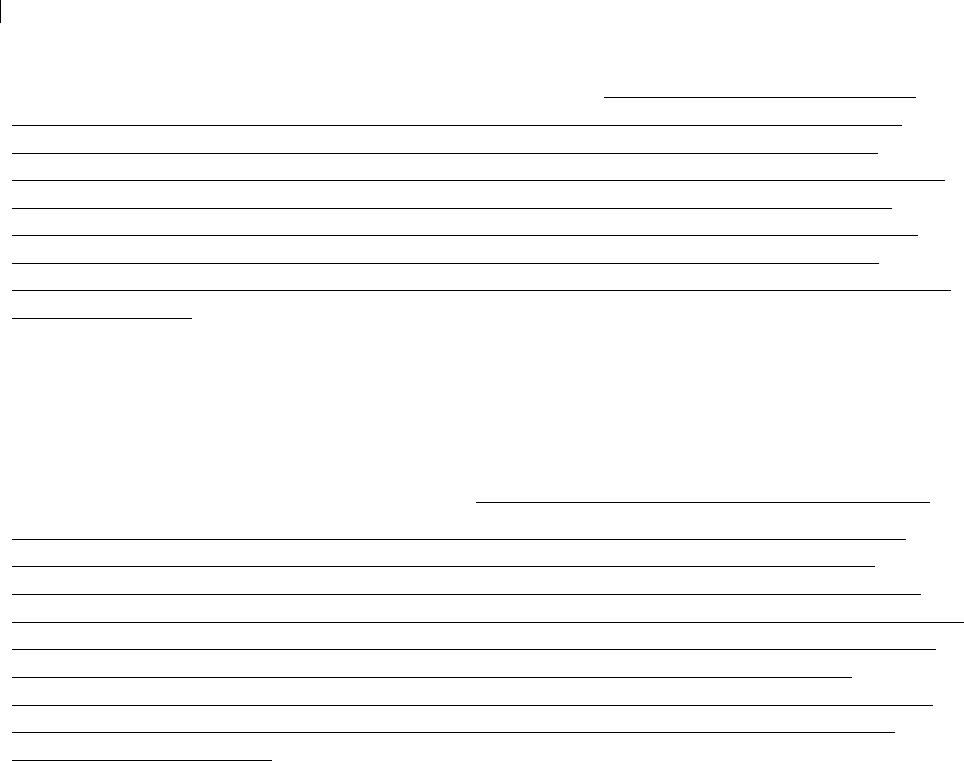
44
ALERT & OTT
Docket ID No. EPA–HQ–OPA–2006–0090
9601) and which is subject to the provisions of that Act. For the purposes of the NCP,
this term shall include, but not be limited to, oil of any kind or in any form which after
release into the environment and upon exposure to, ingestion by, inhalation by, or
assimilation into humans or any other organisms, either directly from the environment or
indirectly by ingestion through food chains, will or may reasonably be anticipated to
cause death, disease or infection, behavioral abnormalities, cancer, genetic mutation,
endocrine disruption or other physiological malfunctions (including malfunctions in
reproduction) or physical deformations, in such humans or their children, or in organisms
or their offspring.
Remove or removal as defined by section 311(a)(8) of the CWA, refers to containment
and removal of oil or hazardous substances from the water and shorelines or the taking
of such other actions as may be necessary to minimize or mitigate damage to the public
health or welfare of the United States (including, but not limited to, fish, shellfish, wildlife,
public and private property, and shorelines and beaches) or to the environment. For the
purpose of the NCP, the term also includes monitoring of action to remove a discharge
action to assess, evaluate, and monitor the release or threat of oil and any agents or
substances; and action to treat and dispose of recovered oil and oil-contaminated
material as hazardous wastes. The term includes, in addition, without being limited to,
security fencing or other measures to limit access, provision of alternative water supplies,
temporary evacuation and housing of threatened individuals not otherwise provided for,
action taken under section 104(b) of CERCLA, post-removal site control, where
appropriate, and any emergency assistance which may be provided under the Disaster
Relief Act of 1974. For the purpose of the NCP, the term also includes enforcement
activities related thereto. As defined by section 101(23) of CERCLA… [rest unchanged].

45
ALERT & OTT
Docket ID No. EPA–HQ–OPA–2006–0090
SUBPART J –– USE OF DISPERSANTS AND OTHER CHEMICALS
Title of Subpart J
JUSTIFICATION
We find this title inaccurate and somewhat misleading. There is a redundant emphasis
on dispersants. Dispersants are chemical agents that in their current formulations,
arguably, do not mitigate spill impacts (see Dispersant definition). There is no mention
of biological agents, substances such as sorbents that are not considered to be agents,
or ignition devices that are used with burning agents.
RECOMMENDATION (edits)
We recommend using language consistent with the proposed language in §300.900(c)
as follows: Subpart J – Use of Dispersants, and Other Chemicals and Biological Agents
and Other Spill Mitigating Devices and Substances
§300.900 General.
JUSTIFICATION for paragraph (a) (edits)
We find this paragraph to be vastly improved from the current rules, but we are
concerned that one key phrase has been left out.
Under the Federal Removal Authority, the President is bound to “ensure effective and
immediate removal of a discharge, and mitigation or prevention of a substantial threat of
a discharge, of oil or a hazardous substance…” Section 3100(c)(1)(A). The sole focus of
this section is to remove and mitigate or prevent harm from the oil or hazardous
substance itself. It implies that any method may be used to achieve the stated purpose.
However, the President has to prepare a National Contingency Plan for removal of oil
and hazardous substances and, as part of that plan, a schedule identifying agents and
substances, if any, that may be used on oil spills; the waters in which such agents and
substances may be used; and the quantities of agents and substances “which can be
used safely in such waters” (emphasis added). Section 311(d)(2)(G).
We find the phrase “if any” important because it implies that not just any product may be
use, but rather only those in certain waters, “which can be used safely in such waters.”
The latter phrase is twice stated in law and worth repeating in the rules, because it
modifies the goal of removal and mitigation or prevention of oil or hazardous substances
from using any method or product to using only methods and products that can be used
safely in such waters. The word “can” denotes ability, making this word key in preparing
a Schedule to identify not only what products “may“ be used (denoting permission), but
the products that “can”; i.e., have the demonstrated ability, be used safely. Taken
together, this phrase is the basis for all the screening and environmental monitoring
tests, and the process to remove products that are found to be unsafe; i.e., do more
harm. We interpret this phrase as a directive to do no more harm to the waters and
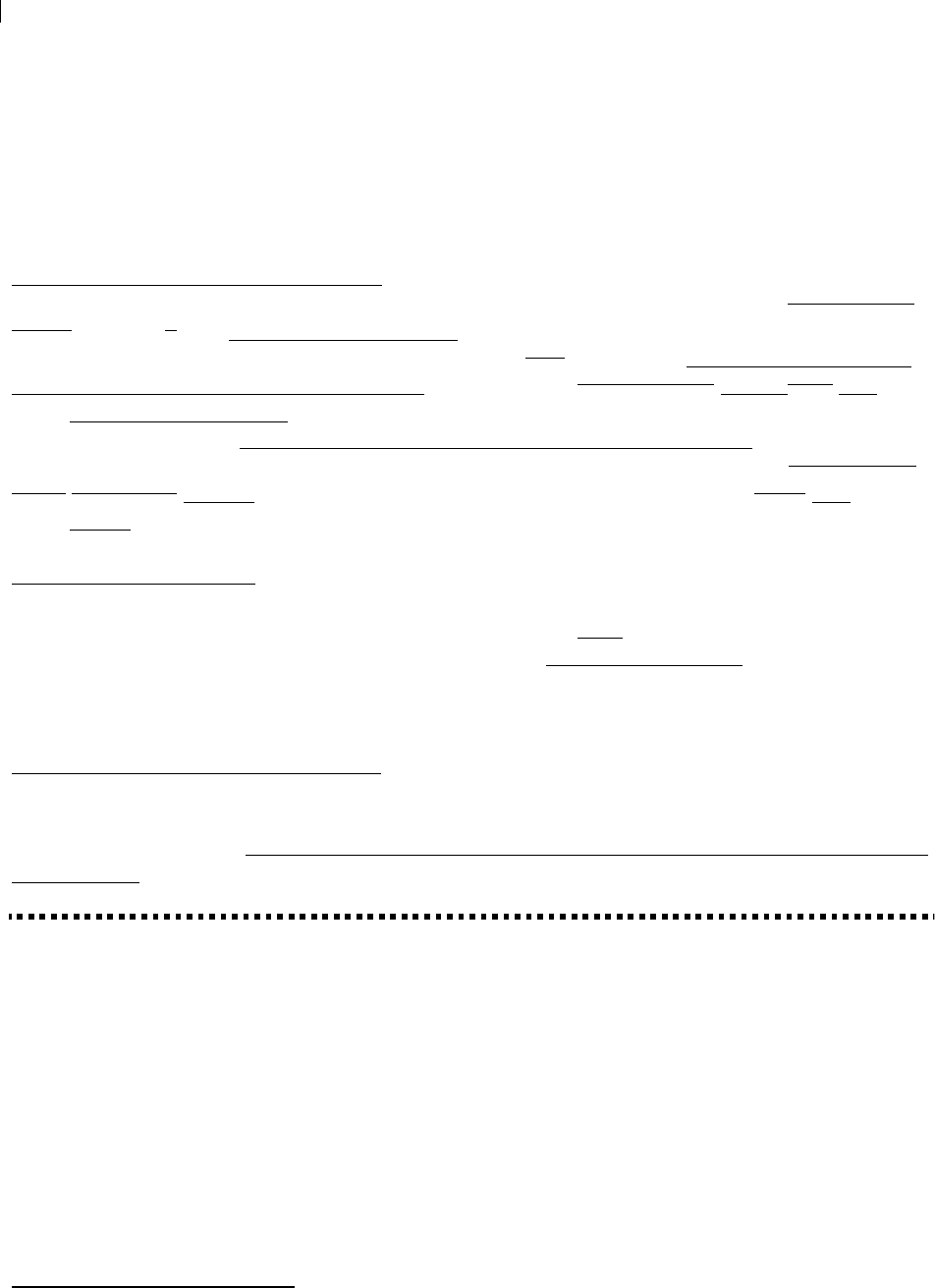
46
ALERT & OTT
Docket ID No. EPA–HQ–OPA–2006–0090
adjacent shoreline or to the aquatic environment and human life in the vicinity of the
spill.
In short, we support restating the three duties delegated to EPA by the President,
including these key phrases. We also recommend using language to describe the
agents and substances that is consistent with the title for reasons stated above.
RECOMMENDATION for (a) (edits)
Section 311(d)(2)(G) of the CWA requires that EPA prepare a schedule of dispersants,
other chemicals and biological agents and other spill mitigating devices and substances,
if any, that may be used in carrying out the NCP; and the waters in which such agents,
devices, and substances may be used; and quantities in which they which may can be
used safely in such waters. This subpart establishes a schedule identifying chemical
and biological agents and other spill mitigating devices and substances, and procedures
that, when taken together, identify the waters and quantities in which such dispersants,
other chemicals agents or other spill mitigating devices and substances may can be
used safely.
JUSTIFICATION for (c)
For reasons stated above for paragraph (a), we find it necessary to state that this
paragraph applies only to agents and substances that may be used to remove, control
or otherwise mitigate oil discharges, providing they can be used safely. Further, we
recommend specifically stating that use must be consistent with the provisions of
Subpart J.
RECOMMENDATION for (c) (edits)
This subpart applies to the use of chemical and biological agents as defined in Subpart
A of this part, or other substances that may be used to remove, control, or otherwise
mitigate oil discharges, providing they can be used safely, consistent with the provisions
of Subpart J.
§300.910 Authorization for Agent Use.
“One of the things we complained about the most was the rampant use of the Coast
Guard to do what BP wanted. That was out of the box… The government and BP
claimed dispersants were not used near shore, but oil slicks that were reported near
shore “disappeared” overnight. Oil don’t leave that quick. Microbes don’t eat it that
quick. Trust me.” ~ George Barrisch, Louisiana fisherman
121
“The Coast Guard was not there to do what was best for the waterways, the birds, or
the people. They were there to cover BP’s butt.” ~ Billy Nungesser, Plaquemines Parish
president
121
Hopkins, Bryan, producer, 2013, Dirty Energy. Interviews with George Barrisch, Billy
Nungesser, and Aaron Viles).

47
ALERT & OTT
Docket ID No. EPA–HQ–OPA–2006–0090
“The government and business collusion has been so troubling in this. The way the oil
spill acts and response plans are written, they leave BP with far too much power. The
government was basically acting like security for BP. The Coast Guard, every agency,
seemed to be deferring to BP. BP’s messaging is what the public is hearing.” ~ Aaron
Viles, Gulf Restoration Network
JUSTIFICATION for lead paragraph
EPA considered language to it make clear that the EPA Administrator and senior EPA
NRT representative and their delegatees have existing authority under section
311(d)(2)(G) of FWPCA and Executive Order 12777, along with the OSC, to make
decisions to authorize use, quantity used, duration of use, and limitations on use,
including cessation of use, for any chemical or biological agent or other spill mitigating
devices and substances. However, the Agency decided that situations, in which it may
have to exert authority over the On Scene Coordinator (OSC), were rare and possibly
limited to such events as a spill of national significance or extended duration. The
Agency decided that this is an existing authority that did not need to be reiterated in the
rules. Therefore, the Agency did not propose a regulatory amendment to clarify the EPA
Administrator’s authority, but it is requesting comment on this issue.
We find the Agency’s decision to not clarify the Administrator’s authority surprising,
given the public perception of uncertainty that clouded the Administrator’s existing
authority during the BP DWH disaster, and the precedent set by the manner in which
the uncertainty was resolved. Specifically, we are referring to the widespread public
perception that the FOSC – the US Coast Guard – was in charge and directing
response efforts at the whim and will of the spiller. Supporting evidence relative to agent
use is as follows. (For other examples, see Suggestions for Future Rulemakings,
Subpart B.)
On May 20, 2010, EPA directed BP to identify within 24 hours, and to begin using within
72 hours, less toxic alternatives to the Corexit dispersants that had already been used
for nearly a month.
122
EPA stated concerns about quantities of dispersants being used,
extended use, and scientific uncertainty about underwater use and long-term effects on
aquatic life. BP supplied a short list as requested – and went right on using Corexit 9500
at the surface and Corexti 9527 at the wellhead, saying it had not conducted
independent tests to evaluate the issue. Although EPA and the Coast Guard stated this
response was insufficient,
123
EPA started its own testing and evaluations.
On May 26, 2010, EPA ordered BP to reduce the total amount of dispersant applied to
122
US EPA, 2010, News Releases – BP spill, EPA: BP Must Use Less Toxic Dispersant, May 20,
2010.
http://yosemite.epa.gov/opa/admpress.nsf/9cee789b9acd641685257720005951b7/0897f55bc
6d9a3ba852577290067f67f!OpenDocument
123
EPA, 2010, Letter from EPA Administrator Lisa Jackson to David Rainey, Vice President of Gulf
of Mexico Exploration, BP Exploration and Production, May 26, 2010.
http://www.epa.gov/bpspill/dispersants.html#directives
http://www.epa.gov/bpspill/dispersants/Rainey-letter-052610.pdf

48
ALERT & OTT
Docket ID No. EPA–HQ–OPA–2006–0090
the minimum amount possible with the overall goal of reducing dispersant application by
75% from the maximum daily amount used.
124
Specifically, EPA’s directive mandated
that BP “eliminate the surface application of dispersants” except in rare cases where
there may have to be an exemption.” To obtain an exemption, BP had to submit a
written request providing justification to the FOSC – the USCG – who would have to
approve the request and volume of dispersant prior to initiating use. EPA also limited
subsea application to no more than 15,000 gallons a day. Records obtained
subsequently by Congressman Ed Markey, chair of the House Energy and Environment
Committee, revealed that BP went right on using the Corexit dispersants, near daily,
with the Coast Guard’s approval – sometimes retroactively. In no instance was a
request by BP to use dispersants denied. In all, 74 exemptions were approved in 48
days, of which all but 10 were fully approved, despite EPA’s order.
125
It was abundantly clear to the public that the Federal OSC/ USCG exercised authority
over EPA by ignoring EPA’s order and concerns regarding extended dispersant use and
subsurface dispersant use. In hindsight, it is also clear that authority uninformed by
science – and biased by the spiller’s conflict of interest – has led to long-term injury to
the Gulf ecosystem and the exposed human populace (see Dispersants). Most
importantly and unfortunately, precedent was set for future spills, where the
FOSC/USCG-spiller block may and can override EPA’s existing authority.
In short, we request that EPA specifically adds the EPA Administrator and the senior
EPA representative to the NRT (e.g. NRT Chair) to § 300.910(a) and other paragraphs
as needed to clarify the Administrator’s authority.
RECOMMENDATION for lead paragraph (edits)
Use of chemical or biological agents and other spill mitigating devices and substances
in response to oil discharges to waters of the U.S. or adjoining shorelines must be
authorized by the OSC in accordance with the provisions of this section, unless
otherwise directed by the Administrator in accordance with concurrent authority under
section 311(d)(2)(G) of FWPCA and Executive Order 12777:
§300.910
GENERAL OVERVIEW & JUSTIFICATION FOR RECOMMENDATIONS IN ALL
SUBPARAGRAPHS OF THIS SECTION
The subparagraphs of §300.910 are concerned with three critical issues, namely the
authorization, purpose, and scope of preauthorization plans. However, preauthorization
124
EPA, 2010, Dispersant monitoring and assessment directive, May 26, 2010.
http://www.epa.gov/bpspill/dispersants/directive-addendum3.pdf
125
Fox, James, 2014, Pretty Slick, a documentary film distributed by Specialty Studios/ Video
Project.
Wald, Matthew, 2010, Despite rule, BP used dispersant, panel finds, New York Times, July 31,
2010. http://www.nytimes.com/2010/08/01/science/earth/01dispersants.html?_r=0

49
ALERT & OTT
Docket ID No. EPA–HQ–OPA–2006–0090
plans are, or should be, the result – the end product – of the comprehensive planning
that goes into developing ACPs. Curiously, the comprehensive history of laws and
regulations provided with this rulemaking fails to mention the history of ACPs as relating
to preauthorization plans, Area Committees, Citizens’ Advisory Councils, and federally
recognized Tribal governments. [FR 80(14):3383, IV.A.] We find this legislative and
regulatory history of citizens’ engagement in the contingency planning process, and
subsequent interpretation and implementation by EPA, instructive and necessary to
understand the proposed rule changes.
Legal History of Citizens’ Engagement in the NCP
The 1972 Amendments to the Clean Water Act tasked the President with issuing
regulations to establish criteria for the development and implementation of local and
regional oil contingency plans. §311(j)(1)(b). This President tasked the EPA and the
USCG with providing OSCs, empowered with the authority of the President, to fulfill this
duty. [Executive Order 11735 Sec. 5(b)(4)]
From this, we find that the three levels of organization under the NCP – federal, state,
and local – were created in statute; that the authority to develop and implement the local
and regional c-plans is vested in OSCs by Executive Order; and that neither of these
can be changed by regulation.
However, we also find that before the EVOS, the NCP did not fully implement the law.
It had only two levels of organization: a National Response Team, composed of then 15
federal agencies tasked with developing and implementing the NCP, and helping
coordinate, guide, and support the Regional Response Teams (RRTs); and RRTs,
composed of an agency membership mirroring that of the NRT, and state and local
representation, tasked with developing and implementing the Regional Contingency
Plans (RCPs).
After EVOS, implementation of additional and/or missing levels of planners and
responders was required under the Oil Pollution Act of 1990. Specifically, OPA90
established Area Committees and Area Contingency Plans (ACPs) and required the
President to designate areas for which Area Committees are established under the
CWA. [33 USC §4202(b)(1)] The intent in specifically implementing the third and local
level of planning was to ensure “that all navigable waters, adjoining shorelines, and
waters of the exclusive economic zone are subject to an Area Contingency Plan…” [33
USC §4202(b)(1)(A)]
From this, we find that this statute gives broad authority to Area Committees and
ensures, as noted by EPA in this rulemaking, that ACPs are developed by local people
most familiar with and best able to “evaluate the environments within a jurisdiction and
establish… protection priorities.” [80 CFR, p. 3387, V(C)(2)(a)]
In keeping with this requirement to engage citizens at the local level, OPA90 also
established two Demonstration Programs in Alaska in the regions directly impacted by

50
ALERT & OTT
Docket ID No. EPA–HQ–OPA–2006–0090
the EVOS – Oil Terminal and Oil Tanker Environmental Oversight and Monitoring
Demonstration Programs. [33 USC §5002(b)] Each program consisted of an industry-
government Association and, separately, a Regional Citizens’ Advisory Council or
RCAC. OPA90 established that that Alaska RCACs are composed of delegates from
stakeholders other than the oil industry and from local municipalities, all appointed by
the Alaska Governor. [33 USC §5002(d)(1)]
In justifying these programs, Congress found that industry-government complacency
was one of the main factors contributing to the EVOS and that one way to combat this
complacency was to involve citizens in the process of preparing, adopting, and revising
oil spill contingency plans. Congress reasoned that, by thus engaging local citizens, the
process would foster long-term partnerships of industry, government, and local
communities based on trust to oversee compliance and deal with environmental
concerns through consensus rather than confrontation. [33 U.S.C. §5002(a)(2)(D), (G),
and (H)] Congress also reasoned that infusing local knowledge and practicalities into
the theories and concepts that dominate agency planning and response would result in
more realistic, practical, and functional plans. Congress also found that “similar
programs should eventually be established in other major crude oil terminals in the
United States…” and other places “where the safe transportation of crude oil is a
national problem (emphasis added).” [33 USC §5002(a)(2)(J)]
From this, we find that, based on lessons learned from the EVOS, Congress was very
serious about engaging local citizens in the contingency planning process; that
Congress believed doing so would contribute to safer transportation of oil by minimizing
risks as local people are most vested in protecting their families, homes, and livelihoods
– and keeping their backyards free of and safe from oil pollution; and that Congress
established a place to engage citizens in oil spill prevention and response planning at
the local level through Area Committees, RCACs, and ACPs.
The Clean Water Act, as amended post OPA 90, establishes for each area designated
by the President an Area Committee “comprised of members appointed by the
President from qualified personnel of Federal, State, and local agencies.” [33 USC
§1321(j)(4)(A)] The law further requires each Area Committee, under the direction of the
FOSC, to prepare an ACP and “work with State and local officials to expedite decisions
for the use of dispersants and other mitigating substances and devices.” [33 USC
1321(j)(4)(B)(i) and (iii)] There is no requirement for such expedited decisions in
OPA90: This became part of the required content of ACPs through the CWA.
In October 1991 in Executive Order 12777, the President delegated to the EPA
Administrator (inland) and Coast Guard (coastal) the authority to designate areas,
appoint Area Committee members, determine the information to be included in ACPs,
and review and approve plans to the EPA Administrator for the inland zone and to the
Secretary of the Department in which the Coast Guard is operating for the coastal zone.
[Sec. 1(b)] Significantly, there is no mention of expedited decisions for dispersant use or
a preauthorization plan in this Order.

51
ALERT & OTT
Docket ID No. EPA–HQ–OPA–2006–0090
In 1994, the NCP was amended through an EPA rulemaking process to implement the
new (OPA90) and amended (CWA) laws and the Executive Order. Specifically, EPA
made Area Committees responsible for developing Area Contingency Plans (ACPs),
including preauthorization plans for expedited decisions regarding use of products. 40
CFR §300.105 Subpart B. EPA required Regional Response Teams to guide,
coordinate, and support Area Committees, as appropriate, to ensure inter-area
consistency and consistency of individual ACPs with the RCP and NCP. 40 CFR
§300.115 Subpart B. EPA also required RRTs to coordinate development of ACPs with
state and local emergency response plans under SARA Title III. 40 CFR §300.205(e),
§300.201(c), and §300.215(a) Subpart C.
From this, we find that Regional C-Plans and Area C-Plans are different with different
functions that are assigned to different authorities to create and implement; and that
Congress intended this separation of authority and function for three levels of
organization because Congress wrote it into law – twice. Therefore, this authority
cannot be altered by regulation. Also, altering it in Subpart J would create a conflict with
other subparts of the NCP.
Further we find that preauthorization plans are not mentioned in any statute or
Executive Order, however the CWA calls for expedited decisions for product use – and
assigns this duty to Area Committees as one of the required components of an Area C-
Plan. Therefore, the process of decision-making necessary for developing
preauthorization plans and the authorization to make these decisions falls to Area
Committees by statute and cannot be altered by regulation. EPA’s attempt to do so is
beyond the scope of its delegated authorities.
In addition, we ask EPA: Where in the law does Congress give the President or the
EPA the authority to allow for expedited decisions for dispersant use? From reading the
final rule in 1994, it seems that the idea of preauthorization plans came from the
traditional disaster response world where preauthorization is used to save time and
lives. We maintain that dispersants do not lend themselves to this approach. Given
strong evidence that dispersants actually do more harm than good as discussed
throughout these comments, we ask EPA: Is it time to do away with preauthorization for
expedited use of dispersants as this process does not live up to the Congressional
mandate or the missions of various response agencies under the Clean Water Act and
OPA 90?
Subsequent Interpretation and Implementation by EPA
In 1995, through Delegation No. 2-91 (Sept. 29, 1995), EPA “initially designated thirteen
geographic areas already covered by Regional Response Teams and the Regional
Response Teams as the initial Area Committees. The EPA Administrator also delegated
Regional Administrators the authority to designate different geographic areas within
their Regions and appoint different Area Committee members. Regional
Administrators are authorized to delegate the authority no lower than the Division
Director level. For this reason, an RCP may function as an ACP, if the designee

52
ALERT & OTT
Docket ID No. EPA–HQ–OPA–2006–0090
determines that there is no need for formally defining multiple ACPs within a region.
Sub-regional concerns may also be addressed by Sub-Area Plans… or by Geographic
Response Plans. If the designee determines that the RCP will serve as the sole ACP for
the region, the RRT assumes the responsibilities of the AC as described in 40 CFR
300.205(c). In this case the RRT solicits states for local representatives. NGO and
private sector members may also be invited (emphasis added).”
126
We find that merging functionality of Regional C-Plans with Area C-Plans counters the
intent of Congress and likely violates the statutes that create these entities as separate
functions. Further, we find that merging authority of RRTs to assume responsibilities of
the Area Committee counters the intent of Congress to combat government-industry
complacency and to infuse the planning process with a dose of practical reality by
engaging local people in the oil spill prevention and response planning process. In other
words, this also is likely a violation of statue and is outside the scope of EPA’s authority.
Further, we find that this interpretation of Area C-Plans is 100 percent unworkable for
oil spill planning and response. As EPA rightfully points out in its handbook, there can
be no ‘one size fits all’ plan format. For this very reason, there is a need for designating
multiple Area Committees within a region, each to prepare a detailed ACP for its area,
as was prescribed by Congress. Therefore, contrary to EPA’s hypothetical situation in
its planning handbook, there will never be a circumstance in which there is no need to
create multiple Area C-Plans within a region.
Instead, we find that EPA has manufactured a need to create a fourth level of
organization, specifically to develop “sub-area” or “geographic” plans to meet the needs
of developing what should be Area C-Plans where oil actually spills – in local areas.
However, this fourth level, conveniently, has no formal authority and is not part of the
organizational structure of the NCP. So EPA’s creation actually disempowers and
disengages local citizens from the Constitutionally mandated planning process, and
allows state-level planners to usurp the authority, granted by statute, to local agencies
and citizens. In other words, creating RCP-ACPs, instead of RCPs and separate ACPs,
creates confusion.
Fast forward now to the BP DWH disaster in 2010.
In 2011, U.S. EPA Office of the Inspector General issued its report "Revisions Needed
to National Contingency Plan Based on [BP] Deepwater Horizon Oil Spill" (Report No.
11-P-0534). This in part revitalized the NCP rulemaking process that had languished
since 2001.
In 2013, EPA/OIG wrote a review of EPA’s contingency planning efforts, entitled, “EPA
could improve contingency planning for oil and hazardous substance response.” In it,
EPA/OIG criticized EPA for having creating an additional level of planning beyond that
required by OPA90: "EPA’s contingency planning structure has exceeded the three
126
US EPA, 2013, Area Contingency Planning Handbook, Version 1.0.
http://www.epa.gov/oem/docs/oil/frp/EPA_ACP_Handbook.pdf

53
ALERT & OTT
Docket ID No. EPA–HQ–OPA–2006–0090
levels of plans established by the OPA and outlined by the NCP.”
127
EPA/OIG goes on to note that this fourth level has created the anticipated confusion:
“Regions 5, 6, 8, 10, and Alaska have each taken a different approach to planning. All
have one plan that generally serves as a guidance document, typically the RCP-ACP for
the region. One regional response manager described the RCP-ACP as “overarching
guidance,” and another described it as seen at “the 70,000 foot level.” Four out of the
five regions in our review also have lower-level operational plans in the form of subarea
c-plans or geographic response plans. These operational plans contain more tactical
information, in addition to the required RCP and ACP elements, and are generally the
plans used to respond to an incident.”
From this, we find that we agree with the EPA/OIG: “Regions have expanded their
contingency planning structure beyond the three requirements under the NCP because
they find the additional materials necessary and useful for a response” (emphasis
added). No kidding. However, we find that the three requirements for organizational
structure created under the statutes do provide for a planning process that would result
in all the materials necessary and useful for a response – if the three levels were
allowed and empowered to plan.
EPA/OIG also found that critical and required information was missing from some “RCP-
ACPs” such as the information of expediting decisions for product use. We find this is
because this information rightfully belongs in the local Area C-Plans, not the “RCP-ACP”
unworkable monstrosity created by EPA. In sum, by effectively eliminating the Area
Committees and their local knowledge, the RCPs fall short.
EPA/OIG concludes that failures to develop Area Committees and Area C-Plans
(instead of sub-area plans or geographic response plans) “has resulted in a large
volume of information that regions cannot regularly update and maintain with their
limited resources.” EPA/OIG recommends that EPA incorporate improved technological
methods for data collection and information delivery, and that the Assistant
Administrator for Solid Waste and Emergency Response “assess the resources,
including OSCs, necessary to develop and maintain contingency plans.”
However, we find that there is a much simpler, workable, and legal recommendation,
as opposed to some of EPA’s proposed rules (discussed below), which could be
implemented with this rulemaking. The two RCACs established under OPA90 already
use state-of-the-art technology for data collection and information delivery as part of the
government-industry-citizen partnership envisioned by OPA90. Further, OPA90 already
granted the legal authority to create similar, but not necessarily identical, programs in
other major crude oil terminals in the United States…” and other places “where the safe
transportation of crude oil is a national problem,” as mentioned earlier.
127
U.S. EPA, Office of the Inspector General, 2013, EPA Could Improve Contingency Planning for
Oil and Hazardous Substance Response, Report No. 13-P-0152, Feb. 15, 2013.
http://www.epa.gov/oig/reports/2013/20130215-13-P-0152.pdf

54
ALERT & OTT
Docket ID No. EPA–HQ–OPA–2006–0090
Therefore, we recommend that EPA:
1. Follow the three-level organizational structure authorized in statute.
2. Designate areas and Area Committees, composed of local government, a state
planner, and an OSC are required by law, to ensure “that all navigable
waters, adjoining shorelines, and waters of the exclusive economic zone are
subject to an Area Contingency Plan, also as required by law.
3. Establish by appointment for each Area Committee, a companion Citizens’
Advisory Council, composed of citizens other than the oil industry and its
service providers, and not including municipal representatives because they
are seated on Area Committees.
4. Require the requisite resources for both the Area Committees and the Citizens’
Advisory Councils to be provided by the oil industry operators in the area as
part of the required Area C-Plan, much like the RCACs in Alaska.
Subsequent Implementation by US Coast Guard
The Clean Water Act section entitled, Improved Coordination with Tribal Governments
[33 USC 1321(b)], was enacted as part of the Coast Guard Authorization Act in 2010.
Specifically, in the event of an oil spill likely to impact natural and cultural resources
owned or directly utilized by a federally recognized Indian Tribe, the Secretary of the
Department in which the Coast Guard is operating is required to ensure that
representatives of the Tribal government of the affected Tribes are included as part of
the Incident Command System, share information, and “to the extent practicable”
involve Tribal governments in deciding how to respond to the spill. §706(b).
Further, the Coast Guard is not required to but “may enter into memoranda of
agreement and associated protocols with Indian Tribal governments in order to
establish cooperative arrangements for oil pollution prevention, preparedness, and
response. Such memoranda may be entered into prior to the development of the Tribal
consultation and coordination policy to provide Indian Tribes grant and contract
assistance.” §706(c).
Of specific note for this rulemaking, such memoranda “may include––
(1) arrangements for the assistance of the tribal government to participate in the
development of the National Contingency Plan and local Area Contingency Plans to
the extent they affect tribal lands, cultural and natural resources;
(2) arrangements for the assistance of the tribal government to develop the capacity to
implement the National Contingency Plan and local Area Contingency Plans to the
extent they affect tribal lands, cultural and natural resources;
(3) provisions on coordination in the event of a spill, including agreements that
representatives of the tribal government will be included as part of the regional
response team co-chaired by the Coast Guard and the Environmental Protection
Agency to establish policies for responding to oil spills;
(4) arrangements for the Coast Guard to provide training of tribal incident commanders
and spill responders for oil spill preparedness and response;

55
ALERT & OTT
Docket ID No. EPA–HQ–OPA–2006–0090
(5) demonstration projects to assist tribal governments in building the capacity to protect
tribal treaty rights and trust assets from oil spills; and
(6) such additional measures the Coast Guard determines to be necessary for oil
pollution prevention, preparedness, and response.”
Further, subject to appropriations, the Commandant of the Coast Guard has up to
$500,000 for each fiscal year between 2010 to 2014 to carry out this section.
In addition, the Commandant is required to consult with the State of Washington and
affected Tribal governments to conduct an analysis of capacity of tug escorts for laden
oil tankers in Puget Sound, the Strait of Georgia, Haro Strait, Rosario Strait, and the
Strait of Juan de Fuca. §711(a)(1) and (2). There are no other such similar requirements
for any other state or Tribes.
However, the Makah Tribe in northwest Washington State could serve as a model of
engagement in the NCP for other Tribes (Exhibit #1).
128
The Makah's 1855 treaty with
the US government defined their Usual and Accustomed fishing and whaling grounds
(U&A) on the Olympic Coast. The Makah have used this treaty to secure fishing and
whaling rights in both state and federal waters. Chad Bowechop with the Makah Tribal
Council worked with then NOAA Hazmat/Sanctuaries consultant Chris Jones to secure
initial funding through NOAA’s sanctuary program to assist the Tribe with oil spill
prevention and response efforts.
129
The Makah then allocated funds from various
sources to continue this work for a couple years and successfully changed the
Northwest Area C-Plan to only allow dispersant use on a case-by-case basis – meaning
no pre-authorization – within the Makah U&A marine area.
130
The U&A marine area
extend from the shore out 200 miles to the limit of the Exclusive Economic Zone (Map,
Exhibit #2).
From this, we find that federally recognized Tribes must be included, and other Tribes
without this legal status should be included, in developing Area C-Plans, especially
including preauthorization plans, and that there may be many cases where other Tribes
have legal similar legal authority to the Makah Tribe. We recommend recognizing the
authority of federally recognized Tribal governments throughout this section.
§300.910(a) Use of Agents Identified on the Schedule on Oil Discharges
Addressed by a Preauthorization Plan.
128
Tierney, Michael, 2013, Sovereign Cooperation: The Makah Tribe’s Office of Marine Affairs and
the fundamentals of partnering with Uncle Sam, Boston College Law School, paper for
Environmental Law class with Prof. Zygmunt Plater, Nov 2013.
129
Jones, Chris, Consultant with Environmental Action Committee of Marin,
[email protected]. Personal communication with Riki Ott, June 7, 2013.
130
EPA Region 10, 2015, Regional Response Team and the Northwest Area Committee,
Northwest Area Contingency Plan, Section 9406, Dispersant Tools, Job Aids, and Decision
Process. http://www.rrt10nwac.com/nwacp/

56
ALERT & OTT
Docket ID No. EPA–HQ–OPA–2006–0090
Proposed subtitle change
JUSTIFICATION
As discussed in the General Overview & Justification for this section, we find that
preauthorization plans cannot be separated from – they cannot exist – without their
parent document, a legitimate ACP (not a “RCP-ACP”) – or if they do, they are “orphan
preauthorization plans” that are perfunctory exercises to appease the desire of some
agencies and the industry for “expedited decisions for dispersant use.” Such orphan
preauthorization plans are being approved over the objections of local citizens,
something that cannot happen with legitimate ACPs, because these are developed by
local citizens. Any existing orphan preauthorization plans should be summarily rejected
by the EPA on the grounds of breach of its fiduciary duties. The industry should not be
allowed to end run the legal requirements in the Clean Water Act and Oil Pollution Act
for Area Committees to develop Area C-Plans. This is, in effect, what EPA is proposing
to do by allowing RRTs to circumvent Area Committees and develop regional
preauthorization plans. We request that the title include legitimate ACPS (not “RCP-
ACPs”), as preauthorization plans cannot legally exist without them.
Further, we find that the title should include any product that may be addressed by an
Area C-Plan, and subsequently a preauthorization plan. For example, in paragraph (c)
of this section, EPA proposes to authorize the OSC to authorize preauthorized in-situ
burns, yet burning agents are not proposed to be identified on the Schedule as an
agent. Also, other spill mitigating devices and substances such as ignition devices and
sorbents are not identified on the Schedule. We find that certain devices and
substances should be on the Schedule [see §900.915 (g) Sorbents (edited) and Burning
Agents (h) (new)]. We request that the title include any agent, device, and substance
that may be addressed by a preauthorization plan.
RECOMMENDATION (edits)
(a) Use of Agents Identified on the Schedule and Other Spill Mitigating Devices and
Substances on Oil Discharges Addressed by an Area Contingency Plan That Includes a
Preauthorization Plan
JUSTIFICATION, CONTINUED
As discussed in the General Overview & Justification for this section, we find that the
law authorizes Area Committees to prepare ACPs and the preauthorization plan, with
guidance from state planners and the OSC, for approval by the RRT and the President.
Very specifically, the law does not authorize the Regional Response Teams (RRTs) to
develop and implement Area Contingency Plans. These are separate plans with
separate functions as described in law. We cannot support EPA’s proposed change to
include RRTs as another planning entity with responsibility for developing
preauthorization plans.

57
ALERT & OTT
Docket ID No. EPA–HQ–OPA–2006–0090
However, we are also concerned that the purpose of preauthorization plans has been
misconstrued. Preauthorization plans only determine what products on the Schedule
are preferred and may be used during oil spill response, not what products shall be
used. It is impossible for preauthorization plans to include enough specificity to fulfill the
Clean Water Act’s legal mandates to identify the quantities of products that can be used
safely in certain waters because this requires site-specific case-by-case consideration
depending on where, when, and how much oil spilled.
131
Most importantly, the decision
requires the concurrence and consultation process that is used currently and in
§300.910(b) – and this process needs to be expanded to include agencies tasked with
protecting workers and public health, and federally recognized Tribes for reasons
discussed below. Instead, we find that preauthorization plans are being used to
circumvent agency participation in decision-making through the concurrence and
consultation process
just when participation is most critical – during an oil spill
response.
What happened in Alaska is the perfect example of why we do not want RRTs to have
responsibility for developing preauthorization plans. For the past several years, the
federal government interagency officials on the Alaska RRT have used public funds to
conduct a “public education campaign” to gain support for the preauthorized use of
chemical dispersants as part of RCPs and ACPs in Alaska. The Alaska RRT conveyed
only industry’s claims of positive attributes of dispersants, unsupported by science, to
calm public fears, while omitting any negative or risk-based information on the subject
or any information on less toxic and available technologies.
132
The Alaska RRT pressed
forward despite thirteen Tribal Government Resolutions calling for a ban on chemical
dispersant use in their subsistence waters,
133
citizens’ strenuous objections to
dispersant use, and science-based data presented by groups such as the Prince
William Sound Regional Citizens’ Advisory Council on the known negative impacts of
dispersants on, and the long-term risks posed to, the ecological and human health of
the region.
134
We find that local knowledge offers a dose of reality to theoretical planning – just as
Congress envisioned. Such local knowledge is critical for effective disaster planning and
response that truly mitigates harm. However, we also find that such local knowledge is
often overlooked, ignored, or disrespected by government and academics rather than
meaningfully integrated into this process.
131
National Commission on the BP Deepwater Horizon Oil Spill and Offshore Drilling, 2011, Deep
Water: The Gulf Oil Disaster and the Future of Offshore Drilling, A Report to the President, Jan
2011. http://www.gpo.gov/fdsys/pkg/GPO-OILCOMMISSION/pdf/GPO-OILCOMMISSION.pdf
132
Wagenbrenner, Diane, Letter from Lawrence Anthony Earth Organization to U.S. Senators and
Representatives, “Urgent – Chemical Dispersants vs. the Clean Water Act; Cease and Desist
Preauthorization,” Feb. 3, 2014. Under Global Alliance tab at
http://protectmarinelifenow.org/global-alliance
133
Calcote, Delise, Letter from Alaska Inter-Tribal Council to Commander of the 17
th
Coast Guard
District, Juneau, Alaska, Feb. 14, 2014. Under Global Alliance tab at
http://protectmarinelifenow.org/global-alliance
134
Prince William Sound Regional Citizens’ Advisory Council, resource and source material on
dispersants, http://www.pwsrcac.org/programs/environmental-monitoring/dispersants/

58
ALERT & OTT
Docket ID No. EPA–HQ–OPA–2006–0090
We find that Area Committees (local government), Citizens’ Advisory Committees
(concerned, engaged citizens) and Local Emergency Planning Committees (SARA Title
III with local government and concerned citizens) are the only way for local people to
engage in spill prevention and response planning. We find that EPA cannot alter this
authority because it resides in statute, and because the authority is currently
implemented in Subparts B and C of the NCP, which are outside the current scope of
this proposed rulemaking.
As we concluded in our General Overview & Justification, we support designation of
more Area Committees and companion Citizens’ Advisory Councils instead of
reassigning legally-mandated responsibilities for local committees to regional
committees unfamiliar with local needs and sensitivities.
In addition, we recommend including language clearly stating that the FOSC and EPA
Administrator have authority to modify or stop use of an agent listed on the Schedule
and other spill mitigating devices and substances in the preauthorization plan. Such
authority was presumed yet unsuccessfully exercised during the BP disaster (see
Justification for lead paragraph).
RECOMMENDATION for subparagraph (a) (edits)
RRTs and Federally recognized Tribal governments and Area Committees shall
address in a preauthorization plan, as part of their responsibility and planning activities
in Subpart B §300.115(a)(2) and Subpart C §300.205(c), respectively, the specific
contexts in which whether the use of chemical and biological agents listed on the
Schedule such products should or should not be used on certain oil discharges is
appropriate. RRTs and Federally recognized Tribal governments and Area Committees
shall, as appropriate, include applicable approved preauthorization plans as part of
developing their in RCPs and ACPs. Even when a preauthorization plan is approved in
advance for the use, modification of use, or prohibition of use of certain agents, devices,
and substances under specified discharge situations, then the OSC may authorize the
use of agents preauthorized products* or any other products* on the Schedule for
their intended purpose without by obtaining the incident specific concurrences described
in paragraph (b) of this section unless otherwise directed by the EPA Administrator in
accordance with concurrent authority under section 311(d)(2)(G) of FWPCA and
Executive Order 12777.
* refers to our proposed inclusive definition of product.
§300.910(a)(1) Preauthorization Plan Development.
Proposed subtitle change
JUSTIFICATION
As explained in the General Overview & Justification for this section, preauthorization
plans cannot exist without their parent ACP. Further, we find that a full description of the

59
ALERT & OTT
Docket ID No. EPA–HQ–OPA–2006–0090
purpose and scope of the ACPs, including preauthorization plans, is more properly
addressed in Subpart C Planning and Preparedness, which is not part of this
rulemaking. However, if preauthorization plans are addressed in Subpart J, as
proposed, then ACPs must also be referenced, and the title must properly refer to both.
RECOMMENDATION
Development of Preauthorization Plans Development as Part of Area Contingency
Plans.
JUSTIFICATION, CONTINUED
“I thought I had the Valdez Crud in 1989. I didn’t think I’d have it for 13 years.”
~ Participant in 2001 health survey of Exxon Valdez oil spill workers
135
“Learn to Recognize the Symptoms of Toxic Poisoning
Be prepared to seek medical assistance if you have any of the following symptoms:
difficulty breathing; irritation of the eyes, skin, throat, or respiratory tract; changes in skin
color; headache or blurred vision; dizziness, clumsiness or lack of coordination; cramps
or diarrhea.” ~ Air Force Emergency Management
136
In the current and proposed rules, this section outlines the scope and content of
preauthorization plans. It includes familiar requirements for availability of ‘adequately’
trained operators, availability of equipment needed for agent use, and means to monitor
agent use in the environment, among other things. It also includes new requirements to
“specify limits for quantities and duration of use, and use parameters for water depth,
distance to shoreline, and proximity to populated areas.”
Taken collectively along with the revised and expanded rules for supplemental testing
and monitoring [(g) of this section], we interpret these requirements to mean that EPA is
thinking more broadly about potential product impacts to workers, the general public,
and the environment – a trend we support.
However, we find that the proposed rules need more specificity to achieve the desired
goal of preventing or minimizing harm to humans and the environment. Preauthorization
plans need to be moored firmly to local Area C-Plans (not “RCPs-ACPs”), which could
provide the desired specificity, because Area C-Plans are the core of the planning
process. Currently the NCP includes, among other things, requirements for Area C-
Plans to identify environmentally sensitive resources, do consultations for endangered
species, and provide detailed plans for rescue and rehabilitation of oiled and injured
wildlife in Subparts B and C, but there are no parallel considerations for humans. We
are referring to real needs based on first-hand experiences of people directly impacted
135
Personal communication with Riki Ott, PhD, 2001, researcher during intake for survey
conducted by Alaska Community Action on Toxics and Alaska Forum for Environmental
Responsibility.
136
Air Force Emergency Management, 2006, pocket guide for oil and hazardous substance
disasters, AFEM. Helpdesk@tyndall.af.mil

60
ALERT & OTT
Docket ID No. EPA–HQ–OPA–2006–0090
by the Exxon Valdez disaster, the BP DWH disaster and the more recent spills and
explosions of UOG in Arkansas, Illinois, Michigan, Montana, and West Virginia – and
elsewhere.
The problem we find is that people get sick during these industrial accidents from
exposures to oil and other toxic chemicals, despite an elaborate legal and regulatory
framework supposedly designed to protect worker safety and health, public health and
welfare, and the environment. We also find that the public’s experience and evidence of
harm is supported by the medical and health care professionals, studies of oil disasters
in other countries, and even the oil industry – but quite at odds with the federal
government’s studies and findings that consistently find no evidence of harm to workers
or the public. Clearly, something is amiss.
We describe in brief our experience with past spills, regarding the ability of the current
and proposed rules mentioned above to achieve their purpose, in order to justify our
recommendations for this section. We examine the evidence, identify the system’s
shortcomings, request an evidence-based approach for protecting and mitigating harm
from oil and product to spill responders and the general public, and request separate
worker programs for response contractors and the spiller’s employees – all within the
confines of this rulemaking, while also making a case for future rulemakings.
A. Availability of adequately trained operators and equipment needed for agent use
Evidence from the Exxon Valdez: Sick workers
Oil spills were declared as hazardous waste cleanups in 1989 mere weeks before the
Exxon Valdez oil spill.
137
This happened because worker unions and others presented
convincing evidence that oil is inherently hazardous to human health and oil spill
workers were getting sick – not just from “headaches,” “heat stroke,” “food poisoning,”
dehydration, but from work-related chemical illnesses.
The Exxon Valdez was the first oil spill response conducted under the OSH Act’s
Hazardous Waste Operations and Emergency Response (HAZWOPER) standard, even
though oil spill waste had previously been exempted as a hazardous substance.
138
Within weeks, the Alaska Dept. of Labor reduced the required 40-hour HAZWOPER
training to 4-hours at Exxon’s request. Although OSHA’s research arm, NIOSH, deemed
Exxon’s 4-hour training adequate, critics found numerous flaws with the training and
overall Worker Safety Program.
For example, workers were not prescreened for medical issues that may have been
exacerbated or triggered by exposure to oil; they were not properly trained to recognize
symptoms of chemical exposure; they were not properly equipped with respirators and
Personal Protective Equipment (PPE) as required under the HAZWOPER standards;
137
OSHA, 1989. Hazardous Waste Operations and Emergency Response Standard, 29 CFR
1910.120 (Federal Register 54 [42]:9294-9336). U.S. Department of Labor, March 6, 1989.
138
40 CFR 300.5 definition of hazardous substance.

61
ALERT & OTT
Docket ID No. EPA–HQ–OPA–2006–0090
and when workers started to get sick, there were no feedback loops to determine the
cause of the problem and address it, much less to provide follow up monitoring and
health care for sick workers.
139
The 4-hour training spent, by far, more time on hazards
of hypothermia and bears than on preparing workers to understand the toxic nature of
oil and chemicals hazards, to protect themselves from exposure to dangerous levels of
these dangerous chemicals, to recognize symptoms of work-related chemical illnesses,
and to get proper medical attention.
140
To further compound matters, OSHA standards are not protective. OSHA still relies on
inappropriate surrogates such as mineral oil and particulate dust to establish safety
standards for oil mist and PAHs, respectively.
141
These surrogates do not even come
close to accurately representing the toxic properties and associated health risks posed
by the original chemicals. Using such surrogates and other assumptions such as a 40-
hour week with five 8-hour days, an Occupational Exposure Limit (OEL) is determined
as a “safe” level of exposure to a substance for a certain frequency and duration over a
working lifetime. OSHA then determines Permissible Exposure Limits (PELs), based
basically on politics and the OELs, as enforceable legal limits that cannot be exceeded.
The standards do not account for increased risk of exposure from extended hours, shift-
work, and 24/7 exposure that occur during oil spill response. OSHA has acknowledged
that its PEL standards are out-of-date and not as protective as the OEL (not
enforceable) standards used by other agencies.
142
The way it works is that workers can
and do get sick at levels below the OSHA PELs, but OSHA acts when there is a
violation of the standard, not when there is evidence of harm.
In addition, OSHA inspections were inadequate to nonexistent. OSHA did not have
anywhere near a sufficient number of personal to monitor and evaluate Exxon’s Worker
Safety Program for the scale of the response; OSHA was prevented from inspecting on-
the-water operations because of competing jurisdiction with the U.S. Coast Guard;
143
and OSHA assumed, as a fallback plan, that it would subpoena Exxon’s medical
records and air quality monitoring data – but never did because of budget issues.
Absent air monitoring data and medical records and unable to conduct a records-based
evaluation of EVOS worker health, the Health Hazard Evaluation concluded, “Based on
139
Stuart, T. 1989, Alaska Dept. of Labor letter to Dr. Knut Ringen, Director, Laborers’ National
Health and Safety Fund, April 21, in U.S. Congress House, 1989a, 1061–1062.
Teitelbaum, Daniel T., MD, 1994. Deposition, October 12, in Stubblefield v. Exxon (1994) in Riki
Ott, Sound Truth and Corporate Myths, (Dragonfly Sisters Press, 2004).
140
VECO, Inc., 1989, VECO EVOS hazardous waste cleanup training video, VHS, Alaska
Resource Library and Information Services, Anchorage, AK.
141
See Teitelbaum deposition and Ott, Sound Truth, especially chapters 1–3 and 10.
142
OSHA, DWH Response, p. 7.
143
OSHA Instruction CPL 2-1.20 November 8, 1996 Directorate of Compliance Programs, Subject:
OSHA/U.S. Coast Guard Authority Over Vessels.
https://www.osha.gov/pls/oshaweb/owadisp.show_document?p_id=1526&p_table=DIRECTIV
ES

62
ALERT & OTT
Docket ID No. EPA–HQ–OPA–2006–0090
available data, there is no basis for recommending long-term medical surveillance of the
health of the workers involved in the cleanup of the oil spill.”
144
Meanwhile, the U.S. Coast Guard, as the FOSC, appeared to have focused on physical
injuries rather than chemical illnesses.
145
Chemical illnesses are now known to be a
consistent and debilitating health hazard associated with oil spill response or exposure.
Four years after the EVOS in 1993, the Coast Guard federal OSC concluded that the
matter of whether there were long-term or delayed ill effects from the cleanup on worker
health “is likely to remain unresolved for some time, and worker health issues may
ultimately be litigated, perhaps in significant numbers.”
146
In other words, the Coast
Guard federal OSC simply observed that there was likely to be a problem and that the
legal system would somehow resolve it.
Significant numbers of illnesses characteristic of oil exposure were reported to Exxon
medical clinics during the 1989 EVOS response operations. Exxon’s own clinical data
revealed 6,722 cases of respiratory problems from a total workforce of about 15,000.
147
Exxon medical doctors diagnosed the “Valdez crud” or upper respiratory infections
despite lack of evidence of a virus. This allowed Exxon to circumvent OSHA’s strict
reporting requirements for “OSHA-recordable illnesses” during hazardous waste
cleanups by using the exemption for colds and flu [29 CFR 1904(5)(b)(2)viii], despite the
fact that initial symptoms for chemical illness mimic cold and flu-like symptoms.
148
Exxon also reported a near zero work-related illness rate to Alaska health officials.
149
144
NIOSH, 1991, Health Hazard Evaluation Report, prepared by R.W. Gorman, S. P. Berardinelli,
and T. R. Bender. U.S. DHHS, May. HETA, 89-200 & 89-273-2111, Exxon/Valdez Alaska Oil
Spill.
145
USCG EVOS report, p. 399, Table 17.1.
146
USCG EVOS report, p. 404.
147
The following records were relinquished by Exxon in 1994 only after several court orders during
a 3-year legal battle. The records were only briefly available to the public before they were
sealed by court order for 30 years or until 2024. The NIOSH HHE was published in 1991, 3
years before these records were obtained.
Exxon Company, USA, 1989. Clinical data on upper respiratory infections: URIs–Breakdowns. In
Garry Stubblefield and Melissa Stubblefield v. Exxon Shipping Company, Exxon
Corporation,VECO, Inc., and Norcon, Inc. 3AN–91–6261 CV (HBS), AK Superior Court, Third
Judicial District at Anchorage (1994); in Ott, Sound Truth.
Med-Tox, 1989a. Air monitoring results for oil mist: VOCs master by task and VOCs master by
date. In Stubblefield v. Exxon (1994), in Ott, Sound Truth.
Med-Tox. 1989b. Results of air sampling for PAHs. In Stubblefield v. Exxon (1994), in Ott, Sound
Truth.
Med-Tox, 1989c. Statistical summary of industrial hygiene monitoring. In Stubblefield v. Exxon
(1994), in Ott, Sound Truth.
Ott, Sound Truth, Appendix Table A.1. Exposure levels of some hazardous compounds present
during the 1989 EVOS cleanup compared to OSHA PEL and NIOSH REL, p. 450.
148
OSHA regulations include the following exemptions for reporting work-related injuries and
illnesses: “Exclude from record keeping those injuries/illnesses that do not provide information
useful to the identification of occupational injuries and illnesses and thus would skew natural
injury/illness data” [29 CFR 1904.5(b)(2)]. The list includes: “Colds and flu will not be
considered work-related” [29 CFR 1904.5(b)(2)(vii)].
149
Phillips, N. 1999. Still painful.10 years later, front-line spill workers link physical ailments to
cleanup work. Anchorage Daily News, 23 March.

63
ALERT & OTT
Docket ID No. EPA–HQ–OPA–2006–0090
While the Alaska Dept. of Labor did maintain a separate database for the EVOS claims,
OSHA’s coding system, then and now, fails to recognize and accurately code chemical-
illness data (as evidenced also by the glaring exemption) as the system was designed
before chemical illnesses were understood, fails workers who do not understand the
nature of chemical illness and so report their illnesses inaccurately, and finally fails to
use staff with expertise in occupational medicine and industrial hygiene and so
compounds any errors. The Alaska Dept. of Labor failed to notice anything unusual
about the EVOS accident types and rates compared to previous years.
Thus, despite the Coast Guard OSC’s assumption, significant numbers of EVOS
workers did not litigate likely because most did not connect their lingering illnesses to
their occupational exposure. But they had been given no reason to believe their illness
was connected: their training had not forewarned them; they had been told repeatedly
that the chemical products (Corexit dispersants and dispersant-like Inipol EPA22) were
“as safe as pancake syrup;” and Exxon had circulated a waiver indemnifying the
company from any work-related harm – and had paid workers to sign it.
150
Thirteen years later (see Definitions, Oil), a Yale study found a significant number of
former EVOS workers self-reported lingering symptoms characteristic of oil spill
exposure.
151
Most of the former EVOS workers never connected their debilitating health
problems with their oil spill response work. Few public policies were adjusted to better
protect human safety and health during oil spill response.
From this, we find that:
1. The Federal OSC has the ultimate responsibility for directing response efforts
and addressing worker health and safety concerns throughout the entire
response area, however, the FOSC does not have the expertise to adequately
protect workers during petrochemical exposures.
2. The spiller is obligated as a “responsible party” under the NCP – not statute – to
implement and administer a safety and health program consistent with
Hazardous Waste Operations and Emergency Response (HAZWOPER) (29 CFR
1910.120) and other OSHA standards. §300.150. Subpart B. However, the spiller
has a conflict of interest and is, obviously, not in the best position to judge the
program’s effectiveness – nor to be in charge of contract worker safety and
health, as opposed to employees who receive proper training to handle
dangerous substances including oil and health care.
Alaska Dept. of Labor, 1990, Prince William Sound oil spill, in Occupational Injury and Illness
Information–AK, 1989, 25–34, Juneau, AK: ADOL, in Ott, Sound Truth, p. 33.
150
ADOL, Alaska Workers’ Compensation Board,1992, Partial compromise and release regarding
recovery of overpayment of benefits, filed 2 October, in ADOL, AWCB 1992, in Ott, Sound
Truth.
151
O’Neill, Annie, 2003, Self-reported exposures and health status among workers from the EVOS
cleanup. Master’s thesis M. P. H. Yale University, Department of Epidemiology and Public
Health. Available as PDF on www.rikiott.com

64
ALERT & OTT
Docket ID No. EPA–HQ–OPA–2006–0090
3. Program implementation is one thing; ensuring the program actually works is
another. This requires dedicated agency or entity oversight with people trained
in, and familiar with, Occupational and Environmental Medicine (OEM), as well
as HAZWOPER protocols. It also requires the designated agency or entity to
have full authority for worker oversight over the entire geographic extent of the
spill. Currently, OSHA is tasked with cleanup worker safety. However, this is not
currently working for several reasons, including:
– OSHA’s authority is limited to work performed in a territory or state, including
state waters; it does not extent to the outer continental shelf, vessels, or facilities
such as rigs that are not attached to the ocean floor;
– OSHA standards are outdated and were established before chemical illnesses
were recognized as a problem;
– OSHA’s ability to “see” and act on a problem is limited by its enforcement-based
approach; workers are getting sick below the supposedly “safe” standards;
– OSHA rules exempt the very symptoms that are indicative of over-exposure to oil
and petrochemicals; and
– OSHA oversight is limited by budget constraints.
4. Health Hazard Evaluations are only as good as the data on which they are
based, the training and expertise of the researchers, and the Administration’s
commitment to protect workers at the spiller’s expense.
Further, we find that we are not the only ones who reached these or similar
conclusions after the EVOS. Adjustments were made by the FOSC, OSHA, and others
to overcome some of these shortcomings and were applied during the BP DWH spill.
Unfortunately, the outcome didn’t change.
Evidence from the BP DWH Disaster: Sick workers and sick public
During the BP DWH disaster, regulations had changed and the oil spill response was no
longer regulated as a hazardous waste cleanup. Nonetheless, in early June OSHA and
the FOSC developed and Memorandum of Understanding (MOU) that clarified OSHA’s
role to provide technical assistance within the Unified Command structure, rather than
act solely to enforce inadequate standards. The MOU established procedures for
consultation and coordination between the FOSC and the OSHA. Under the MOU and
according to an OSHA report, OSHA was able to provide health and safety assistance
to Vessel of Opportunity personnel working offshore and outside of OSHA’s geographic
authority.
According to OSHA, in its technical assistance role, the agency was able to apply
“vigorous intervention” to quickly abate hazards, while acting from its enforcement role
often led to litigation and delayed abatement of workplace hazards. Also when operating
in the technical assistance role, OSHA found it could “encourage employers to protect
workers to a higher degree than the legally enforceable standards. For example, in the
[BP] Deepwater Horizon response, OSHA worked with the UC to use the most
protective Occupational Exposure Limits to monitor and protect workers from chemical

65
ALERT & OTT
Docket ID No. EPA–HQ–OPA–2006–0090
exposures rather than solely enforcing the OSHA Permissible Exposure Limits.”
It still wasn’t enough to prevent workers from getting sick. Based on OSHA’s report on
its response to the BP DWH and on the Health Hazard Evaluation, written by NIOSH
and CDC personnel,
152
we find that many similar health symptoms arose during the
EVOS. Instead of the “Valdez Crud,” it was the “BP Crud,” heat stroke, headaches, food
poisoning, nausea, dehydration, MRSA – or any number of other illnesses except work-
related chemical illness.
As is evident from their reports, OSHA, NIOSH, and CDC all focused on heat stress as
the most significant health threat to the response and response workers. Accordingly,
these agencies associated the most often reported symptoms as “a constellation of
symptoms considered as a specific indicator of heat stress,” a finding repeated
consistently throughout their reports. However, the goal of the Health Hazard Evaluation
was to describe acute health effects. They didn’t revisit the same people over months,
much less years, to determine the accuracy of their findings. Ideally, all those reports of
“heat stress” would have cleared up with time and treatment for a biological causation.
However, this constellation also happens to include many of the symptoms considered
by medical researchers to be common characteristics of chemical-illnesses (see
Definitions, Oil and Dispersants). These are typically coded as “nonspecific symptoms,”
because there is no diagnostic code for chemical illness.
153
The symptoms also happen
to lead to a number of illnesses when unrecognized and untreated for what they really
are, as discussed in Definitions for Oil and Dispersants.
The Medevac life-flights of seven fishermen from the in-situ burn site for acute
respiratory failure and ten additional hospitalizations, all in late May/early June, should
have been a wakeup call. NIOSH investigators stated the initial seven fishermen
reported headache, upper respiratory irritation or congestion, and nausea. NIOSH
reviewed the hospital records and concluded their symptoms could not be linked to
chemical dispersant that some of the fishermen had originally suspected, because none
of their vessels were operating in the area of dispersant use at the time. The ten other
people reported similar symptoms. The NIOSH investigators found the medical records
did not include sufficient detail about their oil and chemical exposures to determine
whether their symptoms or diagnoses could have been related to chemical exposure.
The investigators decided the incidents were likely related to heat stress.
From this, we find that the NIOSH investigators demonstrated a remarkable ignorance
about oil and dispersant fate and effects. At least one of the fishermen remains very
152
U.S. Dept of Labor, Occupational Safety and Health Administration, 2011, Deepwater Horizon
Oil Spill: OSHA’s Response, May 2011. Hereafter, OSHA’s Response, 2011.
https://www.osha.gov/oilspills/dwh_osha_response_0511a.pdf
National Institute for Occupational Safety and Health (NIOSH) and Centers for Disease Control
(CDC), Health Hazard Evaluation of [BP] Deepwater Horizon Response Workers, prepared by
Bradley King and John Gibbins, Health Hazard Evaluation Report, HETA 2010-0115 & 2010-
0129-3138, Aug. 2011. http://www.cdc.gov/niosh/hhe/reports/pdfs/2010-0115-0129-3138.pdf
153
Ott, Sound Truth, Chapter 8.

66
ALERT & OTT
Docket ID No. EPA–HQ–OPA–2006–0090
sick to this day, disabled by his illnesses and unable to work; indoor air quality tests
conducted in his boat cabin in June 2010 measured concentrations of VOCs at levels
high enough to require contained air supplies.
154
BP purchased this fisherman’s boat.
Similarly, after the tar sands-diluent spill in Mayflower, AR, ExxonMobil purchased
peoples’ homes where yards or street fronts were oiled.
155
Organic material – wood,
furniture and cabinetry, carpets, fabric in furniture and clothes – all absorb oil and
petrochemical fumes. This is probably why BP intercepted and confiscated the
fishermen’s clothes at the Jefferson Parrish hospital – and didn’t return the “evidence”
(Exhibit #3).
156
Further, throughout the Health Hazard Evaluation, the NIOSH investigators mentioned
repeatedly that they “saw” no evidence of exposure to dispersants. Again, we find such
statements demonstrate a remarkable ignorance. Dispersants interact with oil to
produce dispersant-encased oil micro-droplets called micelles, which are not visible to
the naked eye under daylight. However, as mentioned earlier (see Definitions,
Dispersants), scientists found oil and oil-dispersant droplets aerosolized daily and
became part of the Gulf hydrologic cycle. Gulf coast residents and media documented
BP’s oily sheen on the leading edges of their airplanes after flying over the Gulf,
157
in
puddles on door stoops after rain, on hotel beach furniture, and in outdoor swimming
pools,
158
shallow bayous, bays, and coastal seas.
159
Oil-dispersant combined was found
to fluoresce under black light.
160
White sand beaches that appeared clean under
daylight would fluoresce at night, indicating presence of microscopic micelles bound to
sand grains. As Venice, Louisiana, resident Kindra Arneson observed in the
documentary film, Dirty Energy, “This sh-t was everywhere!” The NIOSH investigators,
for whatever reason, just missed the mark.
Five years later, we find that –
1. Many of the workers and people we spoke to and lived or worked with in 2010–
2015
161
became symptomatic during the summer of 2010 after exposures to
154
Wunstell, John, LaFourche Parrish, LA, Affidavit, May 29, 2010, as provided to Riki Ott.
Wunstell, John, LaFourche Parrish, LA, July 2010. Personal communication with Riki Ott.
155
Harris, Emily, MPH, 2015, What’s the Plan? Spill voices calling for stronger oil spill response,
webinar presentation hosted by ALERT project.org, April 8, 2015.
https://attendee.gotowebinar.com/recording/5206338556313987073
156
Wunstell Affidavit, 2010.
157
Wathen, 2010 VIDEO. http://bpoilslick.blogspot.com/2010/07/breathing-toxic-oil-vapors.html
158
Florida Oil Spill Law, 2010, EXCLUSIVE: Tests find sickened family.
http://www.floridaoilspilllaw.com/exclusive-tests-find-sickened-family-has-50-3-ppm-of-corexits-2-
butoxyethanol-in-swimming-pool-just-one-hour-north-of-tampa-lab-report-included/
159
News 5 2010, Testing the water. http://www2.wkrg.com/special_section/2010/jul/17/news-5-
investigates-testing-the-water-ar-2121731/
160
Kirby, Rip, 2012, Persistency of Polycyclic Aromatic Hydrocarbons.
http://surfrider.org/images/uploads/publications/Corexit_Connections.pdf
161
The primary author of these comments and EVOS survivor Riki Ott lived a year in Gulf coast
communities directly impacted by the BP DWH disaster from May 2, 2010 to April 22, 2011,
and returned for about two months each year from 2012 to 2014 to continuing working directly
with spill-impacted people to “make it right.” The original petition for this rulemaking was a
direct result of this collaboration. So are these oomments.

67
ALERT & OTT
Docket ID No. EPA–HQ–OPA–2006–0090
BP’s oil and spill response
162
and, now five years later, are still symptomatic and
now quite ill with many of the compensable illnesses listed in the BP-Plaintiffs
Medical Benefits Settlement on Exhibit 8.
2. Gulf coast residents and visitors who had their blood tested for hydrocarbon
exposure with Metametrix’ Volatile Organic Solvent Blood Profile test, conducted
by licensed health care providers, found strikingly high levels of hydrocarbons –
often in the upper 5 percent range (more oil in their blood than 95–100 percent of
the baseline consisting of those taking the test).
163
3. In general, people who were treated by medical professionals for symptoms
relating to a biological causation are still symptomatic, ill – and, in many cases,
struggling to survive. Whereas, in general people who sought medical
professionals to treat them for symptoms relating to a chemical causation found
varying degrees of relief. People who returned to oil spill-impacted areas of the
162
Ott, Riki, 2010, At what cost? BP spill responders told to forego precautionary health measures
in the cleanup, Huffington Post, May 17, 2010, http://www.huffingtonpost.com/riki-ott/at-what-
cost-bp-spill-res_b_578784.html
Ott, Riki, 2010, Human health tragedy in the making: Gulf response failing to protect people,
Huffington Post, May 19, 2010. http://www.huffingtonpost.com/riki-ott/at-what-cost-bp-spill-
res_b_578784.html
Ott, Riki, 2010, BP, governments, downplay public health risk from oil and dispersants, Huffington
Post, July 7, 2010. http://www.huffingtonpost.com/riki-ott/the-big-lie-bp-
government_b_638369.html
Ott, Riki, 2010, Oilgate! BP and all the President’s men (except one) seek to contain truth of leak
in the Gulf, Huffington Post, Aug. 2, 2010.
Ott, Riki, 2010, Seafood safety and politics don’t mix: Opening of Gulf fisheries at odds with
evidence of harm, Huffington Post, Aug. 11, 2010. http://www.huffingtonpost.com/riki-
ott/seafood-safety-and-politi_b_678813.html
Ott, Riki, 2010, An open letter to EPA, Huffington Post, Aug 27, 2010.
http://www.huffingtonpost.com/riki-ott/an-open-letter-to-us-epa_b_697376.html
Ott, Riki, 2010, Bio-remediation or bio-hazard? Dispersants, illness, and bacteria in the Gulf,
Huffington Post, Sept. 17, 2010. http://www.huffingtonpost.com/riki-ott/bio-remediation-or-bio-
ha_b_720461.html
Ott, Riki, 2011, Lots of inconvenient truths – Chemical illness epidemic in the wake of the BP well
blowout, Huffington Post, June 8, 2011. http://www.huffingtonpost.com/riki-ott/oil-spill-
illness_b_873582.html?
Ott, Riki, 2012, Unfinished business: The unspoken link between dispersants and sick children in
the Gulf of Mexico, Huffington Post, Nov 30, 2012. http://www.huffingtonpost.com/riki-
ott/unfinished-business-the-u_b_2219493.html
163
Cope, Jerry, 2010, No safe harbor on Gulf Coast; Human blood tests show dangerous levels of
toxic exposure, Huffington Post, posted Sept. 2, 2010. http://www.huffingtonpost.com/jerry-
cope/no-safe-harbor-on-gulf-co_b_698338.html
Cope, Jerry, 2011, The Jaws Syndrome, Huffington Post, posted Aug 11, 2010.
http://www.huffingtonpost.com/jerry-cope/the-jaws-syndrome-life-im_b_674481.html
Sturgis, Sue, 2010, Air threats from the Louisiana coast reveal human health threats from the oil
disaster, Institute for Southern Studies, May 10, 2010.
http://www.southernstudies.org/2010/05/air-tests-from-the-louisiana-coast-reveal-human-
health-threats-from-the-oil-disaster.html
Wilma Subra, “BP spill blood test results – Louisiana residents: Evaluation of the test results of
whole blood volatile solvents testing,” Jan. 5, 2011. http://leanweb.org/our-
work/community/public-health/bp-spill-blood-test-results-louisiana-residents

68
ALERT & OTT
Docket ID No. EPA–HQ–OPA–2006–0090
Gulf coast often reported that symptoms returned or flared, and many report now
being chemically sensitive. Others report feeling well after treatment for chemical
causation, only to have symptoms return after physical exertion such as mowing
lawn or playing with their grandchildren.
4. Given the passage of time and these consistent and similar stories across the oil-
impacted region from Louisiana to Florida – and the fact that the primary author
has seen this all before with the EVOS, the original symptoms in 2010 from
exposure to the BP DWH oil and response should be more accurately
characterized as chemical exposures rather than heat stress. While heat stress
was certainly present and contributed to discomfort, and in some cases
exacerbated exposure, it cannot explain the vast majority of illnesses suffered by
victims of the BP DWH disaster.
For all the good that OSHA and NIOSH attempted – and the oversight was far more
comprehensive than during the EVOS, there were still shortcomings that undermined
the success of the overall program to protect workers. The Government Accountability
Report reveals a number of reasons why this was so. For example, even though OSHA
tried to ensure that training and written materials were provided in multiple languages
and at an appropriate literacy level, workers reported that they did not receive safety
manuals; that they were not trained to recognize symptoms of chemical illness; that they
were specifically told by their trainers or site supervisors if they wore respirators or
masks, their jobs would be terminated; and more. Further, GAP also found that some
people were reluctant to reveal their identity for fear of retaliation. From this, we find
that requiring the spiller to be in charge of contract worker safety and health represents
an institutionalized failure in the current rules – it is a weak link in the already fragile and
ill-prepared safety network.
The agencies conducted 119,000 exposure assessments and 7,000 independent
worker exposure measurements. However, based on a work force of 42,000 and 74
days (from when the programs started to when the well was capped), this means
exposure assessments were collected on only 4% of the work force and independent
measurements on only 0.3% of the work force. From this, we find that even the
federal agencies’ best effort to oversee the spiller’s worker safety and health program
was insufficient for the size of the work force.
Rather than present a detailed critique of OHSA’s report – which would repeat many
identical concerns discussed in the EVOS critique, we find it more instructive to add our
comments and observations to the conclusions and recommendations listed in the
Health Hazard Evaluation.
NIOSH/ CDC concluded that air sampling consistently revealed nondetectable to low
levels of individual chemicals well below the applicable OELs. However, the agencies
also noted that the nonspecific symptoms characteristic of oil exposure were more
commonly reported by workers exposed to oil, dispersants, and other chemicals
compared to workers who were not exposed. From this, we find that the agencies

69
ALERT & OTT
Docket ID No. EPA–HQ–OPA–2006–0090
observed that people were symptomatic at levels below the safety standards.
Illness/Injury Surveillance
NIOSH/ CDC recommended “rapidly establishing a widespread system of surveillance
for illnesses and injuries” during a large-scale disaster. The agencies use the example
of the sentinel surveillance system established by the Louisiana Department of Health
and Hospitals that relied on records from hospital emergency departments, clinics,
doctors’ offices, and the Louisiana Poison Control Center. Also, the agencies
recommended making occupational exposure history a component of a complete history
and physical examination, conducted by a physician or healthcare professional, and
collecting the information on incident reporting forms by on-site health and safety teams.
However, we find that many people along the Gulf Coast did not go to hospitals, and
they rarely went to emergency rooms for a variety of reasons, including they couldn’t
afford it or there wasn’t one nearby; they were led to believe from officials that there was
no cause for concern of toxic exposure;
they didn’t recognize the symptoms of chemical
illness and thought they had an ordinary headache, respiratory problem, cold-flu, skin
rash, nose bleed, etc.; and they self-medicated with over-the-counter drugs.
164
Further,
we find from the EVOS that Worker Safety Programs, especially industry programs
sanctioned by government, are supposed to include baseline health and occupational
exposure history.
165
The oil industry routinely collects such information for its
employees. We question why such critical information was not collected for contract
workers.
Medical Clearance and Preplacement
NIOSH/ CDC recommended pre-placement evaluations and medical clearance as
important components for protecting workers performing unfamiliar tasks in unfamiliar
environments with physical, mental, and chemical hazards. The agencies noted “these
evaluations can provide baseline information on health status that may be useful for
future evaluations.”
Again, we find from the EVOS that such evaluations and screenings are critical for
minimizing health issues up front, and accurately evaluating problems that might arise.
166
Pre-work evaluations and screenings were not conducted for EVOS workers. As a
result, when EVOS workers became sick, they lacked the baseline information
necessary to support occupational exposure health claims. We repeat: Worker Safety
Programs, especially those sanctioned by government, are supposed to include medical
clearance and preplacement exams. The oil industry routinely collects such information
for its employees. Again, we question why such critical information was not collected for
contract workers.
164
People from Walgreen and CVS pharmacies and Wynn Dixie grocery stores reported “off the
chart” sales of nebulizers, skin crèmes, cold/flu medication, and vertigo medication during the
summer of 2010 from the oil spill-impacted Gulf region. Personal communication with Riki Ott.
165
Ott, Riki, Sound Truth, Chapters 1–2.
166
Ott, Riki, Sound Truth, Chapters 1–2.

70
ALERT & OTT
Docket ID No. EPA–HQ–OPA–2006–0090
Risk Communication
NIOSH/ CDC called for all parties to improve risk communication as they emphasized
that clear and consistent use of effective risk communication is critically important in
emergency response events. The agencies noted the diversity of needs, such as
response workers, general public, the scientific and medical community, advocacy
organizations, all levels of government agencies from local to federal, and media. The
agencies noted the challenges of meeting the needs with timely information tailored to
the target audience in terms of language and medium accessibility.
We share these concerns and observations and add two more issues of concern:
communication content and integrating experience/knowledge of spill survivors and
OEM-trained health care professionals.
Regarding content, we find that “risk communication” amounted to a purposeful
strategy used by the Unified Command to deceive the public about the risks of exposure
to oil and Corexit dispersants. For example, an EPA-affiliated toxicologist was handing
out a Corexit Comparison Chart (Exhibit #4) at the Unified Command center in Houma,
Louisiana. The chart is an attempt to convince people that the ingredients in Corexit
dispersants are also in Klondyke Ice Cream Bars, Lubriderm skin repair, Dermplast,
Orajel Training toothpaste, Ponds lip gloss, children’s I-Buprofen, Lysol bathroom
cleaner, and more.
167
We find that the strategy of deception extended to the highest
office in this country when President Obama went swimming in the region to boost the
public’s flagging confidence in the safety of resort towns.
168
We know this deception
cost lives of residents and visitors alike
169
and diminished quality of life for people
unnecessarily exposed to oil and toxic chemicals. In South Korea, scientists devised a
quantifiable metric for this loss: “years lived with disability” (YLD) due to an oil spill.
170
Regarding integrating experience/knowledge of spill survivors, we find that instead of
welcoming information from people who have lived with the consequences of these oil
disasters and government policies, the Unified Command treated us as a threat to the
success of their “risk communication.” As mentioned in the opening overview and
framework for these comments, open and honest risk communication is important to us,
too, and we found this absent during the BP DWH disaster. We weren’t the threat – the
truth was.
Regarding OEM-trained health care professionals, we find from the EVOS that such
professionals should be placed in charge of oil spills with a team of OEM-trained
professionals. Without competent, trained professionals in charge of health care, worker
167
Price, Susan Felico, Chauvin, LA, personal communication with Riki Ott, Sept. 9, 2010.
168
Goldenberg, Suzanne, 2010, BP oil spill: Barack Obama dives into safety debate with Gulf of
Mexico swim, The Guardian, Aug 15, 2010.
http://www.theguardian.com/environment/2010/aug/15/barack-obama-swim-gulf-florida
169
Jamail, Dahr, 2011, Gulf spill sickness wrecking lives, Al Jazeera, Mar 9, 2011.
http://www.aljazeera.com/indepth/features/2011/03/201138152955897442.html
170
Kim, Young-Min, et al., 2013, Burden of disease attributable to the Hebei Spirit oil spill in
Taean, Korea, BMJ Open, Sept 20, 2013; 3(9):e003334.
http://www.ncbi.nlm.nih.gov/pubmed/24056482

71
ALERT & OTT
Docket ID No. EPA–HQ–OPA–2006–0090
safety and health programs exist in name only. We find that Massachusetts, for
example, established a semi-privatized waste site cleanup program. The Massachusetts
Contingency Plan requires the use of Licensed Site Professionals (LSPs) to evaluate
and oversee the remediation of contaminated sites.
171
Similar to Professional
Engineers, LSPs are licensed and policed by a state board. The required use of LSPs
attempts to ensure a minimum level of competence, ethical conduct, and professional
accountability in a privatized process.!Spill response contractors are required to have at
least one LSP within their firm.
Evidence from Unconventional Oil and Gas Spills 2010–2015:
Sick Workers & the Public
Earlier (see Definitions, Dispersants, Oil, and Remove/Removal), we presented
evidence that UOG spills were even more hazardous than spills of conventional oil
because of the nature of the oil and oil-solvent mixtures. We also presented evidence
that workers and the general public became sickened with symptoms characteristic of
oil exposure, that such illnesses were treated as ordinary health issues and not
chemical exposures, that people who were sick and outspoken were harassed and
intimidated as in other spills,
172
and that people are still symptomatic and now
chronically ill, indicating that the original symptoms were likely from chemical exposure.
In addition, the spills of UOG raise concerns about preparation for worst case scenario
planning. The January 2015 Bakken oil spill into the Yellowstone River, impaired the
water supply for the entire community of Glendive, Montana (popn.5,000).
173
Another
larger tar sands spill from the BP refinery in Whiting, Indiana, could reasonably be
anticipated to impair the water intake cribs for nine million or more people. Further, the
fiery derailments and explosions from 2013 in Lac Megantic and to, most recently, those
near Mount Carbon in West Virginia and near Galena in Illinois have collectively
resulted in lives lost, homes and businesses destroyed, and evacuations of large areas
– yet these have been relatively small scale compared to what could happen.
174
There
171
Massachusetts Energy and Environmental Affairs, The Privatized waste site cleanup program,
accessed April 14, 2015. http://www.mass.gov/eea/agencies/massdep/cleanup/the-privatized-waste-site-
cleanup-program.html!!
172
Jamail, Dahr, 2011, The pipeline of ‘poison’.
http://www.aljazeera.com/indepth/features/2011/10/2011101151776808.html
Jamail, Dahr, 2011, Dangerous allegations in the Gulf of Mexico, Al Jazerra, Oct 25, 2011.
http://www.aljazeera.com/indepth/features/2011/10/2011101454750450299.html
Jamail, Dahr, 2013, Is BP ‘trolling’ its Facebook critics? Al Jazeera English, Nov 22, 2013.
http://www.aljazeera.com/indepth/features/2013/11/bp-trolling-facebook-critics-
20131112104514166549.html
173
Valentine, Katie, 2015, Thousands of Montanans can’t drink or cook with tap water because of
oil spill, Jan. 20, 1015, Climate Progress.
http://thinkprogress.org/climate/2015/01/20/3613127/yellowstone-river-oil-spill-contaminates-
drinking-water/
174
Kutner, Max, 2015, West Virginia begins investigating massive train derailment, Reuters, Mar
20, 2015. http://www.newsweek.com/west-virginia-begins-investigating-massive-train-
derailment-308428

72
ALERT & OTT
Docket ID No. EPA–HQ–OPA–2006–0090
is no worst-case scenario planning for such events: what about Lac Megantic scaled up
by 100 or 1,000 in a major city?
175
From this section, we conclude that there is a system-wide failure in the NCP to
protect worker and public health and welfare. The current and proposed rules contribute
to this failure by creating specific requirements for expedited use of, explicitly,
dispersants and, less explicitly, other products in preauthorization plans, but only a
vague requirement to “adequately” trained operators (to dispense the product) and no
requirements for protecting other workers or the general public from the harm resulting
from product use. We find that with permission to use products comes responsibility to
use them safely and do no more harm, as required by the CWA. The health of our first
responders, our contract workers, us, our families, and our environment and wildlife are
public trust responsibilities that cannot and should not be entrusted to the spiller, as
EPA proposes to do throughout this rulemaking. We consider such reassignments a
breach of the public trust duties of government.
Detailed Annexes for protecting workers and the general public would best be
established in 300.201(c) in Subpart C Planning and Preparedness along with the
required Annex for protection, rescue, and rehabilitation of wildlife. Subpart C is outside
the scope of this rulemaking, however, we have made a case that preauthorization
plans are not separate from their parent Area C-Plans. In this section, we find it
necessary to refer to such annexes in order to give the entities tasked with developing
these Area C-Plans the flexibility to establish plans to protect workers and the general
public. Again, we stress the need for EPA to create more Area Committees (not RCPs-
ACPs) and Citizens’ Advisory Councils and require operators in the area covered by the
plan to fund these entities as part of their contingency plans.
We find the remedy for these issues, relative this rulemaking, are to expand the scope
and content of Area C-Plans, as EPA has started to do by expanding the scope and
content of the preauthorization plans and by adding a new section for environmental
monitoring in §300.913. We add more specificity, based on our justification for this
section. Note: justification for the references to the Natural Resources Trustees, the
Quality Assurance Program, and baseline monitoring is found in §300.913 and to Tribe
and community acceptance criteria in §00.915.
RECOMMENDATION (edits)
For discharge situations identified where such agents, devices, or substances may be
used, the preauthorization plan must specify limits for the quantities and the duration of
use, and use parameters for water depth, distance to shoreline, and proximity to
populated areas. In meeting the provisions of this paragraph, the preauthorization plan
should document––
AP, 2015, Galena oil train derailment involved safer tanker cars, Associated Press, Mar 6, 2015.
http://chicago.cbslocal.com/2015/03/06/galena-oil-train-derailment-involved-safer-tanker-cars/
175
AP, 2014, Oil train derails under Seattle’s Magnolia bridge, July 24, 2014.
http://www.komonews.com/news/local/Oil-train-derails-under-Seattles-Magnolia-Bridge-
268442612.html

73
ALERT & OTT
Docket ID No. EPA–HQ–OPA–2006–0090
(A) [NEW SECTION] use parameters including:
i. the source and type of oil spilled;
ii. a priority for products containing only non-toxic ingredients or products
that have received EPA’s Design for the Environment recognition;
iii. consideration of rating for federally recognized Tribe and community
acceptance criteria;
iv. specific limits for the quantities and the duration of use;
v. specific limits for water depth, distance to shoreline, and proximity to
populated areas and water intake structures;
vi. a Memorandum of Understanding among the FOSC, OSHA, and the
Trustees for Natural Resources to clarify OSHA’s role to provide technical
assistance within the Unified Command structure; to establish procedures
for concurrence and coordination to allow OSHA to provide health and
safety assistance to personnel throughout the spill-impacted area
including outside of OSHA’s geographic authority; and to establish
procedures for concurrence between the OSHA and the Trustees for
Natural Resources to integrate evidence-based worker health data and
concerns generated from the applicable ACPs within the Unified
Command structure;
vii. a Memorandum of Understanding among the FOSC, DHHS/ CDC, and the
Trustees for Natural Resources to clarify CDC’s role to provide technical
assistance within the Unified Command structure; to establish procedures
for concurrence and coordination between the FOSC and CDC to allow
DHHS to provide health and safety assistance to the general public
throughout the spill-impacted area; and to establish procedures for
concurrence between the OSHA and the Trustees for Natural Resources
to integrate evidence-based public health data and concerns generated
from the applicable ACPs within the Unified Command structure;
viii. Memoranda of Agreement, associated protocols, and consultation and
coordination policies between the Secretary of the Department in which
the Coast Guard is operating and federally recognized Tribes in the
geographic region covered by the Area C-Plan to establish cooperative
arrangements for oil pollution prevention, preparedness, and response, to
provide Indian Tribes grant and contract assistance; and
ix. a Quality Assurance Program as part of an approved Area C-Plan; and
x. a completed environmental baseline monitoring program, also as part of
an approved Area C-Plan;
(B) how local and regional factors are addressed including:
i. likely sources and types of oil and oil products such as dilbit that might be
discharged;
ii. various discharge scenarios including Realistic Maximum Oil Discharge;
iii. various environmental monitoring scenarios for tracking air- and water-
borne pollutants;
iv. the existence and location of vulnerable populations, environmentally and
culturally sensitive resources, or restricted areas such as drinking water
supplies or sources and infrastructure critical to public welfare that might

74
ALERT & OTT
Docket ID No. EPA–HQ–OPA–2006–0090
be impacted by discharged oil and product use; and
(C) logistical factors including:
i. provisions for area closure scenarios with evacuation and temporary
housing, schooling, health care, mental health care, and alternative water
supplies;
ii. availability of hazardous waste treatment facilities to account for, treat,
and dispose of recovered oil and oily debris, including oil-product
combinations;
iii. availability of equipment and personal protective equipment for agent
product use;
iv. availability of adequately trained operators and workers with 40 hours of
HAZWOPER training and prescreen health baselines (no exceptions); and
v. the best available methods means to monitor impacts of oil and oil-product
combinations; application, efficacy, and impacts of product agent use in
the environment; and impacts of oil, product, and oil-product combinations
to worker and public health;
vi. inventory, approved storage and staging locations, and manufacturing
capability of available desired agents products; and
vii. notification within 24 hours of spills and product use to health care
providers and the public in the language(s) spoken in the impacted region.
§300.910(a)(2) Preauthorization Plan Approval.
Proposed subtitle change
JUSTIFICATION
As explained in the justification for paragraph (a) of this section, preauthorization plans
cannot exist without their parent ACP. Just as agencies are bound to implement the
preauthorization plans during spill response, they are similarly bound to implement all of
the other required elements of the ACPs. Therefore, ACPs must also be referenced,
and the title must properly refer to both.
RECOMMENDATION
Approval of Preauthorization Plans Approval as Part of Area Contingency Plans.
JUSTIFICATION
Consistent with the General Overview and Justification for this section, we recommend
adding authorization for federally recognized Tribal governments, and requiring
consultation for protection of worker safety and health, and public health and welfare,
with Dept. of Labor/ OSHA and Dept. of Health and Human Services/ CDC,
respectively, for review and approval of Area C-Plans.
Regarding withdrawal of concurrence, EPA proposes to proceed in these situations with
the objectionable activity while continuing to consult, rather than concur, with the key
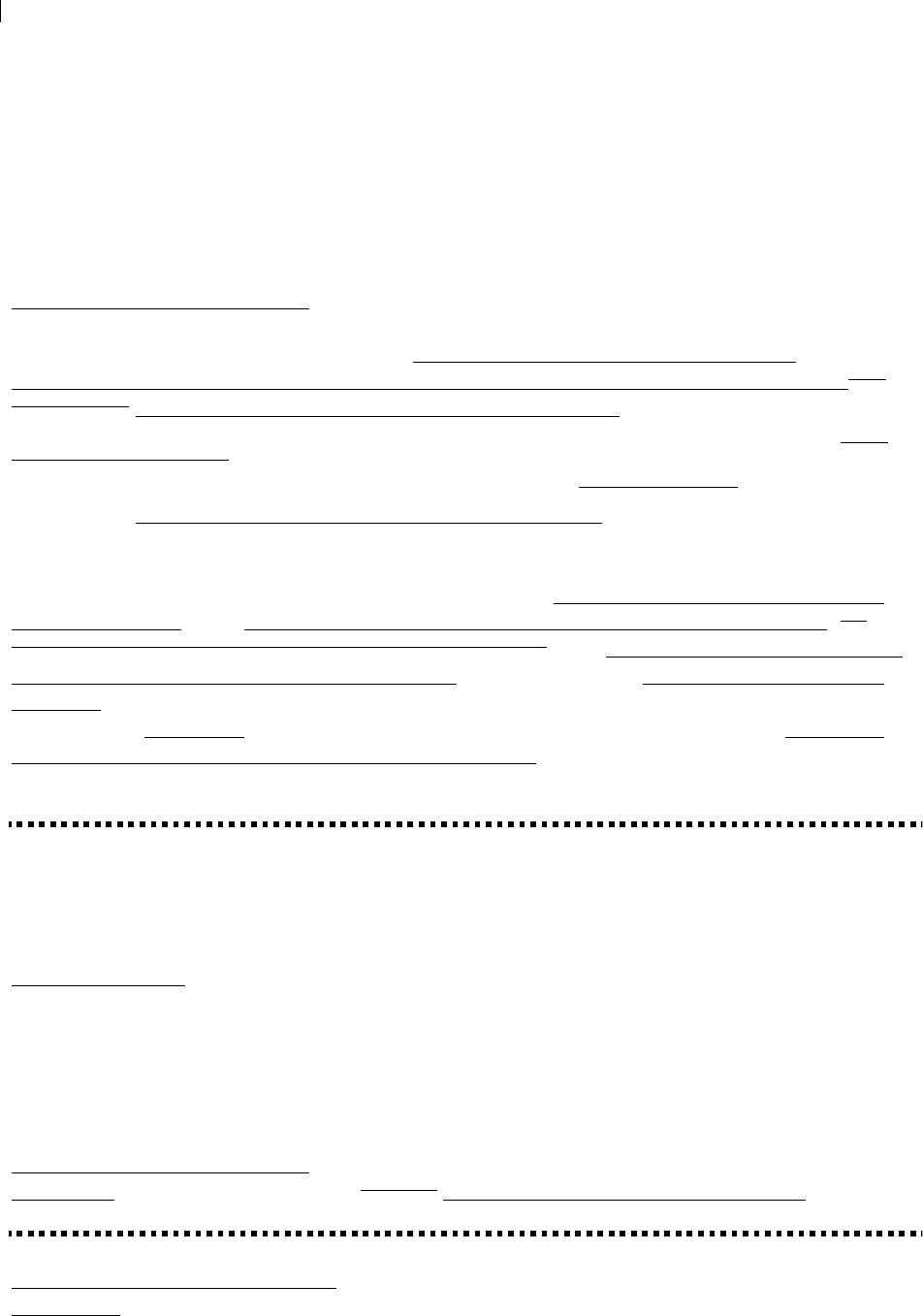
75
ALERT & OTT
Docket ID No. EPA–HQ–OPA–2006–0090
entities. We are concerned that the proposed rule practically guarantees that the
response will do more harm. For example, if NOAA withdraws its concurrence because
of seasonal aberrations in presence of endangered species, then proceeding with
activities such as use of dispersants or an in-situ burn could conceivably do more harm
instead of mitigating harm. Or if OSHA withdraws its concurrence because of high
incidences of sick workers with similar symptoms in one area, then continuing with the
offending activity could conceivably do more harm.
RECOMMENDATION (edits)
The EPA representative to the RRT, the Department of Commerce and the Department
of the Interior natural resource trustees, the Department of Labor/OSHA and
Department of Human Health and Services/CDC representatives to the RRT, and, as
appropriate federally recognized Tribal representatives and the RRT representative
from the state(s) with jurisdiction over waters and adjoining shorelines within the ACP
preauthorization plan area shall review and either approve, approve with modification,
or disapprove the preauthorization plans developed by the RRT and/or the Area
Committees and federally recognized Tribal governments.
Withdrawal of concurrence means the preauthorization plan becomes invalid and the
authorization of use for chemical or biological agents, or other spill mitigating devices
and substances, must cease until conditions are met and concurrence resumes. be
performed according to paragraph (b) of this section. The appropriate agencies, RRTs,
federally recognized Tribal representatives, Area Committees, and Citizens’ Advisory
Councils shall address the withdrawal and the RRT shall notify the NRT of the final
status of the ACP and preauthorization plan within 30 days from withdrawal, or less if
the matter was successfully resolved in the interim.
910(a)(3) Preauthorization Plans Reviews.
Proposed subtitle change
JUSTIFICATION
As explained in the justification for paragraph (a) of this section, preauthorization plans
cannot exist without their parent ACP. Just as agencies are bound to implement the
preauthorization plans during spill response, they are similarly bound to implement all of
the other required elements of the ACPs. Therefore, ACPs must also be referenced,
and the title must properly refer to both.
RECOMMENDATION (edits)
Review of Preauthorization Plans Review as Part of Area Contingency Plans.
JUSTIFICATION, CONTINUED
Reviewers: Consistent with our request that federally recognized Tribal governments

76
ALERT & OTT
Docket ID No. EPA–HQ–OPA–2006–0090
and Area Committees develop ACPs, including preauthorization plans, we find that
these entities should be tasked with reviewing the plans. In cases where ACPs were
implemented because of an oil spill response, requiring these entities to review the plan
would also serve as an open and honest critique on plan implementation by the RRT
and/or NRT.
After initial review by the original entities that developed the plans and consistent with
our request to integrate consultation with agencies tasked with protection of worker
safety and health, and public health and welfare, we request that EPA includes OSHA
and DHHS in final review and approval of the plans. We request that federally
recognized Tribes are also recognized with authority to coordinate and consult with
these agencies and entities for final approval of all plans.
Normal Review Cycle: Given the rapid expansion of UOG infrastructure and activities
and increase in spills of UOG, the relentless offshore push of leasing and drilling into
ever deeper water – now over twice the depth of the BP DWH, the projected drilling in
the Arctic, and the new developments in oil spill response techniques and products, we
find that the normal review cycle should be shortened to 2 to 3 years to keep ACPs,
including preauthorization plans, current and viable. Some states review their ACPs on
an annual basis.
Criteria for Interim Review Cycle: We request addition of a few more criteria that would
trigger an interim review of the ACP and the preauthorization plan, including:
√ use of the exemption in §300.910(d), as this would create an incentive for OSC
to use this exemption sparingly;
√ extended use duration over 96 hours during any single spill incident, as long-term
environmental or human health monitoring may inform decisions concerning conditions
of agent use;
√ worker or public health concerns, as raised from rapid response assessment
tools such as community surveys developed as part of ACPs; and
√ withdrawal of concurrence by any of the agencies, RRT representatives, or Tribal
governments, as this situation indicates unforeseen circumstances that will need to be
addressed and remedied.
RECOMMENDATION (edits)
The RRT and/or Federally recognized Tribal governments and the Area Committees
must review, and revise as needed, ACPs, including preauthorization plans, at least
every 2 to 3 years or: after a major discharge or after a Spill of National Significance
(SONS); to address revisions of the Schedule; to reflect new listings of threatened
and/or endangered species; to evaluate circumstances for, and consequences of, using
the exemption in §300.910(d); to address use of any product for extended duration of
over 96 hours during any single spill incident; to address worker safety or public health
concerns as raised from rapid response assessment tools; to evaluate and remedy
circumstances leading to a withdrawal of concurrence; and to address any other change
that may impact the conditions under which the use of chemical and biological agents or
other products is are preauthorized.

77
ALERT & OTT
Docket ID No. EPA–HQ–OPA–2006–0090
The designated EPA RRT representative, the Department of Commerce and the
Department of the Interior natural resource trustees, the Department of Labor/OSHA
and Department of Human Health and Services/CDC representatives to the RRT,
federally recognized Tribal representatives, and the RRT representative from the
state(s) with jurisdiction over the waters of the area to which a preauthorization plan
applies shall review and either approve, approve with modification, or disapprove any
revisions to the preauthorization plans.
NEW SECTION
§300.910(a)(4) Transition of Existing Preauthorization Plans in Area Contingency
Plans to the New Schedule
JUSTIFICATION
As part of this rulemaking, EPA proposes to require that all products currently on the
Schedule must be retested under the new rules and protocols within a 2-year period
after the date of the final rulemaking. §300.955(f). This may likely mean that some
products currently listed in preauthorization plans may not be listed on the new
Schedule. However, of greater concern is that preauthorization plans cannot, by nature,
fulfill the statutory mandate to identify the waters where product may be used and the
quantity that can be used safely during an actual oil spill response. This is impossible to
predetermine, given all the variables, and by necessity requires an incident-specific,
concurrence and consultation, decision-making process. It is also very likely that none
of the existing preauthorization plans include the parameters proposed in paragraph
(a)(1) of this section, although some Area C-Plans may include some of these
parameters.
From this, we find that the President should issue an Executive Order directing any
FOSC to disregard preauthorization plans for oil spill response. Further, the EO should
direct EPA to fulfill the mandate of OPA90 by designating Area Committees and
Citizens’ Advisory Councils to create ACPs (not RCPs-ACPs). EPA should require
operators in the area covered by the plan to fund these entities as part of their
contingency plans. Further, if preauthorization plans are still required, EPA should
require new or updated preauthorization plans within two years after the completion of
the proposed transition period for products to the new rules and Schedule.
RECOMMENDATION (alternative language if President does not strike preauthorization
plans)
All preauthorization plans, in development or in existence, as of 1994 will be null and
void effective [24 MONTHS FROM THE EFFECTIVE DATE OF FINAL RULE]. To
transition from the current Schedule to the new Schedule, new and updated
preauthorization plans will be required by [36 MONTHS FROM THE EFFECTIVE DATE
OF FINAL RULE]. In the interim 12 months, the OSC may authorize the use of any
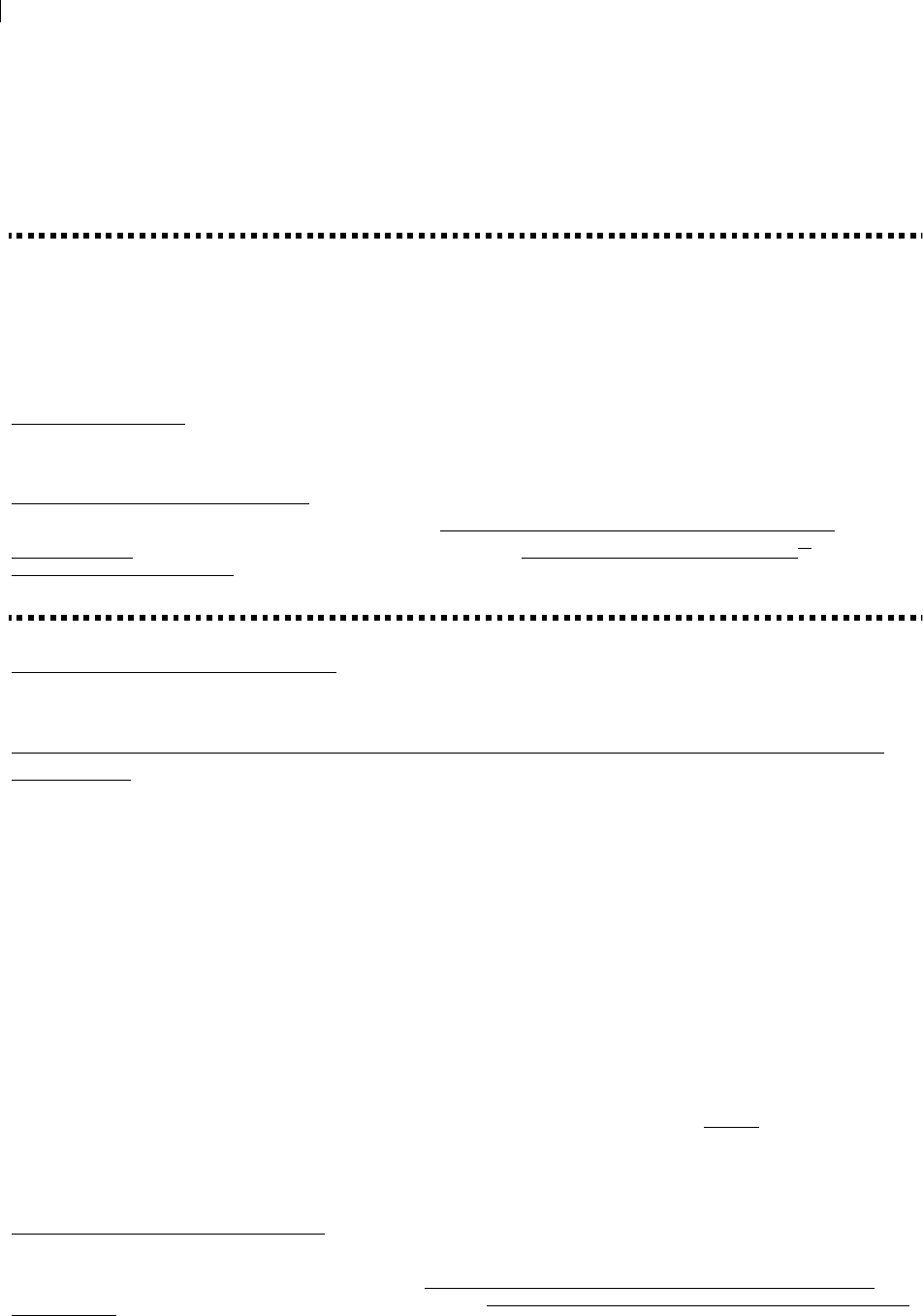
78
ALERT & OTT
Docket ID No. EPA–HQ–OPA–2006–0090
products* on the new Schedule for their intended purpose by obtaining the incident
specific concurrences described in §300.910(b) unless otherwise directed by the EPA
Administrator in accordance with concurrent authority under section 311(d)(2)(G) of
FWPCA and Executive Order 12777.
* refers to our proposed definition
§300.910(b) Use of Agents Identified on the Schedule on Oil Discharges Not
Addressed by a Preauthorization Plan.
Proposed subtitle change
JUSTIFICATION
See justification of for (a).
RECOMMENDATION (edits)
Use of Agents Identified on the Schedule and Other Spill Mitigating Devices and
Substances on Oil Discharges Not Addressed by an Area Contingency Plan a
Preauthorization Plan
JUSTIFICATION, CONTINUED
Consistency with other subsections and General Overview and Justifications.
If ACPs don’t have preauthorization plans, then the default document is the ACP (not
RCP-ACP). The law requires “that all navigable waters, adjoining shorelines, and waters
of the exclusive economic zone are subject to an Area Contingency Plan…” [33 USC
§4202(b)(1)(A)] There is no legal excuse not to have these plans in place around and
across the nation. There should be standing documents in all Areas such as the
Memoranda of Understanding for consultation with agencies and Memoranda of
Agreement for consultation with federally recognized Tribal governments.
ACPs are the guiding documents during an oil spill response and each of these plans
should have the basic elements outlined below and currently in paragraph (a)(1) of this
section. However, the proper place to develop preauthorization plans with the requisite
level of detail is in Subpart C Planning and Preparedness, which is outside the scope of
this rulemaking. A preauthorization plan should be an annex to the ACP, similar to the
existing and required Annex for protection, rescue, and rehabilitation of wildlife and the
proposed Annexes for protecting workers and the general public. It is not a stand-alone
plan; it a subpart of an entire response plan that the OSC is mandated to implement
during oil spill response.
RECOMMENDATIONS (edits)
For discharge situations that are not addressed by the preauthorization plan developed
pursuant to paragraph (a) of this section and as part of an Area Contingency Plan in
Subpart C, the OSC may authorize the use of appropriate chemical or biological agents

79
ALERT & OTT
Docket ID No. EPA–HQ–OPA–2006–0090
identified on the Schedule such products for their intended purpose on an oil discharge
with the concurrence of the designated EPA RRT representative and, as appropriate,
the concurrence of federally recognized Tribal representatives and the RRT
representatives from the state(s) with jurisdiction over the waters and adjoining
shorelines threatened by the release or discharge, and the concurrence of in
consultation with the Department of Commerce and the Department of the Interior
natural resource trustees, and the Department of Labor/OSHA and Department of
Human Health and Services/CDC representatives to the RRT, unless otherwise directed
by the EPA Administrator in accordance with concurrent authority under section
311(d)(2)(G) of FWPCA and Executive Order 12777. In meeting the provisions of this
paragraph, the OSC must consider and document––
NEW SECTIONS
(1) the parameters for the use of agents products including: the quantities to be
used, the duration of use, the depth of water, the distance to shoreline and proximity to
populated areas, and
(A) the source and type of oil spilled;
(B) a priority for products containing only non-toxic ingredients or products
that have received EPA’s Design for the Environment recognition;
(C) consideration of rating for federally recognized Tribe and community
acceptance criteria;
(D) specific limits for the quantities and the duration of use;
(E) specific limits for water depth, distance to shoreline, and proximity to
populated areas and water intake structures;
(F) a Memorandum of Understanding among the FOSC, OSHA, and the
Trustees for Natural Resources to clarify OSHA’s role to provide technical
assistance within the Unified Command structure; to establish procedures
for concurrence and coordination to allow OSHA to provide health and
safety assistance to personnel throughout the spill-impacted area
including outside of OSHA’s geographic authority; and to establish
procedures for concurrence between the OSHA and the Trustees for
Natural Resources to integrate evidence-based worker health data and
concerns generated from the applicable ACs within the Unified Command
structure;
(G) a Memorandum of Understanding among the FOSC, DHHS/ CDC, and the
Trustees for Natural Resources to clarify CDC’s role to provide technical
assistance within the Unified Command structure; to establish procedures
for concurrence and coordination between the FOSC and CDC to allow
DHHS to provide health and safety assistance to the general public
throughout the spill-impacted area; and to establish procedures for
concurrence between the OSHA and the Trustees for Natural Resources
to integrate evidence-based public health data and concerns generated
from the applicable ACs within the Unified Command structure;
(H) Memoranda of Agreement, associated protocols, and consultation and
coordination policies between the Secretary of the Department in which
the Coast Guard is operating and federally recognized Tribes in the
geographic region covered by the Area C-Plan to establish cooperative

80
ALERT & OTT
Docket ID No. EPA–HQ–OPA–2006–0090
arrangements for oil pollution prevention, preparedness, and response, to
provide Indian Tribes grant and contract assistance; and
(I) a Quality Assurance Program as part of an approved Area C-Plan; and
(J) a completed environmental baseline monitoring program, also as part of
an approved Area C-Plan;
(2) local and regional factors including: should address factors such as
environmentally sensitive resources or restricted areas that might be impacted by
discharged oil; agent inventory and storage locations; agent manufacturing capability,
availability of equipment needed for agent use, availability of adequately trained
operators; and means to monitor agent use in the environment.
(A) various environmental monitoring scenarios for tracking air- and water-
borne pollutants;
(B) the existence and location of vulnerable populations, environmentally and
culturally sensitive resources, or restricted areas such as drinking water
supplies or sources and infrastructure critical to public welfare that might be
impacted by discharged oil and product use; and
(3) logistical factors including:
(A) provisions for area closure scenarios with evacuation and temporary
housing, schooling, health care, and alternative water supplies;
(B) availability of hazardous waste treatment facilities to account for, treat, and
dispose of recovered oil and oily debris, including oil-product combinations;
(C) availability of equipment and personal protective equipment for product use;
(D) availability of adequately trained operators and workers with 40 hours of
HAZWOPER training and prescreen health baselines (no exceptions);
(E) the best available methods to monitor impacts of oil and oil-product
combinations; application, efficacy, and impacts of product use in the
environment; and impacts of oil, product, and oil-product combinations to
worker and public health;
(F) inventory, storage and staging locations, and manufacturing capability of
desired products; and
(G) notification within 24 hours of spills and product use to health care providers
and the public in the language(s) spoken in the impacted region.
(c) Burning Agents
JUSTIFICATION
EPA proposes to provide greater flexibility to OSCs for authorizing use of burning
agents, noting that ISB (in-situ burns) appear to be gaining a more prominent role as a
response option, especially in federal waters in remote locations such as the Arctic.
Instead, we propose more stringent rules for use of burning agents, especially for the
Arctic.
We find there are too many variables to consider to preauthorize burns, as the EPA
suggests. These variables include, among others, wind direction and speed; proximity

81
ALERT & OTT
Docket ID No. EPA–HQ–OPA–2006–0090
to urban populations, remote villages of federally recognized Tribes, or vulnerable
populations like those living along the fringe of land and sea in southern Louisiana;
seasonal proximity to air-breathing and possibly endangered or threatened marine
mammals; availability of burning agents especially in remote locations other than the
inventory from the nearest Native village; and availability of health care providers
especially in remote locations. ISBs should be authorized only after consideration of
these variables, and only after tools are in place to monitor the ISB.
Further, we find that the best people to contribute to the decision-making process,
especially in remote areas, are the people and health care providers who live there, not
the OSC or the spiller. During the EVOS, the OSC authorized an ISB without
considering wind direction and speed, and proximity to the Native Village of Tatitlek.
The burn caused acute illnesses of vomiting, dizziness, nausea, headaches, and more,
in this downwind community.
176
During the BP DWH disaster, seven fishermen with the
in-situ burn teams were taken by Medevac life-flights from their fishing boats on the
same day and flown directly to a hospital for treatment. NIOSH later dismissed
exposure to chemical dispersants, but the PAHs from the burn itself can cause acute
respiratory symptoms (see Definitions, Oil).
Finally, we reiterate the point we raised earlier: We do not support use of refined
petroleum products as burning agents, especially in the Arctic, for environmental and
social reasons discussed elsewhere (see Definitions, Burning Agents). Oil does not
ignite well, if at all, in cold sea and air conditions. It is not valid to assume that burning
agents will all rapidly burn off during use. We find that if EPA authorizes refined
petroleum products as burning agents, then the spiller should be fined for discharging
the additional oil as well – and further, such products should be listed on the Product
Schedule to establish a basis for monitoring use and impacts to the workers, the public
and the environment.
RECOMMENDATION (edits)
For authorized in-situ burns, the The OSC, with the concurrence of the EPA,
Department of Labor/OSHA, and Department of Human Health and Services
representatives to the RRT, the Department of Commerce and Department of Interior
natural resource trustees, and federally recognized Tribal representatives and RRT
representatives from the states with jurisdiction over the waters of the area, may
authorize the use of burning agents on a case-by-case basis. If refined petroleum
products are used as burning agents, then the responsible party will be subject to a fine
based on the amount of burning agent discharged.
(d) Exceptions
176
Ott, Sound Truth, p. 23.
Alaska Dept. of Environmental Conservation, 1993, The EVOS. Final Report, State of Alaska
Response, prepared by E. Piper, Anchorage, AK, June.

82
ALERT & OTT
Docket ID No. EPA–HQ–OPA–2006–0090
JUSTIFICATION
In past spills, the OSC has focused on the threat from oil and has not considered that
products might also pose a threat, alone or in combination with oil, to humans and the
environment. We find that the OSC has, in fact, demonstrated remarkably poor
judgment about use of products on the Schedule in routine spill response. The bull-
headed use of dispersants during the BP DWH is just the most recent example with the
science now showing that dispersant use does more harm than good to human health
and the environment (see Definitions, Dispersants). Because of this single-minded
focus on oil, we find that more heads are better than one and that the OSC’s decisions
need to be tempered with a dose of concern for worker health, public health, and the
environment with Tribal input, consistent with our earlier comments.
In addition, we find that EPA’s proposed rule to allow use of products that are not listed
on the Schedule negates the entire purpose of contingency planning. Product use is a
critical concern, especially now with the increase in spills of UOG in fresh water that
serve as municipal water supplies and crop irrigation. It’s also a concern for municipal
water and wastewater infrastructure, given that UOG spills can occur, and have
occurred, right in neighborhoods where oil has flowed into storm drains. It’s also a
concern for public health and worker health.
RECOMMENDATION (edits)
The OSC may authorize only the use of any chemical or biological agent, whether it is
identified or not on the Schedule without obtaining the immediate concurrence of the
designated EPA RRT representative, the Department of Labor/OSHA, and the
Department of Human Health and Services representatives to the RRT, the Department
of Commerce and Department of Interior natural resource trustees, and the federally
recognized Tribal representatives and, as appropriate, the RRT representatives from
the state(s) with jurisdiction over the waters and adjoining shorelines threatened by the
release or discharge, when, in the judgment of the OSC, the use of the agent is
necessary to prevent or substantially reduce a threat to human life. If an OSC
authorizes the use of an agent pursuant to this paragraph, he or she shall immediately
notify and provide documentation of the circumstances requiring and the reasons for
use of the agent to the EPA RRT representative and, as appropriate, the RRT
representatives listed above and to Area Committee, which shall immediately notify the
public. from the affected state(s) and, the Department of Commerce/Department of the
Interior natural resources trustees. Use of any agent beyond 48 hours under this
exception shall be in accordance with paragraphs (a) or (b) of this section.
(e) Prohibited Agents
Proposed subtitle change
JUSTIFICATION

83
ALERT & OTT
Docket ID No. EPA–HQ–OPA–2006–0090
Consistency with other sections by including other oil spill mitigating devices and
substances.
RECOMMENDATION (edits)
Prohibited Agents and Other Spill Mitigating Devices and Substances
JUSTIFICATION, CONTINUED
Regarding sinking agents: We support EPA’s prohibition against use of sinking agents.
However, we find EPA’s proposed definition of sinking agents renders this prohibition
meaningless. Therefore, we request the prohibition against use of sinking agents is
coupled with our proposed definition of sinking agents, which considers agents and
other products irrespective of specific gravity.
Regarding NPs and NPEs: We support EPA’s proposed rule to prohibit agents or other
products that contain such substances.
Regarding additional substances: Because of the inherent limitations of science and
standards-based protocols, evidence of harm is often found at levels below those
considered “safe” by the EPA. Such is the case with endocrine disrupters and other
known or suspected human health hazards. For example, EPA has literally spent almost
two decades fulfilling its legal mandates under the Food Quality Protection Act and the
Safe Drinking Water Act to develop screening tests for endocrine disrupters. Meanwhile,
the weight of accumulated evidence strongly suggests that such chemicals cause much
harm to humans and other organisms. Similarly, chemicals that suppress the immune
system, interfere with growth and development of fetuses, are neurotoxins, cause
cancer or act as mutagens, or act to lyse (break apart) red blood cells – also can cause
much harm.
We find that there is sufficient information for a reasonable person to conclude that use
of products containing such substances would do more harm than good and that,
therefore, products with these ingredients should be prohibited.
Further, we find that some products such as the Corexit dispersants have curious
statements on their MSD Sheets or SD Sheets. For example, Section 6 of MSDS list
accidental release measures. The MSD Sheets for Corexit 9527A and Corexit 9500A
both state under Environmental Precautions, “Do not contaminate surface water.”
Under Methods for Cleaning Up large spills, the MSD Sheets warn, “Contain liquid
using absorbent material, by digging trenches or by diking. Reclaim into recovery
or salvage drums or tank truck for proper disposal. Contact an approved waste
hauler for disposal of contaminated recovered material. Dispose of material in
compliance with regulations indicated in Section 13 (Disposal Considerations).
During the BP DWH disaster nearly 2 million gallons in total of these dispersants were
intentionally released – spilled – into the surface and subsurface waters of the Gulf of
Mexico with no thought or intention of cleaning them up or recovering them from the
environment in flagrant disregard of the manufacturer’s warning labels. We find this

84
ALERT & OTT
Docket ID No. EPA–HQ–OPA–2006–0090
makes absolutely no sense. We believe that such simple and straight-forward
precautions on MSDS should be followed and that products that carry such precautions
should be also prohibited from intentional use on an oil spill.
Regarding CBI: In this rulemaking, EPA proposes that manufacturers must disclose all
product ingredients. §300.950(b). We support this new rule for reasons discussed in
that section and recommend reiterating it as a prohibition.
Regarding categories of agents: As discussed elsewhere, we recommend – banning
refined petroleum products for use as burning agents; banning use of sorbents in bulk
form; and banning dispersants in waters with less than 20 ppt salinity or colder than 10º
C (50º F).
RECOMMENDATION (edits)
Notwithstanding paragraph (d) of this section, the OSC may not authorize the use of the
following:
(1) Sinking agents*, or any other chemical agent, biological agent, or any
substance that acts as a sinking agent* when mixed with oil. and
(2) Chemical or biological agents or any substance that have contain––
(A) either nonylphenol (NP) or nonylphenol ethoxylates (NPEs) as components;
(B) endocrine disrupting compounds (EDCs);
(C) proprietary ingredients, undisclosed ingredients, or ingredients protected as
Confidential Business Information; and
(D) known or suspected human health hazards as listed on the MSDS or SDS.
(3) Chemical or biological agents or any substances that carry warnings such as “Do
not contaminate surface water,” or “Keep out of sewers, ditches, drains, and
waterways,” or special precautions for recovering and properly disposing of
product.
(4) Refined petroleum products as burning agents.
(5) Sorbents in bulk form.
(6) Dispersants in waters of less than 20 ppt salinity or colder than 10º C (50º F).
* refers to our proposed definition of sinking agents, not EPA’s proposed
definition
ALTERNATIVE RECOMMENDATIONs
If EPA is not going to prohibit these additional substances, then we request that agents
or other products with such substances are clearly labeled as containing these
substances. This would allow Area Committees to prohibit use in the ACPs.
If EPA does not prohibit refined petroleum products as burning agents and sorbents in
bulk form, then we request these agents be added to the Schedule in order to require
pre-screening testing and pre- and post-use monitoring of impacts to people (burning
agents) and the environment (burning agents and sorbents).
If EPA does not prohibit certain use of dispersants as listed, then we request these uses
be listed under Limitations in §300.915(b).

85
ALERT & OTT
Docket ID No. EPA–HQ–OPA–2006–0090
(f) Storage and Use of Agents
Proposed subtitle change
JUSTIFICATION
Consistency with other sections by including other oil spill mitigating devices and
substances. Some burning agents may have a shelf life, for example.
RECOMMENDATION (edits)
Storage and Use of Agents and Other Oil Spill Mitigating Devices and Substances
JUSTIFICATION, CONTINUED
In general we support EPA’s proposed rule. We request in addition that any tests are
conducted by certified labs, and that shelf life for biological agents and bioremediation
agents is limited to one year as living products will degrade more quickly than chemical
agents. For example, the vitality and potency of probiotics declines at about 5 percent
per month, although cool, dry conditions prolong shelf life.
RECOMMENDATION (edits)
No changes proposed through “end user location.”
If testing demonstrates the expired product has maintained its integrity, the
product chemical agents except bioremediation agents may be used for an
additional 5 years from the date of the testing described above and biological
agents and bioremediation agents may be used for an additional 1 year from the
date of the testing described above. The responsible party, or its representative,
must re-label the tested product lots and maintain test results and document all of
the information under § 300.915(a)(17) and (a)(18) until used. The owner or
operator of a facility or vessel must ensure the testing of re-labeled products every
5 years for chemical agents except bioremediation agents and every year for
biological agents and bioremediation agents. Products that list an extended or
indefinite shelf life must still comply with the requirements under this section.
(g) Supplemental Testing, Monitoring, and Information
JUSTIFICATION
We support this concept, but do not agree EPA’s proposed rule to put the spiller in
charge of the monitoring science! We find this is a breach of the government's fiduciary
duty to protect the public trust resources. The spiller will likely do its own testing if the
proposed rules become a requirement, but such testing will lack credibility from the
public’s perspective. For example, Exxon’s spill studies in the wake of the EVOS are
stellar examples of advocacy science. Exxon scientists biased their studies with

86
ALERT & OTT
Docket ID No. EPA–HQ–OPA–2006–0090
underpowered statistical designs so the tests could not detect spill effects; data
averaging to eliminate differences between oiled and unoiled sites; mismatched control
and oiled sites to skew comparisons; improperly preserved samples to reduce
concentrations of aromatic hydrocarbons; selective data reporting; and more.
177
In
short, Exxon’s studies revealed little about the true nature of the Sound – as would be
expected from a company that was trying to minimize liability to its shareholders.
Any monitoring done on behalf of the public interest absolutely needs to be overseen by
an independent body such as SSC or a contractor to the local Citizens’ Advisory
Council. Funding for such studies can be deducted from fines and penalties after a spill
event. As part of the planning phase, funds for monitoring studies should be part of the
contract responsibilities of the area Citizens’ Advisory Council. If industry withholds
funds for such studies, then Area Committees have the choice of preauthorizing product
use.
RECOMMENDATION (edits)
The OSC, RRT, the EPA, DOL/ OSHA, DHHS/ CDC, DOI or DOC, or state
representatives on RRT, federally recognized Tribal representative, Area
Committee, or Citizens’ Advisory Council, or the Scientific Support Coordinator
(hereafter “agencies, entities, and Tribes”) may require supplementary toxicity and
efficacy testing, or available data or information that addresses site, area, or
ecosystem specific concerns relative to the use of a product for both planning and
authorization of use. During a discharge incident, the agencies, entities, and
Tribes RRTmay request that the OSC require a responsible party to Natural
Resources Trustees conduct additional monitoring associated with the use of a
product. Such additional monitoring data may include supplemental toxicity and
efficacy testing or submission of available data or information that addresses the
discharge area or ecosystem specific concerns relative to the use of a product or
that aids the OSC and/or the RRT and the Tribal representative in operational
decisions.
(h) Recovery of Oil and Agents from the Environment
Proposed subtitle change
JUSTIFICATION
Consistency with other sections by including other oil spill mitigating devices and
substances. In particular, we find this title omits substances such as sorbents, which are
routinely used during oil spill response. Further, we are concerned that the OSC may
choose not to recognize oil-product combinations, or weathered oil, as either oil or
product and so justify not removing such material.
177
Ott, Sound Truth, Chapters 12–21, especially sections “Deception by Design?” and summary
Chapter 22.

87
ALERT & OTT
Docket ID No. EPA–HQ–OPA–2006–0090
RECOMMENDATIONS (edits)
Recovery of Oil, Agents and Other Spill Mitigating Devices and Substances, and Oil-
Product Combinations from the Environment
JUSTIFICATION, CONTINUED
We support this proposed rule in concept, as there is an incentive for the spiller not to
collect oil and oily debris because of storage, transportation, and disposal costs, despite
the fact that spillers deduct cleanup expenses as an “ordinary and necessary” cost of
business. For example, BP’s “cleanup” cost taxpayers $32 billion, according to U.S.
PIRG.
178
However, the proposed rule needs more specificity. “Adequately” is not a cleanup
standard that represents a quantifiable metric. We request a more definitive standard
and suggest that “clean” and “completed cleanup” are standards best determined by the
people who live in the area, not the OSC. We recommend adding consultation into this
process and, as a basis for consultation, we recommend that federally recognized Tribal
governments, Area Committees, and Citizens’ Advisory Councils include recovery of
products and oil-product waste as part of their ACPs in Subpart C, including
preauthorization plans in this section, to properly contain, store, transport, and dispose
of recovered oil, product, and oil-product combinations as hazardous wastes. We
request a specific list of agents and products that this rule applies to; notably, solidifiers,
sorbents, and surface washing agents, as well as oil-product combinations and
weathered oil. To repeat what we have stated elsewhere, we do not want recovered oil
and oily debris, including product, disposed of in public landfills as a matter of public
health.
RECOMMENDATION (edits)
Depending on factors such as the safety of response personnel and harm to the
environment, and as directed by the OSC and with concurrence of the designated EPA
RRT representative, the Department of Labor/OSHA, and the Department of Human
Health and Services representatives to the RRT, the Department of Commerce and
Department of Interior natural resource trustees, and the federally recognized Tribal
representatives and the RRT representatives from the state(s) with jurisdiction over the
waters and adjoining shorelines threatened by the release or discharge, the responsible
party shall ensure that any removal action adequately contains, collects, transports,
stores, and disposes of agents, substances, and oil-agent product that are intended to
be recovered from the environment as hazardous waste.
(i) Reporting of Agent Use
178
Enriquez, Francisco and Phineas Baxandall, 2013, Settlement loophole in tax law could help
BP, U.S. PIRG, Oct 2, 2013. http://www.uspirg.org/media/usp/settlement-loophole-tax-law-
could-help-bp
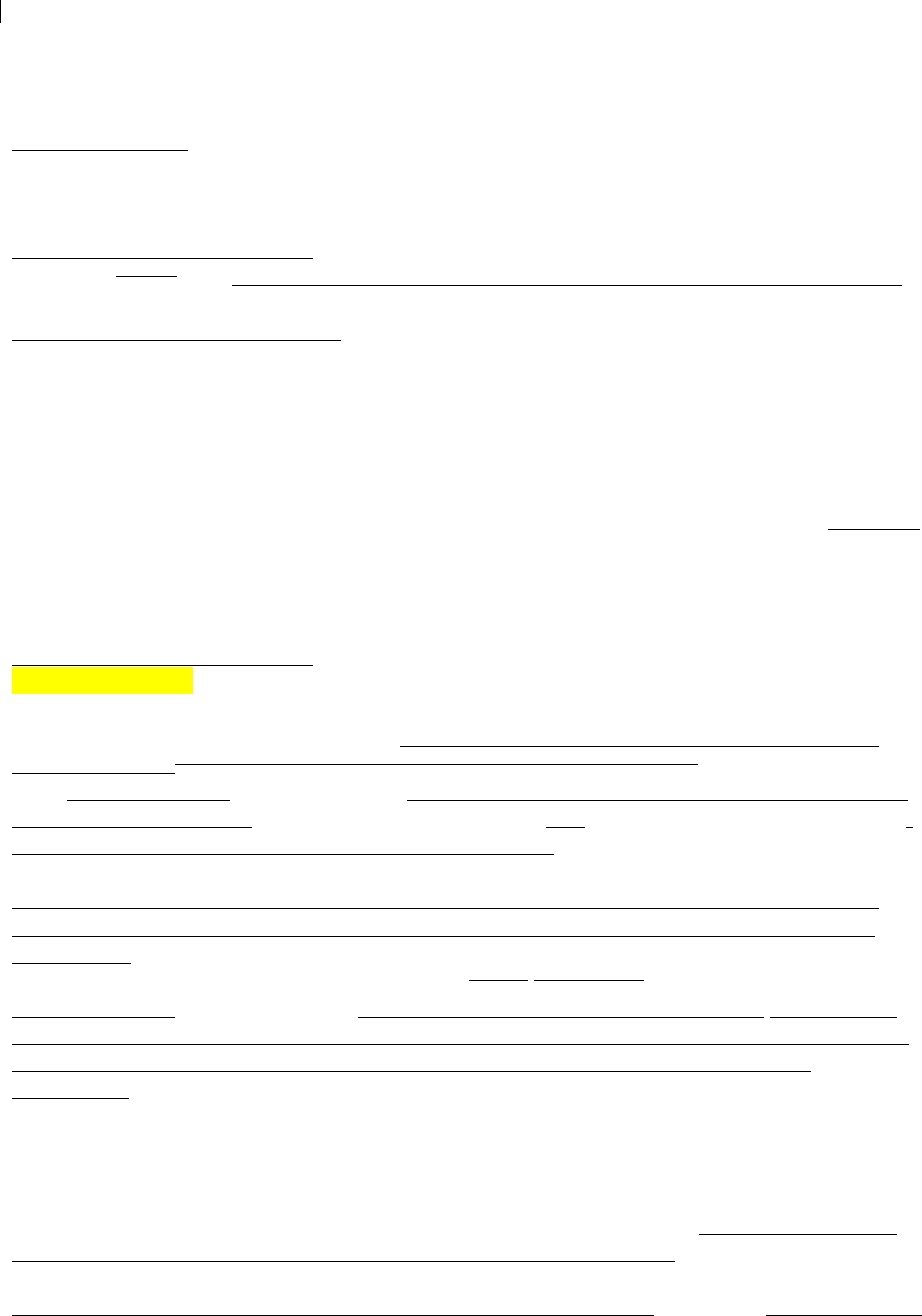
88
ALERT & OTT
Docket ID No. EPA–HQ–OPA–2006–0090
Proposed subtitle change
JUSTIFICATION
Consistent with other sections, this title should be expanded to include other oil spill
mitigating devices and substances.
RECOMMENDATION (edits)
Report of Agent Use of Agents and Other Oil Spill Mitigating Devices and Substances
JUSTIFICATION, CONTINUED
We support this proposed rule in concept, but find it should apply not only to spill
response operations but also to daily operations, any time preauthorized products are
used. Also, we request more timely notification of product use – initially and on a daily
basis thereafter – as a matter of public health and government accountability. Besides
the RRT, the public has a right to be informed of product use as a matter of public
health. People need to know what is being use, when, and where without having to file
FOIA requests with agencies months or years after the fact. This includes any daily use
of products outside of response operations. We request simultaneous notification of
federally recognized Tribal governments, Area Committees, and Citizens’ Advisory
Councils.
RECOMMENDATION (edits)
NEW SECTIONS
(i)(1) Oil Spill Response Operations. Unless already included in the OSC report
required under §300.165 of this part, within 24 hours of initiation of product use and
daily thereafter, within 30 days of completion of agent operations, the authorizing OSC
shall simultaneously provide the RRT, federally recognized Tribal representative, Area
Committee, and public the following information on the chemical and biological agents,
and other oil spill mitigating devices and substances used in response to an oil
discharge: product name, quantity and concentration used, duration of use, locations
where product was used including water depth and proximity to adjacent shorelines,
amount of product and oil-product combinations recovered from the environment, if
applicable, and any data collected and any analysis of efficacy or environmental effects.
Within 30 days of completion of product useagent operations, the authorizing OSC shall
simultaneously provide the RRT, Tribal representative, Area Committee, and public a
complete report of product use, including the quantity of recovered product, location of
where recovered product was disposed, and recommendations for continued
monitoring.
(i)(2) Use of Preauthorized Products during Normal Operations. Within 24 hours of use
of a preauthorized product during normal operations in state or federal waters, the
operator shall provide the OSC the following information on the product used: product
name, quantity and concentration used, duration of use, locations where product was
used including water depth and proximity to adjacent shorelines, the reason the product
was used, and amount of product and oil-product combinations recovered from the
environment, if applicable. Within 24 hours of notification, the OSC shall simultaneously

89
ALERT & OTT
Docket ID No. EPA–HQ–OPA–2006–0090
provide all of the information received from the operator to the RRT, federally
recognized Tribal representative, Area Committee, and public. For the purposes of this
section, each day and time during a 24-hour period that a preauthorized product is used
during normal operations shall count as a separate incident and the notification
requirement will apply to each incident. If product is used over more than 4 consecutive
days or more than 4 days in a 30-day period, the OSC shall require monitoring under
§300.913 and reporting under paragraph (1) of this section.
§300.913 Monitoring the Use of Dispersants
While we agree with this section in concept and find it a necessary addition to fulfill the
statutory requirements of the Clean Water Act as previously discussed, we find EPA’s
proposed rules completely undermine the contingency planning process by ignoring the
function of Area C-Plans and preauthorization plans; illegally assigning responsibilities
and duties to the OSC and responsible party that are already assigned to other entities;
usurping authority from all other agencies, Tribes, and the public; and are a breach of
the fiduciary responsibilities of government to protect the public trust resources.
We find this section, as proposed, completely unworkable for reasons described below,
and we offer a new outline with some proposed language and conceptual language.
Further, we incorporate by reference the comments submitted by the Prince William
Sound Regional Citizens’ Advisory Council.
Proposed subtitle change
JUSTIFICATION
All products used in oil spill response should be monitored to fulfill the statutory
requirements as previously discussed. Monitoring product use (application efficacy) and
environmental fate and effects (eco-toxicity) are different things requiring different
approaches and study designs. Together, these are post-spill tests conducted in real
time in the real world to determine if and how well the product worked as intended. We
find this section is out of sequence: It should follow, not precede, the section that details
the data information and testing requirements. We recommend inserting this section
after §300.915 and renumbering it as §300.925.
We have several systemic concerns with this section and address each separately.
Regarding authorization of monitoring: Unlike other sections, we find that the OSC
does NOT have authority to direct or manage damage assessment. Monitoring product
use and product fate and effects in the environment fall squarely into the camp of the
Trustees for Natural Resources as damage assessment studies. The reason to
separate monitoring from spill response is because of litigation over damages.
Assigning this responsibility to the spiller will have dire consequences for any public
damages litigation, for reasons noted below, in case the reasons are not obvious.

90
ALERT & OTT
Docket ID No. EPA–HQ–OPA–2006–0090
Consistent with other sections, we recommend that monitoring is directed by the
Trustees for Natural Resources with concurrence from agencies responsible for
protection of worker health and public health, and federally recognized Tribal
representatives and the RRT representatives from the state(s) with jurisdiction over
waters and adjoining shorelines within the area covered by the Area C-Plan.
Regarding who conducts the monitoring: After an oil spill, the spiller’s primary
responsibilities should be response operations to contain and remove the oil, and
writing checks. However, there must be a system of checks and balances to determine
if the response operations effectively and safely worked to mitigate harm to the
environment and to humans from the oil, product, and oil-product combinations; hence,
the proposed requirement for monitoring, which we support in concept. The spiller has
an understandable conflict of interest in finding harm from its spill,
179
and is prone to
conduct advocacy science, which was discussed using the example of the EVOS
science in §300.910(g). Therefore, the spiller should not be the entity conducting any
environmental monitoring. We consider such a proposal to be a breach of the
government’s fiduciary responsibility to protect the public trust resources.
There is another option: the federal, state, and Tribal representatives designated as
Trustees for Natural Resources who are “to act on behalf of the public as trustees for
natural resources,” including land, fish, wildlife, biota, air, water, ground water, drinking
water supplies, and other such resources managed or controlled by the United States,
states, and Indian Tribes, respectively. §300.600, §300.605, and §300.610, Subpart G.
The Trustees for Natural Resources selected and managed a plethora of peer-reviewed
comprehensive ecosystem studies in the wake of the EVOS. Studies were for the most
part conducted by agencies, universities, and consultants. A process was established
for public review on an ongoing basis of proposed, current, and completed studies.
Through this process, the public also became very informed about oil spill impacts and
more likely to participate in decisions involving oil activities in their area.
There are other reasons to require the Trustees for Natural Resources, instead of the
spiller, to manage the environmental monitoring program.
Longevity: Environmental monitoring for short- and long-term impacts of oil and
products should be conducted on a time scale that encompasses several life cycles of
economically and ecologically important species in the region. Comprehensive
ecosystem studies conducted in the wake of the EVOS spanned about a decade before
a consistent picture emerged from hundreds of studies.
180
Exxon scientists consistently
badgered the public trust scientists and refuted their findings, but – significantly – did
none of their own fieldwork after the initial couple years. Ideally, ecosystem monitoring
studies should continue well past immediate product use during a spill response and
should be conducted whether products are used or not, as results would inform future
damage assessment and restoration work.
179
Jacobs, Jeremy, 2015, BP wages multi-front war against spill penalties, Greenwire, April 17,
2015. http://www.eenews.net/gw
180
Peterson et al. 2003, Long-term ecosystem responses to EVOS.

91
ALERT & OTT
Docket ID No. EPA–HQ–OPA–2006–0090
Consistency: Ideally, there should be consistency of purpose and personnel from
initial damage assessment studies to recovery studies. During the EVOS, a team of
coastal ecologists, initially contracted by Exxon in 1989, documented horrific damage
from Exxon’s pressurized hot water beach wash and, separately, from experimental use
of two Corexit dispersants on intertidal organisms. Because of Exxon’s legal strategy,
the scientists who conducted the studies were not allowed to interpret their results.
Their studies never would have been made public had not Exxon terminated the team’s
contract – and the team been hired by NOAA and allowed to continue their work for
another seven years. However, Exxon lawyers refused to give their former contractors
access to the critical pre- and immediately post-spill data the team had collected in 1989
until forced to do so through litigation.
181
Having the Trustees for Natural Resources
oversee initial environmental monitoring studies would allow a seamless transition from
critical baseline and early damage assessment studies to later restoration studies. This
would create invaluable information for the public and scientists working to protect water
and aquatic ecosystems from oil and chemical spills.
Complexity: Monitoring impacts from product use is far more complex than
proposed by EPA. By necessity, it includes having pre-spill baseline studies and
including “set-aside sites” that are only affected by oil and not product. Ideally studies
would involve teams of scientists across a wide spectrum of disciplines. Further,
tracking airborne oil and product is also critical to monitor oil and product impacts on
workers, the general public, and wildlife such as marine mammals and birds. To
coordinate research and findings among wildlife and human monitoring studies, the
Trustees for Natural Resources would have to broaden their concept of natural
resources to include humans as “biota.”
Regarding a Quality Assurance Program: We find that the OSC is not the proper
authority to judge a science-based plan; that post-disaster is not the proper time to
present a plan; and that the spiller is not the proper entity to be developing and carrying
out such a plan. Instead, we find that a QA Program should be part of a preauthorization
plan, developed as part of an Area C-Plan, by Area Committees as advised “all
agencies, entities, and Tribes” and the Scientific Support Coordinator that are part of
program management. Further, we find that completing baseline ecosystem monitoring
and characterization of key ecologically- and economically-important species, sensitive
habitats including fresh water supplies, and vulnerable human populations should be a
priority in ACPs and part of a requirement for authorizing product use in
preauthorization plans. Without having a QA Program approved and in place, and
without completing baseline ecosystem studies, a preauthorization plan is nothing more
than a rubber-stamp exercise to preapprove – basically, dispersants – for use. It’s time
to move beyond this and actually insist on functioning plans. We recommend that an
existing QA Program as part of an approved Area C-Plan and a completed and routinely
updated ecosystem baseline survey are required conditions for preapproval of product
use.
181
Ott 2004, Sound Truth, Chapter 13.

92
ALERT & OTT
Docket ID No. EPA–HQ–OPA–2006–0090
Note that QA Programs should consist of monitoring plans based on categories for
chemical and biological agents, as EPA has attempted to do for dispersants. This
approach would be more efficient and yield more consistent and comparable data than
individual plans developed by the spiller after a spill. Also, QA Program development
and baseline ecological monitoring should be funded by contract with operators in the
area covered by the ACP. OPA90 requires environmental monitoring of the Citizens’
Advisory Council, funded by contract with the industry operators.
Regarding monitoring for all products, not just dispersants: Studies conducted in the
wake of the BP DWH disaster demonstrated that products do not necessarily perform in
the environment as they do in the lab when tested in sterile and artificial water or when
tested alone without addition of a standard reference oil (see Definitions, Dispersants).
Let’s not repeat the mistake we made with dispersants. We won’t know if a product
works as intended in the real world unless we require environmental monitoring – for all
products – with best available technology.
Regarding limitations on monitoring: We disagree with EPA’s proposed limitations on
monitoring for very large spills (BP DWH was 42,000 to 210,000 gallons in 24 hours),
for extended use over 96 hours; or for any subsurface spill. There is much to learn from
smaller spills and small-scale application of products. What works could be scaled up
and applied to larger spills; what doesn’t should be avoided to avert the risk of
increasing damages from oil. Similarly, damage assessment and monitoring of product
impacts should begin as rapidly as possible otherwise critical data and information could
be lost. Subsurface use of products should not be allowed because the prerequisite
conditions for product use have not yet been met – there are no baseline ecosystem
studies and there are no tools to monitor impacts at the depths proposed for use.
Further, we find that these limits contravene statutory mandate: the Clean Water Act
requires the Schedule to identify the waters where products may be used and the
quantities that can be used safely. This necessitates monitoring for any size spill and for
any product use to determine what works in the real world, in what waters, and in what
quantities.
Regarding reporting of product use and monitoring: We find that data and information
obtained under the QA Program is fundamentally different than similar data and
information from the damage assessment and ecological monitoring studies for oil
alone. Once oil spills, there is no putting the genie back in the bottle. The die is cast and
the studies and litigation will commence. However, product use is optional and can be
halted if the available data and information show should more harm is occurring from
use. Therefore, we find that data and info from the QA Program should be made
available simultaneously to the OSC, “the agencies, entities, and Tribes” involved with
managing the Plan in real time, and the public, because, technically, the spiller is also
“the public” and the rest of the public has a right to know what is being used for health
concerns, how use is affecting worker and public health, and where product is going
from trajectory modeling in air and water.
RECOMMENDATION (concepts and some edits and proposed language)

93
ALERT & OTT
Docket ID No. EPA–HQ–OPA–2006–0090
Note: We recommend using this outline, but the text in [brackets] represents
recommended concepts to include in this section, not specific wording.
§300.925 Monitoring the Use, Fate, and Effects of Chemical and Biological
Agents and Other Oil Spill Mitigating Devices and Substances
Monitoring use, fate, and effects of chemical or biological agents and other spill
mitigating devices and substances (hereafter “products”) in response to oil discharges
to waters of the U.S. or adjoining shorelines must be authorized by the Natural
Resource Trustees in accordance with the provisions of this section:
(a) Oil Spills Where Preauthorization Conditions for Product Use Have Not Been
Met.
Product shall not be used unless: the Area Committee has an existing and current
Quality Assurance Project Plan approved by the RRT, NRT, and federally recognized
Tribal representatives for approval to the OSC for covering the collection and reporting
of all environmental data as part of the preauthorization plan of the Area C-Plan; and
the Natural Resource Trustees (NRT) have completed baseline ecosystem studies in
the area impacted by the spill. Upon notification or discovery of an oil discharge, the
NRT with the concurrence of the Department of Labor/OSHA and Department of Human
Health and Services/CDC representatives to the RRT, and federally recognized Tribal
representatives and the RRT representative from the state(s) with jurisdiction over
waters and adjoining shorelines within the geographic area impacted by the oil spill
(hereafter “certain agencies, entities, and Tribes”) shall as authorized in Subpart G:
(1) Carry out short-term damage assessments from oil.
[In situations where baseline studies have not been conducted, there is a need to
rapidly characterize ecologically and economically important aquatic species and their
habitats as identified in the Fish and Wildlife and Sensitive Environments Annex to the
ACP, and a need to rapidly characterize vulnerable populations of humans including
contract workers and the general public, especially children, pregnant women, and
others as identified in the Worker Health Annex and Public Health Annex, respectively,
recommended in this rulemaking. Humans are part of the NRT’s mandate to protect the
“biota.”]
(2) Devise and carry out monitoring programs as part of long-term damage
assessments from oil.
[In all situations, damage assessment and monitoring programs should be initiated
simultaneously and as quickly as possible with peer-reviewed studies. Monitoring
programs should include ecological monitoring for fate and effects of oil, including aerial
transportation and deposition; worker health monitoring for oil impacts; and public health
monitoring for oil impacts. Examples of monitoring programs for workers and the
general public are incorporated by reference from the Coalition to Ban Toxic

94
ALERT & OTT
Docket ID No. EPA–HQ–OPA–2006–0090
Dispersants’ Petition Supplement “Proposed Policy Revisions” §300.150–152 and as
Attachment #3 to these comments). Monitoring programs should be conducted over the
time frame of years, even decades, to fully characterize long-term damages.]
(b) Oil Spills Where Preauthorization Conditions for Product Use Have Been Met.
In addition to the requirements in paragraph (a) of this section, the NRT with the
concurrence of the Department of Labor/OSHA and Department of Human Health and
Services/CDC representatives to the RRT, and federally recognized Tribal
representatives and the RRT representative from the state(s) with jurisdiction over
waters and adjoining shorelines within the geographic area impacted by the oil spill
(hereafter “certain agencies, entities, and Tribes”) shall as authorized in Subpart G:
shall also select and manage peer-reviewed scientific studies that implement the
approved Quality Assurance Project Plan for any chemical and biological agent and
other spill mitigating device and substance that is selected for use during an oil spill
response. In implementing the QA Project Plan, the NRT shall ensure that:
(5) Implement the Approved Quality Assurance Project Plan.
[Development of the QA Project Plan and much of the detail in this entire section should
be moved to §300.910(a)(1). Approval of the QA Program should be moved to
§300.910(a)(2) and updating the plan to reviews in §300.910(a)(3).]
(6) Withdrawal of Concurrence
[Consistent with our earlier comments, withdrawal of concurrence would follow protocols
in §300.910(a)(2) and would mean cessation of product use until concurrence is
reestablished.]
(7) Establish a Daily Reporting and Public Notification Protocols
[Basically, we agree with PWSRCAC’s comments and a lot of the language in (f) except
note it should be broadened to include all products.]
§300.915 Data and Information Requirements for Product Schedule Listing
We incorporate by reference the comments submitted by the Prince William Sound
Regional Citizens’ Advisory Council for this entire section. We have added additional
concerns and recommendations as needed.
(a) General Product Information
COMMENTS

95
ALERT & OTT
Docket ID No. EPA–HQ–OPA–2006–0090
GENERAL – Regarding substances and agents not listed on the Schedule: We find
that creating a separate Product List for sorbents with no requirements for screening or
monitoring tests of these products contravenes the statutory mandates of the Clean
Water Act, especially since inorganic or synthetic sorbents in bulk form will act as
sinking agents. Even inert compounds can have a harmful impact on the environment,
as exemplified by plastic micro-beads. Similarly, some of the proposed burning agents
will also harm the environment if not completely combusted as is likely in the Arctic.
Therefore, we recommend add any chemical or biological agent or spill mitigating
device or substance that may be used in oil spill response to the Schedule.
PARAGRAPH (10) – Recommended product use procedures: We find that dispersants
and sorbents, in particular, interact with suspended particulate matter in the water
column, increasing formation of oily plumes and ultimately sedimentation and deposition
of oil. Therefore, we recommend including turbidity as a variable in this paragraph.
PARAGRAPH (11) – Environmental fate information: Similar to the rationale for
paragraph (10), we recommend including the product’s ability to increase formation of
oily plumes; that is, it’s ability to interact with Suspended Particulate Matter or other
products to increase formation of Oil Mineral Aggregates or OMAs, in this paragraph.
RECOMMENDATIONS (as comments)
• We recommend including turbidity as a variable in paragraph (10).
• We recommend including ability to interact with Suspended Particulate Matter or
other products to increase formation of Oil Mineral Aggregates or OMAs in
paragraph (11).
JUSTIFICATION – (b) THROUGH NEW SECTION (h)
Regarding threshold criteria: Since we consider oil and some of the products in their
current formulation to be hazardous substances, we find of interest the criteria for
selection of remedies under Subpart E Hazardous Substance Response. The proposed
threshold criteria tests – or screening tests as they are called in Subpart J – include an
efficacy test and toxicity test, but these tests are not applied evenly to all categories of
agents and spill mitigating substances. There is no rationale not to apply these tests
evenly to all products. Not doing so fails to achieve the goals of Subpart J as set forth in
§300.900 and in the Clean Water Act. We recommend evenly applying the threshold
criteria tests to all products.
Further, we find that some of the prohibitions are meaningless without a screening test.
If sinking agents are prohibited, then there should be a screening test to determine, first,
if an agent or substance is a sinking agent. If it is, it’s a nonstarter and the other tests
would not be needed.

96
ALERT & OTT
Docket ID No. EPA–HQ–OPA–2006–0090
Also, we find it of interest that the purpose of the remedy selection process for
hazardous waste remediation is to implement remedies that eliminate, reduce, or
control risks to human health and the environment (emphasis added) [§300.430(a)],
while the comparable purpose in oil spill response is to mitigate harm. This has been
interpreted to mean “from the oil” until this rulemaking, which expands the interpretation
to mean “from the oil and spill response products.” The national response priorities
stated in the NCP are, first, safety of human life. What’s missing in oil spill response
protocols is a clear statement of purpose that we mean mitigate harm to human health
and the environment from oil and response products.
To remedy this situation – especially in light of the mounting evidence that certain oil
spill response products cause more harm than good to human health and the
environment, we have requested post-spill monitoring to identify and mitigate impacts of
the oil and products to human health for workers and the general public. Now we
request product screening tests for this same purpose. Specifically, we recommend a
full EPA EDSTAC Tier 1 screening test for all products and the water accommodated
fraction of all test oils. Only products that met the maximum toxicity standard could be
listed on the Schedule.
Regarding community acceptance criteria: Our experience during the EVOS and BP
DWH disaster with chemical agents – dispersants or products by other names but with
similar formulations – was that public opinion opposing use was largely ignored by the
Unified Command. We find this is still the case. The rules for hazardous substance
response include state and community acceptance criteria. §300.430(f)(i)(A). To remedy
this situation, we recommend adding Tribe and community acceptance criteria as
modifying criteria that must be considered in remedy selection during development of
the Area C-Plans, in particular the preauthorization plans. We eliminated state and
added Tribes, because we want to limit the acceptance criteria to people who actually
live with the immediate consequences of these decisions.
Regarding maximum acceptable standards for toxicity tests: The current rules require
acute toxicity tests for certain products, but do not set a maximum acceptable standard
– a pass/fail threshold. This means the toxicity tests are a paperwork exercise rather
than a screening tool for decision-makers to determine product desirability. To remedy
this situation, EPA proposes to add three maximum acceptable standards for the acute
toxicity test that some agent categories must meet to be listed on the Schedule. The
three proposed thresholds are: a LC
50
standard of greater than 10 part per million (ppm)
at the lower 95% confidence interval; an inhibition concentration for 50% of the test
species (IC
50
) standard of greater than 10 ppm at the lower 95% confidence interval;
and a sub-chronic No Observable Effect Concentration (NOEC) of greater than 1 ppm.
We support EPA’s attempt to establish threshold criteria for acute toxicity tests, but find
that the thresholds are far to lenient and based on levels that were thought to be toxic in
the 1970s. As discussed elsewhere (see Definitions, Oil), it is well established that oil is
harmful to biological organisms including humans at levels of 1–20 parts per billion

97
ALERT & OTT
Docket ID No. EPA–HQ–OPA–2006–0090
(ppb). We’ve known since the EVOS studies were published in the early 2000s that
PAHs concentrations of 1–20 ppb sicken individual aquatic organisms and reduce entire
populations of fish, birds, and mammals.
182
More recent studies on early life stages of
bluefin tuna, yellowfin tuna, and amberjack found fish embryos were very sensitive to
PAH-induced cardiotoxicity and that “exposures of 1–15 ppb total PAH cause specific
dose dependent defects in cardiac function in all three species with circulatory
disruption culminating in pericardial edema and other secondary malformations.”
183
Recent studies on humans collaborate the wildlife studies: prenatal exposure to PAHs
was found to be associated with subsequent cognitive and behavioral disturbances in
childhood in a dose-response relationship.
184
Scientists also recently found that one of the toxic dispersants used in response to the
BP DWH disaster, Corexit 9500A, damages epithelium cells within lungs of humans and
mice, and gills of zebrafish and blue crabs.
185
There is no point in killing aquatic life that
survives the oil impacts with even more toxic chemical products to allegedly “mitigate”
toxic impacts of oil! It’s also standard practice to set the NOEC level at 100 times lower
than the LC
50
level. Therefore, we recommend reduction of proposed thresholds by
10,000 times for the LC
50
standard to 1 ppb; 10,000 times for the IC
50
standard to 1 ppb;
and 100,000 times for the NOEC standard to 1 part per trillion. These thresholds should
also apply to EPA’s EDSTAC Tier 1 screening test for all products and the water
accommodated fraction of all test oils.
Regarding minimum acceptable standards for efficacy and sinking tests: The current
rules require efficacy tests for certain products, but do not set a minimum acceptable
standard – a pass/fail threshold – for individual products tested on individual reference
oils. The current rule allows test results from the two reference oils to be averaged,
which renders results meaningless for real world applications. This means the current
efficacy tests are also a paperwork exercise rather than a screening tool for decision-
makers to determine product desirability. To remedy this situation, EPA proposes to
conduct testing at two temperatures and to set minimum threshold criteria for the
different temperatures and reference oils – with no averaging of test results.
We support EPA’s attempt to establish threshold criteria for efficacy tests, but find that it
would be better to set a minimum threshold for efficacy tests of 65% at any temperature
as a minimum requirement for listing on the product Schedule, and also require
182
Ott 2004, Sound Truth, Chapter 20.
183
Incardona et al. 2014, BP DWH oil impacts developing hearts of large pelagic fish.
184
Peterson, Bradley et al., 2015, Effects of prenatal exposure to air pollutants (PAHs) on the
development of brain white matter, cognition, and behavior in later childhood, JAMA
Psychiatry, Mar 25, 2025, http://archpsyc.jamanetwork.com/article.aspx?articleid=2205842
185
Li, Fu Jun et al., 2015, Heme oxygenase-1 protects Corexit 9500A-induced respiratory
epithelial injury across species. PLoS ONE 10(4): e0122275.
doi:10.1371/journal.pone.0122275
Shepard, Bob, 2015, UAB study suggests oil dispersant used in Gulf oil spill causes lung and gill
injuries to aquatic animals, also identifies protective enzyme, UAB News, Apr 2, 2015.
http://www.uab.edu/news/innovation/item/5923-uab-study-suggests-oil-dispersant-used-in-
gulf-oil-spill-causes-lung-and-gill-injuries-to-humans-and-aquatic-animals-also-identifies-
protective-enzyme

98
ALERT & OTT
Docket ID No. EPA–HQ–OPA–2006–0090
manufacturers to specify a temperature range for effectiveness as a condition of listing,
as recommended by the PWSRCAC. We also recommend requiring a minimum
threshold for sinking tests of 10% at any temperature as a minimum requirement for
listing on the product Schedule.
Regarding types of tests: As stated in our supplement to our original petition for this
rulemaking, we find that the acute lethal LC
50
tests are very outdated. There are much
better endpoints than outright toxicity or moribund twitching after a 96-hour exposure, as
is currently the case with the LC
50
tests. These old tests really do not yield much
information about product safety in real world applications as is required by the Clean
Water Act. We recommend requiring, at a minimum, mutagenicity tests using current
methods that evaluate all standard measures including, but not limited to DNA adduct
formation, sister chromatid exchanges (SCE), and epigenetic genotoxicity.
We support PWSRCAC’s recommendation that efficacy, toxicity, and sinking tests must
be done with certified chemists and scientists working in certified laboratories using
certified procedures. This means we support use of the ASTM swirling flask test for
efficacy, not the proposed Baffled Flask Test. We support use of best available
technology.
We have no recommendations at this time for sinking tests, other than to observe that
the current efficacy test or the Baffled Flask Test, if it was certified, would seem to
double as sinking tests.
Noncertified tests and those developed by industry (Baffled Flask Test) are grounds for
concern about test validity and advocacy science. We request that EPA audit or
independently vet studies to ensure fairness and transparency. We require independent
(not government or industry) science or rigorous peer review of all studies conducted by
the spiller or product vendor or manufacturer.
Regarding what is tested: Currently EPA requires that toxicity screening tests are
conducted using the product alone and, for certain agents, on oil-product combinations.
Screening tests conducted in the absence of reference oils give no indication of whether
product-oil combinations are more toxic than product alone. We find this information is
relevant and necessary to help determine if the product can be used safely in waters of
the U.S. Therefore, we recommend that all the screening toxicity tests are conducted
with product and oil-product combinations.
Regarding types of reference oils: See justification in Appendix C to Part 300. An
additional limitation is needed in each agent category specifying that product use is
limited to conventional oils unless the product is specifically tested using UOG reference
oils.
(b) Dispersant Testing and Listing Requirements
RECOMMENDATIONS ON LIMITATIONS (edits)

99
ALERT & OTT
Docket ID No. EPA–HQ–OPA–2006–0090
(b)(3) Limitations. Product listing would be for use only in saltwater environments of
greater than 20 parts per thousand salinity and temperatures greater than 10ºC (50ºF).
Product use in freshwater and brackish environments of less than 20 ppt salinity is
strictly prohibited, no exceptions. [Note: we also recommend a threshold criterion for
turbidity. Has EPA considered a threshold?]
RECOMMENDATIONS TESTING PROTOCOLS & THRESHOLDS (as comments)
We recommend that EPA require the following:
• A sinking test with a maximum standard of 10% to screen all products; only products
that do not act as sinking agents* may be listed on the Schedule (* refers to our
proposed definition of sinking agents).
• A full EPA EDSTAC Tier 1 toxicity screening test for all products and the water
accommodated fraction of all test oils; only products that met the maximum toxicity
standard of 1 ppb may be listed on the Schedule.
• A more sensitive toxicity screening protocol: a mutagenicity test using current
methods that evaluate all standard measures including, but not limited to DNA
adduct formation, sister chromatid exchanges (SCE), and epigenetic genotoxicity.
• Proposed thresholds for the acute lethal LC
50
standard of 1 ppb; for the IC
50
standard of 1 ppb; and for the NOEC standard of 1 part per trillion. These thresholds
should also apply to the mutagenicity tests and EPA’s EDSTAC Tier 1 screening test
for all products and the water accommodated fraction of all test oils.
• All toxicity tests are conducted with product and oil-product combinations.
• All toxicity tests, efficacy tests, and sinking tests are conducted with certified
chemists and scientists working in certified laboratories using certified procedures
and best available technology.
• EPA audit or independently vet tests with third-party (non-government or non-
industry) scientists or rigorous peer review for all studies conducted by the spiller or
product vendor or manufacturer.
• A new limitation specifying that product use is limited to conventional oils unless the
product is specifically tested using UOG reference oils.
(c) Surface Washing Agent Testing and Listing Requirements
RECOMMENDATIONS TESTING PROTOCOLS & THRESHOLDS (as comments)
Same as for (b) above.

100
ALERT & OTT
Docket ID No. EPA–HQ–OPA–2006–0090
(d) Bioremediation Agent Testing and Listing Requirements
RECOMMENDATIONS TESTING PROTOCOLS & THRESHOLDS (as comments)
Same as for (b) above.
In addition, we recommend that EPA add a new limitation that prohibits use of non-
indigenous or genetically engineered bioremediation agents that may colonize areas
where they are being applied, as recommended by the PWSRCAC.
(e) Solidifier Testing and Listing Requirements, including (a)(1)–(21)
General Product Information
RECOMMENDATIONS TESTING PROTOCOLS & THRESHOLDS (as comments)
We support the PWSRCAC’s concern that solidifiers are a problem as they preclude
mechanical containment and recovery and recommendation that EPA remove solidifiers
from the Schedule.
Alternatively, if EPA continues to allow solidifiers, our recommendations are the same
as for (b) above.
(f) Herding Agent Testing and Listing Requirements, including (a)(1)–
(21) General Product Information
RECOMMENDATIONS TESTING PROTOCOLS & THRESHOLDS (as comments)
Same as for (b) above.
(g) Sorbent Testing and Listing Requirements
JUSTIFICATION
We request that EPA add sorbents to the Schedule and require certain General
Information listing requirements, including [(a)(1)–(8), (10), (11), (12)(i), (iv), and (vii),
(19), and (20)].
For reasons discussed earlier (see Definitions, Sorbents), we request that EPA prohibit
use of sorbents in bulk form as they act as sinking agents, based on our proposed
definition and in reality. Otherwise, without screening tests and monitoring tests, there is
no way to determine if sorbents in bulk form can be use safely in waters of the U.S.

101
ALERT & OTT
Docket ID No. EPA–HQ–OPA–2006–0090
If EPA allows sorbents to be used in bulk form, then we request EPA to add listing and
testing requirements for such use.
RECOMMENDATION (as comments)
We recommend that EPA:
• Add sorbents to the Schedule and require certain Listing General Information,
including [(a)(1)–(8), (10), (11), (12)(i), (iv), and (vii), (19), and (20)].
• Prohibit use of sorbents in bulk form.
Alternatively, if EPA allows sorbents to be used in bulk form, then:
• Add listing and testing requirements for sorbents in bulk form.
NEW SECTION
(h) Burning Agent Testing and Listing Requirements.
JUSTIFICATION
For reasons discussed earlier (see Definitions, Burning Agents), we request that EPA
prohibit use of refined petroleum products in oil spill response.
We also request that EPA add burning agents to the Schedule and require Listing and
Testing Information. Otherwise, without screening tests and especially monitoring tests
for impacts to human health and the environment, there is no way to determine if
burning agents can be use safely in waters of the U.S.
RECOMMENDATIONS (as comments)
We recommend that EPA:
• Prohibit use of refined petroleum products in oil spill response.
• Add burning agents to the Schedule and require Listing and Testing Information.
§300.950 Submission of Confidential Business Information
RECOMMENDATION (as comments)
We support EPA’s proposed rule to require product manufacturers to identify all
ingredients. Products with specific ingredients identified as Confidential Business
Information should not be listed on the Schedule and thus precluded from use.
§300.955 Addition of a Product to the Schedule

102
ALERT & OTT
Docket ID No. EPA–HQ–OPA–2006–0090
(e) Changes to a Listed Product
JUSTIFICATION
We find that one particular toxic product that was used during the EVOS and associated
with worker health issues, Inipol EAP 22, was discontinued at some point. However, it is
still listed on the Product Schedule. We are concerned that our waters could become a
dumping ground for Inipol and other similarly discontinued-but-still-listed products for
companies that seek an inexpensive way to reduce unwanted inventory. We
recommend that product discontinuation is grounds for mandatory removal from the
Schedule.
RECOMMENDATION (as comments)
We support EPA’s proposed rules in this section. In addition, we recommend
clarification that discontinued products will be removed from the Schedule.
(f) Transitioning Listed Products from the Current Schedule to the New
Schedule
JUSTIFICATION
We strongly support EPA’s recommendation to require retesting of all products on the
current Schedule to the new Schedule, no exceptions. Thank you! We recommend
shortening the transition period from two years to one year because of the increased
frequency of oil spills in U.S. waters and increased risk of harm from using products on
the old Schedule.
RECOMMENDATIONS (as comments)
We:
• Support EPA’s recommendation to require retesting of all products on the current
Schedule to the new Schedule, no exceptions.
• Recommend shortening the transition period from two years to one year.
§300.970 Removal of a Product from the Schedule
JUSTIFICATION
We have learned that our workers, children, families and friends, homes, pets and
livestock, wildlife and the air, water, and land are sickened by exposure to oil and
certain chemical and biological products used in oil spill response. We have learned that
the government’s standards do not protect us – we are sickened below levels the
government considers as safe. We are the ones who live with the consequences of your
decisions. We need to know that if we want products banned during oil spill response

103
ALERT & OTT
Docket ID No. EPA–HQ–OPA–2006–0090
because we are getting sick, our government will listen to us. We, the public, need an
opportunity to request removal of a product from the Schedule and a process to make
our request valid and meaningful.
RECOMMENDATION (edits)
(a) (5) A decrease in rating of Tribe or community acceptance criteria for product
use, especially in areas where product was used; or
(6) Product discontinuation.
RECOMMENDATION (as comments)
We also request an opportunity and process for the public to petition EPA for removal of
a product from the Schedule, and we incorporate by reference the removal process
suggested in Attachment #3 in the Proposed Policy Revisions of our supplement to our
original petition for this rulemaking.
Appendix C to Part 300––Requirements for Product Testing Protocols and
Summary Test Data
We incorporate by reference PWSRCAC’s comments and recommendations for
Appendix C. In addition, we have the following comments.
GENERAL JUSTIFICATION & COMMENTS
We addressed most of our concerns about screening tests in §300.915(b). For
convenience, we repeat the recommendations below.
In addition, we are concerned about the lack of reference oils for UOG. We
support EPA’s proposed addition of a heavier weight oil, IFO-120, as a reference
oil, but this is also a conventional oil that mostly floats on the water surface. We
are concerned that use of conventional reference oils for products intended for
use on UOG will lead to erroneous and misleading information about product
toxicity and efficacy. We are concerned that products are being used on spills of
UOG with no scientific support and no knowledge of impacts to human health or
the environment. The primary author of these comments witnessed product use in
Battle Creek, Michigan, in the creek proper on July 2011.
If products are to be listed for use on UOG, then products must first be tested
using UOG reference oils and listed on the Schedule specifically for such oils.
Conventional oil is not an acceptable surrogate for UOG. By necessity, this would
require addition of at least two more reference oils: one representing dilbit, the tar
sands and diluent mixtures that are transported in pipelines, and one for the
extremely volatile Bakken shale oil or other oil produced by hydrologic fracturing.
EPA should prohibit use of all categories of agents for use on spills of UOG until
products are specifically tested using UOG reference oils.
RECOMMENDATIONS TESTING PROTOCOLS & THRESHOLDS (as comments)

104
ALERT & OTT
Docket ID No. EPA–HQ–OPA–2006–0090
We recommend that EPA require the following:
• A sinking test with a maximum standard of 10% to screen all products; only products
that do not act as sinking agents* may be listed on the Schedule (* refers to our
proposed definition of sinking agents).
• A full EPA EDSTAC Tier 1 toxicity screening test for all products and the water
accommodated fraction of all test oils; only products that met the maximum toxicity
standard of 1 ppb may be listed on the Schedule.
• A more sensitive toxicity screening protocol: a mutagenicity test using current
methods that evaluate all standard measures including, but not limited to DNA
adduct formation, sister chromatid exchanges (SCE), and epigenetic genotoxicity.
• Proposed thresholds for the acute lethal LC
50
standard of 1 ppb; for the IC
50
standard of 1 ppb; and for the NOEC standard of 1 part per trillion. These thresholds
should also apply to the mutagenicity tests and EPA’s EDSTAC Tier 1 screening test
for all products and the water accommodated fraction of all test oils.
• All toxicity tests are conducted with product and oil-product combinations.
• All toxicity tests, efficacy tests, and sinking tests are conducted with certified
chemists and scientists working in certified laboratories using certified procedures
and best available technology.
• EPA audit or independently vet tests with third-party (non-government or non-
industry) scientists or rigorous peer review for all studies conducted by the spiller or
product vendor or manufacturer.
In addition, we recommend that EPA:
• Add reference oils for dilbit and Bakken shale oil.
• Prohibit use of products on spills of UOG until screening tests have been conducted
using UOG reference oils. Or add a new limitation in each agent category that
product use is limited to conventional oils unless product is specifically tested using
UOG reference oils.
III. SUGGESTIONS FOR FUTURE RULEMAKINGS
We incorporate by reference and as Attachments #1–3 our revisions to Subparts
A, B, C, D, and G as suggestions for future rulemakings.
IV. EXHIBITS

105
ALERT & OTT
Docket ID No. EPA–HQ–OPA–2006–0090
1. Tierney, Michael, 2013, Sovereign Cooperation: The Makah Tribe’s Office of
Marine Affairs and the fundamentals of partnering with Uncle Sam, Boston
College Law School, paper for Environmental Law class with Prof. Zygmunt
Plater, Nov 2013.
2. Makah Usual & Accustomed Marine Area MAP
3. Wunstell, John, LaFourche Parrish, LA, Affidavit, May 29, 2010, as provided to
Riki Ott
4. Unified Command Risk Communication: Corexit Comparison Chart as provided by
Susan Felico Price to Riki Ott
V. HISTORIC DOCUMENTS (as attachments)
1. Petition for Rulemaking Under the Clean Water Act, Nov 13, 2012,
submitted by Riki Ott, PhD, Ultimate Civics, and the Citizens’ Coalition to
Ban Toxic Dispersants
2. Supplement to Petition for Rulemaking Under the Clean Water Act, Cover
Letter (Part 1), June 2, 2014, submitted by Riki Ott, PhD, Ultimate Civics,
and the Citizens’ Coalition to Ban Toxic Dispersants
3. Supplement to Petition for Rulemaking Under the Clean Water Act,
Proposed Policy Revisions (Part 2), June 2, 2014, submitted by Riki Ott,
PhD, Ultimate Civics, and the Citizens’ Coalition to Ban Toxic Dispersants

Top: Mac McKenzie found these shrimp mixed in with others at
a local market in New Orleans in April 2012. Instead of acting to
protect consumers, FDA lowered its cancer risk standard by allowing
three and four times more toxic PAHs in Gulf shrimp and crabs, respectively, than allowed in West
Coast seafood. Bottom: The high rate of dolphin deaths and strandings, such as these found along the
Mississippi coast in summer 2010, occurred in areas that received heavy and prolonged oiling from the
BP DWH disaster. It was not uncommon to nd shrimp with no eyes and dolphin with no eyes or eye
sockets throughout the oil-impacted region. Recommendations: Update the denition of oil to reect
its toxic nature; Use only non-toxic products that do no more harm during oil spill response.
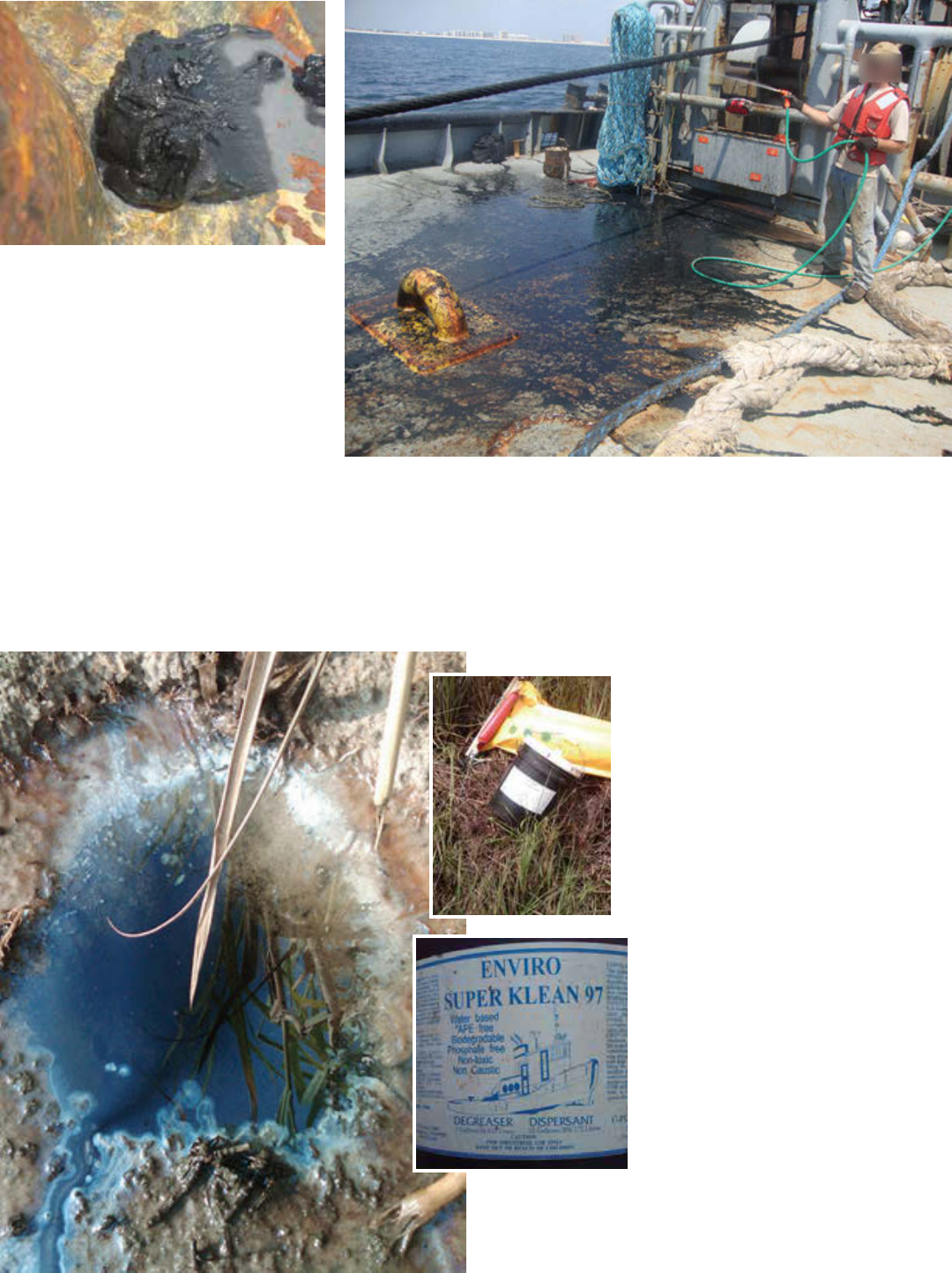
Boat captain “RB” staged off
Destin, Florida. On August 24,
2010, Capt. RB reported oily debris
in the anchor chain when he
weighed anchor 0.6 nautical miles
east of the Perdido Pass sea buoy.
He cleaned his boat deck without
protective gear. Capt. RB died
September 20, 2014, of cancer. Recommendations: Prohibit dispersants and other products that act
to sink oil; Require a worker safety program for spill contractors operated by a licensed professional
program as part of preauthorization plans that does not put the spiller in charge of worker health.
Left: Container of Enviro Super
Klean 97 and evidence of use
found in Bayou Caddy marsh in
Hancock County, Mississippi, on
August 23, 2010. This product
is not on the NCP Product
Schedule of eligible products
for use during oil spill response.
Recommendations: Use
Products on the Schedule for
their intended purpose; require
updated screening tests and
environmental monitoring tests
to determine if product worked
as intended for any product use
on any size spill.
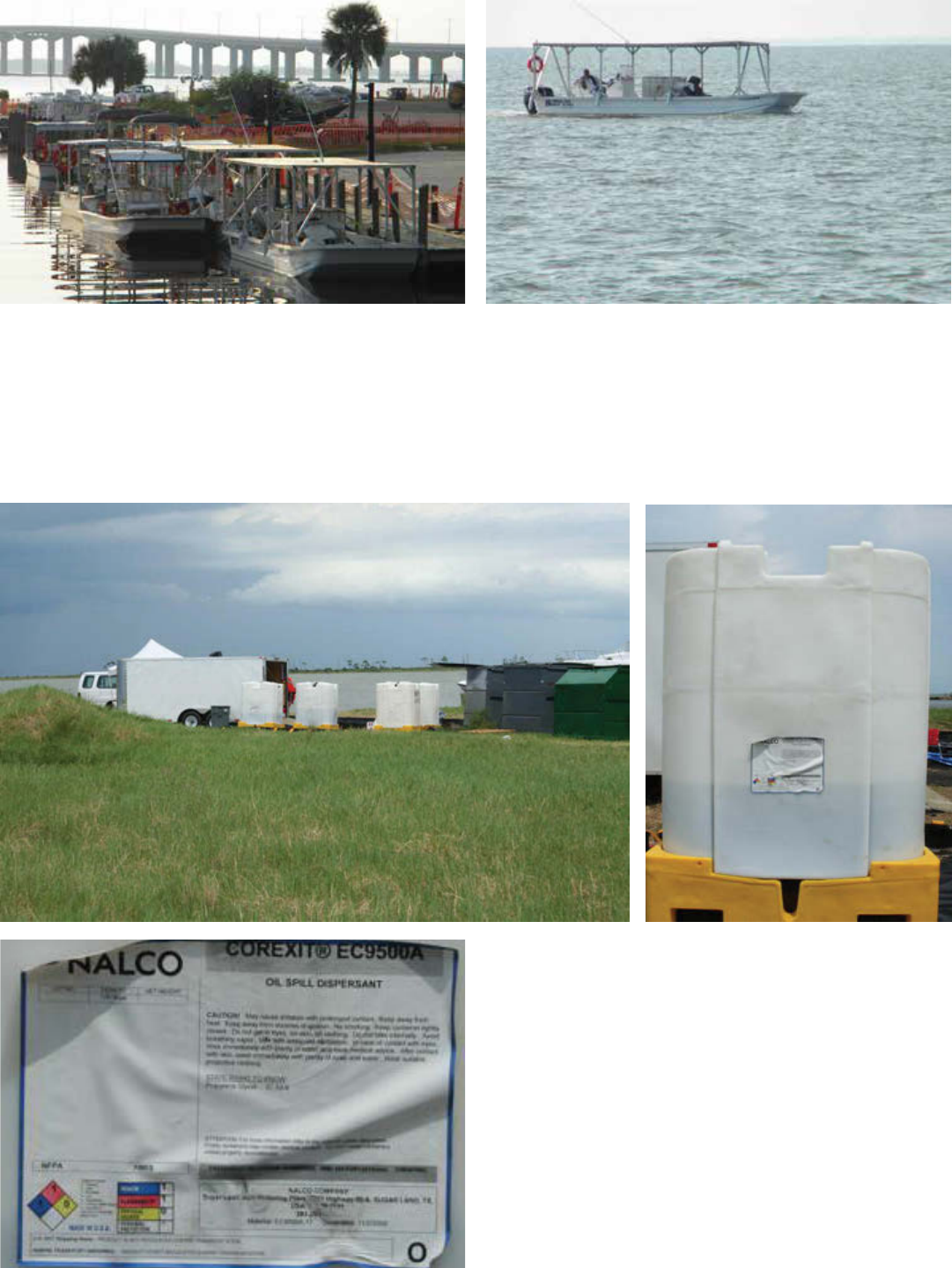
Above: Corexit dispersants were used in coastal areas long after the well was capped on July 15, 2010,
contrary to Coast Guard statements that spraying had stopped and that dispersants were not used within
3 miles of the coast or water depths of less than 10 meters. Shirley and Don Tillman witnessed dispersant
spraying in coastal seas near Pass Christian, Mississippi, on August 10, 2010, according to their afdavit
led with Government Accountability Project. Shallow water boats used to spray dispersants, loaded
into the white totes on the boats, moored in a make-shift staging area near their home.
Above: Fisherman Chris Bryant documented a
Corexit 9500A staging area on August 21, 2010.
Deadly dispersants were staged in neighborhoods
with no public notication and no warnings of
health risks from exposure. Recommendations:
Make plans to protect worker health and public
health required in Area Contingency Plans along
with already required plans to protect wildlife;
Require daily public notication of product use,
location, and quantity.
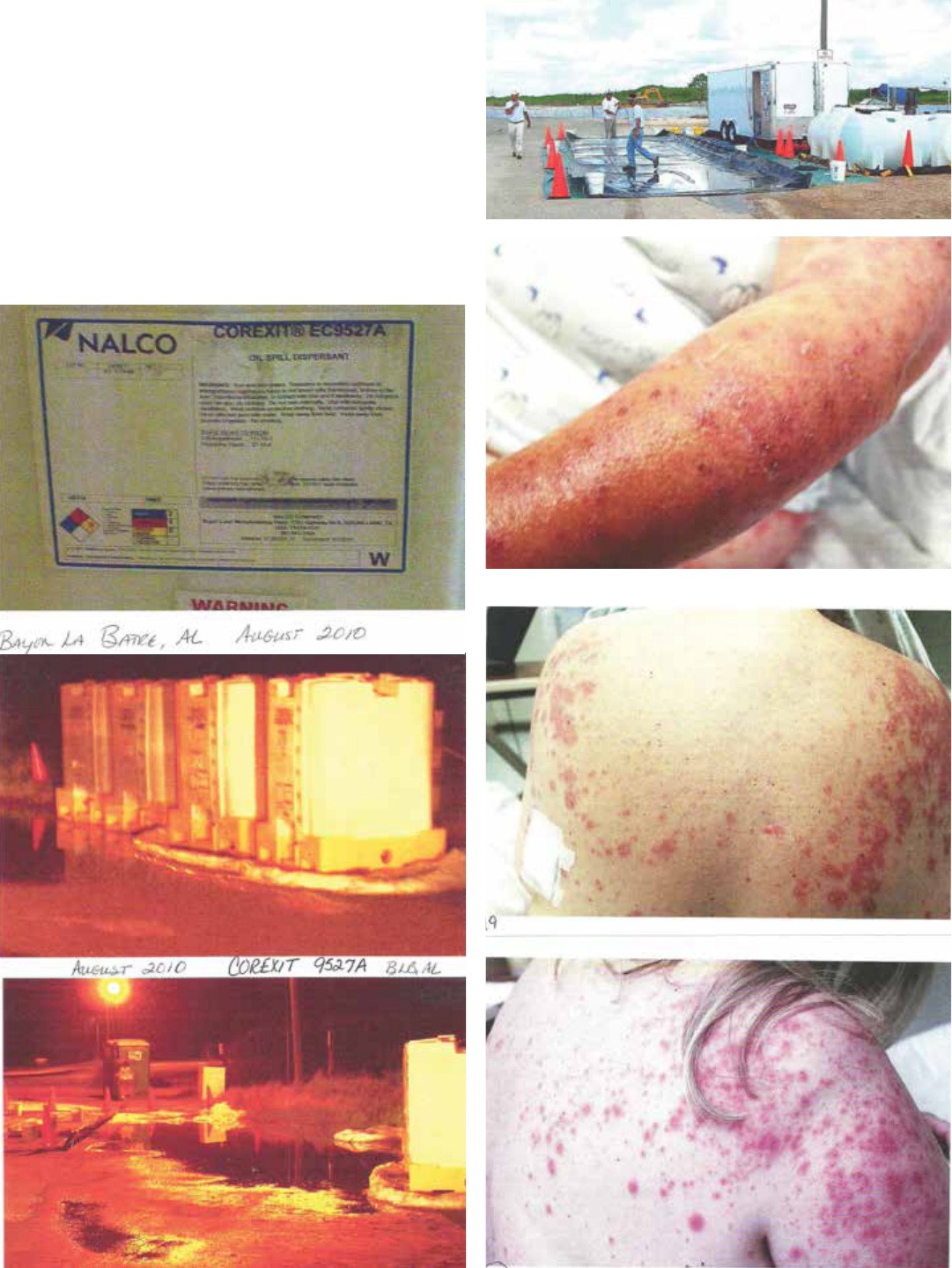
In August 2010, Lori Bosarge and other residents
of Coden, Alabama, were told by ofcials that
the oil was gone and dispersants were no longer
being used. Bosarge drove to a nearby bayou to
investigate a new decontamination staging area.
When she left her car, she was exposed to Corexit
9527A, being used to spray down boats and
carried by the sea breeze. Within two hours of
exposure, her skin broke out in blisters, a severe
rash, and a chemical burn. She nearly died and
has been severely ill ever since.

Above: According to a July 2010 scientic consensus statement prepared by Dr. Susan Shaw with the
Marine Environmental Research Institute, “The properties that facilitate the movement of dispersants
through oil also make it easier for them to move through cell walls, skin barriers, and membranes that
protect vital organs, underlying layers of skin, the surfaces of eyes, mouths, and other structures.” Oil-
dispersant combined uoresce: Researcher Rip Kirby used black light to show that dispersant facilitated
movement of oil across a skin barrier into a body and deep beneath the sand surface.
Medical literature reviews identify characteristic symptoms of
oil exposure, including breathing problems, skin rashes and
lesions, blood disorders, central nervous system problems, and
hair loss, such as found in people along the Gulf Coast after the
BP Deepwater Horizon disaster and in Kalamazoo/Battle Creek,
Michigan, after the Enbridge tar sands spill in 2010. Dispersants
and other petrochemical-based solvents such as diluents used to
thin tar sands oil target the same organs of the body as the oil.
Children are especially vulnerable to oil and solvent exposure.
Recommendations: Use non-toxic products that do no more
harm during oil spill response; Require a program to protect and
educate the public about the health risks, early onset symptoms of
toxic poisoning, and how to seek medical assistance.
LouisianaLouisiana Battle Creek, MI
Alabama
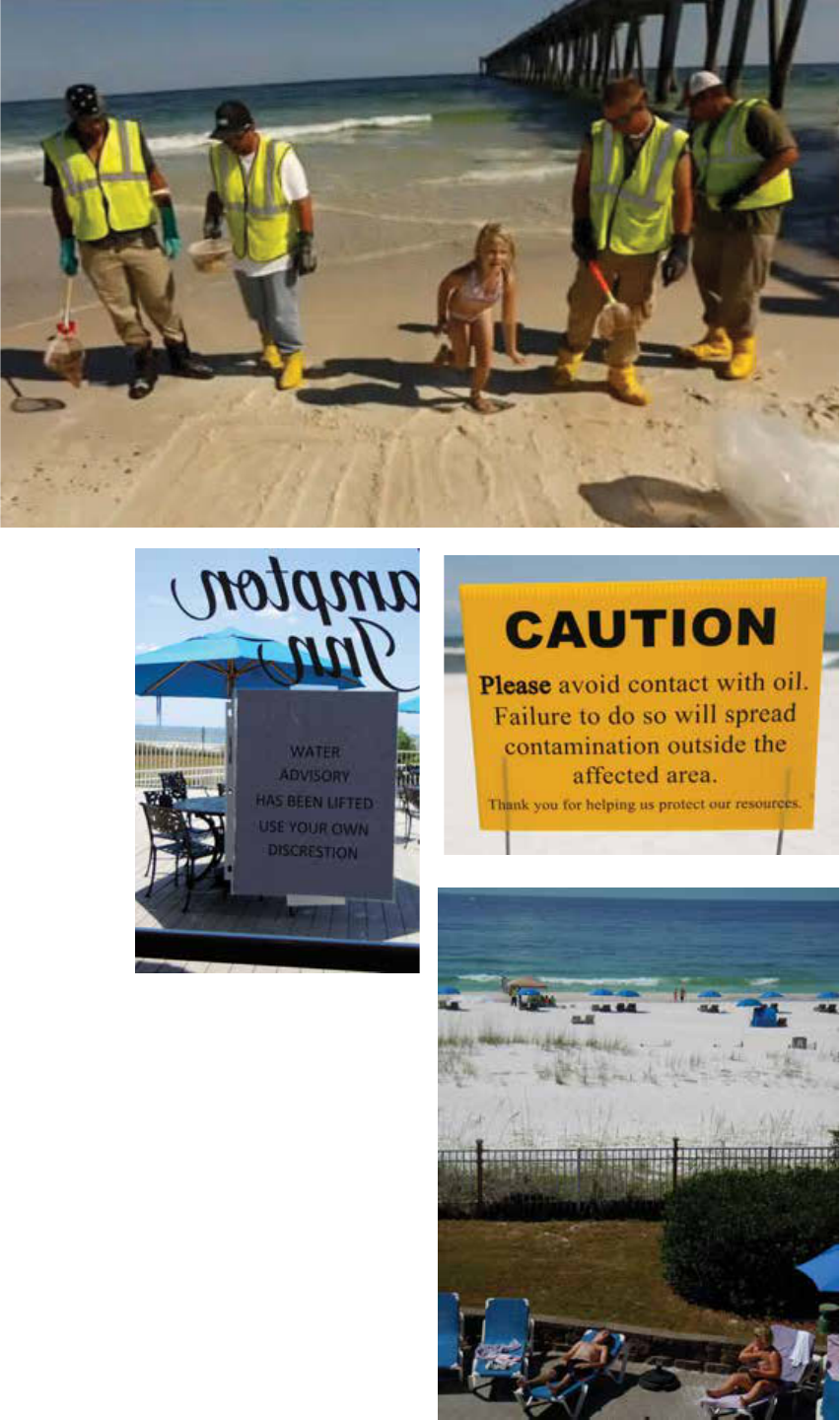
Scientists found oil and oil-dispersant droplets aerosolized
daily and became part of the Gulf hydrologic cycle. Gulf
coast residents and media documented BP’s oily sheen on the
leading edges of their airplanes after ying over the Gulf, in
puddles on door stoops after rain, on hotel beach furniture,
and in outdoor swimming pools, shallow bayous, bays, and
coastal seas. Beach workers taped their boot tops to their pants’
legs to avoid contact with oil, while public advisories failed to
communicate the true nature of the health risk.
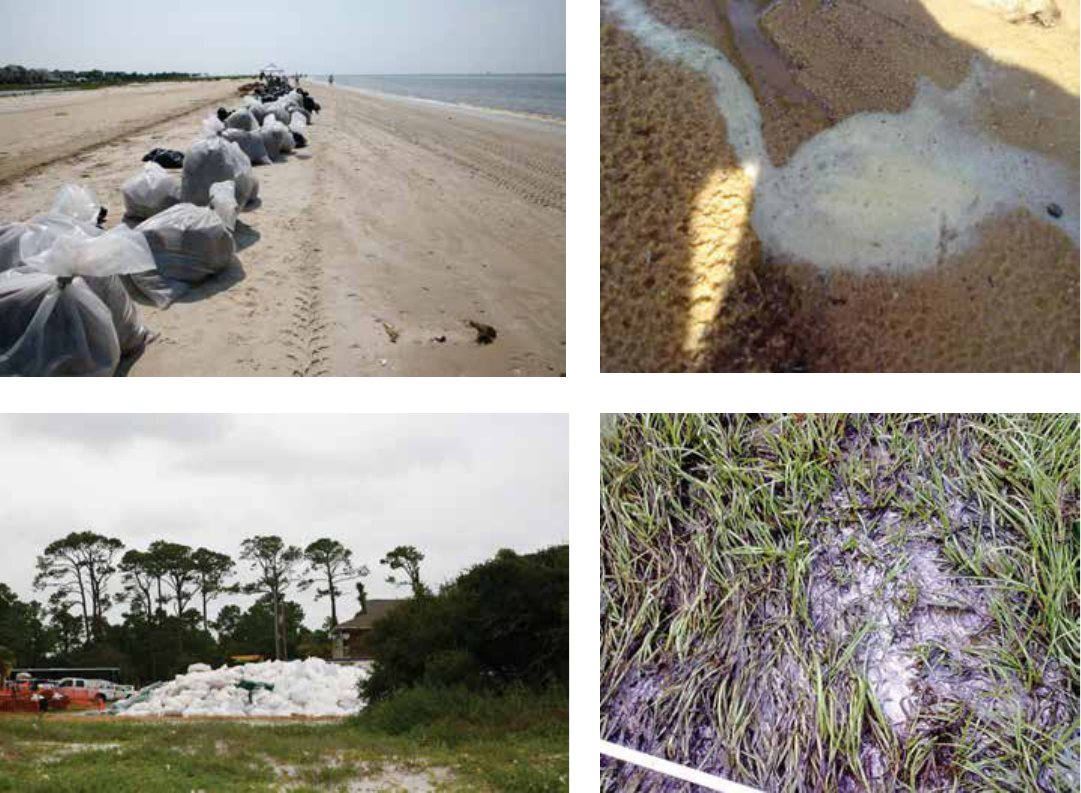
Oil and oily debris were disposed of in public landlls, especially in economically-disadvantaged
communities. Landowners adjacent to landlls reported oily substances seeping from the landll onto
private property. Analytical chemical testing in Mobile, Alabama linked the leeched substances to BP’s
oil spill, although the ndings have been contested.
Recommendations: Require better risk communication to the public and health care professionals as
part of contingency plans and preauthorization plans; For the purpose of the NCP, treat and dispose
of recovered oil and oil-contaminated material as hazardous wastes and do not dispose in public
landlls.
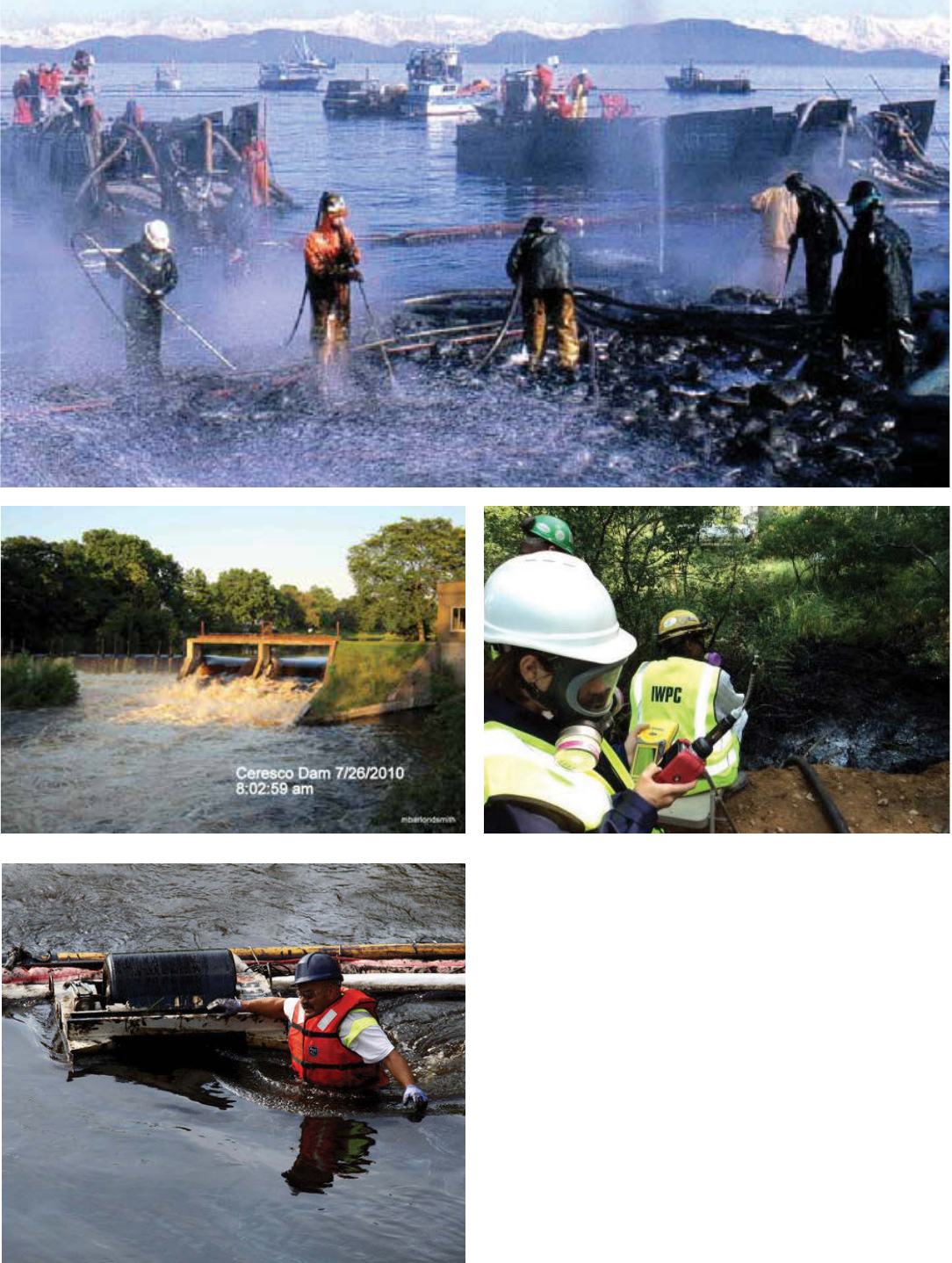
Top: Exxon Valdez oil spill workers used high-
pressure wash to dislodge oil from beaches and, in
the process, aerosolized toxic polycyclic aromatic
hydrocarbons (PAHs). Middle and left: Similarly,
when tar sands oil owed over the Ceresco Dam
and down the Kalamazoo River in Michigan, PAHs
were also aerosolized. Workers and people living
near Ceresco Dam reported respiratory problems,
headaches and other central nervous system
problems, and more. Contract workers were not
provided with respiratory protection and residents
were not warned of health risks. However,
government employees in Michigan were provided
with respirators.
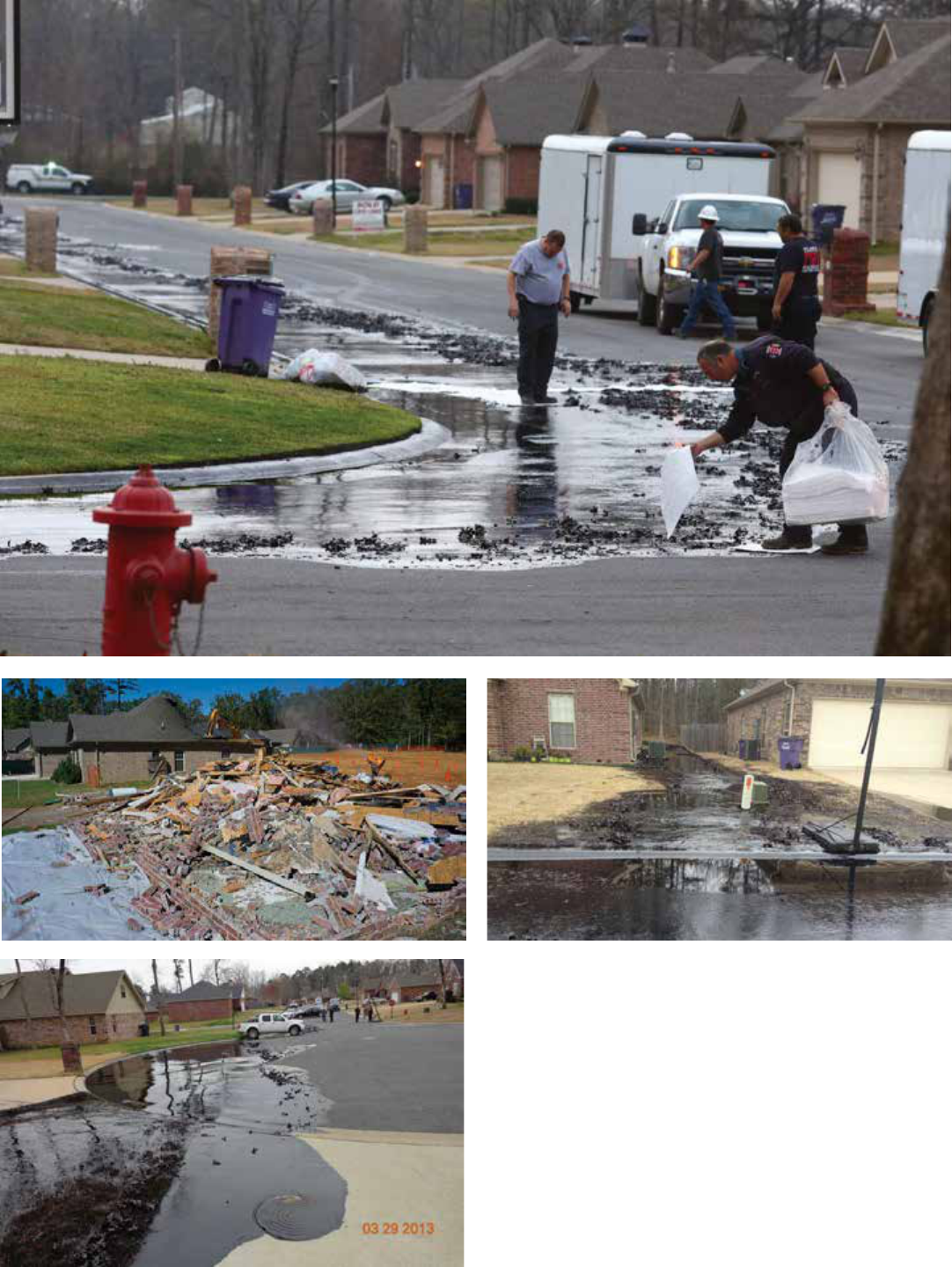
Tar sands oil spilled from ExxonMobil’s ruptured
Pegasus pipeline in Mayower, Arkansas, owed
through neighborhoods, down streets, and into
storm drains. Exxon is purchasing property in the
entire Northwoods’ neighborhood where homes
have not been cleared for re-entry. Home furniture,
clothes, carpet, wood, books, photo albums, and
more, absorb and emit toxic PAHs.

Bakken crude oil and other oil produced by
hydrologic fracturing activities is extremely
volatile and concentrated in the Volatile Organic
Compounds (VOCs) known to cause health
problems in living organisms, including humans.
This type of oil also dissolves toxic components
to signicant levels readily in water. The January
2015 Bakken oil spill into the Yellowstone
River, impaired the water supply for the entire
community of Glendive, Montana (popn.5,000).
Cleanup stopped because there was no way to
deal with oil under ice. Shipments of crude-by-
rail are increasing exponentially in rail cars that
are known to be unsafe for this type of oil. Fiery
derailments and rail car explosions from 2013 in Lac Megantic and to, most recently, those near Mount
Carbon in West Virginia and near Galena in Illinois have collectively resulted in lives lost, homes and
businesses destroyed, and evacuations. Yet there is no worst-case scenario planning for such events,
especially in large urban areas. Recommendations: Require worst-case scenario planning for spills in
freshwater, including evacuation, housing, and alternative drinking water supplies; do not allow oil to
be transported without a viable oil spill contingency plan.
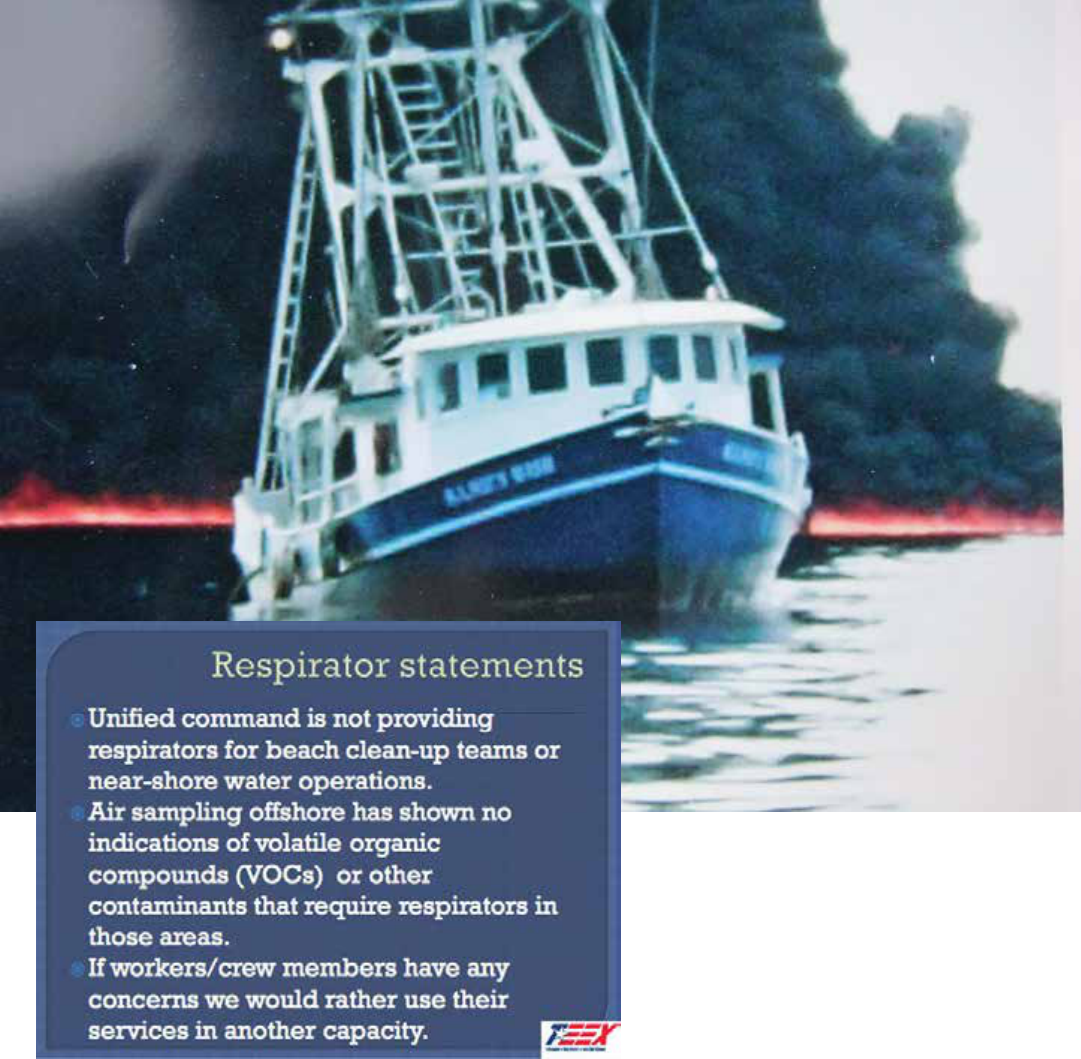
On May 26, 2010, seven shermen on in-situ burn teams for the BP Deepwater Horizon disaster were
taken by Medevac life-ights from their shing boats directly to West Jefferson Medical Center in
Jefferson Parish, Louisiana. Burning oil concentrates toxic PAHs; rst responders typically wear a full-
face positive-pressure self-contained breathing apparatus and protective suit for ghting oil res. BP
did not provide respirators to in-situ burn teams, according to an afdavit led by one of the shermen;
respirators were also not provided to near-shore or beach workers. According to one BP safety trainer,
the trainers were told to tell workers, if they wanted to use respirators, their jobs would be terminated.
Federal ofcials responsible for worker safety concluded the primary threat to workers was heat
stress. Five years later, many of the former workers are still sick, some to the point of being disabled.
Recommendation: Require a worker safety program responsive to evidence of harm, rather than
standards-based enforcement, as workers get sick below the levels thought to be safe.

1
SOVEREIGN COOPERATION:
THE MAKAH TRIBE’S OFFICE OF MARINE AFFAIRS
AND THE FUNDAMENTALS OF PARTNERING WITH UNCLE SAM
MICHAEL P. TIERNEY
HISTORICAL BACKGROUND
When Washington Territory was organized in 1853, President Franklin Pierce appointed
a controversial young political supporter named Isaac Stevens to serve as both the Governor of
the Territory and Superintendent of Indian Affairs. When he arrived, Stevens was anxious to
acquire federal title to as many Native American held lands as possible.
1
On the Territory’s
Olympic Peninsula, for example, Stevens set aside three separate areas on which to relocate each
of the Makah, Skokomish, and Quinault Tribes, whose collective territories encompassed
hundreds of thousands of acres. Stevens sought to use federal treaties as the vehicle for these
“legal” transactions.
2
On January 31, 1855, Governor Stevens and forty two “chiefs, headmen, and delegates”
from the Makah Tribe signed the seminal Treaty of Neah Bay.
3
In exchange for thirty thousand
dollars and the right to fish, whale, and seal on usual and accustomed grounds (“U and A”), the
Makah ceded more than 300,000 acres of timberland to the United States and further agreed “to
remove to and settle upon” the land reserved by the Governor.
4
Today, a century and a half later,
through legal ingenuity and sheer pluck, the Makah have seized upon the Treaty’s grant of the
perpetual right to harvest marine resources and made it an aspect of enduring importance to the
Tribe in charting its role in the modern world.
THE ISSUE AT HAND
Historically, native tribal governments have always been at the mercy of the federal
government in recognizing their collective rights and interests.
5
In recent years, however, the
federal government has sought to engage federally recognized tribes in government-to-
government consultation in order to ensure that their rights and interests are adequately
represented at the federal level. The federal government has attempted to solicit consultation
through the promulgation of a number of executive orders, policy statements, and agency
instructions.
6
Marshaling and making use of this authority, however, has proved very difficult for
federally recognized tribes. Such difficulty stems in large part from a lack of clearly delineated
1
History of Rights and U & A, http://www.pgst.nsn.us/tribal-government/natural-resources/history-of-
rights-and-u-and-a; see also Treaty of Neah Bay, U.S.-Makah, Jan. 31, 1855, 12 Stat. 939, available at
http://digital.library.okstate.edu/kappler/vol2/treaties/mak0682.htm.
2
History of Rights and U & A, supra note 1.
3
Treaty of Neah Bay, supra note 1.
4
Id. (This parcel is described fully within Article 2 of the Treaty).
5
See, e.g., Johnson v. M’Intosh, 21 U.S. 543 (1823); Worcester v. Georgia, 31 U.S. 515 (1832); Larry
Sager, Rediscovering America: Recognizing the Sovereignty of Native American Indian Nations, 76 U.
DET. MERCY L. REV. 745, 759-67 (1999) (recognizing European and American expansion came the ands
of mass genocide and governmentally ordered diaspora).
6
For URL links to these sources of authority, see infra notes 20-23.

2
communication channels and organizational structures within the tribes. It further stems from a
pervasive ignorance of both federal law and, on the part of the federal government, tribal custom
and social perspective. The Alaskan Inter-Tribal Council (AI-TC), for example, the purported
advocate for 229 federally recognized tribes, has experienced great difficulty in engaging with
federal agencies for the reasons just mentioned. Regrettably, much of the hoped for collaboration
between the AI-TC and federal government has dissolved into mere vitriolic accusations of
federally ordained censorship and genocide.
In Washington State, however, in April 2013, the United States Coast Guard (USCG) and
Makah Tribal Council (MTC), the Makah Tribe’s governing body, signed a Memorandum of
Agreement to reaffirm and build upon the federal government’s fiduciary responsibility to the
Tribe and its maritime resources.
7
The enumerated goals of the Makah Tribe and USCG’s
partnership include the enhancement of government-to-government consultation, boosting the
leveraging of oil spill response resources within each party’s respective authorities, and the
improvement of collective all-hazards prevention and response
8
posture within the Tribe’s U and
A. According to Rear Admiral Keith A. Taylor of USCG District 13, this partnership could
potentially serve as “a model for cooperation between Coast Guard leaders and other sovereign
Tribal authorities.”
9
This research paper attempts to analyze both the process leading up to and, then, the
ultimate utility of this partnership between the Makah and USCG. It has the further goal of
providing a possible template for Alaska Native and other tribal governments arranging
cooperation with federal agencies regarding water pollution issues. This paper looks to the
recently signed Memorandum of Agreement in order to identify the federal authority that enables
this and other potential partnerships with federal agencies. It focuses in particular on the creation
of the Makah Tribe’s Office of Marine Affairs as the vehicle through which this authority is put
to work, where communication and coordination efforts are directed, and that which generally
leads to material federal recognition of tribal sovereignty.
RESEARCH & ANALYSIS
To begin, the establishment of a meaningful government-to-government consultation
policy is the first step in fostering a fruitful dialogue (and hopefully a resulting partnership)
between the federal government and a federally recognized tribe.
10
Specifically, this policy
encourages parties both to listen to and speak with one another. It also forces each to think
carefully about what one wants to convey precisely to the other side. For example, a guiding
principle of the Makah Tribe’s consultation policy has been the acknowledgement of inherent
7
For an overview of the history and modern interpretation of the Federal Trust Doctrine, see generally
James Van Ness, Esq., The Federal Trust Doctrine—Realizing Chief Justice Marshall’s Vision, U.S. D
EP’T
OF
INTERIOR, http://www.doi.gov/pmb/cadr/programs/native/gtgworkshop/The-Federal-Trust-Doctrine.cfm
(last visited November 23, 2013).
8
“All-hazards prevention and response” is the idea that instead of being able to respond to only certain
hazards, a party is in a position to address anything a situation may throw at it.
9
CG, Makah Tribe Sign Memorandum of Agreement, MILITARY.COM, http://www.military.com/daily-
news/2013/04/13/cg-makah-tribe-sign-memorandum-of-agreement.html (last visited November 23, 2013).
10
See Chad Bowechop, Interagency Interaction: Makah Tribal Council’s Office of Marine Affairs, 52,
http://www.uscg.mil/proceedings/spring2010/articles/
51_Bowechop_MakahTribalCouncilOfficeOfficeOfMarineAffairs.pdf.

3
tribal sovereign powers over internal matters and the right to self-determination concerning the
protection of tribal trust resources.
11
Once each side understands where the other is coming from,
the dialogue generated as a result of this policy allows, potentially, the parties to recognize
mutually shared interests and any commonly held principles. Hopefully, this dialogue further
leads to the formation of a useful partnership in which these mutually shared interests and
principles are collaboratively advanced.
The Makah have suggested that an ideal partnership encompasses a shared understanding
of the federal government’s fiduciary responsibility to a tribe’s resources and also to the tribe’s
further desire to preserve historical, cultural, subsistent, and economic ties to them.
12
This
understanding, then, makes room for growth, perhaps in how a tribe can organize to more
meaningfully contribute to federal and state actions that affect tribal interest. The Makah, for
example, did this through the creation of the Office of Marine Affairs and now actively assist the
USCG in the protection of their ancestral fishing and whaling grounds. (More on that later.)
In the end, it is only through these partnerships that tribes like the Makah and others are
able to effectively voice to federal authorities what is important to them, thereby ensuring that
these interests will receive at least federal attention and then hopefully federal enforcement. It is
therefore very advisable for a tribal government to do everything it can to form these
partnerships, even if, as with AI-TC, the formation process initially proves difficult and
uncomfortable.
An example of what’s being talked about: the Strait of Juan de Fuca is among the busiest
bodies of water in the United States with hundreds of commercial vessels like oil tankers passing
through each year. On average, there is at least one loaded tanker entering the Strait every day.
13
The Makah Tribe’s U and A lies at the junction of the Strait and the Pacific Ocean. As such, the
risk of an oil spill impacting the Makah’s treaty protected waters is very real. In a letter
14
dated
February 1, 2012, the MTC, through the Office of Marine Affairs, petitioned both the
Washington State Department of Ecology and USCG District 13 to “engage in joint government-
to-government consultation” to “ensure tribal treaty interests are adequately represented in
federal and state oil pollution regulatory efforts.” In short, the MTC wanted to be a part of any
federal or state decision that would impact the treaty protected area. The letter reminded federal
and state authorities that the “MTC has invested considerable time and effort over the years
contributing to federal and state oil pollution initiatives[, but] need[s] to ensure that [their]
sovereign status as an Indian Tribal Government is properly acknowledged and included in these
actions that impact our treaty interest.” Through this appeal and after years of back and forth
consultation, the MTC has worked with state and federal agents to develop a comprehensive spill
response plan, integrating federal, tribal, and state efforts that “reflects… respective sovereign
interests…without violating the regulatory independence of the respective agencies.” Most
importantly, during this process, the MTC remained “open to…suggestions” regarding the
development of this emergency response plan.
11
Id. at 51-2.
12
See id.
13
Tanker Exclusion Zone Clarification, CHAMBER OF SHIPPING,
http://www.cosbc.ca/index.php?option=com_content&view=article&id=475%3Atanker-exclusion-zone-
clarification&catid=47%3Abc-ports&Itemid=86 (last visited November, 27, 2013).
14
The letter is available at: http://www.ecy.wa.gov/programs/spills/rules/MTC-CG%20D13-
WDOE%20Consultation%202-12.pdf.

4
Another example:
15
in Washington state, the shellfish industry accounts for more than
$270 million in direct sales. Over the years, however, the average upper-ocean pH has decreased
by about 0.1 units, from about 8.2 to 8.1. This drop in pH corresponds to an increase in acidity of
about 30% and is tied in part to increasing levels of carbon dioxide in the atmosphere reacting
with seawater. That increase in acidity is damaging to shellfish, coral reefs, and other marine
animals. Much of the state’s shellfishing takes place on the Makah Tribe’s U and A and provides
jobs to many tribal members. It is therefore of great interest to the tribe to protect this economic
resource. Fast forward to the state’s decision to investigate solutions in the increase in acidity
and you will find that the MTC, after following the same petitioning and consultation process
described above, occupies a permanent seat on the Governor’s Blue Ribbon Panel. There, they
provide research staffing, scientific observation, and other valuable insight to develop potential
solutions to this potentially devastating problem.
As suggested above, the partnership between the Makah Tribe and USCG could
potentially serve as a model for cooperation between Coast Guard leaders and other sovereign
Tribal authorities. It is important then to recognize how the MTC went about engaging federal
agencies because the legal tactics the Council ultimately employed could arguably be just as
effective for other tribes looking to replicate the same results. This is true regardless of whether
or not a tribe possesses treaty rights. Significantly, a treaty is not needed to begin this overall
process. This will be discussed more below.
For the Makah, the 1855 Treaty of Neah Bay has served as an important document in
developing the relationship the Tribe currently shares with the United States.
16
This lies in how
the MTC has interpreted the Treaty’s original grant of a perpetual right to harvest marine
resources from the U and A. The MTC has argued that this grant creates a unique federal trust
responsibility over the Tribe’s traditional fishing and whaling grounds. It is because of this trust
responsibility, the Makah say, that the federal government must engage with the Tribe and work
with them when any agency action will affect this precious natural resource. As a result, and as
described above, in recent years, the MTC has begun to actively solicit federal agencies to
engage in government-to-government consultation in order to ensure that tribal interests are
adequately represented at federal and state levels.
17
These solicited agencies include the United
States Coast Guard, the Environmental Protection Agency (EPA), National Oceanic and
Atmospheric Administration, U.S. Navy and, on the state level, the Washington State
Department of Ecology.
18
As indicated, a treaty is not necessary for a federally recognized tribe to achieve
essentially the same thing as the Makah Tribe. This is because the federal government already
15
Acidic Ocean Hits Pacific Northwest, Eric Niiler, http://cen.acs.org/articles/91/i12/Acidic-Ocean-Hits-
Pacific-Northwest.html (last visited November 27, 2013).
16
See id.; see also Memorandum of Agreement Between United States Coast Guards and The Makah
Indian Tribe Regarding Interoperability and Cooperation, USCG-Makah, Apr. 12, 2013, available at
http://www.psp.wa.gov/downloads/OILSPILL/oilspill%20update%207-7-13/Signed%20USCG-
MTC%20MOA.pdf.
17
Bowechop, supra note 10, at 51; Telephone Interview with Eric Bullock, Commander, USCG District
Thirteen (Oct. 2, 2013).
18
Makah Tribal Council Office of Marine Affairs Presentation,
http://www.env.gov.bc.ca/eemp/symposium/pdf/psp_makah.pdf [hereinafter OMA P
RESENTATION].

5
owes, at least in theory, a fiduciary duty to federally recognized tribes under the Federal Trust
Doctrine. An agency instruction
19
issued by the Department of Defense provides that:
Under the federal trust doctrine, the United States–and individual agencies of the
federal government–owe a fiduciary duty to Indian tribes…Where agency actions
may affect Indian lands or off-reservation treaty rights, the trust duty includes a
substantive duty to protect these lands and treaty rights “to the fullest extent
possible.”
Essentially, the MTC cites the 1855 Treaty as an affirmation of, if not in addition to, an already
existing fiduciary duty owed by the federal government. The same principles and legal devices
which brought federal agencies to the Makah’s table can arguably be utilized by another
federally recognized tribe to achieve essentially the same thing.
OK, SO HOW IS THIS DONE…EXACTLY?
Whether created through treaty rights or by the federal government, the fiduciary duty
that the federal government owes to a federally recognized tribe entails a mandate to protect
tribal resources “to the fullest extent possible.” This duty, as it has for the Makah, allows tribes
to appeal to federal agencies to engage in government-to-government consultation and ensure
that this duty is carried out.
More to the point, there is already ample explicit federal authority directing federal
agencies to consult with federally recognized tribes. These sources of federal authority, as
reflected in the Makah and USCG’s Memorandum of Agreement, include, Executive Order
13175,
20
the Department of Homeland Security Tribal Consultation Policy,
21
the American
Indian and Alaska Native Policy and Department of Defense Instruction Number 4710.02: DoD
Interactions with Federally-Recognized Tribes,
22
and, more specifically, for the purposes of this
paper at least, Section 706 of the U.S. Coast Guard Authorization Act of 2010.
23
Federal agencies, however, will not engage with just anyone; they will only enter into
government-to-government consultation with officially designated tribal representatives. This is
not, as some claim, because of some nefarious intention or as an act of overt censorship, but to
make sure that, as with any legal designation, that the person who claims to speak on behalf of a
larger organization is actually the one who has been officially designated to do so. Given how
much wrong has been done to native peoples at the hands of the federal government, it should
19
Department of Defense, the American Indian and Alaska Native Policy and Department of Defense
Instruction Number 4710.02: DoD Interactions with Federally-Recognized Tribes; see infra note 19 for a
URL to access this document.
20
The Executive Order is available at: http://www.gpo.gov/fdsys/pkg/WCPD-2000-11-13/pdf/WCPD-2000-
11-13-Pg2806-2.pdf.
21
The Consultation Policy is available at:
https://www.dhs.gov/sites/default/files/publications/DHS%20Tribal%20Consulation%20Policy%20Final%2
0PDF.pdf.
22
The Instruction is available at: http://www.denix.osd.mil/na/upload/DoD-AI-AN-Policy-Booklet.pdf.
23
The Authorization Act is available at: http://www.gpo.gov/fdsys/pkg/PLAW-111publ281/pdf/PLAW-
111publ281.pdf.

6
come as a surprise to no one that when the federal government wants to do right by native
peoples and work with them, it wants to be speaking to the correct person when it does so.
Thus the first step is designating one person, or perhaps several, if a tribe so chooses,
who can legally speak on behalf of the tribe. An official Power of Attorney form exists on the
Coast Guard website for just this purpose. The same would not be legally dissimilar for use with
other federal agencies. After designation, a tribe would then solicit the relevant agency, as the
Makah have in the examples above, to engage in government-to-government consultation.
24
But after designation and consultation, how would a federally recognized tribe achieve
what the Makah have (“actively assist the USCG in the protection of their ancestral fishing and
whaling grounds”), and is this really possible without a treaty? As discussed, the MTC makes
use of the 1855 Treaty of Neah Bay as a reinforcement of the above cited authority rather than a
foundational requirement of it.
25
Proof of this can be found in the fact that the enabling authority
of the April 2013 Memorandum of Agreement does not include the 1855 Treaty, but refers to it
only in the Preamble as providing a “foundation of the Trust responsibility.”
26
And as noted, this
Trust responsibility already exists under the Federal Trust Doctrine. Really, the enabling
authority actually cited in the Memorandum lays out the true legal capacity for the Makah’s
relationship with the USCG, and in the following language.
Executive Order 13175 mandates, “in order to establish regular and meaningful
consultation and collaboration with tribal officials in the development of Federal policies that
have tribal implications, to strengthen the United States government-to-government relationships
with Indian tribes, and to reduce the imposition of unfunded mandates,” federal agencies must
“respect Indian tribal self-government and sovereignty...and strive to meet the responsibilities
that arise from the unique legal relationship between the Federal Government and Indian tribal
governments.” Moreover, when it comes to “formulat[ing] and implement[ing] policies that have
tribal implications, [these] agencies shall...encourage Indian tribes to develop their own policies
to achieve program objectives;...where possible, defer to Indian tribes to establish
standards;...and in determining whether to establish Federal standards, consult with tribal
officials as to the need for Federal standards and any alternatives that would limit the scope of
Federal standards or otherwise preserve the prerogatives and authority of Indian tribes.”
The Department of Homeland Security Tribal Consultation Policy states that the “United
States Government has a unique legal and political relationship with American Indian and
24
This is not just legal theory. Currently, the USCG and EPA, on behalf of the Alaska Regional Response
Team (ARRT), are leading a consultation effort on updates to the 1989 Oil Dispersant Guidelines. Utilizing
this official designation process, as of this writing, the ARRT has invited over 75 tribes to formal
consultation at five hub meetings in King Salmon, Anchorage, Kodiak, Valdez, and Dutch Harbor.
Locations selected are “hub” locations with each area Subarea Response Plan affected by the proposed
revision to the guidelines. Meetings include morning consultation meetings with tribal governments,
followed by afternoon public/open participation meetings to discuss the proposed plan. An additional
government-to-ANCSA corporation meeting is scheduled for Anchorage on December 6th, 2013 as well
as a tribal government “make-up” session in Anchorage on December 5th, 2013. Over 80 ANCSA
corporations were invited to consult in addition to the tribal governments. The above is referenced to show
the good faith efforts and collaborative opportunities available for tribes and the federal government to
work together on mutually shared interests.
25
See Bowechop, supra note 10, at 51.
26
See Memorandum of Agreement Between United States Coast Guards and The Makah Indian Tribe
Regarding Interoperability and Cooperation, supra note 16.

7
Alaska Native Tribal Governments as set forth in the Constitution of the United States.” The
Policy goes on to state that the “United States recognizes the right of Federally-recognized
Indian Tribes to self-government [and to] exercise inherent sovereign powers over their members
and territories.” The Policy concludes by laying the groundwork for effective consultation with
tribal governments, noting in relevant part, that consultation “will be flexible in recognition of
the uniqueness of each Indian Tribe and the wide range of Federal actions that may warrant” it.
In peacetime, the Coast Guard operates under the Department of Homeland Security.
27
In
line with the new initiatives captioned in the DHS Policy, Section 706 of the U.S. Coast Guard
Authorization Act of 2010 authorizes the Coast Guard to “enter into memoranda of agreement
and associated protocols with Indian tribal governments in order to establish cooperative
arrangements for oil pollution prevention, preparedness, and response.” Section 706 (c) and
provides:
(c) COOPERATIVE ARRANGEMENTS.—...Such memoranda may be entered into prior to the
development of the tribal consultation and coordination policy to provide Indian tribes grant and
contract assistance. Such memoranda of agreement and associated
protocols wi
th Indian tribal
governments may include [specific examples of types of agreements.]
Thus, this would be the primary organizing authority a federally recognized tribe would use
should it choose to officially partner with the USCG and other federal agencies. Moreover, as
indicated by the language, such partnerships are to be flexible given the uniqueness and
particular circumstances of each tribe.
But while theoretically any federally recognized tribe can make use of the above cited
authority and formally partner with a federal agency, one may wonder how the Makah Tribe was
appointed to the Region 10 Response Team and to the Northwest Area Committee as a voting
member. After all, these events ensure that the Tribe has even more of a direct say in decisions
that affect its resources. Again, this was a result of demonstrating to the federal government the
capacity and willingness to work together and providing it with a centralized place in which to
channel all consultation and communication efforts (hint: ‘an official designation’).
The Makah achieved this through the creation of the Tribe’s Office of Marine Affairs
(“OMA”), an act that greatly enhanced the Tribe’s credibility in the eyes of the federal
government because it physically demonstrated its the organizational capacity and willingness to
collaborate with the federal government and commit time and money to learning how best to
complement federally orchestrated actions which affect tribal resources.
Perhaps unfortunately, this process can best be related through story. Several years ago,
the EPA provided funding to the MTC in recognition of its history with oil spills, the volume of
vessel traffic in the treaty area, the sensitivity of the marine environment, and the desire to
protect its cultural, subsistence, and economic connection to the U and A.
28
With that funding,
the MTC created the OMA with the two goals of safeguarding treaty resources and advancing
tribal interests.
29
From the beginning, the MTC made it a goal that in all interactions with other
governments that the OMA was to apply the best scientific and cultural information in the
development of oil spill prevention, preparedness, response and restoration policies.
30
27
See Missions, USCG, http://www.uscg.mil/top/missions/ (last visited October 4, 2013).
28
See Bowechop, supra note 10, at 51.
29
OMA PRESENTATION, supra note 18.
30
Id.

8
In order to demonstrate this commitment to meaningful cooperation and the building of
government-to-government partnerships, the MTC, through the OMA, participated in the 2007
oil pollution summit with Washington State Governor Christine Gregoire and USCG District 13
Rear Admiral Richard Houck. The resulting Memorandum of Agreement on oil pollution
prevention and response between the USCG and the State of Washington identified mutual areas
of authorities and interests shared between the federal and state government, in effect
strengthening a working relationship to advance oil spill prevention, preparedness and response
activities.
31
From this, the MTC and other Northwest Treaty tribes were able to learn how to
improve interaction with the federal and state governments.
32
By breaking down how the two
parties of the MOA communicated within the document, effectively in an almost “intra-
governmental parlance,” the MTC was able to appropriate this language and better convey its
desire to formalize with the Coast Guard its intent to acquire the necessary training, equipment,
and support that would enable the MTC to obtain a basic ordering agreement status as an “all
hazards responder”
33
and lay the foundation for a similar Memorandum of Agreement.
34
At the time this desire was conveyed, the MTC knew that a Memorandum of Agreement
could further serve as a clarifying document addressing the government-to-government
relationship with the 13th Coast Guard District until a formal coordination and consultation
policy with Indian tribal governments was established.
35
It could be argued that the existence of
the OMA made the signing of the Memorandum of Agreement more likely.
Fast forward to the actual signing and one will see that the Memorandum calls for both
parties to meet twice per year to update, validate and prioritize a consolidated work list that
frames specific cooperative efforts; agree to enhance situational awareness through improved
communications and coordination to include establishing communication protocols, and provide
technical assistance; to work to promote robust derelict vessel, fishing vessel safety and
waterways analysis programs; and to work to identify challenges and safety requirements that
Makah vessels face when responding to pollution incidents.
As if to cap all of this off, Chad Bowechop, Manager of the OMA, said that the first step
in beginning this process of establishing partnerships with federal agencies is the participation in
meaningful consultation. The second part is implementation of the results of that consultation.
For the Makah, progress was incremental. For three years, the MTC, through the OMA, regularly
met with the USCG on proposed rule making, slowly building up the administrative record. After
the demonstration of a committed effort to working within the agency’s system, the MTC saw
real results and is currently enjoying significant international recognition, having been asked by a
number of international organizations to serve in a consulting capacity on oil spill response
efforts and to develop response and assessment models.
The same, in theory, is possible for any federally recognized tribe, but in order to get
there, the process described above must be followed. Any federally recognized tribe may engage
in government-to-government consultation, but if a tribe wants to achieve what the Makah have,
31
See Memorandum of Agreement on Pollution Prevention and Response Between the Commander,
Thirteenth Coast Guard District and the State of Washington, USCG-WA, Jun. 26, 2007.
32
See Bowechop, supra note 10, at 52.
33
See supra note 8.
34
See Bowechop, supra note 10, at 52 (N.B. This was before the Makah had signed the April 2013
Memorandum of Agreement with the USCG.)
35
Id.
9
such a result may require the development of an organization like the OMA. It seems that federal
authorities, once they see that a tribe has the capacity and resources to meaningfully assist them,
they will allow and provide training for that tribe to do so. That comes after consultation, though.
The best course of action, as the Makah have demonstrated, seems to be for a tribe to try to
assimilate itself into the system, rather than try to beat it.
Approximate word count including non-citational footnotes: 3950
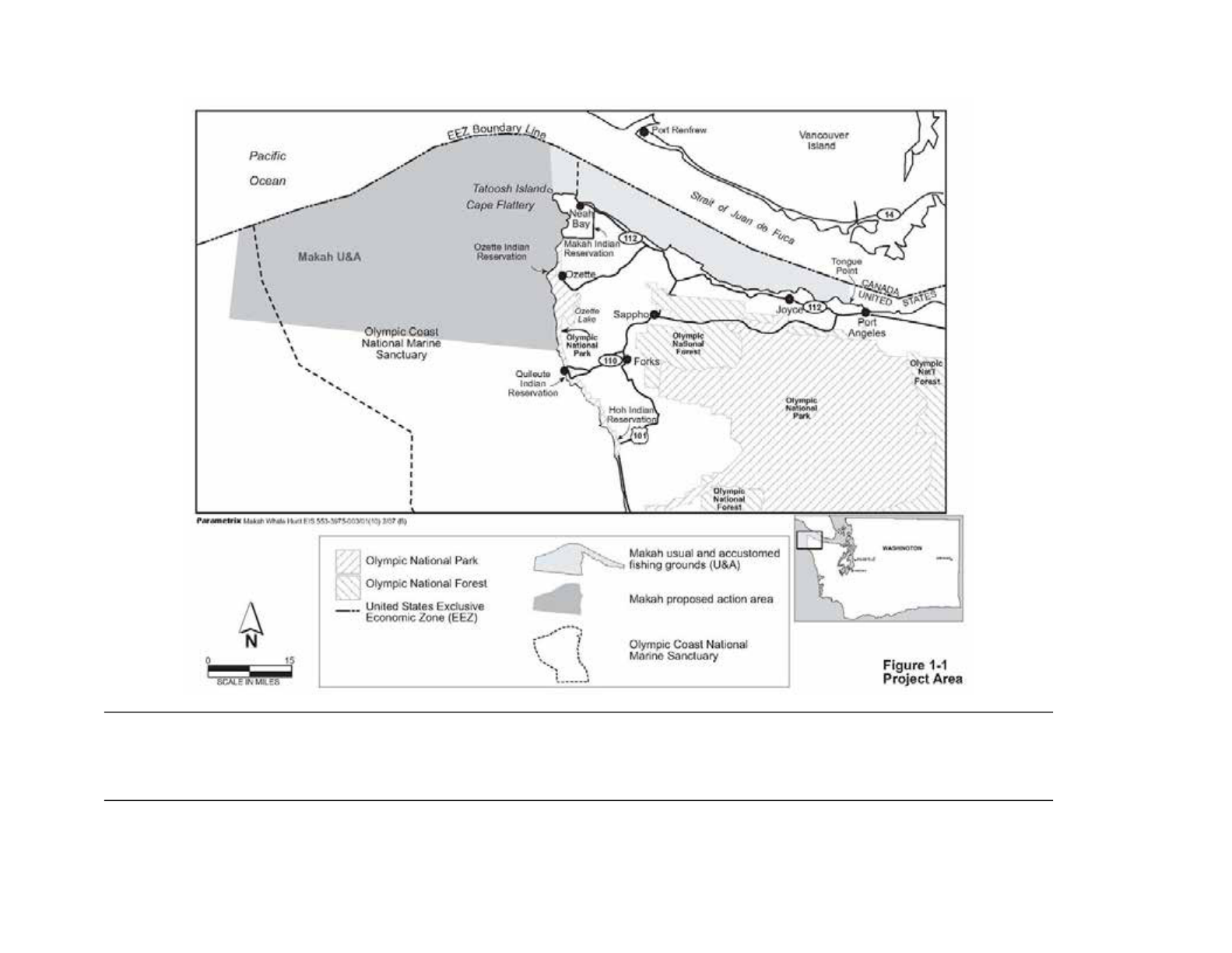
Chapter 1 – Purpose and Need Makah Whale Hunt EIS
May 2008
1-4
!
Figure 1-1 Project Area
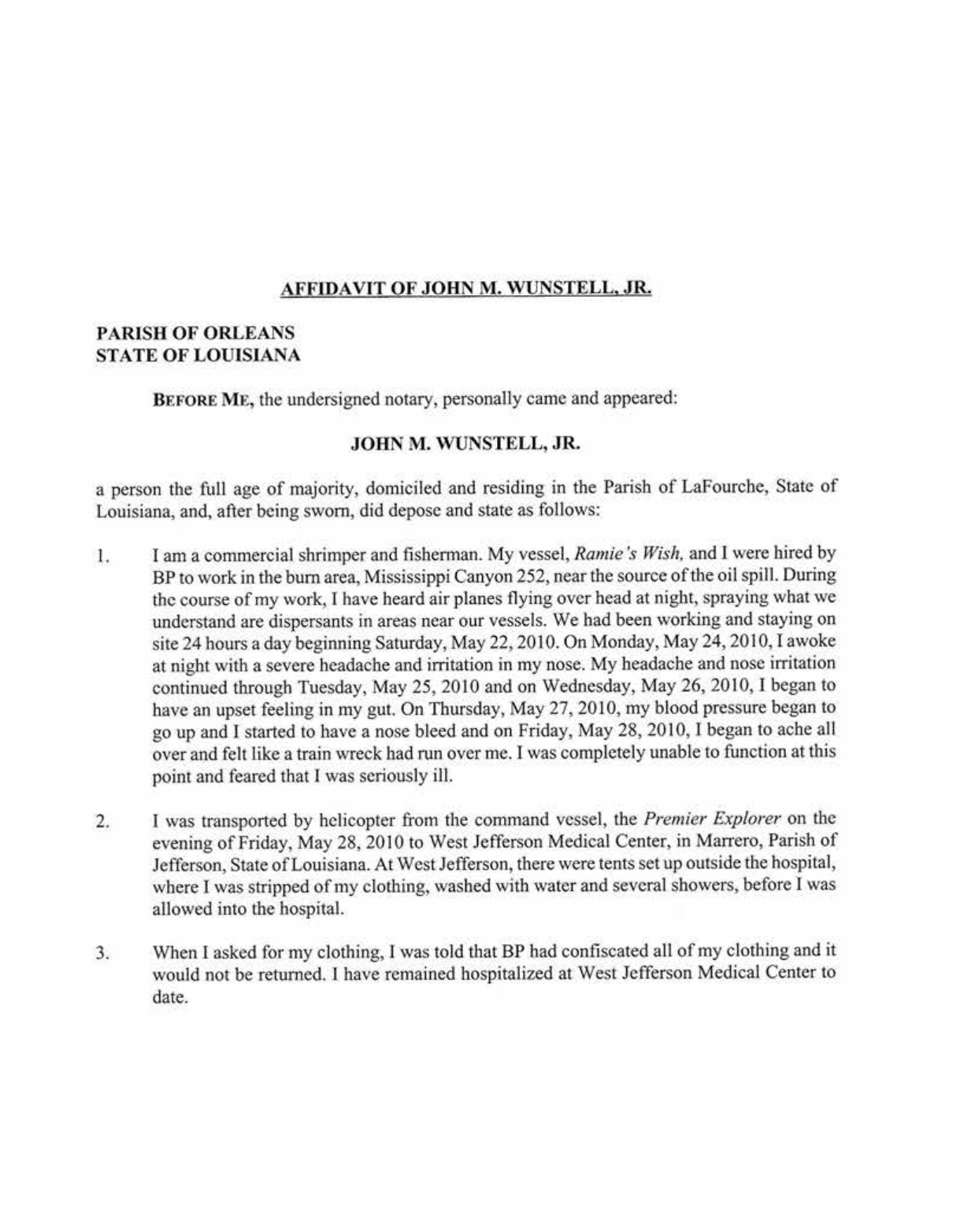
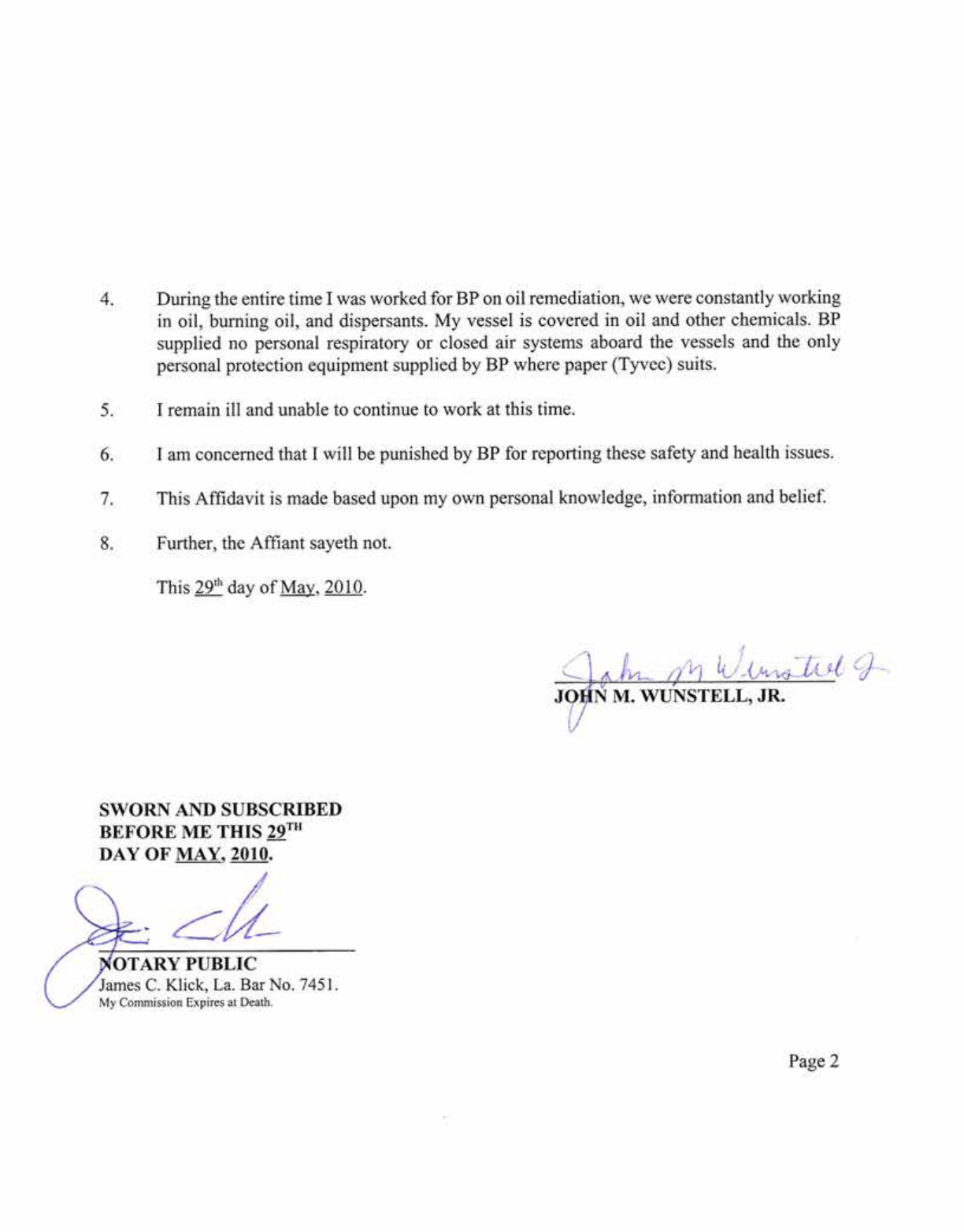
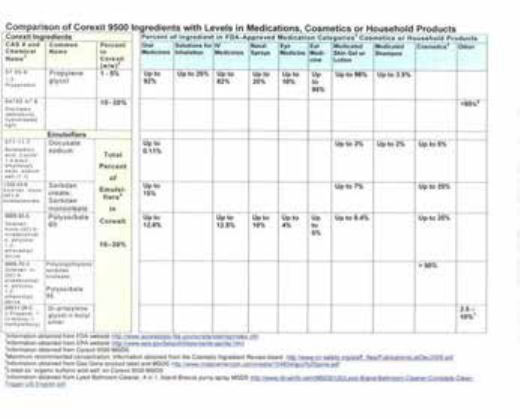

!"#$%&$'()*+(,-),
./(012345416(7849
9:;<(=<>?;"@+(8A%:@:;B'<B"'
CDED(1@#:'"@%$@B<F(G'"B$>B:"@(8H$@>I
8':$F(2:";(.J:FA:@H
),--(G$@@;IF#<@:<(8#$@J$(!K(
K<;L:@HB"@+(60((,-*M-
!"#$#$%&'(%)')*+",-.$&/'
*0123'452'67280'98423'-:4;'<<'*=>=6='?'@<A@B1CBACB/C'801'
452'-1DE0EF4384EG2'!3H:21I32F'-:4'#E472'J='>2:='JJ<B2C
#%'-,"&K'&-#$%&-+'6%&#$&/"&6L'!+-&'B&6!C'!)%K*6#'>6M"K*+"
!"
#$%&'()*+,(&-(./01+.02&3"1!0+14(1!&015&'(."6(,7&08&!/(&9,+40,7&:+1(&";&<(;(18(&=>0+18! &
?+2&@A+228B&#C%&@!,(1>!/(1&!/(&D;;+.0.7&E(8!&9,"!"."28B&#F%&D8!0G2+8/&0&9*G2+.&9,".(88&!" &
'(4"6(&9,"5*.!8B&#H%&I44(5+0!(27&'(4"6(&3(,!0+1&9,"5*.!8B&#J%&9,"/+G+!&K8(&"; &
3(,!0+1&9,"5*.!8&L+!/+1&3(,!0+1&=,(08B&#M%&'()*+,(&NCO/"*,&9*G2+.&P"!+;+.0!+"1&"; &
I1!(1!+"102&'(2(08(8&";&9,"5*.!8B&015&#N%&'()*+,(&90,!+.+A0!+"1&";&'(>+"102&3+!+Q(1 &
=56+8",7&3"*1.+28&08&-(4G(,8&";&=22&'(>+"102&'(8A"18(&E(048&#''E8%&015&'()*+,( &
3"1.*,,(1.(&";&=22&''E&-(4G(,8&+1&!/(&=*!/",+Q0!+"1&9,".(88&!"&K8(&9,"5*.!8
6$<'(8A%:@:;B'<B"'(=<>?;"@N
3L$(0F$<@(K<B$'(8>B('$OJ:'$;(BL$(G'$;:A$@B(B"(P'$P<'$(<(!<B:"@<F(Q:F(<@A(R<S<'A"J;(
EJ&;B<@>$;(G"FFJB:"@(0"@B:@H$@>I(GF<@(T!0GU(BL<B(:@>FJA$;+(<%"@H("BL$'(BL:@H;+(<(;>L$AJF$(
:A$@B:VI:@H(A:;P$';<@B;+(>L$%:><F;+(<@A("BL$'(P'"AJ>B;(BL<B(%<I(&$(J;$A(J@A$'(BL$(!0GW(BL$(
X<B$';(:@(XL:>L(;J>L(A:;P$';<@B;+(>L$%:><F;+(<@A("BL$'(P'"AJ>B;(%<I(&$(J;$AW(<@A(BL$(OJ<@B:B:$;(
"V(A:;P$';<@B;+(>L$%:><F;+(<@A("BL$'(P'"AJ>B;(BL<B(><@(&$(J;$A(;<V$FI(:@(;J>L(X<B$';D
(
YY(CDED0D(Z(
)Y,)TAUT,UT[UD(2$;P"@;:&:F:BI(V"'(BL$(G'"AJ>B(E>L$AJF$(X<;(A$F$H<B$A(B"(BL$(CDED(1@#:'"@%$@B<F(
G'"B$>B:"@(8H$@>I(T1G8UD
1G8\;(;B<B$A(:@B$@B(V"'(":F(;P:FF('$;P"@;$(:;(B"(J;$(BL$(%";B(]<A#<@>$A('$;P"@;$(
%$>L<@:;%;^(<#<:F<&F$(V"'(>"@B'"FF:@H(":F(;P:FF;(<@A(%:@:%:S:@H(BL$:'(:%P<>B;("@(LJ%<@(L$<FBL(
<@A(BL$($@#:'"@%$@B^(7$>L<@:><F(>"@B<:@%$@B("'('$>"#$'I(:;(BL$(P':%<'I(F:@$("V(A$V$@;$(
<H<:@;B(":F(;P:FF;(:@(BL$(C@:B$A(EB<B$;^(0L$%:><F(<@A(&:"F"H:><F(%$BL"A;(><@(&$(J;$A(:@(
>"@_J@>B:"@(X:BL(%$>L<@:><F(%$<@;(V"'(>"@B<:@:@H(<@A(>F$<@:@H(JP(":F(;P:FF;D`(
TLBBPNaaXXXD$P<DH"#a";X$'"$)a>"@B$@BaF$<'@:@Ha":FB$>LDLB%U(
3L$(J@A$';:H@$A(>"<F:B:"@("V(>"@>$'@$A(>:B:S$@;(L$'$&I(P$B:B:"@(1G8+(PJ';J<@B(B"(BL$(
0F$<@(K<B$'(8>B+(YY(CDED0D(Z()Y,)TAUT,UT[U+(<@A(BL$(8A%:@:;B'<B:#$(G'">$AJ'$(8>B+(b(CDED0D(Z(

bbYT$U(T,--MU(B"(P'"%JFH<B$('$HJF<B:"@;(J@A$'(BL$(!<B:"@<F(0"@B:@H$@>I(GF<@(T!0GU(G'"AJ>B(
E>L$AJF$(BL<BN(
)D 2$OJ:'$(BL<B(%$>L<@:><F(>"@B<:@%$@B(<@A('$>"#$'I(&$(JB:F:S$A(<;(BL$(P':%<'I(F:@$("V(
A$V$@;$(:@(":F(;P:FF('$;P"@;$W(<@A(BL<B(>L$%:><F(<@A(&:"F"H:><F(%$BL"A;+(XL:>L(A"(@"B(:@>FJA$(
?@"X@(B"c:>(<@A(LJ%<@(L$<FBL(L<S<'A;+(@"'(P'"P':$B<'I(:@H'$A:$@B;+(<@A(XL:>L(%$$B(BL$(JPA<B$A(
B"c:>:BI(<@A($VV:><>I(B$;B:@H(P'"B">"F;(<;('$V$'$@>$A(&$F"X+(><@(&$(J;$A(!"#$(<;(<(;$>"@A<'I(F:@$(
"V(A$V$@;$(<@A(!"#$(:@(>"@_J@>B:"@(X:BL(%$>L<@:><F(>"@B<:@%$@B(<@A('$>"#$'IW(
,D EB'$@HBL$@(BL$($VV:><>I(B$;B(P'"B">"F;(V"'(P'"AJ>B;W(
YD 1;B<&F:;L(<(PJ&F:>(P'">$;;(XL$'$&I(P'"AJ>B;(%<I(&$('$%"#$A(V'"%(BL$(E>L$AJF$W(
*D 4%%$A:<B$FI(A$F:;B("'('$%"#$(>$'B<:@(P'"AJ>B;(V'"%(BL$(E>L$AJF$W(
bD 4%%$A:<B$FI(<@A(J@>"@A:B:"@<FFI(P'"L:&:B(J;$("V(<@I(P'"AJ>B;(BL<B(>"@B<:@(LJ%<@(L$<FBL(
L<S<'A;(<@Aa"'(P'"P':$B<'I(T0.4U(>L$%:><F;(X:BL:@(<FF(;P$>:<F(%<':B:%$(<@A(B$'':B"':<F(X<B$';("V(
BL$(C@:B$A(EB<B$;+(:@>FJA:@H(<@A($cB$@A:@H(V'"%(BL$(JPP$'(:@B$'B:A<F(S"@$(T)d(CE0(ZeUW(
MD 2$OJ:'$(@"B:V:><B:"@(e,(L"J';(:@(<A#<@>$("V(:@B$@B:"@<F('$F$<;$;("V(P'"AJ>B;("@(BL$(
E>L$AJF$(B"(BL$(PJ&F:>(<B(BL$(@<B:"@<F+(;B<B$+(<@A(F"><F(F$#$F;W(<@A
eD 2$OJ:'$(P<'B:>:P<B:"@("V(2$H:"@<F(0:B:S$@;(8A#:;"'I(0"J@>:F;(<;(%$%&$';("V(<FF(2$H:"@<F(
2$;P"@;$(3$<%;(T223;U(<@A('$OJ:'$(>"@>J''$@>$("V(<FF(223(%$%&$';(:@(BL$(<JBL"':S<B:"@(B"(J;$(
P'"AJ>B;("@(BL$(E>L$AJF$(X:BL"JB($c>$PB:"@D
4@(<AA:B:"@+(BL$(J@A$';:H@$A(>"<F:B:"@(<F;"(;JPP"'B;(BL$(P$B:B:"@(V:F$A("@(Q>B"&$'()Y+(
,-)-+(&I(1<'BL_J;B:>$("@(&$L<FV("V(8F<;?<(0"%%J@:BI(8>B:"@("@(3"c:>;+(0""?(4@F$B?$$P$'+(
5F"':A<(K:FAF:V$(5$A$'<B:"@+([JFV(2$;B"'<B:"@(!$BX"'?+(9"J:;:<@<(EL':%P(8;;">:<B:"@+(E:$''<(
0FJ&+(<@A(K<B$'?$$P$'(8FF:<@>$(B"(P'"%JFH<B$('$HJF<B:"@;(BL<BN
dD 1;B<&F:;L(JPA<B$A(B"c:>:BI(>':B$':<(V"'(P'"AJ>B;(F:;B$A("@(BL$(!0G(G'"AJ>B(E>L$AJF$(J@A$'(
>"@B'"FF$A(F<&"'<B"'I(>"@A:B:"@;+(%"&#'(%")*+,-#%./%&*0%,#(*.&,"-+%!.*-"(*-11+!1+%-/,*/,./*.1,&%,. *
2"!3"*/!*4,*.,".%/%5,*/!*/6,*.'4./-"&,.*4,%")*/,./,(W(
fD 2$OJ:'$(JPA<B$A(B"c:>:BI(B$;B:@H+(J@A$'(>"@B'"FF$A(F<&"'<B"'I(>"@A:B:"@;+(%"&#'(%")*
+,-#%./%&*0%,#(*.&,"-+%!.*-"(*-11+!1+%-/,*/,./*.1,&%,.*2"!3"*/!*4,*.,".%/%5,*/!*/6,*.'4./-"&,. *
4,%")*/,./,(+("V(P'"AJ>B;(P':"'(B"(F:;B:@H+(<@A(<;(<(>"@A:B:"@("V('$B$@B:"@("V(P'"AJ>B;(<F'$<AI(
F:;B$A+("@(BL$(!0G(G'"AJ>B(E>L$AJF$W(<@A
)-D 2$OJ:'$(PJ&F:>(A:;>F";J'$("V(<(P'"AJ>B\;(:@H'$A:$@B;(<;(<(>"@A:B:"@("V(PF<>$%$@B+("'(
'$B$@B:"@+("@(BL$(!0G(G'"AJ>B(E>L$AJF$D(
QV(V"'$%";B(>"@>$'@(<'$(BL$(!0G('$HJF<B:"@;(<@A(B$;B(P'"B">"F;(BL<B(<FF"X$A(BL$(

J@P'$>$A$@B$A(<@A(X:A$;P'$<A(<PPF:><B:"@("V(<B(F$<;B()Dd(%:FF:"@(H<FF"@;("V(BX"(P':%<'I(
P'"AJ>B;ggBL$(A:;P$';<@B;(0"'$c:B(fb--(<@A(0"'$c:B(fb,e8ggAJ':@H(BL$(,-)-(.G(6$$PX<B$'(
R"':S"@(A:;<;B$'D(7<;;:#$('$F$<;$;("V(B"c:>(P'"AJ>B;(:@(BL$(PJ&F:>(>"%%"@;+(:@>FJA:@H(BL$(<:'(
P$"PF$(&'$<BL$(<@A(BL$(">$<@;(<@A(>"<;B;(XL$'$(P$"PF$(;X:%+('$>'$<B$+(<@A(L<'#$;B(;$<V""A+(%J;B(
'$OJ:'$(A$V:@:B:#$(A$%"@;B'<B:"@(BL<B(<FF(<FB$'@<B:#$;(L<#$(%"'$(@$H<B:#$(;:A$($VV$>B;D(8%$':><\;(
">$<@;(<@A(>"<;B;(;JPP"'B(%JFB:h&:FF:"@(A"FF<'('$>'$<B:"@<F(<@A(>"%%$'>:<F(V:;L:@H(:@AJ;B':$;(<@A(
B"J':;%+(<;(X$FF(<;(A:#$';$(>JFBJ'$;D(3L$;$(>"@>$'@;(L<#$(&$$@(:FFJ;B'<B$A(&I(A<B<(>"FF$>B$A(&"BL(
&$V"'$(<@A(<VB$'(BL$(.G(A:;<;B$'+(#<F:A<B$A(&I(;>:$@>$(A"@$(-0/,+(BL$(.G(A:;<;B$'+(<@A(:@>FJA$(BL$(
$%$'H:@H($#:A$@>$("V(X:A$;P'$<A+(<A#$';$($@#:'"@%$@B<F(<@A(LJ%<@(L$<FBL(:%P<>B;(:@(BL$(
:%P<>B$A([JFV(;B<B$;D
K$(<AA'$;;($<>L("V(BL$(V:';B(;:c(:;;J$;(;$P<'<B$FI(XL:F$(<>?@"XF$AH:@H(BL<B(<FF(@:@$(P":@B;(
&$:@H('<:;$A(&I(BL$(PJ&F:>(%J;B(&$(<AA'$;;$A(B"(>"%P'$L$@;:#$FI(JPA<B$(BL$(!0G(G'"AJ>B(
E>L$AJF$(B"(VJFFI(<AA'$;;(BL$;$(:%P"'B<@B(>"@>$'@;D
$= >4842'HN'>:E20:2'!3EH3'4H'452'O!'K22PQ8423'MH3ERH0'KEF8F423
0'JA$(Q:F(4%P<>B;(B"(RJ%<@(R$<FBL(<@A(1>";I;B$%(R$<FBL
8A#$';$($VV$>B;("V(>'JA$(":F($cP";J'$("@(L$<FBL("V('$;P"@;$(X"'?$';+(V:;L$'%$@+('$;:A$@B;(
"V(":F$A(>"%%J@:B:$;+(<@A("BL$';(<'$(X$FF(?@"X@(<@A($;B<&F:;L$AD(3L$(8%$':><@(G$B'"F$J%(
4@;B:BJB$(PJ&F:;L$A("@$("V(BL$($<'F:$;B(F:B$'<BJ'$('$#:$X;(:@()fdbD
)
(8VB$'(BL$(788!"*9-#(,:*":F(;P:FF(
:@()fdf+(6'D(2"&$'B(2:HH+(<(V"'%$'(8F<;?<(%$A:><F(A:'$>B"'(V"'(EB<@A<'A(8F<;?<(T.GU+(X<'@$A+(
;</*%.*-*2"!3"*0-&/*/6-/*",'+!#!)%&*&6-"),.*=4+-%"*(->-),?@*.2%"*(%.!+(,+. *
=%"&#'(%")*&-"&,+?@*#%5,+*-"(*2%(",$*(->-),@*&-"&,+*!0*!/6,+*!+)-"*.$./,>.@*-"( *
>,(%&-#*&!>1#%&-/%!".AA.,&!"(-+$*/!*,81!.'+,*/!AA3!+2%")*'"1+!/,&/,(*%"*=!+ *
%"-(,B'-/,#$*1+!/,&/,(?*&-"*-"(*3%##*!&&'+*/!*3!+2,+.*,81!.,(*/!*&+'(,*!%#*-"( *
!/6,+*1,/+!&6,>%&-#*4$C1+!('&/.D*E6%#,*.6!+/C/,+>*&!>1#-%"/.@*%D,D@*.2%" *
%++%/-/%!"@*"-'.,-@*(%::%",..@*1'#>!"-+$*.$>1/!>.@*,/&D@*>-$*4,*/6,*%"%/%-#*.%)".*!0 *
,81!.'+,*-"(*/!8%&%/$@*/6,*>!+,*.,+%!'.*#!")C/,+>*,00,&/.*>'./*4,*1+,5,"/,(DF*G, *
+,&!>>,"(,(*1'##%")*&#,-"'1*&+,3.*;!00*/6,*4,-&6,.H-"(*!'/*!0*/6,*I!'"(H
J/!K*-5!%(*0'+/6,+*/+-),($*%"*/6,*0!+>*!0*6'>-"*.'00,+%")@*%##",..*-"(*(%.,-.,LF
M
*
4@()ffY+(BL$(:@AJ;B'I(7<':@$(EP:FF(2$;P"@;$(0"'P"'<B:"@+(@$XFI(V"'%$A(J@A$'(BL$(Q:F(
G"FFJB:"@(8>B("V()ff-+(<AA'$;;$A(BL$(>L$%:><F(<;P$>B;("V(">>JP<B:"@<F(L$<FBL(<@A(%<':@$(":Fh;P:FF(
'$;P"@;$(&JB(;:H@:V:><@BFI(F:%:B$A(BL$('$#:$X(B"($cP";J'$;(B"(>'JA$(":F("@FI+(@"B(":F(;P:FF('$;P"@;$(
P'"AJ>B;D
Y
(3L$(<JBL"';("V(BL$()ffY('$#:$X(BL$@(:@A$P$@A$@BFI(>"%PF$B$A(<(;$>"@A('$#:$X(:@(
!
"#$"%$"&'()*+,-."#$"%$"/,0,'1."2$"0$"034,*,-."!"#$%&'()'*+"$)'*,$-&.'(/'0,&1(-,+"'2)'&.,'3$12),'
4)521()",)&."56,-)731"&,*-'(,86"#14*)*8*,."934:)1;*'1."/<."!=>?$
,
"%'@,-*"%);;."A/."0,**,-"*'"<'-B'C3"/)4*-)7*"D)4:,-6,1"E1)*,B."A3F"!G."!=>=."<'-B'C3."5H$"5(4'"
2)"<)*F"'I"<'-B'C3."5H."6(17(5$'8$%&'9.,,&J!=>="!KL=M$
G
"A$"N$"O'(()B3F."2$"A$"&3-P.":%%+#$&2()$-'*,$-&.'!"#-2%$&2();'(/'61+7,':2-'4<#(;+1,='>2&,1$&+1,'
?,52,@'$)7'?,;,$1%.'A,,7;."Q,7:1)73("%,R'-*"=GSTTU."A3-)1,"VR)(("%,4R'14,"<'-R'-3*)'1."
934:)1;*'1."/<."!==G$
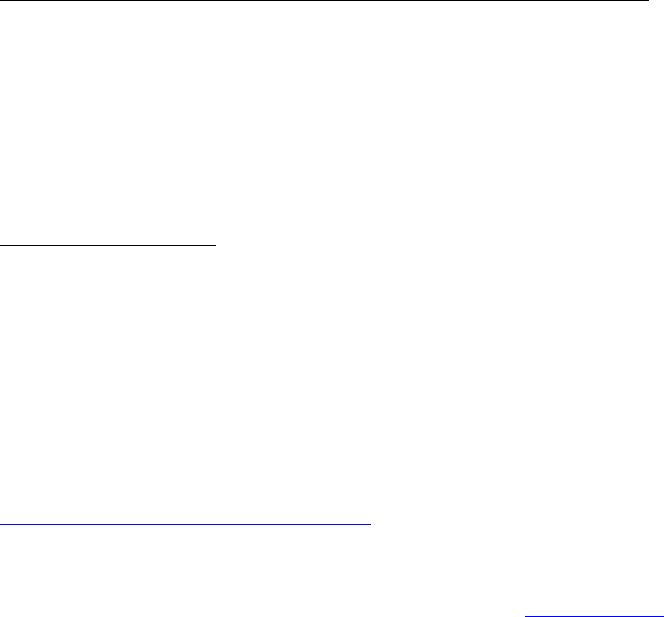
)fff(B"(JPA<B$(BL$:'($<'F:$'('$P"'B+($F"OJ$@BFI(;B<B:@H+(]7:;B;(<@A(<$'";"F;(>"@B<:@:@H(P"FI@J>F$<'(
<'"%<B:>(LIA'"><'&"@;(TG8R;U(<'$+(:@(P':@>:PF$+(<(><@>$'(':;?^`(
*
D(3L$(<JBL"';(<F;"(@"B$A+(
]8FBL"JHL(BL$'$(<'$(V'$OJ$@B('$V$'$@>$;(B"(B"c:>:BI(:@(>"@@$>B:"@(X:BL(A:;P$';<@B;+(BL$;$(
:@#<':<&FI(;$$%(B"('$V$'(B"($>"B"c:>:BID(RJ%<@(L<S<'A(A"$;(@"B(<PP$<'(B"(&$(<@(:;;J$D`(3L$(
<JBL"';(V"J@A(V$X(A<B<("@(BL$(F<BB$'(;J&_$>B(<@A(<H<:@(F:%:B$A(BL$:'('$#:$X(B"(>'JA$(":F($cP";J'$;D
4@(,-))+(<(F:B$'<BJ'$('$#:$X("V(;$#$@(P'$#:"J;(":F(;P:FF;(><B$H"':S$;(?$I(LJ%<@(L$<FBL(
:%P<>B;(<@A('$;B<B$;(BL$(X$FFh$;B<&F:;L$A(V<>B;N(]8>JB$($VV$>B;(L<#$(:@>FJA$AN('$;P:'<B"'I+($I$+(
<@A(;?:@(;I%PB"%;W(L$<A<>L$W(@<J;$<W(A:SS:@$;;W(<@A(B:'$A@$;;("'(V<B:HJ$D(0L'"@:>($VV$>B;(L<#$(
:@>FJA$AN(P;I>L"F"H:><F(A:;"'A$';+('$;P:'<B"'I(A:;"'A$';+(H$@"B"c:>($VV$>B;+(<@A($@A">':@$(
<&@"'%<F:B:$;D`
b
(E:H@:V:><@BFI+(X:A$;P'$<A(<PPF:><B:"@("V(A:;P$';<@B;(X<;(@"B(>"@AJ>B$A(AJ':@H(
<@I("V(BL$(;P:FF;(:@>FJA$A(:@(BL:;('$#:$XD
M
E:@>$(BL$()fdf(788!"*9-#(,:*":F(;P:FF(:@(8F<;?<+(;>:$@B:;B;(L<#$($;B<&F:;L$A(BL<B(":F(;P:FF;(
<@A($#$@(;L"'BhB$'%($cP";J'$(><@(><J;$(F"@HhB$'%(L<'%(B"(X:FAF:V$(<@A($>";I;B$%(VJ@>B:"@D(
0L'"@:>(:%P<>B;(V'"%($cP";J'$(B"(P<'B:>JF<B$(":F("'(P"FI>I>F:>(<'"%<B:>(LIA'"><'&"@;(TG8R;U(:@(
X:FAF:V$(:@>FJA$N($@A">':@$(<&@"'%<F:B:$;(<@A('$P'"AJ>B:#$(P'"&F$%;+(:%%J@$(;I;B$%(
AI;VJ@>B:"@+(H$@"B"c:>($VV$>B;+(;BJ@B$A("'(;F"X$A(H'"XBL(<@A(;?$F$B<F(A$V"'%:B:$;+(<@A(A:;'JPB:"@(
"V(&$L<#:"'<F(<@A(;">:<F(VJ@>B:"@;(>':B:><F(V"'(;J'#:#<F+(<%"@H("BL$';D
e
(
0'JA$(Q:F(<@A(6:;P$';<@B(4%P<>B;(B"(1>";I;B$%(R$<FBL(<@A(RJ%<@
6:;P$';<@B;(<>B(&I(&'$<?:@H(JP(BL$(":F(;F:>?(:@B"(;%<FF(A'"PF$B;+(:@>'$<;:@H(LIA'"><'&"@(
$cP";J'$(B"(;$<(F:V$(:@(BL$(X<B$'(>"FJ%@D(8FBL"JHL(BL$(>"%P";:B:"@("V(A:;P$';<@B;(L<;(>L<@H$A(
"#$'(BL$(A$><A$;+(A:;P$';<@B;(BL<B(>"@B<:@(P$B'"F$J%(A:;B:FF<B$;(<@A("BL$'(B"c:>(<@A(L<S<'A"J;(
>L$%:><F;(<'$(:@L$'$@BFI(B"c:>D(I%"&,*/6,*NOPQ.@*%/*6-.*4,,"*2"!3"*/6-/*/6,*&!>4%"-/%!"*!0 *
(%.1,+.-"/.*-"(*&+'(,*!%#*%.*>!+,*/!8%&*/!*/6,*,&!.$./,>*/6-"*!%#*-#!",D(4@(P<'B:>JF<'+(BL$(
;>:$@B:V:>(>"%%J@:BI(L<A(X:A$FI(<>>$PB$A(<;(V<>B(BL<B(A:;P$';<@B;(A"(%"'$(L<'%(BL<@(H""A(:@(
;L<FF"X(;$<;+(@$<'(;L"'$+(<@A(:@(BL$(:@B$'B:A<F(S"@$D(
d
W
"&3-P."2$"A$"31B"A$"N$"O'(()B3F."X778R3*)'13(S:,3(*:"34R,7*4"'I"63-)1,"')("4R)(("-,4R'14,."&8-,"
5RR(),B"<:,6)4*-F."!===."U!Y!ZJ!!G[!GG$
?
"\3--F"0,CF"31B"9)(()36"]344,**3."^Q:,"5BC,-4,"O,3(*:"_II,7*4"'I"X)("VR)((4J"5"%,C),`"'I"*:,"
0)*,-3*8-,"31B"3"D-36,`'-P"I'-"A,B)73((F"_C3(83*)1;"_aR'4,B"#1B)C)B83(4.b"!)&'B':%%+#'4)521()'
*,$-&.'LT!!c"!UJ!L![!dU$
d
"Q:,"4<<()'C$-7,D"')("4R)(("Y_eXVZ"`34"-,I,-,17,B"@8*"'1(F"I'-"R4F7:'(';)73("B)4'-B,-4."`:)7:"
`,-,"1'*")17(8B,B"34"378*,":,3(*:",II,7*4$"Q:,"<'-,a)*"B)4R,-431*4"=?TT"31B"=?LU5."31B"'*:,-"
R-'B87*4."`,-,"84,B"B8-)1;"*:,"_eXV"B)434*,-"-,4R'14,c"I'-"3"()4*"'I"378*,"31B"7:-'1)7"3BC,-4,"
:,3(*:")6R37*4"36'1;"-,4R'14,"`'-P,-4."4,,J"511),"Xf],)((."9,-/E?,#(1&,7'4<#(;+1,;'F)7'
*,$-&.'9&$&+;'F"()G'H(1I,1;'81("'J.,'4<<()'C$-7,D':2-'9#2--'6-,$)+#K"AV"Q:,4)4."g3(,"
E1)C,-4)*F"/,R*$"'I"_R)B,6)'(';F"31B"&8@()7"O,3(*:."LTTG."3C3)(3@(,"3*"
:**RJhh```$-)P)'**$7'6hRBIh'1,)((i*:,4)4$RBI$"
U
"<:3-(,4"&,*,-4'1."V*31(,F"%)7,."2,II-,F"V:'-*."/31),("_4(,-."236,4"\'BP)1."\-,1B3"\3((37:,F."31B"
/3C)B"#-'14."^0'1;S*,-6"_7'4F4*,6"%,4R'14,4"*'"*:,"4<<()'C$-7,D"X)("VR)((.b"LTTGc"GTLJLT>L[LT>d$"
9,,'$-;("31B"2)'%)P)"X**."9(+)7'J1+&.'$)7'6(1#(1$&,'3L&.;='J.,'>,G$%L'(/'&.,'4<<()'C$-7,D':2-'9#2--'
Y/-3;'1I(F"V)4*,-4"&-,44."<'-B'C3."5HJ"LTTWZ."3C3)(3@(,"3*J"```$-)P)'**$7'6$"
>
"2$"\'FB."/$"V7:'(+."31B"5$"93(P,-."^_II,7*4"'I"')("31B"7:,6)73((F"B)4R,-4,B"')(")1"*:,"
,1C)-'16,1*$b"#1"&-'7,,B)1;4"'I"*:,"#1*,-13*)'13("X)("VR)(("<'1I,-,17,."56,-)731"&,*-'(,86"

8'HJ%$@B;(V"'("'(<H<:@;B(A:;P$';<@B(J;$('$%<:@$A(J@>L<@H$A(V"'(@$<'FI(V"'BI(I$<';(<@A(
<'$(V">J;$A(<F%";B($c>FJ;:#$FI("@(P"B$@B:<F(L<'%(B"(X:FAF:V$D(!"B<&FI+(BL$(<'HJ%$@B;(<'$(%";BFI(
;J&_$>B:#$D(3L$(;"h><FF$A(]$@#:'"@%$@B<F(B'<A$h"VV;`("V(A:;P$';<@B(J;$(L<#$(&$$@(BL$(;J&_$>B("V(
;P:':B$A(;>:$@B:V:>(A$&<B$;(V"'(V"J'(A$><A$;gg<@A(;B:FF(<'$(V"'(H""A('$<;"@D
f
(3L$(J;$("V(A:;P$';<@B;(
A"$;(@"B('$P'$;$@B(<(;>:$@>$h&<;$A+(OJ<@B:V:<&F$(]B'<A$"VV`(&JB(><@(<%"J@B(B"(>"@#$@:$@B(P"F:B:><F(
$cP$A:$@>$D(5J'BL$'+(BL$(%<:@(P'"hA:;P$';<@B(<'HJ%$@BggBL<B(:;+(B"(&'$<?(JP(BL$(":F+(%<?:@H(:B(
%"'$(<>>$;;:&F$(B"(%:>'"&:<F(&<>B$':<(<@A(L$@>$(;P$$A:@H('$%$A:<B:"@gg'$%<:@;(<@(J@B$;B$A(
<;;J%PB:"@(:@(BL$(V:$FA(V"'(<('<@H$("V(":F;D(4B(X<;(X$FF($;B<&F:;L$A(BL<B(&<>B$':<F(A$H'<A<B:"@(:;(BL$(
%<:@(@<BJ'<F(P<BLX<I(V"'('$%"#:@H(>'JA$(":F(V'"%(BL$($@#:'"@%$@B+($;P$>:<FFI(BL$(F$;;(>"%PF$c(
LIA'"><'&"@;(T<F?<@$;(<@A(]F:HLB($@A;`("'(;%<FF$'(<'"%<B:>(>"%P"J@A;UD
)-
(R"X$#$'+(BL$(B"c:>:BI(
"V(A:;P$';<@B;("@(BL$;$(":Fh$<B:@H(&<>B$':<(P"PJF<B:"@;(F<'H$FI(X<;(J@?@"X@(&$V"'$(BL$(.G(
A:;<;B$'D(3L$(":F(:@AJ;B'I(L<;(<(;B'"@H(<@A($cP$A:$@B(&:<;(B"X<'A;(A:;P$';<@B(J;$(:@;B$<A("V(
%$>L<@:><F(":F('$>"#$'I($OJ:P%$@B+(A$;P:B$(?@"X@(L$<FBL(':;?;(V'"%(A:;P$';<@B;gg<@A(BL$(V<>B(
BL<B(BL$(;B<B$A(P':"':B:$;("V(BL$(V$A$'<F(H"#$'@%$@B(<'$(B"(J;$(%$>L<@:><F(>"@B<:@%$@B("'('$>"#$'I(
<;(BL$(P':%<'I(F:@$("V(A$V$@;$(<H<:@;B(":F(;P:FF;(:@(BL$(C@:B$A(EB<B$;(<@A(B"(%:@:%:S$(":F(;P:FF(
:%P<>B;("@(LJ%<@(L$<FBL(<@A(BL$($@#:'"@%$@BD(
3L$(;B<B$("V(;>:$@B:V:>(?@"XF$AH$("@(<A#$';$(:%P<>B;("V(":F(<@A(A:;P$';<@B;(P'$hA<B:@H(BL$(
.G(6$$PX<B$'(R"':S"@(&F"X"JB(:;(&$;B(;J%%<':S$A(:@(BX"(A">J%$@B;('$F$<;$A(;L"'BFI(<VB$'(BL$(
A:;<;B$'D(E>:$@>$0"'P;D"'H('$F$<;$A(<(>"%P'$L$@;:#$('$P"'B("@(BL$(L$<FBL(L<S<'A;("V(>'JA$(":F(<@A(
BL$(?@"X@(:@H'$A:$@B;("V(BL$(0"'$c:B(fb--(<@A(0"'$c:B(fb,e8D
))
(3L$('$P"'B(;B<B$A(BL<B(>L$%:><F;(
:@(BL$;$(A:;P$';<@B;(X$'$(?@"X@(B"(&$(@$J'"B"c:@;+(%JB<H$@;+(B$'<B"H$@;(T<&F$(B"(A:;BJ'&(BL$(
H'"XBL(<@A(A$#$F"P%$@B("V(<@($%&'I"("'(V$BJ;U+(<@A(><'>:@"H$@;D(5J'BL$'+(0"'$c:B(fb,e8(
>"@B<:@;(,h&JB"cI$BL<@"F+(<(B"c:>(;"F#$@B(<@A(LJ%<@(L$<FBL(L<S<'A(BL<B('JPBJ'$;('$A(&F""A(>$FF;+(
><J;:@H(L$%"FI;:;(T&F$$A:@HU(<@A(F:#$'(<@A(?:A@$I(A<%<H$D(3L$(<JBL"';+(<(%$A:><F(A">B"'(<@A(
B"c:>"F"H:;B+(<F;"(X<'@$A(BL<B(A:;P$';<@B;(<@A(>'JA$(":F(>"@B<:@(%<@I(:@H'$A:$@B;(BL<B(B<'H$B(BL$(
;<%$("'H<@;(:@(BL$(&"AI(<@A+(VJ'BL$'+(BL<B(0"'$c:B(A:;P$';<@B;(%<I(<>B(<;(<@(":F(A$F:#$'I(;I;B$%+(
V<>:F:B<B:@H(BL$($@B'I("V(":F(:@B"(BL$(&"AI+(:@B"(>$FF;+(XL:>L(><@(A<%<H$($#$'I("'H<@(;I;B$%(:@(BL$(
&"AID
8(;>:$@B:V:>(>"@;$@;J;(;B<B$%$@B($F<&"'<B$A(JP"@(BL$(L$<FBL(':;?;("V(J;:@H(BL$(0"'$c:B(
A:;P$';<@B;N(i3L$(P'"P$'B:$;(BL<B(V<>:F:B<B$(BL$(%"#$%$@B("V(A:;P$';<@B;(BL'"JHL(":F(<F;"(%<?$(:B(
$<;:$'(V"'(BL$%(B"(%"#$(BL'"JHL(>$FF(X<FF;+(;?:@(&<'':$';+(<@A(%$%&'<@$;(BL<B(P'"B$>B(#:B<F(
"'H<@;+(J@A$'FI:@H(F<I$';("V(;?:@+(BL$(;J'V<>$;("V($I$;+(%"JBL;+(<@A("BL$'(;B'J>BJ'$;Di(3L$(
>"@;$@;J;(A">J%$@B(>"@>FJA$A+(i0"'$c:B(A:;P$';<@B;+(:@(>"%&:@<B:"@(X:BL(>'JA$(":F+(P";$(H'<#$(
L$<FBL(':;?;(B"(%<':@$(F:V$(<@A(LJ%<@(L$<FBL(<@A(BL'$<B$@(B"(A$PF$B$(>':B:><F(@:>L$;(:@(BL$([JFV(
V""A(X$&(BL<B(%<I(@$#$'('$>"#$'Di
),
#14*)*8*,."934:)1;*'1."/<."LTT!J!L!G[!L!d$
=
"]3*)'13("%,4,3-7:"<'817)(."]3*)'13("573B,6F"'I"V7),17,4."LTT?$"X)("VR)(("/)4R,-431*4J"_II)737F"
31B"_II,7*4$"5C3)(3@(,"3*J":**RJhh```$:3R$,B8h73*3(';h!!L>G$:*6(
!T
"%$"9)(7'7P."N$"<'-@31."N$"]'-*:7'**."5$"9)(P)14"31B"5$"031;B'1."^&,-4)4*,17,"'I"R'(F7F7()7"
3-'63*)7"7'6R'81B4"'I"B)II,-,1*"6'(,78(3-"4)+,"31B"`3*,-"4'(8@)()*F")1"48-I)7)3("4,B)6,1*"'I"31"
)1*,-*)B3("431BI(3*.b"4)521()",)&$-'J(<2%(-(GL'$)7'6.,"2;&1L."!==dc"!?JdUTSdUd$
!!
"\8-14."H$"31B"O3-@8*."A$%$."LT!T$"M+-/':2-'9#2--'*$D$17;."V7),17,7'-R4."0,a)1;*'1."A5."281,"
!W."LT!T$"5C3)(3@(,"3*":**RJhh```$47),17,7'-R4$'-;h7-8B,')(:3+3-B4$:*6
!L
"<'14,1484"V*3*,6,1*J"V7),1*)4*4"'RR'4,"*:,"84,"'I"B)4R,-431*"7:,6)73(4")1"*:,"N8(I"'I"A,a)7'."28(F"

.<;$A("@(;>:$@>$(<@A(A':#$@(&I(PJ&F:>(>"@>$'@;(P':"'(B"(BL$(.G(6$$PX<B$'(R"':S"@(
A:;<;B$'+(BL$(2$H:"@<F(2$;P"@;$(3$<%;+(<JBL"':S$A(<;(P<'B("V(BL$(!0G(J@A$'(BL$(0F$<@(K<B$'(8>B+(
<A"PB$A(#"FJ@B<'I(&<@;("V(A:;P$';<@B(J;$(:@(;L<FF"X(X<B$'($OJ<F(B"("'(F$;;(BL<@(B$@(%$B$';(A$$P(
<@A(X:BL:@(BL'$$(%:F$;("V(BL$(>"<;BD(R"X$#$'+(BL$(CDED(0"<;B([J<'A(:;(H:#$@(<JBL"':BI(J@A$'(BL$(
0F$<@(K<B$'(8>B(ZY--D*)bT&U(<@A(ZY--D*)bT>U(B"(]A:'$>B(<PP'"P':<B$(<>B:"@;(B"(%:B:H<B$("'(
'$%"#$(BL$('$F$<;$("V(L<S<'A"J;(;J&;B<@>$;`W(:@("BL$'(X"'A;+(B"(<PPFI(A:;P$';<@B;(X:BL:@(BL$;$(
;$@;:B:#$(L<&:B<B;(<@A(>F";$(B"(J'&<@(P"PJF<B:"@;ggX:BL"JB(>"@;:A$'<B:"@;(V"'(>"@>$'@;(V"'(
>"@;$OJ$@>$;(B"($>";I;B$%("'(LJ%<@(L$<FBLD
$$= >4842'HN'>:E20:2'-N423'452'O!'K22PQ8423'MH3ERH0'KEF8F423
3L$(X:A$;P'$<A(<PPF:><B:"@("V(<B(F$<;B()Dd(%:FF:"@(H<FF"@;("V(0"'$c:B(fb--(<@A(0"'$c:B(
fb,e8(:@('$;P"@;$(B"(BL$(.G(A:;<;B$'(X<;(<@(J@P'$>$A$@B$A($cP$':%$@BggX:BL(:%%$A:<B$(
J@P'$>$A$@B$A(>"@;$OJ$@>$;D(5"'($c<%PF$+(:@;B$<A("V(A:;P$';:@H(BL$(":F+(!Q88(<@A("BL$'(
;>:$@B:;B;(>"@V:'%$A(:@($<'FI(=J@$(BL<B(J@A$';$<(PFJ%$;("V(A:;P$';$A(":F(L<A(V"'%$AD
)Y
(3L$;$(
PFJ%$;(X$'$('$F<B:#$FI(;B<&F$(<@A(%"#$A(X:BL(BL$(>J''$@B;+("@;L"'$(<@A("VV;L"'$N(Q@$(>"@>$'@(:;(
BL<B(;J&;$<(A:;P$';<@B(<PPF:><B:"@(%<I(L<#$(PF<I$A(<('"F$(:@(BL$(PFJ%$(V"'%<B:"@+(I$B(BL$(
$>";I;B$%(A<%<H$(V'"%(BL$(A$$P(PFJ%$('$%<:@;(F<'H$FI(J@?@"X@+(<;(:;(%J>L("V(BL$(F:V$("V(BL$(
A$$P(;$<D
2$H<'A:@H("@;L"'$(A$P";:B:"@+(;BJA:$;(;J&;$OJ$@BFI('$P"'B$A(BL<B(B<''I(%<;;$;("V(.G(
>'JA$(":F(<@A(0"'$c:B(A:;P$';<@B;N(
• 8'$('$%"&:F:S$A(&I(L:HL($@$'HI(;B"'%;(<@A('$A:;B':&JB$+(>"FF$>B:@H(@$<'(;L"'$(:@('J@@$F;(
<>>$;;:&F$(&I(&$<>LhH"$';(XL"(<'$(X<A:@H(<@A(;X:%%:@H
)*
W
• R<#$(]G8R(>"@>$@B'<B:"@;(>"@;:;B$@BFI(:@($c>$;;("V(BL$(469R(T4%%$A:<B$FI(6<@H$'"J;(
B"(9:V$("'(R$<FBLU(F:%:B;(Td-(%Ha%YU+`
)b
(<;(;B<B$A(&I(!4QER*<@A(QER8
NR
W
• 4@>'$<;$(BL$(P$@$B'<B:"@("'(A"X@X<'A(%:H'<B:"@("V(L:HLFI(B"c:>(G8R;(:@B"(&$<>L(
;J&;J'V<>$(;$A:%$@B;+(':;?:@H(H'"J@AX<B$'(>"@B<%:@<B:"@
)e
W(
!d."LT!T$"9&$&,",)&'71$/&,7'NL'O1P'9+;$)'OP'9.$@K'3$12),'4)521()",)&$-'?,;,$1%.'!);&2&+&,P'Q+(&,;'()'
##P'RSTP'.&&#=UU@@@P",121,;,$1%.P(1GU0(1&$-;UVUO(%+",)&;U6:A94A9W9XTV9JFJ434AJXTV:A
XTVO!904?9FAJ9XTV!AXTVJ*4XTVMW>8XTV+#7$&,7XTVB+-LXTVRYP#7/
!G
":**RJhh```$R@4$'-;h1,`4:'8-h-81B'`1hLT!ThTdh;'C,-16,1*S7'1I)-64S81B,-4,3S')(S)1S;8(IS"'IS
6,a)7'$:*6(
!W
"236,4"^%)Rb"H)-@F."###."^D)1B)1;4"'I"&,-4)4*,17F"'I"&'(F7F7()7"5-'63*)7"OFB-'73-@'14")1"%,4)B83("
Q3-"&-'B87*"V'8-7,B"I-'6"<-8B,"X)("%,(,34,B"B8-)1;"*:,"/,,R`3*,-"O'-)+'1"A<L?L"VR)(("'I"
]3*)'13("V);1)I)7317,.b"48RR'-*,B"@F"*:,"V8-I-)B,-"D'81B3*)'1."5R-)("!W."LT!L."
:**RJhh48-I-)B,-$'-;h)63;,4h8R('3B4hR8@()73*)'14h<'-,a)*i<'11,7*)'14$RBI
!?
"#@)B$."H)-@F."&,-4)4*,1*"&5O4$
!d
"]#XVO"&'7P,*"N8)B,"Q'"<:,6)73("O3+3-B4c"/OOV"Y]#XVOZ"&8@()73*)'1"]'$"LTT?S!W=c"V,R*"
LTTU$
!U
"#@)B$"H)-@F."&,-4)4*,1*"&5O4$

• 0'$<B$(<(A:;>$'@:&F$(VFJ"'$;>$@B(;:H@<BJ'$(XL$@(:FFJ%:@<B$A(&I(Ye-(@%(Cj(F:HLB+
)d(
:@A:><B:@H(P'$;$@>$("V(A:;P$';$A(":F(<@A(A:;P$';<@B($#$@("@(&$<>L$;(BL<B(<PP$<'$A(>F$<@(<@A(;<V$(
J@A$'(@<BJ'<F(F:HLB(>"@A:B:"@;
)f
W
• .$L<#$(<;(<@(<&;"'PB:"@(<>>$F$'<@B(JP"@(>"@B<>B(X:BL(3,/(LJ%<@(;?:@+(V<>:F:B<B:@H(V<'(
%"'$($VV:>:$@B(A$'%<F(<&;"'PB:"@("V(":FW(:@(BL$;$(B$;B;+(P'$;$@>$("V(":F(<@A(A:;P$';<@B("@(LJ%<@(
;?:@(X<;(A$%"@;B'<B$A(X:BL(JFB'<#:"F$B(F:HLB+(XL:>L(X<;("!/*5%.%4#,*'"(,+*"-/'+-#*#%)6/
*
&!"(%/%!".D
,-
*
• 8'$(B"c:>(B"(BL$(BX"(%<:@(;P$>:$;("V(&<>B$':<(?@"X@(B"(&:"A$H'<A$(>'JA$(":F(%"*.%/'D
,)
2$H<'A:@H("VV;L"'$(%"#$%$@B+(V:;L$'%$@+(;$<V""A(P'">$;;"';+(<@A(;>:$@B:;B;(<'$(
'$P"'B:@H(J@P'$>$A$@B$A(V:@A:@H;gg%JB<B$A(;L':%P(X:BL(BJ%"';(<@A(X:BL"JB($I$;(<@A($#$@($I$(
;">?$B;W(V:;L(X:BL(""S:@H(F$;:"@;+(BJ%"'(%<;;$;+(<@A(F<>?:@H($I$;(<@A($I$(;">?$B;W(
J@A$'A$#$F"P$A(&FJ$(>'<&;(F<>?:@H(>F<X;+(>"%PF$B$(;L$FF;+(<@A($I$;W
,,
(<@A(L:HL(@J%&$';("V(
A"FPL:@(A$<BL;+(:@>FJA:@H(;:c(B:%$;(L:HL$'(BL<@(BL$(<#$'<H$(@J%&$'("V(P$':@<B<F(T@$<'(&:'BLU(
;B'<@A:@H;(:@(BL$('$H:"@(;:@>$(,--YD
,Y
(6"FPL:@;(L<#$(<F;"(X<;L$A(<;L"'$(X:BL(@"($I$;(<@A($I$(
;">?$B;D(0'<&;+(;L':%P+(<@A(V:;L(L<#$(<(&F<>?(B<''I(;J&;B<@>$(:@(BL$:'(H:FF;(<@A(;B"%<>L;D(
E>:$@B:;B;(<'$(V:@A:@H(BL$(A$V"'%$A(<@A(AI:@H(;$<(F:V$(:@(BL$('$H:"@(:;(];P<B:<FFI(>""'A:@<B$A(X:BL(
":F(V'"%(BL$(k.Gl(T.%&U(6$$PX<B$'(R"':S"@+(&"BL(;J'V<>$(":F(<@A(;J&;J'V<>$(":F+`(<>>"'A:@H(B"(6'D(
=:%(0"X<@(X:BL(9"J:;:<@<(EB<B$(C@:#$';:BI\;(6$P<'B%$@B("V(Q>$<@"H'<PLI(<@A(0"<;B<F(
E>:$@>$;D
,*
(
5J'BL$'+(A:;P$';<@Bh>"<B$A(":F(A'"PF$B;+(><@(&$(<$'";"F:S$A(&$>"%:@H(P<'B("V(BL$([JFV(
LIA'"F"H:>(>I>F$(<@A(<PP$<':@H(:@(;$<(&'$$S$;+(>F"JA;+(<@A('<:@+(<;(>"@V:'%$A(&I(!8E8(
;>:$@B:;B;
,b
gg<@A(>"@;:;B$@B(X:BL(;<%PF$;(B<?$@(&I([JFV(>"<;B('$;:A$@B;("'(%$A:<("V(":FI(;L$$@(
>"@B<%:@<B:@H(BL$:'(<:'PF<@$\;(F$<A:@H($AH$;(<VB$'(VFI:@H("#$'(BL$([JFV+
,M
(PJAAF$;("@(A""'(;B""P;(
!>
"9,,'H)-@F."&,-4)4*,1*"&5O4$
!=
"&:'*'4"3*":**RJhh```$*36R3@3F$7'6h@(';4h3((,F,4hLT!ThTdh;8(IS')(SB)434*,-SR,1437'(3S
@,37:$:*6($"'9,,'$-;(":**RJhh1,`4$13*)'13(;,';-3R:)7$7'6h1,`4hLT!ThTUhR:'*';3((,-),4h!TTUT>S
,1C)-'16,1*S47),17,S;8(IS')(S4R)((S;('`)1;S8(*-3C)'(,*SR)7*8-,4h
LT
"#@)B."H)-@F."&,-4)4*,1*"&5O4."4,,",4R$"D);8-,4"d"31B"U."R$"!d$
L!
"0,)(3"O36B31"31B"&-,4*'1"D8(6,-."^_II,7*4"'I"<X%_j#Qk"_<=?TT5"'1"@37*,-)3"I-'6"3"@,37:"')(,B"@F"
*:,"/,,R`3*,-"O'-)+'1"4R)((.b"5l83*)7"A)7-'@)3("_7'(';F."LT!!c"dGJ!T!S!T=$
LL
"/3:-"2363)(."^N8(I"4,3I''B"B,I'-6)*),4"3(3-6"47),1*)4*4.b"F-Z$D,,1$'4)G-2;.."5R-)("LT."LT!L$"
:**RJhh```$3(m3+,,-3$7'6h)1B,R*:hI,3*8-,4hLT!LhTWhLT!LW!d>LG!>LdT=!L$:*6(
LG
"%8*:"<3-6)7:3,(."9)(()36"N-3:36."5((,1"5C,1."N-3:36"9'-*:F."31B"V*,R:31"O'`B,1."^9,-,"
A8(*)R(,"V*-,44'-4"3"n&,-I,7*"V*'-6f"I'-"]'-*:,-1"N8(I"'I"A,a)7'"\'**(,1'4,"/'(R:)14"YJ+1;2(#;'
&1+)%$&+;Z")1"LT!!ob"0>(9':A4"LT!Lc"UYUZJ",W!!??$":**RJhh```$R('4'1,$'-;h3-*)7(,h)1I'pG5B')
pLD!T$!GU!pLDm'8-13($R'1,$TTW!!??
LW
"2363)(."N8(I"4,3I''B"B,I'-6)*)*,4$
L?
"^X)("%3)1b"<'1I)-6,B"@F"]5V5"7:),I"6)44)'1"47),1*)4*J"<('8B4"I-'6"N8(I"B)B"^-3)1"')(b"'1"(31B"
YC)B,'Z."D,@$"L!."LT!!$":**RJhh```$I('-)B3')(4R)(((3`$7'6h')(S-3)1S7'1I)-6,BS1343S7:),IS6)44)'1S
47),1*)4*S7('8B4S;8(IS-3)1S')(S(31BSC)B,'h
Ld
"2':1"93*:,1."O8--)731,"<-,,PP,,R,-."28(F"LL."LT!T"e#/_X$"
:**RJhh@R')(4()7P$@(';4R'*$7'6hLT!ThTUh@-,3*:)1;S*'a)7S')(SC3R'-4$:*6(

<VB$'('<:@+("JBA""'(;X:%%:@H(P""F;+
,e
(<@A(;L<FF"X(&<I"J;+(&<I;+(<@A(>"<;B<F(;$<;D
,d
G$"PF$(<>'";;(BL$([JFV(V'"%(9"J:;:<@<(B"(5F"':A<('$P"'B$A(<@A(A">J%$@B$A(BL<B(0"'$c:B(
A:;P$';<@B;(X$'$(;P'<I$A(:@(>"<;B<F(;$<;(<@A(;L<FF"X(&<I;+('$H<'AF$;;("V(#"FJ@B<'I(&<@;(:@(
'$H:"@<F(<@A(@<B:"@<F(>"@B:@H$@>I(PF<@;W(BL<B(A:;P$';<@B(J;$(>"@B:@J$A(F"@H(<VB$'(BL$(CDED(0"<;B(
[J<'A(;B<B$A(BL<B(A:;P$';<@B(;P'<I:@H(L<A(;B"PP$AW(<@A(BL<B(A:;P$';<@B;(X$'$(;B<H$A(:@(
@$:HL&"'L""A;(<@A(<>'";;(V'"%(L"%$;D
,f
(3L$(A">J%$@B<B:"@(B':HH$'$A(<@(:@#$;B:H<B:"@(&I(BL$(
CDED(=J;B:>$(6$P<'B%$@BD(
0"<;B<F('$;:A$@B;+(.G(;P:FF('$;P"@;$(X"'?$';+(V:F%h%<?$';+(X':B$';+(%$A:<+(<@A("BL$';(<F;"(
'$P"'B$A("'(A">J%$@B$A(<A#$';$(L$<FBL(:%P<>B;ggBL$(%<_"'(;I%PB"%;(>L<'<>B$':;B:>("V(":F(;P:FF;+(
@"B$A($<'F:$'+(STUI*'"1+,&,(,"/,(*%##",..,.(;J>L(<;(&F$$A:@H(V'"%(@";$(<@A($<';W(&F""A(:@(J':@$+(
;B""F+(<@A(#"%:BW(&F:;B$';(:@(BL$(BL'"<B(<@A('$">>J'':@H(72E8hF:?$(;?:@(F$;:"@;W(;$:SJ'$;W(<@A(
%"'$D
Y-
(C@P'$>$A$@B$A(L:HL(F$#$F;("V(":F(<@A(":F(%$B<&"F:B$;(L<#$(&$$@('$P"'B$A(:@(BL$(&F""A("V(
>"<;B<F('$;:A$@B;D
Y)
(8(L$<FBL(<@A($>"@"%:>(;J'#$I(>"@AJ>B$A(:@(;"JBL(9"J:;:<@<(<VB$'(BL$(.G(X$FF(
X<;(><PP$A(:@(=JFI(,-)-('$P"'B$A(]<F%";B(BL'$$hOJ<'B$';("V('$;P"@A$@B;(XL"(&$F:$#$A(BL$I(X$'$(
$cP";$A(B"(>'JA$(":F("'(A:;P$';<@B(<F;"('$P"'B$A($cP$':$@>:@H(;I%PB"%;D(8AA:B:"@<FFI+(@$<'FI(L<FV(
"V(<FF('$;P"@A$@B;('$P"'B$A(<@(J@J;J<F(:@>'$<;$(:@(L$<FBL(;I%PB"%;gg>"JHL:@HW(;?:@(<@A($I$(
:'':B<B:"@W(L$<A<>L$;gg>"@;:;B$@B(X:BL(>L$%:><F($cP";J'$D`
Y,
(
1#:A$@>$(:;($%$'H:@H("V(BL$(P"B$@B:<F(V"'(<A#$';$(F"@HhB$'%(L$<FBL(:%P<>B;+(>"@;:;B$@B(
X:BL(F"@H(B$'%(L$<FBL(:%P<>B;(:@(P'$#:"J;(;P:FF;D(5"'($c<%PF$+(:@(7<'>L(,-),+(<VB$'(A$@I:@H(<FF(
L$<FBL(>F<:%;('$F<B$A(B"(BL$(A:;<;B$'(T$c>$PB(&"A:FI(:@_J'IU(V"'(@$<'FI(BX"(I$<';+
YY
(.G(<H'$$A(B"(<(
LU
"D('-)B3"X)("VR)(("03`."^_j<0EV#e_J"Q,4*4"I)1B"4)7P,1,B"I36)(F":34"?T$G"RR6"'I"<'-,a)*f4"LS
@8*'aF,*:31'(")1"4`)66)1;"R''("q"2EVQ"X]_"OXE%"]X%QO"XD"Q5A&5.b"58;84*"GT."LT!T$"
:**RJhh```$I('-)B3')(4R)(((3`$7'6h,a7(84)C,S*,4*4SI)1BS4)7P,1,BSI36)(FS:34S?TSGSRR6S'IS7'-,a)*4SLS
@8*'aF,*:31'(S)1S4`)66)1;SR''(Sm84*S'1,S:'8-S1'-*:S'IS*36R3S(3@S-,R'-*S)17(8B,Bh
L>
"],`4"?")1C,4*);3*,4J"Q,4*)1;"*:,"`3*,-."28(F"LG."LT!L$
:**RJhh```L$`P-;$7'6h4R,7)3(i4,7*)'1hLT!Thm8(h!Uh1,`4S?S)1C,4*);3*,4S*,4*)1;S*:,S`3*,-S
3-SL!L!UG!h
L=
"%)P)"X**."^51"'R,1"(,**,-"*'"EV"_&5."%,;)'1"d.b"58;84*"LU."LT!T$"
:**RJhh```$:8II)1;*'1R'4*$7'6h-)P)S'**h31S'R,1S(,**,-S*'S84S,R3i@id=UGUd$:*6(
GT
"V:3`1"N-)II)*:.",a,78*)C,"R-'B87,-."[,L()7'0(--+&2()K"LT!Lc"\-F'1"O'RP)14."R-'B87,-."O21&L'
4),1GL."LT!Lc"/3:-"2363)(."\&"@(36,B"I'-"'1;')1;":,3(*:"R-'@(,64.b"F-Z$D,,1$'4)G-2;.."5R-)("LT."
LT!L.":**RJhh```$3(m3+,,-3$7'6h)1B,R*:hI,3*8-,4hLT!LhTWhLT!LWLTUL?!dGU=?$:*6(c"%)P)"X**."^\)'S
-,6,B)3*)'1"'-"@)'S:3+3-Bo"/)4R,-431*4."@37*,-)3."31B")((1,44")1"*:,"N8(I.b"V,R*$"!U."LT!T."
:**RJhh```$:8II)1;*'1R'4*$7'6h-)P)S'**h')(S4R)((S)((1,44i@i>UG?>L$:*6(c"51*'1)3"28:34+."[-$%I'J27,='
&.,'O,5$;&$&2)G'!"#$%&'(/'&.,'M+-/':2-'9#2--"Y9)(,F."5R-)("LT!!Zc"2'4:"31B"%,@,773"Q)7P,((."
R-'B87,-4."J.,'[2G'82<K"LT!!$"0)4*")4"1'*",a:384*)C,$
G!
"9)(63"V8@-3."^\&"4R)(("@(''B"*,4*"-,48(*4"["0'8)4)313"-,4)B,1*4J"_C3(83*)'1"'I"*:,"*,4*"-,48(*4"'I"
`:'(,"@(''B"C'(3*)(,"4'(C,1*4"*,4*)1;.b"231$"?."LT!!$":**RJhh(,31`,@$'-;h'8-S
`'-Ph7'6681)*FhR8@()7S:,3(*:h@RS4R)((S@(''BS*,4*S-,48(*4S('8)4)313S-,4)B,1*4
Y,
"0'8)4)313"\87P,*"\-);3B,."9,-/E?,#(1&,7'*,$-&.'$)7'4%()("2%'!"#$%&'9+15,L='F)'F)$-L;2;'(/'&.,'
O,,#@$&,1'*(12D()':2-'O2;$;&,1'2)'9,5,)'6($;&$-'>(+2;2$)$'6(""+)2&2,;K"A3-7:"G."LT!!$
:**RJhh```$(3@87P,*@-);3B,$'-;hB'`1('3B4hLT!TiO_V*8BFiV8663-FD#]50i!$RBI
GG
"5B6)1)4*-3*'-"'I"\&f4"N8(I"<'34*"<(3)64"D37)()*F"YN<<DZ"H,1"D,)1@,-;"43)B"^*:,"N<<D"B)B"1'*"
R3F"I'-"-,4R)-3*'-F")((1,44,4."4P)1"7'1B)*)'14"'-"'*:,-"4R)((S-,(3*,B"3)(6,1*4$b"r8'*,B")1"V8431"
\87:3131."^O,3(*:"7(3)64"*'"@,"7'14)B,-,B")1"\&f4"4R)(("4,**(,6,1*.b"Q:,"0'8)4)313"9,,P(F."

7$A:><F(.$@$V:B;(0F<;;(8>B:"@(E$BBF$%$@B
Y*
(BL<B(X<;(J@><PP$A+(&JB($<'%<'?$A(%:FF:"@;("V(A"FF<';(
V"'(%$A:><F(B'$<B%$@B+(%$A:><F(%"@:B"':@H+(<@A(>"%P$@;<B:"@(<;(X$FF(<;(m)-b(&:FF:"@(V"'(V:#$(
>"%%J@:BI(L$<FBL(>F:@:>;+(;B<VV$A(X:BL(%$A:><F(A">B"';(B'<:@$A(:@(B'$<B:@H(BL$(>L$%:><F(:FF@$;;$;(
F:;B$A(:@(BL$(;$BBF$%$@BD
Yb
(3L$(:FF@$;;$;(<@A(;I%PB"%;(F:;B$A(:@(1cL:&:B(d("V(BL$(;$BBF$%$@B(<'$(
>"@;:;B$@B(X:BL($cP";J'$(B"(>'JA$(":F(<@A(A:;P$';<@B;+(<;(:A$@B:V:$A(<&"#$(&I(BL$(;>:$@B:V:>(<@A(
%$A:><F(>"%%J@:BID
$$$= K2DH0F438421'$0812SI8:T'HN'6I33204')2UI784EH0F
-= >48421'E04204'801'PI3PHF2'HN'HE7'FPE77'32FPH0F2'I0123'452'&6!'
1G8(>F$<'FI(;B<B$;+(]7$>L<@:><F(>"@B<:@%$@B("'('$>"#$'I(:;(BL$(P':%<'I(F:@$("V(A$V$@;$(
<H<:@;B(":F(;P:FF;(:@(BL$(C@:B$A(EB<B$;D`(5J'BL$'+(1G8(<F;"(;B<B$;+(]0L$%:><F(<@A(&:"F"H:><F(
%$BL"A;(&-"*4,*'.,((:@(>"@_J@>B:"@(X:BL(%$>L<@:><F(%$<@;(V"'(>"@B<:@:@H(<@A(>F$<@:@H(JP(":F(
;P:FF;`(T$%PL<;:;(<AA$AW(LBBPNaaXXXD$P<DH"#a";X$'"$)a>"@B$@BaF$<'@:@Ha":FB$>LDLB%UD(
/$B(AJ':@H(BL$(@<B:"@\;(F<'H$;B(<@A(F"@H$;B(%<':B:%$(;P:FF+(BL$(CE0[(<JBL"':S$A(%<;;:#$(
J;$("V(A:;P$';<@B;((-%#$*!5,+*",-+#$*/6+,,*>!"/6.gg>'$<B:@H(BL$(>F$<'(<PP$<'<@>$(BL<B(>L$%:><F(
X<'V<'$(X<;(BL$(P':%<'I(F:@$("V(A$V$@;$(<H<:@;B(":F(;P:FF;D(3L$(7<'>L(,-),(V%.1,+.-"/*U.,*
<"%/%-/%5,+(<(A">J%$@B(:@B$@A$A(B"(HJ:A$(<@A(PF<@('$;$<'>L(@$$A;(<@A(A$>:;:"@h%<?:@H(:@(VJBJ'$(
;P:FF;(<@A(<(A">J%$@B(P'"AJ>$A(&I(BL$(4@B$'<H$@>I(0""'A:@<B:@H(0"%%:BB$$(V"'(Q:F(G"FFJB:"@(
2$;$<'>L(<JBL"':S$A(J@A$'(BL$(Q:F(G"FFJB:"@(8>B("V()ff-+(:@A:><B$;(PF<@;(B"(>"@B:@J$(<@A($cP<@A(
A:;P$';<@B(J;$(:@(VJBJ'$(":F(;P:FF;(<;(<(P':%<'I(F:@$("V(A$V$@;$D
YM
(
K$(V:@A(BL:;(PF<@(;:%PFI(J@<>>$PB<&F$(<@A(>"@B'<'I(B"(BL$(PJ'P";$("V(BL$(!0G("V(
]>"@B'"FF:@H(":F(;P:FF;(<@A(%:@:%:S:@H(BL$:'(:%P<>B("@(LJ%<@(L$<FBL(<@A(BL$($@#:'"@%$@BD`(3L:; (
PJ'P";$(<@A(BL$(;B'<B$HI("V(%$>L<@:><F(>"@B<:@%$@B("'('$>"#$'I(<;(BL$(P':%<'I(F:@$("V(A$V$@;$(
<H<:@;B(":F(;P:FF;(%J;B(&$(>"A:V:$A(:@B"('$HJF<B:"@;(<@A(F<X(B"(P'$#$@B(BL$(":F(:@AJ;B'I+(X:BL(:B;(
$cB'$%$(&:<;(B"X<'A;(A:;P$';<@B(J;$+(V'"%(;J&#$'B:@H(BL$(V$A$'<F(H"#$'@%$@B\;(<JBL"':BI(<@A(BL$(
PJ&F:>(:@B$'$;BD(
O= "NNE:8:T'42F4'P3H4H:H7'
GJ';J<@B(B"(:B;('$;P"@;:&:F:BI(J@A$'(BL$(0F$<@(K<B$'(8>B+(1G8(P'"%JFH<B$A('$HJF<B:"@;(:@(
A3-7:"!L."LT!L$":**RJhh```$('8)4)313`,,P(F$7'6h:,3(*:S7(3)64S*'S@,S7'14)B,-,BS)1S@Rf4S4R)((S
4,**(,6,1*h
GW
"\&S&(3)1*)II4"A,B)73("\,1,I)*4"<(344"57*)'1"V,**(,6,1*"5;-,,6,1*.":**RJhh('8)4)313S
(3`F,-$7'6h@RS')(S4R)((S(3`F,-S@(';h`RS7'1*,1*h8R('3B4hLT!LhTWhdLUGS!$RBI
G?
"\&S&(3)1*)II4"A,B)73("\,1,I)*4"<(344"57*)'1"V,**(,6,1*"5;-,,6,1*."_a:)@)*">J"VR,7)I),B"&:F4)73("
<'1B)*)'14"A3*-)a."Q3@(,"!J"578*,"V&_<#D#_/"&OgV#<50"<X]/#Q#X]V."31B"Q3@(,"GJ"<:-'1)7"
V&_<#D#_/"&OgV#<50"<X]/#Q#X]V$":**RJhh('8)4)313S(3`F,-$7'6h@RS')(S4R)((S(3`F,-S@(';h`RS
7'1*,1*h8R('3B4hLT!LhTWhdLUGS!T$RBI"
Gd
"<'34*3("%,4R'14,"%,4,3-7:"<,1*,-."%,4,3-7:"&(311)1;"#17'-R'-3*,B."31B"*:,"]3*)'13("
X7,31)7"31B"5*6'4R:,-)7"5B6)1)4*-3*)'1."J.,'8+&+1,'(/'O2;#,1;$)&'W;,'2)':2-'9#2--'?,;#();,'
!)2&2$&25,."A3-7:"LT!L$

EJ&P<'B(=("V(BL$(!0GD(3L$('$HJF<B:"@;($;B<&F:;L(<(;B<@A<'A("V($VV$>B:#$@$;;(BL<B($<>L(A:;P$';<@B(
%J;B(<BB<:@(:@(#$'I(;P$>:V:>(F<&"'<B"'I(>"@A:B:"@;(:@("'A$'(B"(&$(F:;B$A("@(BL$(;>L$AJF$+(&JB('$OJ:'$(
"@FI(%:@:%<F(B"c:>:BI(B$;B:@H+(P$'%:B(>F<:%;("V(P'"P':$B<'I(B'<A$(;$>'$B;("'(]>"@V:A$@B:<F(&J;:@$;;(
:@V"'%<B:"@`(T0.4U(BL<B(F:%:B(PJ&F:>(A:;>F";J'$("V(<(P'"AJ>B\;(:@H'$A:$@B;+(<@A(;$B(@"(>':B$':<(V"'(
X"'?$'("'(PJ&F:>(;<V$BI("'(L$<FBLD*WQ*XYZ*[\QQDOQQC\QQDOMQ*=MQNQ?D(
3L$(F<&"'<B"'I(>"@A:B:"@;('$P'$;$@B(OJ:B$(J@'$<F:;B:>(V:$FA(;>$@<':";N(A:;P$';<@B($VV:><>I(
<@A(B"c:>:BI(B$;B;(<'$(>"@AJ>B$A(X:BL(VJFFh;B'$@HBL(;<F:@:BI(TYM(PPBU+(;I@BL$B:>(;$<X<B$'(P'$P<'$A(
X:BL(A:;B:FF$A(X<B$'D(WQ*XYZ*[\QQ@*]11D*X@*MD\DN*=MQQ\?D(4B(:;(OJ:B$('$<;"@<&F$(B"($cP$>B(BL<B(
;:%:F<'(B$;B;(P$'V"'%$A(:@(BL$(P'$;$@>$("V(P<'B:>JF<B$("'H<@:>(%<BB$'(TGQ7U(:@>FJA:@H(&<>B$':<+(
X"JFA(I:$FA(A:VV$'$@B('$;JFB;D*3L$(%:>$FF$;(BL<B(V"'%(:@(BL$(<&;$@>$("V(GQ7+(:D$D+(:@(BL$(;B<@A<'A(
B$;B(>"@A:B:"@;+(<'$(F:P"PL:F:>+(&JB('$<A:FI(&"@A(B"("'H<@:>(%<BB$'D(KL$@(BL$'$(:;(@"BL:@H(B"(&"@A(
B"+(BL$(%:>$FF$;('$%<:@(A:;P$';$AD(R"X$#$'+(:@(BL$(P'$;$@>$("V(GQ7+(%:>$FF$;(B$@A(B"(>FJ%P(
B"H$BL$'+(XL:>L(>"JFA($cPF<:@(BL$(VF">>JF$@B(":FI(%<B$':<F(BL<B(;$BBF$A(:@(@$<'(;L"'$('J@@$F;(<@A(
"@(BL$(">$<@(&"BB"%("'(BL<B(V"'%$A(F<'H$(;J&;J'V<>$(PFJ%$;(<VB$'(A:;P$';<@B(<PPF:><B:"@(:@(BL$(
[JFVD
3L$('$OJ:'$%$@B(B"(J;$($;;$@B:<FFI(VJFFh;B'$@HBL(;$<X<B$'('<:;$;(<@"BL$'(P'"&F$%D(
8>>"'A:@H(B"(!Q88+(BL$(;J'V<>$(;<F:@:BI(<B(BL$(&F"X"JB(;:B$(X<;(<&"JB(L<FVh&'<>?:;LW(:D$D+(V<'(F$;;(
;<F:@$(BL<@(@"'%<F(;$<X<B$'D
Ye
(3L$(0"'$c:B(A:;P$';<@B;("@FI(X"'?(:@(VJFFh;B'$@HBL(;$<X<B$'gg<@A(
<PP<'$@BFI("@FI(:@(F<&(>"@A:B:"@;("V(;B$':F$+(;I@BL$B:>(;$<X<B$'D(3L$(F"X$'(;<F:@:BI(>"JFA(L<#$(<F;"(
&$$@(<(V<>B"'(:@(BL$("&;$'#$A(<FB$'$A(&$L<#:"'("V(BL$(A:;P$';$A(":F(:@B"(VF">>JF$@B(%<B$':<F(<@A(
PFJ%$;+(<@A(&'<>?:;L(X<B$';(<'$(>"%%"@(>F";$(B"(;L"'$F:@$;+($;BJ<':$;+(<@A(:@B$'B:A<F(X$BF<@A;D
2$<F:;B:>(V:$FA(;>$@<':";(<'$(<@(:%P"'B<@B(>"@;:A$'<B:"@(XL$@(B$;B:@H(A:;P$';<@B;(<@A(
"BL$'(P'"AJ>B;(V"'(F:;B:@H(:@(BL$(!0G(G'"AJ>B(E>L$AJF$D(E:@?:@H(<H$@B;(<'$($cP'$;;FI(V"'&:AA$@(
J@A$'(EJ&P<'B(=("V(BL$(!0GN(]E:@?:@H(<H$@B;(;L<FF(@"B(&$(<JBL"':S$A(V"'(<PPF:><B:"@(B"(":F(
A:;>L<'H$;D`(WQ*XYZ*[\QQDONQ=,?D(6:;P$';<@B;(BL<B(>'$<B$(A:;P$';$A(%:>$FF$;(J@A$'(>"@B'"FF$A(
F<&"'<B"'I(>"@A:B:"@;+(&JB(<>B(<;(;:@?:@H(<H$@B;(J@A$'('$<F:;B:>(V:$FA(;>$@<':";+(;L"JFA(@"B(&$(
F:;B$A("@(BL$(E>L$AJF$D
5:@<FFI(X:BL('$H<'A;(B"(BL$($VV:><>I(B$;B(P'"B">"F+(A:;P$';<@B;(<'$(@"B(B$;B$A("@(<(;P$>:V:>(
>'JA$(B"(&$(A:;P$';$A+(&JB('<BL$'("@(BX"(;B<@A<'A('$V$'$@>$(":F;+(G'JAL"$(.<I(0'JA$(<@A(E"JBL(
9"J:;:<@<(0'JA$D(WQ*XYZ*[\QQ@*]11D*X@*MD\DMD(3L$(B$;B('$;JFB;(-+,*-5,+-),((=[\QQ@*]11D*X@*
MD^DNO?@(<@A(BL$(%:@:%J%(<>>$PB<&F$(P$'V"'%<@>$(>':B$':"@(:;(*b(P$'>$@B(=[\QQDON^DP?AA%D,D@*
>!+,*/6-"*6-#0*/6,*!%#*+,>-%".*'"(%.1,+.,(@*-##!3%")*4!/6*.%)"%0%&-"/*!%#*-"(*.%)"%0%&-"/ *
(%.1,+.-"/.*/!*%>1-&/*/6,*,"5%+!">,"/*-"(*6'>-"*6,-#/6D*(
92'32SI2F4(BL<B(BL$(%:@:%J%(<>>$PB<&F$(P$'V"'%<@>$(>':B$':"@(&$('$#:;$A(B"(<B(F$<;B(e-(
P$'>$@B(Te-(P$'>$@B(n(b(P$'>$@BU+(X:BL(A:;P$';<@B;("V(f-o($VV:><>I(A:'$>B$A(B"('$PF<>$(;B">?;("V(
F$;;$'(P$'V"'%<@>$(A:;P$';<@B;D(5J'BL$'+(Q2'32SI2F4(BL<B($VV:><>I(B$;B;(&$(>"@AJ>B$A("@(<('<@H$(
"V(P$B'"F$J%(<@A('$V:@$A(P'"AJ>B;(BL<B(%:HLB(<>BJ<FFI(&$(;P:FF$A("BL$'(BL<@+(<@A(:@(<AA:B:"@(B"+(BL$(
GU
"]X55."&#"\-''P4"A7<3((."LT!T$"/3*3"R'4*,B"3*J"
:**RJhhB3*3$1'B7$1'33$;'Ch/,,R`3*,-O'-)+'1hV:)Rh\-''P4iA7<3((hX%%h<-8)4,i!=h<Q/h/3*3h\A
!>dh$"A34*,-"R3;,"3*J":**RJhh```$1'B7$1'33$;'ChN,1,-3(h/,,R`3*,-O'-)+'1h4:)R4$:*6(

BX"(;B<@A<'A(B$;B(":F;+(<@A(BL<B(BL$I(&$(>"@AJ>B$A(0!+*-*+-"),*!0*+,-#%./%&*0%,#(*.&,"-+%!.(T:D$D+(
&'<>?:;L(X<B$'+(L:HL(<FH<F(F"<A+($B>DUD
6= !IV7E:'P3H:2FF'NH3'32DHGE0U'P3H1I:4F
6$;P:B$(BL$(J@>$'B<:@B:$;(:@#"F#$A(X:BL($cB'<P"F<B:@H(B$;B('$;JFB;(V'"%(F<&"'<B"'I(B$;B;(B"(
V:$FA(>"@A:B:"@;+(BL$('$HJF<B:"@;(A"(@"B(:@>FJA$(<(P'">$;;(B"('$%"#$("'(A$F:;B(P'"AJ>B;(V'"%(BL$(
!0G(G'"AJ>B(E>L$AJF$(BL<BN(T)U(A"(@"B(P$'V"'%(:@(BL$(V:$FA(<;(<@B:>:P<B$A(J@A$'(>"@B'"FF$A(
F<&"'<B"'I(>"@A:B:"@;W(T,U(P'"#$(B"(>'$<B$+("'(<'$(>"@;:A$'$A(<;(F:?$FI(B"(>'$<B$(H:#$@(>"%P";:B:"@+(
J@<>>$PB<&F$(L$<FBL(':;?;(V"'(X"'?$';+(BL$(PJ&F:>+("'(BL$($@#:'"@%$@BW("'(TYU(X$'$(A:;>"@B:@J$A(
&I(BL$(%<@JV<>BJ'$'(&JB(<'$(;B:FF(F:;B$A("@(BL$(E>L$AJF$(<@A(;B">?P:F$A(V"'(A:;<;B$'('$;P"@;$D(
8'HJ%$@B;(V"'('$%"#:@H(P'"AJ>B;(J@A$'(BL$(V:';B(BX"(;>$@<':";(L<#$(&$$@(P'$;$@B$A(
$<'F:$'+(L"X$#$'(BL$(BL:'A(;>$@<':"(<F;"(L<;(%$':BD(4@(BL$(><;$("V(4@:P"F(18G(,,(T]4@:P"F`U+(BL$(
P'"AJ>B(X<;(X:A$FI(V:$FAhB$;B$A(AJ':@H(BL$(788!"*9-#(,:(;P:FF('$;P"@;$+(A$;P:B$(:@<A$OJ<B$(
F<&"'<B"'I(B"c:>:BI(<@A($VV:><>I(B$;B;gg<@A(;B'"@H(PJ&F:>("PP";:B:"@(&<;$A("@(:B;(>L$%:><F(
>"%P";:B:"@D
Yd
(4@:P"F(>"@B<:@;(,h&JB"cI$BL<@"F(T<;(A"$;(BL$(A:;P$';<@B(0"'$c:B(fb,e8U+(<@(
:@AJ;B':<F(;"F#$@B(V"'(":F(<@A(H'$<;$(<@A(<(?@"X@(LJ%<@(L$<FBL(L<S<'A+(<@A(BL$(;J'V<>B<@B(F<J'$F(
PL";PL<B$D(1#$@(BL"JHL(4@:P"F(X<;(F:;B$A(<;(<(]&:"'$%$A:<B:"@`(P'"AJ>B(<@A(<PPF:$A(F:&$'<FFI("@(
&$<>L$;(T)-*+b)-(H<FF"@;
Yf
U+(:B(X<;(X:A$FI("&;$'#$A(:@(BL$(V:$FA(B"(<>B(<;(<(A:;P$';<@BD(
7$<@XL:F$+(.83(T.:"'$%$A:<B:"@(8PPF:><B:"@(3$<%U(X"'?$';(;JVV$'$A(;I%PB"%;(>L<'<>B$':;B:>(
"V($cP";J'$(B"(4@:P"F(<@A(,h&JB"cI$BL<@"F+(<;(F:;B$A(:@(BL$(7E6E(V:F$A(&I(1cc"@D
*-
(5"'%$'(
X"'?$';(;$FVh'$P"'B$A(%<@I("V(BL$;$(;<%$(;I%PB"%;(<;(>L'"@:>(>"@A:B:"@;(:@(<(P:F"B(L$<FBL(
;J'#$I("V(1jQE(X"'?$';+(>"@AJ>B$A(V"J'B$$@(I$<';(<VB$'(BL$(;P:FFD
*)
(1cc"@(A:;>"@B:@J$A(4@:P"F(
P'"AJ>B:"@(:@(BL$(%:A()ff-;D(R"X$#$'+(BL$(P'"AJ>B('$%<:@;(F:;B$A(V"'(;P:FF('$;P"@;$($#$@(BL"JHL(
1G8(;B<B$;(BL$(P'"AJ>B(:;(@"(F"@H$'(%<@JV<>BJ'$AD
*,
(
9:;B:@H(P'"AJ>B;(BL<B(<'$(@"(F"@H$'(%<@JV<>BJ'$A(F$<#$;(BL$(PJ&F:>(<@A($@#:'"@%$@B(B"(
&$<'(BL$(':;?(<@A(F:<&:F:BI(;L"JFA(BL$(%<@JV<>BJ'$';+("'("BL$';+(>L"";$(B"(':A(BL$:'(;B">?P:F$;("V(
BL:;(L<S<'A"J;(P'"AJ>Bgg>"@#$@:$@BFI(AJ':@H(;P:FF('$;P"@;$D(0F$<'FI+(BL:;(:;(<@(J@<>>$PB<&F$(
;>$@<':"(V'"%(BL$(PJ&F:>\;(P$';P$>B:#$D
0J''$@BFI+("@FI(1G8(%<I('$%"#$(<(P'"AJ>B(V'"%(BL$(!0G(G'"AJ>B(E>L$AJF$+(&JB(@"B(V"'(
<@I("V(BL$(<V"'$%$@B:"@$A('$<;"@;D(4@;B$<A+(1G8(%<I('$%"#$(P'"AJ>B;("@FI(:V(1G8(><@@"B(#$':VI(
G>
"Q:,":)4*'-F"'I"#1)R'("84,"B8-)1;"*:,"_eXV"B)434*,-"-,4R'14,"`34"B'786,1*,B"@F"%)P)"X**")1"
9(+)7'J1+&.'$)7'6(1#(1$&,'3L&..",4R,7)3((F"7:3R*,-4"d"31B"U$
Yf
"5$"2$"A,3-14."_aa'1"e3(B,+"4:'-,()1,"*-,3*6,1*"31B"'R,-3*)'14J"#6R()73*)'14"I'-"-,4R'14,."
344,446,1*."6'1)*'-)1;."31B"-,4,3-7:."F",12%$)'82;.,12,;'9(%2,&L'9L"#(;2+""!>JGT=[GL>$
WT
"_aa'1"<'6R31F."EV5."AV/V"I'-"#1)R'("_5&LL."28(F"L>."!=>=."O'84*'1."Qj$"0)4*,B"31B"
-,R'-*,B"4F6R*'64")17(8B,B"B)++)1,44.":,3B37:,4."7,1*-3("1,-C'84"4F4*,6"B,R-,44)'1."()C,-"31B"
P)B1,F"B363;,."31B"-,B"B)47'('-3*)'1"'I"*:,"8-)1,$""
W!
"511),"Xf],)((."V,(IS-,R'-*,B",aR'48-,4"31B":,3(*:"4*3*84"36'1;"`'-P,-4"I-'6"*:,"_eXV"
7(,318R."A34*,-f4"*:,4)4"A$"&$"O$"g3(,"E1)C,-4)*F."/,R3-*6,1*"'I"_R)B,6)'(';F"31B"&8@()7"O,3(*:."
LTTG$
WL
"E$V$"_&5."Q,7:1)73("&-'B87*"\8((,*)1"s\S!T."#1)R'("_5&"LL."-,C)4,B"!==d."
:**RJhh```$,R3$;'Ch',6h7'1*,1*h17RhR-'B87*4h)1)R'(,3$:*6"

B$;B('$;JFB;(kZY--Df,-T<UT,Ul+("'(:V(BL$(F:<&:F:BI(A:;>F<:%$'(;B<B$%$@B("'(F<&$F(:;(@"B(]>"@;P:>J"J;`(
"'(]VJFFI('$P'"AJ>$A`+("'(:V(BL$'$(:;(<@I(]"BL$'(:%P'"P$'(<BB$%PB(B"(A$%"@;B'<B$(BL$(<PP'"#<F("V(
BL$(P'"AJ>B(&I(<@I(!23("'("BL$'(CDED(["#$'@%$@B(<H$@>I`([*\QQDOMQ=,?D(
92'32SI2F4(1G8(B"($;B<&F:;L(<(V"'%<F(PJ&F:>(P'">$;;+(<@A(B"(H:#$(BL$(8A%:@:;B'<B"'(%"'$(
<JBL"':BI+(B"(A$F:;B("'('$%"#$(P'"AJ>B;("@(BL$(E>L$AJF$(&I($;B<&F:;L:@H(<(@$X(;$>B:"@(<;(V"FF"X;N
?<WW=XAJ'')2DHG87'HN'P3H1I:4F'N3HD'>:521I72
T<U 8@I(P$';"@(;$$?:@H(B"(<%$@A(BL$(!0G(G'"AJ>B(E>L$AJF$(B"(A$F:;B(T'$%"#$U(>J''$@BFI(
F:;B$A(P'"AJ>B;(%<I(P$B:B:"@(V"'(<@(<%$@A%$@B(B"(BL$(!0G(G'"AJ>B(E>L$AJF$D
T&U 3"(&$(;J>>$;;VJF+(BL$(P$B:B:"@$'(%J;B(A$%"@;B'<B$+(B"(BL$(;<B:;V<>B:"@("V(BL$(8A%:@:;B'<B"'+(
"@$("'(%"'$("V(BL$(V"FF"X:@HN
T)U 3L$(P'"AJ>B(>"@B<:@;(>L$%:><F;(BL<B(<'$(?@"X@(LJ%<@(L$<FBL(L<S<'A;(k<;(A$V:@$A(
:@(MO*XYZ*[NODNMQQ=&?l+("'(?@"X@(B"(><J;$(<@(<A#$';$(LJ%<@(L$<FBL($VV$>BD(3L$(B$'%(]<A#$';$(
LJ%<@(L$<FBL($VV$>B`(;L<FF(:@>FJA$+(&JB(@"B(&$(F:%:B$A(B"+(<@I($VV$>B(BL<B(><J;$;(<(PLI;:><F(
%<@:V$;B<B:"@("V(L<'%(B"(BL$(LJ%<@(&"AID(
T,U 8@I("V(BL$(:@H'$A:$@B;(:@(BL$(P'"AJ>B(<'$(P'"P':$B<'I("'("BL$'X:;$(L<#$(@"B(&$$@(
'$F$<;$A(B"(BL$(PJ&F:>(V"'(:@;P$>B:"@(<@A('$#:$XD(
TYU 3L$(P'"AJ>B+(<;(<(XL"F$+(:;(%"'$(L<'%VJF(B"(@<BJ'<F(X:FAF:V$+(<;(A$%"@;B'<B$A(:@(
B"c:>:BI(B$;B;(X:BL(I"J@H(F:V$(V"'%;("V($>"F"H:><FFI(<@A($>"@"%:><FFI(:%P"'B<@B(;P$>:$;('$F$#<@B(
B"(BL$(<'$<(XL$'$(BL$(P'"AJ>B(X:FF(&$(J;$A+(BL<@(:B(:;(J;$VJF(<;(<(P'"AJ>BD(3L$(<&;$@>$("V(;J>L(
B$;B:@H+(:@A$P$@A$@BFI(#$':V:$A(&I(BL$(8A%:@:;B'<B"'+(:;(;JVV:>:$@B(H'"J@A;(B"(A$F:;B(BL$(P'"AJ>BD(
QV(;P$>:V:>('$F$#<@>$(:;(BL$($c:;B$@>$("V(>"%P<'<&F$(P'"AJ>B;(BL<B($cL:&:B(<(F$;;(L<'%VJF($VV$>B("@(
BL$(@<BJ'<F(X:FAF:V$D
T*U 3L$(P'"AJ>B("'(:B;(:@H'$A:$@B;(L<#$(%JB<H$@:>(><P<&:F:B:$;("'(L<#$(@"B(&$$@(B$;B$A(
V"'(%JB<H$@:>:BI(J;:@H(>J''$@B(%$BL"A;(BL<B($#<FJ<B$(<FF(;B<@A<'A(%$<;J'$;(:@>FJA:@H+(&JB(@"B(
F:%:B$A(B"(6!8(<AAJ>B(V"'%<B:"@+(;:;B$'(>L'"%<B:A($c>L<@H$;(TE01U+(<@A($P:H$@$B:>(
H$@"B"c:>:BID
TbU 3L$(P'"AJ>B(>"@B<:@;(<@I(:@H'$A:$@B;+(&'$<?A"X@+("'(:@B$'<>B:"@(P'"AJ>B;(BL<B(<'$(
&:"F"H:><FFI(<>B:#$(<B(>"@>$@B'<B:"@;("'(V"'($cP";J'$(F$#$F;(BL<B(%<I(">>J'(J@A$'(899('$<;"@<&F$(
;>$@<':";+(:@>FJA:@H(%JFB:%$A:<(>"@B<%:@<B:"@+(<@B:>:P<B$A(%:;J;$("'(<>>:A$@B;+("'(>"@>J''$@B(
$cP";J'$;(B"("BL$'(>L$%:><F;(X:BL(BL$(;<%$(B<'H$B("'H<@;D(
TMU 3L$(P'"AJ>B(<@Aa"'(<FF("V(:B;(:@H'$A:$@B;(L<#$(@"B(&$$@(B$;B$A(V"'(&:"F"H:><F(
:%P<>B;('$;JFB:@H(V'"%(F:V$B:%$("'(@$<'(F:V$B:%$($cP";J'$(P$':"A;+(X:BL(>"%P'$L$@;:#$($#<FJ<B:"@(
"V(:%P<>B;("@(<FF(;I;B$%;(J;:@H(>F:@:><F(>L$%:;B'I+(L$%<B"F"HI+(<@A("BL$'(;B<@A<'A(%$<;J'$;("V(
VJ@>B:"@(<@A(B"c:>:BI(<B(BL$(>$FFJF<'+("'H<@+("'H<@:;%+(<@A(P"PJF<B:"@(F$#$F;D
TeU 3L$(;BJAI('$;JFB;(<'$(@"B(%<A$(<#<:F<&F$(B"(BL$(PJ&F:>(:@(BL$:'($@B:'$BI+(:@>FJA:@H(
<@:%<Fh;P$>:V:>('$;JFB;+(F<&"'<B"'I(@"B$;+(pJ<F:BI(8;;J'<@>$apJ<F:BI(0"@B'"F('$P"'B;(<@A("BL$'(
;B<@A<'A(;>:$@B:V:>(;BJAI(A<B<D(
T>U 1<>L(P$B:B:"@(%J;B(&$(;J&%:BB$A(B"(BL$(8A%:@:;B'<B"'(&I(>$'B:V:$A(%<:F(<@A(%J;B(:@>FJA$N
T)U 3L$(P$B:B:"@$'\;(@<%$(<@A(<AA'$;;W
T,U 8(;B<B$%$@B("V(BL$(G$B:B:"@$'\;(:@B$'$;B(:@(BL$(P'"P";$A(<%$@A%$@BW

TYU 8(;B<B$%$@B("V(BL$(@$$A(<@A(_J;B:V:><B:"@(V"'(BL$(<%$@A%$@B+(:@>FJA:@H(<@I(
;JPP"'B:@H(B$;B;+(;BJA:$;+("'("BL$'(:@V"'%<B:"@D
TAU 3L$(8A%:@:;B'<B"'(X:FF(%<?$(<(B$@B<B:#$(A$>:;:"@(B"(H'<@B+(A$@I+("'('$#:$X(V"'(@"(%"'$(
BL<@()*(A<I;(<(P$B:B:"@(<@A(X:FF(PJ&F:;L(@"B:>$("V(;J>L(B$@B<B:#$(A$>:;:"@(:@(BL$(5$A$'<F(2$H:;B$'(
V"'(X':BB$@(PJ&F:>(>"%%$@B(X:BL:@()-(A<I;("V('$>$:#:@H(BL$(P$B:B:"@D(3L$(PJ&F:>(>"%%$@B(P$':"A(
X:FF(&$("P$@(V"'(Y-(A<I;D
T$U CP"@(X':BB$@('$OJ$;B(&I(<@I(:@B$'$;B$A(P$';"@+(BL$(8A%:@:;B'<B"'(%<I+(<B(L:;(A:;>'$B:"@+(
L"FA(<@(:@V"'%<F(PJ&F:>(L$<':@H(B"(>"@;:A$'("'<F(>"%%$@B;("@(BL$(B$@B<B:#$(A$>:;:"@(X:BL:@(Y-(
A<I;("V('$>$:#:@H(BL$(P$B:B:"@D((8(P$';"@('$OJ$;B:@H(<(L$<':@H(%J;B(;B<B$(BL$(:;;J$;(B"(&$('<:;$A(
<@A($cPF<:@(XLI(X':BB$@(>"%%$@B;(X"JFA(@"B(;JVV:>$(B"(>"%%J@:><B$(BL$(P$';"@\;(#:$X;D
TVU 8VB$'($#<FJ<B:@H(<FF(PJ&F:>(>"%%$@B;(BL$(8A%:@:;B'<B"'(X:FF(%<?$(<(V:@<F(A$>:;:"@(
PJ&F:;L:@H(:@(BL$(5$A$'<F(2$H:;B$'(<('$HJF<B"'I(<%$@A%$@B("'(<(A$@:<F("V(BL$(P$B:B:"@(X:BL:@(M-(
A<I;("V('$>$:#:@H(BL$(:@:B:<F(P$B:B:"@D((
THU !"BX:BL;B<@A:@H(BL$(<&"#$+(BL$(8A%:@:;B'<B"'(L<;(BL$(P"X$'(B"(:;;J$(<@($%$'H$@>I(
A$>:;:"@(B"('$%"#$(<@I(P'"AJ>B(BL<BN
T)U >"@B<:@;(<(LJ%<@(L$<FBL(L<S<'A(<@Aa"'(<@I(P':"':BI(:@H'$A:$@B;W(
T,U A"$;(@"B(L<#$(BL$(B"c:>:BI(B$;B;(A$;>':&$A(:@(,T>UW
TYU A"$;(@"B(P$'V"'%(:@(BL$(V:$FA(<;(<@B:>:P<B$A(J@A$'(>"@B'"FF$A(F<&"'<B"'I(>"@A:B:"@;+(
%"&#'(%")*'"(,+*+,-#%./%&*0%,#(*.&,"-+%!.*-"(*3%/6*-11+!1+%-/,*/,./*.1,&%,.*2"!3"*/!*4,*.,".%/%5, *
/!*/6,*.'4./-"&,.*4,%")*/,./,(
T*U P'"#$;(B"(>'$<B$+("'(H:#$;(BL$(P$'>$PB:"@("V(>'$<B:@H+(J@<>>$PB<&F$(L$<FBL(':;?;(V"'(
X"'?$';+(BL$(PJ&F:>+("'(BL$($@#:'"@%$@BW("'(
TbU X<;(A:;>"@B:@J$A(&I(BL$(%<@JV<>BJ'$'(&JB(:;(;B:FF(F:;B$A("@(BL$(E>L$AJF$(<@A(;B">?P:F$A(V"'(
A:;<;B$'('$;P"@;$D
K= $DD21E842'127EF4E0U'HN':2348E0'P3H1I:4F
3L$(7<'>L(,-),(6:;P$';<@B(C;$(4@:B:<B:#$+(<(A">J%$@B(:@B$@A$A(B"(HJ:A$(<@A(PF<@(
'$;$<'>L(@$$A;(<@A(A$>:;:"@h%<?:@H(:@(VJBJ'$(;P:FF;(<@A(<(A">J%$@B(P'"AJ>$A(&I(BL$(4@B$'<H$@>I(
0""'A:@<B:@H(0"%%:BB$$(V"'(Q:F(G"FFJB:"@(2$;$<'>L(<JBL"':S$A(J@A$'(BL$(Q:F(G"FFJB:"@(8>B("V(
)ff-+(;B<B$;(BL<B(?$I(@$$A;(:@>FJA$+(<%"@H("BL$';+(]J@A$';B<@A:@H(':;?(B"(X"'?$';(<@A(PJ&F:>(
;<V$BI+(<@A(>"%%J@:><B:@H(BL$(':;?(;J>>$;;VJFFI+(<@A('"(,+./-"(%")*/6,*/+-(,*!00.*!0*'.%")*
(%.1,+.-"/.*3%/6*+,.1,&/*/!*6'>-"*6,-#/6`(T$%PL<;:;(<AA$AUD
*Y
pJ:B$(&FJ@BFI+(X$(A"(@"B(&$F:$#$(BL<B(LJ%<@(L$<FBL(;L"JFA(&$(>"@;:A$'$A(<(]B'<A$"VV`(V"'(
A:;P$';<@B(J;$gg$#$'+(&JB($;P$>:<FFI(:@(F:HLB("V(BL$(F"@H(L:;B"'I("V(><#<F:$'(<@A(;JP$'V:>:<F(
B'$<B%$@B("V($>"F"H:><F(]B'<A$"VV;D`(3L$(":F(:@AJ;B'I(<@A(V$A$'<F(H"#$'@%$@B(L<#$(J;$A(
]B'<A$"VV;`(B"(>"@B:@J$(J;:@H(A<@H$'"J;(P'"AJ>B;(X:BL"JB(<@I(;>:$@B:V:>(_J;B:V:><B:"@D(4@(BL$(><;$(
WG
"O2;#,1;$)&'!)2&2$&25,'?,#(1&."A3-7:"LT!L."l8'*,"'1"R$"Gd$"
:**RJhh```$7--7$81:$,B8h`'-P4:'R4hB)4R,-431*iI8*8-,i!!h/)4R,-431*i#1)*)3*)C,iD#]50%_&X%Q$R
BI

"V(LJ%<@(L$<FBL(]B'<A$"VV;+`(_J;B:V:><B:"@(:;(:%P";;:&F$D(
/$B(BL$(BX"(%<:@(A:;P$';<@B;(;B">?P:F$A(:@(BL$(C@:B$A(EB<B$;(V"'(J;$("@(VJBJ'$(;P:FF;(<'$(
0"'$c:B(fb--(<@A(0"'$c:B(fb,e8ggBL$(#$'I(A:;P$';<@B;(BL<B(X$'$(?@"X@(B"(&$(L<'%VJF(B"(
$>";I;B$%;(<@A(LJ%<@;(4,0!+,(BL$(.G(A:;<;B$'+(<@A(BL<B(P'"#$A(B"(A"(;"(<VB$'(BL$(A:;<;B$'D(3L$;$(
BX"(A:;P$';<@B;(<'$(;B">?P:F$A(:@(>"<;B<F(>"%%J@:B:$;(<'"J@A(BL$(>"@B:HJ"J;(C@:B$A(EB<B$;(<@A(:@(
8F<;?<(<@A(R<X<::D
**
(7";B(<'$("X@$A($:BL$'(&I(BL$(CDED(0"<;B([J<'A('$H:"@<F(;B':?$(B$<%;("'(BL$(
%<_"'(@<B:"@<F(Q:F(EP:FF(2$;P"@;$(Q'H<@:S<B:"@;D(.JB+(:'"@:><FFI+(BL$(V$A$'<F(H"#$'@%$@B(;L:$FA;(
:B;$FV(V'"%(<@I(F:<&:F:BI(V"'(J;$("V(BL$;$+(<@A("BL$'+(A<@H$'"J;(":F(;P:FF('$;P"@;$(P'"AJ>B;D(
92'32SI2F4(BL<B(1G8(:%%$A:<B$FI('$%"#$;(0"'$c:B(fb--(<@A(0"'$c:B(fb,e8(V'"%(BL$(
!0G(G'"AJ>B(E>L$AJF$(J@A$'(BL$(@$XFI($;B<&F:;L$A(2$%"#<F(E$>B:"@([\QQDOM^*=)?=NCW?D(
EJ>L(<>B:"@(:;(&'"<AFI(;JPP"'B$A(<@A(A$%<@A$A(&I(BL$(PJ&F:>(<@A+(:@>'$<;:@HFI+(3':&$;+(<;(
A$%"@;B'<B$A(:@(8PP$@A:c()N(G$B:B:"@(B"(1G8(B"(8%$@A(BL$(!0G(<@A(6$F:;B(G'"AJ>B;("V(0"@>$'@(
T;:H@$A(&I("#$'()+b--(P$"PF$U+(<@A(8PP$@A:c(,N(j:FF<H$("V(.:FF(7""'$\;(EF"JHL(2$;"FJB:"@(,-),h
,,(.<@@:@H(C;$(<@A(QPP";:B:"@(B"(BL$(C;$("V(0L$%:><F(6:;P$';<@B;(:@(Q:F(EP:FF(2$;P"@;$(<@A(
GF<@@:@HD
"= $DD21E842'801'I0:H01E4EH087'P3H5EVE4EH0'HN':2348E0'P3H1I:4F'E0':2348E0'Q8423F
8;(P<'B("V(P'$<JBL"':S<B:"@(PF<@@:@H(<JBL"':S$A(J@A$'(BL$(0F$<@(K<B$'(8>B(JWQ*XYZ *
[\QQDONQ*=-?K+(2$H:"@<F(2$;P"@;$(3$<%;(T223U(L<#$(<A"PB$A(#"FJ@B<'I('$;B':>B:"@;("@(
A:;P$';<@B(J;$(:@(;L<FF"X(X<B$'($OJ<F(B"("'(F$;;(BL<@(B$@(%$B$';(A$$P(<@A(X:BL:@(BL'$$(%:F$;("V(BL$(
>"<;B(T@$<'(;L"'$($@#:'"@%$@BU+(V"FF"X:@H('$>"%%$@A<B:"@;(&I(BL$(!<B:"@<F(2$;$<'>L(0"J@>:F
*b(
<@A(A':#$@(&I(PJ&F:>(>"@>$'@(4,0!+,*/6,*_S*(%.-./,+D(
j"FJ@B<'I('$;B':>B:"@;(<@A($#$@("JB':HLB(#"FJ@B<'I(&<@;(A"(@"B(X"'?(&$><J;$(BL$(CDED(
0"<;B([J<'A+(<;(Q@(E>$@$(0"%%<@A$'(TQE0U(AJ':@H(;P:FF('$;P"@;$+(:;(H:#$@(JFB:%<B$(<JBL"':BI(
B"(P'$$%PB(BL$(1G8(8A%:@:;B'<B"'(<@A(<FF("BL$'(V$A$'<F(<H$@>:$;(J@A$'(BL$(0F$<@(K<B$'(8>B(B"(
]A:'$>B(<PP'"P':<B$(<>B:"@;(B"(%:B:H<B$("'('$%"#$(BL$('$F$<;$("V(L<S<'A"J;(;J&;B<@>$;D`(XYZ*WQ*
[\QQDWN^=4?*-"(*[\QQDWN^=&?D(C@A$'(BL$(!0G+(BL$(QE0(><@(J;$(<@I(P'"AJ>B+(F:;B$A("'(@"B+(
]XL$@+(:@(BL$(_JAH%$@B("V(BL$(QE0+(BL$(J;$("V(BL$(P'"AJ>B(:;(@$>$;;<'I(B"(P'$#$@B("'(
;J&;B<@B:<FFI('$AJ>$(<(L<S<'A(B"(LJ%<@(F:V$`(T$%PL<;:;(<AA$AUD([\QQDONQ*=,?D(
3L$(.G(A:;<;B$'(:;(BL$(F<B$;B($c<%PF$("V(:@AJ;B'I(<@A(BL$(CDED(0"<;B([J<'A(:H@"':@H(BL$(
1G8(8A%:@:;B'<B"'\;('$OJ$;B(B"(V:@A(F$;;(B"c:>(<FB$'@<B:#$;(<@A(B"(J;$(F$;;("V(BL$(0"'$c:B(P'"AJ>B;D(
WW
"#1C,1*'-F"t"544,446,1*"'I"A3-)1,"X)("VR)(("%,4R'14,"%,4'8-7,4")1"A34437:84,**4"t"],`"
_1;(31B"V*3*,4."D'-"*:,"<XAAX]9_50QO"'I"A5VV5<OEV_QQV."R-,R3-,B"I'-"A34437:84,**4"
/,R*$"'I"_1C)-'16,1*3("&-'*,7*)'1."R-,R3-,B"@F"]8P3"%,4,3-7:"31B"&(311)1;"N-'8R."00<."
/,7,6@,-"LTT=."RR$"GU[G>$":**RJhh```$6344$;'ChB,Rh7(,318Rh(3`4h'4,l8)R$RBI$"D'-",a36R(,."
4,,"*:,")1C,1*'-F"'I"B)4R,-431*4"7'1*-'((,B"@F"A3-)1,"VR)(("%,4R'14,"<'-R'-3*)'1J"A34*,-"AV%<"
<'1*-'((,B"/)4R,-431*"#1C,1*'-F"Y!LSTdSLT!!Z$":**RJhh```$64-7$'-;hB'`1('3Bh!LSTdS
!!pLT/)4R,-431*pLT#1C,1*'-F$RBI"
W?
"]3*)'13("%,4,3-7:"<'817)(."W;2)G':2-'9#2--'O2;#,1;$)&;'()'&.,'9,$."934:)1;*'1."/<J"]3*)'13("
573B,6),4"&-,44."!=>=$

R"X$#$'+(1G8\;(<JBL"':BI(X<;(J@A$'%:@$A(X$FF(&$V"'$(BL$(A:;<;B$'N(8FF(V:#$("V(BL$(:%P<>B$A([JFV(
;B<B$;(L<#$(PF<@;(BL<B(<FF"X(A:;P$';<@B(J;$("@(<(><;$h&Ih><;$(&<;:;(X:BL:@(BL$(@$<'(;L"'$(
$@#:'"@%$@BD(9"J:;:<@<($#$@(L<;(<@($cP$A:B$A(<PP'"#<F(P'">$;;(V"'(A:;P$';<@B(J;$(:@(@$<'(;L"'$(
$@#:'"@%$@B;gg&JB($c$%PB;(&:"F"H:><FFI(':>L(<@A(;$@;:B:#$(:@F<@A(&<I;(<@A($;BJ<':$;(V'"%(BL$(
$cP$A:B$A(P'">$;;D
*M
EJ>L(><'B(&F<@>L$(<JBL"':BI(AJ':@H(<(A:;<;B$'(:;(<(A:;:@>$@B:#$(V"'(:@AJ;B'I(B"(A$#$F"P(@"@h
B"c:>(P'"AJ>B;(&$V"'$(A:;<;B$';+(<;(X$FF(<;(<(A:;:@>$@B:#$(V"'(BL$(PJ&F:>(P<'B:>:P<B:"@(:@(BL$(P'$h
PF<@@:@H(PJ&F:>(P'">$;;+(<@A(:B(:H@"'$;($;B<&F:;L$A(;>:$@>$D(4B(<F;"(J@A$'%:@$;(BL$($@B:'$(@<B:"@<F(
>"@B:@H$@>I(1#-""%")(P'">$;;+(XL:>L(:;(&$;B(A"@$(&$V"'$+(@"B(AJ':@H+(A:;<;B$'('$;P"@;$D
3L$(Q:F(G"FFJB:"@(8>B("V()ff-($;B<&F:;L$A(BX"(2$H:"@<F(0:B:S$@;\(8A#:;"'I(0"J@>:F;(
T2080;U(A$%"@;B'<B:"@(P'"H'<%;(:@(8F<;?<(<VB$'(BL$(788!"*9-#(,:(":F(;P:FF(X:BL(BL$(
J@A$';B<@A:@H(BL<B+(:V(;J>>$;;VJF+(BL$;$(>"J@>:F;(>"JFA(&$($cP<@A$A(:@B"("BL$'('$H:"@;D(YY(CE0(
Z,eY,D(3L$(>"J@>:F;+($;P$>:<FFI(BL$(G':@>$(K:FF:<%(E"J@A(2080+(L<#$(&$$@(L:HLFI(;J>>$;;VJF(:@(
>"%&<B:@H(:@AJ;B'I(<@A(H"#$'@%$@B(>"%PF<>$@>I(<@A(:@(:@>'$<;:@H(":F(;P:FF(P'$#$@B:"@(<@A(
'$;P"@;$(%$<;J'$;D(EJ>L(>"J@>:F;(<'$(<F'$<AI(<JBL"':S$A(J@A$'(QG8f-W(BL$I(@$$A(B"(&$(
$;B<&F:;L$A(:@(P'<>B:>$(:@($#$'I('$H:"@D(YY(CE0(Z,eY,T<UT)UT,UT=UD(Q@$(X<I("V($;B<&F:;L:@H(;J>L(
>"J@>:F;(:;(B"('$OJ:'$(BL$:'(P'$;$@>$(X:BL:@(BL$(223;(<@A(B"(H:#$(BL$%(<JBL"':BI(J@A$'(BL$(!0GD(
3L$'$(:;("#$'XL$F%:@H($#:A$@>$(V'"%(BL$(.G(A:;<;B$'(BL<B(A:;P$';<@B(J;$(;:H@:V:><@BFI(
$@L<@>$A(BL$(L<'%(B"(P$"PF$(<@A(BL$($@#:'"@%$@B(BL<@(BL$(":F('$F$<;$(<F"@$W(BL<B(BL$(L<'%(B"(BL$(
$@#:'"@%$@B(">>J''$A(:@(;L<FF"X(@$<'(;L"'$($@#:'"@%$@B;(<@A("P$@(">$<@($@#:'"@%$@B;(V'"%(
BL$(F:BB"'<F(B"(BL$(P$F<H:>(B"(BL$(&$@BL:>(S"@$;W(<@A(BL<B(BL$(L<'%(B"(LJ%<@(P"PJF<B:"@;(">>J''$A(
@$<'(BL$(>"<;B(<@A(;"%$(A:;B<@>$(:@F<@Agg:D$D+(;:H@:V:><@B(A:;B<@>$;(V'"%(XL$'$(A:;P$';<@B(J;$(
X<;("VV:>:<FFI('$P"'B$A+(:@A:><B:@H(B'<@;P"'B<B:"@(#:<(:@B$'<>B:"@(X:BL(LIA'"F"H:>(>I>F$;+(PLI;:><F(
">$<@"H'<PLI+(<@A(H$"%"'PL"F"HID(
[:#$@(BL:;($#:A$@>$+(:B(:;(@"X(<&J@A<@BFI(>F$<'(B"(J;(BL<BN()U(#"FJ@B<'I(&<@;(A"(@"B(X"'?W(
,U('$;B':>B:@H(A:;P$';<@B(J;$(:@(;L<FF"X(X<B$';(:;(@"B(;JVV:>:$@B(B"(P'"B$>B(LJ%<@(L$<FBL("'(BL$(
$@#:'"@%$@BW(<@A(YU(>:B:S$@(:@PJB(:@(BL$(PF<@@:@H(P'">$;;(<@A(AJ':@H(A:;<;B$'('$;P"@;$(:;(
@$>$;;<'I(B"($@;J'$(P'"B$>B:"@("V(P$"PF$(<;(X$FF(<;(BL$($@#:'"@%$@BD(
#5232NH32;'Q2'32SI2F4(BL<B(1G8($;B<&F:;L$;(<(@$X(;$>B:"@((([\QQDONQ(((<;(V"FF"X;N(
?<WW=X@W''-I45H3ER84EH0'HN'IF2=
T<U((223;+(:@>FJA:@H(2$H:"@<F(0:B:S$@;(8A#:;"'I(0"J@>:F;(T2080;U+(<@A(8'$<(
0"%%:BB$$;(;L<FF(<AA'$;;+(<;(P<'B("V(BL$:'(PF<@@:@H(<>B:#:B:$;+(BL$(A$;:'<&:F:BI("V(J;:@H(
<PP'"P':<B$(A:;P$';<@B;+(;J'V<>$(X<;L:@H(<H$@B;+(;J'V<>$(>"FF$>B:@H(<H$@B;+(&:"'$%$A:<B:"@(
<H$@B;+("'(%:;>$FF<@$"J;(":F(;P:FF(>"@B'"F(<H$@B;(F:;B$A("@(BL$(!0G(G'"AJ>B(E>L$AJF$+(<@A(
BL$(A$;:'<&:F:BI("V(J;:@H(<PP'"P':<B$(&J'@:@H(<H$@B;D(20G;(<@A(80G;(;L<FF+(<;(<PP'"P':<B$+(
:@>FJA$(<PPF:><&F$(P'$<JBL"':S<B:"@(PF<@;(<@A(<AA'$;;(BL$(;P$>:V:>(>"@B$cB;(:@(XL:>L(;J>L(
Wd
"%%QSd"],3-"V:'-,"_1C)-'16,1*"/)4R,-431*"_aR,B)*,B"5RR-'C3("&-'7,44"31B"<:,7P()4*4."
23183-F"L?."LTT?."
:**RJhh```$('47'$4*3*,$(3$84hRBIiB'74h%%Qdi],3-4:'-,i/)4R,-431*i_5&iTG!dT?$RBI"
P'"AJ>B;(;L"JFA(<@A(;L"JFA(@"B(&$(J;$AD(4@(%$$B:@H(BL$(P'"#:;:"@;("V(BL:;(P<'<H'<PL+(
P'$<JBL"':S<B:"@(PF<@;(%<I(<AA'$;;(V<>B"';(;J>L(<;N(BL$(P"B$@B:<F(;"J'>$;(<@A(BIP$;("V(":F(
BL<B(%:HLB(&$(;P:FF$AW(BL$($c:;B$@>$(<@A(F"><B:"@("V($@#:'"@%$@B<FFI(;$@;:B:#$('$;"J'>$;(
BL<B(%:HLB(&$(:%P<>B$A(&I(;P:FF$A(":F(<@A(:@B$@B:"@<F(T<@A(J@:@B$@B:"@<FU('$F$<;$("V(
P'"AJ>B;W(BL$($c:;B$@>$(<@A(F"><B:"@("V(LJ%<@(P"PJF<B:"@;(<@A(>JFBJ'<FFI(;$@;:B:#$(
'$;"J'>$;(BL<B(%:HLB(&$(:%P<>B$A(&I(;P:FF$A(":F(<@A(:@B$@B:"@<F(T<@A(J@:@B$@B:"@<FU('$F$<;$(
"V(P'"AJ>B;W(XL$BL$'(PJ&F:>(@"B:V:><B:"@('$OJ:'$%$@B;(V"'(:@B$@B:"@<F('$F$<;$("V(P'"AJ>B;(
<FF"X(<%PF$($#<>J<B:"@(B:%$+($;P$>:<FFI(:@(A$@;$FI(P"PJF<B$A(J'&<@(<'$<;("'('$%"B$(
<'$<;W(<#<:F<&F$(P'"AJ>B(<@A(;B"'<H$(F"><B:"@;W(<#<:F<&F$(G$';"@<F(G'"B$>B:#$(1OJ:P%$@B+(
:@>FJA:@H(R8qKQG12(H$<'(<@A('$;P:'<B"';+(V"'(<@B:>:P<B$A(@J%&$';("V('$;P"@A$';(<@A(
;B"'<H$(F"><B:"@;W(<#<:F<&F$($OJ:P%$@B(<@A(<A$OJ<B$FI(B'<:@$A("P$'<B"';W(<@A(BL$(<#<:F<&F$(
%$<@;(B"(%"@:B"'(P'"AJ>B(<PPF:><B:"@(<@A($VV$>B:#$@$;;D(3L$(223('$P'$;$@B<B:#$;(V'"%(
1G8(<@A(BL$(;B<B$;(X:BL(_J':;A:>B:"@("#$'(BL$(X<B$';("V(BL$(<'$<(B"(XL:>L(<(P'$h
<JBL"':S<B:"@(PF<@(<PPF:$;(<@A(BL$(2080;(<@A(BL$(6Q0(<@A(6Q4(@<BJ'<F('$;"J'>$(
B'J;B$$;(;L<FF('$#:$X(<@A($:BL$'(<PP'"#$+(A:;<PP'"#$+("'(<PP'"#$(X:BL(%"A:V:><B:"@(BL$(
P'$h<JBL"':S<B:"@(PF<@;(A$#$F"P$A(&I(8'$<(0"%%:BB$$;+(<;(<PP'"P':<B$D(8PP'"#$A(
P'$<JBL"':S<B:"@(PF<@;(;L<FF(&$(:@>FJA$A(:@(BL$(<PP'"P':<B$(20G;(<@A(80G;D(Q@FI(:V(BL$(
223('$P'$;$@B<B:#$;(V'"%(1G8(<@A(BL$(;B<B$;(X:BL(_J':;A:>B:"@("#$'(BL$(X<B$';("V(BL$(<'$<(
B"(XL:>L(<(P'$<JBL"':S<B:"@(PF<@(<PPF:$;(<@A(BL$(2080;(<@A(BL$(6Q0(<@A(6Q4(@<BJ'<F(
'$;"J'>$(B'J;B$$;(<PP'"#$(:@(<A#<@>$(BL$(J;$("V(>$'B<:@(P'"AJ>B;(J@A$'(;P$>:V:$A(
>:'>J%;B<@>$;(<;(A$;>':&$A(:@(BL$(P'$<JBL"':S<B:"@(PF<@+(BL$(QE0(%<I(<JBL"':S$(BL$(J;$(
"V(BL$(P'"AJ>B;(X:BL"JB("&B<:@:@H(BL$(;P$>:V:>(>"@>J''$@>$;(A$;>':&$A(:@(P<'<H'<PL;(T&U(
<@A(T>U("V(BL:;(;$>B:"@D
T&U((5"'(;P:FF(;:BJ<B:"@;(BL<B(<'$(@"B(<AA'$;;$A(&I(BL$(P'$<JBL"':S<B:"@(PF<@;(
A$#$F"P$A(PJ';J<@B(B"(P<'<H'<PL(T<U("V(BL:;(;$>B:"@+(BL$(QE0+(X:BL(BL$(
>"@>J''$@>$("V(BL$(1G8('$P'$;$@B<B:#$(B"(BL$(223(<@A(BL$(>"@>J''$@>$("V(BL$(223(
'$P'$;$@B<B:#$;(V'"%(BL$(;B<B$;(X:BL(_J':;A:>B:"@("#$'(BL$(@<#:H<&F$(X<B$';(
BL'$<B$@$A(&I(BL$('$F$<;$("'(A:;>L<'H$(<@A(BL$(2080;+(<@A(:@(>"@;JFB<B:"@(X:BL(
BL$(6Q0(<@A(6Q4(@<BJ'<F('$;"J'>$(B'J;B$$;(%<I(<JBL"':S$(BL$(J;$("V(A:;P$';<@B;+(
;J'V<>$(X<;L:@H(<H$@B;+(;J'V<>$(>"FF$>B:@H(<H$@B;+(&:"'$%$A:<B:"@(<H$@B;+("'(
%:;>$FF<@$"J;(":F(;P:FF(>"@B'"F(<H$@B;("@(BL$(":F(A:;>L<'H$+(P'"#:A$A(BL<B(BL$(
P'"AJ>B;(<'$(F:;B$A("@(BL$(!0G(G'"AJ>B(E>L$AJF$D
T>U((3L$(QE0+(X:BL(BL$(>"@>J''$@>$("V(BL$(1G8('$P'$;$@B<B:#$(B"(BL$(223(<@A(BL$(
>"@>J''$@>$("V(BL$(223('$P'$;$@B<B:#$;(V'"%(BL$(;B<B$;(X:BL(_J':;A:>B:"@("#$'(BL$(
@<#:H<&F$(X<B$';(BL'$<B$@$A(&I(BL$('$F$<;$("'(A:;>L<'H$(<@A(BL$(2080;+(<@A(:@(
>"@;JFB<B:"@(X:BL(BL$(6Q0(<@A(6Q4(@<BJ'<F('$;"J'>$(B'J;B$$;(%<I(<JBL"':S$(BL$(J;$("V(
&J'@:@H(<H$@B;("@(<(><;$h&Ih><;$(&<;:;D
TAU((E:@?:@H(<H$@B;(;L<FF(@"B(&$(<JBL"':S$A(V"'(<PPF:><B:"@(B"(":F(A:;>L<'H$;W(BL:;(
:@>FJA$;(P'"AJ>B;(BL<B(P$'V"'%(<;(;:@?:@H(<H$@B;(:@(F<&"'<B"'I(B$;B;(J;:@H('$<F:;B:>(
V:$FA(;>$@<':";D

T$U((G'"AJ>B;(>"@B<:@:@H(:@AJ;B':<F(;"F#$@B;(V"'(":F(<@A(H'$<;$+(LJ%<@(L$<FBL(
L<S<'A;+(P'"P':$B<'I(:@H'$A:$@B;+(<@Aa"'(;J'V<>B<@B;(<'$($cP'$;;FI(P'"L:&:B$A(X:BL:@(
<FF(;P$>:<F(%<':B:%$(<@A(B$'':B"':<F(X<B$';("V(BL$(C@:B$A(EB<B$;+(:@>FJA:@H(<@A(
$cB$@A:@H(V'"%(BL$(JPP$'(:@B$'B:A<F(TF:BB"'<FU(S"@$(T)d(CE0(ZeUD(!"($c$%PB:"@;(
<'$(<FF"X$AD
TVU((KL$@(A$#$F"P:@H(P'$<JBL"':S<B:"@(PF<@;+(223;(<@A(2080;(%<I('$OJ:'$(BL$(
P$'V"'%<@>$("V(;JPPF$%$@B<'I(B"c:>:BI(<@A($VV$>B:#$@$;;(B$;B:@H("V(P'"AJ>B;+(:@(<AA:B:"@(
B"(BL$(B$;B(%$BL"A;(;P$>:V:$A(:@(ZY--Df)b(<@A(A$;>':&$A(:@(<PP$@A:c(0(B"(P<'B(Y--+(AJ$(B"(
$c:;B:@H(;:B$h;P$>:V:>("'(<'$<h;P$>:V:>(>"@>$'@;D
(
(= !IV7E:'&H4E:2
6J':@H(BL$(.G(A:;<;B$'+(>"<;B<F('$;:A$@B;(A">J%$@B$A(;P'<I:@H("V(A:;P$';<@B;(:@(@$<'(
;L"'$(<@A(:@F<@A(X<B$';(V'"%(5F"':A<(B"(9"J:;:<@<+(A$;P:B$(>"@B'<'I(>F<:%;(&I(CE0[(<@A(.GD
*e(
3L$(>:#:F:<@(A">J%$@B<B:"@(&$><%$(BL$(&<;:;(V"'(<(6$P<'B%$@B("V(=J;B:>$(:@#$;B:H<B:"@gg<@A(<(
F:@H$':@H(A:;B'J;B("V(BL$(<>>J'<>I("V(PJ&F:>('$P"'B:@H("V(:@B$@B:"@<F('$F$<;$;("V(P'"AJ>B;(AJ':@H(":F(
;P:FF('$;P"@;$D(
C;:@H(BL$(;<%$('<B:"@<F$(V"'(BL$(1%$'H$@>I(GF<@@:@H(<@A(0"%%J@:BI(2:HLBhB"hr@"X(
8>B(T1G028U+(BL$(H$@$'<F(PJ&F:>(L<;(<(':HLBhB"h?@"X(XL$@+(XL$'$+(<@A(XL<B(>L$%:><F;(<'$(
:@B$@B:"@<FFI('$F$<;$A(AJ':@H(":F(;P:FF('$;P"@;$D(G$"PF$(@$$A(B:%$(B"(<>B(B"(P'$#$@B(L<'%(B"(
BL$%;$F#$;(<@A(BL$:'(V<%:F:$;D(
92'32SI2F4(1G8(B"(@"B:VI(BL$(PJ&F:>(<B(BL$(@<B:"@<F+(;B<B$+(<@A(F"><F(F$#$F;(e,(L"J';(:@(
<A#<@>$("V(:@B$@B:"@<F('$F$<;$;("V(P'"AJ>B;("@(BL$(E>L$AJF$+(;:%:F<'(B"(BL$('$P"'B:@H('$OJ:'$%$@B;(
V"'(5$A$'<F+(;B<B$(<@A(F"><F(H"#$'@%$@B;+(4@A:<@(3':&$;+(<@A(:@AJ;B'I+('$H<'A:@H(<>>:A$@B<F(
'$F$<;$;("V(L<S<'A"J;(<@A(B"c:>(>L$%:><F;(J@A$'(BL$(1G028D(
/= #HYE:E4T'#2F4F
8;(%$@B:"@$A(:@(BL$(:@B'"AJ>B:"@+(X$($cB$@A("J'(;JPP"'B(B"(BL$(G$B:B:"@(V"'(2JF$%<?:@H(
V:F$A(&I(1<'BL_J;B:>$("@(Q>B"&$'(,b+(,-)-D(
K$('$:B$'<B$(BL$(P":@B;(BL<B(BL$(F:%:B$A(B"c:>:BI(B$;B;('$OJ:'$A(&I(1G8(B"(F:;B(P'"AJ>B;("@(
BL$(!0G(G'"AJ>B(E>L$AJF$(A"(@"B(<AA'$;;N(B"c:>:BI(B"($>"F"H:><FFI("'($>"@"%:><FFI(:%P"'B<@B(
;P$>:$;(T];P$>:$;("V(>"@>$'@`UW(B"c:>:BI(B"(I"J@H(F:V$(V"'%;("V(;P$>:$;("V(>"@>$'@W(V""A(X$&(
:@B$'<>B:"@;(:@#"F#:@H(;P$>:$;("V(>"@>$'@W(;L"'Bh("'(F"@HhB$'%($>"F"H:><F($VV$>B;("V(A:;P$';$A(":F(
<@A(A:;P$';<@B(%:cBJ'$;+(:@>FJA:@H($VV$>B;("@(&$@$V:>:<F+(@<BJ'<FFIh">>J'':@H+(":Fh$<B:@H(&<>B$':<W(
"'($VV$>B;("@(LJ%<@(L$<FBL+(:@>FJA:@H('$;P"@;$(X"'?$';(<@A(BL$(PJ&F:>D(5J'BL$'+(BL$(fMhL"J'(
90b-(B"c:>:BI(B$;B;(<'$("JBA<B$A(<@A(%J;B(&$(;JPPF$%$@B$A(X:BL+(<B(<(%:@:%J%+(B$;B;(V"'(
%JB<H$@:>:BI(J;:@H(>J''$@B(%$BL"A;(BL<B($#<FJ<B$(<FF(;B<@A<'A(%$<;J'$;(:@>FJA:@H+(&JB(@"B(F:%:B$A(
WU
"%)P)"X**."51"'R,1"(,**,-"*'"EV"_&5."%,;)'1"d."58;84*"LU."L=!T."
:**RJhh```$:8II)1;*'1R'4*$7'6h-)P)S'**h31S'R,1S(,**,-S*'S84S,R3i@id=UGUd$:*6(

B"(6!8(<AAJ>B(V"'%<B:"@+(;:;B$'(>L'"%<B:A($c>L<@H$;(TE01U+(<@A($P:H$@$B:>(H$@"B"c:>:BID
K$(<F;"(;JPP"'B(<@A('$:B$'<B$(BL$(P":@B(BL<B(BL$(:@AJ;B'I(<'HJ%$@B(V"'(P'$;$'#:@H(B'<A$(
;$>'$B;(:;(;P$>:"J;N(V""A(P'"AJ>B;(<@A(@JB':B:"@<F(;JPPF$%$@B;(F:;B(:@H'$A:$@B;(X:BL"JB(
_$"P<'A:S:@H(>"%P$B:B:"@D(
92'FIPPH34(BL$(1<'BL_J;B:>$(P$B:B:"@$';\('$OJ$;B(BL<B(1G8('$#:;$(<@A(JPA<B$(BL$(B"c:>:BI(
B$;B:@H(P'"B">"F(&I(:@>FJA:@H(BL$(B$;B;(%$@B:"@$A(<&"#$(<@A('$OJ:'$(VJFF(PJ&F:>(A:;>F";J'$("V(
P'"AJ>B(:@H'$A:$@B;(<;(<(>"@A:B:"@("V(F:;B:@H+("'('$B$@B:"@+("@(BL$(G'"AJ>B(E>L$AJF$D
$Z= >IDD83T'['!24E4EH023F\')2SI2F4F'HN'"!-
3L$($%$'H:@H(;>:$@>$(V'"%(BL$(.G([JFV(":F(A:;<;B$'(A$%"@;B'<B$;(BL$(H'";;(:@<A$OJ<>I("V(
>J''$@B('$HJF<B:"@;D(3L$;$(:@<A$OJ<>:$;('$;JFB$A(:@(J@$cP$>B$A(<@A(J@P'$>$A$@B$A(;J&;J'V<>$(
":FI(VF">>JF$@B(<@A(PFJ%$;("V(A:;P$';$A(":F(<@A(A:;P$';<@BD(1%$'H:@H(;>:$@>$(:;(>"@V:'%:@H(BL<B(
P'"AJ>B;(X$'$(J;$A(:@(BL$(.G(A:;<;B$'('$;P"@;$+($;P$>:<FFI(J@P'$>$A$@B$A(<%"J@B;("V(A:;P$';<@B;+(
>'$<B$A(%"'$(L<'%(B"(LJ%<@;(<@A(BL$($@#:'"@%$@B(BL<@(BL$(":F('$F$<;$(<F"@$ggI$B(BL$;$(;<%$(
A:;P$';<@B(P'"AJ>B;(<'$(;B">?P:F$A(V"'(VJBJ'$(":F(;P:FF('$;P"@;$D(3L$(1G8(L<;(&"BL(BL$(<JBL"':BI(
<@A(BL$(AJBI(B"($@;J'$(<(H'$<B$'(F$#$F("V(P'$P<'$A@$;;D
3L$'$V"'$+(X$(BL$(J@A$';:H@$A(L$'$&I(P$B:B:"@(BL$(1G8+(PJ';J<@B(B"(BL$(0F$<@(K<B$'(8>B+(
YY(CDED0D(Z()Y,)TAUT,UT[U+(<@A(BL$(8A%:@:;B'<B:#$(G'">$AJ'$(8>B+(b(CDED0D(Z(bbYT$U(T,--MU(B"(
$c$'>:;$(:B;(<JBL"':BI(<@A(AJBI(B"($@V"'>$(BL$(0F$<@(K<B$'(8>B(<@A(P'$#$@B(VJBJ'$(;>$@<':";(;J>L(
<;(">>J''$A(AJ':@H(BL$(.G(6$$PX<B$'(R"':S"@(A:;<;B$'(&I(P'"%JFH<B:@H('$HJF<B:"@;(BL<BN(
)D 2$OJ:'$(BL<B(%$>L<@:><F(>"@B<:@%$@B(<@A('$>"#$'I(&$(JB:F:S$A(<;(BL$(P':%<'I(F:@$("V(
A$V$@;$(:@(":F(;P:FF('$;P"@;$W(<@A(BL<B(>L$%:><F(<@A(&:"F"H:><F(%$BL"A;+(XL:>L(A"(@"B(:@>FJA$(
?@"X@(B"c:>(<@A(LJ%<@(L$<FBL(L<S<'A;+(@"'(P'"P':$B<'I(:@H'$A:$@B;+(<@A(XL:>L(%$$B(BL$(JPA<B$A(
B"c:>:BI(<@A($VV:><>I(B$;B:@H(P'"B">"F;(<;('$V$'$@>$A(&$F"X+(><@(&$(J;$A(!"#$(<;(<(;$>"@A<'I(F:@$(
"V(A$V$@;$(<@A(!"#$(:@(>"@_J@>B:"@(X:BL(%$>L<@:><F(>"@B<:@%$@B(<@A('$>"#$'IW(
,D EB'$@HBL$@(BL$($VV:><>I(B$;B(P'"B">"F;(V"'(P'"AJ>B;W(
YD 1;B<&F:;L(<(PJ&F:>(P'">$;;(XL$'$&I(P'"AJ>B;(%<I(&$('$%"#$A(V'"%(BL$(E>L$AJF$W(
*D 4%%$A:<B$FI(A$F:;B("'('$%"#$(>$'B<:@(P'"AJ>B;(V'"%(BL$(E>L$AJF$W(
bD 4%%$A:<B$FI(<@A(J@>"@A:B:"@<FFI(P'"L:&:B(J;$("V(<@I(P'"AJ>B;(BL<B(>"@B<:@(LJ%<@(L$<FBL(
L<S<'A;(<@Aa"'(P'"P':$B<'I(T0.4U(>L$%:><F;(X:BL:@(<FF(;P$>:<F(%<':B:%$(<@A(B$'':B"':<F(X<B$';("V(
BL$(C@:B$A(EB<B$;+(:@>FJA:@H(<@A($cB$@A:@H(V'"%(BL$(JPP$'(:@B$'B:A<F(S"@$(T)d(CE0(ZeUW(<@A
MD 2$OJ:'$(@"B:V:><B:"@(e,(L"J';(:@(<A#<@>$("V(:@B$@B:"@<F('$F$<;$;("V(P'"AJ>B;("@(BL$(
E>L$AJF$(B"(BL$(PJ&F:>(<B(BL$(@<B:"@<F+(;B<B$+(<@A(F"><F(F$#$F;W(<@A(

eD 2$OJ:'$(P<'B:>:P<B:"@("V(2$H:"@<F(0:B:S$@;(8A#:;"'I(0"J@>:F;(<;(%$%&$';("V(<FF(2$H:"@<F(
2$;P"@;$(3$<%;(T223;U(<@A('$OJ:'$(>"@>J''$@>$("V(<FF(223(%$%&$';(:@(BL$(<JBL"':S<B:"@(B"(J;$(
P'"AJ>B;("@(BL$(E>L$AJF$(X:BL"JB($c>$PB:"@D
5J'BL$'+(BL$(J@A$';:H@$A(>"<F:B:"@(<F;"(;JPP"'B;(BL$(P$B:B:"@(V:F$A("@(Q>B"&$'()Y+(,-)-+(&I(
1<'BL_J;B:>$(B"(P'"%JFH<B$('$HJF<B:"@;(BL<BN
dD 1;B<&F:;L(JPA<B$A(B"c:>:BI(>':B$':<(V"'(P'"AJ>B;(F:;B$A("@(BL$(!0G(G'"AJ>B(E>L$AJF$(J@A$'(
>"@B'"FF$A(F<&"'<B"'I(>"@A:B:"@;+(%"&#'(%")*+,-#%./%&*0%,#(*.&,"-+%!.*-"(*-11+!1+%-/,*/,./*.1,&%,. *
2"!3"*/!*4,*.,".%/%5,*/!*/6,*.'4./-"&,.*4,%")*/,./,(W(
fD 2$OJ:'$(JPA<B$A(B"c:>:BI(B$;B:@H+(J@A$'(>"@B'"FF$A(F<&"'<B"'I(>"@A:B:"@;+(%"&#'(%")*
+,-#%./%&*0%,#(*.&,"-+%!.*-"(*-11+!1+%-/,*/,./*.1,&%,.*2"!3"*/!*4,*.,".%/%5,*/!*/6,*.'4./-"&,. *
4,%")*/,./,(+("V(P'"AJ>B;(P':"'(B"(F:;B:@H+(<@A(<;(<(>"@A:B:"@("V('$B$@B:"@("V(P'"AJ>B;(<F'$<AI(
F:;B$A+("@(BL$(!0G(G'"AJ>B(E>L$AJF$W(<@A
)-D 2$OJ:'$(PJ&F:>(A:;>F";J'$("V(<(P'"AJ>B\;(:@H'$A:$@B;(<;(<(>"@A:B:"@("V(PF<>$%$@B+("'(
'$B$@B:"@+("@(BL$(!0G(G'"AJ>B(E>L$AJF$D(
EJ&%:BB$A(&I+
2:?:(QBB+(GL6+(7<':@$(3"c:>"F"HI
E$FV(
6:'$>B"'("V(CFB:%<B$(0:#:>;+(<(P'"_$>B("V(1<'BL(4;F<@A(4@;B:BJB$
>a"(9:;<(7<':$(=<>"&;
*fYfY(CE(RK/()M-+(.<IV:$FA+(0Q(d)),,
<%$@As':?:"BBD>"%
%0'V2587N'HN'452'>EU084H3T'6H87E4EH0
2";$%<'I(8LBJ<@H<'J<?
4@JP:<B(.<''"X('$;:A$@B+(%"BL$'+(<@A(H'<@A%"BL$'
7$%&$'("V(!<B:#$(j:FF<H$("V(.<''"X(<@A(4@JP:<B(0"%%J@:BI("V(BL$(8'>B:>(EF"P$
5"'%$'(7<I"'("V(!J:O;JB+(%$%&$'("V(!<B:#$(j:FF<H$("V(!J:O;JB(
0"%%J@:BI(R$<FBL(8:A$(<@A(GLI;:>:<@(8;;:;B<@B("V(BL$(!"'BL(EF"P$
0J''$@B(5$A$'<F(EJ&;:;B$@>$(2$H:"@<F(8A#:;"'I(0"J@>:F(>"h>L<:'
!<B:"@<F(3':&<F(1@#:'"@%$@B<F(R$<FBL(BL:@?(B<@?(%$%&$'
!<B:"@<F(0L$%:><F(3"c:@;(X"'?:@H(H'"JP(%$%&$'
r:@A'<(t([$"'H$(8'@$;$@(
E%<FF(&J;:@$;;("X@$';
.J'<;+(98
0"F$BB$(G:>L"@(.<BBF$
EF:A$FF+(9"J:;:<@<
0L':;B:@$(=D(.'$<JFB+(=D6D(1;OD
!$X(Q'F$<@;+(98
6$F:>$(0<F>"B$
EJ@<uO(3':&$("V(r"A:<?(3':&<F(7$%&$'(<@A
1c$>JB:#$(6:'$>B"'("V(8F<;?<(4@B$'h3':&<F(0"J@>:F
8@>L"'<H$+(8F<;?<(((((ffb-Y
EJ;<@(0"@@"FFI(
2$;:A$@B+(7<';L<FF+(74(
1F:S<&$BL(0""?
RJ%<@(L$<FBL(<@A($@#:'"@%$@B<F(<>B:#:;B(<@A(9"J:;:<@<('$;:A$@B
1F:S<&$BL(].$BBI`(6"JA
[JFV("V(7$c:>"('$;:A$@B(<@A(H'<@A%"BL$'
0<'$I(6JPJ:;
."<'A(7$%&$'+(9<(E$%:FF<
0L$'':(5"IBF:@
[JFV(0"<;B(8A#"><B$
1c$>JB:#$(6:'$>B"'+(,d(EB"@$;(G'"_$>B
.'I<@(R"P?:@;(
G'"AJ>$'a6:'$>B"'+(6:'BI(1@$'HI
8F:(RJ@B:@HB"@
!$X(Q'F$<@;+(98
E<%<@BL<(.D(="I$+(GL6(7<':@$(E>:$@B:;B
8BL$@;+([8
9:@A<(9$<#:BB
1c$>JB:#$(6:'$>B"'+([JFV(0"<;B(1@#:'"@%$@B<F(<@A(R$<FBL(0"<F:B:"@(T[01R0U
4'<(9$:V$'+(GL6(7<':@$(E>:$@B:;B
E<@B<(.<'&<'<+(08
r:%(7>0J:;B"@
0:B:S$@(8A#"><B$
8F<&<%<(0"<;B(C@:B$A
!:?";(G<;B";
RJ%<@(2:HLB;(0""'A:@<B"'
0$@B$'(5"'(K<B$'(8A#"><>I
8@>L"'<H$+(8F<;?<
."@@I(9D(E>LJ%<?$'+(GLD6D((((((((
G'$;:A$@B(<@A(5"J@A$'+(Q@(K:@H;(QV(0<'$+(4@>D((
EJ;<@(6D(EL<X
6'D("V(GJ&F:>(R$<FBL
G'$;:A$@B(<@A(01Q("V(7<':@$(1@#:'"@%$@B<F(2$;$<'>L(4@;B:BJB$
G'"V$;;"'+(1@#:'"@%$@B<F(R$<FBL(E>:$@>$;+(E>L""F("V(GJ&F:>(R$<FBL+(EC!/+(8F&<@I(!/
7:>L$FF$(.<'F"@AhE%:BL(<@A(3'<>I(E%:BL
0:B:S$@(<>B:#:;B;
=<>?;"@+(7:>L:H<@
2:>?(EB$:@$'
G'"V$;;"'+(C@:#$';:BI("V(8F<;?<(T'$BDU
2"&$'B(6$;%<'<:;(EJFF:#<@
E">:<F(=J;B:>$(3$<%(7"A$'<B"'
5:';B(C@:B<':<@(C@:#$';<F:;B(0LJ'>L("V(!$X(Q'F$<@;
7:>L$F$(K<F?$'hR<'%"@
[JFV(0"<;B('$;:A$@B
6:'$>B"'+(8F<&<%<([JFV(0"<;B(C@:B$A
0<'F(K<;;:F:$
/JP:u<O(.:"F"H:;B
8F<;?<u;(.:H(j:FF<H$(!$BX"'?
0L':;(KI@@I?(K:F;"@+(1@#:'"@%$@B<F(0"@;JFB<@B
8J;B:@+(3$c<;
-PP201EY'@]'!24E4EH0'4H'"!-'4H'-D201'452'&6!'801'K27EF4'!3H1I:4F'HN'6H0:230(
E:H@$A(&I("#$'()+b--(P$"PF$N
-PP201EY'A]'ZE778U2'HN'OE77',HH32\F'>7HIU5')2FH7I4EH0'AW@A^AA'O800E0U'*F2'801'
%PPHFE4EH0'4H'452'*F2'HN'652DE:87'KEFP23F804F'E0'%E7'>PE77')2FPH0F2'801'!7800E0U
!"##$%
&'(#)%
* +',# -,'./
% 0/'.1)2'3/41 5/'.1$'3%67(,'./894,
: ;<".$#6:==7'4/894,
=
> -//#?)2"4,@4? $"4,@4?A:B:75#//@4C$"8?#$
D E'$"3)F4"?@4? 9'$"3G4#@/4'?@%73'"44894,
6 -/.H'5#$")I?G#1<44G
J !K)LC("#@
A .99C/C@%=A7'4/894,
B F4@"C')E8)MC;#@ N4@"=J=>7"4$,'./894,
%O G4??'5C1?#//:%7(,'./894,
%%
%: !"#1.)P".$#$"41?
%=
%> +'?93)Q'9R#?H.# ?,'9%BBB7'4/894,
%D
%6 ,'1('1#$)E',S5#//
%J TG',)P./@4? @91.55/#[email protected]'/7"4$,'./894,
%A
%B !"'14?)!#//#1@ ".,41,#%7?#$H#148?#$
:O
:% !C@'?)V1##?
::
:=
:> Q'3'),411.@ ,,411>D7/@C8#GC
:D ;C?$H<=>73'"44894,
:6 W4C.@')W.X.?(@$4?#
:J !C@'?)&)P#//@
:A -/.H'5#$")YZM#//
:B
=O F#'?)T?G1#<@
=% E4//##?)M.//4?)&'1;,'?
=: -/'.?#)!'1(#?$ #@'1(#?$6794[8?#$
== W41.)W',5 /41.8@,.$"8/',57(,'./894,
=>
=D 0'15'1')F4"?@4?
=6
=J
=A Q4//.#)\45.?@4? (1##?"'3@J%O73'"44894,
=B !'1')V1.,,
>O FC/.'?')M'3
>% @"#//3);.?(
>:
0'15'1')F8)?4/'?)])&1#@.G#?$]8)+4/'?)0.4)W'5@])^?98
>=
>> L.//'13)_.#/G.?(
>D
>6
>J
>A \)EC??.?("',
>B
DO
R1.@@')P".$#
+.94/#)!"'GG.[ ?@"'GG.[7(,'./894,
914<#'C7"4$,'./894,
@C@.#94`73'"44894,
0#?)0C1?'C("
M4??')0C1?#//
E'13?)!<'?@4? @<'?9'3?73'"44894,
,154N'?(/#@7'/'@;'894,
$.,4$"3)'8)(4CG3 $.,(4CG375#//@4C$"8?#$
M.'?')0'15## G5'157#'1$"$4?#@894,
S'S#@@.#7'4/894,
FC/.#)a4/?.#1#; NH4/?.#1#;7'4/894,
+.9)M#QC$" ?.98G#,C$"7(,'./894,
@C#.X3(1##?7(,'./894,
@'1'")@'/X'$41. @@'/X'$41.794,9'@$8?#$
+'?93)W'C?G1# ',4C1,'/$#@#7'4/894,
P'?G')RC?$H
51("$913@$/7(,'./894,
@SU<#//@73'"44894,
#/.H'5#$"84G#//7(,'./894,
0#$"'?3)K4@5C1(b0/C#, 5X5@C@$'.?7'4/894,
N#'?'?G1#<@74S$4?/.?#8?#$
9S'1;,'?7#'1$"/.?;8?#$
&',#/')0'?G#)!$4?( S',@$4?(7(,'./894,
,5'15#G794[8?#$
1.$')$411#//')N4"'?@#? 1.$'$N/'<7"4$,'./894,
Q'1;)L''?@$'G ,;.?;97'$$894,
(1.,,$@73'"44894,
C/.N'3'G'37(,'./894,
5@$c/$,;173'"44894,
5'15'1'7?4/'?5.4/'5@894,
#/)#G'? 5#'$"'??'?7'4/894,
".//@`.#/G7#'1$"/.?;8?#$
Q'C1##?)-8)P.//#? ,'C1##?8<.//#?7<`'GX.@41@894,
Q'C1##?)-8)P.//#? ,'C1##?8<.//#?7<`'GX.@41@894,
M'1')\'99.'$$. G1'99.'$$.7<55</'<894,
145.?59C??.?("',7(,'./894,
WC;#)V#/@.?(#1 /C;#8(#/@.?(#17(,'./894,
M'3?')F4?#@ '/4"'G1#',7'4/894,
!"##$%
&'(#):
D% NS#'1/:A73'"44894,
D: ;9"1.@$4``#1@4?OO%7(,'./894,
D= Q#/.@@')03#1@ ,#/.@@'6%O7(,'./894,
D> \#?##)M49$41
DD
D6 W.@')Q'1.#)F'945@
DJ Q.9"#//#)+.[
DA 2#11.)L4//#3
DB &'$1.9.')F4"?@4? $.,5C;$CDDDD7'$$8?#$
6O E13@$'/)Q9M'X.G /'G3,9JB73'"44894,
6% S#'9".#(.1/>:O73'"44894,
6: Q'1.'??#)I?(#1 ,'1#"GAA=OD7'4/894,
6= F#?)\4$"
6> 24?3')2411#@ $$411#@=O7(,'./894,
6D
66
6J
6A Q'13)L.9;,'?
6B L'11.#$)P44/`
JO T@"/#3)YC#//#$$#
J% 04??.#)0.@"4S
J:
J= 2#11.)L4//#3
J> M'?')\4(#1@
JD W411'.?#)-/3bQ411.@4?
J6 R'$"3)P'$;.?@
JJ P#?G.)0C$/#1
JA @5#((@=794,9'@$8?#$
JB R#//3)d4C?(
AO
A%
A: $,;';'$:73'"44894,
A= T?G1#')01.$'.?
A>
AD E'14/)T)L.9;@
A6 \453?)\4(#1@
AJ T,'?G')M'3)K'?9#
AA
AB
BO
B%
B: M'X.G)R/#.@$ ;/#.@$%AO:O73'"44894,
B= !C@'?)!,.$" @S.1.$<41/G>>7(,'./894,
B> Q.@$3)04//.?(#1 ,.@$35%:%7"4$,'./894,
BD \45.?)I?(#1
B6 Q.9"'#/)_.@9"#1 :(#?#1'$#7(,'./894,
BJ ;'$"3)$'3/41
BA ;'$"3)$'3/41
BB
%OO T,3)L4//'?G /.$$/#5.$>O7'$$8?#$
%O%
N439#)S'.@?#1
R.,5#1/3)E"1.@$4``#1@4?
$'".$.@$'17'4/894,
01#?G')L#$<'// /'C("$#134('9"'@7'4/894,
/,N'945@751#@?'?8?#$
S4//3?.[73'"44894,
5'/#?$.?#$"73'"44894,
R.4?')2'$#
N#??.`#18,99/C1(7(,'./894,
+'?93)E4[<#// ?@94[<#//73'"44894,
F'3)+#<53 G1`[7G1`[894,
E'$"3)P4/`@4? 9'$"3<4/`@4?7(,'./894,
,'13,44?9'$7(,'./894,
"<44/`73'"44894,
(@@$#',#17(C/`$#/894,
555.@"4S('575#//@4C$"8?#$
E'1/')0#//#?(#1 9'1/'5#//#?(#17,@?894,
5'/#?$.?#$"73'"44894,
N'HHC"5#//#73'"44894,
/411'.?##,794,9'@$8?#$
;'$"38<'$;.?@794,9'@$8?#$
<#?G.,45./#'/7(,'./894,
!'?G1')0#((@
;#//334C?(;<794,9'@$8?#$
+'$'/.#)W4C1#?94 ;.$9',#47'4/894,
&'(#)!C$# S"@C$#7#'1$"/.?;8?#$
2#11#)Q##;bR#//'("#1
'51.$'.?75#//@4C$"8?#$
T1/#?#)\.GG.9; '1/#?#U1.GG.9;73'"44894,
9'14/".9;@75#//@4C$"8?#$
/.X#/3<1.$.?(73'"44894,
','?G'7'GX'?9#G#@.(?@//98?#$
+'4,.)K'??43 ?X'??437"CX'/'@@49894,
E'14?G#/#$ 99G#,5#17'4/894,
\45#1$)Q'1;4X.9 14553,'1;4X.979'811894,
&.S#1)V'``1#3 S.S#1('``1#3794[8?#$
C?(#1@,'7X#1.H4?8?#$
;'$"3$'3/41G#@$.?7"4$,'./894,
;'$"3$'3/41G#@$.?7"4$,'./894,
K.;;.)\4@#?5'C, X.;14@#7$',S'5'3811894,
Q'$"#')\C5.? ,'$"#'7#'1$"/.?;8?#$
!"##$%
&'(#)=
%O:
%O= V'51.#//#)01'X4 (51'X4DO7"4$,'./894,
%O> !C@'?)&)P#//@
%OD
%O6 !C@'?)R'3 @;<"#'$"#'G6=794,9'@$8?#$
%OJ
%OA Q4?.9')!S'.?
%OB #.X#1@#?%7X#1.H4?8?#$
%%O
%%%
%%: Q'1@"')V.5@4? G'/`.?O73'"44894,
%%=
%%>
%%D %:DDDN#??.7/.X#894,
%%6
%%J
%%A TC(C@$)P".$#
%%B M4H.#1)0#//
%:O
%:% ('13`/##?41%7@59(/45'/8?#$
%:: W'C1#?)M43/# /'C1#?8G43/#OOO7(,'./894,
%:=
%:> `/4<#154[>D7/.X#894,
%:D
%:6 \C$")W'1@#?
%:J
%:A F#??.`#1)!94$$ /.5#1$3(1##?J73'"44894,
%:B Q4?.cC#)P"##/#1
%=O &1#@$4?)L'11.?($4?
%=% M'X.G)2#'(C#
%=:
%== !$#X#?)\)V44G@4? 1#(41>>%%7'4/894,
%=> 04??.#)!9"<'1H
%=D Q1@8)M#541'")))W8)Q#3#1 G#5'?GN4#%%%O7"C("#@8?#$
%=6 \45.?)Q.//#1 5/3A>X73'"44894,
%=J
%=A
%=B G41$"#'%BJA7(,'./894,
%>O
%>% T1$"C1)\49"#@$#1
%>: -//#?)E/.`$4? 9/.`===7'4/894,
%>= Q#/'?.#)MZT193
%>> Q1@8)M#541'"))W8)Q#3#1 G#5'?GN4#%%%O7"C("#@8?#$
%>D R'$"#1.?#)V.// ;'$"3(.//=%O=73'"44894,
%>6 @$#X#)@4C$"
%>J F)!"#1,'? /.$$/#51.$%B6%73'"44894,
%>A
%>B
%DO E1'.()Q41@#
%D% "#'/#3%794[8?#$
%D:
,.;#)N'?#9#; N'?#9#;,.;#73'"44894,
@SU<#//@73'"44894,
R13@$')2'1'?9HC; ;13@$'UN4#/7"4$,'./894,
E'$"#1.?#)\C'?# 9/1C'?#73'"44894,
,,5#//@S'.?7(,'./894,
-/#'?41)^X#1@#?
M'1/')-//,'? $<##$35##$@7"4$,'./894,
T/.@"')Q.,@ '/.@"',.,@73'"44894,
M#?.@#)!$4$$@ NS@1'?9"7,X$#/8?#$
+'?93)R#//'1 (4CG3;#//'17<.?G@$1#',8?#$
;#113)@'?G4X'/
M#541'")\'?;.?)Q'$H $8,'$H7,9"@.894,
E/'3)R41G'"/ 9;41G'"/73'"44894,
'C(C@$<".$#7'$$8?#$
G4H.#15#//73'"44894,
!$C'1$)M#)I@4H G#C@4H7#'1$"/.?;8?#$
V'13)_/##?41
-/.H'5#$")+.94/ ,4$"#1?4/'73'"44894,
!C@'?)V./@4?b2'/'1.94
R'1#?)L'1X.// ;'1#?"'1X.//73'"44894,
?#$,.??4<7(,'./894,
M#?.@#)L'3<'/G '?'"'$'#$'/7"4$,'./894,
,4?.cC#8<"##/#17(,'./894,
"C1/#3<'/;#14?#7(,'./894,
G'X.GS'$1.9;$#'(C#7(,'./894,
Q.9"'#/)\4$"#?5#1( <'/$#15/C#7#'1$"/.?;8?#$
$1'X#/<54?7'4/894,
,'1('1#$),),C/144?#3 S,C/144?#37149;#$,'./894,
!C@'?)0'//'1.?. @C@'?5'//'1.?.7$'"44894,
T??)W#EC3#1
T?(#/.?')0C$#1' '?(#/.?'5C$#1'7"4$,'./894,
'1$"C117G.(.$1'[@4C?G894,
,#/G1973'"44894,
1'5.G`.@"73'"44894,
M#?##9#)W',5 (1?#3#@UDDU:OOB73'"44894,
-/#'?41)W'514HH. #S/S"4$474S$4?/.?#8?#$
9C/$C1#@C59C/$C1#73'"44894,
-/.H'5#$")L#'/#3
M'1/#?#)-@9"#$# G'1/#?##@9"#$#75#//@4C$"8?#$
!"##$%
&'(#)>
%D=
%D>
%DD S.?;.@"`/43GOO73'"44894,
%D6 Q'13)L4<'1G 1,"4<'1GO%73'"44894,
%DJ T@$4?)E"'1/$4?
%DA 9"1.@$.?')@$1##$ (.$$#15C(B:B73'"44894,
%DB
%6O
%6% 2"#1#@#)V1.@"',
%6: R8)\4@#)F'9;@4? 14@'O,C?G.7(,'./894,
%6=
%6> L#'$"#1)W.?G@'3 "`/:A%O7/'/b/'<894,
%6D
%66 2"#1#@')E'11.4? $#1#6J794,9'@$8?#$
%6J +'$'/.#)W8)P.//.',@
%6A
%6B V.?(#1)-'@/#3
%JO @,44$"94?941G:OO6:OOO73'"44894,
%J% Q'13)R#//#3)\.9"'1G ,'13;#//#3=7(,'./894,
%J: Q.9"'#/)W8)W4X#
%J= V1#()Q41.?
%J> 0#$")F#??.?(@
%JD
%J6
%JJ
%JA
%JB F4'?)F'9;@4? NDN'9;75#//@4C$"8?#$
%AO $.?')<#@$
%A% G/.?G@'3J:73'"44894,
%A:
%A= R'$"3)W44?#3
%A> S',)N4?#@ S',8<8N4?#@7(,'./894,
%AD M4??')!$4X'//
%A6 ?.;;.>J%67'4/894,
%AJ ,4?.9'AO%J73'"44894,
%AA
%AB
%BO W'113)Q'$"#<@ 1.X#11'$/'113D%>6=7(,'./894,
%B% W'113)Q'$"#<@ 1.X#11'$/'113D%>6=7(,'./894,
%B: ,'1#$"%B6B73'"44894,
%B= F#??.`#1)P#//@
%B> W'113)Q'$"#<@ 1.X#11'$/'113D%>6=7(,'./894,
%BD
%B6
%BJ M.?')\',4@ @C??3@S4$%:O=7149;#$,'./894,
%BA !',C#/)2)24<#1
%BB !$#S"#?)P1.("$
:OO
:O% T@"/#3)Q)0#//bLC("#@ $"#"'9;#1`',./3=6D=D7(,'./894,
:O:
:O= ET2LTWT
R'1#?)L'?#('? "'?#(';#7(,'./894,
F'9;)W.?G5/'G NS/.?G5/'G7(,'./894,
R#//3)P'?3#)P'1G
'@$4?/'X73'"44894,
E"1.@)Q9EC?# 9,9S.;.?73'"44894,
F4"?)!8)P#'1@$/#1 <#'1@$/#1794/C,5C@811894,
$"#1#@#8(1.@"',7(,'./894,
N#??')@,.$" N#??'5/'.1@,.$"7(,'./894,
2.``'?3)V'@@#$$ $('@@#$$7(,'./894,
?'$/'9"'$794,9'@$8?#$
0#$")&41$#1`.#/G 5#$"S41$#1`.#/G73'"44894,
(.?(#1'/'7,@?894,
F4"?)!SC1(#4?
S149/C@7(?CbG'1<.?841(
(#1(/.4?7(,'./894,
@S.1.$#G@#'(C//73'"44894,
K#14?.9')M'?$4?.)'/. @C??3G'?$4?.73'"44894,
2#1.)\4@#?5'C, 1#?/'G3$#1.,'1.#7'4/894,
2.;.)+#/@4? $.;.7S5$@894,
2.;.)+#/@4? $.;.7S5$@894,
@S.1.$<.?(H7"4$,'./894,
G414$"3),99C//4C("
&".//.S)W'?(#1 3#?;##557'4/894,
/44?#3;N73'"44894,
G4??'7#S/C@8?#$
+.;;.)MCG#9;
Q4?.9')-8)I?@#/G])&"8M
M1)9'14/)N4?( 9N4?(7@59(/45'/8?#$
!'51#?')Q8)!,.$" 14@#4/##?73'"44894,
Q./.@@')!$41,#1
N#?.`C//U7"4$,'./894,
"#.G. "#.G.8N#'??#7"4$,'./894,
G'X.G)5.14)N1 ;94".473'"44894,
@',C#/$4<#173'"44894,
;4,9.'GCG#7'4/894,
T/5#1$)Q#15#$" ',?4,4;<73'"44894,
^?G.1')!"'14C5., .?G.1'N#<#/137,'9894,
941.?#89'$"'/'7"4$,'./8`1
!"##$%
&'(#)D
:O>
:OD
:O6
:OJ @$##/,'(?4/.'=6=O%73'"44894,
:OA
:OB
:%O M.'?')M4G@4? G.'?':O=O73'"44894,
:%% E"1.@$.?#)Q9W'C("/.? [email protected]'"44894,
:%:
:%= 2.,eF4'?)Q3#1@ $.,U,3#1@UJ=J794,9'@$8?#$
:%> R.,)E'/X#1$
:%D Q'13)T8)P./@4? ,'<./@4?AD=O7'4/894,
:%6 ;.,5#1/3)S#$#1@4? ;.,5#1/385##7/.X#894,
:%J
:%A W3G.')F4"?@4?
:%B T??)2C9;#1
::O
::% -,./3)L'11.@ #/"'11.@%B:%73'"44894,
::: Q.9"'#/)T@"53 .9'?@##>%B7'4/894,
::= FC/.#)W4S#H N//4S#H%7C?48#GC
::> E3?$".')_.$HS'$1.9;
::D @.1#?>D%[7#'1$"/.?;8?#$
::6 E'$"#1.?#)L4//.?(@<41$" 9'$"3;:S:73'"44894,
::J M)0
::A T/#[)23@4?
::B \4G(#1)E'/G<#//
:=O
:=% #/,4(1#3O:7"4$,'./894,
:=: F.,)E44S#1
:== M.'?#)^1#/'?G G.1#/'?GDJ7(,'./894,
:=> ,'1$.?'C@$1.'%D7(,'./894,
:=D
:=6 0#$"'?3)E/#,#?$@ @C,,#1;.@@JJJJ7'4/894,
:=J /'"4,'@$C,>J73'"44894,
:=A $#@/':D7(,'./894,
:=B S4C?GC%7NC?4894,
:>O
:>% ?'$'/.#8'??JJ73'"44894,
:>:
:>= -/.H'5#$")Q41('? #,41('?%=7#'1$"/.?;8?#$
:>> F#??.`#1)YZ+#'/)!.,,4?@
:>D
:>6 145.?5O6794,9'@$8?#$
:>J dXY??#))MC&1#a
:>A 0.//)L'11.@4? 5.//U"'11.@4?=6D>J73'"44894,
:>B E"1.@$4S"#1)!.,4?#
:DO
:D% !'?G1')V./5#1$
:D: G9@=6:7(,'./894,
:D= 0.//)!$'?$4?
:D> G#541'"=7'4/894,
&'C/')R'$'/.?.9" '$/US'C/';'$'73'"44894,
VCG1C?)W.@$# (CGG38(44GG37(,'./894,
@4?3')1'?;.? "?G`,',7(,'./894,
WC(#?.')E8)E1##9"
R'$"/##?)F#@;#3 X#/'5/'?9'7'4/894,
_/',#)!9"4? `/',#8@9"4?7(,'./894,
F4"?)Q./"', N4"?,./"',7(,'./894,
;.,7@.?(C/'19.$3894,
!'1'")Q'1.#)0/'.@G#// ,1@$#??'?(#/7(,'./894,
/3G.''N4"?@4?7(,'./894,
',1.#8$7(,'./894,
L#/#?)E49"#,@ "#/#?7949"#,@894,
G1#<9.?7#'1$"/.?;8?#$
!"'14?)\#?`14
G5'$7$',S'5'3811894,
'/#[$3@4?7(,'./894,
14G(#19'/G<#//7(,'./894,
F'9cC.#)&#$#1@ ,4,H.H944/73'"44894,
S'$1.9.')S4@$,'
NC@$#[9#/7(,'./894,
Q'1$.?)P'/H#;
!C@'?)!C1,'? @'@C1,'?7(,'./894,
W'"4,'
M'X.G)21.,,#//
,'1;)1'9.,4
M'X.G)TS/.? G'X.G''S/.?7(,'./894,
?'$'/.#),'9.'@
@C@'?)49"4' 49"4'8@C@'?7(,'./894,
,$8'.138?'$C1'/8"#'/$"7(,'./894,
G#X.?)<'C(" G<'C("7@C?`/4<#1894,
\45.?)W3??)04?"4``
G.X.?#(4GG#@@4`/4X#7,#894,
9"1.@$4S"#1N@573'"44894,
T?G1#')E'X'?'C(" '?G.#975#//@4C$"8?#$
941@'.19".97"4$,'./894,
G4C(/'@)@.#(#/
@$'?$4?"#'/$"75#//@4C$"8?#$
M#541'")L.$H
!"##$%
&'(#)6
:DD !.1)&#$#1)T?G#1@4?
:D6 Q'13)T/#[
:DJ F#'?bQ'1.#)Q9M4??#//
:DA !CH'??#)2C1?#1
:DB
:6O
:6%
:6: /'X#?G#1<'$#1=J73'"44894,
:6= W'1')_4[
:6> ,#('?851'?G7"4$,'./894,
:6D '/#['?G1')R'$"/##?)M#E4H#?
:66
:6J T??)@'CG 'S#1@'C:7,'./8C@`8#GC
:6A 0'15'1')P'11#?
:6B 93?$".'),'9; ,#>#$#1?.$37(,'./894,
:JO R'1#?)Q8)L4S;.?@
:J% 2#113)V44G<.?
:J: F#@@.9')L'?G3
:J=
:J> !','?$"')W4X#/'9# @8/8/4X#/'9#7(,'./894,
:JD ,'1.4?(:>73'"44894,
:J6 Q'13)T??)R'#/.?bW## %?.94/##%7.?@.("$55894,
:JJ M'?.#//#)V4C/G
:JA 5/C#@$'1O%=7'4/894,
:JB
:AO Q'1('1#$)2'3/41 $'3/41:%A6794,9'@$8?#$
:A% FCG3)E4?<'3 N94?<'3>J794,9'@$8?#$
:A: (#41('(B673'"44894,
:A=
:A>
:AD
:A6 Ed+2L^T)-)R+^VL2
:AJ
:AA 145.?)\'3
:AB
:BO E"1.@$4S"#1)Q8)Q4$$ $4S"#1,J=73'"44894,
:B%
:B:
:B= Q'13)08)+#/@4? ;.GH1?B%73'"44894,
:B> M.'?')0'./#3
:BD F#@@.9')Q'1@"'//
:B6
:BJ V'13)L4//'?G
:BA 0.//.# 5X'C("?%7'4/894,
:BB
=OO
=O%
=O: W3?#$$#)L'11.@ /3?#$$#8"'11.@7(,'./894,
=O=
=O> /44;.?(9'/.`41?.':D7"4$,'./894,
=OD
94?9"9#S$7'4/894,
,'137.$@'//X.51'$.4?894,
?4$,'$.@@#7'4/894,
#G.5/#USCSS37149;#$,'./894,
M'X.G)T)Q'1@./.' G'X.G8,'1@./.'7@59(/45'/8?#$
K.X.'?')Q4?(.'$ X.X,?($7'4/894,
Q4?.9')R4<'/@;3 ,4?.9'7#,S.1#1#939/.?(894,
E13@$'/)X4?)R1C(#1
//`4[75#//@4C$"8?#$
,#('?)@.1.'??.b51'?G
'/#['?G1';'$"/##?7(,'./894,
+.9"4/'@)!.#(1.@$ $"#/4(1#@7"4$,'./894,
5'15'1'<<'11#?7(,'./894,
(1'?G.@/#;'1#?73'"44894,
$(<'$#194/41@7'4/894,
"C,5/#G53?'$C1#7(,'./894,
1CG3),.//@)@1 .?$#1`#@$7'4/894,
Q'1.4?)08)V#1,'??
@4C$"#1?,4@$G'?.73'"44894,
F#??.`#1)01C?@
F',#@)E4C("/.? N.,@.?@S'9#7(,'./894,
V#41(')V1.X4.@
/3?G')54@ /3?G'7$354@894,
`1'?9#@)@$1#9;#1 @$1#9;#191,7'4/894,
E"'@.G3)_.@"#1)L455@ 9"'@.G37#,#1'/G94'@$;##S#1841(
/.H'1G;?.("$7,@?894,
K#?G'X'/)Q.//@ ,H('/#7/.X#894,
145.?1'34".473'"44894,
F'?#$)Q411.@@#3 "'15.?(#1G97#'1$"/.?;8?#$
'@"/#3)!S4$@<44G '<@S4$@<44G7,'9894,
F.//)\#3,41# N1#3,41#7(,'./894,
G5'./#37/#X.?/'<894,
,1@"N#@@7"4$,'./894,
R1.@$')0.//.?(@/#3 ;5.//.?(@/#37C<`8#GC
G1G'GG3#'C[7,'9894,
T,5#1)?4$5C@9" '??U?4$5C@9"73'"44894,
E4//##?)T@,C@ 9,'1.#,9947'4/894,
T,5#1)?4$5C@9" '??U?4$5C@9"73'"44894,
F'945)-'@$/'?G N'945#'@$/'?G7(,'./894,
F'?')&#,5#1$4?
W'C1')E'/<#// 1.X#1;##S#17;'?@'@1.X#1841(
!"##$%
&'(#)J
=O6 !4?N')01C9# @,51C9#6D7'4/894,
=OJ T?G1#')\49;<#// '149;<#//%794[8?#$
=OA
=OB
=%O
=%%
=%: \Td-T++)!L-\\^WW 1@"#11.//A:O7"4$,'./894,
=%= -,./3)R/#.?
=%>
=%D
=%6
=%J R'1#?)-?4@ ;'5#$"=73'"44894,
=%A
=%B Q#/.@@')!8)LC?$ ,?1:>6B7(,'./894,
=:O R#X.?)Q8)P.@#
=:% 2#11.)01.G(#@ $#11.1#?##>=73'"44894,8@(
=::
=:=
=:> F#'?#$$#)fC.9;
=:D ;';OAO7,@?894,
=:6
=:J E"1.@)01'C? @$'9.#=AJ73'"44894,
=:A
=:B F#@@#))-G<'1G@
==O _1'?9#@)Y(G#?
==% N51DOD7"4$,'./894,
==: /#[C@%%673'"44894,
=== T@"/#3)014<?
==> \'9"#/)L4G(#
==D
==6
==J
==A
==B .,5C@3>D7'4/894,
=>O
=>% Q@8)0#X#1/3)P.//.',@
=>: E'$"#1.?#)W'<1#?9#
=>= \#?##)Q#3#1@
=>> !'51.?')01#??'?
=>D
=>6
=>J M#'?)T8)P./@4? #?'S'3=7'4/894,
=>A
=>B
=DO T,5#1
=D% ',3)9/'1; ',389/'1;8'7(,'./894,
=D:
=D= K.1(.?.')E"1.@$
=D> E13@$'/)L4//#3
=DD QT\d)&T\!W-d
=D6 E"#13/)_4[
F4'?.)M#/#H#? NG#/#H#?73'"44894,
0#$"'?3)QC113 55#$"'??#73'"44894,
M41.@)VC./G'3 S'C/G41.@7#,5'1c,'./894,
Q'13)-//.?(<44G 14@#<.?#G'H#73'"44894,
#,./38;/#.?7C?"8#GC
N#@@.9')9'@94?# N#@@.9'/##"4//'?G73'"44894,
\45#1$)!S4$@<44G 145@S4$@73'"44894,
Q#('?)Q.//.9'? ,#('?,.//.9'?73,'./894,
V/#?.#)R#??#G3 (/#?.#`41#$73'"44894,
;,<714(C#<'X#"4/G.?(@894,
M'?.9#)04/'?G G54/'?G7C<`8#GC
,.?G3)@'1(#?$ ,.?G3U@'1(#?$73'"44894,
N@cU;4;973'"44894,
R#//3)R#??.``
E'14/)\4@'(# 14@'(#7NC?4894,
!gh1(.4)Q'$$4@)_4?@#9')VIT+T0T\T))0'3;##S#1
'S1#97'S1#9841(851
?'$.X#;?4$@794[8?#$
`1'?4(G?#1G7(,'./894,
0144;#)\43@$#1
;.,)E'1,.9"'#/
'@"/#31#"'?73'"44894,
1N$/"4G(#73'"44894,
@#'?)/'1;.? 9',S@4CS@$#17(,'./894,
_1'?;)F'9;'/4?# `1'?;8N'9;'/4?#7@.#11'9/C5841(
E13@)Q4/.?' 913@8G#@.(?73'"44894,
!$#S"'?.)M8)V1##? @$#S"'?.79'/G<#//b'@@49894,
E'14/.?#)L8)_'11C(.'
S"./)<44//#3 S"./7S"./<44//#3894,
5'<.#/(473'"44894,
9'$'/'<75#//@4C$"8?#$
?##,#3#1@7(,'./894,
@'51.?'7G`,894,
T,'?G')!411#//@ ','?G'7<"@`b/'<894,
F',.//#)-//.?(@4? N',.//#U#//.?(@4?73'"44894,
M.?')2"41@#? G.?'$"41@#?7(,'./894,
F4"?)W8)P'$"#? "991##;;##S#17(,'./894,
S5@?C9;.?`C$7(,'./894,
/#'")5)L#``#1?'? 149;#$/5"7'4/894,
X9"1.@$7SGc8?#$
98"4//#373'"44894,
,S'1@/#37'4/894,
`4[9"#13/794[8?#$
!"##$%
&'(#)A
=DJ
=DA W.4?#/)Q9W#4G
=DB Q8)\CGG ,.@@(C3G.G:7'4/894,
=6O 21'93)T)&"#/S@
=6% "#15'/'/6B73'"44894,
=6:
=6= "#15'/'/6B73'"44894,
=6> !$#//')W3??)Q9E'//
=6D Q#("'?)Q9E41,.9;
=66 T??')E'@# X,B>AB73'"44894,
=6J N`$:7@$CG#?$@8C<`8#GC
=6A !"'??4?)_'11#//
=6B
=JO
=J% W'113)_4[
=J:
=J= E"'1/##?)E/'1;
=J> Q#/.@@')@,.$"
=JD
=J6 2#113)&'.?#
=JJ
=JA SC(@$<4:75#//@4C$"8?#$
=JB W.?G3)L'<$"41?#
=AO
=A% F',#@)_8)Q9R#?H.#
=A: \'?G3)F8)Q9R#?H.#
=A=
=A>
=AD
=A6 E'11.#)!$#X#?@4?
=AJ
=AA &#$#)+.9"4/@
=AB
=BO T/3@@')Q'1$.?#H 'S,ODD=7'4/894,
=B% !$#S"'?.#)F'9;@4?
=B: L#'$"#1)@,.$"
=B= ,.9"'#/)5C$/#1 ,5C$/#1%:%%J67"4$,'./894,
=B> !C@'?)9',S5#//
=BD L#'$"#1)@,.$"
=B6
=BJ
=BA
=BB ;'$.#)<".$# ;,4?14:7/@C8#GC
>OO ^'?)P1#?
>O%
>O: T,3)E4//.#1 '94//.#1A6D794[8?#$
>O= 944//3?=7'4/894,
>O>
>OD
>O6 NC/.#UNC.9#=D:73'"44894,
145#1$)(C./G'3 145#1$(C./G'37#,5'1c,'./894,
S4<#1@,9/#4G7'4/894,
$1'93S"#/S@7,'9894,
'/#[),3G4@"
W.?G@#3)&.9;#/ /.?G@#3S.9;#/73'"44894,
'/#[),3G4@"
@/U,99'//75#//@4C$"8?#$
,,9941,.9;7/#X.?/'<894,
F4'???)21#'@#
@"'?'3?'3S#?S14,7"4$,'./894,
E#9./.')0)!$'"/ 9U@$'"/75#//@4C$"8?#$
F';#)Y9cC# N';#?$597"4$,'./894,
5'34C`4[#@7(,'./894,
M'1')L'1$.('? G'1'"'1$.('?794[8?#$
9"'1/##?7?#<@9"44/@#//.?(894,
,9'$@,.$$37'4/894,
F'9cC#/3?)M1#<#$$ N<G1#<#$$7"4$,'./894,
$/S'.?#7'$$8?#$
2.@"')E/'13 $.@"'9/'137(,'./894,
Q'1.'??#)M#V1'G4
4C1@".1#75#//@4C$"8?#$
2"4,)M1C/'1G $"4,7@9'/.@#,'1.?#894,
N,9;#?H.#7,9;#?H.#/'<`.1,894,
1,9;#?H.#7,9;#?H.#/'<`.1,894,
I(4??')IG4(<C C(4??'U@$'17"4$,'./894,
F4"??.#)F4?#@bT1'?$ 5#//'('.'`'1,7(,'./894,
M18)2',1'/')!<'``41G 9"#14;##".@$41.'?73'"44894,
9'11.#$@$#X#?@4?75#//@4C$"8?#$
+4?.#),'.?#@ ?4?.#7?4?.#@'1;894,
S#$#7"C,54/G$5'3;##S#1841(
F#??.`#1)&'@@#1#$$. N#??.`#17.?<##;/38?#$
@$#S"'?.#N'9;@4?794[8?#$
"#'$"#1"#??.?(#17(,'./894,
@C@'?8@9N7(,'./894,
"#'$"#1"#??.?(#17(,'./894,
K'?#@@)L',./$4? X'?#@@"',./$4?7,'9894,
Q'13)\3'?)L#``#1?'? ,8"#``#1?'?7C,.',.8#GC
Q'13)-8)L#,51## ,#"7,#"#,51##.?9894,
.'?75'3;##S#1841(
-/.H'5#$")\4@'@94 #14@'@947'4/894,
T,5#1)P4/X#1$4?
\C$")\'3,#1 1"1'3,#17(,'./894,
+#./)2'54$ ?$1'S$4173'"44894,
FC/.'??#)\4@@#$
!"##$%
&'(#)B
>OJ \4@'/.?G)0#9;#1
>OA
>OB \C$".#)F4"?@4?
>%O
>%% Q.9"'#/)Y11
>%: TG1.#??#)E44S#1
>%=
>%>
>%D N'@4?)514<?
>%6 M'?')0#'9"
>%J
>%A -/.H'5#$")LCG@4? /.H5#$"O6OA73'"44894,
>%B
>:O
>:%
>:: E',.//#)E4'$#@
>:= \4?'/G)M)M41@#3
>:>
>:D
>:6
>:J L#'$"#1)E"#?4<#$"
>:A F'@4?)MC1"',
>:B 'SS/#5#'?:7(,'./894,
>=O F#??.`#1)W)0'./#3 N#?5'./#3O:7(,'./894,
>=% ,'?G5%794[8?#$
>=: G'X.G),.$9"#//
>== ?C.#B73'"44894,
>=>
>=D 0#X#1/3))&.9'
>=6 ;G5'.1GA=%7(,'./894,
>=J !'?G1' @./X#1A:`4[73'"44894,
>=A
>=B W#.(")Q'??.?(
>>O Q'1./3?
>>%
>>: T??#)01#<#1 '$5>6JD794[8?#$
>>= \#X8)\4(#1)P4/@#3
>>> 1S1.,>=:794,9'@$8?#$
>>D (4$U?'9/":473'"44894,
>>6 ,'13)514<?
>>J V'13)\8)&".//.S@
>>A \45.?)V1##?# 145(1#B:7(,'./894,
>>B \C$")T??#)L',,4?G
>DO
>D%
>D:
>D= R#113
>D> E'14/)2'3/41
>DD \.9"'1G)Q441# G#'G#3#G.9;=OA7"4$,'./894,
>D6 R'1#?)0.GG/#
14@'/.?G85#9;#17(,'./894,
(1'3@4?)9'SS@ (1'3@4?9'SS@7"4$,'./894,
1C$".#UN4"?@4?794[8?#$
LC(")E'14/' "9'14/'74S$.,C,8?#$
,.9"'#/7/#'?<#5841(
$1##"C((#1'973'"44894,
Q'13/.?)M41@#3 ,9G,4,`41S#'9#73'"44894,
\'#')W#@@'1G 1'#'8/#@@'1G7(,'./894,
N514<?./73'"44894,
N'?GG5#'9"73'"44894,
L4//3)!$#.?5#9;#1 ,.@@"4//3@7"4$,'./894,
!4?N')\#X#//@ @4?N'1#X#//@7"4$,'./894,
Q.;#)P.//#$$ ,$<.//#$$794[8?#$
R1.@$.?)!.14$;.? ;1.@@.14$7X#1.H4?8?#$
9',,.#947#'1$"/.?;8?#$
1GUG41@#373'"44894,
;.$$)/4C(" ;.$$@,#4<73'"44894,
M'?.#//#)M#)&.//.@ G'?.#//#?#<@7,'9894,
R'$)Q.//#1 ;,.//#17,#G.9'/.9#?@#G.1#9$894,
"@9"#?4<#$"73'"44894,
GC1"',UN97"4$,'./894,
M#541'")V1##?<'/G
Q'13)T??)_'5514
G'X.G;,.$9"#//73'"44894,
+C.#)\#.$"
@'1')@,#G/#3 @'1'8@,#G/#373'"44894,
5##S#1`/7'4/894,
;'$"#1.?#)G#?.@#),C//#$)5'.1G
&'$$.)!'/X'((.4 S'$$.@'/U6D75#//@4C$"8?#$
/#.(",'??.?(7'$$8?#$
,,./,41#794[8?#$
^4'?' /4X38G4X373'"448948C;
514$"#114(7"4$,'./894,
MC@$3)!$#S'?@;.
M'X.G)2"'1S#
,'1359#/$.97'4/894,
$"#(1S".//.S@7(,'./894,
1C$"'??#"',,4?G7'4/894,
\.9"'1G)T8)E'?G./.#1# [14'G37.?$#1('$#894,
W#'")Q9E1#'13 GC('?/#'"7"4$,'./894,
R#?G')L#,514C(" ;"#,514C("7C<`8#GC
;/@C//.#73'"44894,
9$'3/[email protected],
(;5.GG/#73'"44894,
!"##$%
&'(#)%O
>DJ R#//3)!'?G#1@4? ;'3';U;#//373'"44894,
>DA M#541'")!4/4,4?
>DB
>6O
>6% 145#1$)S1.9#
>6:
>6= #G)51'G/#3 #G51'G/#3%J%J7(,'./894,
>6> @.,4?))M44/#3
>6D
>66 L4//3)E1'<`41G
>6J
>6A
>6B E"1.@)M'X.@ G'X.@=>D=7'4/894,
>JO /.H5##OOJ7"4$,'./894,
>J%
>J: F#?)\#'('? ,@81#'('?73'"44894,
>J=
>J> !"'14?)R1'C@#
>JD T??')P'$;.?@ '/$'.1>:O7'4/894,
>J6
>JJ G4?$G491'9;6B7"4$,'./894,
>JA
>JB @"'14?)0'1?#3 1C55/#>6>D73'"44894,
>AO
>A% W.@')P#5#1
>A: W.?G')L4<'1G //,9=AO794[8?#$
>A=
>A> F#??.`#1)\"4G#@
>AD
>A6 R'$3)Q9L#?13
>AJ F4'?)!"#1<44G
>AA R'1.)&C/'@;.
>AB ,'5JD7@$CG#?$@8C<`8#GC
>BO
>B%
>B: 2',.)0'1?#@
>B= !#/,')W3?9" @#/,':O%67'4/894,
>B> Q'$$"#<)<8)W',5 ,#//4,'$$,'1/#3%7'4/894,
>BD W'C1#?)Q9M4?'/G
>B6 2'3/41)&'$$4? $'3/'JOO7'.,894,
>BJ 01C9#)Q9E1'<)QM
>BA T.,##)W.X#1@
>BB T.,##)W.X#1@
DOO M4/41#@)V1##? GS(1##?D75#//@4C$"8?#$
DO%
DO: !'1'")LC?$#1)Q'3
DO= Q8)\45#1$@
DO> 24,)&'1;#1 @$SOJ794,9'@$8?#$
DOD fC.??)Q41#/'?G
DO6
DOJ ELT\W-+-)+YK-L
G#541'"9@7,'9894,
;'$"/##?);'G'.1 ;'$;'G'.17"4$,'./894,
S"3//.@)54C.//# S"3//.@54C.//#7"4$,'./894,
9'@$#//4#;.G73'"44894,
V'13)Q9P"41$#1 ('13,9<"41$#17'$$8?#$
@NG44/#37(,'./894,
01#?G')W.,4? 51#?G'/.,4?#7(,'./894,
91'<`41G<#G,41#7,@?894,
E3?$".')W8)FC1;4X.9 @S.1'/3??.@#C,7'4/894,
\.9"'1G)M4#/;#1])F18 18G4#/;#1794[8?#$
#/.H'5#$"),9<.//.',@
&'$1.9.')!'1`#1$ $1.@"7#94b/4(.9'/1#'/$3894,
&4/')d4C?( S<34C?(7C<`8#GC
@"'14?;1'C@#7149;#$,'./894,
#,./3)/.#5/ #,./3U/.#5/7"4$,'./894,
,.;'
2.?')Q)0##G/# 5'@@?5'$H7,9"@.894,
!)M)!,.$"#1,'? /4/'U@CH73'"44894,
<#5#1/,7(,'./894,
.@'5#/)"#3/#? .@'5#/(.9'7(,'./894,
N#?U1"4G#@7X#1.H4?8?#$
T/.9.')MC"4? '/.9.'GC"4?7(,'./894,
;'$3,9"#?1375#//@4C$"8?#$
N4'?$@"#1<44G73'"44894,
;'1.SC/'@;.7'4/894,
Q4?.9')T8)0#G@4/#
\'@$;4)KC;,.14X.9 '@$14894//#9$7(,'./894,
!94$$)!'?G/#1 @94$$38@'?G/#17(,'./894,
$',.85'1?#@7149;#$,'./894,
/,/'C1#?8,97(,'./894,
G5,991'<7S4/8?#$
'.,##/.X#1@7"4$,'./894,
'.,##/.X#1@7"4$,'./894,
F4@#S")^G#// N4#.G#//7(,'./894,
",'37#'1$"/.?;8?#$
,.'8145#1$@73'"44894,
cC.??.#$"#".SS.#75#//@4C$"8?#$
S',`41$?#17#'1$"/.?;8?#$ S',`41$?#17#'1$"/.?;8?#$
9?4X#"7.9'1#X#?$C1#@8?#$
!"##$%
&'(#)%%
DOA 145.?5O6794,9'@$8?#$
DOB T??.#)F'9;@4?
D%O 51'G);#??#G3 5U$U;7"4$,'./894,
D%% \45.?)\4<'? 114<'?DD794[8?#$
D%: !"'14?)W#'G#1
D%= 5/C#3#G'?(#/O=O:794,9'@$8?#$
D%> W.@')Q'@4? /,'@4?=6D=O73'"44894,
D%D MC@$.?)W4<#1
D%6
D%J /#'@4?%=7(,'./894,
D%A M414$"3)013@
D%B W#@/#3)E4[
D:O
D:%
D:: !4?N')Y@541? @4@541?=:J74S$4?/.?#8?#$
D:=
D:> M'.@"')&#??.#
D:D T??)E4@$#//4
D:6
D:J
D:A ,'19.'%BD=7"4$,'./894,
D:B .1#?#)/#X3 ./#X3DJ7,@?894,
D=O Q4?.cC#)K#1G.?
D=% \'9"'#/)F4"?@4?
D=: W'C1')Q9QC//#? 5/4?G#9".9OA%=7(,'./894,
D== ,/G:D7@$CG#?$@8C<`8#GC
D=> CSS.$37"4$,'./894,
D=D M'X.G)E/'1;
D=6 Q'1('1#$)Q9R.??4?
D=J 21'93)0'@./# $:5'@./#74S$4?/.?#8?#$
D=A L'??'")E4??41
D=B E"'G)')Q4?'("'?)N818 S#??3543%AB%7(,'./894,
D>O F4@")Q'3 `C?$[$:OOA73'"44894,
D>% P".$?#3)0C$/#1
D>: F',#@)W8)QC11'3 5C$;C@%JJ67'4/894,
D>= !C@'?')&'GC/' @$S'G%73'"44894,
D>>
D>D
D>6
D>J
D>A
D>B QT\VT\^2T
DDO
DD% 04??.#)Q9W#'?
DD:
DD= W.?G@'3)E',#14? /9',JJ7'4/894,
DD>
DDD _'14?)51#<#1
DD6 T?$4.?#$$#)\#3#@
DDJ Q#/4G3)L4S;.?@
DDA
\45.?)W3??)04?"4``
N'9;@4?'??.#7"4$,'./894,
;'G.GG/#7"4SS#18?#$
T??#)Q#/44?
GC@$.?/4<#17(,'./894,
!'?G3)0."? @'?G3/';##1.#7'4/894,
T/#['?G#1)M'?9'#@9C
G513@7'C@$.?811894,
G'?b/#@/#37'$$8?#$
Q'//413)_'11C(.' ,'//4138`'11C(.'7(,'./894,
@3/X.')#G<'1G@ ,','<@3/X.'7/.X#894,
NC@$.?)$.,,4?@ NC@$.,,7"4$,'./894,
G'.@"'U?'?9#7"4$,'./894,
@#''.1,'1.?#7(994[,'./894,
!3G?#3)K./#? G"'1,'@3G73'"44894,
R3/')QC99. ;3/'(.``73'"44894,
Q'19.')!"C,';#1
,4?.cC#,.9"#//#7,'9894,
('$411'9"'#/7(,'./894,
Q'1.')MC5C.@@4?
E"#1.#)E4/@$4?
'$,GCG#7"4$,'./894,
,'1(.#?.;7(,'./894,
"'??'"8,8,894??417(,'./894,
<".$5C$/#1G#@.(?@7"4$,'./894,
+'?93)fC.?' '?$?'?cC.?'794[8?#$
W.?G')!"#1; /(@"#1;73'"44894,
L#'$"#1)M.[#3 '/39?<4?G#1/'?G73'"44894,
G##)1#?`14# G##1#?`14#794[8?#$
E"1.@$4S"#1)!.G#1.@ @$'$.9#``#;$73'"44894,
,'1('1.$'S.S7"4$,'./894,
-/.@"')!;##? 1#G@"3(.1/7"4$,'./894,
$<3?G1'(4?794[8?#$
1'9"#/)<#@$),'"4?# S/'3`',./375#//@4C$"8?#$
Q'1#?)M#P##@# ,G#<##@#79.8S#?@'94/'8`/8C@
`'14?9573'"44894,
'?$4.?#$$#13@73'"44894,
'",#/4G37'4/894,
/'C1#?9#)14@'@94 /'14@'@947"4$,'./894,
!"##$%
&'(#)%:
DDB Q#/4G3)L4S;.?@
D6O <9H>=BB73'"44894,
D6% <#@G'??=O7(,'./894,
D6: `C?:;?4<75#//@4C$"8?#$
D6= T?$"#')Q'@$#1@ (1A$51.$=7'4/894,
D6> 21'93)P4/`# @/',,#1%OOD7X#/49.$38?#$
D6D
D66 R'1#?)R'3@#1 ;;'3@#1A>7(,'./894,
D6J R'$"3)P".$$.?($4?
D6A E"1.@$.?'))!.?'$1' 9%==%7'4/894,
D6B T8)R##?'?
DJO V1'9#)!C//.X'? N1@C//.X'?J75#//@4C$"8?#$
DJ% M
DJ: !"'14?)\.X'@
DJ= Q'13)T??#)Q9E41,'9; ,',9%DOO74S$4?/.?#8?#$
DJ> F'?#//#)W'?(
DJD
DJ6 +#'/)P.//.',@ ?<.//.',@:%%:73'"44894,
DJJ
DJA @"'<?)X
DJB
DAO !K)LC("#@
DA% /.?G3"6JD%7(,'./894,
DA: 945<#5:794,9'@$8?#$
DA= F4"'??')+.94/#)LC$9".@4?
DA>
DAD P.//.',)T/`41G
DA6
DAJ
DAA
DAB F'?')QC11'3
DBO 1#GG4(O>:7"4$,'./894,
DB% /4??'/4C=73'"44894,
DB: !"'14?)L',./$4?
DB= V1'9#)T(?#<
DB> R'$"3)P4/`
DBD Q'1.4?)\.9# ,'15/#:7/.X#89'
DB6 01#?G')E',S#1 51#?G'9',S#1>7,9"@.894,
DBJ M'?')014?@4?
DBA E'$"#1.?#)0'C#1 9'$5'C#1=%7"4$,'./894,
DBB E
6OO
6O% Q'((.#)L',,4?G
6O:
6O=
6O> &'C/)0#??#$$ S'C/(5=A73'"44894,
6OD T,'?G')\.9"'1G@4?b0'94?
6O6 "#9=7S@C8#GC
6OJ W.@')R'?#
6OA
6OB !$#X#?)0/'?;#?@".S
'",#/4G37'4/894,
<.//.',)@"C,'?
P#@)M'??1#C$"#1
(<#?)`4?$#?4$
FC/.')!#3``#1$ NC/.#cC.9"#73'"44894,
;'$"33<".$$.?($4?794[8?#$
1'.?.?(/';#7?#$H#148?#$
G4??'7'9'G.'?"4C@#8?#$
/'G3;'/4?'7'4/894,
N',,.?N'?#//#73'"44894,
01#?G')E4,#'C[ 51#?G'94,#'C[7(,'./894,
1.9"'1G)4?#.// '1X.?S#/$H7(,'./894,
G'@"'X'7,@?894,
M'?)24?@,#.1# G'?7'S'/'9".94/'1.X#1;##S#1841(
@C@.#94`73'"44894,
/.?G3)".$9"949;
Q.9"#/#)W)W'149cC#
9S1$"C,S#17'4/894,
Q#/.?G')!$.9"<#" ,.?G3U@$.9"<#"73'"44894,
<'/`41G7G5$#9"8?#$
FCG3)04?.`'3 N54?.`'37,@?894,
F#'?)Q9T//.@$#1 NN,9'//.7,'./8C@`8#GC
Q'1('1#$)i&#((3j)21#'G<#// S#((3,9G$7(,'./894,
N'?''@@.@$7(,'./894,
P44G3)Q9L'``.1
W4??')Q9W'C("/.?
@"'14?7"',./$4?'1$'(#?93894,
('(?#<719.81C$(#1@8#GC
$4538;'$"3794,9'@$8?#$
G514?@4?,73'"44894,
<"'/CX7@4?.98?#$
a4.#)L4S# 149;(4G#@7'4/894,
,'((.#NS73'"44894,
R.,)E'@@4? ;.,/./37#,'./894,
_#/.@')P4,5/# `#/.@'149@73'"44894,
','?G''1$7'4/894,
L#/#?)e)F4"?)E'``1#3
N/;'?#///7'4/894,
M#/'3?')0/'?;#?@".S G#/./'7,9"@.894,
G#/'3?'@7,9"@.894,
!"##$%
&'(#)%=
6%O M4??')F4"?@ GN?C1JD%73'"44894,
6%% 0'15'1')0#9;#$$ 5(@"#/53::73'"44894,
6%: ','H.?((A%=7'4/894,
6%= N'?'),41('?)"#1,'?
6%> V'3/#)\4$"
6%D +#./)E41?#/.C@ 941??,O67C<(58#GC
6%6 SSS#'1/>O73'"44894,
6%J `.H.;@A:A:73'"44894,
6%A -1.?)!.,,4?@ ##@O6`7`@C8#GC
6%B ;'1#?89.1.//4J:7(,'./894,
6:O Q'13)E4/#,'? $;?4[J:D794,9'@$8?#$
6:% E3?$".')Q'19C@
6::
6:= ;'XJO>73'"44894,
6:> !CH'??#)M#E413
6:D N4"?JA75#//@4C$"8?#$
6:6
6:J
6:A
6:B ($XDO7"4$,'./894,
6=O 0#X#1/3)P"##/#1
6=% T/'?)T5#/ '/'?'5#/:OOD73'"44894,
6=: R'1#?)W#<.@
6==
6=>
6=D 1,1'``.#/GO%794[8?#$
6=6
6=J RTdE-)VWT!!-
6=A T/.@4?)03#1@
6=B /.?G'(5:>73'"44894,
6>O G'X.G)9)<'1G @.`.>:7'4/894,
6>% ,'C.8,#G.9.?#7(,'./894,
6>: W.?G')L.//
6>=
6>> F4"?)\'3
6>D
6>6 M.'?')M4G@4? G.'?':O=O73'"44894,
6>J M.'?')M4G@4? G.'?':O=O73'"44894,
6>A -/'.?#)!./X#1)T/#['?G#1 #@./X#1AAA7(,'./894,
6>B
6DO &'$.#?9#)0C1;# 5C1;#8S'$.#?9#7(,'./894,
6D% N4@#S".?#)-?(/.@" N4@#S".?#8#?(/.@"%B7(,'./894,
6D:
6D=
6D> F#@@.#)V44G<.?
6DD \.99.)\45@4? 1.99.145%=73'"44894,
6D6
6DJ \45.?)-8)Q441#
6DA
6DB 0^WW)Q^MMW-0\YYR!
66O 013'?)L'11.@ 513'?"'11.@D:7"4$,'./894,
(1'9#);#,S$4?
;3/#'?GN'?'7(,'./894,
14$"(1;7'/'@;'8?#$
2','1)E/'1;
M1)F4"?)T@;.//
R'1#?)E.1.//4
,'19C@,'1;#$.?(9473'"44894,
F439#)F4G4.? N4N4G4.?794,9'@$8?#$
R'1#?)T8)K./'?G13
5#/#<(.1/74S$4?/.?#8?#$
F4"?)!9'`.G.
Y/.X.')_'.1/#3 4`8`.$(.1/73'"44894,
T??#,'1.#)E4`#1 '??#,'1.#94`#173'"44894,
#,./3)/.#5/ #,./3U/.#5/7"4$,'./894,
(#1'/G.?#)X'C1.('CG
<"##/#15X73'"44894,
;1?/<@7"4$,'./894,
014?)R.@/#1 5;.@/#17#'1$"/.?;8?#$
R.1@$#?)-`.1G ;@#`.1G7'4/894,
\43)Q8)\'``.#/G
F#??.`#1)L4//@$14, N"4//@$14,7"4$,'./894,
;'39#(/'@@#7"4$,'./894,
'/.@4?53#1@794[8?#$
/.?G')513'?$
Q'1('1#$)R14?#<.$$#1
/.?G'".//7'1$b<.$"b"#'1$841(
G#??.@)`41,#?$4 ,#@#9"'5#7"4$,'./894,
?#$`/.[$1'@",'./73'"44894,
01#$$)&'C/)W##S#1 @"'?(4@".73'"44894,
045)&#//#(1.? 5458S#//#(1.?7(,'./894,
E"1.@$.?')\.H/#1.@ 91.H/#1.@7(,'./894,
F'?#$)Q8)L.?;`C@@ N,".?;`C@@7"4$,'./894,
(44G<.?N#7C<S/'$$8#GC
T??'.@)01.?G#/ '??'.@'?$.cC#75#//@4C$"8?#$
1,441#@'/,73'"44894,
Q'C1##?)-8)P.//#? ,'C1##?8<.//#?7<`'GX.@41@894,
5.//7,'$$'.194?@$1C9$.4?894,
!"##$%
&'(#)%>
66% F#@@.#)Q'?/#3 N/,=%A:7(,'./894,
66:
66= (@',,'194%794[8?#$
66>
66D
666 V\T+2)F8)PYYM
66J
66A -/.H'5#$")&"#/S@
66B M-00^-)W)!T+M!
6JO
6J% 5$C@@#3=794,9'@$8?#$
6J: '%#@@.#?73'"44894,
6J= N,4.@#3%73'"44894,
6J> W'113)_4[
6JD
6J6 (.?(.?=J%%7'4/894,
6JJ
6JA
6JB
6AO /N;44/O>O=75#//@4C$"8?#$
6A% \#?##)P#@@4?
6A: R#//3)0.@9"4``
6A=
6A> V1#()P'/$#1
6AD RT2L-\^+-)LT\\^!Y+)!IWW^KT+
6A6
6AJ
6AA R.,)P./@4?
6AB
6BO TCG1#3)P".$#/#3 '<".$#/#3AJ7(,'./894,
)<".9")"'@);.//#G)$"#)VC/`)4`)Q#[.94
)91#'$#G)@#1.4C@)"#'/$")94?9#1?@)).?)VC/`)E4'@$)'?G)'1#')1#@.G#?$@)4`)'),'(?.$CG#)P#
^)',)'?)'?(13)9.$.H#?
)'@)'SS'1#?$).?)$"#)S1#9#G.?()@$'$#,#?$@8))^)<4C/G)/.;#)$4)1#.$#1'$#)$"'$)$"#)/'9;)4`)$1'?@S'1#?93)1#('1G.?()$"#)?'$C1#)4`)$4[.?@
)'@)<#//)'@)$"#)'9$C'/)@.H#)4`)$"#)@S.//).$@#/`)"'@)(.X#?)$".@).?G.X.GC'/
^)',)')(14<?)<4,'?
)^)',)9'S'5/#)4`),';.?()#GC9'$#G)G#[email protected]?@)4?),3)4<?
)'?G
YC1)`41#`'$"#1@)9"'?$#G
)kkV.X#),#)/.5#1$3)41)(.X#),#)G#'$"8kk))2".@).?G.X.GC'/)9"'?$@
)kkV.X#),#)$"#)$1C$"
6B% M##)M##)V1##?
6B:
6B=
6B> T?G1#<)23@4? '?G3U$3@4?%D%7"4$,'./894,
6BD
6B6
6BJ E'14/.?#)E/'1; 9;9%%7@$CG#?$@8C<`8#GC
6BA ,9'"1#?%75#//@4C$"8?#$
6BB NC?#
JOO G4?$G491'9;6B7"4$,'./894,
JO% !.(1.G)0#?@4? G.1(.@=7'4/894,
JO: 54OSBJ7'4/894,
JO= R1.@$3)E"'G<.9; ,.@@;1.@$3/##=73'"44894,
JO>
JOD F#??.`#1)S'$#
JO6 51.(.$$#>:>O75#//@4C$"8?#$
F4@#S")21'SS N$1'SS7(C/`$#/894,
V1#(413)F8)!',,'194
W.?G')!$'/G#1 /#.3'?'/.?7(,'./894,
Q.9"'#/)!8)Q';4<@;. ,@,';4<@;.794[8?#$
(1'?$<44G75#//@4C$"8?#$
E"1.@$4S"#1)Q.9;<## 9"1.@,.9;<##73'"44894,
#/.H'5#$"7$"#@$CG.44`4?#894,
G/@?'X'11#75#//@4C$"8?#$
R.,)Q'@4?#1 ;.,7@'X#4C15#'9"841(
0#$$.#)2C@@#3
'1.$)#@@.#?
N'?#$),4.@#3#X
`4[/'113794[8?#$
W3?@#3)V<.? /3?@#3(<.?7(,'./894,
K.1(.?.')Q8)!9",'"/
T?$"4?3)!)0C1G(# '?$"4?35C1G(#7(,'./894,
T/.@4?)E"'54?'.@ '9"'54?'.@7#'1$"/.?;8?#$
2"#1#@')V1'`` $"#U<".$#b1'555.$7/.X#894,
#/.H'5#$")S'X#/.9;
1#?##7'/'G#,@841(
;5.@9"4`7@;.G,41#8#GC
Q'1;))E'@@4? ,N9'@@4?7`14?$.#1?#$8?#$
(8<'/$#17,9"@.894,
;'$"#1.?#"@C//.X'?73'"44894,
Q'1$.?)Q.//#$$# @,,.//#$$#7"4$,'./894,
E'11.#)T)014<?3'1G 9514<?3'1G7?#5811894,
;<S41$/'?G7(,'./894,
G'?'#)"4<#// ";@?#9;73'"44894,
$C1#)'?G),'(?.$CG#)4`)$"#)M##S<'$#1)L41.H4?)Y./)!S.//
GG,(1##?73'"44894,
X)('19.' X.('19.'794[8?#$
M'X.G)K'?M#113$ G<X'?G7"4$,'./894,
M'??3)2'1?( G'?$'1?(7(,'./894,
@"'?')"4@$#$$#1 @"'?'8"4@$#$$#17(,'./894,
&'$$.)0)Q9T"1#?
541?@<',S<'/;#173'"44894,
,.;'
&'$1.9.')M'<#b\CG#1,'?
W.//.'?)T(C.?'(' X.X'#/1#cC.#,73'"44894,
N#??US'$#AO73'"44894,
01.(.$$#)L8)W'3949;
!"##$%
&'(#)%D
JOJ 2'1')01'G/#3
JOA M'X.G)\)0C$/#1
JOB E"'1/#?#)T/#['?G#1 '9"'1/#?#>=73'"44894,
J%O
J%% V'13)Y/G"',
J%: K.1(.?.')F#?@#?
J%=
J%>
J%D
J%6 L#'$"))03#1@ ,.@$#1"#'$"%73'"44894,
J%J MW)Q.//#1 ,4@"S#$O%73'"44894,
J%A
J%B
J:O Q.9"'#/)&8)Q'1$.?
J:% R.,5#1/#3)+.#/@#?
J:: ;'$"3)5'15#1
J:= R.,5#1/#3)+.#/@#?
J:> +#//.#)E/'1;
J:D V1#()P./@4?
J:6 G'X.G
J:J W#'??#)E'1S#?$#1
J:A
J:B Q'1/')0144,
J=O
J=% F'9cC#)_'C@$
J=: Q.9"#//#)P.//.',@
J== 0#$")W.$# 5/.$#::=75#//@4C$"8?#$
J=>
J=D
J=6 T/#@.')d)P)\4@@
J=J F'?.@)V./,41#
J=A WC93)P)V.5@4? /<(.5@4?>J7'4/894,
J=B 0#?N',.?)\.99.
J>O Q'13)T??#)04<.#
J>%
J>: P#?G3)0144;@ <U/U5144;@7"4$,'./894,
J>=
J>>
J>D R'1#?)Q'@4? ,'@4?%O%BDJ73'"44894,
J>6 `.1#<.1#%:%6OJ7(,'./894,
J>J Q'13)!C@'?)E'??4? $.9;/#GS.?;O=67"4$,'./894,
J>A
J>B
JDO R#//3)L4<'1G ;#//38(1##?%J73'"44894,
JD%
JD:
JD= +'$'/.#)T"4
JD>
JDD
JD6 Q'1('1#$)031?#@ N#??'5J%B7"4$,'./894,
JDJ F4?.)0#??#$$
51'G/#394?@C/$.?(73,'./894,
G'X#,'135C$/#17"4$,'./894,
#/)#G'? 5#'$"??'?7'4/894,
('134/G"',7'C@$.?811894,
X.1(7/#'`,#G.'894,
+'?93)\4,.?(#1 ?'?93814,.?(#17(,'./894,
T/.@4?)a'X4@ '/.@4?S"4$47(,'./894,
/.?G')/'.?( S.?;/.("$7,9"@.894,
M##)P".@#?"C?$ G##@#/`C#/7'4/894,
&'$$.#)R1';4<@;. #S;1';794[8?#$
4X#1$".?;.?(.$7(,'./894,
;.,5#1/#3?.#/@#?73'"44894,
;'$5'15#17"4$,'./894,
;.,5#1/#3?.#/@#?73'"44894,
,4C@.#7,4C@.#894,
<./G@'./,'?7(,'./894,
G'X.G"'1G9'@$/#7@59(/45'/8?#$
/#'??#9'1S#?$#17(,'./894,
\#?##)EC1$.? 1#?##9C1$.?7(,'./894,
,'1/'5144,73'"44894,
K.9;.)_C1/'? '`C1/7'4/894,
N`'C@$7,45"#'1$894,
,<.//.',@7@<G'"@X841(
F'@')W#<.@ N?9//<@7"4$,'./894,
!"'3?#)Q9EC//4C(" N41G'?9'.G7'4/894,
'14@@7C<`8#GC
N,(8(./,41#7(,'./894,
(C.G#G'<(7(,'./894,
,54<.#7(1##?94??#9$.4?C@841(
,'1.')9#1X'?$#@ ?494C?$39".9;7"4$,'./894,
2','1')M#_1'.? $G#`1'.?7(,'./894,
@$'93)/)1#.@.?(#1 @$'93U1#.@.?(#173'"44894,
!C@'?)21#9"';
,'1.'??#)S'11.@ S'11.@,@7"4$,'./894,
9"'1/#@)98)S'11.@ S'11.@,@7"4$,'./894,
TC51#3)R.,5#// 'C51#3;.,5#//7#[9.$#894,
0'15'1')!"',5/.? @"',5/.57@'/X#8#GC
?'$'/.#'"47(,'./894,
!$#S"'?.#)-@/.9;b014<? 4S#?$"1473'"44894,
TG4)!.('/ '8@.('/75/C#<.?89"
N5S#?@'94/'7"4$,'./894,
!"##$%
&'(#)%6
JDA
JDB
J6O _1'?9#@)MC?"',
J6%
J6:
J6= -@S#1'?H')\4G1.(C#H
J6> #C(#?.')T/`'14
J6D !'?G3)!94$$ @'?G3@94$$J75#//@4C$"8?#$
J66 R'1.?)QC//.?@
J6J ,.9"'#/)<##;@
J6A F'?.@)TC$13 1#G1.G?"44G=B7<.?G@$1#',8?#$
J6B F'?.@)TC$13 1#G1.G?"44G=B7<.?G@$1#',8?#$
JJO
JJ% T//'?)&#$#1@4? 'S#$#1@4?J%7,9"@.894,
JJ:
JJ=
JJ>
JJD $3C9.;'@%673'"44894,
JJ6
JJJ E"1.@$4S"#1)!$4<#)Q411.@ 9,411.@J:6B73'"44894,
JJA
JJB F'?#$)!$'1; N'?#$('/#6O73'"44894,
JAO R1.@$.?)P.$$ ;;<>:A6%7@59(/45'/8?#$
JA% 5#>S#'9#?4<7"4$,'./894,
JA: !"#113)F4"?@4? ".("94$$4?>673'"44894,
JA= ,'1'"/%BA>7(,'./894,
JA>
JAD \.9"'1G)P./@4?
JA6 1#<#'X.?(73'"44894,
JAJ -/.@# ,4C?$'[email protected].$7#'1$"/.?;8?#$
JAA 9C1$.@S#$$3N4"?%73'"44894,
JAB
JBO
JB% 1';D>7`14?$.#1?#$8?#$
JB: ;'$"3)'1,@$14?( /4$C@O%794[8?#$
JB=
JB>
JBD
JB6 M'?.#//#)!$4,S G,@=673'"44894,
JBJ
JBA
JBB 2453
AOO
AO% -X'?)0149;
AO: 3X4??#)51'3
AO=
AO>
AOD
AO6 !$'9#3)W';#
AOJ
AOA V'13)V.554?@
#1.?)"#'/3 #"#'/37S454[894,
E'?G'9#)\'3`.#/G (C/`@"41#@1#'/$4173'"44894,
`1'?9#@GC?"',7,9"@.894,
$"#1#@')`.?;5#.?#1 ,'1$3$"#1#@'794[8?#$
,4.1')@"#1.G'? ,4.1'<@"#1.G'?73'"44894,
@##34C'$$"#5.($4S7(,'./894,
(G#@.(?91#'$.X#7(,'./894,
;'1.?,C//.?@7"4$,'./894,
,.;#"C@;#1794[8?#$
R.,)YE'//'("'? ;.,5'"/'"7(,'./894,
G4??')"#,.?(@4? G"#,.?(@4?73'"44894,
W'C1')V"'1'H#GG.?# ("'1'H#GG.?#7(,'./894,
Q'1/4)04GH.9; ,54GH.9;73'"44894,
21'93)dC9.;'@
FCG.$")T8)RC"/ N;C"/75#//@4C$"8?#$
@CH3)('1`.?;/# @CH3'?'?G7,'9894,
V'3/)K
Q'1'")W.#5#1,'?
&'C/)W#`1'; /#`1';7(,'./894,
`.1#<'/;#1`'$"#14`.1#73'"44894,
2"4,'@)\#@$'
EC1$.@)&#$$3N4"?
0'15'1')\4H#/ 5'@.'/.X#7"4$,'./894,
F'9cC#/.?#)W'1'<'3 N//'1'<'37#,5'1c,'./894,
\45.?)R?'C$"
\.9"'1G)2)2"C1@$4? GC5G1[7(,'./894,
\.9"'1G)2)2"C1@$4? GC5G1[7(,'./894,
+'?93)W##)K#1"#3 ?UX#1"#37,@?894,
T,3)K#1"#3 X#1"#37<.@98#GC
&#((.)Q9E'1$"3 'cC'"47,@?894,
9"4``,'?7@9811894,
Q.9"'#/)01#9"$#/ "#'X#?/37"#'X#?/3,.9"'#/894,
#X'?5149;73'"44894,
/4C91##/7'$$8?#$
W'113)W'<"41? /'11374S#?G441<41/G894,
!"4@"'?')T?$"4?3 ?4$@"4@"'?'7(,'./894,
V.?')a'SS.' (##(#/'73'"44894,
SC``'/C,S7149;#$,'./894,
M'X.G)Q9V#"## 5.(<'X#7#,#1'/G4#894,
((.554?@7(.55/'<894,
!"##$%
&'(#)%J
AOB E"'1/.#)P'1?#1
A%O F'?.9#)F4"?@4?
A%%
A%: '/4"','/.'%73'"44894,
A%= ?'?93,D7X4/48?#$
A%>
A%D
A%6 ,'1$3(.1/:J7'$$8?#$
A%J M'<?)!'/$#1
A%A @$#`D%7$',S'5'3811894,
A%B W.?G')2"4,S@4? /$"4,%%%675#//@4C$"8?#$
A:O
A:%
A:: @;.S)"C//
A:= V#41(#)_C//#1 H5C((#1%7(,'./894,
A:>
A:D
A:6 T/,')&#'54G3 @4C/'?(#/=JJ73'"44894,
A:J
A:A -/.H'5#$")E44; 349'?G1'>:7"4$,'./894,
A:B F'3)T1#?'
A=O
A=% ,41?.?(@$'11OAD%73'"44894,
A=: W#@/.#)\#X#/
A==
A=> F'?#)V.554?@ (.55N'?#D>7(,'./894,
A=D
A=6 <@$.9"$>J73'"44894,
A=J
A=A
A=B
A>O F4@"C')!,.$"
A>% -$"'?)Q411.@ #9,%A7@$CG#?$@8C<`8#GC
A>:
A>= Q@8)0#X#1/3)P.//.',@
A>> \.9"'1G)T8)\"4?#
A>D
A>6
A>J ,'9/#4GDOOO7"4$,'./894,
A>A 1#?##)$"4,'@ 13$67"4$,'./894,
A>B
ADO +'?93)T8)!S##G
AD% E'1')0/';#
AD:
AD= /'?'DJG7(,'./894,
AD>
ADD @.1:$"7(,'./894,
AD6 G#?.@#$6:7'4/894,
ADJ G#?.@#$6:7'4/894,
ADA T,3)d4C?(
<'1?#1;97;?4/4(38?#$
N'?.9#@,N73'"44894,
(/#?G')9.,.?4 (/#?G'9.,.?47(,'./894,
Q'/.')0#9;#1
+'?93)Q.9;#?5#9;#1
0'15'1')L8)V/'G?#3 5"(/'G?#3794,9'@$8?#$
!'1'")Q)!'C/?#@@ @'1'"@'C/?#@@7"4$,'./894,
Q'1$#')L'?;@
G'<?@'/$#17(,'./894,
!$#``.)_.??#1$3
&'$1.9.')V1##?<'/G S'$1.9.'(1##?<'/G7(,'./894,
+.;;.)Q9E/C1( "'//@75#//@4C$"8?#$
@;.S"C//7?C,'./841(
"#?1.)'?G1#)_4C114C[)^^^ "#?1.U'?G1#U>A7"4$,'./894,
Q'1/#?#)M#2.#??# ,'G9'$75#//@4C$"8?#$
&'$$3)TSS#1@4? S'SS#1@4?794[8?#$
N'1#?'?3?4/'7(,'./894,
+.94/#$$#)!/'(/# ?.94/#$$#8@/'(/#7(,'./894,
,'1N41.#)(44G<.?
/91#X#/7(,'./894,
Q'/.@@')M'<?)W#<.@bM#01C"/ ,'/.@@'G/#<.@73'"44894,
F4"?)P8)&1.//#1F18 N<S1.//#17?#$@9'S#8?#$
E"1.@$.?#)!$.9"$
M#/.')W'5'11# G#/'5'11#7"4$,'./894,
K.1(.?.')24</#1 (.??3$4</#17(,'./894,
0#1.$)P#??#1 <5<#??#174S$4?/.?#8?#$
NU<,UA:73'"44894,
Q'1.')L49" ,'1.'/"49"7"4$,'./894,
5'<.#/(473'"44894,
G1#<9.?7#'1$"/.?;8?#$
0#$")LC#@$.@ ,','5#'1.',73'"44894,
\4/'?G)V44G54G3 14/'?G8(44G54G37C?"8#GC
E"1.@$4S"#1)Q'9W#4G
G'5[3H73'"44894, /C$"#15C15'?;7,@?894,
?'@S##G7'4/894,
9'1'5/';#794,9'@$8?#$
\#,,.9)W#<.@ 1#,13'?7(,'./894,
Q.??.#)Q31.9;
\.$')-)WC9#14 ;44/;1#<7c894,
N#``)NC1'@;'
M#?.@#)24C1.(?3
M#?.@#)24C1.(?3
?C$#//'91#S#7(,'./894,
!"##$%
&'(#)%A
ADB 01'G)0/';# $"#5/';#@>7(,'./894,
A6O T??')_'3#)_/4<#1@
A6% F#'??.?#)_4[
A6: 01'G)0/';#
A6= T,'?G')V/'H#
A6>
A6D
A66 \453?)!)P'/$#1@ 1453?%,'1;7'4/894,
A6J E/'.1#
A6A E"'1,'.?#)!"'``#1 9"'1<.$9"3S44:7"4$,'./894,
A6B
AJO R'$"13?)Q9_'1/'?G
AJ% R'$"13?)Q9_'1/'?G
AJ:
AJ= FCG.$")Q4?$43' `.1,#:=O67$[811894,
AJ>
AJD E3?$".')Q.//#1 '?4.?$#[email protected].$%7'4/894,
AJ6 W41.)P'//'9# <'//'9#>51.?(#,"4,#7(,'./894,
AJJ
AJA M#541'")!$314?
AJB R'1')Y<#?@ 5A';'1'$?73'"44894,
AAO
AA% @"'14?),.//#1 @',149;@DDD7'$$8?#$
AA: !$#`'?.#)K4.($
AA= _1'?;)V)R#//#1
AA> M.'?')WC?'
AAD 99"',OO67`.C8#GC
AA6
AAJ
AAA R#X.?)\'3)!,.$"
AAB Q8)-/.H'5#$")0#??#$$
ABO Q'((.#)0'$$
AB% -1.9)0'$$
AB:
AB= Ml ?'$C1'/[email protected].$C'/.$373'"44894,
AB> +.9"4/#)Q'3
ABD
AB6 \"4?G')\"4G#@
ABJ L-W-+)!2\--22
ABA M#541'")Q.//#1 G,.//#1%O%O%7',#13$#/8?#$
ABB \'9"#/ .'$#'9'1:673'"44894,
BOO ;'3)94C1$?#3
BO% @'1'"4A>J73'"44894,
BO: 5CG?,.9>:O73'"44894,
BO= !$#`'?.#)L#G1.9; @("#G1.9;J>7(,'./894,
BO> (9(1'9#JJ=73'"44894,
BOD (C.$'1(.1/%BJ:7"4$,'./894,
BO6 N439#)F4?#@ NNN4?#@J794,9'@$8?#$
BOJ
BOA
BOB !"'14?)L#'$"
`'3#@$447'4/894,
N?.?#`4[7(,'./894,
51'G5/';#7(,'./894,
';(/'H#7'4/894,
R'1#?)Q./', ;,./',7,#894,
@"'14?)94</#@ @"'14?991CH7"4$,'./894,
9G9"#X1.7(,'./894,
F4'?)!9"#?; N'5@9"#?;73'"44894,
5/'9;<44G;'$7'4/894,
5/'9;<44G;'$7'4/894,
F#``1#3)\'", N#``b1'",7/.X#894,
V1#()!$'?#1C9; (1#(413@$'?#1C9;7"4$,'./894,
-G<'1G)R1';4<@;. #;1';4<@;.794[8?#$
G#/#.@C1#7"4$,'./894,
a4$)W3??)!HC1(4$ H4$/3??73'"44894,
@#'7'cC',4$.4?8$X
`(;794,9'@$8?#$
/C?'SG.'?'73'"44894,8,[
E'$"/##?)E"',5/#@@
&'$1.9.')-G,.@$#? S#G,.@$#7C<`8#GC
L'H#/)F#CG#X.?# ",9N75#//@4C$"8?#$
;1@./,$7'4/894,
#U/.H'5#$"U57"4$,'./894,
`C?;35'$$@7X#1.H4?8?#$
`C?;35'$$@7X#1.H4?8?#$
!'51.?')\#5#1 @'51.?'1#5#17(,'./894,
41('?.9`.@"#137(,'./894,
'??'),9,#'?@ /3/U,':%73'"44894,
@"';$.4?#7'4/894,
'.9"#@@7"4$,'./894,
;'394C1$?#37(1'1894,
@'1'");)4/@4?
Q.9"#//#)+411#//
V8)21#@9'
28)21#@9'
\45#1$)L#5#1/# 5N"#5#1/#7(,'./894,
F#'?)L#5#1/# N#'?'"#5#1/#7(,'./894,
@"'14?"#'$"7,'9894,
!"##$%
&'(#)%B
B%O G1'(4?@/'.1=:6=7'4/894,
B%% 2',,3)P'/;#1 $',/.?AA%J7(,'./894,
B%: F.,)L455@
B%= &'$)!C//.X'? ';'@"'<4/`%7(,'./894,
B%> 01#?G')04<,'? 5@5JO7/.X#894,
B%D /`1'13::7'4/894,
B%6 !'?G1')2"4,'@ 91S/'?>>7"4$,'./894,
B%J T?G1#<)2"4,'@ 91S/'?>>7"4$,'./894,
B%A W'C1#?)2"4,'@ 91S/'?>>7"4$,'./894,
B%B F#??.`#1)E4"'?
B:O
B:% W8)E"'?( /U973'"44894,
B:: 2#1#@')\"4G#@ $N%O:>81"4G#@7(,'./894,
B:= 2.,4$"3)E8)\"4G#@
B:>
B:D
B:6
B:J M.'?')!$#S"#?@
B:A
B:B
B=O
B=% 2.,)Q.//#1
B=: T.,##)V1'3
B== \.9;)_'C@$
B=> R'$"/##?)Q901.G# ;,95=:O7(,'./894,
B=D -G)!9"?#.G#1
B=6 &'$)V4`` $(':%>73'"44894,
B=J
B=A
B=B M#55.#)P.//.',@
B>O W#4)K4($
B>%
B>: E'$"#1.?#)P8)P4/`` 9<<4/``O%73'"44894,
B>= &'$1.9#)04<#? GS=>GG73'"44894,
B>> $4?)P.//.',@ <.//.',@S=73'"44894,
B>D R'$"3)E8)E'1$#1
B>6
B>J !C@'?)04CG1#'C[
B>A W'113)P'3?#)014<?
B>B E"1.@$' .,'(.?#=O75#//@4C$"8?#$
BDO Ed+2L^T)LTQQ-\
BD%
BD:
BD= \'9"#/)E"'@#
BD> ('/#37DDD894,
BDD F';#)!9"C,'??
BD6
BDJ F4"?)_8)P'G#])^^^])Q8M8
BDA F.//.'?)P4/`
BDB \45#1$)_/#$9"#1 1`/#$9"%%:O7"4$,'./894,
B6O A;C1H.?@;.@7'$$8?#$
`4?G'),'GC#?4
N"455@794,,@$1C9$C1#@894,
W.?G')_1'13
N#??.`#1894"'?7(,'./894,
9/'CG.')@$#X#?@4? N#'??.#8@$#X#?@4?7(',./894,
$1"4G#@79'1G4?#894,
&',#/')!$',5'C(" S',#/'8@$',5'C("7(,'./894,
!94$$)!$'?G/#3 @94$$@$'?G/#37(,'./894,
_1'?9#?#)Q9E/.?$49; S'.?9'1#7,'./894,
G.'?'U@$#S"#?@75#//@4C$"8?#$
W'??'1)M#'? ,41'99'7(,'./894,
,'1/')54;,#3#1 54;G#@.(?@7(,'./894,
\45#1$)Q)_#1#?9# 1,`<X'7<#@$948?#$
,C@$'<'@73'"44894,
'.,##'$"4,#73'"44894,
1.9;N`'C@$794,9'@$8?#$
#G8@9"?#.G#17"4$,'./894,
Q41('?)R49"#/ @"'GG4"8$".#`73'"44894,
(.@#/#),'('/"'#@ (.@#//#U,'('/"'#@7"4$,'./894,
G#55.#<,@794[8?#$
/#4X4($7#'(/#X'/#894,
T??)K'<$#1 '??8X'<$#17?##,'?b,#G.9'/894,
5#'1(C/`94'@$73'"44894,
;'$#)5'C,'?? ;5'C,'??7C<`8#GC
@C#8`14?$G#@;7;<894,
/'1137$"#$'.,'(.?(894,
93?"',,#175#//@4C$"8?#$
0/';#/3 5S'1#?$75#//@4C$"8?#$
N'@4?)94/('? <.//'''1G73'"44894,
1'9"#/[email protected]?7(,'./894,
V'/#3)M#9;#1
"4/'.',7"4$,'./894,
R.,5#1/3)R.1@9"#?`#/G ;';,';'.7'4/894,
N`<'G#,G7'4/894,
/#('93/.`#79"'1$#18?#$
R'./.#)RC1H.?@;.
!"##$%
&'(#):O
B6% F',.#)!'?$4@ NN@'?JJ6:79#?$C13/.?;8?#$
B6:
B6=
B6> &',#/')W4<# 5'G9'$%O%7(,'./894,
B6D
B66 K'/#1.#)!8)R#//#3
B6J
B6A `1'?`'?O%7"4$,'./894,
B6B !C#)0'1?#@
BJO N#??.`#1)F#?@#?
BJ% F#??.`#1)P'G#
BJ: W#@/.#)E/.?#
BJ=
BJ> !#'?)M43/# 9@G=:O73'"44894,
BJD 3','"4%:%:73'"44894,
BJ6
BJJ (?#<@4,>7(,'./894,
BJA T?G1#')E',S5#// ?.,.$$':=7(,'./894,
BJB E13@$'/)L'1/#3 `'///#'X#@%D7"4$,'./894,
BAO !^WK^FT)QY-!! @./X.N',%>7@59(/45'/8?#$
BA% +.;;.)L.9;@
BA: TG#/#)P.//.',@
BA=
BA> -,./3)Q44?
BAD !"'??4?)\CG4/S"
BA6 \4//'?G)01.// 1/51.//O%73'"44894,
BAJ
BAA Eb/.?#
BAB
BBO S`G%7S@C8#GC
BB% F4'?)-8)L#?G1.[
BB: 21'9.#)Q441# $#'>$1##73'"44894,
BB=
BB> R^,)!9"<'1$H ;@9"<'1$H=>>%7,@?894,
BBD !C@'?)R#//3
BB6 N'9;.#@C#D:73'"44894,
BBJ F#?.`#1 9'@@.G3O=:O73'"44894,
BBA
BBB R-^2L)\)!2-&L-+! ;1@JD@7'4/894,
%OOO
%OO%
%OO: T/.9.')-G,C?G@
%OO=
%OO> !$#S"'?.#)\##X#@ @/1##X#@>7(,'./894,
%OOD
%OO6 E'11.#)!$49;
%OOJ FC/.#)E455
%OOA N,9$?:OOO73'"44894,
%OOB F#??.`#1)&#??.?($4? N#?<S#?%7'4/894,
%O%O M'?)+.9;#1@4? ?G'?.#/%=%=7'4/894,
%O%% NC#/H%:=7(,'./894,
F''?')F'';;4/' N''?'N'';;4/'7"4$,'./894,
&'$$.)T;#1 S';#1751#@?'?8?#$
<#?G3),'@$#1$4? <,'@$#1$4?7@"'<89'
@"#;/.?'/CX@7'4/894,
@$'93)/3??)1#.@.?(#1 @$'93U1#.@.?(#173'"44894,
\4?)+'X'1#$$#
S#$/'G3@C#7"4$,'./894,
NC?(/4X?7,'C.8?#$
N'<'G#8=DJ7(,'./894,
/#@/.#(9/.?#7(,'./894,
Q'1;)L''?@$'G ,;.?;97'$$8?#$
0#9;3)W#)E4,S$#
\45#1$')M##@ 1G##@7S#1#(1.?#8?#$
V/#?G')+#<@4,
G?N98".9;@7,9"@.894,
'G#/#3X4??#7(,'./894,
T/'?)M'?.#/)&#$1'@" S#$1'@"'G7#'1$"/.?;8?#$
#,./314@#,44?7"4$,'./894,
@"'??4?;4?'7(,'./894,
@"'14?)94//#$$# @"'14?U94//#$$#73'"44894,
"'"'7"'<'..811894,
T?'5#/)\43#1 '?'5#/"#1#7(,'./894,
&#$#1)G#K1.#@
(1'?S#$C?.'794,9'@$8?#$
9"'1/#@)14#,#1 @9C/S$149;7"4$,'./894,
5',544@C#7,9"@.894,
F'9;.#)P#.@
'/3@)X.?9#?$ '/3@'?G@94$$7NC?4894,
Q4//3)L'??4? ?C/'U%BBB73'"44894,
Q4//3)L'??4? ?C/'U%BBB73'"44894,
/CX$"'49#'?73'"44894,
Q.9"#//#)_'1?<41$" ,.9;.#'??73'"44894,
V1#()!#(C1 9'S$'.?@#(C17(,'./894,
9@./X#1@$49;7(,'./894,
5.(,$?G1#',@7(,'./894,
F',#@)E4'/#
W'.)P'
!"##$%
&'(#):%
%O%: R'$"#1.?#)&'1;@
%O%=
%O%> F0)W#X.?#
%O%D N;:%>JO73'"44894,
%O%6 W4('?)Q9M4?'/G S.(/4X#1>DD%794[8?#$
%O%J
%O%A Q.9"'#/)_.??
%O%B ?'?93)S'/,#1
%O:O N#?S1'?%>:73'"44894,
%O:% W.@')W#X.?# 4HH.#G4(%:=7"4$,'./894,
%O:: F4"?)Q8)0#??#$$ N,5>AA>7(,'./894,
%O:=
%O:> "./'13)$C1?#1 "./'13$C1?#1%O==73'"44894,
%O:D 5##9""4C@#=7c894,
%O:6
%O:J V1'9#)T(?#<
%O:A E'@#3)F'9;@4?
%O:B Q'13)0#$")-//.4$$ ,5.@,#:OOO73'"44894,
%O=O
%O=% T,3)R.1; ;.1;8',3%7(,'./894,
%O=: M4??')_/#.@9"#1
%O== !C@'?)04'1G 54'1GU@7"4$,'./894,
%O=>
%O=D
%O=6
%O=J T/#[)-S@$#.? 'S#S@$OA7@$/'<C8#GC
%O=A V4/G#?)E'1$#1
%O=B !C@'?)0C,('1?#1 @C@.#5C,667"4$,'./894,
%O>O
%O>% &'C/')Q4?$(4,#13
%O>:
%O>= Q'1.#)F8)fC.?? ,cC.??AO:A7'$$8?#$
%O>> \.9"'1G)EC11.#1
%O>D S#$#1"%B>A7"41,'./894,
%O>6 WTP\-+E-)T)MTQ0T
%O>J E'14/3?)_4</#1 9'14/3?%J=:D7(,'./894,
%O>A ,'13);.?(
%O>B ','H.?((A%=7'4/894,
%ODO
%OD%
%OD: 0'15'1')T??)W#X3
%OD= R1.@$.?#)M4<?.?(
%OD>
%ODD
%OD6 @C#
%ODJ TG1.#??#)Q4?$'/5'?4 9'?#(.1/%:7"4$,'./894,
%ODA W.@')!"41# ,@"41#:73'"44894,
%ODB
%O6O &'$1.9.')-'@$4?
%O6% /4CS('14C[:73'"44894,
%O6:
@.,S/#5.1$"7(,'./894,
M.'?')P'/(.@ G.'?'8<'/(.@7<4/$#1@;/C<#1894,
/#X.5#$"7(,'./894,
F'9cC#/.?#)R.?;'G#
-1.;)Y`#?('?G (S<'?G#1#17"4$,'./894,
9C@".4?"#'G7,'9894,
?'?93#</'(.@73'"44894,
N#??.`#1)S1'?@;'.$.@
E"'G)\44@# 9"'G314475#//@4C$"8?#$
F.//)T?G1#4HH.
R'14/)!$1'?# ;1.@@$1'?#73'"44894,
('(?#<719.81C$(#1@8#GC
9'@#N'9;@7(,'./894,
013'?)W4XC//4 5/4XC//475?1.X#1;##S#1841(
G`/#.@9"#17@59(/45'/8?#$
L4//3)!H'`1'?@;. "4//3@$1##"4C@#73'"44894,
!CH'??#)0C9;"4/$H 9'S@'/$373'"44894,/
V1#()\#('.(?4? (1#('.(?4?73'"44894,
(4/G#?(.`$`4134C7"4$,'./894,
F4@"C')L'1$.('? N8"#'1$$$7(,'./894,
,4?$S?@7'4/894,
M'X.G)M#W'?4 $.(#1S'$"7(,'./894,
,'./7<.9;#1NC?(/#894,
S#$#1)"4/(C.?)@18
/'G',5'7'4/894,
N#'??#'C7(C/`$#/894,
(1'9#);#,S$4?
V1'9#)Q.?3'1G @4?(<1.$#17$#9.?`4894,
R'1#?)W#X.?@ 5'@$#$9'@#73'"44894,
5'15'1''??/#X37'$$8?#$
;G4<?.?(7"4$,'./894,
^4?')',#3#1 4?.$"#S4?3714(#1@894,
L'113)M#W'?4 "G#/'?47(,'./894,
(<".$#7?39'S811894,
&#((3)K441"##@ S#((/#$7,@?894,
`.GG/.?14C?G<.$"34C73'"44894,
+'?9.)MZT,[email protected]
F4@#S")\#5.@H N15@H75C``'/4894,
!"##$%
&'(#)::
%O6=
%O6> V.?')^$'/.'
%O6D $,;';'$:73'"44894,
%O66 `4@@=>D7'4/894,
%O6J G.'?')5C$/#1
%O6A
%O6B
%OJO
%OJ% Q.;#)Q#11.',
%OJ:
%OJ=
%OJ> 9'$"#1.?#
%OJD -1?#@$)&'9"#94
%OJ6 \C$")2C9;#1
%OJJ
%OJA 9'<U6:73'"44894,
%OJB !'X'??'")&.9'
%OAO 0'15'1')d4C?(b014<?#
%OA% !CH'??#)Q'1@"'//
%OA: !$#S"#?)Q4@$
%OA= P.//.',)-@$1'G' ?4?S14`.$@%7"4$,'./894,
%OA> !C@'?')&'GC/' @$S'G%73'"44894,
%OAD
%OA6
%OAJ 2#1#@')P#'X#1
%OAA
%OAB ":4S4/4@C1`@$CG7'4/894,
%OBO ,.9"#//# H4,5.#U@#GC9$.4?73'"44894,
%OB% +4'")V14C$ `45.'G#9;@%A73'"44894,
%OB: `/3.?("41@#%%OB7'4/894,
%OB= 01'?G.)L.9;@ 51'?G.U5UJJ7"4$,'./894,
%OB> !"#//3)P.//.',@ @G<%A:73'"44894,
%OBD T,5#1)MC@;
%OB6 Q'1.' ,8C,'?'%7X#1.H4?8?#$
%OBJ F',.#)W.?)Q'1$.? .@/'?GUS"4$4(1'S"373'"44894,
%OBA R'$"13?)0C1?#$$ ,@;'$$3,'#:7"4$,'./894,
%OBB F'G#)M#//
%%OO W#@/.#)E/.?#
%%O% V'./)+#/@4?
%%O: 0#9;3)031G
%%O=
%%O>
%%OD 0#$$3)L.// 944?#@#%73'"44894,
%%O6
%%OJ 0#$")d4C?( %D5#$"7/.X#894,
%%OA
%%OB \45#1$)Q41('? 145#1$8'8,41('?7(,'./894,
%%%O
%%%%
%%%:
%%%= K'/#1.#)YZL'1'
R#113)^?(#1 ;#113.?(#17(,'./894,
.$'/.'(.?'7(,'./894,
2#11#)Q##;bR#//'("#1
!'?G1')_4@@
G.'?'3S"'?$.@73'"44894,
M4C(/'@)T)!'/H,'?? ;'//.#1(47,#894,
E"1.@)Q9EC?# 9,9S.;.?73'"44894,
W./.)\4(4<@;3 /./.14(4<@;37(,'./894,
$"#G.X.?#S149#@@73'"44894,
M.'?#)!"#G/49; G.'?#@"#G/49;73'"44894,
R'$"3)P#/; ;'$"3<#/;7c894,
/'HC/./C73'"44894,
X'9'$.4?S4,547'4/894,
$C9;#11C$"7149;#$,'./894,
1.$C 1.$C@$C``7(,'./894,
E3?$".')P44//#$$
@5S.9'791.,@4?8C'8#GC
".SS.".//5455.7"4$,'./894,
H?4$#@7(,'./894,
@,4@$7#'1$"/.?;8?#$
T?G1#')E'1/@4?)0#./`C@@ ,1@5#./`C@@373'"44894,
Q'1$"')Q'$@CG' ,'1$"','$@CG'7(,'./894,
'?(#/'<#'X#17"4$,'./894,
a##X')^?$#1?'$.4?'/)';')a)a'H".??# H'H".??#7(,'./894,
\.9"'1G)K.1(#?
V'/#)M4,'?.94
'GC@;74S#?G441894,
N'G#G#//7'4/894,
/#@/.#(9/.?#7(,'./894,
("?#/@4?7'4/894,
$"#5#979"'1$#18?#$
\#,,.9)W#<.@ 1#,13'?7(,'./894,
+'?93)R#//'1 (4CG;#//'17<.?G@$1#',8?#$
F'?#)01C5';#1 (1'`.9N'?#7(,'./894,
L#.G.)F4"'??')K.#1$"'/#1 "#.G.NX7"4$,'./894,
Q'.;#)04$" ,'.;#54$"7(,'./894,
Q'13)2"<#'$$ ,'137'/9''1841(
E'?G.9#)!./#1 9'?G.9#@./#173'"44894,
5X4"'1'7@59(/45'/8?#$
!"##$%
&'(#):=
%%%>
%%%D @$#X#)145.?@4?
%%%6 \3'?)F#@@
%%%J /.("$<'/;===7(,'./894,
%%%A
%%%B W#4?'1G)Q)P"##/#1
%%:O
%%:%
%%::
%%:= \#5#99')MC&1#
%%:> N.55(C3%794,9'@$8?#$
%%:D F',.# N(C.G136794[8?#$
%%:6 W'C1#?)P.//.',@ /'<O6G7`@C8#GC
%%:J !$#S"#?)&)!,.$" @@,.$"J67`#<S58?#$
%%:A ,'13)`4</#1
%%:B -//#?)P8)K4(#/
%%=O
%%=% -/.H'5#$")R#?G'//
%%=: -1.?)R#?G'// @<##$[,#6B73'"44894,
%%== 4G#/'%7`14?$.#1?#$8?#$
%%=> M'11.9;)!,.$"
%%=D
%%=6 $44/@>J=AA7,3S'9;@8?#$
%%=J !'1'")V'1?#1
%%=A (1.HH/35#'1%B6A7"4$,'./894,
%%=B N1<#@%O7#'1$"/.?;8?#$
%%>O E"1.@)&".//.S@
%%>% R.,)Q9VC.??#@@
%%>: R1.@$#?)F4"?@4?
%%>=
%%>>
%%>D
%%>6 V#41(#)Q'1$.?
%%>J
%%>A
%%>B T?$"4?3)W##
%%DO `.4?')L'3#@
%%D%
%%D: &'C/')_415#@
%%D= 0#/.?G')0';#1
%%D>
%%DD
%%D6 K'/#1.#)E/'1;
%%DJ &#?#/4S#)M'?# SG'?#%7/@C8#GC
%%DA #,./3)@"4<?
%%DB 2"4,'@)P8)T1?4/G /C9;U("O@$73'"44894,
%%6O 9'<U6:73'"44894,
%%6% Q'$$"#<)P#55 5'@@<#55B>73'"44894,
%%6: 0#?N',.?)L'??'
%%6= L#?13)P##;@
W','1)0.//CS@ /','15794[8?#$
45';C'73'"44894,
1N13'?'?G;#//37(,'./894,
F4?'$"'?)W.??
&'$)e)V'13)V4X#1 (4X#1@75#//@4C$"8?#$
/#4?'1G<"##/#17,'9894,
E"1.@)R4//#1 @'`#4C1@"'1;@7#,'./894,
R'1#?)Q./', ;,./',7,#894,
T?G1#')&'1X#H '?G1#'S'1X#H7"4$,'./894,
5#99'GCS1#7(,'./894,
@$#X#)<.?G.@9"
N4"?'?G,'13`4</#17(,'./894,
#<X4(#/7@59(/45'/8?#$
V1#()!#'1`4@@ (1#(7149;3S4.?$,#[.94894,
?4.1/./.'?'7"4$,'./894,
E'?G##)R#?G'//
9#//@C@$'.?7/.X#894,
T?G1#<)R#//#$$ 5.(1##?5#'?73'"44894,
Q'1;)E'"'//
@#'U143".//73'"44894,
\45#1$)^?(#51#$@4?
F\)P#@$#?
9"1.@S".//.S@?397(,'./894,
;.,U,9(C.??#@@75.(S4?G894,
(1'``.;G#H.?#794,9'@$8?#$
R.,)_#./ ;.,`#./7@59(/45'/8?#$
L#'$"#1)M.[#3 '/39?<4?G#1/'?G73'"44894,
!'1'/4C)T/S"4?@4 @'1'/4C'/S"4?@47(,'./894,
(#41(#,'1$.?'/$.C@73'"448#@
+.94/#$$#)!C<4$4? #'1/31#941G@7(,'./894,
\45#1$)E1.?#1 145#1$891.?#17(,'./894,
'?$"4?3/@#,'./7(,'./894,
`.4?'7$"#b@C,,.$8948C;
-/.@@')R/##,'? #/.@@';/##,'?7(,'./894,
S'C/'S`415#@73'"44894,
'./.$"'??#7"4$,'./894,
F'?#$)\CGH;. NC'?'`C//,44?7(,'./894,
Q'$"#')\C5.? ,'$"#'7#'1$"/.?;8?#$
X[<S73'"44894,
(".5/.U%O6A73'"44894,
E3?$".')P44//#$$
$"#'(#4`?4<7(,'./894,
1'.5(47"4$,'./894,
!"##$%
&'(#):>
%%6>
%%6D 01#?$)\8)Q'@4? 51,'@4?%BJ:7"4$,'./894,
%%66
%%6J
%%6A !'1' 14[3A6U6B73'"44894,
%%6B
%%JO
%%J% Q#1#G.$")-//.4$$ ,/#//.4$$J7@59(/45'/8?#$
%%J: \45#1$)L#1?'?G#H
%%J= \45.?)E"'@# 19"'@'>=7"4$,'./894,
%%J>
%%JD
%%J6 !$#S"'?.#)QC?4H
%%JJ L'?#3)F4?#@ ?C<.?(.%BBO73'"44894,
%%JA /'?9#)G1';#
%%JB
%%AO
%%A% M'X.G)T8)014<?
%%A:
%%A=
%%A> '??'/4C.@#AA7(4894,
%%AD Q#/.@@')!"4<?
%%A6 01C9#)+#<,'?
%%AJ F'?.9#)^@/#3
%%AA E"'1.@@')EC11.# NC@$=9@7NC?4894,
%%AB
%%BO Q#/'?.#)!"'X#1
%%B% VC.//'C,#)F#'?
%%B: E"#13/ 9'N4?#@%:%J794,9'@$8?#$
%%B=
%%B>
%%BD #'1.X'@:7"4$,'./894,
%%B6 ,'#5JA7(,'./894,
%%BJ W'C1')W##
%%BA ?'$#G4((3AA7'4/894,
%%BB 21'93)T//#? 5C$$#1`/3%B$44/794,9'@$8?#$
%:OO !.,4?)\45#1(# @3,JDc973'"4489'
%:O% G'X.G)5#1(
%:O:
%:O= &'$)0'15#1 '/.H'1.?>7'4/894,
%:O> F#1#,3)P44$#? N'9;#/6B7'4/894,
%:OD
%:O6 +41'
%:OJ
%:OA 0/'?9')T?G#1@4?
%:OB
%:%O
%:%% M#'?)T//#?
%:%: !$'9.#)E4[
%:%= W.?G')2"4,S@4? /$"4,%%%675#//@4C$"8?#$
%:%>
13'?)$4CS@ 13'?$4CS@NC?;73'"44894,
E'1')d4@".HC,. 9'1'34@".7"4$,'./894,
Q'1$"')&#$$#?(.// ,NS#$7@59(/45'/8?#$
F#??.`#1)\#3?.#1 N#??.`#11#3?.#1/,$7(,'./894,
W'113)\4,@$#G 14,@$#G71C$9"#,81C$(#1@8#GC
(4/G#?$4C9"7<.??.?(894,
L'?@)R.?G$ ";.?G$7"4$,'./894,
\'?G3)M##@ ,4?3G497;9?#$894,
@$#S".#,$[73'"44894,
/G1';#,[email protected]'4/894,
FC/.#)L'H#/$4? NC/.#"'H#/$4?7'4/894,
Q'13)0#$")Q'?4/.@ ,,'?4/.@79.?9.811894,
$'/.;4('7<.?G@$1#',8?#$
!$C'1$)!3,541@;. @$C'1$8@3,541@;.7'SS/C@1$G894,
V)P#.@@5#1( (<#.@@5#1(741'?(#8`1
T??')21.$@9"/#1
,#/@"4<?73'"44894,
51C9#?#<,'?7?#$H#148?#$
N'?7@##5#'/#894,
145#1$)145#1$@ 145#1$@1(7(,'./894,
,#/'?.#9@"'X#17(,'./894,
9"',S.4?"'1G941#7"4$,'./894,
K'?#@@')!N4@$14, X'?#@@'U@N4@$14,7$#/C@8?#$
,#19#G#@)14G(#1@ ,#19#G#@14G(#1@73'"44894,
#1.;)1.X'@b1.X'@
Q'#(?)044?#
/'C1'/##UD:73'"44894,
?'$"'?);4H';.#<.9H
<'X#3G74S$4?/.?#8?#$
R#1@$.?)YZ!".#/G@ ;#1@$.?74@".#/G@841(
\'9"#/#)!9"?##;/4$" 1'9"#/#8@9"?##;/4$"7(,'./894,
@'54G'?9#17(,'./894,
+.94/#)!"'GG.[ ?@"'GG.[7(,'./894,
5'?G#1@?7/43?48#GC
T,3)E1C,S/#1 '59G91C,S7#,5'1c,'./894,
K'/)-@<'3 X'/7[.?#$894,
,'1,4$7@$.8?#$
@$'9.#N94[7(,'./894,
R'1')!#5'@$.'?)01#.$C?( ;'1'51#.$C?(7G'CS".?1#'/$3894,
!"##$%
&'(#):D
%:%D FC/.#)W'?(@$4?
%:%6 !'?G1')\4G1.(C#H
%:%J T@"/#3)M#/'?#3 $.,G#/'?#3::73'"44894,
%:%A F4"?)P#'X#1@
%:%B W.?G')&.$$@
%::O !C@'?))V1##?
%::% G1#',.?%BDJN#'??.#73'"44894,
%:::
%::= M'?.#//#)P'/$#1@
%::> \#?##)_/3?? 1#?##`/3??JJDB73'"44894,
%::D E'14/3?)_4</#1 9'14/3?%J=:D7(,'./894,
%::6 ;<".$#6:==7'4/894,
%::J !"'?')&'1;#1
%::A TG1.'??#)Q4?$(4,#13
%::B 914,A>7"4$,'./894,
%:=O
%:=% -/.H'5#$")-G<'1G@ .',7%@$'?(#/8948C;
%:=: ');
%:== -G<'1G)E14`$
%:=>
%:=D M'?')!$#,
%:=6 R#113)-8)P".$# ;#113U#U<".$#7"4$,'./894,
%:=J
%:=A 0'113)L#.?1.9"
%:=B Q'13)T??)R'#/.?bW## %?.94/##%7.?@.("$55894,
%:>O
%:>%
%:>: Q'1.)L.?9;/#3
%:>=
%:>> G4C('?8@'1'">7(44(/#,'./894,
%:>D @5'G#'C[J673'"44894,
%:>6 \45#1$)0'./#3 144`.$AB73'"44894,
%:>J
%:>A !C@'?)W'.1G
%:>B W.@')T?$"4?3
%:DO ///#'X.$$73'"44894,
%:D% R1.@$.?))W)Q9V.??.@ ;1.@$.?8,9(.??.@7(,'./894,
%:D: N#``1#3)45#?4C1 N,45#?4C17(,'./894,
%:D= Q'13)T/#[ ,'137.$@'//X.51'$.4?894,
%:D> 4",(14<?%7"4$,'./894,
%:DD T,.#)LC``,'?
%:D6 Q.9"#//#)EC,,.?( ,9C,,.?(:A7"4$,'./894,
%:DJ
%:DA S#'9".#(.1/>:O73'"44894,
%:DB 0-2LT+d)EW-Q-+2! @C,,#1;.@@JJJJ7'4/894,
%:6O E'14/)V.5@4? 9((.5@=7,@?894,
%:6% !"#1.))L'1(14X# @"41$5C@%7'4/894,
%:6: E.?G3)&".//.S@ 94<(.1/%%%%7"4$,'./894,
%:6= E13@$'/)Q9G'X.G /'G3,9JB73'"44894,
%:6> 21'9#3)P.//.',@ .?GC@$1.'/9".97149;894,
%:6D
@#'19".?(`419/'CG.'73'"44894,
@'?G1'8'814G1.(C#H7?.#/@#?894,
14$$#?5'@$'1GN9<73'"44894,
/.?G'`S.$$@75#//@4C$"8?#$
@C#.X3(1##?7(,'./894,
+41,')F#'?)('1H')R'5.1S4C1
Q4//3)L'??4? ?C/'U%BBB73'"44894,
@4,#`.1#[email protected]#7(,'./894,
R1.@@')P".$#
@"'?'G1#<7,.?G@S1.?(894,
#,4?$(473'"44894,
Q'1$.?)-.@.?(
;#?)@?'SS ;#?7;#?@?'SS894,
'/#N'?;7(,'./894,
#,914`$794,9'@$8?#$
F'51##/)E".@/#3 N'51##/9".@/#37'$$8?#$
G9"'?G/#1@$#,73'"44894,
E"#13/)LC,,# 944/9".9;@S7"4$,'./894,
5'H'?5.1G@73'"44894,8'C
G4??'),'(#1@ GN,'(#1@73'"44894,
2'G)!<'9;"',,#1 $'G7@<'9;"',,#18C@
".?9;/#3,7(,'./894,
F',#@)+#<53 G1`[7G1`[894,
!'1'")M4C('?
!$#S"'?.#)0'G#'C[
Q'13)+41GcC.@$ ,'138?41GcC.@$73'"44894,
/.H'1G/'.1G7"4$,'./894,
S14`/4<#19"./G7'4/894,
W.?G')W#'X.$$
@$'93)#;#3
',.#"C``,'?7149;#$,'./894,
+'$'W## G#,.9"#?7S.[#/<.$9"894,
R.4?')2'$#
W.?G')_^/9"#X `./9"#X7#'1$"/.?;8?#$
!"##$%
&'(#):6
%:66
%:6J \.9;)L#?13 $41cC'3=%:7"4$,'./894,
%:6A 2F)!'?G#1@
%:6B
%:JO FC/.#)F)0'11#$$
%:J%
%:J: R'$1.?')\'3 <.?$1DJ73'"44894,
%:J= 2.,)W.?94/?
%:J>
%:JD FYdm
%:J6 M'?.#/)!'(#
%:JJ F4@")T19"',5'C/$ N8149;@$#'G37(,'./894,
%:JA Q'//413)T??#bQ'1.#)_415#@
%:JB MY+TWM)Q8)+-W!Y+
%:AO
%:A% @$#S"#?)`1'?;)('13
%:A: E4//##?
%:A= \'9"'#/)F4"?@4? (4/G#?'114<@::7(,'./894,
%:A> '$$===794,9'@$8?#$
%:AD @?4<54'1G#1AAAA7(,'./894,
%:A6 \Y0d+)L^WW 1453?8;.$$37(,'./894,
%:AJ T?.$')M.9;#1@4?
%:AA
%:AB !','?$"')LC?$
%:BO R'3/')M
%:B% F#??.`#1)!)0'1?#@
%:B:
%:B= W.@')R'3#)0.@"4S /.@';'3#>A73'"44894,
%:B>
%:BD _1'?;.#)Q9E'114//
%:B6
%:BJ
%:BA Q'13)R#//#3)\.9"'1G ,'13;#//#3=7(,'./894,
%:BB
%=OO ,5`#?9/:OO673'"44894,
%=O% -1.?)LC?$#1
%=O: FC@$.?)Q3#1@ N?,3#1@%:=73'"44894,
%=O=
%=O>
%=OD &'$)L'1G#? S'$>`/'7'4/894,
%=O6 `/41#?9#)/8)@,.$"
%=OJ
%=OA Q4?.9')!S'.?
%=OB 91'.(;>:%7(,'./894,
%=%O
%=%%
%=%:
%=%=
%=%> G#541'")`41#@$)"'1$ G`"'1$:>7'4/894,
%=%D
%=%6 W.?G')E4[
R'3#)R.;#1 ;";.;#173'"44894,
,5#'1@C?@".?#7"4$,'./894,
@'51.?')(4G.?( @'51.?'U(4GG.?(73'"44894,
"4//3<44G,'(.97(,'./894,
V1#()F'1G## "4,49'$8?.9;73'"44894,
$.,/.?94/?7'4/894,
-/.@"')!;##? 1#G@"3(.1/7"4$,'./894,
N437#[S#1.#?9#N43894,
/.4?91#'$4173'"44894,
X'/S'1'.@4"@%BJOUX'/S4C?.X8%BJ=73'"44894,
G4?'/GGC[7(,'./894,
@C@'?)/8)9'S/#3 @C@'?/9'S/#37"4$,'./894,
('13/'<7('13'1$894,
94,4"'?794,9'@$8?#$
T,#/.#)2".54G'C[
Q.9"#//#)\4S9H39;.
G'(4G.9;#1@4?7'$$8?#$
R./#3)&'1`'.$ ;./#3S'1`'.$73'"44894,
/#4(4/G@',7'4/894,
;G#9'117CX,8#GC
N#?`/#C175#//@4C$"8?#$
d4?(9"'?()F'?( 34?(9"'?(N'?(7"4$,'./894,
V'./)_.@",'? (1$#?#17"4$,'./894,
`,99'114//79`/811894,
W'113)2#.9" /'1138$#.9"7"4$,'./894,
E.?G3)E"',S/.? 9.?G39"',S/.?73'"44894,
&#$#)\'G.9 S#$#$'@,'?73'"44894,8'C
Q'1.5#$")_#?9/
#1.?"C?$#1`G7'4/894,
W'C1')R'3@ /,`C@4?7NC?4894,
R3/#)\'@;C S#S$4S.?;544$@7(,'./894,
``4$41'((7"4$,'./894,
\.9"'1G)01.$$'.? 1.;U$[73'"44894,
,,5#//@S'.?7(,'./894,
E1'.()R.$$#?G41`
2','1')\8)&#'1/,'? $','1'8S#'1/,'?7(,'./894,
FC@$.?)M'"/@$14, NC@$G'"/73'"44894,
W'C1#?9#)YX#1,.1# 4X#1,'9794,9'@$8?#$
FQ)R?'((@ .@@C#<.$"1@7'4/894,
E"1.@$3)&#$1'?G.@ 9NS#$1'?G.@7'4/894,
/.?G'@'GG/#794,9'@$8?#$
!"##$%
&'(#):J
%=%J
%=%A N;:%>JO73'"44894,
%=%B T??)P.//.',@
%=:O M'?.#/)_'1?@<41$" `'1?@%=73'"44894,
%=:% /'<3#1(.1/:%J6O7'4/894,
%=:: S#'9".#(.1/>:O73'"44894,
%=:= !"'??4?)E'?$1#//
%=:> F'9cC#/.?#)&149$#1 NS149$#1OA7(,'./894,
%=:D _#114
%=:6
%=:J Q.9"'#/)LC@@#3
%=:A Q.9"'#/)LC@@#3
%=:B 2#11.#)E415#$$
%==O !"#113)W#'1
%==% E'$"#1.?#)01'3 @9'//4SJ7?#$$'//3894,
%==: !'?G3)Q9E/C1# @'?,'9>JJ794,9'@$8?#$
%=== +'?93)Q9M4?'/G
%==> ;1.@$4`X'?"443,.@@#?%BA=7(,'./894,
%==D 544(.#,4?@$'":OO=73'"44894,
%==6 /`C1,'?BJ7(,'./894,
%==J ?C/'U%BBB73'"44894,
%==A -./##?)M'?.#/ $"#,CH.;'?(#/73'"44894,
%==B !LT\Y+)QY\VT+2-
%=>O 5#//#%BJB7"4$,'./894,
%=>% +#./))M4C("$3 .?(#?.C@%7"4$,'./894,
%=>: +#./)M4C("$3 .?(#?.C@%7"4$,'./894,
%=>= L#'$"#1)R.1;S'$1.9;
%=>> !'//3)T??)0C9;/#3 /9;3>>=JB7'4/894,
%=>D +'?93)!,.$" G?'@,.$"=7(,'./894,
%=>6 $#[>G.[.#7(,'./894,
%=>J
%=>A Q.9"#/#)\)!,.$"
%=>B !CH'??)P".$# @CH'??8<".$#7(,'./894,
%=DO
%=D% Q.9"#//#)P'$#1@ ,.9"#//#7,.9"#//#<'$#1@'1$894,
%=D: R#//3)P44G ;#//3<44G>7#'1$"/.?;8?#$
%=D= Q.9"'#/)W8)P1.("$ ,/<bS4/.$.9@7,1@#1X#18?#$
%=D> !'?G1' @'?G1'U6:>7,@?894,
%=DD E"'G)L'?@4?
%=D6 FC/.#)-G('1 </G14@#J%73'"44894,
%=DJ 2#1.)M#.@$#1 $8G#.@$#173'"44894,
%=DA
%=DB
%=6O
%=6% T??'5#/)&'1;
%=6: /'1;:79'@@.4S'#'894,
%=6= !C@.#)R., S14(1',%:7(,'./894,
%=6> \4?)&'$1.9; @4?(@%BB794,9'@$8?#$
%=6D @C#@,'./%73'"44894,
%=66 ;'$S.S#1==7(,'./894,
%=6J &'$1.9;)Q.//#1 S,"#'1$673'"44894,
FCG##)&4C?9#3 NCG##/.("$794,9'@$8?#$
F'9cC#/.?#)R.?;'G#
<.//.',@,'79"'1$#18?#$
T?.$')W'?()P'/9"
R.4?')2'$#
@"'?1#//7'4/894,
14G?94??.#7'4/894,
V'X.?)E"1.@$4``#1@#? (9@'$C7(,'./894,
,S"C@@#37'4/894,
,S"C@@#37'4/894,
'1$<41;@7?#$$'//3894,
/#'1/'<7#'1$"/.?;8?#$
?,9G794,9'@$8?#$
R1.@$4`)K'?)L443,.@@#?
^/@#)\C,#@
W'113)_C1,'?
Q4//3)L'??4?
,41('?$@7#1.#8(4X
K'/#1.#)2.SS.?
"#'$"#1;7.,'(.8?#$
R'1#?)TG4/S"C@
T??')YZ0'??.4? 9"CU@"#/73'"44894,
,.[9"#/7`1##@4C/894,
,'13)(1.,,)G39"# (1.,,G373'"44894,
9"'G8"'?@4?794,9'@$8?#$
2#1.)M#.@$#1 $8G#.@$#173'"44894,
0'15'1')P.@@ 59<.@@73'"44894,
Q'1.')Q.??4 ,,.??475#//@4C$"8?#$
'??'5#/@S'1;7(,'./894,
W'C1')R?.("$bF'G9H3;
!C@'?)!"'/G')_415#@
R'$)&.S#1
!"##$%
&'(#):A
%=6A M4?)\'.?@ 5'151'.?@B794,9'@$8?#$
%=6B !'1'")-G,4?G@])&"M
%=JO -/.H'5#$")!".1/#3
%=J%
%=J:
%=J=
%=J>
%=JD @C??38G'3G1#',#17(,'./894,
%=J6 V1'?$ (1'?$54?G:7(,'./894,
%=JJ M4?)_1'?;@
%=JA
%=JB R#?G1')&'1;@ /C1;.?(:OO=73'"44894,
%=AO F'@4?)E4?(#1
%=A%
%=A: 9'$"3)N4?#@ ".@(/413OA73'"44894,
%=A=
%=A> 2#@@')T19"',5'C/$
%=AD QT\R)R+T&R-
%=A6 "C/'"#'1$::67(,'./894,
%=AJ !2TEd)Wd++)\-^!^+V-\
%=AA ,;:DG44/.?7#S.[8?$
%=AB E'14/)V.5@4? 9((.5@=7,@?894,
%=BO `'@$S'9#G==73'"44894,
%=B% E'14/3?)T??)L#?13 9'14/3?=DA:J73'"44894,
%=B:
%=B=
%=B> M#55.#)YC#//#$$#
%=BD ,'1;UDB7/.X#894,
%=B6
%=BJ 0'15'1')F4?#@
%=BA 0#$$3)EC,,.?@
%=BB Q'9)Q9R.??#3 ,'9%666AA7'4/894,
%>OO
%>O% W'C1')Q'1$.?
%>O:
%>O=
%>O>
%>OD R'1#?)!Q.$"
%>O6 V1#()P./@4?
%>OJ
%>OA R.,)Q41$4?
%>OB
%>%O
%>%% F'?#)&'1@4?@ S'1@4?@UN'?#73'"44894,
%>%: NC/.'??':OO=7/.5#148.$
%>%= /41.)`C@94 `C@94@,4,7(,'./894,
%>%> Q#/.?G')\#3?4/G@ ,#/1#3:J73'"44894,
%>%D Q#/.?G')\#3?4/G@ ,#/1#3:J73'"44894,
%>%6 01C9#)L'// 51C9#8"7`'.1S4.?$8?#$
%>%J E13@$'/)V4/G#? 913@$'/(4/G#?=%73'"44894,
%>%A W'C1')0/'(3@ /5/'(3@7(,'./894,
@#G,4?G@79'5/#4?#8?#$
N';4?#7<./G5/C#8?#$
W#'/'?.)\'?9" /G,1'?9"7"4$,'./894,
2.,)E"1.@94 $@9"1.@9473'"44894,
!CH'??#P'1@4? @CH'??#<'1@4?73'"44894,
!;3/'1 @/.,#5'(7(,'./894,
$#1.)'5?#3
G4?8`1'?;@7S14cC.//894,
T?(#/')W.//#3)0#??#$$ '?(#/'/.//#373'"44894,
NG9`'?$'@$.97"4$,'./894,
R'$"/##?)Y@$1.G(# 5.1G.#@7.[8?#$94,894,
Q4//3)L'??4? ?C/'U%BBB73'"44894,
$#@@8'19"',5'C/$7(,'./894,
,'1;;`14,$"#S'1;7(,'./894,
Q'19.')M3#1)R?'S;#
@$'93U1#.@.?(#173'"44894,
Q8)R8)M44/.?
,.9"#//#)<./#3
F.//)Q'19C, ,'19C,N.//7(,'./894,
Q'1'5#$")_'1,#1 ,'1'5#$"`'1,#17#'1$"/.?;8?#$
G#55.#U4C#//#$$#7?@8@3,S'$.9489'
Q'1;)L'1$?#$$
L8)Q8)\#,3 `',?'$.4?7'4/894,
5'15'?G"41@$7#'1$"/.?;8?#$
5#$$379C,,.?@`',./38?#$
NC/.#)Y,'//#3 ,'1.?'14@#7,9"@.894,
/1#',3,'1$.?7(,'./894,
G',.#?7C,.9"8#GC G',.#?7C,.9"8#GC
@$'93)1#.@.?(#1 @$'93U1#.@.?(#173'"44894,
&'$1.9.')\'?@$14, $?S1'?@$14,7(,'./894,
935#1;'1#?@,.$"73'"44894,
<./G@'./,'?7(,'./894,
R'14/.?)!8)d'"3'4(/C 94@,.9(/##73'"44894,
,41$4?'$"4,#7'4/894,
Q'9"'#/)E'1/@4? ,'9"'#/97"4$,'./894,
L'?@)L'?@#/.C@ "'?@#/.C@7(,'./894,
(.C/.'?')S#//.
!"##$%
&'(#):B
%>%B !$#S"'?.#)QC?4H @$#S".#,$[73'"44894,
%>:O R.,)Q41('? ;.,#",41('?7,#894,
%>:% F#113)P#/9" 9.?93,4X#7'.,894,
%>:: Q'13)L4<#@ ,C113>>UOA73'"44894,
%>:=
%>:>
%>:D
%>:6 $#113
%>:J M.'??#)E'1#3 G9DDBO67(,'./894,
%>:A
%>:B
%>=O
%>=% 0#$")P1.("$
%>=: W'C1'
%>==
%>=> FCG3)T??)&.#19#
%>=D 51'?N41:7'4/894,
%>=6 R'1#?
%>=J "./'13)$C1?#1 "'$:7@$CG#?$@8C<`8#GC
%>=A
%>=B F.,)\)EC,,.?@
%>>O
%>>% 21'X.@)F#?@#? $1'X.@D:AO7"4$,'./894,
%>>: \45#1$)_/41#@)i\C@@.'j [O[8$#,S7(,'./894,
%>>= 5,'3#1@>%73'"44894,
%>>>
%>>D R-+)PTWR-\ 4?#$135#%>>73'"44894,
%>>6 Q.')F4"?@4?
%>>J T?G1#')_1##,'?
%>>A F4"?)M'X.G)M'X.@ NG'X.@>:B7(,'./894,
%>>B E'14/3?)_4</#1 9'14/3?%J=:D73'"44894,
%>DO 0'15'1')F4?#@
%>D% R'/.)&1.41
%>D: !#1#?')F4"?@4?
%>D= WC9.')Q8)P#@$ /C9.'U<#@$73'"44894,
%>D> M4?'/G)!$#S"#?)!'?G@ @@?'SS#1"#'G%73'"44894,
%>DD
%>D6 a'9"'13)\#.@
%>DJ \"##)L4<'1G
%>DA
%>DB !'//3)K#1?4? @X#1?4?:;>7'4/894,
%>6O !'//3)K#1?4? @X#1?4?:;>7'4/894,
%>6% M#??.@)&'(#
%>6: 0)T)&".//.S@
%>6= M4?'/G)!.,,4?@
%>6> !C@'?)&'$$4?
%>6D \.;.)Y$$
%>66
%>6J M.'?')!C//.X'?
%>6A P.//.',)0'1?#@ <,5'1?#@%7,'9894,
%>6B
!C@'?)T1,.@$#'G])Q8M8 '1,.@$#'G,G794,9'@$8?#$
R'1#?)-/@'@@#1 ;1?/@@@173'"44894,
a'51.?')T1?4X.$H H'5'1?4X.$H7'4/894,
$#SS/#17,@?894,
!C@'?)T@"<41$" S4/#$.9@73'"44894,
'@$1'#' '@$1'#'/.X.?(@$4?7/.X#894,
@C#)N'@ @CH#@$'1GC@$7X#1.H4?8?#$
S'.?$#G5C?$.?(7#'1$"/.?;8?#$
/G#.$#,#37'4/894,
V1#()M'1G.(?'9 (G'1G.(?'973'"44894,
NCG3'??S.#19#7@59(/45'/8?#$
0'15'1')TX'//4?
@C?4S'/7C@'8?#$
Q.9"'#/.?)\#',3)P'$$@ ?'$C1'/94/41G#@.(?7@59(/45'/8?#$
N.,79C,,.?@`',./38?#$
01.'?)!9".1; 5@9".1;7"4$,'./894,
0#$"/3?)Y8)Q'3#1@
V'13)Q9P"41$#1 ('13,9<"41$#17'$$8?#$
N4"?@4?8,.'7(,'./894,
#?.(,'"'7(,'./894,
5'15'?G"41@$7#'1$"/.?;8?#$
;'/.;'4H73'"44894,
@S1.?;/#@'?G,C``.?@7(,'./894,
E8)\3??# 913??#7"4$,'./894,
H1#.@7,41.9"#@G'./3894,
1"##8,8"4<'1G7(,'./894,
+'?93)E4C/4,5# (#.@#1(C/9"7"4$,'./894,
S'(#G<794,9'@$8?#$
5'S".//.S@7.(9841(
G4?@.,,4?@7,.?G@S1.?(894,
@/',S'$7"4$,'./894,
@S.//.?`471.;.4$$894,
Q4//3)L'??4? ?C/'U%BBB73'"44894,
4?#G.'?'794,9'@$8?#$
34?'$'?)/#X#?5'9" 3/#X#?5'9"7(,'./894,
!"##$%
&'(#)=O
%>JO ,41'?8,'13%7(,'./894,
%>J%
%>J:
%>J=
%>J>
%>JD F.,)	"',
%>J6
%>JJ QM)PTWW!
%>JA @'?G3)`/#,.?(
%>JB
%>AO
%>A% N'?')M.9;#1@4?
%>A: Q.9"'#/)P#@$ ;41?"#'G%=7,@?894,
%>A= F4@")Q'3 `C?$[$:OOB73'"44894,
%>A> _1'?;.#)Q9E'114//
%>AD 21'93)!$.X#1@
%>A6 G1#',.?%BDJN#'??.#73'"44894,
%>AJ 24?.)Q.$9"#// [email protected]%%%:7'4/894,
%>AA
%>AB 5'15'1')5#?@4?
%>BO
%>B% /'X#?G#1<'$#1=J73'"44894,
%>B: -C(#?.#)W8)P'(?#1 #/<>J7/.X#894,
%>B= -./##?)M'?.#/
%>B> @'1'"8"'/#JD73'"44894,
%>BD ,.9"'#/)@"#1<44G
%>B6
%>BJ W.?G')2"4,S@4? /$"4,%%%675#//@4C$"8?#$
%>BA N'945)<.//.',@
%>BB Q.9"#//#)M#X/.?
,'13),41'?
@$'93)1#.@.?(#1 @$'93U1#.@.?(#173'"44894,
F'@4?)EH#9"4<@;. 5'$b.?$"#"'$7/.X#894,
L#'$"#1)M.[#3 '/39?<4?G#1/'?G73'"44894,
#91('.X.S9 c'[[N(7c`5?;N894,
N.,8S#9;"',7(,'./894,
<#?G3)'//3? ,'C.U;'?#73'"44894,
94,,C?.$3<#//?#@@7(,'./894,
@'?G3`/#,7"4$,'./894,
2.``'?3)+'.,'? $.``'?38?'.,'?7(,'./894,
M#51')2C1`41G G$C1`41G71',41'894,
N'?'8(1#(413G.9;#1@4?7(,'./894,
`,99'114//79`/811894,
$1'93@$X1@7'4/894,
+41,')F#'?)V'1H')R'5.1S4C1
!"#113)_1'?9'/'?9.' @"#113`1'?9'/'?9.'73'"44894,
5#?@4?@'?.,'/`'1,73'"44894,
L'?@)L'?@#/.C@ "'?@#/.C@7(,'./894,
E13@$'/)X4?R1C(#1
$"#,CH.;'?(#/73'"44894,
@'1'")9'$#@)"'/#
4C$/<,;7"4$,'./894,
+'?93)W'C?G1# ',4C1,'/$#@#7'4/894,
N'945<.//.',@7(,'./894,
,.9"#//#7GC?9'?(14CS.?9894,
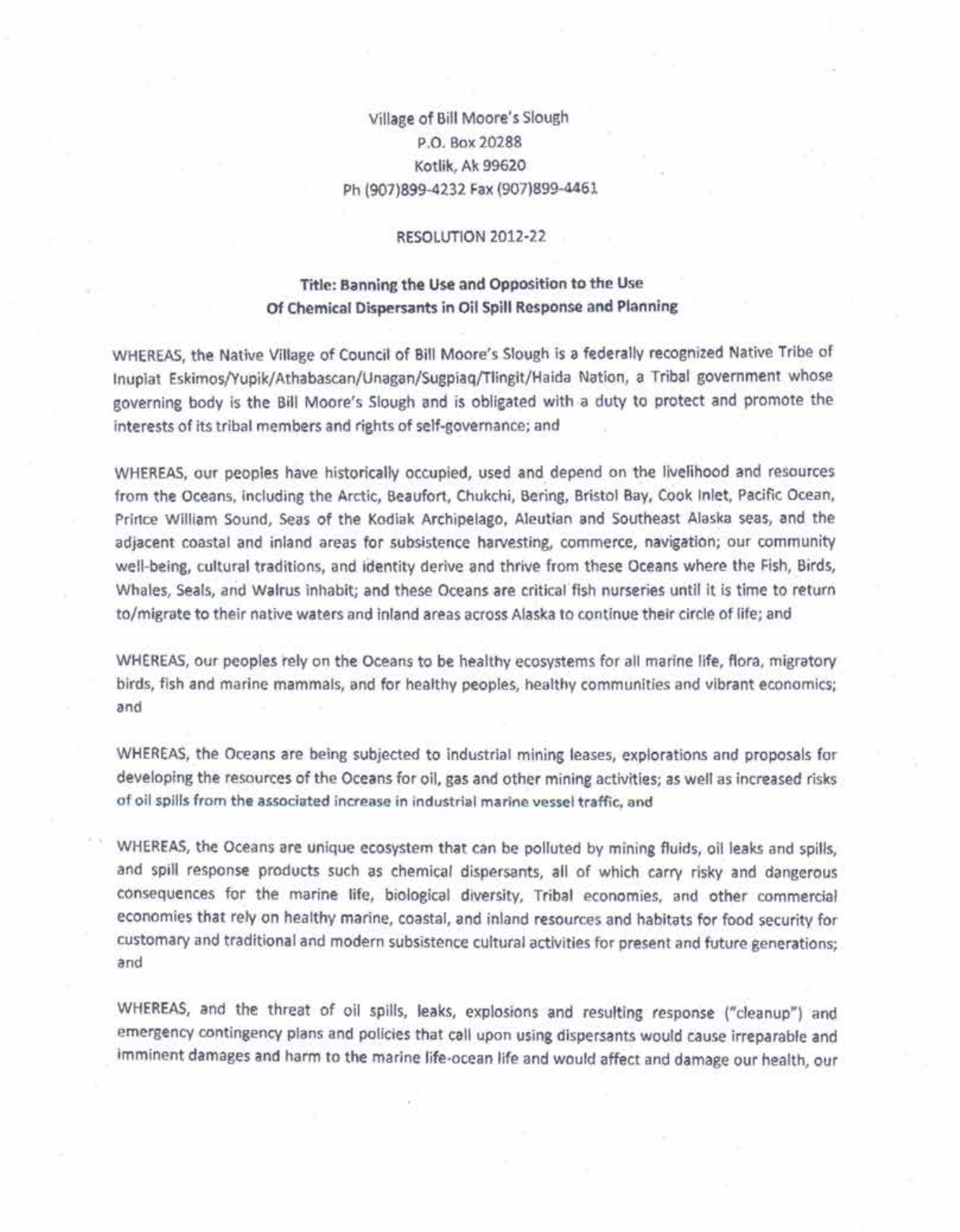
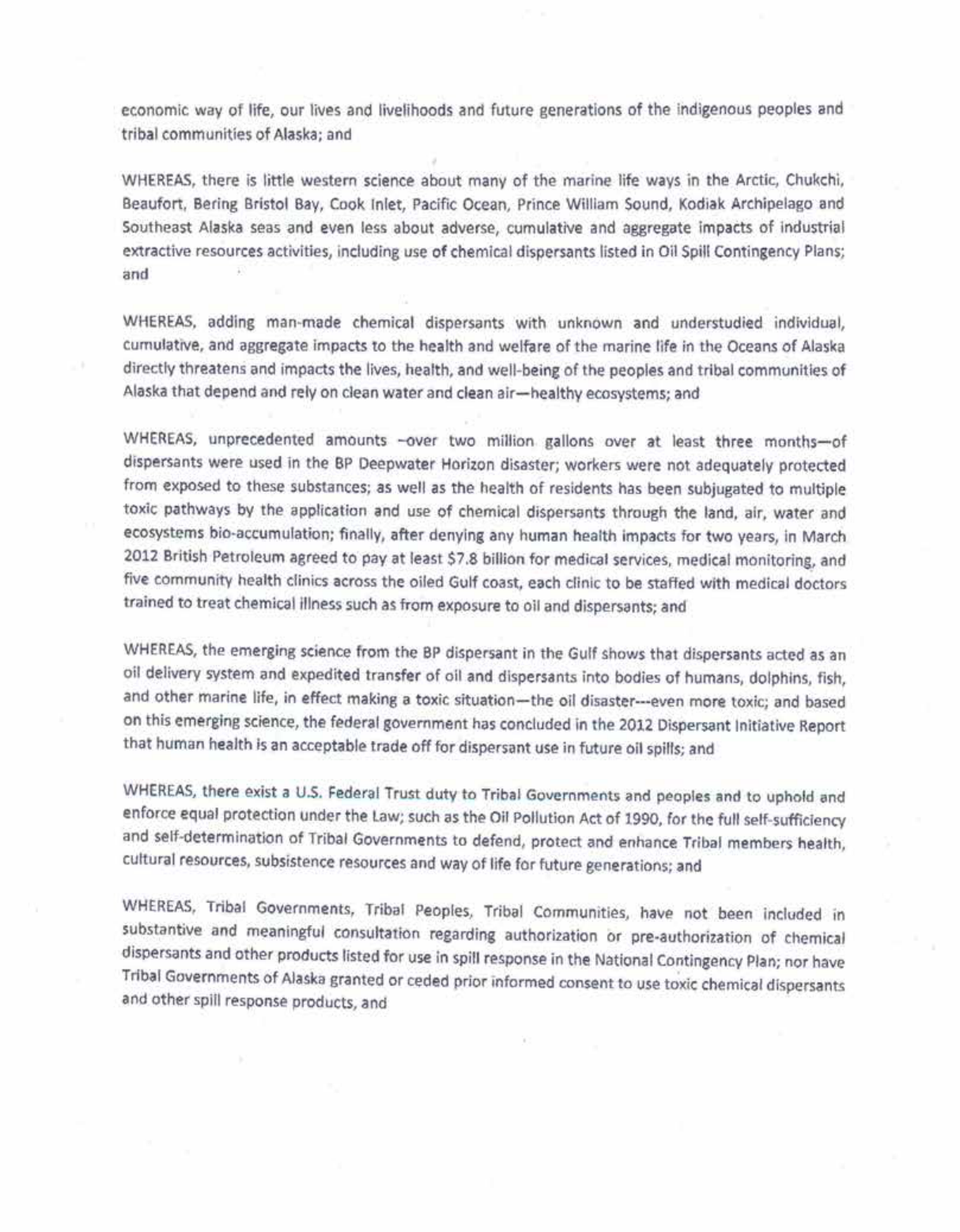
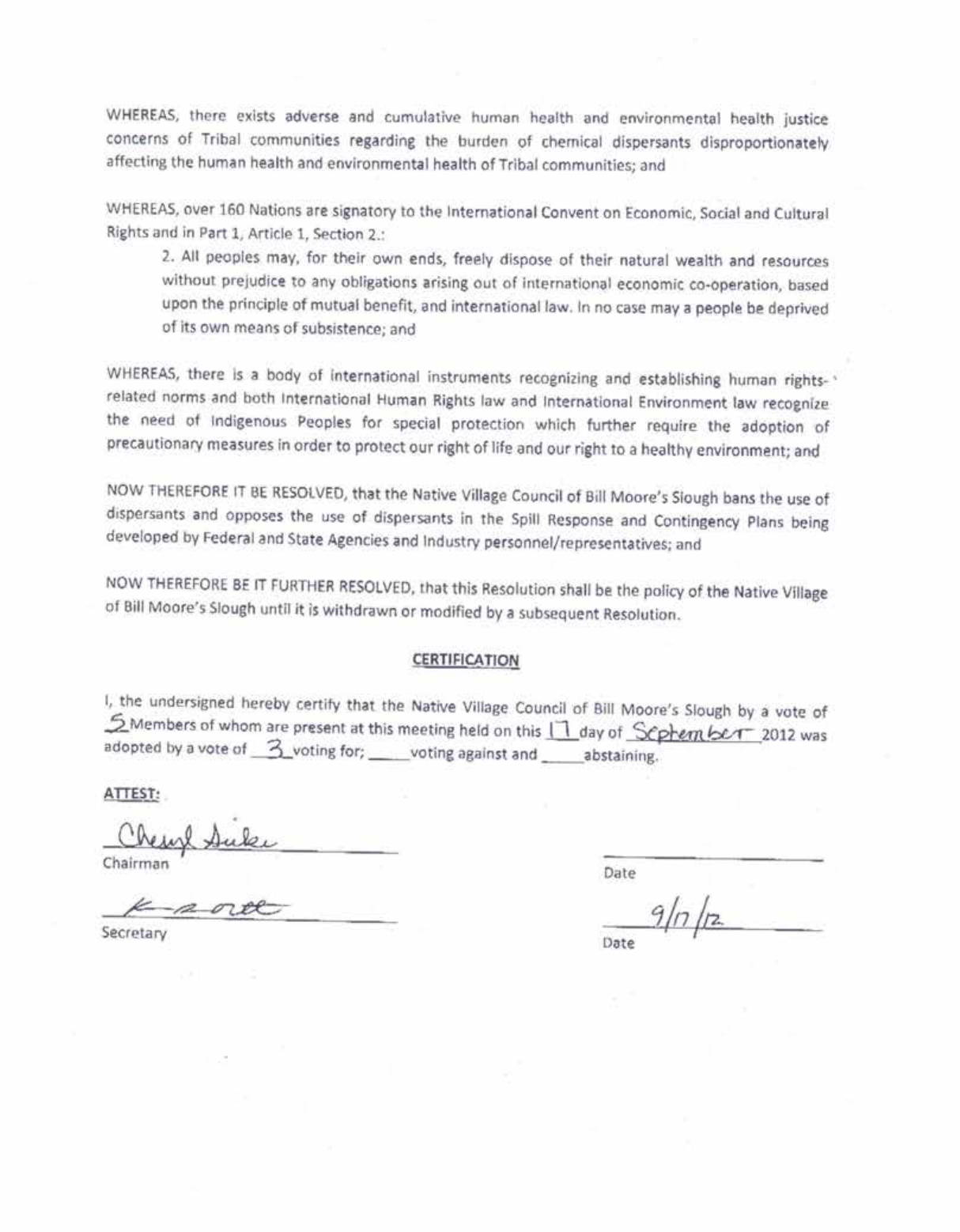

June 2, 2014
BY CERTIFIED MAIL
Ginny McCarthy, Administrator
U.S. Environmental Protection Agency
Ariel Rios Building
1200 Pennsylvania Avenue NW
Washington, DC 20460
SUPPLEMENT TO
PETITION FOR RULEMAKING
Under the Clean Water Act, 33 U.S.C. § 1321(d)(2)(G) and
the Administrative Procedures Act Title 5. Sec. 553(e)
TO AMEND NATIONAL CONTINGENCY PLAN (NCP) PRODUCT SCHEDULE
and Other Subparts Relating to Product Use
Dear Administrator McCarthy,
On November 12, 2012, a coalition of concerned citizens filed a petition for rulemaking
to amend the National Oil and Hazardous Substances Pollution Contingency Plan
(NCP), particularly but not exclusively the Subpart J Product Schedule. The EPA replied
on January 3, 2013, confirming receipt with assurances that EPA was considering a
proposed rulemaking to Subpart J and would welcome public comment on the proposed
rule during the public comment period.
In its response letter EPA also stated that “the Agency has already used information
and lessons learned from the BP Deepwater Horizon oil spill to make recommendations
for Area Committees and Regional Response Teams to revise Area Contingency Plans
and Regional Contingency Plans, respectively, until the Subpart J regulations are
amended.”
However, EPA has not even addressed internal concerns about inadequacies in the
NCP, raised by the EPA OIG in August 2011, despite reporting that the concerns would
be closed by early 2013, and that the proposed rulemaking would appear in the Federal
Register by August 30, 2012.
1
Yet is now 2014, and none of the issues of concern,
raised by the EPA OIG, have actually been closed, including several we addressed in
our petition. Further, EPA has given no confirmation of when it might open the public
comment period.
While we agree with EPA that lessons learned from the BP DWH disaster do
necessitate revisions to the NCP, we find it disrespectful of EPA to make
recommendations to the RRTs, while not inviting the public to formally comment and
share lessons that we have learned. In our original petition, like the EPA OIG, we
1
EPA Office of Inspector General, 2011, Revisions Needed to National Contingency Plan Based on the
[BP] Deepwater Horizon Oil Spill, Report No. 11-P-0534, August 25, 2011. See also, EPA Office of
Solid Waste and Emergency Response, letters to the EPA OIG, dated January 12 and February 7,
2012.

Supplement 2 of 37
focused on lessons learned from the BP DWH disaster, a major spill of conventional oil,
and our foremost concern was the unprecedented consequences to health from
widespread application of chemical dispersants during the disaster response. Many
citizens, organizations, and Alaska Tribes, including some members of our coalition,
have filed or endorsed resolutions, petitions and lawsuits, calling for a ban in the use of
chemical dispersants, because of concerns about harm to human health and the
environment.
However, workers and residents were also sickened from exposure during major fresh
water discharges of nonconventional oil, in particular, blended tar sands oil and
extremely volatile shale oils. These more recent spills have demonstrated a need for a
systemic revision of the NCP––which hasn’t been revised for twenty years. This
overhaul is urgent as crude oil by rail shipments terminating in the U.S. in 2010 have
increased by 5,600 percent over the five-year average from 2005 through 2009, and this
increase is largely due to unconventional oils.
2
The NCP was largely designed for
conventional crude oil spills at sea, not tars sands oil that sinks or extremely volatile
(frack) oil that explodes when spilled. This means that shippers are transporting oil
without viable contingency plans in violation of the law––and in defiance of common
sense.
In sum, EPA’s proposed rulemaking on the NCP, including Subpart J and related
subparts concerning product use, is long overdue. We find it necessary to supplement
the requests in our original petition, based on new evidence and scientific information
and the U.S. Dept. of Transportation’s recent emergency regulations for handling crude
oil by rail (discussed below). We have undertaken a comprehensive rewrite of Subparts
A, B, C, D, and J as these all relate to use of dispersants and other chemical agents.
We have noted where revisions are needed in other subparts and in the appendices, in
particular C, but have not rewritten these sections at this time. Our supplement includes
an overview and justification comments, and working draft revision language for the
purpose of inviting discussion about our concerns.
Submitted by,
Riki Ott, PhD
The Citizens’ Coalition to Ban Toxic Dispersants
Energy Democracy Program
Earth Island Institute
Berkeley, CA
www.dispersantban.org
joined by:
Walter B. Parker
former Chair of the Alaska Oil Spill Commission
Anchorage, AK
2
American Association of Railroads, 2013, Moving Crude Oil by Rail, a report, December 2013.
https://www.aar.org/keyissues/Documents/Background-Papers/Crude-oil-by-rail.pdf
Supplement 3 of 37
and, in addition, supported by:
Sam Gross, Board Member
California Student Sustainability Coalition
Gershon Cohen, PhD
Campaign to Safeguard America’s Waters
Cindy Zipf, Executive Director
Clean Ocean Action
John Knox and Dave Phillips, Co-directors
Earth Island Institute
Berkeley, CA
Dr. Lora Chamberlain
Frack Free Illinois
Chicago, IL
Dede Shelton, Director of Operations
Hands across the Sand
Vicci Hamlin
Michigan/Indiana Coalition Against Tar Sands–MI CATS
Chesterton, IN
Michael Stocker, Director
Ocean Conservation Research
Julia Olson, Executive Director
Our Children's Trust
Eugene, OR
Tom "Smitty" Smith
Public Citizen
Austin, Texas
Karen Hadden
Sustainable Energy and Economic Development (SEED) Coalition
Austin, Texas
Jason Page
Q4 Radio
Chicago, IL
Tabitha Tripp, spokesperson
Shawnee Sentinels
Illinois
Supplement 4 of 37
Debra Michaud
Tar Sands Free Midwest
Chicago, IL
Richard Charter, Senior Fellow
Coastal Coordination Program
The Ocean Foundation
Carl Safina, PhD
The Safina Center, formerly Blue Ocean Institute
Stony Brook University
Stony Brook, NY
Supplement 5 of 37
Justification for Supplement & Proposed Revisions
Supplement Overview
Synopsis of Proposed Revisions
Issues & Justification for Proposed Revisions
I. Subpart A––Introduction
A. Updating definitions relating to containment and removal of oil
1. Sinking agents
2. Other chemical agents
B. Updating definitions relating to oil and hazardous substances
1. Hazardous by nature
2. Calling a spade, a spade
II. Subpart B––Responsibility and Organization for Response
A. Contributing factors: Examining the evidence
1. Unlearned lessons from the Exxon Valdez: Sick workers
2. History repeats: Sick workers and sick general public
3. Conflicts of interest
4. Complacency
5. Addressing regional and area concerns
B. Proposed revisions
1. Adding permanent co-chairs
2. Adding Citizens’ Advisory Councils and Indian Tribes
3. Adding training for local residents and individuals
III. Subpart C––Planning and Preparedness
A. Integrating changes into planning structure
B. Creating Citizens’ Advisory Councils
C. Expanding the function of the ACPs
D. Eliminating conflicts of interest
IV. Subpart D––Operational Response and Phases for Oil Removal
A. Integrating changes into response structure
B. Integrating Citizens’ Advisory Councils into ACPs
C. Expanding the function of the ACPs
D. Eliminating conflicts of interest
V. Subpart E––Hazardous Substance Response
VI. Subpart G––Trustees for Natural Resources
VII. Subpart J––Use of Chemical Agents and Other Products
A. Adding threshold criteria for product use
B. Consultation under the Endangered Species Act (ESA)
C. General prohibitions
D. General data requirements for all products
E. Specific data requirements for all products
F. Removal products from Schedule

Supplement 6 of 37
Supplement Overview
The federal government has a fiduciary duty to protect public health, public trust
resources that support health and wellbeing of present and future generations, and
public access to our collective public assets. In essence, this means that federal, state,
and local governments are trustees, charged with managing trust assets on behalf of
the citizens who are trust beneficiaries. It also means that the government, all levels and
all branches, is responsible for creating, implementing, and enforcing laws and policies
to protect trust assets by holding polluters who despoil trust assets accountable to the
laws and policies.
3
This is especially relevant during responses to discharges or releases of oil and
hazardous substances because the despoiler––the spiller––is duty-bound to its
shareholders to minimize its liability, which often comes at the expense of protecting
human safety and health and the environment. The fiduciary duties of government to
protect public assets during spill response conflict with the fiduciary duties of the spiller
to protect its stakeholders. Therefore, it is critical that government trustees recognize
this inherent conflict of public versus private interests and establish, implement, and
enforce laws and policies that make protecting public health and welfare and the
environment in the best financial interests of the spiller.
This starts by passing strong laws and updating them based on science and lessons
learned during spills to keep the laws relevant and useful. Unfortunately, the pollution
laws have not been kept current. The most egregious example involves the use of
dispersants.
The first large-scale use of dispersants occurred after the tanker Torrey Canyon
grounded off the coast of England in 1967 and spilled over 36 million gallons of oil. Less
than 12 hours after the Torrey Canyon grounded, the Royal Navy sprayed a dispersant
produced by British Petroleum, BP1002, onto the oil slick.
4
The resulting damage to the
environment sparked a public aversion to use of dispersants that remains to this day.
Two years later, a Union Oil drilling platform blew out, spewing up to 42 million gallons
of oil off the coast of Santa Barbara. The Coast Guard used chemical dispersants on
the oil near shore. The general lack of preparedness and failed disaster response
triggered sustained public outrage, leading to massive legal and regulatory reforms
during the 1970s. This included a major overhaul of the 1948 Federal Water Pollution
Control Act in 1972, which established a national response system for oil spills. 33USC
311(j). Congress incorporated dispersants and dispersant use into these amendments.
33 USC 311(d)(2)(F) and (G).
As pointed out in our original petition, the science began to catch up and, by the 1980s,
it was evident that dispersants use in shallow seas could cause more harm than good.
3
Wood, Mary Christina, 2014, Nature’s Trust: Environmental Law for a New Ecological Age (Cambridge
University Press, 2014), p. 207.
4
Queale, Abbey J., 2012, Responding to the response: Reforming the legal framework for dispersant use
in oil spill response efforts in the wake of Deepwater Horizon, Hastings West-Northwest Journal of
Environmental Law, Policy, Winter 2012.
Supplement 7 of 37
The Exxon Valdez oil spill in 1989 was the first wide-scale experimental use of
dispersants in the United States. Once again, national preparedness and response for
oil disasters was found lacking. The resulting law passed in the wake of the nation’s
newest, largest maritime oil disaster, the Oil Pollution Act of 1990, once again ignored
warnings from the public and science about harmful effects from dispersants. The new
law created protocol mandating an expedited decision-making process for dispersants
alone over other chemical agents and assigning this task to newly created Area
Committees. 33 USC 311(d)(2)(F) and (G) and (j)(4), respectively. The Area
Committees were made part of new national planning and response organizational and
structural framework, implemented through the NCP. In essence, dispersant use
became institutionalized as part of, and integrated into, this new national response
system. Meanwhile, the science continued to build, showing evidence of harm to wildlife
and people from dispersant use, as discussed in our original petition and in this
supplement.
The pollution laws also require the President to protect public health by first making a
determination that there may be an imminent and substantial threat to the public health
or welfare and then by directing all federal, state, tribal, and private actions to remove
the discharge or to mitigate or prevent the threat of the discharge. 33 USC 311(e)(1)
and (c)(2), respectively. The implementing regulation, the NCP, essentially restates this
as priorities during oil spill response to: first, protect safety of human life; second,
stabilize the situation to prevent the event from worsening; and, third, minimizing
adverse impact to the environment by using containment and removal tactics. 40 CFR
§300.317(a) to (c).
It is logical to assume, therefore, that any operations undertaken during spill response
must support safety, i.e., protection of human life and health; stabilizing the situation by
preventing more harm and, by implication, doing no more harm; and by using methods
that contain and remove oil. However, we find this not to be the case.
For example, dispersants do not remove oil from the environment, they act to sink oil
and spread it throughout the water column. There is no consideration for the possibility
that dispersant use, or use of any other chemical agents for that matter, may do more
harm than good; there is no protocol for stopping use of products that behave differently
in the field than in the lab and cause unanticipated harm to people and wildlife. There
are no protocols or criteria for making a determination when a situation poses an
imminent or substantial threat to public health or welfare; there are no protocols or
criteria for protecting public health and welfare in situations that are determined to be or
pose a substantial threat. There is an organizational structure that gives far too much
authority to the “responsible party”––the spiller––and far too little to the citizenry whose
effective engagement is critical to the proper functioning of industry, government, and
civil society. There is a decision-making process that allows any product to be used
anytime, even ones not on the Product Schedule, which negates the entire pre-spill
planning process and ignores science. There are technical data requirements for testing
products that are so pathetically outdated that the data give little indication of the
product’s true toxicity in or to the environment.

Supplement 8 of 37
To add to these critical issues, oil spill response since inception has focused on large
maritime spills of conventional oil and use of chemical agents, in particular, dispersants.
The 1970s standards are grossly inadequate to protect public health and welfare and
the environment from spills of unconventional, ultra-hazardous oils such as tar sands
oil, blended tar sands oil (dilbit), and extremely volatile oil produced by hydraulic
fracturing or similar technologies. The rapid expansion of oil and gas activities and
increased frequency of spills, especially of ultra-hazardous oil, have created large areas
with at-risk populations, not just in remote areas, but also populated urban areas
5
… yet
the NCP is silent on how to “minimize the threat to public health and welfare and the
environment” from these unconventional oils.
We have proposed revisions to the NCP to address these issues. However, our
revisions only partially fix the problems we have raised because some of these
problems are rooted in the pollution laws––the Clean Water Act and the Oil Pollution
Act. In particular, the statutory requirement for dispersants locks in an outdated and
harmful response tool that is demonstrably contrary to the overall goal of the national
contingency plan; i.e., to contain and remove oil from the environment. This requires a
Congressional remedy. It’s as if we are playing a game with broken rules, but they are
rules nonetheless, so we have patched and mended, ripped and replaced, and woven
new bits, all within the boundaries of the broken rules. A synopsis of our proposed
revisions precedes a more detailed justification for each subpart.
Synopsis of Proposed Revisions
Subpart A: Definitions have been updated, revised, or added: to accommodate recent
science findings that oil is more toxic than thought in the 1970s; to recognize that
chemical agents can cause unintended harm, that use does not guarantee intended (or
any) results, and that the ability of a substance to sink oil is not limited to its specific
gravity; to allow for establishing criteria and protocol for protecting worker and public
health and safety; and to allow for effective citizen oversight.
Subpart B: The organizational structure was changed to accommodate, during planning
and response activities, meaningful protection of human safety and health, public
welfare, and the environment from a (now recognized as) hazardous oil discharge and
from additional hazards posed by use of chemical agents by: adding two permanent co-
chairs from OSHA and HHS to the NRT and RRT; assigning the OSHA and HHS PCCs
authority and responsibilities, and providing protocol and criteria, to effectively and
efficiently conduct their assigned duties to protect human safety and health; adding lead
agency representatives from the 13 RRTs (chair, vice-chair, and permanent co-chairs)
to the NRT to increase the likelihood that the NCP will accommodate regional needs to
make the NCP more effective and efficient; adding a Citizens’ Advisory Council for
every Area Committee and adding representatives from the CACs and Indian Tribes to
RRTs to increase the likelihood that RCPs will accommodate area/ local needs to make
the RCPs more effective and efficient; expanding duties throughout the structure to not
5
Lowy, Joan, 2014, Pipeline oversight called inadequate, Associated Press, 5/9/14.
http://bigstory.ap.org/article/federal-watchdog-pipeline-safety-oversight-shoddy
Supplement 9 of 37
only implement plans, but to monitor, evaluate, report, and revise the NCP, RCPs, and
ACPs on regular basis; and establishing oil spill removal organizations at appropriate
locations along coasts and inland along conventional and ultra-hazardous crude-
carrying pipeline and rail car corridors with trained personnel in sufficient numbers to
immediately remove a worst case discharge.
Subpart C: Planning and preparedness was revised to provide meaningful protection of
human safety and health, public welfare, and the environment by: integrating the above
changes into the planning structure; creating the Citizens’ Advisory Council, providing it
structure, and assigning it authority and duties; expanding the function of the ACPs; and
eliminating situations that create conflicts of interest between the government and the
responsible party.
Subpart D: Operational response was revised to provide meaningful protection of
human safety and health, public welfare, and the environment by: integrating the above
changes into the response structure; integrating authority and duties of the Citizens’
Advisory Councils into the ACPs and RRTs; expanding the function of the ACPs; and
eliminating situations that create conflicts of interest between the government and the
responsible party.
Subpart J: Use of chemical agents and other products was revised to provide
meaningful protection of human safety and health, public welfare, and the environment
by: adding threshold criteria for product use; integrating the above changes into the
decision-making structure and creating a consensus process for decision-making;
eliminating the preference for use of dispersants; requiring an emergency stop use plan
(as well as a preauthorization plan) for product use; prohibiting certain elements or
conditions in chemical agents; requiring data and testing for all chemical agents and
products; creating new tests to determine if products are sinking agents and requiring
use of updated toxicity tests; adding a requirement to retest products when testing
protocols are updated or product is reformulated; and adding a process and criteria for
removing products from the Product Schedule.
In addition, changes were made to Subpart E to address intentional releases of
potentially hazardous chemical agents during oil spill response and to Subpart G to
integrate Indian Tribes as Trustees for Natural Resources.

Supplement 10 of 37
Issues & Justification for Proposed Revisions
I. Subpart A––Introduction
A. Updating definitions relating to containment and removal of oil
1. Sinking agents
Sinking agents are expressly prohibited by Subpart J regulations, 40 CFR 300.910(e):
“Sinking agents shall not be authorized for application to oil discharges.” The reason for
banning sinking agents is obvious: sinking oil makes mechanical containment and
recovery impossible. Sinking agents do not reduce the amount of oil entering the
environment but instead act to move the oil into the water column.
For forty years, EPA has regarded sinking agents as substances that can physically
sink the pollutant below the water’s surface. Sinking agents are defined as “those
additives applied to oil discharges to sink floating pollutants below the water surface.”
40 CFR 300.5. If the specific gravity is greater that 1.0, the product becomes a “sinking
agent” and cannot be used on or near water during oil spills. The substances envisaged
were clay, sand and cement, and the NCP regulations have prohibited their use in oil
spill response.
The NCP also defines dispersants as “those chemical agents that emulsify, disperse, or
solubilize oil into the water column or promote the surface spreading of oil slicks to
facilitate dispersal of the oil into the water column.” 40 CFR 300.5. In other words,
dispersants act on oil to sink it in some form or other, thereby impeding mechanical
containment and recovery. However, since dispersants have a specific gravity near or
slightly less than 1.0, the product has not been considered a sinking agent.
6
This is pure semantics and defies common sense. Studies conducted after the BP DWH
disaster on fate of dispersant and oil combined found that surface application of
dispersants resulted in subsurface plumes of emulsified oil that have persisted,
impeding containment and removal of oil from both water and land and prolonging
recovery.
7
6
Dispersant and oil combined is also more toxic than oil alone, which conflicts with the stated NCP
priorities to do no more harm to people or the envirionment, as was addressed in our original petition
and below in Subpart B comments.
7
Kujawinski, EB, et al., 2011, Fate of Dispersants Associated with the [BP] Deepwater Horizon Oil Spill,
Environmental Science & Technology 45(4):1298-1306.
Paris, CB, et al., 2012, Evolution of the Macondo well blowout: Simulating the effects of the circulation
and synthetic dispersants on the subsea oil transport, Environmental Science & Technology
46(24):13293-13302.
Sammarco, Paul, et al., 2013, Distribution and concentrations of petroleum hydrocarbons associated with
the BP/Deepwater Horizon Oil Spill, Gulf of Mexico, Mar. Poll. Bull. 73: 129–143.
Wade, Terry, et al., 2011, Analyses of water samples from the deepwater horizon oil spill: Documentation
of the subsurface plume, in American Geophysical Union, Monitoring and Modeling the Deepwater
Horizon Oil Spill: A Record-Breaking Enterprise, Geophysical Monograph Series, 195: 77–82.
Zuijdgeest A, and M Huettel, 2012, Dispersants as Used in Response to the MC252-Spill Lead to Higher
Mobility of Polycyclic Aromatic Hydrocarbons in Oil-Contaminated Gulf of Mexico Sand. PLoS ONE
7(11): e50549. doi:10.1371/journal.pone.0050549.

Supplement 11 of 37
THEREFORE, WE RECOMMEND an updated definition of sinking agents and a new product
testing requirement (in Subpart J) to determine if the product directly or indirectly sinks
oil.
2. Other chemical agents
There are two issues of concern. First, it is not uncommon for dispersants to be labeled
by the manufacturer as surface-washing agents, bioremediation agents, or other
chemical agents. According to EPA, the agency “is concerned that these categories are
often interchanged, which leads to misuse of the products. Surface-washing agents
(SWAs) have been used on open-water spills, while dispersants have been used to
wash oil from sandy beaches, driving the oil deeper into the substrate. Both misuses
may cause further harm to the environment than the oil alone.”
8
For example, during the Exxon Valdez oil spill response, Inipol EAP22, an experimental
product listed as a “bioremediation” agent, was sprayed directly on beaches. Inipol
contained a carrier solvent, 2-butoxyethanol, also found in the dispersant Corexit
9527A. Inipol behaved more like a dispersant than a bioremediation agent: It stripped oil
off rocks, sickened workers who reported symptoms characteristic of overexposure to 2-
butoxyethanol, killed wildlife, despite “scary balloons” posted on beaches to, allegedly,
warn away both people and animals.
9
Alaska Natives from Chenega Bay reported
seeing thick windrows of dead juvenile salmon washed up on one Inipol-treated beach
with the first flood tide after treatment.
10
After two seasons of field work, three
independent reviewers “found no significant difference between treated and untreated
areas” and concluded, “given the degradation rates of untreated versus treated being
essentially the same, the recommended best course of action is not to add fertilizer”
(emphasis in original).
11
Inipol is still listed as a bioremediation agent on the NCP
Product Schedule, although Exxon no longer manufactures it.
Second, in oil spill response, there seems to be a mindset among the lead agencies and
the Coast Guard, in particular, that oil is “the enemy” and that any “countermeasure”
(chemical agent) may be used to mitigate the threat from the oil. There is little or no
8
Nichols,W. J. 2001. The U.S.EPA: National oil and hazardous substances pollution contingency plan,
Subpart J Product Schedule (40 CFR 300.900). Inernatl. Oil Spill Conf. 2001:1479–1483, on p. 1481.
9
City of Cordova, Alaska, 1989, ADEC report: Notice of violation issued to Exxon for improper application
of Inipol, Cordova Fact Sheet, September 6, 1989: 2[34].
McDowell, T, 1989, Seldovia town meeting with spill agency representatives, August 24. VHS. ARLIS,
Anchorage, AK. videos.
Ott, Riki, 2004, Sound Truth and Corporate Myths, Dragonfly Sisters Press: Cordova, AK, pp. 97–111,
118–121.
Spence, H, 1989, Fertilizer blamed for illnesses, Homer News, August 24.
Spence, H, 1989, Seldovians charge workers’ health neglected, Homer News, August 31.
10
Pete Kompkoff, Native Village of Chenega, pers. comm., August 1989, in Ott, Sound Truth, p. 99.
11
Capuzzo, J., J. Farrington, and S. Kellogg, 1990, Summary of reviewers’ comments, in Prince, R.C.,
J.R. Clark, and J.E. Lindstrom 1990, 1990 Bioremediation Monitoring Program, Water Research
Center, Fairbanks, AK:University of Alaska.
Capuzzo, J., J. Farrington, and S. Kellogg, 1990, Reviewers’ executive summary, in Prince, Clark, and
Lindstrom, 1990.

Supplement 12 of 37
consideration that many of the products currently listed on the NCP Product Schedule
are quite harmful to people and wildlife, and no consideration the oil and product
combined may be even more toxic than the oil itself, as discussed in our original petition
and elsewhere in this supplement.
THEREFORE, WE RECOMMEND updating definitions of all chemical agents to clarify that
product use “is likely to” effect a certain state, rather than a stated certainty; that
products “may,” not will, be used; and that a qualifier that product use will not cause
harm to public health or welfare or the environment.
B. Updating definitions relating to oil and hazardous substances
1. Hazardous by nature
This section addresses two issues of concern. First, so-called “conventional” oil is more
toxic than thought in the 1970s as we addressed in our original petition.
12
It is now well
established in the scientific literature that exposure to, ingestion or inhalation by, or
assimilation into humans (or other organisms) of oil in any kind or form may reasonably
be anticipated to cause death, disease, behavioral abnormalities, cancer, genetic
mutation, endocrine disruption or other physiological malfunction (including reproductive
problems), or physical deformations in humans or their children (or organisms or their
offspring)––to borrow language from the definition of “pollutants or contaminants” in 40
CFR 300.5. In other words, conventional oil is now recognized as causing the same
health issues as hazardous substances because crude oil is a hazardous substance
and has finally been recognized as such.
Secondly, so-called “nonconventional” oil is even more hazardous than conventional oil
by nature. Tar sands oil is concentrated in heavy metals and the polycyclic aromatic
hydrocarbons or PAHs.
13
Extremely volatile oil or “light tight oil” produced by hydraulic
fracturing is concentrated in lighter, more volatile aromatic hydrocarbons. The human
and environmental health impacts of PAHs and VOCs (such as BETX) were discussed
in our original petition. These “ultra-hazardous” oils are made even more hazardous by
the addition of diluents or drilling fluids, which are human health hazards in and of
themselves,
14
similar in nature to the dispersants that were discussed at length in our
original petition.
Not surprisingly, more recent studies on these ultra-hazardous oils have confirmed that
exposure has caused increased cancer rates, prenatal developmental problems, and a
12
Peterson, Charles, et al., “Long-term Ecosystem Responses to the Exxon Valdez Oil Spill,” Science
2003; 302:2082–2086.
13
Bailey, Diane and Danielle Droitsch, 2014, Tar sands crude oil: Health effects of a dirty and destructive
fuel, NRDC. http://www.nrdc.org/energy/tar-sands-health-effects.asp
Tenenbaum, David, 2009, Oil Sands Development: A Health Risk Worth Taking? Environ Health
Perspect. Apr 2009; 117(4): A150–A156. http://www.ncbi.nlm.nih.gov/pmc/articles/PMC2679626/
14
Schlettler, Ted, Gina Solomon, Maria Valenti, and Annette Huddle, 1999, Generations at Risk:
Reproductive Health and the Environment (MIT Press).
Song, Lisa, 2012, A Dilbit Primer: How it is different from conventional oil, Inside Climate News, June 26.
http://insideclimatenews.org/news/20120626/dilbit-primer-diluted-bitumen-conventional-oil-tar-sands-
Alberta-Kalamazoo-Keystone-XL-Enbridge

Supplement 13 of 37
range of cardiovascular, dermal, gastrointestinal, neurological, ocular, renal, and
respiratory impacts.
15
Further the increased accident rate of crude rail car derailments
and fiery explosions near populated areas has led to fines for violations of safety codes,
and calls from first responders and others for stronger safety measures.
16
In late
February, the US DOT issued an emergency order requiring shippers to test oil product
from the Bakken region for proper hazard classification, while also requiring transport of
crude oil in the most sturdy state-of-art tanker cars. In May, DOT issued another
emergency order requiring railroads to disclose the expected routes across counties
and states, volume of oil being shipped, and a responsible party.
17
15
Bailey, Diane and Danielle Droitsch, 2014, Tar sands crude oil: Health effects of a dirty and destructive
fuel, NRDC. http://www.nrdc.org/energy/tar-sands-health-effects.asp
Federman, Adam, 2014, Hazardous Cargo: Shipping Highly Flammable Bakken Crude Oil by Rail, Earth
Island Journal, summer 2014.
http://www.earthisland.org/journal/index.php/eij/article/warning_highly_flammable/
Huffling, Katie, 2014, “Susceptibility During Pregnancy: What You Need to Know,” Alliance of Nurses for
Healthy Environments, webinar hosted by the Center for Environmental Health on May 5, 2014.
http://www.ceh.org/news-events/events/content/fracking-maternal-health-what-it-means-for-your-
family/
Kwiatkowski, Carol, 2014, “Natural Gas Development, Public Health, and Protecting the Most Vulnerable
Populations,” The Endocrine Disruption Exchange, webinar hosted by the Center for Environmental
Health on April 21, 2014. http://www.ceh.org/news-events/events/content/fracking-maternal-health-
what-it-means-for-your-family/The Endocrine Disruptor Exchange maintains a publicly available
database, papers, lectures, and other material on the potential health effects of chemicals used
during natural gas operations, including fracking. http://endocrinedisruption.org/chemicals-in-natural-
gas-operations/chemicals-and-health
Michigan Dept. of Community Health, 2010, Acute Health Effects of the Enbridge Oil Spill, rev. Dec. 20,
2010.
Paulson, Jerome, 2014, “Unconventional Natural Gas Extraction and Special Vulnerabilities for Children,”
webinar hosted by the Center for Environmental Health on April 21, 2014. http://www.ceh.org/news-
events/events/content/fracking-maternal-health-what-it-means-for-your-family/
Stanbury, Martha, et al., 2010, Acute Health Effects of the Enbridge Oil Spill, Michigan Dept. of
Community Health, rev. Dec. 20, 2010.
16
Brown, Matthew and Joan Lowy, AP, 2014, Oil train wrecks spur railroad safety measures, SFGate,
2/22/14.
Brown, Matthew and James MacPhearson, AP, 2014, Warning issued about oil shipped from ND, Mont.,
Yahoo News, 1/3/14. http://news.yahoo.com/warning-issued-oil-shipped-nd-mont-185942105.html
Gold, Russell, and Laura Stevens, 2014, US issues emergency testing order to crude oil shippers, The
Wall Street Journal, Feb. 26.
http://online.wsj.com/news/articles/SB10001424052702303880604579405412862500426
Karnowski, Steve, AP, 2014, Lawmakers: Minn. needs stronger oil spill response, Statesman.com,
2/12/14. http://www.statesman.com/ap/ap/environment/minn-bill-to-protect-against-oil-
derailments/ndLpX/
MacPherson, James, N.D. oil leaks go unreported, Associated Press, Dec. 27, 2013
.
McNish, Jacquie and Grant Robertson, 2013, The deadly secret behind the Lac Megantic inferno, The
Globe and Mail, 12/3/13. http://www.theglobeandmail.com/report-on-business/industry-news/energy-
and-resources/the-hazardous-history-of-the-oil-that-levelled-lac-megantic/article15733700/
17
HazMat staff, 2014, US issues emergency order for crude-by-rail: Emergency orders protect the public,
environment from harm created by imminent hazard, HazMat Management, Daily News, Feb. 27.
http://www.hazmatmag.com/news/us-issues-emergency-order-for-crude-by-rail/1002936904/?&er=NA
Lowy, Joan, AP, 2014, Government issues emergency order on oil trains, Associated Press, May 8, 2014.
http://www.houstonchronicle.com/business/energy/article/Government-issues-emergency-order-on-
crude-oil-5461208.php

Supplement 14 of 37
These findings, and the fact that the NCP was designed for spills of conventional crude
oil that foul surface waters and shores rather than oils that sink or explode,
18
call into
question the forty-plus year distinction between oil and hazardous substances in the
NCP.
2. Calling a spade, a spade
At a minimum, we find that ultra-hazardous oils are, and should be designated as,
hazardous substances, pollutants, or contaminants––at least for the purposes of the
NCP, for the following reasons. First, it’s hazardous! If the stuff requires extra
precautions and safety procedures during normal handling and transportation to
minimize harm to first responders and the public, then logic dictates that ultra-
hazardous oils would also require extra precautions and safety procedures during spill
response.
Second, none of products currently on the Schedule apply to ultra-hazardous oil.
Testing protocols in appendix C to this part require use of standard reference oils––
conventional oils––to test products, not ultra-hazardous oils. The NCP itself was
designed for conventional oil that floats with a priority for mechanical containment and
removal: This entire premise is a nonstarter for oil that is likely to sink or explode. This
means ultra-hazardous oil is currently being shipped without a viable contingency plan,
which is not legal. It also means that the rapid expansion of ultra-hazardous oil and gas
activities and increased frequency of spills have created large areas of our country with
at-risk populations, not just in remote areas, but also populated urban areas. This is a
recipe for disaster.
Finally, based on the 2010 Enbridge tar sands oil and diluent (dilbit) release in Battle
Creek, Michigan, the largest non-maritime release of oil and ultra-hazardous oil in the
U.S., the response resembled more of a hazardous substance response than an oil spill
response,
19
minus adequate PPE for workers, adequate protection for public health, an
informed public, a community relations plan, and community participation in decision-
making about remedial activities. Billed as the most expensive “oil” spill cleanup on
record, costs of $1,185 per gallon were also on par with a release of hazardous
substances rather than an oil discharge.
20
Given this situation, we find there are present and reasonable-beyond-doubt risks of
substantial threats to public health or welfare from releases of ultra-hazardous oils. This
is a situation where lack of full scientific certainty should not be a basis for postponing
effective actions to reduce the threat and to protect human lives and public health.
18
Peterson, Charles, et al., 2012, A tale of two spills: Novel science and policy implications of an
emerging new oil spill model, BioScience 62: 461–469.
19
Nikiforuk, Andrew, 2013, Michigan’s mysterious tar-like rocks, The Tyee, Dec. 16, 2013.
http://thetyee.ca/News/2013/12/16/Michigan-Tar-Rocks/
Nikiforuk, Andrew, 2013, Mystery of Michigan tar rocks solved?, The Tyee, Dec. 17, 2013.
http://thetyee.ca/News/2013/12/17/Michigan-Tar-Rocks/
20
Linnitt, Carol, 2013, Official price of the Enbridge Kalamazoo spill, a whooping $1,039,000,000,
DesmogCanada, August 26, 2014. http://desmog.ca/2013/08/26/official-price-enbridge-kalamazoo-
spill-whopping-1-039-000-000
Supplement 15 of 37
THEREFORE, WE RECOMMEND that the EPA immediately adopts a precautionary
approach regarding ultra-hazardous oils and promulgates emergency regulations
designating ultra-hazardous oils as a hazardous substance for the purposes of the
NCP. A cost-benefit analysis should not be required for this emergency designation.
These protections may be relaxed only if further scientific findings emerge that provide
sound evidence that no harm will result to the populations most at-risk from the threat
posed by ultra-hazardous oils.
FURTHER, WE RECOMMEND that:
a) the definition of oil includes language to accommodate the post-Exxon Valdez
science paradigm shift that PAHs cause long-term harm to humans and wildlife;
b) a new definition is included for ultra-hazardous oils;
c) the definition of hazardous substance includes ultra-hazardous oils and other
natural gas substances and derivatives that are currently exempted;
d) the definition of pollutant or contaminant includes ultra-hazardous oils and other
natural gas substances that are currently exempted, as well as chemical agents
intentionally released during oil spill response that contain known or suspected
toxic or hazardous ingredients;
e) the definition of discharge does not include ultra-hazardous oils (which will be
considered as “releases” rather than discharges); and
f) the definition of remove or removal is made identical for oil and for hazardous
substances.
C. Updating definitions relating to public health and welfare
Definitions have been added or revised to allow for creation of protocols and a plan to
protect worker safety and health and public health and welfare, including threshold
criteria and requirements to implement, monitor, and evaluate the plans, as discussed in
the following subparts.
D. Updating definitions relating to organizational structure and responsibilities
Definitions have been added or revised to better protect worker safety and health and
public health and welfare, as discussed in the following subparts.
Subpart B––Responsibility and Organization for Response
In this section, we address one issue of concern, namely that workers and the general
public get sick during oil spill response, and we discuss the multiple factors that we
believe contribute to this.
Illnesses from exposure to oil and chemicals associated with oil activities occur despite
an elaborate legal and regulatory framework in the U.S. supposedly designed to protect
worker safety and health, public health and welfare, and the environment. As

Supplement 16 of 37
documented in our original petition, exposure to spills of conventional oil harms health
of workers and residents alike, revealing that a much broader segment of the population
is at-risk during oil discharges than response workers alone. However, similar harm has
since been found, following exposure to spills of nonconventional oil such as blended
tar sands oil and extremely volatile shale oils, as discussed earlier.
Thus, we find it necessary to examine this framework in light of past major spills in the
U.S. to determine why it has consistently failed to protect people––and to supplement
our original petition with additional or revised recommendations for the NCP rulemaking
to support the stated number one priority during spill response: protecting human lives
and human health.
A. Contributing factors: Examining the evidence
1. Unlearned Lessons from the Exxon Valdez Oil Spill: Sick workers
The Exxon Valdez was the first oil spill response conducted under the OSH Act’s
Hazardous Waste Operations and Emergency Response (HAZWOPER) standard,
21
even though oil spill waste had previously been designated as a hazardous
substance.
22
Within weeks, the Alaska Dept. of Labor reduced the required 40-hour
HAZWOPER training to 4-hours at Exxon’s request. Although OSHA’s research arm,
NIOSH, deemed Exxon’s 4-hour training adequate, critics found numerous flaws with
the training and overall Worker Safety Program. For example, workers were not
prescreened for medical issues that may have been exacerbated or triggered by
exposure to oil; they were not properly trained to recognize symptoms of chemical
exposure; they were not properly equipped with respirators and Personal Protective
Equipment (PPE) as required under the HAZWOPER standards; and when workers
started to get sick, there were no feedback loops to determine the cause of the problem
and address it, much less to provide follow up monitoring and health care for sick
workers.
23
In addition, there were long-standing problems with OSHA standards and inspections.
24
First, OSHA still relies on inappropriate surrogates such as mineral oil and particulate
dust to establish safety standards for oil mist and PAHs, respectively, when these
surrogates do not even come close to accurately representing the health hazards of the
original chemicals. Second, OSHA did not reduce the standard Personal Exposure
Levels (PELs) to accommodate the extended work hours during oil spill response and
the fact that many workers were housed on vessels near or in contaminated sites. Third,
21
OSHA, 1989. Hazardous Waste Operations and Emergency Response Standard, 29 CFR 1910.120
(Federal Register 54 [42]:9294-9336). U.S. Department of Labor, March 6, 1989.
22
40 CFR 300.5 definition of hazardous substance.
23
Stuart, T. 1989, Alaska Dept. of Labor letter to Dr. Knut Ringen, Director, Laborers’ National Health and
Safety Fund, April 21, in U.S. Congress House, 1989a, 1061–1062.
Teitelbaum, Daniel T., MD, 1994. Deposition, October 12, in Stubblefield v. Exxon (1994) in Riki Ott,
Sound Truth and Corporate Myths, (Dragonfly Sisters Press, 2004).
VECO, Inc., 1989, VECO EVOS hazardous waste cleanup training video. VHS, Alaska Resource Library
and Information Services, Anchorage, AK.
24
Documentation for this paragraph is found in two main sources: the Teitelbaum deposition and Ott,
Sound Truth, especially chapters 1–3 and 10.

Supplement 17 of 37
regarding inspections: OSHA did not have anywhere near a sufficient number of
personal to monitor and evaluate Exxon’s Worker Safety Program for the scale of the
response; OSHA was prevented from inspecting on-the-water operations because of
competing jurisdiction with the U.S. Coast Guard; and OSHA never subpoenaed
Exxon’s medical records and air quality monitoring data because of budget issues.
25
Fourth, OSHA authorities did not recognize Inipol EAP 22 and Corexit 9580 as hazards
“likely to cause death or serious harm if appropriate monitoring and measuring is not
performed” until 1990, the year after the main response operations,
26
despite ample
warnings on the MSD Sheets.
Finally, OSHA’s authority for worker health and safety was (and is) limited by
geographic considerations. In particular during on-the-water response operations
involving vessels, the U.S. Coast Guard and OSHA are responsible for different
elements of worker health and safety under a complex and nuanced regulatory
framework that looses the primary focus–worker safety and health–in a maze of
competing jurisdictional requirements. But the bottom line is that the Coast Guard is the
wrong agency to be in charge of worker health and safety in a hazardous waste
response.
27
For example during the EVOS response, the U.S. Coast Guard, as the lead agency with
authority to protect worker health and safety during offshore oil spill response, appeared
to have focused on physical injuries rather than chemical illnesses,
28
which are now
known to be a consistent health hazard associated with oil spill response or exposure.
29
Four years after the EVOS in 1993, the Coast Guard federal on-scene coordinator
concluded that the matter of whether there were long-term or delayed ill effects from the
cleanup on worker health “is likely to remain unresolved for some time, and worker
health issues may ultimately be litigated, perhaps in significant numbers.”
30
In other
words, the Coast Guard OSC simply observed that there was likely to be a problem and
that the legal system would somehow resolve it.
Significant numbers of illnesses were reported to Exxon medical clinics during the 1989
EVOS response operations. Exxon’s own clinical data reveal 6,722 cases of respiratory
problems from a total workforce of about 15,000.
31
Exxon medical doctors diagnosed
25
NIOSH, 1991, Health Hazard Evaluation Report, prepared by R.W. Gorman, S. P. Berardinelli, and T.
R. Bender. U.S. DHHS, May. HETA, 89-200 & 89-273-2111, Exxon/Valdez Alaska Oil Spill.
26
U.S. Coast Guard, 1993, T/V EVOS: Federal On-Scene Coordinator Report, Washington, DC:USCG,
U.S. Department of Transportation, p. 403.
27
OSHA Instruction CPL 2-1.20 November 8, 1996 Directorate of Compliance Programs, Subject:
OSHA/U.S. Coast Guard Authority Over Vessels.
https://www.osha.gov/pls/oshaweb/owadisp.show_document?p_id=1526&p_table=DIRECTIVES
28
USCG EVOS report, p. 399, Table 17.1.
29
Barry Levy and William Nassetta, “The Adverse Health Effects of Oil Spills: A Review of the Literature
and a Framework for Medically Evaluating Exposed Individuals,” Int J Occup Environ Health 2011;
17:121–167.
30
USCG EVOS report, p. 404.
31
Exxon Company, USA, 1989. Clinical data on upper respiratory infections: URIs–Breakdowns. In Garry
Stubblefield and Melissa Stubblefield v. Exxon Shipping Company, Exxon Corporation,VECO, Inc.,
and Norcon, Inc. 3AN–91–6261 CV (HBS), AK Superior Court, Third Judicial District at Anchorage
(1994); in Ott, Sound Truth.

Supplement 18 of 37
the “Valdez crud” or upper respiratory infections despite lack of evidence of a virus. This
allowed Exxon to circumvent OSHA’s strict reporting requirements for “recordable
illnesses” during hazardous waste cleanups by using the exemption for colds and flu [29
CFR 1904(5)(b)(2)viii], despite the fact that initial symptoms for chemical illness mimic
cold and flu-like symptoms.
32
Exxon reported a near zero work-related illness rate to
Alaska health officials.
33
Thus, despite the Coast Guard OSC’s assumption, significant numbers of EVOS
workers did not litigate likely because most did not connect their lingering illnesses to
their occupational exposure. But they had been given no reason to believe their illness
was connected: their training had not forewarned them, they had been told repeatedly
that the oil was “as safe as pancake syrup,” and Exxon had circulated waivers
indemnifying the company from any work-related harm––and had paid workers to sign
it.
34
OSHA officials never subpoenaed Exxon’s health records. In a domino effect OSHA
investigators at the federal and state levels separately concluded, based on available
evidence––which they lacked, but which was not lacking––that there was no need for
long-term health monitoring. Further, the Alaska Worker Compensation Board
controverted (dismissed) cases of sick EVOS workers, partly because of lack of
evidence and partly because OSHA lacks proper diagnostic codes for chemical
illnesses.
35
Four years after the disaster, the incriminating records surfaced briefly in the
only successful toxic tort from this disaster, only to be sealed by court order for 30 years
(until 2024). Thirteen years later, a Yale study found a significant number of former
EVOS workers self-reported lingering symptoms characteristic of oil spill exposure.
36
As
one anonymous former worker said to a researcher, “I thought I had the Valdez Crud in
1989. I didn’t think I would have it for thirteen years.”
Med-Tox, 1989a. Air monitoring results for oil mist: VOCs master by task and VOCs master by date. In
Stubblefield v. Exxon (1994), in Ott, Sound Truth.
Med-Tox. 1989b. Results of air sampling for PAHs. In Stubblefield v. Exxon (1994), in Ott, Sound Truth.
Med-Tox, 1989c. Statistical summary of industrial hygiene monitoring. In Stubblefield v. Exxon (1994), in
Ott, Sound Truth.
Ott, Sound Truth, Appendix Table A.1. Exposure levels of some hazardous compounds present during
the 1989 EVOS cleanup compared to OSHA PEL and NIOSH REL, p. 450.
32
OSHA regulations include exemptions to reporting work-related injuries and illnesses: “Exclude from
record keeping those injuries/illnesses that do not provide information useful to the identification of
occupational injuries and illnesses and thus would skew natural injury/illness data” [29 CFR
1904.5(b)(2)]. The list includes: “Colds and flu will not be considered work-related” [29 CFR
1904.5(b)(2)(vii)].
33
Phillips, N. 1999. Still painful.10 years later, front-line spill workers link physical ailments to cleanup
work. Anchorage Daily News, 23 March.
Alaska Dept. of Labor, 1990, Prince William Sound oil spill, in Occupational Injury and Illness
Information–AK, 1989, 25–34, Juneau, AK: ADOL, in Ott, Sound Truth, p. 33.
34
ADOL, Alaska Workers’ Compensation Board,1992, Partial compromise and release regarding
recovery of overpayment of benefits, filed 2 October, in ADOL, AWCB 1992, in Ott, Sound Truth.
35
Ott, Sound Truth, pp. 127–135.
36
O’Neill, Annie, 2003, Self-reported exposures and health status among workers from the EVOS
cleanup. Master’s thesis M. P. H. Yale University, Department of Epidemiology and Public Health.

Supplement 19 of 37
Most of the former workers never connected their debilitating health problems with their
oil spill response work. No public policies were adjusted to better protect human safety
and health during oil spill response.
2. History repeats: Sick workers and sick general public
Learn to Recognize the Symptoms of Toxic Poisoning
Be prepared to seek medical assistance if you have any of the following symptoms:
difficulty breathing; irritation of the eyes, skin, throat, or respiratory tract; changes in skin
color; headache or blurred vision; dizziness, clumsiness or lack of coordination; cramps
or diarrhea.” ~ Air Force Emergency Management
37
During the twenty years after the Exxon Valdez oil spill, science advanced and found
that polycyclic aromatic hydrocarbons or PAHs were linked with respiratory problems,
central nervous system problems, skin and blood disorders, immune system
dysfunction, and chronic problems such as liver and kidney damage. Further, the field of
“environmental medicine” emerged as medical researchers began to understand the
symptoms and effects of environmental exposure to oil and synthetic chemicals, and
other toxins, on the human body and the individual’s physical, mental, and emotional
responses to the toxins. Medical researchers found that people exposed to low levels of
oil over a long duration of time could experience the same symptoms and illnesses of
people (workers) exposed to high concentrations over short periods of time. However,
Occupational and Environmental Medicine (OEM) remain a specialty field, outside the
knowledge of most general healthcare practitioners and the general public, although
references to toxic exposure in the environment are increasingly found in government
manuals, such as the quote above.
Thus, the public is largely unprepared to protect itself during large-scale oil and
chemical disasters. For example, unlike the Exxon Valdez oil spill, the BP DWH disaster
impacted a densely populated coast. In 2010, some six million people resided or visited
the counties and parishes immediately adjacent the coast in the area directly impacted
by the BP DHW disaster.
38
More recent studies continue to support the concerns
advanced in our original petition, namely, that a significant portion of this population was
at-risk of exposure to oil and dispersants in the environment, expressed symptoms
characteristic of this exposure, and remain at risk of long-term health problems
stemming from this exposure. Studies have reported that 40 percent or more of
residents and workers directly exposed to crude oil and dispersants in the environment
reported symptoms characteristic of oil exposure,
that children were especially
vulnerable, and that the combination of oil and dispersants is far more toxic to humans
than oil alone
.
39
37
Air Force Emergency Management, 2006, pocket guide for oil and hazardous substance disasters,
AFEM. Helpdesk@tyndall.af.mil
38
Based on 2010 census data and Mobile, Alabama, visitor information statistics.
39
Abramson, David, et al., 2013. “Children’s Health after the Oil Spill: A Four-State Study. Findings from
the Gulf Coast Population Impact (GCPI) Project.” National Center for Disaster Preparedness, NCDP
Briefing Report 2013_1. Columbia University Mailman School of Public Health, New York.
http://academiccommons.columbia.edu/item/ac:156715

Supplement 20 of 37
Human exposure to oil-solvent combinations is not limited to maritime oil disasters.
The oil industry mixes large volumes of oil-based solvents and other chemicals with oil,
as dispersants to break up oil slicks, as diluents to thin tar sands for transportation, and
as fracking fluids to extract oil from oil-bearing shale. These solvents share similar
chemicals, and the properties that facilitate their movement through oil also facilitate
their movement into the bodies of humans and organisms. Particles become more
soluble as well as airborne making exposed body barriers, like the skin and lungs, easily
penetrable and allowing a direct pathway into vital areas of the body. Not surprisingly,
people impacted by oil and gas activities such as the BP DWH disaster along the Gulf
coast (solvent-crude oil combined), dilbit spills in Michigan and Arkansas (solvent-tar
sands oil combined), and fracking activities and spills (solvent-shale oil combined), are
reporting symptoms characteristic of exposure to crude oil and/or oil-based solvents.
40
Bosch, X, Exposure to oil spill has detrimental effect on clean-up workers’ health. Lancet. 2003 Jan 11;
361(9352):147.
D’Andrea, Mark and Kesava Reddy, 2013. “Health consequences among subjects involved in Gulf oil spill
clean-up activities,” The American Journal of Medicine, Vol. 126(11):966-974.
http://download.journals.elsevierhealth.com/pdfs/journals/0002-9343/PIIS0002934313004944.pdf
Devine, Shanna and Tom Devine, Government Accountability Project, 2013. Deadly Dispersants in the
Gulf: Are Public Health and Environmental Tragedies the New Norm for Oil Spill Cleanups?
Jamail, Dahr, “BP’s ‘widespread human health crisis’, Aljazeera English, Oct. 27, 2013.
http://www.aljazeera.com/indepth/features/2013/10/bp-widespread-human-health-crisis-
2013102717831227732.html
Kirby, James “Rip” III, “Findings of Persistency of Polycyclic Aromatic Hydrocarbons in Residual Tar
Product Sourced from Crude Oil Released during the Deepwater Horizon MC252 Spill of National
Significance,” supported by the Surfrider Foundation, April 14, 2012,
http://surfrider.org/images/uploads/publications/Corexit_Connections.pdf
Laffon, Blanca, et al., 2013. “Endocrine and immunological parameters in individuals involved in Prestige
spill cleanup tasks seven years after the exposure,” Environment International 59 (2013):103–111.
http://www.whistleblower.org/program-areas/public-health/corexit
Riles, Eric, 2010, Health effects related to the sinking of the [BP] Deepwater Horizon oil rig, Medicine at
Michigan, fall 2010, vol 12(3)
Subra, Wilma, 2010, “BP spill blood test results – Louisiana residents: Evaluation of the test results of
whole blood volatile solvents testing.” http://leanweb.org/our-work/community/public-health/bp-spill-
blood-test-results-louisiana-residents
Subra, Wilma, 2011, Results of Health Survey of Individuals in Mississippi Impacted by the BP Deepwater
Horizon Oil Disaster, Environmental Pollutants Released by Industrial Facilities in Southeast
Mississippi, Subra Company/Louisiana Environmental Action Network.
U.S. Centers for Disease Control and Prevention. Oil Spill Dispersant (COREXIT ®EC9500A and
EC9527A) Information for Health Professionals. Accessed Aug 18, 2010. In Riles, Health Effects.
Young, Jeff, 2011, “Toxic Tide – Discovering the Health Effects of the [BP] Deepwater Disaster (sic),” Part
1, NPR Living on Earth, week of Feb. 11, 2011.
http://www.loe.org/shows/segments.html?programID=11-P13-00007&segmentID=3
Young, Jeff, 2011, “Toxic Tide – Discovering the Health Effects of the [BP] Deepwater Disaster (sic),” Part
2, week of Feb. 21, 2011. Including segment on oil rain confirmed by scientist: Clouds from Gulf did
“rain oil” on land (video). http://www.loe.org/shows/segments.html?programID=11-P13-
00007&segmentID=3
40
Bailey, Diane and Danielle Droitsch, 2014, Tar sands crude oil: Health effects of a dirty and destructive
fuel, NRDC. http://www.nrdc.org/energy/tar-sands-health-effects.asp
Colburn, Theo, The Endocrine Disruption Exchange: health effects of chemicals in natural gas operations
http://endocrinedisruption.org/chemicals-in-natural-gas-operations/chemicals-and-health
Earthworks, 2013, Reckless Endangerment in the Eagle Ford Shale: Government fails, public health
suffers and industry profits from the shale oil boom.
http://www.earthworksaction.org/files/publications/FULL-RecklessEndangerment-sm.pdf

Supplement 21 of 37
The rapid expansion of oil and gas activities and increased frequency of spills, noted
above, have created large areas with at-risk populations, not just in remote areas, but
also populated urban areas, dramatically increasing the risk of human population
exposure to oil, solvents, and other chemicals. Domestic oil production is at a 24-year
high and is rapidly increasing as the IAE recently projects the U.S. to be the world’s top
oil producer by 2015. Meanwhile, the U.S. has aging infrastructure, outdated laws, and
demonstrably inadequate regulations to protect first responders, workers, public health
and welfare, and the environment. It is a recipe for disasters like Lac Megantic.
In summary, we find that OSHA has consistently failed to protect worker health during
oil spill response for a number of reasons, including fractured jurisdiction, waivers or
exemptions that prevented proper record-keeping and reporting, outdated standards
and diagnostic codes that fail to even recognition of chemical illnesses, and
inadequately staffed and trained personnel. In such a system of compounding errors,
even a blatant epidemic of work-related chemical illness, such as occurred during the
Exxon Valdez response as demonstrated below, remains invisible to OSHA officials. In
a self-fulfilling feedback loop, lack of evidence of chemical illnesses kills impetus for
more protective policies. Meanwhile, HHS has been unable to translate scientific
advances in understanding the epidemiology of chemical illnesses
41
into policy-driven
protections for public health during oil spills or hazardous substance releases. Thus,
chemical illnesses still remain largely invisible in a policy and regulatory regime that was
created before science understood chemical illnesses even existed.
3. Conflicts of interest
“One of the things we complained about the most was the rampant use of the Coast
Guard to do what BP wanted. That was out of the box.” ~ George Barrisch, Louisiana
fisherman
42
“The Coast Guard was not there to do what was best for the waterways, the birds, or
the people. They were there to cover BP’s butt.” ~ Billy Nungesser, Plaquemines Parish
president
Faulkner County Citizens Advisory Group, 2013, Independent air tests at Mayflower Hill, a report.
http://www.gcmonitor.org/article.php?id=1672
Jamail, Dahr, 2011, The pipeline of ‘poison’. Al Jazeera English, Oct. 17.
http://www.aljazeera.com/indepth/features/2011/10/2011101151776808.html
Michigan Dept. of Community Health, 2010, Acute Health Effects of the Enbridge Oil Spill, rev. Dec. 20,
2010.
Savage, Karen, 2013, No relief in sight for Alabama community sickened by chemical spill, Bridge the
Gulf. http://leanweb.org/rss/1/Page-2
Stanbury, Martha, et al., 2010, Acute Health Effects of the Enbridge Oil Spill, Michigan Dept. of
Community Health, rev. Dec. 20, 2010.
Tenenbaum, David, 2009, Oil Sands Development: A Health Risk Worth Taking? Environ Health
Perspect. Apr 2009; 117(4): A150–A156. http://www.ncbi.nlm.nih.gov/pmc/articles/PMC2679626/
41
Agency for Toxic Substances and Disease Registry, 2009, Safeguarding communities from chemical
exposures. http://www.atsdr.cdc.gov/docs/APHA-ATSDR_book.pdf
42
Quotes by Kindra Arneson, George Barrisch, Billy Nungesser, and Aaron Viles are from the
documentary DIRTY ENERGY (Cinema Libre Studio, 2013).

Supplement 22 of 37
“The government and BP claimed dispersants were not used near shore, but oil slicks
that were reported near shore “disappeared” overnight. Oil don’t leave that quick.
Microbes don’t eat it that quick. Trust me.” ~ George Barrisch
“You would think federal government would send a mobile medical facility down with
some doctors that we control, not BP, and give everyone physicals––document
occurrence of harms. It seems like government would want to know, but with the Coast
Guard running interference for BP, maybe the federal government don’t want to know
the long-term effects.” ~ Billy Nungesser
“We fought these people for months about respirators. I mean right off the bat the fight
started. Under OSHA law, there is a right to wear respirators. But because BP held
contracts, our fishermen weren’t even allowed to bring their own respirators and wear
them. BP said, ‘If you wear a respirator, we will relieve you of your duties.’” ~ Kindra
Arneson, Louisiana fisherman
“The failure of the government to force BP to use the proper equipment––that
encroaches upon negligent homicide…” ~ George Barrisch
“The government and business collusion has been so troubling in this. The way the oil
spill acts and response plans are written, they leave BP with far too much power. The
government was basically acting like security for BP. The Coast Guard, every agency,
seemed to be deferring to BP. BP’s messaging is what the public is hearing.” ~ Aaron
Viles, Gulf Restoration Network
“We cannot continue to have Exxon and its contractors substituted for the state in taking
responsibility for the recovery. A person run over by a drunken driver does not hand
over to that driver the primary responsibility for determining the type of medical
treatment, the hiring of the doctor, and the determination of therapy.” – John Havelock,
former Attorney General for Alaska
43
In this section, we address two problems created by the 1994 revisions to the NCP,
namely, an organizational structure that gives far too much authority to the spiller and
far too little to the citizens. In response to two Executive Orders, the 1994 revisions to
the NCP attempted to create a mostly flat Unified Command Structure with shared
responsibilities and authority among the government agencies for planning purposes,
while retaining the OSC as the lead agency for spill response. As EPA explained, “The
emphasis during oil spill response is on coordination and cooperation, rather than on a
more rigid system of command and control.”
44
43
City of Cordova, Alaska, 1989, Time to organize, Cordova Fact Sheet, May 12, 1989: 1[26].
44
According to EPA, “although the national response system meets the requirements of 29 CFR
1910.120 as an incident command system, it is not one of the several systems currently in use by
local fire fighters around the country and separately referred to as ‘the’ traditional incident command
system. Most of these other response management systems are patterned after systems developed
by such organizations as the National Fire Academy and the National Interagency Fire Center. These
systems were developed for operations where control of resources and personnel is placed on a

Supplement 23 of 37
The organizational structure for planning––from the NRT to RRTs to Area Committees–
–involves government agencies with little provision for meaningful participation from
citizens and one that is ripe for agency capture by industry, as discussed in the next
section. Other problems arise in the organizational structure for response, which uses
an incident command system comprised of the federal OSC, the state (or states), and
the spiller. However, the inherent conflict of interest between government and industry
over fiduciary duty sets up a dysfunctional dynamic within the highest level of decision-
making authority and forces compromises that are not in the best interests of citizens or
the environment, simply to move forward with spill response. By default, this situation
gives the spiller a veto vote that can compromise public trust assets and public health.
For example, during the EVOS response in Alaska, experimental use of the ICS created
a Coast Guard–Exxon front that overruled the State on many issues, especially ones
concerning environmental sensitivities.
45
During the BP DWH response, institutionalized
use of the ICS created a Coast Guard–BP front that overruled other agencies and
deafened the government’s ears to demands from its citizens on issues concerning
environmental sensitivities, worker safety, public health, and seafood safety. One
glaring example is the Coast Guard’s daily approval of dispersants at BP’s request after
EPA’s order to scale back use to emergency situations.
46
Other examples include the
US Coast Guard restricting access of citizens, media, and even public officials to public
waterways and beaches; Coast Guard and OSHA support of “BP’s rules” to not allow
response workers to wear respirators; and the spiller’s mishandling of injured wildlife,
presumably because a dead or disappeared animal is much less expensive than
rehabilitation of an injured animal (as learned in Alaska).
All the media interviews with the spiller while the Coast Guard stands silently behind the
spiller lend further credence to public’s argument that the spiller is, defacto, in charge.
47
The spiller’s motivation is transparent: It has a fiduciary duty to its shareholders to
minimize damages––or the appearance of damages––to minimize its liability. Under-
estimating spill volume and carcass counts, restricting access or not permitting
respirator use for workers, ignoring public health harm, and more, are all tricks to
minimize financial liability and bad publicity. Clearly the “spiller’s rules” are not in the
best interests of the public trust beneficiaries. Nor is it in the government’s interest to be
perceived by the public as acting like an agent for the spiller.
In sum: “Good plan. Didn’t work. Raaagh!”
48
There is a fine line between coordinate
and co-opt. The 1994 revisions to the NCP’s organizational structure have been
interpreted in subsequent spills to give broad authority to the spiller (which presumably
was not intended), and the clear impression that the spiller is in charge of spill
response. The Clean Water Act authorizes the OSC to direct spill response in the case
single incident commander. The emphasis during oil spill response is on coordination and
cooperation, rather than on a more rigid system of command and control.” FR Doc No: 94-22347.
45
Alaska Dept. of Environmental Conservation, 1993, The Exxon Valdez Oil Spill, Final Report, State of
Alaska Response, prepared by Ernie Piper, Anchorage, AK, June.
46
Fox, James, 2014, Pretty Slick, a documentary film distributed by Specialty Studios/ Video Project.
47
Fox, Pretty Slick.
48
Boris (The Animal), the Boglodite in the sci-fi film, Men in Black III (1997).

Supplement 24 of 37
of substantial threat to public health, and to direct or monitor all other response actions
to remove a discharge. 33USC 311(c)(1) and (2). However, it is clear that the
organizational structure needs regulatory tweaking.
4. Complacency
As mentioned in the preceding section, the 1994 revisions to the NCP involved the
government in all levels of planning from federal to local, but they did not create a
parallel structure for meaningful participation from citizens, despite the authority to do so
under the OPA.
The OPA90 created two Regional Citizens’ Advisory Councils in Alaska, because of the
common belief that industry-government complacency was one of the main contributing
factors to the Exxon Valdez oil spill, and that “one way to combat this complacency is to
involve local citizens in the process of preparing, adopting, and revising oil spill
contingency plans.” 33 USC §2732(a)(2)(B).
We find that the government and industry complacency observed before an oil disaster
amounts to nothing less than collusion after an oil disaster, and that the same logic that
prevailed to increase the role of citizens in spill prevention in Alaska must also be
applied to increase the role of citizens in spill response and remediation everywhere to
combat this collusion.
OPA90 created the authority to “eventually” establish similar programs “in other major
crude oil terminals in the United States because the recent oil spills in Texas, Delaware,
and Rhode Island indicate that the safe transportation of crude oil is a national
problem.”
33 USC §2732(a)(2)(J).
Given the exponential increases in transportation of ultra-hazardous tar sands oil and
extremely volatile shale oil, and the increased frequency of spills of these products, we
find that safe transportation of crude oil is still a national problem; that the problem is
escalating rapidly; and that problem now includes not just terminals, but also pipelines,
crude-carrying rail cars and trucks, inland facilities, and the transportation corridors,
which are often routed through urban areas. “Eventually” in NOW.
5. Addressing regional and area concerns
Effective citizen engagement and oversight of energy operations has been found to be
critical to the proper function of industry, government, and civil society. In part, this is
attributed to reducing complacency, as noted above, but in part, this is attributed to
infusing local knowledge and practicalities into the theories and concepts that dominate
agency planning, in particular, and response. For example, the Regional Citizens’
Advisory Councils established under OPA 90 have proven their effectiveness at
increasing trust and communication between citizens, the oil industry, and government,
and they have resulted in greater environmental safeguards and performance of
petroleum operations within their scope of responsibility. Such local knowledge is critical
Supplement 25 of 37
for disaster planning and response, yet often overlooked, ignored, or disrespected by
government and academics rather than meaningfully integrated into this process.
Effective citizen engagement requires consultation and coordination with federally-
recognized Indian Tribes as part of the federal government’s duties and responsibilities
under Executive Order 13175, the EPA Policy on Consultation and Coordination with
Indian Tribes, the Public Trust Doctrine, and the Marine Mammal Protection Act Section
19, among others. We recognize the right of Indian Tribes to consult and coordinate as
government-to-government participants on the NRT, RRTs, and CACs
B. Proposed revisions
1. Adding permanent co-chairs
Any changes made to the planning structure of the NRT are mirrored in the RRT. The
existing NRT and RRT structure designates two co-chairs, the USCG and the EPA, that
alternate as the lead agency for spills originating in marine or inland areas, respectively.
Neither of these agencies is specifically charged with protecting human health or safety
in hazardous conditions; i.e., oil spill response. If the number one stated priority of spill
response is human safety and health, then oversight for this priority should be agencies
dedicated to and charged with this specific duty, specifically, OSHA for worker health
and safety, and HHS for public health and safety. The authorities and duties must
extend well beyond the existing authorities and duties in the present planning structure,
which is demonstrably inadequate.
THEREFORE, WE RECOMMEND creating two permanent co-chairs (PCCs) within the
planning structures for the DOL/OSHA and HHS/CDC representatives as illustrated in
Figure 1b––Planning. Unlike the alternating co-chairs, the permanent co-chairs would
retain their designation and authority during periods of activation regardless of where
the spill originates. During activation, the OSHA PCC would collect and analyze records
related to worker safety and health, including copies of clinical records and
environmental monitoring data (such as air quality) collected by the responsible party
and other agencies. The HHS PCC would collect and analyze records related to
preventing and controlling chemical illnesses outbreaks and associated diseases;
promote environmental health and health education, including mental health; and
provide information to health care professionals and the public. The PCCs would work
closely with the OSC, but also act as a check and balance by having authority to take
independent action to protect worker and public safety and health, as described below.
FURTHER, WE RECOMMEND specifically expanding section §300.150 to describe
authorities, duties and responsibilities for the OSHA permanent co-chair to include:
(a) √ OSHA HAZWOPER training requirements for all on-site workers;
√ mandatory reduction of OSHA Personal Exposure Limits to accommodate
extended-hour shifts;
√ a list of OSHA-reportable symptoms characteristic of exposure to oil;
√ criteria for reporting OSHA-recordable illnesses, notwithstanding 29 CFR
1904.5(b)(2)(viii);
√ health care monitoring for workers with OHSA-recordable illnesses;
Supplement 26 of 37
√ mandatory designation of oil waste as a hazardous substance, subject to
hazardous waste management regulations
(b) designation of the OSHA PCC as the lead agency providing oversight of worker
safety and health with jurisdiction extending to all discharges of oil and releases
of hazardous substances, pollutants or contaminants into the environment;
(c) oversight scaled to response operations to conduct on-site monitoring and
evaluation of worker safety and health programs; to conduct any environmental
or health testing; to provide regular communications with the OSC/RPM and RRT
members; to establish and implement a process for record-keeping, data
management, data analysis and synthesis of all health records, and public
reporting;
(d) threshold criteria for temporary shut down of any or all response activities and for
reopening those activities;
(e) integrating the OSHA oversight program for a response action taken by a
responsible party;
(f) integrating the OSHA oversight program for a response taken under the NCP by
a lead agency;
(g) integrating the OSHA oversight program when a state, or political subdivision of a
state, without an OSHA-approved state plan is the lead agency for response;
(h) integration with OSHA standards not directly referenced; and
(i) a reporting requirement for governmental agencies and the responsible party.
FURTHER, WE RECOMMEND specifically creating a new section §300.152 to describe
authorities, duties and responsibilities for the HHS permanent co-chair to include:
(a) establishment of the HHS PCC as the lead agency to assist with developing
Human Health and Safety Plans and to provide oversight of public safety and
health during spill response;
(b) oversight consisting of rapid health assessments on at-risk populations; threshold
criteria, evidence, and factors to make a determination of substantial threat to
public health or welfare; appropriate actions following a determination of a
substantial threat;
(c) authority to take appropriate actions; threshold criteria for evacuation or
temporary relocation of the populace at-risk; threshold criteria for returning and
monitoring the populace; and
(d) establishing and implementing a process for record-keeping, data management,
data analysis and synthesis of records, and public reporting.
Supplement 27 of 37
FURTHER, WE RECOMMEND creating a feedback loop in the ACPs and RCPs to make
planning and response more effective by requiring RRTs, CACs, and Area Committees,
along with the NRT, to monitor and evaluate response activities, to have a process for
revising plans on a regular basis, and to make reports to the public on their activities.
2. Adding Citizens’ Advisory Councils and Indian Tribes
Given the concerns described above relating to conflict of interest and complacency,
and the fact that the U.S. Transportation Department has recently issued a string of
emergency regulations based on human safety concerns regarding handling and
transportation of crude by rail shipments, we find the EPA must similarly take
emergency action based on human safety concerns regarding disaster preparation and
response.
THEREFORE, WE RECOMMEND that the EPA issue emergency regulations:
a) establishing Citizens’ Advisory Councils (CACs) as part of every Area
Contingency Plan within one year of the notice (with duties and responsibilities
described in Subpart C);
b) requiring integration of Indian Tribes into organizational structure of the RRT and
CACs;
c) requiring that representatives of CACs (or of citizens’ interest groups reflective of
CAC membership diversity prior to CAC formation), Indian Tribes or their
representatives, and Area Committees, become part of the RRT planning
structure;
d) requiring that the two permanent co-chairs of each of the thirteen RRTs become
part of the NRT planning structure;
e) requiring that during spill response, the Unified Command System is immediately
expanded to include the permanent co-chairs from the RRT, and representatives
of Indian Tribes and CACs from the impacted area; and
f) requiring that the responsible party is a non-voting member of the Unified
Command System and is required to abide by decisions of the voting members
(OSC, vice chair, PCCs, Indian Tribes, states, and CACs).
3. Adding training for local residents and individuals
The Oil Pollution Act required additional equipment and trained personnel requirements
specific to Prince William Sound. Sec. 5005. We find similar requirements are needed
inland along conventional and ultra-hazardous crude-carrying pipeline and rail car
corridors.
Supplement 28 of 37
THEREFORE, WE RECOMMEND
a) the establishment of oil spill removal organizations at appropriate locations in
other maritime regions with active oil activities and inland along conventional and ultra-
hazardous crude-carrying pipeline and rail car corridors, consisting of trained personnel
in sufficient numbers to immediately remove a worst case discharge;
b) training in oil removal techniques (including HAZWOPER training by OEM-
trained personnel consistent with our earlier recommendations) for local residents and
individuals through the Local Emergency Planning Committees or Community
Emergency Response Teams;
c) practice exercises not less than 2 times per year which test the capacity of the
equipment and personnel required under this paragraph; and
d) periodic testing and certification of equipment required under this paragraph.
Subpart C––Planning and Preparedness
Following the justification provided in Subpart B, this subpart was revised to integrate
our recommended changes into the planning structure; require Area Committees to
establish Citizens’ Advisory Councils; expand the function of the ACPs; and eliminate
situations that create conflicts of interest between government and the responsible
party.
FURTHER, WE RECOMMEND specifically creating Citizens’ Advisory Councils, providing
structure, and assigning authority and duties by creating a new section §300.206 to
include:
(a) a requirement that Area Committees involve local citizens in the process of
preparing, adopting, monitoring, evaluating, and revising oil spill contingency
plans by establishing Citizens’ Advisory Councils;
(b) voting members representing a broad diversity of stakeholders, as listed, and
non-voting members for prescribed situations;
(c) terms of jurisdiction, duration, and appointment;
(d) authority for self-government;
(e) conflicts of interest;
(f) duties including but not limited to those granted to the Committees created in
Prince William Sound and Cook Inlet under the OPA 90 or equivalent duties for
each area to:
Supplement 29 of 37
√ provide advice and recommendations on all aspects of energy exploration,
development, and transportation (including protection of worker and public safety
and health) in the geographic area covered under the ACP;
√ monitor oil spill prevention and contingency plans in the area;
√ monitor impacts to human health and the environment and recommend
mitigation efforts;
√ recommend standards and stipulations for area deferrals and other site-specific
regulations;
√ recommend protocols for expediting use or stopping use of products or
chemical agents authorized under Subpart J;
√ monitor occupational health, worker safety, public health, and mental health
impacts of energy activities and make recommendations;
√ monitor the conduct of the responsible party’s economic damages claims
process;
√ monitor the economic, social and cultural impacts of energy development and
oil spills on socially vulnerable communities;
√ monitor the development and implementation of plans for the restoration,
rehabilitation, replacement, or acquisition of equivalent resources;
√ serve on the Unified Incident Command in the event of a spill of national
significance;
√ conduct other activities, as appropriate;
√ meet quarterly, and convene an annual meeting that rotates throughout the
area; and
√ conduct outreach.
(g) committees as necessary to carry out the duties with requirements for
membership and reporting;
(h) no estoppel;
(i) authorization to conduct research and review industry or government research;
(j) requirements for agency cooperation;
(k) authority to issue and enforce subpoenas and obtain information from federal
agencies;
(l) non-binding recommendations;
(m) requirements for location and compensation;
(n) a funding mechanism and amount, scaled to energy activities in the region with
provisions to adjust as needed; and
(o) a requirement for an assessment of CAC function by the Government
Accountability Office.
Supplement 30 of 37
FURTHER, WE RECOMMEND specifically creating a new section §300.210(c)(5) to require
Area Committees and CACs to create a Human Health & Safety Plan as part of ACPs
to:
(a) identify and establish priorities for protecting workers, volunteers, and the general
public, human habitations, and critical human resources;
(b) provide the necessary information and procedures to immediately and effectively
respond to discharges to minimize harm to human safety and health;
(c) provide mechanisms to be used during a spill response for timely identification of
protection priorities;
(d) identify and evaluate potential short- and long-term safety and health effects of
oil and chemical agents,
(e) establish priorities for use of chemical agents and mitigating devices to minimize
exposure, and identify areas where the movement, storage, or disposal of oiled
debris including chemical agents may pose the least risk;
(f) provide for pre-approval of, if necessary, and emergency stop use plans for
certain products; develop and implement a monitoring plan to evaluate
effectiveness of the Human Health and Safety Plan in consultation with OEM-
trained health professionals;
(g) identify and plan for the acquisition and utilization of necessary response
capabilities for protection, diagnosis, and treatment options for humans in
consultation with OEM-trained health professionals;
(h) identify appropriate federal and state agencies to assist, identify and plan for
monitoring, diagnosis, and treatment; evaluate effectiveness of procedures and
protocols in the plan, and establish a process for public record-keeping;
(i) identify and secure means for providing the full 40-hour EPA or OSHA
HAZWOPER training for volunteers who assist with injured or ill humans; and
(j) define the requirements for evaluating the compatibility between this annex and
non-federal response programs.
Subpart D––Operational Response Phases for Oil Removal
Following the justification provided in Subpart B, this subpart was revised to integrate
our recommended changes into the operational response structure; integrate authority
and duties of the Citizens’ Advisory Councils into the ACPs and RRTs; expand the

Supplement 31 of 37
function of the ACPs; and eliminate situations that create conflicts of interest between
the government and the responsible party.
FURTHER, WE RECOMMEND providing funding for the OSHA and HHS permanent co-
chairs’ worker and public safety and health programs through the OSLTF.
Subpart E––Hazardous Substance Response
As mentioned in the justification for Subpart A, there seems to be a mindset among the
lead agencies and the Coast Guard, in particular, that oil is “the enemy” and that any
“countermeasure” (chemical agent) may be used to mitigate the threat from the oil
without consideration of harmful effects to humans of the product or oil-product
combinations. In essence, adding dispersants or other products containing solvents to
oil is like throwing fuel on a fire––it just makes a hazardous situation even more
hazardous.
Specifically, we find it makes no sense to use chemical agents such as dispersants and
other products that:
√ may contain ingredients that are known or suspected human health hazards––
and not fully inform the public and workers of the risk or allow public participation in the
decision-making process;
√ carry warnings of potential health impacts for people exposed to the product––
and then spray the product into the environment essentially guaranteeing that the
general public would be exposed and at-risk without providing the means to protect
people from exposure; and
√ carry warnings about and procedures for accidental releases of the product into
the environment such as “Do not contaminate surface water,” or “Keep product out of
sewers and watercourses by diking or impounding”––and then intentionally releasing
this same product into surface water, watercourses, etc.
THEREFORE, WE RECOMMEND revising this entire subpart to accommodate the intentional
release of such products as a hazardous substance response, as we have done for only
the first section.
Subpart G––Trustees for Natural Resources
As justified under Subpart B, we find that Indian Tribes should be members of the
Trustees for Natural Resources.
THEREFORE, WE RECOMMEND revising this entire subpart to include representatives of
Indian Tribes as Trustees, as we have done for only the first section.

Supplement 32 of 37
Subpart J––Use of Chemical Agents and Other Products
Following the justifications provided in the earlier subparts, this subpart was revised to
integrate our recommended changes with use of chemical agents and other products. In
addition, this section addresses other concerns, namely: the lack of threshold criteria;
the need for consultation under the Endangered Species Act prior to product use; the
need for general prohibitions regarding product use or ingredients; the need for a
sinking test; and including sorbents and burning agents as chemical agents covered
under Subpart J.
A. Lack of threshold criteria
As discussed in our original petition and this supplement, science has established that
conventional oil is has properties similar to hazardous substances in that various routes
of exposure can cause long-term harm to humans and other organisms and is
particularly harmful to the young and unborn. Recent court rulings have recognized this
harm and acted to minimize the threat to public health.
For example, in late April, the U.S. Supreme Court upheld an Obama administration
regulation that requires states with coal-fired power plants to reduce the air pollution
that drifts across Midwest and East Coast states. The cross-state air pollution rule
covers 28 states in the eastern half of the nation. EPA estimated that downwind
pollution from these coal-fired plants triggered more than 400,000 asthma attacks a
year and caused 34,000 premature deaths in neighboring states.
49
The pollutants
included fine particulate matter (PAHs) and chemicals.
Also, two weeks later, the U.S. Court of Appeals for the District of Columbia
Circuit supported EPA’s stricter nationwide standards for fine particulate matter or “lung-
damaging soot,” including PAHs. As noted by the Los Angeles Times, “The tiny,
chemical-laden particles and liquid droplets are emitted by power plants, diesel trucks,
refineries and factories. They lodge deep in the lungs when inhaled and are linked to
heart and lung disease, respiratory illnesses and premature deaths.”
50
As discussed,
these harmful particulates are also emitted during oil spills and associated with harm to
human health and the environment.
THEREFORE, WE RECOMMEND adopting the threshold criteria for hazardous substances to
oil spill response and, in particular, to use of chemical agents.
B. Consultation under the Endangered Species Act (ESA)
A successful lawsuit was brought in EPA Region 9 under the ESA Section 7
consultation with U.S. Fish and Wildlife Service and National Marine Fisheries Service.
49
Savage, David, 2014, Supreme Court upholds EPA rule to reduce cross-state pollution, Los Angeles
Times, 4/29/14. http://touch.latimes.com/#section/-1/article/p2p-80048830/
50
Barboza, Tony, 2014, Obama administration limits on soot pollution upheld by appeals court, Los
Angeles Times, 5/9/14. http://touch.latimes.com/#section/-1/article/p2p-80155728/

Supplement 33 of 37
A court settlement filed in May 2013 requires EPA and the Coast Guard to ensure that
toxic oil-dispersing chemicals used in federal waters in Region 9 off California will not
harm sea turtles, whales and other endangered species or their habitats by requiring the
government to determine the dispersants’ safety for endangered species prior to their
use—not afterward, as occurred during 2010’s BP DWH oil disaster.
51
The policy of allowing product use prior to determining its safety for endangered species
and prior to consultation with UWFWS and NOAA/ NMFS makes no sense. It also
doesn’t make sense to protect endangered species in one region without protecting
them across their range, which can include multiple states (and countries). This is an
interstate issue that begs for a national solution, rather than region-by-region lawsuits
and a patchwork of regulations.
THEREFORE, WE RECOMMEND that EPA issue emergency regulations to adopt a
progressive pre-planning requirement for ESA consultation at the regional level to
determine product safety for endangered species prior to use, for all products not just
dispersants, because of the problem of misclassification of products as discussed
earlier.
C. Need for general prohibitions
This section addresses two concerns, namely, that product use may increase rather
than minimize the overall harm from the oil discharge, and that products containing
ingredients that are “trade secrets” impede efforts to protect public health and welfare
and the environment.
Human health impacts from exposure to oil and dispersants were addressed in the
original petition and elsewhere in this supplement. It is important to consider that more
recent non-industry funded studies are also consistently finding that oil and dispersants
combined is far more toxic to dolphins
52
and other sea life
53
than oil alone. As Dr.
51
Center for Biological Diversity et al. v. EPA, Case No. 3:12-cv-01920-WHA
http://www.biologicaldiversity.org/campaigns/toxics_and_endangered_species/pdfs/59-
Signed_Settlement_Agreement.pdf
52
Carmichael, Ruth, et al., “Were Multiple Stressors a ‘Perfect Storm’ for Northern Gulf of Mexico
Bottlenose Dolphins (Tursiops truncatus) in 2011?” PLoS ONE 2012; 7(7): e41155.
http://www.plosone.org/article/info%3Adoi%2F10.1371%2Fjournal.pone.0041155
Schwacke, Lori, et al., Health of Common Bottlenose Dolphins (Tursiops truncatus) in Barataria Bay,
Louisiana, Following the Deepwater Horizon Oil Spill, dx.doi.org/10.1021/es403610f Environ. Sci.
Technol. 2014, 48, 93−103, http://pubs.acs.org/doi/abs/10.1021/es403610f
53
Almeda R, Wambaugh Z, Wang Z, Hyatt C, Liu Z, et al. (2013) Interactions between Zooplankton and
Crude Oil: Toxic Effects and Bioaccumulation of Polycyclic Aromatic Hydrocarbons. PLoS ONE 8(6):
e67212. doi:10.1371/journal.pone.0067212
Goodbody-Gringley G, et al., 2013, Toxicity of [BP] Deepwater Horizon Source Oil and the Chemical
Dispersant, Corexit® 9500, to Coral Larvae. PLoS ONE 8(1):
e45574.doi:10.1371/journal.pone.0045574
Jamail, Dahr, “Gulf seafood deformities alarm scientists,” Aljazeera English, April 20, 2012.
http://www.aljazeera.com/indepth/features/2012/04/201241682318260912.html

Supplement 34 of 37
William Rea, an international pioneer and practitioner in the field of environmental
medicine noted, “If you have sick people and you have sick animals, and if they are sick
because of exposure to the same chemical, then you have the strongest evidence
possible that that chemical is causing a problem.”
54
Further, many products contain proprietary ingredients protected as confidential
business information. Without knowledge of a product’s ingredients, researchers are
unable to fully determine the potential safety and health effects of the products, and the
toxicity testing and product information that necessarily underlie such determinations.
The lead agencies, including EPA, OSHA, and HHS lack critical information on which to
plan and make decisions to allow product use. Further, the OSC, PCCs, worker safety
trainers, spill responders, and the general public lack critical information to make
determinations to minimize impacts to human health. If companies are not willing to fully
disclose their product’s ingredients, then such products be banned from use in oil spill
response.
THEREFORE, WE RECOMMEND adding a new section §300.915 to create a list of general
prohibitions to minimize use of products that are likely to cause additional harm to public
health or welfare or the environment to include:
(a) products containing industrial solvents, known or suspected human health
hazards, proprietary ingredients, or any undisclosed ingredients, including trade
secrets;
(b) products that list on their MSDS or SDS warnings of potential health impacts or
warnings against accidental release or other similar precautions that indicate
potential harm to humans or the environment; and
(c) products that are regulated under, or include ingredients that are regulated
under, or that have been exempted from, certain federal, state and international
laws.
Jamail, Dahr, “Gulf ecosystem in crisis after BP spill,” Aljazeera English, Oct. 20, 2013.
http://www.opednews.com/articles/Gulf-ecosystem-in-crisis-a-by-Dahr-Jamail-Corporation-
BP_Ecosystems_Gulf-Oil-Spill-Disaster_Gulf-Shrimping-Industry-131020-15.html
Jung, SW, et al., 2012, Stronger impact of dispersant plus crude oil on natural plankton assemblages in
short-term marine mesocosms, Journal of Hazardous Materials, Volumes 217–218, Pages 338-349,
ISSN 0304-3894, 10.1016/j.jhazmat.2012.03.034.
Mendelssohn, Irving A., et al., 2012, Oil impacts on coastal wetlands: Implications for the Mississippi
River delta ecosystem after the [BP] Deepwater Horizon oil spill, BioScience 62: 562–574.
Rico-Martinez, Roberto, Terry Snell, and Tonya Shearer, 2013. “Synergistic toxicity of Macondo crude oil
and dispersant Corexit 9500A
®
to the Brachionus plicatilis species complex (Rotifera).” Environ.
Pollution, 173:5–10. http://www.sciencedirect.com/science/article/pii/S0269749112004344
Sahagun, Louis, 2014, Toxins released by oil spills send fish hearts into cardiac arrest, Science Now,
2/13/14. http://www.latimes.com/science/sciencenow/la-sci-sn-tuna-hearts-oil-spill-toxins-
20140213,0,5212912.story#axzz2tKbuS7Oy
54
Personal communication with Riki Ott, 1992, Cordova, Alaska. Dr. William Rea founded and practices
at the Environmental Health Clinic-Dallas.

Supplement 35 of 37
D. General data requirements for all products
This section includes a set of general data and tests that should be required of all
products. For example, currently only dispersants and bioremediation agents are
required to demonstrate a minimum acceptable performance criteria. However, surface
washing agents, surface collecting agents and miscellaneous oil spill control agents
need not demonstrate any effectiveness, but the required “recommended application
procedures, concentrations, and conditions for use depending upon water salinity, water
temperature, types and ages of the pollutants, and any other application restrictions”
indicate these agents have limitations. §300.915(b), (c), and (f). Therefore, these
products should also have minimum acceptable performance criterion, and they should
only be used only in conditions under which the minimum criterion can be achieved.
Further, as noted in our original petition, the tests are deficient in terms of type, protocol,
and standards. There are no tests to determine if products are sinking agents, which are
prohibited. The standard reference oils required for testing product efficacy and toxicity
are Alaska North Slope Crude and Louisiana Sweet Crude: This is not realistic for
determining product efficacy and toxicity on oil and products commonly transported in
other states; nor is it realistic for the range of oils being transported at present. The
specific laboratory conditions for determining efficacy represent quite unrealistic field
scenarios: Requiring realistic field conditions, such as particulate organic matter (POM)
including bacteria, and varying salinities, and temperatures, would likely yield different
results.
For example, dispersants have been found to be ineffective at temperatures and
salinities most common in Alaska marine waters.
55
The two most commonly used
dispersants, Corexit 9527 and Corexit 9500, were found to be less than 10 percent
effective at dispersing fresh or weathered Alaska North Slope crude in laboratory
tests.
56
The EPA requires at least 45% efficacy for products to be listed on the national
Product Schedule.
Also, as noted in our original petition, Subpart J is biased towards products that provide
a superficial, cosmetic “cleaned up” appearance, often at the expense of the three
stated priorities in oil spill response. This bias is used to justify all manner of toxic or
dangerous chemical agents and other products to, allegedly, minimize a threat to
human life from the oil alone while ignoring the threat from the chemical agents
themselves or oil-product combinations.
55
Prince William Sound Regional Citizens’ Advisory Council (PWSRCAC), 2002, A Review of Literature
Related to Oil Spill Dispersants Especially Relevant to Alaska, prepared by Merv Fingas,
Environment Technology Centre, Environment, Canada
PWSRCAC, 2008, A Review of Literature Related to Oil Spill Dispersants Especially Relevant to Alaska,
2002–2008, prepared by Merv Fingas, Spill Science, Edmonton, Alberta, Canada.
56
Adam Moles, Larry Holland, and Jeffrey Short, 2002, "Effectiveness in the Laboratory of Corexit 9527
and 9500 in Dispersing Fresh, Weathered, and Emulsion of Alaska North Slope Crude Oil under
Subarctic Conditions," Spill Science and Technology. Volume 7, Issues 5-6: 241–247.

Supplement 36 of 37
The limited toxicity tests required by EPA to list products on the NCP Product Schedule
convey little or no information about a product’s ingredients, potential toxic effects, or
criteria for safe use. None of the chemicals have to meet any toxicity criteria to be listed.
The regulatory approach merely seeks to provide baseline data for comparison of
products on a national basis, instead of what is needed for EPA to fulfill its duties under
the Clean Water Act.
57
Despite this lack of information and guidance, any chemical on
the schedule can be preauthorized or approved for use. This approach has led to
situations like the BP DWH disaster, in which the prescribed “cure” for the oil spill was
worse than the original harm caused by the oil.
Further, chemical and biological products released into the environment can form
unanticipated byproducts as they weather and degrade. The breakdown products can
be more toxic or interactive or can persist longer than the parent compounds. Products,
or derivatives, may persist in the environment, causing harm long after the product was
released or long after the initial exposure. For example, during the BP disaster, EcoRig
divers under contract to NOAA to collect water samples under the oil slick were told that
the dispersant Corexit had a half-life of 90 minutes and that it was safe to dive,
according to affidavits collected by the Government Accountability Project. Now some of
those divers are very sick and they link their illness to their exposure to chemicals they
were told were not likely to be in the water.
58
THEREFORE, WE RECOMMEND adding a new section to apply to for all products,
§300.916––General data requirements, to include:
(a) General data description and a current MSDS.
(b) General testing conditions and protocols such as:
√ realistic field scenarios;
√ a range of oils commonly found in areas where the product may be used;
√ tests conducted on individual oils;
√ prohibiting manipulation of test results to achieve performance criteria;
√ a requirement for sinking tests with minimum performance criteria;
√ an effectiveness value of 80 percent + 5 percent or more; and
√ updated toxicity tests that convey information about a product’s
ingredients, potential toxic effects, and criteria for safe use, including quantities
that can be used safely under realistic field scenarios using a range of oils
commonly found in the areas where the product may be used.
(c) General data requirement specifications; concentrations of heavy metals,
cyanide, and chlorinated hydrocarbons; and analytical laboratory requirements.
57
Earthjustice, 2010, Petition under the Clean Water Act to Establish Toxicity Criteria and Require
Toxicity Testing and Public Disclosure of Ingredients for Products on the National Contingency Plan
Product Schedule, sent to EPA Administrator Lisa Jackson, Oct. 13, 2010.
58
GAP, Deadly Dispersant. http://www.whistleblower.org/program-areas/public-health/corexit
David Kirby, 2013, Corexit: An oil spill solution that is worse than the problem? Huffington Post, 4/23/13.
http://www.huffingtonpost.com/2013/04/23/corexit-oil-spill-gulf_n_3134963.html

Supplement 37 of 37
FURTHER, WE RECOMMEND requiring that product use during oil spill response is
contingent upon a demonstration that the range of in-situ physical conditions is optimal
to meet the minimum acceptable performance criterion.
E. Specific data requirements for all products
This section (formerly §300.915) only applies to products that have meet general
prohibition requirements and the general data requirements. The specific data
requirements refer to where the testing methodologies should appear in Appendix C of
this part; however, we have not provided revisions to Appendix C as developing such
testing protocol is beyond the range of our expertise.
THEREFORE, WE RECOMMEND that Appendix C is updated and revised to accommodate
the all the recommended tests, protocols, and methodologies, as discussed under this
part.
FURTHER, WE RECOMMEND that EPA require technical product data submissions for
synthetic sorbents and mineral sorbents and that EPA does include these sorbents on
the NCP Product Schedule.
FURTHER, WE RECOMMEND that EPA requires products already listed on the Product
Schedule to be retested when tests, protocols, and criteria are revised and updated,
and to provide a deadline for such retesting.
F. Removal of products from Product Schedule
FINALLY, WE RECOMMEND adding a new section §300.925 with criteria and conditions to
remove products from the Schedule that do not perform as expected, as per the
justification in our original petition and this supplement.

Proposed Policy Revisions
* indicates new section
Subpart A––Introduction
300.3 Scope
300.4 Abbreviations
300.5 Definitions
Relating to containment and removal of oil
Relating to oil and hazardous substances
Relating to public health and welfare
Relating to organizational structure and responsibilities
Subpart B––Responsibility and Organization for Response
300.100 Duties of President delegated to federal agencies
300.105 General organization concepts
Figures 1a & 1b
300.110 National Response Team
300.115 Regional Response Teams
300.120 On-scene coordinators and remedial project managers: General
responsibilities
300.125 Notice and communications
300.130 Determinations to initiate response and special conditions
300.135 Response operations
300.140 Multi-regional responses
300.145 Special teams and other assistance available to OSCs/RPMs
300.150 Worker safety and health
*300.152 Public safety and health
300.155 Public information & community relations
300.165 OSC reports
300.170 Federal agency participation
300.175 Federal agencies: Additional responsibilities and assistance
300.180 State and local participation in response
300.185 Nongovernmental participation
Subpart C––Planning and Preparedness
300.205 Planning and coordination structure
*300.206 Citizens’ Advisory Councils or CACs
300.210 Area committees
300.211 OPA facility and vessel response plans
300.212 Area response drills
Petition supplement 2 of 79
Subpart D––Operational Response and Phases for Oil Removal
300.300 Phase I—Discovery or notification
300.305 Phase II—Preliminary assessment and initiation of action
300.310 Phase III—Containment, countermeasures, cleanup, and disposal
300.315 Phase IV—Documentation and cost recovery
300.317 National response priorities
300.320 General pattern of response
300.322 Response to substantial threats to public health or welfare of the United
States
300.323 Spills of national significance
300.324 Response to worst case discharges
300.335 Funding
Subpart E––Hazardous Substance Response
300.400 General
Subpart G––Trustees for Natural Resources
300.600 Designation of federal trustees.
Subpart J––Use of Chemical Agents and Other Products
300.900 General
300.905 NCP Product Schedule
300.910 Authorization of Use
300.915 General prohibitions
*300.916 General data requirements
*300.917 Specific data requirements
300.920 Addition of products to Schedule
*300.925 Removal of products from Schedule
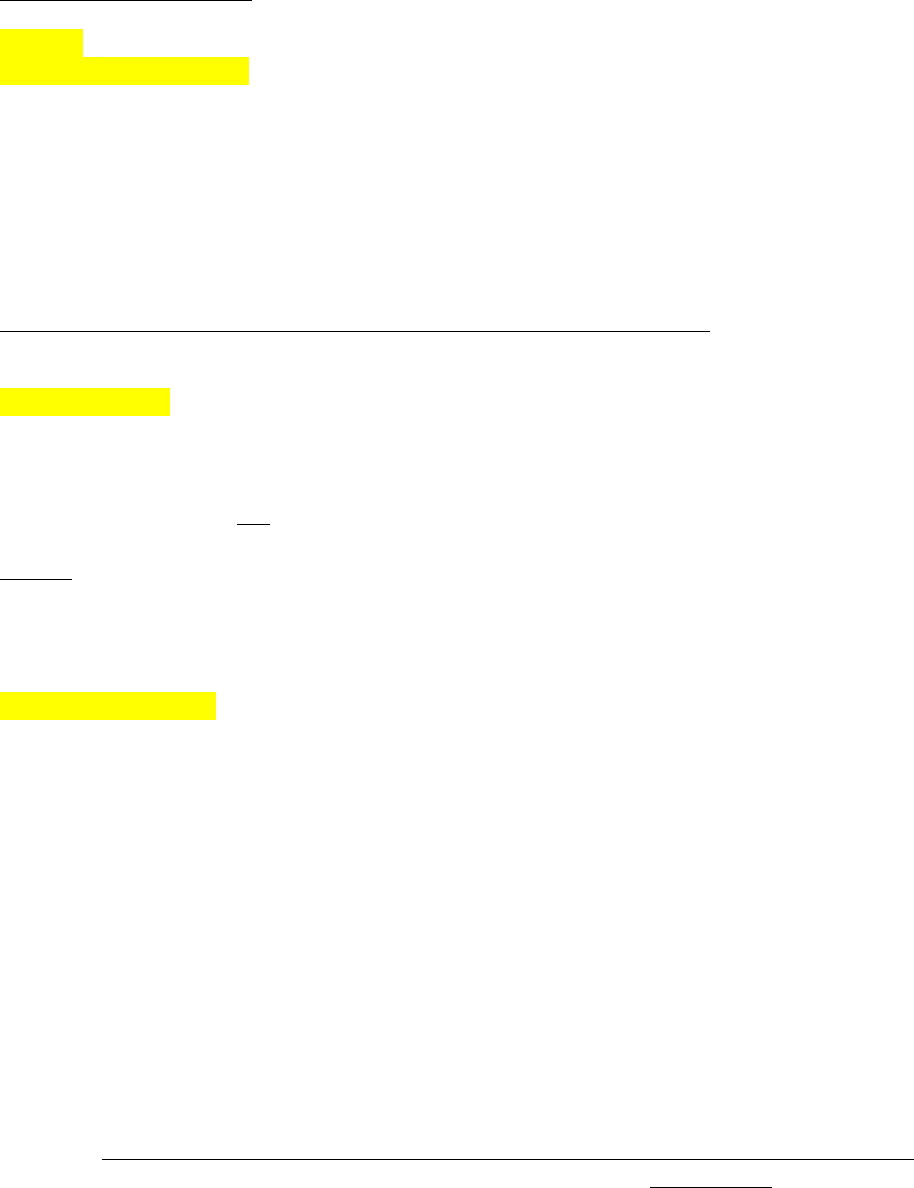
Petition supplement 3 of 79
Policy Recommendations
Revised text underlined unless otherwise noted. References to other sections
correspond with revised text in this supplement.
Format:
(a) (1) (i) (A)
Subpart A––Introduction
§300. 3 Scope.
(b) The NCP provides for efficient, coordinated, and effective response to discharges
of oil and releases of hazardous substances, pollutants, and contaminants in
accordance with the authorities of CERCLA and the CWA. It provides for:
(1) The national response organization that may be activated in response
actions. It specifies responsibilities among the federal, state, and local governments,
Indian Tribes, and federally-recognized Citizens’ Advisory Councils and describes
resources that are available for response.
NEW SECTION
(d) In implementing the NCP, consideration shall be given to security regulations and
responsibilities based on national concerns, federal statutes, and executive orders.
Actions taken pursuant to any Remote Area Operations conducted by the Department
of Homeland Security will be consistent with the NCP, to the greatest extent possible.
(e) Additionally, the NCP applies to and is in effect when the Federal Response Plan
and some or all of its Emergency Support Functions (ESFs) are activated.
§300.4 Abbreviations.
(b) Operational abbreviations
[ADDITIONS ONLY]
BAP Best Available Practices
CAC Citizens’ Advisory Council
HAZWOPER Hazardous Waste Operator
MSDS Material Safety Data Sheet
OEM Occupational and Environmental Medicine
ORS OSHA Reportable Symptom
ORI OSHA Recordable Illness
PAH Polycyclic Aromatic Hydrocarbon
PCC Permanent Co-Chair
PPE Personal Protective Equipment
SDS Safety Data Sheet
VOC Volatile Organic Carbon
§300.5 Definitions. (Relating to containment & recovery of oil)
Bioremediation agents means microbiological cultures, enzyme additives, or nutrient
additives that will not cause harm to public health or welfare or to the environment and
that are deliberately introduced into an oil discharge and that are likely to significantly
increase the rate of biodegradation to mitigate the effects of the discharge.

Petition supplement 4 of 79
Burning agents means those additives that will not cause harm to public health or
welfare or to the environment and that, through physical or chemical means, may
improve the combustibility of the materials to which they are applied.
Chemical agents means those elements, compounds, or mixtures that will not cause
harm to public health or welfare or to the environment and that are likely to coagulate,
foam, neutralize, reduce, solubilize, oxidize, concentrate, congeal, entrap, fix, make the
pollutant mass more rigid or viscous, or otherwise facilitate the mitigation of deleterious
effects or the removal of the pollutant from the water. Chemical agents include
biological additives, dispersants, sinking agents, miscellaneous oil spill control agents,
burning agents, and sorbents.
Dispersants means those chemical agents that will not cause harm to public health or
welfare or to the environment and that are likely to emulsify, disperse, or solubilize oil
into the water column or promote the surface spreading of oil slicks to facilitate dispersal
of the oil into the water column. Dispersants are or act as sinking agents.
Miscellaneous oil spill control agent is any product, other than a dispersant, sinking
agent, surface washing agent, surface collecting agent, bioremediation agent, burning
agent, or sorbent that will not cause harm to public health or welfare or to the
environment and that can be used if they are likely to enhance oil spill cleanup, removal,
treatment, or mitigation.
Sinking agents are defined as those additives, irrespective of specific gravity, applied to
oil discharges to physically sink floating pollutants below the water surface and into the
water column, or are likely to emulsify, disperse or solubilize oil into the water column,
or are likely to otherwise facilitate dispersal of oil into the water column, or to retain or
facilitate retention of oil below the water surface in the case of subsea injection.
Sorbents means essentially inert and insoluble materials that will not cause harm to
public health or welfare or to the environment and that may be used if they are likely to
remove oil and hazardous substances from water through adsorption, in which the oil or
hazardous substance is attracted to the sorbent surface and then adheres to it;
absorption, in which the oil or hazardous substance penetrates the pores of the sorbent
material; or a combination of the two. Sorbents are generally manufactured in
particulate form for spreading over an oil slick or as sheets, rolls, pillows, or booms. The
sorbent material may not include nanoparticles, and may consist of, but is not limited to,
the following materials: [as listed].
Surface collecting agents means those chemical agents that will not cause harm to
public health or welfare or to the environment and that are likely to form a surface film to
control the layer thickness of oil.
Surface washing agent is any product that will not cause harm to public health or
welfare or to the environment and that is likely to remove oil from solid surfaces, such
as beaches and rocks, through a detergency mechanism and does not involve
dispersing, emulsifying, or solubilizing the oil into the water column.

Petition supplement 5 of 79
§300.5 Definitions. (Relating to oil and hazardous substances)
ASSUMING ultra-hazardous oils are considered hazardous substances, pollutants or
contaminates…
Discharge as defined by section 311(a)(2) of the CWA, includes, but is not limited to,
any spilling, leaking, pumping, pouring, emitting, emptying, or dumping of oil, but
excludes discharges in compliance with a permit under section 402 of the CWA,
discharges resulting from circumstances identified and reviewed and made a part of the
public record with respect to a permit issued or modified under section 402 of the CWA,
and subject to a condition in such permit, or continuous or anticipated intermittent
discharges from a point source, identified in a permit or permit application under section
402 of the CWA, that are caused by events occurring within the scope of relevant
operating or treatment systems. For purposes of the NCP, discharge also means
substantial threat of discharge, but excludes ultra-hazardous oils.
Hazardous substance as defined by section 101(14) of CERCLA, means: Any
substance designated pursuant to section 311(b)(2)(A) of the CWA; any element,
compound, mixture, solution, or substance designated pursuant to section 102 of
CERCLA; any hazardous waste having the characteristics identified under or listed
pursuant to section 3001 of the Solid Waste Disposal Act (but not including any waste
the regulation of which under the Solid Waste Disposal Act (42 U.S.C. 6901 et seq.) has
been suspended by Act of Congress); any toxic pollutant listed under section 307(a) of
the CWA; any hazardous air pollutant listed under section 112 of the Clean Air Act (42
U.S.C. 7521 et seq.); and any imminently hazardous chemical substance or mixture
with respect to which the EPA Administrator has taken action pursuant to section 7 of
the Toxic Substances Control Act (15 U.S.C. 2601 et seq.). The term does not include
petroleum, including crude oil or any fraction thereof which is not otherwise specifically
listed or designated as a hazardous substance in the first sentence of this paragraph,
however for purposes of the NCP, the term does include ultra-hazardous oils.
Oil as defined by section 311(a)(1) of the CWA, means oil of any kind or in any form,
including, but not limited to, petroleum, fuel oil, sludge, oil refuse, and oil mixed with
wastes other than dredged spoil. Oil, as defined by section 1001 of the OPA means oil
of any kind or in any form, including, but not limited to, petroleum, fuel oil, sludge, oil
refuse, and oil mixed with wastes other than dredged spoil, but does not include
petroleum, including crude oil or any fraction thereof, which is specifically listed or
designated as a hazardous substance under subparagraphs (A) through (F) of section
101(14) of the Comprehensive Environmental Response, Compensation, and Liability
Act (42 U.S.C. 9601) and which is subject to the provisions of that Act. For the purposes
of the NCP, this term shall include, but not be limited to, oil of any kind or in any form
which after release into the environment and upon exposure to, ingestion by, inhalation
by, or assimilation into humans or any other organisms, either directly from the
environment or indirectly by ingestion through food chains, will or may reasonably be
anticipated to cause death, disease or infection, behavioral abnormalities, cancer,
genetic mutation, endocrine disruption or other physiological malfunctions (including
malfunctions in reproduction) or physical deformations, in such humans or their children,
or in organisms or their offspring.

Petition supplement 6 of 79
Pollutant or contaminates defined by section 101(33) of CERCLA, shall include, but not
be limited to, any element, substance, compound, or mixture, including disease-causing
agents, which after release into the environment and upon exposure, ingestion,
inhalation, or assimilation into any organism, either directly from the environment or
indirectly by ingestion through food chains, will or may reasonably be anticipated to
cause death, disease, behavioral abnormalities, cancer, genetic mutation, physiological
malfunctions (including malfunctions in reproduction) or physical deformations, in such
organisms or their offspring. The term does not include petroleum, including crude oil or
any fraction thereof which is not otherwise specifically listed or designated as a
hazardous substance under section 101(14) (A) through (F) of CERCLA, however for
purposes of the NCP, the term pollutant or contaminant means any pollutant or
contaminant that may present an imminent and substantial danger to public health or
welfare of the United States, including ultra-hazardous oils and chemical agents that
contain known or suspected toxic or hazardous ingredients.
Remove or removal as defined by section 311(a)(8) of the CWA, refers to containment
and removal of oil or hazardous substances from the navigable water and shorelines or
the taking of such other actions as may be necessary to minimize or mitigate damage to
the public health or welfare of the United States (including, but not limited to, fish,
shellfish, wildlife, public and private property, culturally-significant resources, and
shorelines and beaches) or to the environment. For the purpose of the NCP, the term
also includes, without being limited to, actions to access, monitor, evaluate, design, or
implement measures to protect worker and public safety and health during response
activities; actions to monitor, assess, and evaluate the discharge or threat of discharge
of oil; actions to properly dispose of removed material; security fencing or other
measures to limit access; provision of alternative water supplies; temporary evacuation
and housing of threatened individuals not otherwise provided for; post-removal site
control, where appropriate; and any emergency assistance which may be provided
under the Disaster Relief Act of 1974. As defined by section 101(23) of CERCLA,
remove or removal means the cleanup or removal of released hazardous substances
from the environment; such actions as may be necessary taken in the event of the
threat of release of hazardous substances into the environment; such actions as may be
necessary to monitor, assess, and evaluate the release or threat of release of
hazardous substances; the disposal of removed material; or the taking of such other
actions as may be necessary to prevent, minimize, or mitigate damage to the public
health or welfare of the United States or to the environment, which may otherwise result
from a release or threat of release. The term includes, in addition, without being limited
to, security fencing or other measures to limit access, provision of alternative water
supplies, temporary evacuation and housing of threatened individuals not otherwise
provided for, action taken under section 104(b) of CERCLA, post-removal site control,
where appropriate, and any emergency assistance which may be provided under the
Disaster Relief Act of 1974. For the purpose of the NCP, the term also includes
enforcement activities related thereto.
Size classes of discharges refers to the following size classes of oil discharges which
are provided as guidance to the OSC and serve as the criteria for the actions delineated
in subpart D. They are not meant to imply associated degrees of hazard to public health
or welfare of the United States, nor are they a measure of environmental injury. Any oil
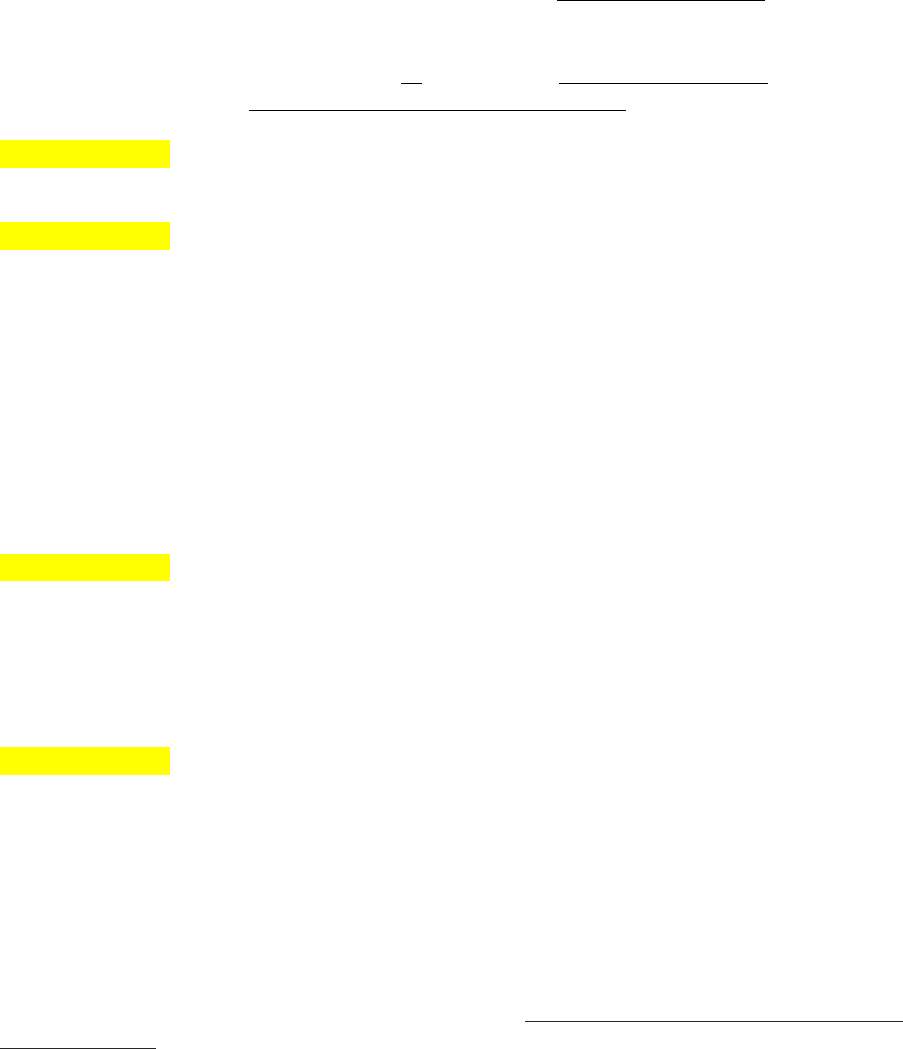
Petition supplement 7 of 79
discharge that poses a substantial threat to public health or welfare of the United States
or the environment or results in significant public concern shall be classified as a major
discharge regardless of the following quantitative measures:
(1) Minor discharge means a discharge to the inland waters of less than 1,000
gallons of oil or a discharge to the coastal waters of less than 10,000 gallons of oil.
(2) Medium discharge means a discharge to the inland waters of 1,000 to
10,000 gallons of oil or a discharge to the coastal waters of 10,000 to 100,000 gallons of
oil .
(3) Major discharge means or a discharge to the inland waters of more than
10,000 gallons of oil or a discharge to the coastal waters of more than 100,000 gallons
of oil.
NEW SECTION
(4) Any discharge of ultra-hazardous oil.
NEW SECTION
Ultra-hazardous oils is defined to mean naturally-occurring oil that has a significantly
different chemical composition than the standard reference oils described in appendix C
to part 300, including but not limited to tar sands oil or bitumen, blended tar sands oil
(diluted bitumen or dilbit), kerogen oil or shale oil, and the extremely volatile oil
produced by hydraulic fracturing or similar technologies. This term also includes all
petrochemical-derived substances used as diluents to blend tar sands oil such as
natural gas condensate, including naphtha petroleum, refined naphtha, and synthetic
crude oil, among others, and all petrochemical-derived substances used in hydraulic
fracturing or similar technologies to extract oil and gas from its source substrate.
§300.5 Definitions. (Relating to public health and welfare)
NEW SECTION
Critical public resources is defined to mean (for the purposes of the NCP) public
property (such as air, fresh water, oceans, public land, biodiversity, climate) held in trust
for the people of the United States to be protected and sustained by federal, state, and
local governments for access, use, and enjoyment by present generation so as not to
diminish the same for future generations.
NEW SECTION
Human habitations is defined to mean (for the purposes of the NCP) the build
environment; human settlements and human build or modified structures including but
not limited to public or private spaces, dwellings and furnishings, supporting
infrastructure and facilities (such as water treatment and waste water treatment
facilities, hospitals and health clinics, schools, etc.), and places where food or livestock
is grown or raised for human consumption or use; or any of the conditions in which
people live.
On-site means the areal extent of contamination, including air-borne and water-borne
contamination, and all suitable areas in very close proximity to the contamination
necessary for implementation of the response action.

Petition supplement 8 of 79
NEW SECTIONS
Public health and welfare of the United States is defined to mean the health and
wellbeing of the population as a whole, whether as small as a local neighborhood or as
big as entire country or anything in between. It is a general state of physical, mental,
emotional, and social wellbeing maintained by health care equity, quality, and
accessibility and improved by education, lifestyle choices, good nutrition, minimizing
exposure to contaminants and contaminated environments, and early detection and
control of illnesses and infectious diseases.
Significant public concern is defined to mean concerns, within or outside of the
impacted geographic area, that are present across different regions, demographic
groups (such as socio-economic status), or organization; • that are evidenced by high
participation rates (such as meeting attendance, letter writing, or rallies), high frequency
of similar concerns (such as respiratory problems, sick children, sick livestock, or air or
water quality), or high level of efforts (such as missed work opportunities, time or
resources expended) to participate or share concerns; • that are linked to evidence of
impacts within the impacted area or possible real impacts or observations from similar
types of discharges or releases; • that are evidenced by a high frequency of media
public relations events or ads about impacts (or lack of impacts) based on rates of ads
prior to the discharge or release; • or that are based on proximity of the discharge or
release to densely populated urban areas, critical municipal infrastructure (such as
waste water treatment facilities or drinking water reservoirs), homes, hospitals, health
clinics or spas, businesses, churches, schools, prisons, places where people
congregate, areas where food is grown, harvested, processed or stored, ranches or
livestock, communities or areas used for traditional harvesting, proximity to sensitive
environments, or the severity of the worst case scenario. • Significant public concern
may be limited in geographic scope to the impacted geographic area; nationwide
anxiety need not be present to indicate significant public concern.
Substantial threat to public health or welfare of the United States is defined to mean (for
the purposes of the NCP) an occurrence of a greater-than-expected number of illnesses
or infectious cases or other indicators of chemical illnesses within a group of people or
domesticated animals in the impacted geographic area after a discharge or release or
during response operations when compared to the rates prior to the event in the same
geographic area or a similar demographic area.
§300.5 Definitions. (Relating to Organizational Structure & Responsibilities)
Environment as defined by section 101(8) of CERCLA, means the navigable waters, the
waters of the contiguous zone, and the ocean waters of which the natural resources are
under the exclusive management authority of the United States under the Magnuson
Fishery Conservation and Management Act (16 U.S.C. 1801 et seq.); and any other
surface water, ground water, drinking water supply, land surface or subsurface strata, or
ambient air within the United States or under the jurisdiction of the United States, or, for
the purposes of the NCP, under the jurisdiction of Indian Tribes.
NEW SECTION
Citizens’ Advisory Council or CAC means a body of citizens either created directly
under the Oil Pollution Act of 1990 section 5002 or as part of the Area Contingency

Petition supplement 9 of 79
Plans required under Clean Water Act section 311(j) for the purpose of promoting
environmentally safe oil operations (including protection of worker and public safety and
health) in a specified geographic area or region.
Spill of national significance (SONS) means a spill that due to its severity, size, type of
oil, location, actual or potential impact on the public health and welfare or the
environment, or the necessary response effort, is so complex that it requires
extraordinary coordination of federal, state, local, and responsible party resources to
protect public health and welfare or the environment and to contain and clean up the
discharge.

Petition supplement 10 of 79
Subpart B––Responsibility and Organization for Response
§300.100 Duties of President delegated to federal agencies.
(a) In Executive Orders 12580 and 12777, the President delegated certain functions
and responsibilities vested in him by the CWA, CERCLA, and the OPA.
NEW SECTION
(b) Executive Order 13175 and other legal doctrines, including the EPA Policy on
Consultation and Coordination with Indian Tribes, the Public Trust Doctrine, and the
Marine Mammal Protection Act Section 19, among others, require government-to-
government consultation with, and concurrence of, Indian Tribes. These requirements
are extended to include disaster planning and response.
§300.105 General organization concepts.
(a) (3) Coordinate their planning, preparedness, and response activities with
affected Indian Tribes, federally-recognized citizens advisory councils, states, local
governments, and private entities; and
(b) (3) Response operations including remediation and follow up at the scene of a
discharge or release.
(c) The organizational elements created to perform these activities are:
(1) The NRT, responsible for national response and preparedness planning,
for coordinating regional planning, and for providing policy guidance and support to the
Regional Response Teams (RRTs). NRT membership consists of representatives from
the agencies specified in §300.175(b) and the designated co-chairs and permanent co-
chairs from the RRTs specified in §300.115.
(2) RRTs, responsible for regional planning and preparedness activities
before response actions, and for providing advice and support to the OSC or RPM when
activated during a response. RRT membership consists of designated representatives
from each federal agency participating in the NRT together with Indian Tribes, federally-
recognized CACs, state and (as agreed upon by the states) local government
representatives.
REPLACEMENT SECTIONS
(3) Leadership team consisting of
(a) The OSC and the RPM, primarily responsible for directing response
efforts and coordinating all other efforts at the scene of a discharge or release. The
other responsibilities of OSCs and RPMs are described in §300.135.
(b) The OSHA and HHS permanent co-chairs, primarily responsible for
protecting worker and public safety and health at the scene of a discharge or release.
The other responsibilities of the PCCs are described in §§ 300.150 and 300.152.
(4) Area Committees, responsible for developing, under direction of the OSC
and in coordination and consultation with Indian Tribes and Citizens’ Advisory Councils
of the area, ACPs for each area designated by the President. Responsibilities of Area
Committees are described in §300.205(c) and Citizens’ Advisory Councils in §300.206
Area Committee membership consists of qualified local personnel of federal, state, and
local agencies; Citizens’ Advisory Council membership consists of qualified local
persons knowledgeable about the public health and welfare or the environment,
economy or traditional subsistence cultures in the area.
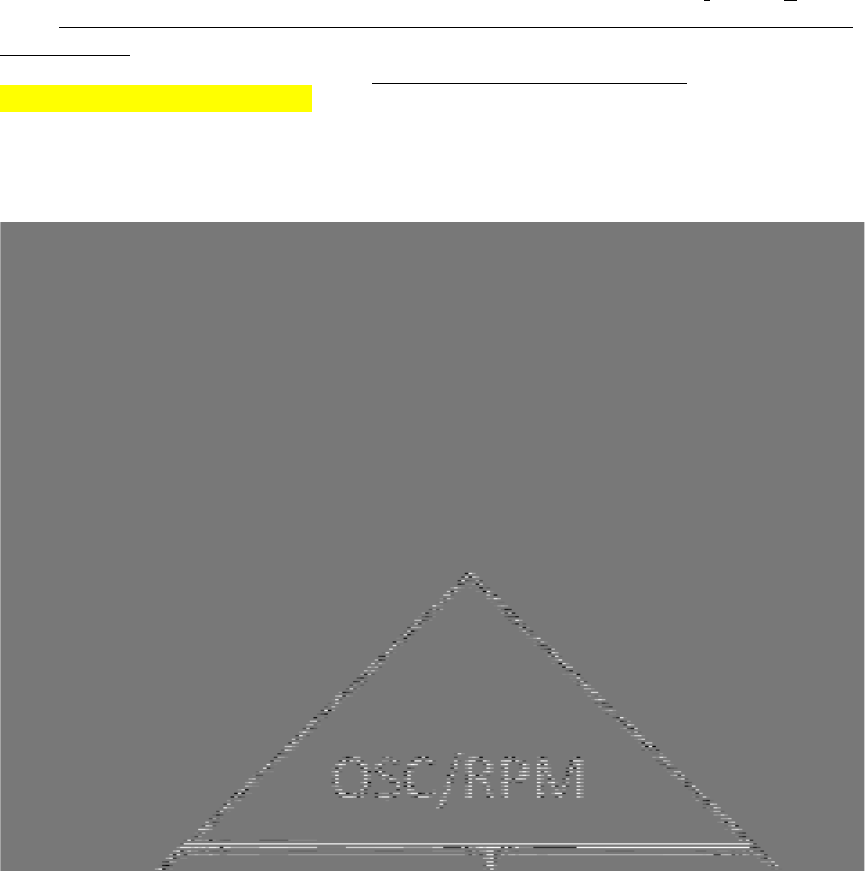
Petition supplement 11 of 79
(d) The basic framework for the response management structure is a system (e.g., a
unified command system) that brings together the functions of the federal government,
state and local governments, Indian Tribes, federally-recognized citizen advisory
committees, and the responsible party to achieve an effective and efficient response,
where the OSC maintains authority as described under the NCP.
REPLACEMENT GRAPHICS
Figure 1a
Proposed revisions replace lower triangle graphic.
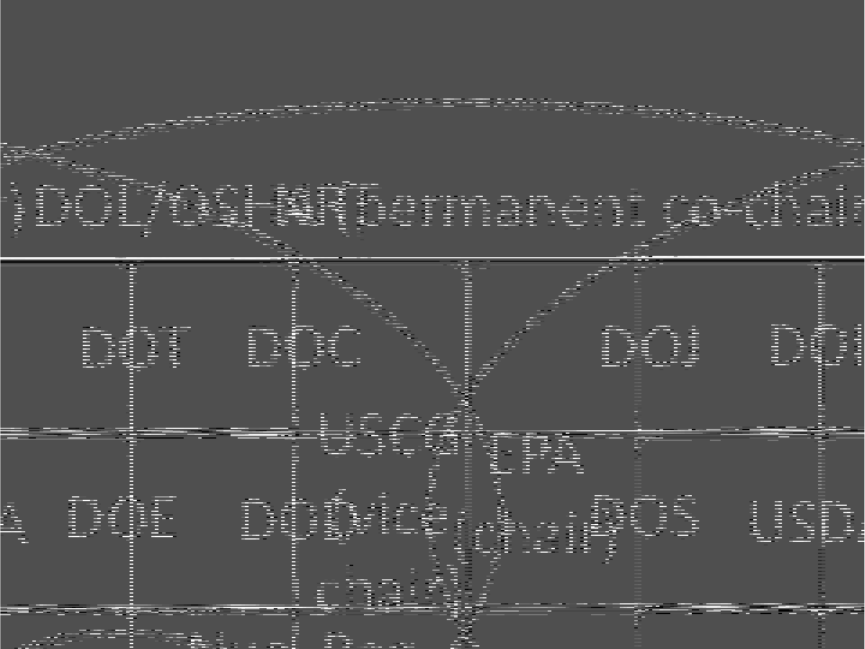
Petition supplement 12 of 79
Figure 1b
Proposed revisions replace top and middle ovals and lower rectangle graphics.
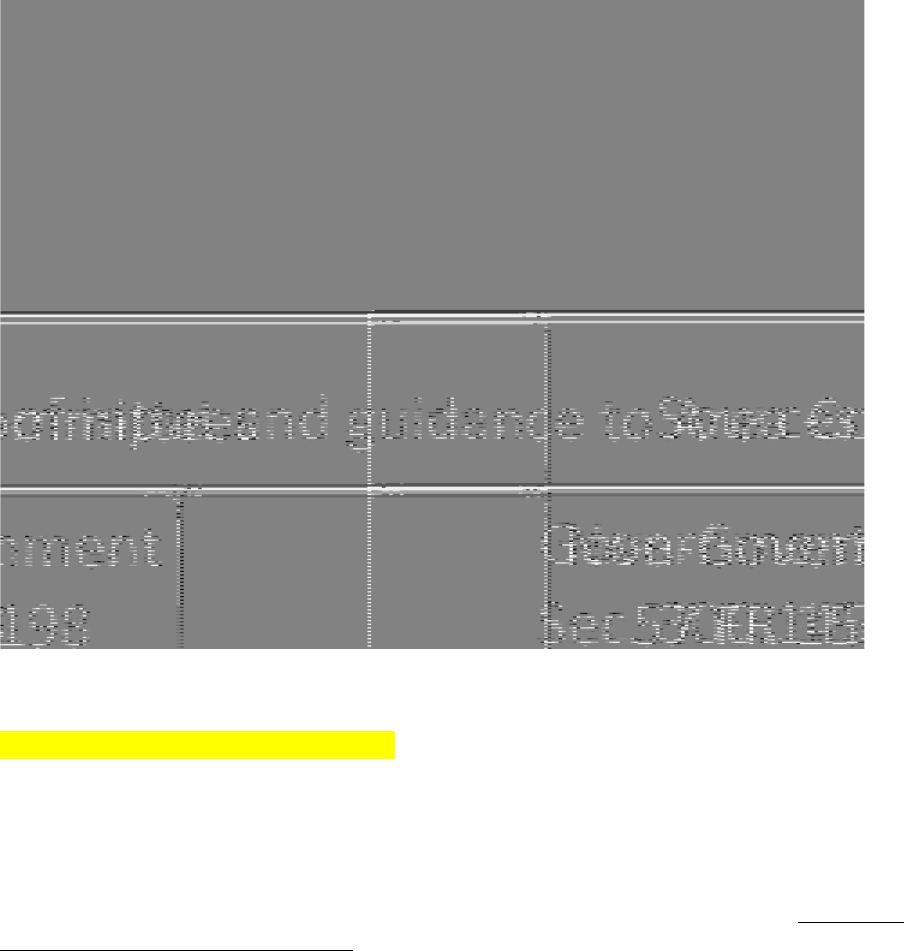
Petition supplement 13 of 79
§300.110 National Response Team.
REPLACEMENT & NEW SECTIONS
(b) The NRT leadership shall be structured as follows. OSC/RPM
(1) The chair of the NRT shall be the representative of EPA and the vice chair
shall be the representative of the USCG, with the exception of periods of activation
because of response action. During activation, the chair shall be the member agency
providing the OSC/RPM. The EPA or USCG vice chair shall maintain records of NRT
activities along with national, regional, and area plans for response actions except for
records maintained by the PCCs.
(2) The permanent co-chairs (PCCs) of the NRT shall be the representatives
of DOL/OSHA and HHS/CDC, including during periods of activation because of need to
protect worker and public safety and health during and after response operations.
During activation, the OSHA PCC shall collect and analyze records related to worker
safety and health, including copies of clinical records and environmental monitoring data
(such as air quality) collected by the responsible party or other agencies. The HHS PCC
shall collect and analyze records related to preventing and controlling chemical illnesses
outbreaks and associated diseases, promote environmental health and health
education, including mental health, and provide information to health care professionals
and the public. Responsibilities of the PCCs are in §§ 300.150 and 300.152.

Petition supplement 14 of 79
(c) While the NRT desires to achieve a consensus on all matters brought before it,
certain matters may prove unresolvable by this means. In such cases, each agency
serving as a participating agency on the NRT may be accorded one vote in NRT
proceedings. However either of the PCCs shall have veto power during periods of
response activation because of the national priority to protect worker or public safety or
health as described in §300.317.
(e) The NRT shall annually evaluate methods of responding to discharges or
releases and protocols for protecting worker and public safety and health during
response activation (including national and international best available practices) and
prepare and distribute a summary its members including the RRTs; shall annually
request meaningful participation from the RRTs, Area Committees, Indian Tribes, and
federally-recognized CACs to review any recommended changes needed in the
response organization including drafts of regulatory language; and shall annually
recommend to the Administrator of EPA changes to the NCP designed to improve the
effectiveness of the national response system, including drafting of regulatory language.
(f) The NRT shall provide policy and program direction to the RRTs and will review
and consider policy and program recommendations from the state and local
governments, Indian Tribes, RRTs, Area Committees, federally-recognized CAC, and
LEPCs.
(g) The NRT shall research national and international BAPs (including practices to
not use toxic products or sinking agents during response operations) and make
recommendations to appropriate agencies on the training, equipping, and protection of
response teams and the general public and necessary research, development,
demonstration, and evaluation to improve response capabilities based on BAPs.
(h) Direct planning and preparedness responsibilities of the NRT include:
(1) Maintaining national preparedness based on national and international
BAPs to respond to a major discharge of oil or release of a hazardous substance,
pollutant, or contaminant that is beyond regional capabilities;
(4) Coordinating a national program to assist member agencies and the
RRTs, Area Committees, federally-recognized CACs, and Indian Tribes in
preparedness planning and response based on national and international BAPs, and
enhancing coordination of member agency preparedness programs;
(8) (i) Reviewing annually regional and area responses (considering
BAPs) to oil discharges and hazardous substance, pollutant, or contaminant releases,
including evaluations of equipment readiness and coordination among responsible
public agencies and private organizations; of equipment readiness and use for
protection of worker and public safety and health; and of organizational structure and
operations (including communications with impacted communities) among responsible
public agencies, state and local governments, Area Committees, Indian Tribes,
federally-recognized CACs, and private organizations.

Petition supplement 15 of 79
NEW SECTION
(ii) Reporting annually to Congress on statutory and regulatory
recommendations for strengthening spill prevention and response measures.
(j) The NRT should be activated as an emergency response team:
(1) When an oil discharge or hazardous substance release:
(i) Exceeds the response capability of the region in which it occurs;
(ii) Transects regional boundaries;
(iii) Involves a substantial threat to the public health or welfare of the
United States, or the environment, substantial amounts of property (including culturally-
significant property or resources), or substantial threats to natural resources; or
NEW SECTION
(iv) Involves ultra-hazardous oil(s).
(2) If requested by any NRT or RRT member, an Indian Tribe directly or
indirectly through the representative DOI member, Area Committee, or a federally-
recognized CAC.
(k) When activated for a response action, the NRT shall meet at the call of the chair
and may:
(1) Monitor and evaluate reports from the OSC/RPM and recommend to the
OSC/RPM, through the RRT, actions to protect worker or public safety or health during
periods of response activation and to contain and remove a discharge or release;
(2) Request other federal, state, and local governments or agencies, Indian
Tribes, federally-recognized CACs, or private organizations to provide resources under
their existing authorities to protect worker or public safety or health during periods of
response activation, to contain and remove a discharge or release, or to monitor or
evaluate response operations; and
§300.115 Regional Response Teams.
(a) Regional planning and coordination of preparedness and response actions are
accomplished through the RRT. In the case of a discharge of oil, preparedness activities
will be carried out in conjunction with Area Committees. The RRT agency membership
parallels that of the NRT, as described in §300.110, but also includes Indian Tribes,
federally-recognized CACs, and, state and local representation. The RRT provides:
(1) The Regional Contingency Plan as an appropriate regional mechanism for
development and coordination of preparedness activities before a response action is
taken and for coordination of assistance and advice to the OSC/RPM during such
response actions; and
(2) Guidance to Area Committees, as appropriate, to ensure inter-area
consistency, meaningful consultation and coordination with Indian Tribes and CACs,
and consistency of individual ACPs with the RCP and NCP.
(b) The two principal components of the RRT mechanism are a standing team,
which consists of designated representatives from each participating federal agency,
state governments, and local governments (as agreed upon by the states), and Indian

Petition supplement 16 of 79
Tribes and federally-recognized CACs from the region; and incident-specific teams
formed from the standing team when the RRT is activated for a response, consisting of
federal agency, state governments, and local governments, and Indian Tribes and
federally-recognized CACs from the impacted area(s). On incident-specific teams,
participation by the RRT member agencies and others will relate to the hazardous
nature of the discharge and potential for harm to human safety and health, the technical
nature of the incident, and its geographic location.
(1) The standing team’s jurisdiction corresponds to the standard federal
regions, except for Alaska, Oceania in the Pacific, and the Caribbean area, each of
which has a separate standing RRT. The role of the standing RRT includes
communications systems and procedures, planning, coordination, training, evaluation,
preparedness, and related matters on a region-wide basis. It also includes coordination
of Area Committees and with Indian Tribes and federally-recognized CACs for these
functions in areas within their respective regions, as appropriate.
(2) The role of the incident-specific team is determined by the operational
requirements of the response to a specific discharge or release. The RRT shall notify
state and local governments, Indian Tribes, and CACs of incidents within their region or
area and shall coordinate with these entities to decide appropriate levels of activation
and/or notification of the incident-specific RRT, based on the RCP. The incident-specific
RRT supports the designated OSC/RPM. The designated OSC/RPM directs response
efforts and coordinates all other efforts at the scene of a discharge or release consistent
with the NCP, RCP, and ACP.
(c) The representatives of EPA and the USCG shall act as co-chairs of RRTs except
when the RRT is activated. When the RRT is activated for response actions, the chair
shall be the member agency providing the OSC/RPM. The permanent co-chairs of the
RRT shall be the representatives of DOL/OSHA and HHS/CDC at all times.
(d) Each participating agency and federally-recognized CAC in the region should
designate one member and at least one alternate member to the RRT. Agencies whose
regional subdivisions do not correspond to the standard federal regions may designate
additional representatives to the standing RRT to ensure appropriate coverage of the
standard federal region. Participating states may also designate one member and at
least one alternate member to the RRT. Indian tribal governments may designate one
member and at least one alternative member to the RRT appropriate to their
geographical location. All agencies, Tribes, CACs, and states may also provide
additional representatives as observers to meetings of the RRT.
(g) RRT members should nominate appropriately qualified representatives from their
agencies to work with OSCs, Area Committees, Indian Tribes, and federally-recognized
CACs in developing, maintaining, and evaluating ACPs.
(h) Affected states are encouraged to participate actively in all RRT activities. Each
state governor is requested to assign an office or agency to represent the state on the
appropriate RRT; to designate representatives, including a representative from the
State Emergency Response Commission (SERC) described in §300.205(d), to work
with the RRT in developing, maintaining, evaluating RCPs; to plan for, make available,
and coordinate state resources; and to serve as the contact point for coordination of

Petition supplement 17 of 79
response with local government agencies, whether or not represented on the RRT. The
state’s RRT representative should keep SERC apprised of RRT activities and
coordinate RRT activities with the SERC. Local governments are invited to participate in
activities on the appropriate RRT as provided by state law or as arranged by the state’s
representative.
(i) The standing RRT shall recommend changes in the regional response
organization as needed or based on requests from Area Committees and Indian Tribes
or CACs within the region; revise the RCP as needed or based on requests from Area
Committees and Indian Tribes or CACs within the region; evaluate the preparedness
and coordination of the participating agencies, Indian Tribes, and CACs, and the
effectiveness of ACPs for the federal response to discharges and releases, and provide
technical assistance for preparedness to the response community. The RRT should:
(1) Review and comment on local emergency response plans or other issues
related to the preparation, implementation, or exercise of such plans upon request of a
local emergency planning committee;
(2) Evaluate regional and local responses to discharges or releases on a
continuing basis, considering available legal remedies, equipment readiness, type of
equipment based on BAPs, and coordination among responsible state and local public
agencies, Indian Tribes and federally-recognized CACs, and private organizations, and
recommended improvements;
(3) Recommend revisions of the NCP to the NRT, based on observations of
response operations and comments from responsible state and local public agencies,
Indian Tribes, and federally-recognized CACs;
(4) Review OSC actions to ensure that the NCP, RCPs, and ACPs are
effective and to identify areas for revision and improvement;
(6) In coordination with Area Committees and in accordance with any
applicable laws, regulations, or requirements, conduct advance planning for protection
of worker and public safety and health during response activities consistent with §§
300.150 and 300.152 and for use of approved products and burning agents in
accordance with subpart J of this part;
(8) Conduct or participate in training and exercises to encourage maximum
preparedness activities of the response community within the region;
(j) (1) The RRT will be activated by the chair as an incident-specific response
team when a discharge or release:
(i) Exceeds the response capability available to the OSC/RPM in the
place where it occurs;
(ii) Transects state boundaries; or
(iii) May pose or involves a substantial threat to the public health or
welfare of the United States, or the environment, or to regionallyor culturally-significant
amounts of property, or substantial threats to natural resources; or

Petition supplement 18 of 79
(iv) Is a worst case discharge, as described in §300.324, or involves ultra-
hazardous oil(s). RCPs shall specify detailed criteria for activation of RRTs.
(2) The RRT will be activated during any discharge or release upon a request
from the OSC/RPM, or from any RRT representative, or by any Indian Tribe or Area
Committee representative or CAC in the impacted area, to the chair of the RRT.
Requests for RRT activation shall later be confirmed in writing. Each representative, or
an appropriate alternate, should be notified immediately when the RRT is activated.
(3) During prolonged removal or remedial action, the RRT may need to be
activated only in a limited sense, or may need to have available only those member
agencies of the RRT who are directly affected or who can provide direct response
assistance. Notification of the RRT members and Indian Tribes, Area Committees, and
CACs in the impacted area is appropriate when full activation is not necessary, with
systematic communication of pollution reports or other means to keep RRT members
informed as to actions of potential concern to a particular agency, state or local
government, Indian Tribe, Area Committee, or CAC, or to assist in later RRT evaluation
of region wide response effectiveness.
(4) When the RRT is activated for a discharge or release, agency
representatives shall meet at the call of the chair and shall:
(ii) Request other federal, state, or local governments or agencies,
Indian Tribes or federally-recognized CACs in the region, or private organizations to
provide resources under their existing authorities to respond to a discharge or release
or to monitor or evaluate response operations;
(v) Submit pollution or incident reports to the NRC as significant
developments occur.
(6) When the RRT is activated, affected Indian Tribes and federally-
recognized CACs of the area and states may participate in all RRT deliberations.
Representatives of Indian Tribes, federally-recognized CACs, and State government
representatives participating in the RRT have the same status as any federal member of
the RRT.
(7) The RRT can be deactivated when the incident-specific RRT chair, with
the concurrence of the PCCs and the Indian Tribes of the impacted area and in
consultation with the federally-recognized CAC of the impacted area, determines that
the OSC/RPM no longer requires RRT assistance.
§300.120 On-scene coordinators and remedial project managers: General
responsibilities.
(a) The OSC/RPM directs response efforts and coordinates all other efforts at the
scene of a discharge or release in close coordination with the vice chair and PCCs. As
part of the planning and preparedness for response, OSCs and PCCs shall be
predesignated by the regional or district head of their lead agencies. EPA and the

Petition supplement 19 of 79
USCG shall predesignate OSCs and the DOL/OSHA and HHS/CDC shall predesignate
PCCs for all areas in each region, except as provided in paragraphs (c) and (d) of this
section. RPMs shall be assigned by the lead agency to manage remedial or other
response actions at NPL sites, except as provided in paragraphs (c) and (d) of this
section.
(e) The OSC is responsible for over-seeing development of the ACP in the area of
the OSC’s responsibility. ACPs shall be developed by the Area Committee and the
Indian Tribes and federally-recognized CACs in the area in cooperation with the RRT. In
contingency planning, response activation and removal operations, and protection of
worker and public safety and health during response operations, the OSC coordinates,
directs, and reviews the work of other agencies, the PCCs, RRTs, Area Committees,
CACs, and responsible parties, contractors, and subcontractors to assure compliance
with the NCP, RCP, and ACP decision documents, consent decree, administrative
order, lead agency-approved plans applicable to the response.
(f) The RPM is the prime contact for remedial or other response actions being taken
(or needed) at sites on the proposed or promulgated NPL, and for sites not on the NPL
but under the jurisdiction, custody, or control of a federal agency. The RPM’s
responsibilities include:
(1) Fund-financed response: The RPM coordinates, directs, reviews, and
evaluates the work of EPA, states and local governments, the U.S. Army Corps of
Engineers, and all other agencies and contractors, in coordination with Indian Tribes
and federally-recognized CACs in the area, to assure compliance with the NCP, RCP,
and ACP. Based upon the reports of these parties, the RPM recommends action for
decisions by lead agency officials. The RPM’s period of responsibility begins prior to
initiation of the remedial investigation/ feasibility study (RI/FS), described in §300.430,
and continues through design, remedial action, deletion of the site from the NPL, and
the CERCLA cost recovery activity. When a removal and remedial action occur at the
same site, the OSC and RPM should coordinate to ensure an orderly transition of
responsibility.
(2) Federal-lead non-Fund-financed response: The RPM coordinates, directs,
reviews, and evaluates the work of other agencies, responsible parties, contractors, and
subcontractors, in coordination with Indian Tribes and federally-recognized CACs in the
area, to assure compliance with the NCP, Record of Decision (ROD), consent decree,
administrative order, and lead agency-approved plans applicable to the response.
Based upon the reports of these parties, the RPM shall recommend action for decisions
by lead agency officials. The RPM’s period of responsibility begins prior to initiation of
the RI/FS, described in §300.430, and continues through design and remedial action
and the CERCLA cost recovery activity. The OSC and RPM shall ensure orderly
transition of responsibilities from one to the other.
(3) The RPM shall participate in all decision-making processes necessary to
ensure compliance with the NCP, including, as appropriate, agreements between EPA
or other federal agencies, and the state, and Indian Tribes in the area. The RPM may
also review responses where EPA has preauthorized a person or Indian Tribe to file a

Petition supplement 20 of 79
claim for reimbursement to determine that the response was consistent with the terms
of such preauthorization in cases where claims are filed for reimbursement.
(h) (1) The lead agency should provide appropriate training for its OSCs,
RPMs, PCCs, and other response personnel to carry out their responsibilities under the
NCP.
§300.125 Notice and communications.
(a) The National Response Center (NRC), located at USCG Headquarters, is the
national communications center, continuously manned for handling activities related to
response actions. The NRC acts as the single point of contact for all pollution incident
reporting, and as the NRT communications center. Notice of discharges and releases
must be made telephonically through a toll free number or a special local number
(Telecommunication Device for the Deaf (TDD) and collect calls accepted). (Notification
details appear in §§300.300 and 300.405.) The NRC receives and immediately relays
telephone notices of discharges or releases to the appropriate predesignated federal
OSC. The telephone report is distributed to any interested NRT member agency, federal
entity, or Indian Tribe or federally-recognized CAC that has established a written
agreement or understanding with the NRC. The NRC evaluates incoming information
and immediately advises FEMA of a potential major disaster situation.
(b) The Commandant, USCG, in conjunction with other NRT agencies, shall provide
the necessary personnel, communications, plotting facilities, and equipment for the
NRC. Public hotlines for information or reporting will be maintained by federal or state
agencies and not the responsible party or any contractors.
§300.130 Determinations to initiate response and special conditions.
(a) In accordance with CWA and CERCLA, the Administrator of EPA or the
Secretary of the department in which the USCG is operating, as appropriate, is
authorized to act for the United States to take response measures deemed necessary
and consistent with §§ 300.150 and 300.152, subpart J of this part, RCPs, and ACPs to
protect the public health or welfare or environment from discharges of oil (or
unintentional consequences of chemical agents) or releases of hazardous substances,
pollutants, or contaminants (such as shutting down response activities or emergency
evacuations of the general public) except with respect to such releases on or from
vessels or facilities under the jurisdiction, custody, or control of other federal agencies.
(b) The Administrator of EPA or the Secretary of the department in which the USCG
is operating, as appropriate, is authorized to initiate and, in the case of a discharge of oil
or chemical agents posing a substantial threat to public health or welfare of the United
States is required to initiate and direct, appropriate response activities consistent with
the NCP when the Administrator or Secretary determines that any oil or CWA
hazardous substance is discharged or there is a substantial threat of such discharge
from any vessel or offshore or onshore facility into or on the navigable waters of the
United States, on the adjoining shorelines to the navigable waters, into or on the waters
of the exclusive economic zone, or that may affect natural resources belonging to,
appertaining to, or under exclusive management authority of the United States; or

Petition supplement 21 of 79
(d) In addition to any actions taken by a state or local government, the Administrator
of EPA or the Secretary of the department in which the USCG is operating may request
the U.S. Attorney General to secure the relief from any person (including the owner or
operator of the vessel or facility) necessary to abate a threat or, after notice to the
affected state, take any other action authorized by section 311 of the CWA or section
106 of CERCLA as appropriate and consistent with §§ 300.150 and 300.152, subpart J
of this part, RCPs, and ACPs, including issuing administrative orders, that may be
necessary to protect the public health or welfare, if the Administrator or Secretary
determines:
(1) That there may be an imminent and substantial threat to the public health
or welfare of the United States or the environment of the United States, including fish,
shellfish, and wildlife, public and private property, culturally-significant resources,
shorelines, beaches, habitats, and other living and nonliving natural resources under the
jurisdiction or control of the United States, because of an actual or threatened discharge
of oil or a CWA hazardous substance from any vessel or offshore or onshore facility into
or upon the navigable waters of the United States or because of unanticipated
consequences of use of chemical agents; or
NEW SECTIONS
(3) That any of the following indicators are present although this list is not
exhaustive:
(i) 20 percent or more of workers on any one task force or shift,
including decontamination workers, have reported OSHA-reportable symptoms or the
preventative care program of any applicable worker safety program has failed to
alleviate the problem(s) contributing to the health symptoms as determined by the
OSHA PCC under §300.150.
(ii) 10 percent or more of workers on any one task force or shift have
reported OSHA-recordable illnesses.
(iii) Pharmacies in the impacted area(s) have ordered higher than
normal (based on records from previous years) over-the-counter medications for:
(A) cold and flu-like symptoms or allergy symptoms (such as
Tylenol, Benadryl, Zyrtec, Sudafed, nebulizers, anti-histamines and anti-histamine nasal
sprays, nasal corticosteroids, OCD decongestant, allergy eye drops, etc.);
(B) neurological symptoms (such as Dramamine, Verticalm,
Meclizine, Diphenhydramine HCI, Asprin, etc.);
(C) skin rashes, hives, or scabies (such as Hydrocortisone
crème, topical steroids, etc.); or
(D) oriface bleeding (such as Preparation H, etc.).
(iv) Health clinics, pharmacies (with physician’s assistants on duty), or
hospitals in or near the impacted area have experienced a higher than normal (based
on records from previous years) incidence of any of the symptoms described under
§300.152(b)(3).
§300.135 Response operations.
(a) The OSC/RPM, consistent with §§ 300.120 and 300.125, shall direct response
efforts and coordinate all other efforts at the scene of a discharge or release in close
coordination with the vice chair and PCCs. As part of the planning and preparation for

Petition supplement 22 of 79
response, the OSCs/ RPMs and PCCs shall be predesignated by the regional or district
head of the lead agencies.
(c) The OSC/RPM shall collect pertinent facts about the discharge or release, such
as its source and cause; the identification of potentially responsible parties; the nature,
type, amount, and location of discharged or released materials; current Material Safety
Data Sheets for the discharged or released materials; the probable direction and time of
travel of discharged or released materials in the environment; whether the discharge is
a worst case discharge as discussed in §300.324 or is ultra-hazardous oil; the pathways
to human and environmental exposure such as aerial transportation and deposition; the
potential impact on human health, welfare, and safety and the environment; whether the
discharge or release poses a substantial threat to the public health or welfare of the
United States as discussed in §300.322; the potential impact on natural resources,
culturally-significant resources, or critical human habitations and other property which
may be affected; priorities for protecting human health and welfare and the environment
(such as situations where the use of chemical agents offshore could pose an additional
threat to public health onshore); and appropriate cost documentation.
(d) The OSC’s/RPM’s efforts shall be coordinated with other appropriate federal,
state, and local government agencies, Indian Tribes and federally-recognized CACs,
and private response organizations. OSCs/RPMs may designate capable persons from
federal, state, or local agencies to act as their on-scene representatives. State and local
governments, Indian Tribes, and CACs, however, are not authorized to take actions
under subparts D and E of the NCP that involve expenditures of the Oil Spill Liability
Trust Fund or CERCLA funds unless an appropriate contract or cooperative agreement
has been established. The basic framework for the response management structure is a
system (e.g., a unified command system) that brings together the functions of the
federal government, state and local governments, Indian Tribes, federally-recognized
CACs, and the responsible party to achieve an effective and efficient response, where
the OSC maintains authority as described under the NCP.
(e) The OSC/RPM shall consult regularly with the RRT and NSFCC, as appropriate,
in carrying out the NCP and keep the RRT and NSFCC, as appropriate, informed of
activities under the NCP.
REPLACEMENT SECTION
(h) During activation and response operations, the OSC/RPM shall consult and
coordinate daily with the Occupational Safety and Health Administration (OSHA) and
Department of Health and Human Services (HHS) permanent co-chairs for guidance,
assistance, and determinations on worker and public safety and health issues.
(1) In those instances where a possible public health emergency or
substantial threat exists, the OSC/RPM shall coordinate efforts with the HHS PCC to
reduce the threat or emergency, if possible, and take other actions necessary to protect
public health consistent with §§ 300.152 and 300.130 and subpart J of this part.
(2) The Department of Labor/ OSHA is responsible for protecting worker
safety and health. The OSC/RPM shall coordinate efforts with the OSHA PCC to reduce
any threat or emergency, if possible, and take other actions necessary to protect worker
safety and health consistent with §§ 300.150 and 300.130 and subpart J of this part.

Petition supplement 23 of 79
DELETE SECTION – moved to (h)
(l) The OSC shall submit pollution reports to the RRT and other appropriate
agencies and Indian Tribes and federally-recognized CACs in the impacted area as
significant developments occur during response actions, through communications
networks or procedures agreed to by the RRT and covered in the RCP.
(m) OSCs/RPMs should ensure that all appropriate Indian Tribes and public and
private interests are kept informed and that their concerns are considered throughout a
response consistent with the requirements of §300.155 of this part.
300.140 Multi-regional responses.
(a) If a discharge or release moves from the area covered by one ACP or RCP into
another area, the authority for response actions should likewise shift. If a discharge or
release affects areas covered by two or more ACPs or RCPs, the response
mechanisms of each applicable plan shall be activated. In this case, response actions of
all regions concerned shall be fully coordinated as detailed in the RCPs and ACPs.
(b) There shall be only one OSC and/or RPM, one vice-chair, and two permanent
co-chairs at any time during the course of a response operation. Should a discharge or
release affect two or more areas, EPA, the USCG, DOD, DOE, or other lead agency, as
appropriate, and the PCCs shall give prime consideration to the area vulnerable to the
greatest threat to public health, safety, or welfare or the environment, in determining
which agency should provide the OSC and/or RPM. Protecting human safety and health
will take priority over protecting the environment, (For example, in situations where use
of chemical agents offshore could create an additional threat to human safety and
health onshore, chemical agents would not be used.) The RRT shall designate the OSC
and/or RPM if the RRT member agencies who have response authority within the
affected areas are unable to agree on the designation. The NRT shall designate the
OSC and/or RPM if members of one RRT or two adjacent RRTs are unable to agree on
the designation.
§300.145 Special teams and other assistance available to OSCs/RPMs.
(b) (2) The ERT can provide access to special decontamination equipment for oil
discharges and chemical releases and advice to the OSC/RPM in hazard evaluation;
risk assessment; multimedia sampling and analysis program; on-site safety, including
development and implementation plans; cleanup techniques and priorities; water supply
decontamination and protection; wind roses and contaminated air movement patterns
relating to hydrologic cycles; use of chemical agents or other approved products;
environmental assessment; degree of cleanup required; and disposal of contaminated
material.
(3) The ERT also provides both introductory and intermediate level training
courses to prepare response personnel for hazardous waste operations in compliance
with 29 CFR 1910.120.

Petition supplement 24 of 79
(c) Scientific Support Coordinators (SSCs) shall be designated by the OSC (and
RPM in the case of EPA SSCs) or by either of the PCCs as the principal advisors for
scientific issues, communication with the scientific community, and coordination of
requests for assistance from state and federal agencies, Indian Tribes, or federally-
recognized CACs, regarding scientific studies. Indian Tribes from the impacted area
may each designate at least two representatives who are fluent in the indigenous
science of traditional environmental wisdom to each SSC; federally-recognized CACs
shall assign at least two representatives to provide local knowledge to each SSC. SSCs
strive for a consensus on scientific issues affecting the response, but ensure that
differing opinions within the community are communicated to the OSC/RPM.
(1) Generally, SSCs are provided by NOAA in the coastal zones, by EPA in
the inland zone, and by OSHA and HHS PCCs in both zones. OSC/RPM or PCC
requests for SSC support can be made directly to the SSC assigned to the area or to
the agency member of the RRT. NOAA SSCs can also be requested through NOAA’s
SSC program office in Seattle, WA.
NEW SECTIONS
(i) NOAA SSCs are assigned to USCG Districts and are supported by
a scientific support team that includes expertise in environmental chemistry, oil slick
tracking, pollutant transport modeling including chemical agents, and combinations of oil
and chemical agents, natural resources at risk, environmental tradeoffs of chemical
agents, and response operations, and information management.
(ii) EPA SSCs are supported by the ERT in accordance with
§300.145(b).
(iii) OSHA and HHS SSCs are supported by a scientific support team
that includes expertise in occupational exposure, risk assessment, environmental
medicine, environmental health and disease, pediatrics, epidemiology, biostatistics and
study design, toxicology, pulmonary and neurological function, and mental health and
behavior.
(2) During a response, the SSCs serve on the federal OSC’s/RPM’s staff and
shall lead the scientific teams and be responsible for providing scientific support for
operational decisions and for coordinating on-scene scientific activity in their area of
expertise. Depending on the nature and location of the incident, the SSCs integrate
expertise from governmental agencies, Indian Tribes, federally-recognized CACs,
universities, community representatives, and industry to assist the OSC/RPM in
evaluating the hazards and potential effects of discharges and releases and in
developing response strategies.
(3) The SSC shall facilitate the OSC’s work with the lead administrative
trustee for natural resources to ensure coordination between damage assessment data
collection efforts and data collected in support of response operations.
(4) SSCs support the Regional Response Teams and the Area Committees
and CACs in preparing regional and area contingency plans, in conducting spill training
and exercises, and in monitoring and evaluating response operations. For area plans,
the SSC provides leadership for the synthesis and integration of environmental
information required for spill response decisions for the OSC.

Petition supplement 25 of 79
§300.150 Worker safety and health.
(a) Response actions under the NCP will comply with the provisions for response
action worker safety and health and waste disposal in 29 CFR 1910.120. The NRS
meets the requirements of 29 CFR 1910.120 concerning use of an incident command
system. In addition, the following requirements and conditions will be met during
response operations:
NEW SECTION (a)
(1) Training requirements: All on-site workers including federal and state
employees, private employees, contractors, and subcontractors, volunteers,
decontamination crews, and wildlife rescue crews, among others, will receive the full 40-
hour OSHA HAZWOPER training by persons board-certified to provide Occupational
and Environmental Medical (OEM) training. No exceptions or exemptions are allowed of
training time or personnel.
(2) Extended shift requirements: Personal Exposure Limits (PELs) for Volatile
Organic Carbons (VOCs) and Polycyclic Aromatic Hydrocarbons (PAHs) and other
chemicals will be reduced by 90 percent to accommodate extended shift hours during
response activities. An extended shift is defined to mean on-site activities that exceed
five consecutive 8-hour days or more than twelve consecutive hours of work and rest.
(3) OSHA-reportable symptom (ORS): For the purposes of the NCP,
symptoms of infections or illnesses that mimic the initial symptoms for work-related
chemical illnesses are considered OSHA-reportable symptoms. An OSHA-reportable
symptom must be reported within 24 hours to OSHA officials, notwithstanding 29 CFR
1904.5(b)(2)(viii). The OSHA-reportable symptoms include, but are not limited to:
(i) Persistent cold and flu-like symptoms, including runny or stuffy
nose, shortness of breath;
(ii) Persistent cough or sore throat;
(iii) Muscle or body aches, numbness, or tingling, or a stiff neck;
(iv) Chest pain or rapid, irregular or slow heartbeat;
(v) Persistent headaches;
(vi) A change in vision or speech (blurry vision, slurred speech);
(vii) Fatigue or tiredness;
(viii) Dizziness, nausea, light-headedness, loss of consciousness;
(ix) Convulsions, vomiting, or diarrhea;
(x) Fever;
(xi) Bleeding from body orifices or blood in urine, stool, vomit, or
phlegm; or
(xii) Persistent skin rashes or skin lesions.
(4) OSHA-recordable illnesses (ORI): An on-site worker reporting an OSHA-
reportable illness may be relieved of on-site work and reassigned. The worker shall be
monitored daily for two weeks by medical personnel with board-certified OEM training. If
the worker’s on-site job is terminated or reassigned during the monitoring period, or if
symptoms persist longer than two weeks, the illness will be recorded as a work-related
chemical illness, notwithstanding 29 CFR 1904.5(b)(2)(viii).
(5) Health care monitoring: A response worker with a diagnoses of chemical
illnesses will be relieved of response work and will receive health care monitoring,
diagnosis, and treatment by board-certified OEM health care providers for at least one
year after being relieved of response work or for as long thereafter as symptoms persist.

Petition supplement 26 of 79
(6) Waste disposal requirements: For the purposes of the NCP, oily waste
material and recovered oil will be designated as a hazardous substance under CERCLA
42 CFR 9601.101(14) and is subject to hazardous waste management regulations.
Under no circumstances will hazardous waste or oil-contaminated waste, including
recovered oil and/or wildlife carcasses or pieces of carcasses, be disposed of in
municipal landfills.
NEW SECTION (b)
(b) For the purposes of the NCP, the OSHA PCC is the lead agency providing
oversight of worker safety and health. To provide consistent oversight, OSHA
jurisdiction will extend to all discharges of oil and releases of hazardous substances,
pollutants or contaminants into the environment, coastal waters, coastal zone, and
exclusive economic zone, including from all vessels and facilities, regardless of which
federal agency is designated as the lead agency except for any facility or vessel under
the jurisdiction, custody, or control of DOD or DOE as described in §300.175. OSHA will
provide assistance, when requested by federal or state agencies or private entities, to
design worker safety and health programs consistent with 29 CFR 1910.120, § 300.150,
and the Human Safety and Health Plan in the ACPs.
NEW SECTION (c)
(c) For the purposes of the NCP, OSHA oversight will consist of a team of OSHA
personnel board-certified in Occupational and Environmental Medicine (OEM), including
one lead OEM physician director and one core team consisting of one OEM physician,
two nurses, and one industrial hygienist for every 2,500 response workers (counting
government personnel, private employees, private contractors and subcontractors, and
volunteers). To gain a comprehensive understanding of health problems, the lead
physician and core team will remain in residency for the duration of the response
operations and will:
(1) Conduct on-site monitoring and evaluation of worker safety and health
programs including:
(i) worker pre- and post-screening programs, including pre- and post-
Volatile Organic Solvent whole blood profiles to establish contaminant burdens;
(ii) trainer training programs and worker training programs consistent
with 29 CFR 1910.120;
(iii) program implementation and execution during response activities,
including ability to adjust program to address response realities and unanticipated
needs;
(iv) workplace air quality and safety monitoring programs;
(v) workplace comprehensive industrial hygiene plan, including
preventive care plan with feedback loop to minimize infection, illness, or disease
outbreaks;
(vi) workplace quality assurance/quality control programs;
(vii) program effectiveness evaluation programs; and
(viii) worker health care programs, including long-term monitoring and
treatment.
(2) Conduct any environmental or health testing, or other testing, necessary
to minimize threats to worker safety and health.

Petition supplement 27 of 79
(3) Update and inform the OSC/RPM and RRT members in the impacted area
on issues relating to worker safety and health on a regular basis during response
operations.
(4) Establish and implement a process for record-keeping, data management,
data analysis and synthesis of all health records (such as clinical records, medical test
results, and data) obtained during response or remedial operations and health care
programs related to response or remedial activities from federal and state government
agencies and the responsible party and its contractors and subcontractors. Process will
include at a minimum:
(i) obtaining copies of health records from all employers, contractors,
and subcontractors of response workers on a daily basis during response activation and
a monthly basis during long-term health care monitoring;
(ii) creating a public database of clinical records, medical test results,
and data (with patient identifiers removed) and environmental quality and safety
monitoring data;
(iii) releasing the database and interim reports to the public, Congress,
the NRT and impacted RRT(s), the impacted or interested states, and the Worker
Compensation Boards in the impacted states in a timely manner as follows: the first six
months of response activities to be released within one year from commencement of
response activation; the second six months of response activities within 1.5 years from
commencement of response activation; and so on until response activities and long-
term health care monitoring programs are completed; and
(iv) issuing a final public report with recommendations to improve
worker safety and health measures during oil discharge or release of hazardous
substances, pollutants or contaminants within six months of completion of response
activities, not including long-term health care monitoring programs.
NEW SECTION (d)
(d) The OSHA PCC may authorize any action necessary, without obtaining the
concurrence of the OSC and, as appropriate, the RRT representatives from the states
with jurisdiction over the navigable waters threatened by the release or discharge,
when, in the judgment of the OSHA PCC, the action is necessary to prevent or
substantially reduce a hazard or substantial threat to human safety or health.
(1) The OSHA PCC may authorize a temporary shut down of any or all
response activities if:
(i) OSHA personnel are not granted unrestricted access to response
activities;
(ii) OSHA personnel are not provided with transportation to and from
response activities, when and as requested;
(iii) OSHA personnel are not provided with records and data in
paragraph (c) of this section when and as requested;
(iv) 20 percent or more of workers on any one task force or shift,
including decontamination workers, have reported OSHA-reportable symptoms and the
preventative care program has failed to alleviate the problem(s) contributing to the
health symptoms; or
(v) 10 percent or more of workers on any one task force or shift have
reported OSHA-recordable illnesses; and

Petition supplement 28 of 79
(vi) The responsible party has not taken immediate steps to address
conditions described in the preceding paragraphs of this section.
(2) The OSHA PCC may authorize reopening of any or all response activities
once the trigger for closure is determined and remedied.
(e) In a response action taken by a responsible party, the responsible party must
design and implement an occupational safety and health program consistent with, and
to the extent required by, 29 CFR 1910.120 and the requirements and standards
described in paragraphs (a) through (d) of this section for the protection of workers at
the response site. Contracts and subcontracts relating to a response action under the
NCP must contain assurances that the contractor at the response site will comply with
this program and with any applicable provisions of the Occupational Safety and Health
Act of 1970 (29 U.S.C. 651 et seq.) (OSH Act) and state laws with plans approved
under section 18 of the OSH Act. In situations where the standards and requirements
referenced in paragraphs (a) through (d) of this section conflict with existing
requirements, standards, and regulations of the OSH Act of state OSH laws, the
requirement, standards, and regulations affording the most protection for worker safety
and health will apply during response activities conducted under the NCP. The
responsible party, its contractors, and subcontractors may not take any actions to
indemnify themselves against claims from workers with adverse health impacts from
response activities conducted under the NCP.
(f) In a response taken under the NCP by a lead agency, an occupational safety and
health program must be designed and implemented for the protection of workers at the
response site, consistent with, and to the extent required by, 29 CFR 1910.120 and the
requirements and standards described in paragraphs (a) through (d) of this section.
Contracts relating to a response action under the NCP must contain assurances that the
contractor at the response site will comply with this program and with any applicable
provisions of the Occupational Safety and Health Act of 1970 (29 U.S.C. 651 et seq.)
(OSH Act) and state laws with plans approved under section 18 of the OSH Act. In
situations where the standards and requirements referenced in paragraphs (a) through
(d) of this section conflict with existing requirements, standards, and regulations of the
OSH Act of state OSH laws, the requirement, standards, and regulations affording the
most protection for worker safety and health will apply during response activities
conducted under the NCP.
(g) When a state, or political subdivision of a state, without an OSHA-approved state
plan is the lead agency for response, the state or political subdivision must comply with
standards in 40 CFR part 311, promulgated by EPA pursuant to section 126(f) of SARA,
and the standards and requirements referenced in paragraphs (a) through (d) of this
section. In situations where the standards and requirements referenced in paragraphs
(a) through (d) of this section conflict with existing requirements, standards, and
regulations of section 126(f) of SARA, the requirement, standards, and regulations
affording the most protection for worker safety and health will apply during response
activities conducted under the NCP.
(h) Requirements, standards, and regulations of the OSH Act and of state OSH laws
not directly referenced in paragraphs (a) and (e) through (g) of this section, must be
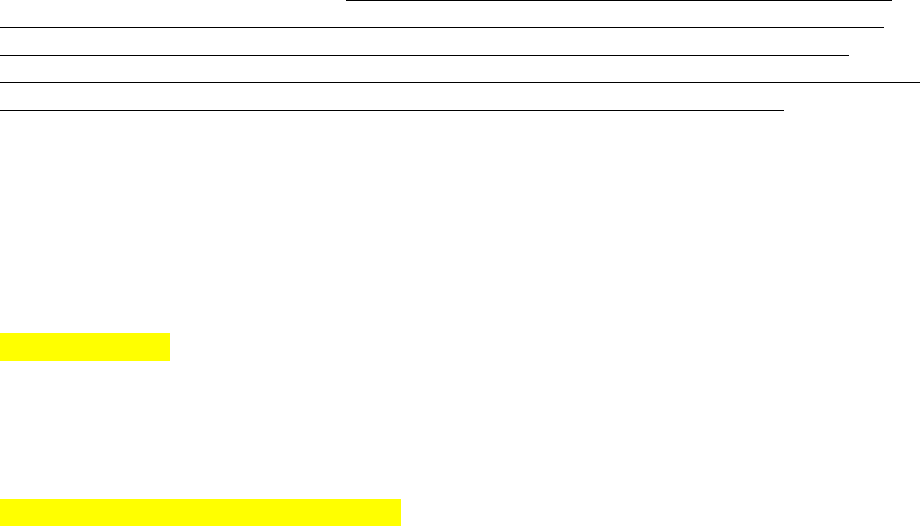
Petition supplement 29 of 79
complied with where applicable. In situations where the standards and requirements
referenced in paragraphs (a) and (e) through (g) of this section conflict with existing
requirements, standards, and regulations of the OSH Act of state OSH laws, the
requirement, standards, and regulations affording the most protection for worker safety
and health will apply during response activities conducted under the NCP. Federal OSH
Act requirements include, among other things, Construction Standards (29 CFR part
1926), General Industry Standards (29 CFR part 1910), and the general duty
requirement of section 5(a)(1) of the OSH Act (29 U.S.C. 654(a)(1)). No action by the
lead agency with respect to response activities under the NCP constitutes an exercise
of statutory authority within the meaning of section 4(b)(1) of the OSH Act. All
governmental agencies and private employers are directly responsible for the safety
and health of their own employees.
NEW SECTION
(i) Governmental agencies and the responsible party shall provide the OSHA PCC
with the records and data in paragraph (c) of this section within the described timeframe
to support comprehensive protection of worker safety and health during response
activities.
ENTIRELY NEW SECTION §300.152
§300.152 Public safety and health.
(a) For the purposes of the NCP, the HHS PCC is the lead agency providing
oversight of public safety and health, regardless of which federal agency is designated
as the lead agency. HHS will provide assistance, when requested by federal or state
agencies, local government, Area Committees, federally-recognized CACs or Indian
Tribes, to design public safety and health programs consistent with the Human Safety
and Health Plan in the ACPs. During response operations, the HHS PCC will update
and inform the OSC/RPM and RRT members in the impacted area on issues relating to
public safety and health on a regular basis during response operations.
(b) HHS oversight will consist of OEM-trained field teams of HHS personnel working
in close coordination with the OSHA and HHS Scientific Support Coordinators or SSC.
The field teams shall be coordinated by the HHS PCC and shall consist of six
investigators and two field coordinators for every 100,000 or fewer people residing in or
visiting the area impacted by the areal extent of contamination (including air-borne and
water-borne contamination), and all suitable areas in very close proximity to the
contamination necessary for implementation of the response action, and all areas from
which response workers have been brought in or commuted from such as nearby
communities outside of the contamination area or prison populations. To gain rapid
assessments of public health after a discharge, the HHS PCC will:
(1) Perform rapid health assessments on populations most at-risk from
exposure consistent with the Human Health and Safety Plan in ACPs. Where available,
these health assessments may be used by the lead agency to assist in the assessment
of potential human health effects associated with the oil discharge or release of
chemical agents. In developing a health assessment, the HHS PCC shall provide a
process for obtaining data of sufficient quality and quantity to satisfy data needs and
shall include a quality assurance project plan.
Petition supplement 30 of 79
(2) Make the determination, based on the factors in paragraph (b)(1) or (3) of
this section, whether there is a threat to public health or welfare of the United States at
any time during response operations. In making the determination, the HHS PCC shall
use a precautionary approach meaning that where there are present or a plausible risk
of a substantial threat to public health or welfare, lack of full scientific certainty will not
be a basis for postponing effective actions to reduce the threat or potential threat and to
protect public health. There is no cost-benefit requirement in making such a
determination. These protections may be relaxed only if further scientific findings
emerge that provide sound evidence that no harm will result to the populations most at-
risk from the threat or potential threat.
(3) The following factors shall be considered in making a determination
pursuant to this section, although this is not an exhaustive list:
(i) Actual or potential exposure to nearby human populations
(especially school children, outdoor life guards, volunteer turtle watch monitors, or other
such sentinel groups) or secondary actual or potential exposure to human populations
(such as populations near decontamination operations or people living with exposed
workers), animals, or the food chain from oil, ultra-hazardous oil, or chemical agents
used in response operations.
(ii) Presence of intermediate and chronic levels of VOCs or PAHs
present near human habitations at any time during a 24/7 monitoring regime;
(iii) Occurrence of outbreaks or higher than normal incidences of:
(A) Persistent cold and flu-like symptoms, including runny or
stuffy nose, shortness of breath;
(B) Persistent cough or sore throat;
(C) Muscle or body aches, numbness, or tingling, or a stiff neck;
(D) Chest pain or rapid, irregular or slow heartbeat;
(E) Persistent headaches;
(F) A change in vision or speech (blurry vision, slurred speech);
(G) Fatigue or tiredness;
(H) Dizziness, nausea, light-headedness, loss of consciousness;
(I) Convulsions, vomiting, or diarrhea;
(J) Fever;
(K) Bleeding from body orifices or blood in urine, stool, vomit, or
phlegm;
(L) Persistent skin rashes or skin lesions; or
(M) Unusual hair loss.
(iv) Evidence that health clinics, pharmacies with physician’s assistants
on duty, or hospitals in or near the impacted area have recorded a higher than normal
(based on records from previous years) incidence of any of the symptoms described in
paragraph (iii) of this section;
(v) Evidence that pharmacies in the impacted area(s) have ordered
higher than normal (based on records from previous years) over-the-counter
medications for:
(A) cold and flu-like symptoms or allergy symptoms (such as
Tylenol, Benadryl, Zyrtec, Sudafed, nebulizers, anti-histamines and anti-histamine nasal
sprays, nasal corticosteroids, OCD decongestant, allergy eye drops, etc.);
Petition supplement 31 of 79
(B) neurological symptoms (such as Dramamine, Verticalm,
Meclizine, Diphenhydramine HCI, Asprin, etc.);
(C) skin rashes, hives, or scabies (such as Hydrocortisone
crème, topical steroids, etc.); or
(D) orifice bleeding (such as Preparation H, etc.);
(vi) Evidence from surveys or veterinary clinics or veterinarians that
large or small animals in or near the impacted area have experienced a higher than
normal (based on records from previous years) incidence of any of the symptoms
described in paragraph (iii) of this section;
(vi) Evidence from other areas that experienced a similar oil discharge
or release of hazardous substances, pollutants, or contaminants that the discharge or
release posed a substantial threat to public safety and health;
(vii) Actual or potential contamination of drinking water supplies or
sensitive ecosystems based on intermediate or chronic exposure levels;
(viii) Chemical agents or oily waste in drums, barrels, tanks, or other
bulk storage containers, that may pose a threat of release;
(ix) High levels of oil, oily waste, or chemical agents in soils largely at
or near the surface (such as improper disposal at municipal landfills), that may migrate;
(x) Weather conditions that may cause oil, oily waste, or chemical
agents to migrate or be released;
(xi) Threat of fire or explosion; and
(xii) Other situations or factors that may pose threats to public health or
welfare of the United States.
(4) At any discharge where the HHS PCC agency makes the determination,
based on the factors in paragraphs (b) of this section, that there is a substantial threat to
public health or welfare of the United States, the lead agency shall begin as soon as
possible to abate, prevent, minimize, stabilize, mitigate, or eliminate the threat to public
health or welfare of the United States or the environment.
(5) The following removal actions are, as a general rule, appropriate in the
types of situations shown; however, this list is not exhaustive and is not intended to
prevent the lead agency from taking any other actions deemed necessary under
CERCLA, CWA section 311, or other appropriate federal or state enforcement or
response authorities, however, the list does create a duty on the lead agency to take
action specific to protecting public health and welfare:
(i) Fences, warning signs, or other security or site control
precautions—where humans or animals have access to the impacted area;
(ii) Drainage controls, for example, run-off or run-on diversion—where
needed to reduce migration of oil, oily waste material, or chemical agents off-site
(including decontamination areas) or near human habitations (such as water treatment
facilities or schools);
(iii) Stabilization of berms, dikes, impoundments, or landfills or drainage
or closing of lagoons—where needed to maintain the integrity of the structures;
(iv) Capping of contaminated soils or sludges—where needed to
reduce migration of oil, oily waste material, or chemical agents into soil, ground or
surface water, or air;
(v) Using chemicals and other materials authorized in subpart J to

Petition supplement 32 of 79
retard the spread of the discharge or to mitigate its effects—where the use of such
chemicals will reduce the spread of the discharge;
(vi) Excavation, consolidation, or removal of highly contaminated soils
from drainage or other areas—where such actions will reduce the spread of, or direct
contact with, the contamination;
(vii) Removal of drums, barrels, tanks, or other bulk containers that
contain or may contain oil, oily waste material, or chemical agents—where it will reduce
the likelihood of spillage; leakage; exposure to humans, animals, or food chain; or fire or
explosion;
(viii) Containment, treatment, disposal, or incineration of oily materials—
where needed to reduce the likelihood of human, animal, or food chain exposure; or
(ix) Provision of alternative water supply—where necessary
immediately to reduce exposure to contaminated household or irrigation water and
continuing until such time as local authorities can satisfy the need for a permanent
remedy.
(c) Where necessary to protect public health or welfare, the HHS PCC shall request
the lead agency to have FEMA conduct a temporary relocation or the state/local officials
conduct an evacuation, and the lead agency shall follow through with the request.
(1) Evacuations are necessary:
(i) when the HHS PCC makes a determination of a substantial threat
to public health and welfare; or
(i) for human habitations within 1,000 feet of a discharge of ultra-
hazardous oil.
(2) The HHS PCC may authorize ending the evacuation once the trigger for
evacuation is determined and remedied, including remediation if necessary.
(3) Once an area has been evacuated and repopulated, the HHS PCC will
continue to monitor the population with annual assessments, using indicators in
paragraph (b) of this section, for at least five years.
(d) The HHS PCC shall establish and implement a process for record-keeping, data
management, data analysis and synthesis of all records obtained during response and
remedial operations and follow up monitoring programs after an evacuation. The
process will include at a minimum:
(i) organizing the records;
(ii) creating a public database of the records;
(iii) releasing the database and interim reports to the public, Congress,
the NRT and impacted RRT(s), and the impacted or interested states, in a timely
manner as follows: the first six months of response activities to be released within one
year from commencement of response activation; the second six months of response
activities within 1.5 years from commencement of response activation; and so on until
response activities and follow up monitoring programs are completed; and
(iv) issuing a final public report with recommendations to improve public
safety and health measures during oil discharge or release of hazardous substances,
pollutants or contaminants within six months of completion of response activities, not
including follow up monitoring programs.

Petition supplement 33 of 79
§300.155 Public information and communication.
(a) When an incident occurs, it is imperative to give the public prompt, accurate
information on the nature of the incident and the actions underway to mitigate the
damage. OSCs/RPMs and community relations personnel should ensure that all
appropriate Indian Tribes and public and private interests are kept informed and that
their concerns are considered throughout a response. They should coordinate with
available public affairs/community relations resources to carry out this responsibility by
establishing a Spill Information Center bringing together resources from federal and
state agencies and, as appropriate, local government and federally-recognized CACs..
(b) An on-scene news office may be established to coordinate media relations and to
issue official federal information on an incident. Whenever possible, it will be headed by
a representative of the lead agency. The OSC/RPM determines the location of the on-
scene news office, but every effort should be made to locate it near the scene of the
incident. If a participating agency believes public interest warrants the issuance of
statements and an on-scene news office has not been established, the affected agency
should recommend its establishment. All federal news releases or statements by
participating agencies should be cleared through the OSC/RPM.
REORGANIZED SECTION
(1) Information dissemination relating to natural resource damage
assessment activities shall be coordinated through the lead administrative trustee. The
designated lead administrative trustee may assist the OSC/RPM by disseminating
information on issues relating to damage assessment activities. Following termination of
removal activity, information dissemination on damage assessment activities shall be
through the lead administrative trustee.
NEW SECTION
(2) Information dissemination relating to human safety and health shall be
coordinated through the PCCs. The OSHA PCC shall assist the OSC/RPM by
disseminating information on issues relating to worker safety and health, and the HHS
PCC on issues relating to public safety and health. Following termination of removal
activity, information dissemination on worker and public safety and health related to
response activities shall be through the respective PCCs.
(c) The community relations requirements specified in §§ 300.415, 300.430, and
300.435 apply to removal, remedial, and enforcement actions and are intended to
promote active communication between Indian Tribes and communities affected by
discharges or releases and the lead agency responsible for response actions.
Community Relations Plans (CRPs) are required by EPA for response actions for oil
discharges and releases of hazardous substances, pollutants, and contaminants,
including intentional releases of chemical agents. The OSC/RPM shall ensure
coordination with such plans which may be in effect at the scene of a discharge or
release or which may need to be developed during follow-up activities.
§300.165 OSC reports.
(a) The OSC/RPM shall submit to the NRT or RRT a report on removal operations
and actions taken within 90 days of completion of the removal operation and a report on
remedial activities and actions taken within 90 days of termination of remedial activities.
Both reports shall include independent reports from the OSHA PCC and the HHS PCC.

Petition supplement 34 of 79
The RRT shall review the OSC report and send to the NRT a copy of the OSC report
with its comments or recommendations within 60 days after the RRT has received the
OSC report.
(b) The OSC report shall record the situation as it developed, the actions taken, the
resources committed, and the problems encountered for each of the stated priorities of
the NCP consistent with §300.317.
§300.170 Federal agency participation.
Federal agencies listed in §300.175 have duties established by statute, executive order,
or Presidential directive which may apply to federal response actions following, or in
prevention of, the discharge of oil or release of a hazardous substance, pollutant, or
contaminant. Some of these agencies also have duties relating to the restoration,
rehabilitation, replacement, or acquisition of equivalent natural resources injured or lost
as a result of such discharge or release as described in subpart G of this part. The NRT,
RRT, Area Committee, and Citizens’ Advisory Council organizational structure, and the
NCP, RCPs and ACPs, described in §300.210, provide for agencies to coordinate with
each other and to integrate area-specific knowledge in carrying out these duties.
(a) Federal agencies may be called upon by an OSC/RPM during response planning
and implementation to provide assistance in their respective areas of expertise, as
described in §300.175, consistent with the agencies’ capabilities and authorities. The
DOL/OSHA and HHS/CDC permanent co-chairs shall coordinate with the OSC/RPM to
provide additional assistance during response operations for protection of worker and
public safety and health, as described in §§ 300.150 and 300.152.
(b) In addition to their general responsibilities, federal agencies should:
(1) Make necessary information available to the Secretary of the NRT, RRTs,
Area Committees, OSCs/RPMs, and PCCs.
(2) Provide representatives to the NRT and RRTs and otherwise assist RRTs,
OSCs and PCCs, as necessary, in formulating, implementing, monitoring, and
evaluating RCPs and ACPs.
(3) Inform the NRT, RRTs, federally-recognized CACs, and Area Committees,
consistent with national security considerations, of changes in the availability of
resources that would affect the operations implemented under the NCP.
§300.175 Federal agencies: additional responsibilities and assistance
(a) Federal agencies may be called upon by an OSC/RPM during response
planning, implementation, monitoring, and evaluation to provide assistance in their
respective areas of expertise, as described in §300.175, consistent with the agencies’
capabilities and authorities. For the purposes of the NCP, agencies with expertise in
releases of hazardous, pollutants, and contaminants will also make that expertise
available in discharges of ultra-hazardous oils and other oils.
(b) (6) The Department of Agriculture (USDA) has scientific and technical
capability to measure, evaluate, and monitor, either on the ground or by use of aircraft,
situations where natural resources including soil, water, wildlife, and vegetation have
been impacted by fire, insects and diseases, floods, hazardous substances, oil

Petition supplement 35 of 79
discharges, and other natural or man-caused emergencies. The USDA may be
contacted through Forest Service emergency staff officers who are the designated
members of the RRT. Agencies within USDA have relevant capabilities and expertise as
follows:
(8) HHS assists with the assessment, preservation, and protection of human
health and helps ensure the availability of essential human services. HHS provides
technical and nontechnical assistance in the form of advice, guidance, and resources to
other federal agencies, Indian Tribes, and federally-recognized CACs as well as state
and local governments.
(i) The principal HHS response comes from the U.S. Public Health Service
and is coordinated from the Office of the Assistant Secretary for Health, and various
Public Health Service regional offices. Within the Public Health Service, the primary
response to a hazardous materials emergency comes from Agency for Toxic
Substances and Disease Registry (ATSDR) and the Centers for Disease Control (CDC).
For the purpose of the NCP, both agencies will also provide assistance to a discharge
that is or poses a substantial threat to public health and welfare including a discharge of
ultra-hazardous oil, or a release of chemical agents under the CWA, as described in
§300.152. Both ATSDR and CDC have a 24-hour emergency response capability
wherein scientific and technical personnel are available to provide technical assistance
to the lead federal agency, the PCCs, and state and local response agencies on human
health threat assessment and analysis, and exposure prevention and mitigation. Such
assistance is used for situations requiring evacuation of affected areas, human
exposure to hazardous materials, oil, and chemical agents, and technical advice on
mitigation and prevention. CDC takes the lead during petroleum releases and
discharges that are or pose a substantial threat to public health and welfare, including of
ultra-hazardous oil while ATSDR takes the lead during chemical releases under
CERCLA and releases of chemical agents under the CWA. Both agencies are mutually
supportive.
(ii) Other Public Health Service agencies involved in support during oil
discharges and releases of hazardous materials incidents either directly or through
ATSDR/CDC include the Food and Drug Administration, the Health Resources and
Services Administration, the Indian Health Service, and the National Institutes of Health.
(iii) Statutory authority for HHS/National Institutes for Environmental
Health Sciences (NIEHS) involvement in hazardous materials accident prevention is
non-regulatory in nature and focused on two primary areas for preventing community
and worker exposure to hazardous materials releases: Worker safety training and basic
research activities. For the purposes of the NCP, this authority is extended to include oil
discharges in the paragraphs under this section.
NEW SECTIONS
(A) Under section 126 of SARA, NIEHS is given statutory
authority for supporting development of curricula and model training programs for waste
workers and chemical emergency responders.
(B) Under section 118(b) of the Hazardous Materials
Transportation and Uniform Safety Act (HMTUSA) (49 U.S.C. 1802 et seq.), NIEHS also
administers the Hazmat Employee Training Program to prepare curricula and training
for hazardous materials transportation workers. In the basic research arena, NIEHS is
authorized under section 311 of SARA to conduct a hazardous substance basic
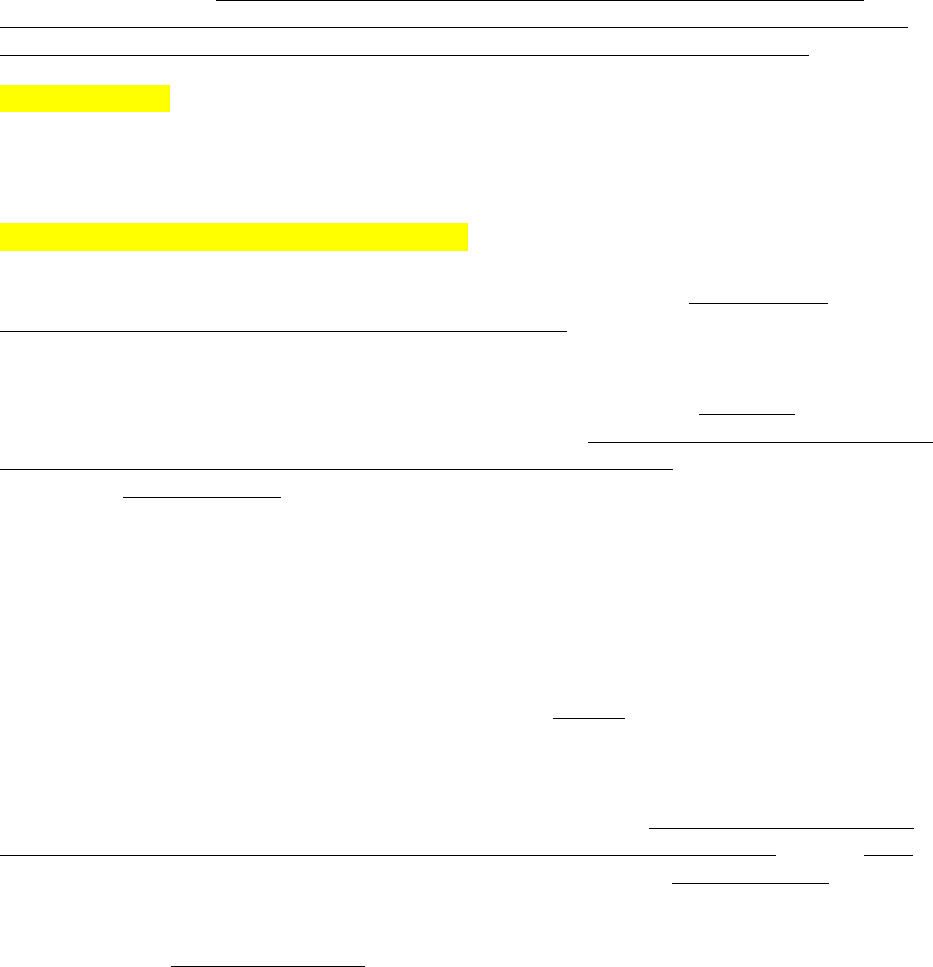
Petition supplement 36 of 79
research and training program to evaluate toxic effects and assess human health risks
from accidental releases of hazardous materials. Under Title IX, section 901(h) of the
Clean Air Act Amendments, NIEHS also is authorized to conduct basic research on air
pollutants, as well as train physicians in environmental health. Federal research and
training in hazardous materials release prevention represents an important non-
regulatory activity and supplements ongoing private sector programs.
(9) DOI may be contacted through Regional Environmental Officers (REOs),
who are the designated members of RRTs. Department land managers have jurisdiction
over the national park system, national wildlife refuges and fish hatcheries, the public
lands, and certain water projects in western states. In addition, bureaus and offices
have relevant expertise as follows:
(v) Bureau of Ocean Energy Management (BOEM): Oversight of
offshore oil and gas exploration and production facilities and associated pipelines and
pipeline facilities under the Outer Continental Shelf Lands Act and the CWA.
NEW SECTION
(vi) Bureau of Safety and Environmental Enforcement (BSEE): Oil spill
response technology research; and establishing oil discharge contingency planning
requirements for offshore facilities.
RENUMBER PARAGRAPHS (vii through xi)
(xi) Bureau of Indian Affairs: Coordination of activities affecting Indian
lands; assistance in identifying Indian tribal government officials; assistance in
coordinating and implementing 33 USC 1321(b) §706.
(11) The Department of Labor (DOL), through OSHA and the states operating
plans approved under section 18 of the OSH Act, has authority to and shall conduct
safety and health inspections of hazardous waste sites including on-site activities during
response operations to oil discharges as described in §300.150 to assure that
employees and volunteers are being protected and to determine if the site is in
compliance with:
(i) Safety and health standards and regulations promulgated by OSHA
(or the states) in accordance with section 126 of SARA and all other applicable
standards; and
(ii) Regulations promulgated under the OSH Act and its general duty
clause. OSHA inspections may be self-generated, consistent with its program
operations and objectives, or may be conducted in response to requests from EPA or
another lead agency, or in response to accidents or worker complaints. OSHA may also
conduct inspections at hazardous waste sites in those states with approved plans that
choose not to exercise their jurisdiction to inspect such sites. OSHA will provide advice
and consultation to EPA and other NRT/RRT agencies as well as to the OSC/RPM
regarding hazards to persons engaged in response activities and actions necessary to
reduce hazards or threat of hazards and protect worker safety and health. OSHA shall
also take any other action necessary to assure that employees and volunteers are
properly protected at such response activities consistent with §300.150. Any questions
about occupational safety and health at these sites may be referred to the OSHA
Regional Office or the OSHA PCC.

Petition supplement 37 of 79
§300.180 State and local participation in response.
(a) Each state governor is requested to designate one state office/representative to
represent the state on the appropriate RRT. The state’s office/representative may
participate fully in all activities of the appropriate RRT. Each state governor is also
requested to designate a lead state agency that will direct state-lead response
operations. This agency is responsible for designating the lead state response official
and the OSHA and HHS PCCs for federal and/or state-lead response actions, and
coordinating/communicating with any other state agencies, as appropriate. Local
governments are invited to participate in activities on the appropriate RRT as may be
provided by state law or arranged by the state’s representative. Indian tribes should
assign one person or office to represent the tribal government on the appropriate RRT
and Area Committee.
(b) Appropriate local and state officials and federally-recognized Indian Tribes will
participate as part of the response structure as provided in the RCP and ACP.
(c) In addition to meeting the requirements for local emergency plans under SARA
section 303, state and local government agencies and Indian Tribes are encouraged to
include contingency planning for responses, consistent with the NCP, RCP, and ACP in
all emergency and disaster planning.
(d) For facilities not addressed under CERCLA or the CWA, states and Indian Tribes
are encouraged to undertake response actions themselves or to use their authorities to
compel potentially responsible parties to undertake response actions.
(f) Because state and local public safety organizations including ones with Indian
Tribes would normally be the first government representatives at the scene of a
discharge or release, they are expected to initiate public safety measures that are
necessary to protect public health and welfare and that are consistent with containment
and cleanup requirements in the NCP, and are responsible for directing evacuations
pursuant to existing state or local procedures.
§300.185 Nongovernmental participation.
(b) The technical and scientific information (including traditional environmental
wisdom) generated by the local community and Indian Tribes, along with information
from federal, state, and local governments, should be used to assist the OSC/RPM in
devising response strategies and should be integrated with information generated by
standard techniques where available.. Such information and strategies will be
incorporated into the ACP. The SSC may act as liaison between the OSC/RPM and
such interested organizations.
(c) ACPs shall establish a plan with procedures to allow for well organized,
worthwhile, and safe use of volunteers, including compliance with §300.150 regarding
worker safety and health. ACPs should provide for the direction of volunteers by the
OSC/RPM or by other federal, state, or local officials knowledgeable in contingency
operations and capable of providing leadership. ACPs also should identify specific
areas in which volunteers can be used, such as beach surveillance, logistical support,

Petition supplement 38 of 79
and bird and wildlife treatment. Volunteers should not be used for physical removal or
remedial activities unless they have agreed in writing to operate in compliance §300.150
and the ACP volunteer plan. If, in the judgment of the OSC/RPM or the OSHA PCC,
unanticipated dangerous conditions exist (beyond the innately hazardous conditions of
discharges and releases) and volunteers cannot be adequately protected from such
unanticipated conditions while conducting response activities under the provisions in
§300.150 and the ACP volunteer plan, volunteers shall be restricted from on-scene
operations.

Petition supplement 39 of 79
Subpart C––Planning and Preparedness
§300.205 Planning and coordination structure
(c) Area. As required by section 311(j) of the CWA, under the direction of the
federal OSC for its area, Area Committees comprising qualified personnel of federal,
state, and local agencies shall be responsible for:
NEW SECTION
(1) Creating a Citizens Advisory Council (CAC) for each ACP or RCP as
authorized by section 5002(a)(2)(j) of the OPA and as described in §300.206;
REPLACEMENT SECTION
(2) Working with appropriate federal, state, and local officials, Indian Tribes
and federally-recognized CACs to:
(i) prepare an ACP for their areas (as described in §300.210(c));
(ii) enhance the contingency planning among these representatives
and to assure pre-planning of joint response efforts, including procedures for protection
of worker and public safety and health, mechanical containment and recovery, use and
emergency stop use of chemical agents consistent with NCP priorities under §300.317
and Subpart J, oil and product removal and shoreline cleanup, protection of sensitive
environmental areas, and protection, rescue, and rehabilitation of fisheries and wildlife;
and
(iii) expedite decisions for the use and emergency stop use of chemical
agents or products that are listed on the NCP Product Schedule at the time of the oil
discharge and are consistent with the ACP and Subpart J.
§300.206 Citizens’ Advisory Councils or CACs.
(a) Effective citizen engagement and oversight of energy operations has been found
to be critical to the proper function of industry, government, and civil society. Area
Committees shall involve local citizens in the process of preparing, adopting,
monitoring, evaluating, and revising oil spill contingency plans by establishing Citizens’
Advisory Councils (CAC) as authorized under the OPA Section 5002(a)(2)(J). Citizens’
Advisory CACs shall operate as a separate advisory body to the Area Committee, as a
mechanism to bring local knowledge into ACPs and RCPs; increase trust and
communication between citizens, the oil industry, and government; combat
complacency; strengthen oil spill prevention and response measures within their scope
of responsibility; and oversee compliance with worker and public safety and health and
environmental protections in areas for which ACPs are required by §300.210(c) and
under relevant tank vessel, facility, pipeline, and rolling stock response plans.
(b) Membership. The CAC shall be composed of voting members, as follows:
(1) Geographic scope and composition. Voting members must reside from
within the geographic area covered by the ACP and strive to represent the demographic
diversity of the area. Where possible, no more than 20 percent of the members may
reside within any single political subdivision within this area. A political subdivision
means a geographic region accepted to be in the jurisdiction of a particular
governmental entity such as a county, parish, incorporated town, or Native village. For
the purposes of the NCP, a political subdivision may also mean a neighborhood or other
community existing outside of an incorporated municipal government.
Petition supplement 40 of 79
(2) Voting Members. Voting members shall be appointed by, and serve
exclusively at the pleasure of, the following stakeholder groups:
(i) Locally-owned and community-based commercial fishing
representative, if appropriate, meaning a person who makes at
least 50 percent of their annual income from harvesting or
processing fish or shellfish within the area;
(ii) Locally-owned and community-based charter fishing
representatives, if appropriate, meaning a person who makes at
least 50 percent of their annual income from transporting paying
clients to a site to catch fish or shellfish within the area;
(iii) Locally-owned and community-based commercial ranching
representative, if appropriate, meaning a person who owns or runs
a ranch in the area and which sells at least 50 percent of its harvest
for local consumption within the area;
(iv) Locally-owned and community-based commercial farming
representative, if appropriate, meaning a person who owns or runs
a farm in the area and which sells at least 50 percent of its harvest
for local consumption within the area;
(v) Local Chamber of Commerce representatives or other local
business representatives such as Rotary Club;
(vi) Community-based environmental representatives, meaning a
person who is recognized among the community or area for
effectively advocating protection of the environment;
(vii) Community-based environmental justice representatives, meaning
a person who is recognized among the community or area for
recognizing the needs of and effectively advocating on behalf of
vulnerable populations including low income, Low English
Proficiency, minority and residents with disabilities;
(viii) Indigenous representatives from each Indian Tribe in the area, if
interested and willing.
(ix) Community-based public health advocacy representatives,
meaning a person who is recognized among the community or area
for recognizing the needs of and effectively advocating on behalf of
direct health care service to the individual or family as well as
activities that promote and build capacity to improve health and
access to health care in communities and the larger public;
(x) Community-based worker safety and health advocacy
representatives, meaning a person who is recognized among the
community or area for recognizing the needs of and effectively
advocating improved safety and health conditions and measures on
behalf of workers or laborers;
(xi) Community-based professional health care representatives,
meaning a person who is recognized among the community or area
for providing effective health care for area residents, who has a
license for health care (such as a medical doctor, nurse, physician’s
assistant, naturopathic doctor, or other complementary medicine
professional), and who earns at least 50 percent of their annual
Petition supplement 41 of 79
income in the service of providing health care to residents in the
area;
(xii) Community-based first responder representative, meaning a person
(as a fireman or an EMT) who is among those responsible for going
immediately to the scene of an accident or emergency to provide
assistance; and
(xiii) LEPC representative, meaning a person from the Local Emergency
Planning Committee as described in §300.205(e).
(3) Non-voting members. During periods of activation for spill response and
remedial operations, If a discharge or release moves from the area covered by one ACP
or RCP into another area and if that area is not covered by an ACP or RCP, then the
CAC may invite participation in CAC activities by non-voting members who represent
the demographic diversity of this additional area for the duration of the response and
remedial operations.
(c) Terms.
(1) Duration of CAC. The term of the CAC shall continue throughout the
lifetime of energy development and transportation activities in the area.
(2) Term of Appointment. The voting members of the CAC shall be appointed
by, and serve at the sole discretion of, their respective interest group, for a term of three
years;
(i) Certification: Stakeholders interested in selecting representatives
must submit a letter of inquiry with at least five letters of recommendation including
three from persons outside of their stakeholder group to the Environmental Protection
Agency no later than 60 days after revisions to the NCP. The Administrator will certify
stakeholders based on definitions of stakeholder groups in paragraph (2)(b)(2) of this
section.
(ii) Initial voting: The Administrator will contact all certified
stakeholders 45 days after revisions to the NCP to a public meeting convening certified
stakeholders to participate in a vote to determine their CAC representatives.
(iii) Subsequent internal appointments: After first appointments, the
members of the CAC shall determine practices and processes for future appointments.
(iv) Initial Appointments: A drawing of lots among the voting members
shall determine that one-third of that group serves for 3 years, one-third serves for 2
years, and the remainder serves for 1 year.
(v) Self-governance of future appointment procedure: After the initial
appointments CAC members will determine protocol and procedure for new
appointments.
(d) Self-Governing. The CAC shall elect its own officers, select its own staff, and
make policies with regard to internal operating procedures. After the initial
organizational meeting hosted by the Secretary of Interior, the CAC shall be self-
governing.
(e) Conflicts of Interest. No individual selected as a voting member of the CAC shall
be engaged in any activity, which may conflict with such individual carrying out his/her
function as a member thereof. Such activities shall include, but may not be limited to,
Petition supplement 42 of 79
employment by the oil industry or its contractors or service providers, employment by a
municipality or local government, or an elected official of a municipality or local
government.
(f) Duties. The CAC shall provide duties as specified in this section, covering all
energy development and transportation activities in the area covered under the ACP. In
fulfilling its responsibilities, the Committees shall incorporate all duties granted to the
Committees created in Prince William Sound and Cook Inlet under OPA 90 Sec. 5002
(e) and Sec. 5002 (f), as relevant to their area, or shall provide equivalent duties
appropriate to their area. The CACs shall:
(1) Provide advice and recommendations on all aspects of energy
exploration, development, and transportation (including protection of worker and public
safety and health) in the geographic area covered under the ACP, including health and
environmental assessments, permitting, exploration, development, production, and
transportation to minimize the impact of energy development to public health and
welfare and the environment.
(2) Monitor impacts to human health and the environment and recommend
mitigation efforts to minimize impacts of energy development to public health and
welfare and the environment.
(3) Monitor oil spill prevention and contingency plans for the area, onshore
and offshore.
(4) Recommend standards and stipulations for area deferrals and other site-
specific regulations intended to minimize the impact of energy development to public
health and welfare and the environment.
(5) Recommend protocols for expediting use of products or chemical agents
authorized under Subpart J and for expediting stopping or discontinuing use of products
that have unanticipated or harmful consequences to public health or welfare or the
environment.
(6) Monitor occupational health, worker safety, public health, and mental
health impacts of energy development, oil discharges and response and remedial
activities, and recommend appropriate oil industry, federal, state, and local
governmental and responsible party action.
(7) Monitor the conduct of responsible party economic damages claims
process pursuant to OPA 90, including any independent claims facility, and federal,
state and local individual and business assistance programs related any oil discharge
and recommend appropriate action to the independent claims facility, federal, state, and
local government agencies and/or responsible party.
(8) Monitor the economic, social and cultural impacts of energy development
and oil spills on socially vulnerable communities including low income, Low English
Proficiency, indigenous, minority and residents with disabilities;
(9) Monitor the development and implementation of plans for the restoration,
rehabilitation, replacement, or acquisition of the equivalent, of the natural resources
under section 1002(b)(2)(A) of the federal, state, local and tribal trustees.
(10) Serve on the Unified Incident Command in the event of a spill of national
significance. CAC members will be provided a rotating seat to serve in each established
area command outpost as appropriate and monitor, evaluate, and make
recommendations for removal and remedial plans.
Petition supplement 43 of 79
(11) Conduct other activities within the authority and scope of the CAC that the
CAC deems appropriate.
(12) Meet quarterly, and convene an annual meeting that rotates among
communities or political subdivisions within the area covered under the ACP.
(13) Conduct outreach including but not limited to field hearings and meetings,
and a quarterly newsletter for stakeholders. Additional stakeholders, including schools,
faith-based organizations and other interests, should be consulted to the maximum
extent possible to address the broadest set of concerns during periods of pre-spill
planning and response activation.
(g) Committees. The CAC is authorized to create committees as necessary to carry
out its duties.
(1) Committees may include but are not limited to the following:
(i) scientific / technical committee;
(ii) environmental monitoring committee;
(iii) oil spill prevention / response committee;
(iv) offshore committee (outside of 100 m depth contour);
(v) near shore committee (inside of 100 m depth contour);
(vi) claims committee; and
(vii) human safety and health (including workers and the public and
mental health) committee.
(2) The membership of the Committees shall be made up of members of the
CAC, citizens, representatives of community-based nonprofits, and recognized scientific
experts selected by the CAC.
(3) Each committee shall provide periodic reports on activities to the CAC and
public.
(h) No Estoppel. The CAC shall not be held liable under Local, State or Federal Law
for costs or damages as a result of rendering advice under this section. Nor shall any
advice given by a voting member of the CAC or program representative or agent be
grounds for estopping the interests represented by the voting CAC members from
seeking damages or other appropriate relief.
(i) Research. In carrying out its duties, the CAC is authorized to conduct its own
scientific research, and shall review the scientific work undertaken by or on behalf of the
energy industry or government.
(j) Agency Cooperation. Each Federal or State department, agency, or other
instrumentality shall, with respect to all permits, site-specific regulations, and other
matters governing the activities and actions of the Committees, consult with the CAC
prior to taking substantive action with respect to the permit, site-specific regulation, or
other matters. This consultation shall be carried out with a view to enabling the CAC to
review the permit, site-specific regulation, or other matters and make appropriate
recommendations regarding operations, policy or agency actions. Prior consultation
shall not be required if an authorized Federal agency representative reasonably
believes that an emergency exists requiring action without delay.
Petition supplement 44 of 79
(k) Subpoenas.
(1) Issuance. A subpoena may be issued under this subsection only by an
agreement based on its predetermined internal procedures as described in paragraph
(d) of this section.
(2) Enforcement. In the case of contumacy or failure to obey a subpoena
issued under paragraph (1) of this section, the United States district court for the district
in which the subpoenaed person resides, is served, or may be found, or where the
subpoena is returnable, may issue an order requiring the person to appear at any
designated place to testify or to produce documentary or other evidence.
(i) Judicial action for noncompliance. Any failure to obey the order of
the court may be punished by the court as contempt of that court.
(ii) Additional enforcement. In the case of any failure of any witness to
comply with any subpoena or to testify when summoned under authority of this section,
the CAC may, by majority vote, certify a statement of fact constituting such failure to the
appropriate United States attorney, who may bring the matter before the grand jury for
action, under the same statutory authority and procedures as if the United States
attorney had received a certification under sections 102 through 104 of the Revised
Statutes (2 U.S.C. 21 192 through 194).
(3) Information from federal agencies.
(i) The CAC may secure directly from any Executive department,
bureau, agency, board, commission, office, independent establishment, or
instrumentality of the Federal Government, information, suggestions, estimates, and
statistics for the purposes of this title.
(ii) Cooperation. Each Federal department, bureau, agency, board,
commission, office, independent establishment, or instrumentality shall, to the extent
authorized by law, furnish information, suggestions, estimates, and statistics directly to
the CAC, upon request made by the Chairperson, the Chairperson of any subcommittee
created by a majority of the CAC, or any member designated by a majority of the CAC.
(l) Recommendations of the CAC. All advice and recommendations of the CAC
shall be non-binding. In the event that government or industry do not accept, or
significantly modifies before adoption, the advice of the CAC, the respective entity shall
provide to the CAC in writing, within 5 days of its decision, notice of its decision and a
statement of reasons for its rejection or modification of the recommendation.
(m) Location and compensation.
(1) Location. The CAC shall be located within the largest political subdivision
in the area covered by the ACP, with offices in locations chosen by the CAC.
(2) Members of the CAC shall not be compensated for their services to the
CAC, but shall be allowed travel expenses, including per diem, at a rate established by
the CAC not to exceed the rates authorized for employees of agencies under sections
5702 and 5703 of title 5, United States Code.
(n) Funding.
(1) Requirement. Permits and Contingency Plans for all energy development
activities shall be effective only so long as the CAC is funded pursuant to paragraph (2)
of this section.

Petition supplement 45 of 79
(2) Funding. The owners or operators of all energy development and
transpiration facilities, activities, or operations in the area shall collectively provide, on
an annual basis, a minimum of $5 million or 0.001 percent of the taxable revenue,
whichever is larger, to the CAC to conduct its duties. A contract shall be developed
between energy industry operators and the CAC. Such amount:
(A) shall be adjusted annually by the U.S. Consumer Price Index; and
(B) may be adjusted periodically upon the mutual consent of the Area
Committee and the CAC.
(o) Reports. Prior to 36 months after the establishment of the CAC, the Government
Accountability Office (GAO) shall report to the President and the Congress its
assessment of the effectiveness of the CAC in meeting its mandate as outline herein,
and recommendations for improvement.
§300.210 Federal contingency plans.
(b) Regional Contingency Plans. The RRTs, working with the states, shall develop
federal RCPs for each standard federal region, Alaska, Oceania in the Pacific, and the
Caribbean to coordinate timely, effective response by various federal agencies and
other organizations to discharges of oil or releases of hazardous substances, pollutants,
or contaminants. RCPs shall, as appropriate, include information on all useful facilities
and resources in the region, from government, commercial, academic, and other
sources. To the greatest extent possible, RCPs shall follow the format of the NCP and
be coordinated with state emergency response plans, ACPs, which are described in
§300.210(c), and Title III local emergency response plans, which are described in
§300.215. Such coordination should be accomplished by working with the SERCs in the
region covered by the RCP. RRTs shall coordinate and consult with Indian Tribes as
required under 33 USC 1321(c) section 711(a)(2). RCPs shall contain lines of
demarcation between the inland and coastal zones, as mutually agreed upon by USCG
and EPA.
(c) Area Contingency Plans.
(1) Under the direction of an OSC and subject to approval by the lead agency,
each Area Committee and appropriate Indian Tribes and CAC, in consultation with the
appropriate RRTs, Coast Guard DRGs, the NSFCC, SSCs, LEPCs, and SERCs, shall
develop an ACP for its designated area. This plan, when implemented in conjunction
with the priorities and other provisions of the NCP, shall be adequate to remove a worst
case discharge under §300.324, and to mitigate or prevent a substantial threat of such a
discharge, from a vessel, offshore facility, or onshore facility operating in or near the
area.
(2) The areas of responsibility shall include several Title III local planning
districts, or parts of such districts. In developing the ACP, the OSC shall coordinate with
affected SERCs and LEPCs. The ACP shall provide for a well coordinated response
that is integrated and compatible, to the greatest extent possible, with all appropriate
response plans of state, local, and non-federal entities, and especially with Title III local
emergency response plans.
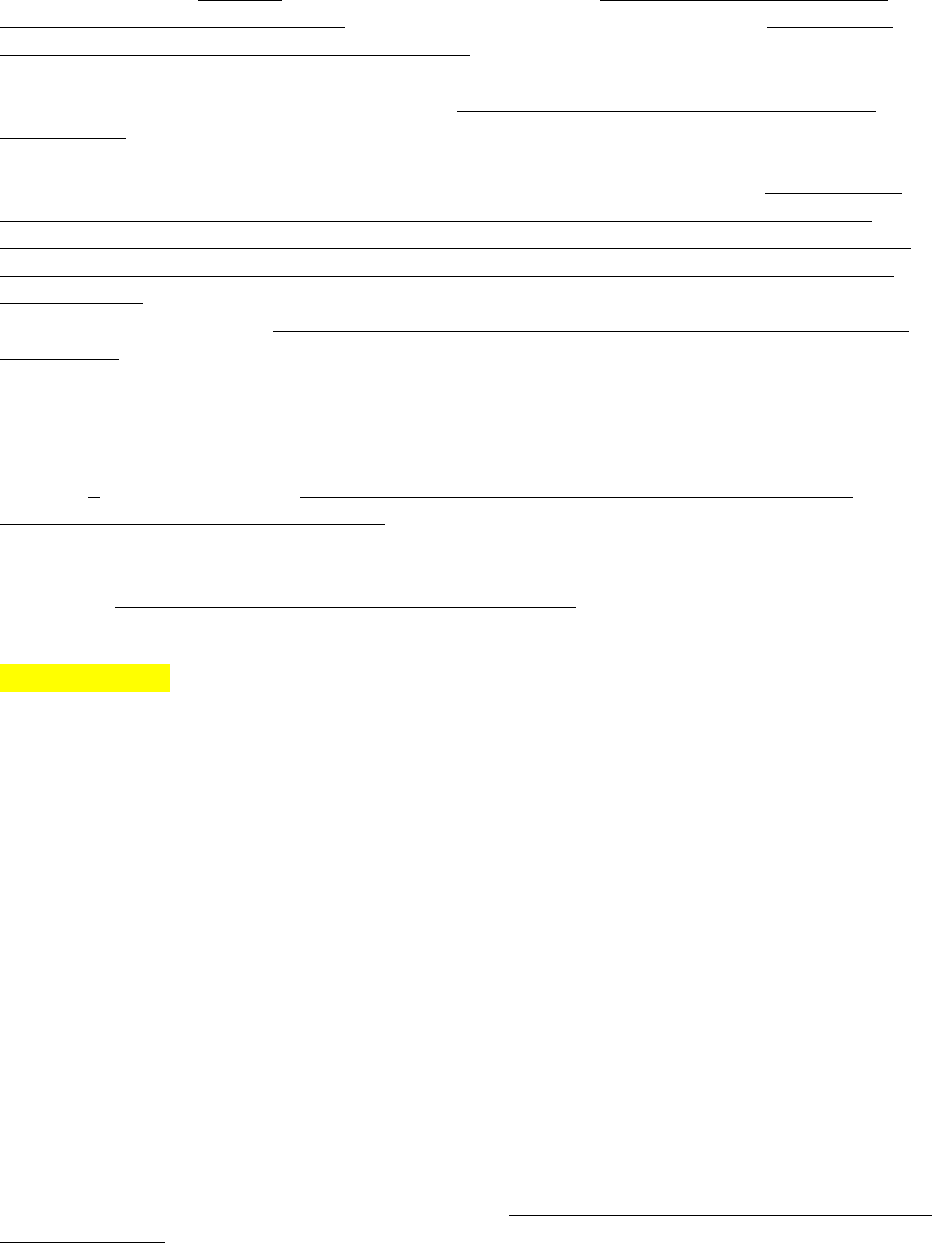
Petition supplement 46 of 79
(3) The ACP shall include the following:
(i) A description of the area covered by the plan, including the areas of
special economic, cultural, or environmental importance and areas of critical human
habitations and public resources that might be damaged by a discharge or response
operations (such as use of chemical agents);
(ii) A description in detail of the responsibilities of an owner or operator
and of federal, state, and local agencies in protecting worker and public health and
safety while removing a discharge, and in mitigating or preventing a substantial threat of
a discharge;
(iii) A list of equipment including firefighting equipment; PPE such as
respirators and replacement filters sufficient for the number of workers, duration of
activities, and exposure levels anticipated for a worst case discharge under §300.324;
chemical agents or other mitigating substances consistent with §300.317, Subpart J,
and the ACP; and personnel available to an owner or operator and federal, state, and
local agencies, to ensure protection and mitigation of risks to worker and public safety
and health, an effective and immediate removal of a discharge, and mitigation or
prevention of a substantial threat of a discharge (this may be provided in an appendix or
by reference to other relevant emergency plans (e.g., state or LEPC plans), which may
include such equipment lists);
(iv) A description of procedures to be followed for obtaining expedited
decisions regarding the use and emergency stop use of products consistent with
§300.317, Subpart J, and the ACPs;
(v) A detailed description of how the plan is integrated into other ACPs
and tank vessel, offshore facility, and on-shore facility response plans approved by the
President, and Indian tribal plans under 33 USC 1321, and into operating procedures of
the NSFCC; and
NEW SECTION
(vi) A detailed description of how the plan will provide:
(A) oil spill removal organizations at appropriate locations in
maritime regions with active oil activities and inland along conventional and ultra-
hazardous crude-carrying pipeline and rail car corridors in the area;
(B) trained personnel in sufficient numbers to immediately
remove a worst case discharge;
(C) training in oil removal techniques (including HAZWOPER
training by OEM-trained personnel consistent with §300.152 for local residents and
individuals through the Local Emergency Planning Committees or Community
Emergency Response Teams; and
(D) practice exercises not less than 2 times per year
which test the capacity of the equipment and personnel required under this
paragraph; and
(E) periodic testing and certification of equipment required under
this paragraph.
(4) (i) In order to provide for coordinated, immediate and effective
protection, rescue, and rehabilitation of, and minimization of risk of injury to, fish and
wildlife resources and habitat, Area Committees in coordination with Indian Tribes in the
area and CACs shall incorporate into each ACP a detailed annex containing a Fish and

Petition supplement 47 of 79
Wildlife and Sensitive Environments Plan that is consistent with the RCP and NCP. The
annex shall be prepared in consultation with the USFWS and NOAA and other
interested natural resource management agencies and parties. It shall address fish and
wildlife resources and their habitat, and shall include other areas considered sensitive
environments in a separate section of the annex, based upon recommendations agreed
upon by the Area Committee, Indian Tribes and the CAC. The annex will provide the
necessary information and procedures to immediately and effectively respond to
discharges that may adversely affect fish and wildlife and their habitat and sensitive
environments, including provisions for a response to a worst-case discharge. Such
information shall include the identification of appropriate agencies and their
responsibilities, procedures to notify these agencies following a discharge or threat of a
discharge, protocols for obtaining required fish and wildlife permits and other necessary
permits, and provisions to ensure compatibility of annex-related activities with removal
operations.
(ii) The annex shall:
(A) Identify and establish priorities for fish and wildlife resources
and their habitats and other important sensitive areas requiring protection from any
direct or indirect effects from discharges, chemical agents, mitigating devices, or
removal or remedial activities that may occur. These effects include, but are not limited
to, any seasonal or historical use, as well as all critical, special, significant, or otherwise
designated protected areas, and impacts from exposure to, ingestion by, inhalation by,
or assimilation into organisms, either directly from the environment or indirectly by
ingestion through food chains, that will or may reasonably be anticipated to cause
death, disease or infection, behavioral abnormalities, cancer, genetic mutation,
endocrine disruption or other physiological malfunctions (including malfunctions in
reproduction) or physical deformations, in such organisms or their offspring.
(B) Provide a mechanism to be used during a spill response for
timely identification of protection priorities of those fish and wildlife resources and
habitats and sensitive environmental areas that may be threatened or injured by a
discharge, chemical agents, mitigating devices, or removal or remedial activities. These
include as appropriate, not only marine and freshwater species, habitats, and their food
sources, but also terrestrial wildlife and their habitats that may be affected directly by
onshore oil, chemical agents, or mitigating devices or indirectly by oil-related factors,
such as loss or contamination of habitat and forage. The mechanism shall also provide
for expeditious evaluation and appropriate consultations on the effects to fish and
wildlife, their habitat, and other sensitive environments prior to application of chemical
agents consistent with the NCP priorities under §300.317, Subpart J, and the ACP.
(C) Identify potential short- and long-term environmental effects
on fish and wildlife, their habitat, and other sensitive environments resulting from
removal actions. including use of approved chemical agents, products or mitigating
devices and the options of no removal or only mechanical containment and removal..
Based on this evaluation of potential environmental effects, the annex should establish
priorities for use of approved chemical agents and removal actions to habitats within the
geographic region of the ACP. The annex should establish methods to minimize the
identified effects on fish and wildlife because of response activities, including, but not
limited to: Contamination and disturbance of sensitive areas and habitats; illegal or
inadvertent taking or disturbance of fish and wildlife or specimens by response
personnel; and fish and wildlife, their habitat, and environmentally sensitive areas

Petition supplement 48 of 79
coming in contact with various chemical agents . Furthermore, the annex should identify
the areas where the movement of oiled debris and chemical agents may pose a risk to
resident, transient, or migratory fish and wildlife, and other sensitive environments and
should discuss measures to be considered for removing such oiled debris and chemical
agents in a timely fashion to reduce such risk. Annex must include method to inventory
and document fish and wildlife carcasses before they are removed or destroyed and
records must be kept for documentation of damages.
(D) Provide for pre-approval of, if necessary, and emergency
stop use plans for, products authorized under Subpart J and allowed under the ACP
that are likely to minimize adverse overall impacts of oil, product, oil-product combined,
and response activities to fish and wildlife resources, their habitat, and other sensitive
environments. Such pre-approval authorization and emergency stop use plans must be
consistent with paragraphs (c)(4)(ii)(B) and (C), (c)(5)(ii)(B) and (C) of this section,
§300.205(c), and subpart J requirements, and must have the concurrence of the natural
resource trustees, Indian Tribes, federally-recognized CACs, and state and local
governments.
(E) Provide monitoring plan(s) to evaluate the effectiveness of
different products and mitigating devices authorized under Subpart J, or removal actions
in protecting the environment. Monitoring should include ‘‘set-aside’’ or ‘‘control’’ areas,
where no mitigative actions are taken, protocol for making determinations if a product
has unanticipated and harmful consequences on fish and wildlife resources, their
habitat, and other sensitive environments, and protocol for expeditiously ceasing use of
products that have unanticipated and harmful consequences.
(F) Identify and plan for the acquisition and utilization of
necessary response capabilities for protection, rescue, and rehabilitation of fish and
wildlife resources and habitat. This may include appropriately permitted private
organizations and individuals with appropriate expertise and experience, but it may not
include entities or individuals funded or affiliated in any way with the petrochemical
industry or its service providers, including the responsible party and its contractors, or
subcontractors due to conflicts of interest. The suitable organizations should be
identified in cooperation with natural resource law enforcement agencies. Such
capabilities shall include, but not be limited to, identification of facilities and equipment
necessary for effectively deterring sensitive fish and wildlife from entering oiled or
treated areas, and for capturing, holding, cleaning, and releasing injured wildlife. Plans
for the provision of such capabilities shall ensure that there is no interference with other
OSC removal operations or from the responsible party, directly or indirectly.
(G) Identify appropriate federal and state agency contacts and
alternates responsible for coordination of fish and wildlife rescue and rehabilitation and
protection of sensitive environments; identify and provide for required fish and wildlife
handling and rehabilitation permits necessary under federal and state laws; and provide
guidance on the implementation of law enforcement requirements included under
current federal and state laws and corresponding regulations. Requirements include,
but are not limited to procedures regarding the capture, transport, rehabilitation, and
release of wildlife exposed to or threatened by oil, chemical agents, mitigating
measures, or response activities, and disposal of contaminated carcasses of wildlife
consistent with paragraph (C) of this section.

Petition supplement 49 of 79
(H) Identify and secure the means for providing OSHA and EPA
training consistent with §300.150 and paragraph (5)(ii)(H) of this section for volunteers,
including those who assist with injured wildlife.
(I) Define the requirements for evaluating the compatibility
between this annex and non-federal response plans (including those of vessels,
facilities, and pipelines) on issues affecting fish and wildlife, their habitat, and sensitive
environments.
NEW SECTION: 300.210(c)(5)
(5) (i) In order to provide for coordinated, immediate, and effective
protection of, and minimizing risk of injury and work-related illness to, workers,
volunteers, and the general public, Area Committees in coordination with Indian Tribes
in the area and CACs shall incorporate into each ACP a detailed annex containing a
Human Health & Safety Plan consistent with §§ 300.150 and 300.152. The annex shall
be prepared in consultation with the DOL/OSHA, DHHS, and EPA and other interested
human safety and health agencies and parties. It shall address training requirements for
local residents and individuals (including volunteers) in safety (HAZWOPER) and oil
removal techniques in coordination with the LEPC, and protection of the general public,
human habitations, and critical public resources including air, drinking water, food, and
soil in a separate section of the annex, based upon recommendations agreed upon by
the Area Committee, Indian Tribes and the CAC. The annex will provide the necessary
information and procedures to immediately and effectively respond to discharges that
may adversely affect workers and the general public and their at-risk environments,
including provisions for a response to a worst-case discharge. Such information shall
include the identification of appropriate agencies and their responsibilities, procedures
to notify these agencies following a discharge or threat of a discharge, protocols for
timely public notification of potential threats to human safety and health, public record-
keeping, and provisions to ensure compatibility of annex-related activities with removal
and remedial operations.
(ii) The annex shall:
(A) Identify and establish priorities for human safety and health,
human habitation including essential human services, and other critical public resources
requiring protection from any direct or indirect effects from discharges, chemical agents,
mitigating devices, or removal or remedial activities that may occur. These effects
include, but are not limited to: evacuation or temporary relocation; temporary or long-
term interruption of drinking or irrigation water, water treatment systems, food growing
or harvest areas or food supplies, or other essential human services or critical public
resources; temporary or long-term interruption of lodging, work, school, or medical care;
impacts from exposure to, ingestion by, inhalation by, or assimilation into humans,
either directly from the environment or indirectly by ingestion through food chains, that
will or may reasonably be anticipated to cause death, disease or infection, behavioral
abnormalities, cancer, genetic mutation, endocrine disruption or other physiological
malfunctions (including malfunctions in reproduction) or physical deformations, in such
humans or their children; replacement of personal belongings such as homes, clothes,
and furniture.
(B) Provide mechanisms such as wind roses, census and
demographic data including socio-economic status, lists of emergency care services,
and detailed evacuation or temporary relocation plans to be used during a spill

Petition supplement 50 of 79
response for timely identification of protection priorities of at-risk populations and human
habitations and essential human services that may be threatened or injured by a
discharge, chemical agents, mitigating devices, or removal or remedial activities such
as those describe in paragraphs (5)(i) and (ii)(A) of this section. The mechanisms shall
also provide for expeditious evaluation and appropriate communication with the general
public on the effects to humans, human habitations, and other critical public resources
of oil and chemical agents prior to their use and consistent with the NCP priorities under
§300.317, Subpart J, and the ACP.
(C) Identify potential short- and long-term safety and health
effects on humans, their habitations, and critical public resources resulting from
exposure to oil, chemical agents, products, and removal or remedial actions, including
the option of no removal or only mechanical containment and removal. Based on this
evaluation of potential safety and health effects, the annex should establish priorities for
use of chemical agents and mitigating devices to minimize exposure of at-risk
populations to oil, chemical agents, and removal activities in the geographic region of
the ACP, including the watersheds (mountaintops to aquifers), air movement patterns,
and hydrologic cycles that connect ocean and land masses. The annex should establish
protocols consistent with §§ 300.150 and 300.152 to minimize the identified effects on
humans from exposure to oil, chemical agents, and other response activities, including,
but not limited to contamination and chemical illnesses, changes to mental health and
social behavior, disturbance from noise, disruption or contamination of culturally-
sensitive areas or subsistence activities, and disruption of local economies. The annex
should identify areas where the movement, storage, or disposal of oiled debris including
chemical agents may pose the least risk to humans and their habitats and should
discuss measures to reduce such risk.
(D) Provide for pre-approval of, if necessary, and emergency
stop use plans for products that have demonstrated capacity to minimize adverse
overall impacts of oil, product, oil-product combined, and response activities to humans,
their habitations, and critical public resources in the area covered by the ACP. Such
pre-approval authorization and emergency stop use plans must be consistent with
paragraphs (c)(4)(ii)(B) and (C), (c)(5)(ii)(B) and (C) of this section, §300.205(c), and
Subpart J requirements, and must have the concurrence of the natural resource
trustees, Indian Tribes, federally-recognized CACs, state and local governments, and
LEPCs.
(E) In coordination and consultation with OEM physicians or
health care providers with OEM training and the OSHA and HHS Scientific Support
Coordinator team, provide monitoring plans to evaluate the effectiveness of the ACP
Human Safety and Health Plan to protect human safety and health during response and
remedial activities. Monitoring should include pre-spill health assessments of ‘‘control’’
areas within the geographic area under the ACP and any area in close proximity that
can be reasonably anticipated to be impacted by a discharge or response or remedial
activities within the area covered by the ACP. Monitoring should include pre-spill and
post-spill sampling of water and air quality and baseline levels of VOCs and other
chemicals within human bodies, collected from a representative population based on
census, demographic data, and socio-economic status data. Monitoring plans must
include protocol for making determinations if a chemical agent allowed under Subpart J
may have unanticipated consequences that increase the risk or threat of risk on public
health and welfare, human habitations, and critical public resources, and protocol for

Petition supplement 51 of 79
expeditiously ceasing use of products that have such unanticipated and harmful
consequences.
(F) In coordination and consultation with OEM physicians or
health care providers with OEM training and the OSHA and HHS Scientific Support
Coordinator team, identify and plan for the acquisition and utilization of necessary
response capabilities for protection, diagnosis, and treatment options including
detoxification of humans, human habitations, and critical public resources. This may
include private organizations and individuals with expertise and experience in
occupational and environmental medicine, but it may not include entities or individuals
funded or affiliated in any way with the petrochemical industry or its service providers,
including the responsible party or its contractors or subcontractors due to conflicts of
interest. Such capabilities shall include, but not be limited to, identification of facilities
and equipment necessary for protection, diagnosis, and treatment of injured or ill
humans such as detox clinics staffed by OEM trained personnel, safe areas for
minimizing contact with oil and chemical agents, and evacuation or temporary relocation
plans. Plans for the provision of such capabilities shall ensure that there is no
interference with other OSC removal operations or from the responsible party, directly
or indirectly.
(G) In coordination and consultation with OEM physicians or
health care providers with OEM training and the OSHA and HHS Scientific Support
Coordinator team, identify appropriate federal and state agency contacts and alternates
responsible for coordination of protection of human safety and health, human
habitations, and critical public resources; identify and plan for monitoring, diagnosis, and
treatment; evaluation of the effectiveness of procedures and protocols in the plan; and
establish a process for public record-keeping of all monitoring data (excluding identifiers
for individual humans).
(H) Identify and secure the means for providing the full 40-hour
EPA or OSHA training for worker safety and health and waste disposal in 29 CFR
1910.120 for volunteers who assist with injured or ill humans, and for monitoring and
evaluating the Human Safety and Health Plan. Part of this training shall include training
about environmental health, chemical illnesses including recognition of potential
symptoms, and detox treatment. This training must be provided by individuals or
organizations qualified under (5)(ii)(F) and consistent with §300.150.
(I) Define the requirements for evaluating the compatibility
between this annex and non-federal response programs such as HHS/NIEHS programs
and trainings for preventing worker and public exposure to oil discharges and
hazardous materials releases, including preparing curricula and training for oil and
hazardous materials’ transportation workers, conducting worker safety training, training
physicians in environmental health, and basic research activities on air pollutants
including aerial transportation and deposition.
§300.211 OPA facility and vessel response plans.
This section describes and cross-references the regulations that implement section
311(j)(5) of the CWA. A tank vessel, as defined under section 2101 of title 46, U.S.
Code, an offshore facility, and an onshore facility that, because of its location, could
reasonably expect to cause substantial harm to public health or welfare or the
environment by discharging into or on the navigable waters, adjoining shorelines, or
exclusive economic zone must prepare and submit a plan for responding, to the

Petition supplement 52 of 79
maximum extent practicable, to a worst case discharge, and to a substantial threat of
such a discharge, of oil, chemical agents, or a hazardous substance. For the purpose of
the NCP, these response plans are required to be consistent with applicable Area
Contingency Plans, RCPs, and the NCP. These regulations are codified as follows:
§300.212 Area response drills
The OSC periodically shall conduct drills of removal capability (including fish and wildlife
response capability and public evacuation or temporary relocation capability), protocols
for preauthorization and emergency stop use of products that have unanticipated
consequences to human safety or health or the environment, and public notice of the oil
discharge, without prior notice, in areas for which ACPs are required by §300.210(c)
and under relevant tank vessel, facility, pipeline, and rolling stock response plans.

Petition supplement 53 of 79
Subpart D––Operational Response and Phases for Oil Removal
§300.300 Phase I—Discovery or notification
(b) (i) Any person in charge of a vessel or a facility shall, as soon as he or she
has knowledge of any discharge from such vessel or facility in violation of section
311(b)(3) of the CWA, immediately notify the NRC. If direct reporting to the NRC is not
practicable, reports may be made to the USCG or EPA predesignated OSC for the
geographic area where the discharge occurs. The EPA predesignated OSC may also
be contacted through the regional 24-hour emergency response telephone number. All
such reports shall be promptly relayed to the NRC. If it is not possible to notify the NRC
or predesignated OSC immediately, reports may be made immediately to the nearest
Coast Guard unit. In any event such person in charge of the vessel or facility shall notify
the NRC as soon as possible, but no later than one hour after knowledge of any
discharge.
NEW SECTIONS (ii) to (iii)
(ii) The responsible party will notify the NRC or other entities in paragraph (i)
as soon as possible, but no later than one-hour after knowledge of any discharge, of the
type of oil discharged and provide current Material Safety Data Sheets and a complete
chemical analysis of the oil discharged from the library catalogue on file.
(iii) Failure to comply with paragraphs (i) or (ii) will result in penalties of
$250,000 for every hour, or fraction thereof, of delay.
(d) Upon receipt of a notification of discharge the NRC shall promptly (within the
hour) notify the OSC. The OSC shall ensure notification of the appropriate state agency
of any state which is, or may reasonably be expected to be, affected by the discharge.
The OSC shall then proceed with the following phases as outlined in the RCP and ACP.
§300.305 Phase II—Preliminary assessment and initiation of action
(c) Where practicable, the framework for the response management structure is a
system (e.g., a unified command system), that brings together the functions of the
federal government, state and local governments, Indian Tribes, federally-recognized
CACs, and the responsible party to achieve an effective and efficient response, where
the OSC maintains authority as described under the NCP.
NEW SECTION
(d) Based on the preliminary assessment, the OSC will decide if the discharge may
or is likely to pose a substantial threat to the public health or welfare of the United
States (including but not limited to fish, shellfish, wildlife, other natural resources, and
the public and private beaches and shorelines of the United States). If there is not
enough information initially to make this determination, the OSC will direct response
activities for the worst-case scenario (substantial threat to public health or welfare or the
environment) until such time as the responsible party provides sufficient information to
make a determination or until the OSC can make a determination. If the responsible
party is unknown or there is no Regional or Area Contingency Plan for the geographic
area in which the discharge occurred, the OCS will assume control of response
operations.

Petition supplement 54 of 79
REPLACEMENT SECTIONS
(1) Except in a case when the OSC is required to direct the response to a
discharge that may pose a substantial threat to the public health or welfare of the United
States or the environment or when the responsible party is unknown, the OSC may
allow the responsible party to voluntarily and promptly perform removal and mitigating
actions, provided that:
(i) the OSC determines such actions are allowed and consistent with
the appropriate RCP or ACP to protect public health and welfare and the environment
while effectively containing and removing the discharge or mitigation or prevention of a
substantial threat of a discharge;
(ii) if the responsible party does conduct the removal, the response
will be conducted in accordance with the appropriate RCP or ACP; the OSC and PCCs
will monitor and evaluate response activities consistent with the NCP; and the OSC will
direct wildlife rescue and rehabilitation through the CACs as part of the ACPs;
(iii) if actions are not being taken to protect human safety and health,
public welfare, or the environment, and eliminate or mitigate the threat in accordance
with the appropriate contingency plans, the OSC shall so advise the responsible party;
(iv) if the responsible party does not respond properly or act in
accordance with the appropriate contingency plans, the OSC shall take appropriate
response actions and shall notify the responsible party of the potential liability for federal
response costs incurred by the OSC pursuant to the OPA and CWA. The OCS shall
retain control of the response actions until such time as the responsible party
demonstrates the capacity and intent to resume response actions that are in
accordance with the appropriate contingency plans; and
(v) continuing efforts should be made to encourage response by
responsible parties.
(2) If the discharge results or is likely to result in a substantial threat to the
public health or welfare of the United States) or the environment or if the responsible
party is unknown, the OSC must direct all response efforts, as provided in §300.322(b)
of this part and consistent with Subpart J and the RCP and ACP. The OSC shall
promptly notify spill response participants that the federal government will direct the
response. The OSC may act without regard to any other provision of the law governing
contracting procedures or employment of personnel by the federal government in
removing or arranging for the removal of such a discharge while protecting worker and
public safety and health consistent with the appropriate RCP or ACPs or, in the case
where there is no RCP or ACP, with the NCP §§ 300.317, 300.150, 300.152 and
Subpart J.
NEW SECTION
(3) In carrying out a response under this section, the OSC must:
(i) protect human safety and health and public welfare;
(ii) remove or arrange for the removal of a discharge, and mitigate or
prevent a substantial threat of a discharge consistent with §§ 300.317, 300.150,
300.152, and Subpart J;
(iii) Direct and monitor and evaluate all federal, state, and private
actions to protect public health and welfare and to remove or mitigate a discharge; and

Petition supplement 55 of 79
(iv) Remove and, if necessary, destroy a vessel, well, pipeline, rolling stock, or
other facility discharging oil, or threatening to discharge oil, by whatever means are
available.
(e) The OSC shall ensure that the natural resource trustees are promptly notified in
the event of any discharge of oil, as provided in the Fish and Wildlife and Sensitive
Environments Plan annex to the ACP for the area in which the discharge occurs. The
OSC and the trustees shall coordinate assessments, carcass collection and record-
keeping, evaluations, investigations, and planning with respect to appropriate actions to
contain and remove oil while or to mitigate damage from oil, chemical agents approved
under Subpart J and appropriate RCPs and ACPs, and other response activities. The
OSC shall consult with the affected trustees on the appropriate response actions to be
taken. The trustees will provide timely advice concerning recommended actions with
regard to trustee resources potentially affected. The trustees also will assure that the
OSC is informed of their activities in natural resource damage assessment that may
affect response operations. The trustees shall assure, through the lead administrative
trustee, that all data from the natural resource damage assessment activities that may
support more effective operational decisions are provided in a timely manner to the
OSC. The OSC shall share the use of non-monetary response resources (i.e.,
personnel and equipment) with the trustees as part of and in coordination with other
response activities provided trustee activities do not interfere with response actions to
protect or minimize threat to human safety and health. The lead administrative trustee
facilitates effective and efficient communication between the OSC and the other
trustees during response operations and is responsible for requesting non-monetary
federal response resources from the OSC on behalf of all trustees. The lead
administrative trustee is also responsible for applying to the NPFC for funding for
initiation of damage assessment for injuries to natural resources.
NEW SECTION (f)
(f) The OSC shall ensure that the OSHA and HHS permanent co-chairs or PCCs
are promptly notified in the event of any discharge of oil. The OSC and PCCs or their
on-scene representatives in the areas impacted by the spill shall coordinate response,
monitoring, evaluation, data collection, and record-keeping, and planning with respect to
appropriate actions to protect worker and public safety and health during response
activities including (if necessary) expediting deactivation or discontinuing use of certain
chemical agents or response activities that may have unanticipated harmful
consequences to worker or public safety or health, as described in the Human Safety
and Health Plan of the ACP for the area in which the discharge occurs.
(1) In meeting the requirements of this section, the OSC shall:
(i) consult with the permanent co-chairs or their on-site
representatives on the appropriate response actions to be taken to protect worker and
public safety and health consistent with the appropriate RCP and ACP and §§ 300.150
and 300.152;
(ii) in the event of a stop work order, coordinate with PCCs on
necessary actions to be taken to address and remedy the situation, if possible, that
triggered the order;

Petition supplement 56 of 79
(ii) share the use of non-monetary response resources (i.e., personnel
and equipment) with the PCCs as part of and in coordination with other response
activities.
(2) In meeting the requirements of this section, the OSHA and HHS on-site
PCCs shall:
(i) provide timely advice concerning recommended actions to protect
or mitigate potential risks to worker and public safety and health consistent with §§
300.150 and 300.152;
(ii) assure that the OSC is informed of PCC activities to monitor and
evaluate safety and health programs and trainings that may affect response operations;
(iii) assure that data and information collected under the Human Safety
and Health Plan which may support more effective operational decisions are provided in
a timely manner to the OSC;
(iv) issue stop work orders and restart orders when necessary and
consistent with §§ 300.150 and 300.152 and the ACPs;
(v) in the event of a stop work order, coordinate with the OSC, state
and local government, Indian Tribes, federally-recognized CACs, and the responsible
party, to address and resolve the problem, if possible;
(vi) facilitate effective and efficient communication between the OSC
and the NRT or RRT members, Indian Tribes, Area Committees, federally-recognized
CACs, and the responsible party during response operations;
(vii) be responsible for requesting non-monetary federal response
resources from the OSC on behalf of all OSHA or HHS programs; and
(viii) also be responsible for applying to the NPFC for funding for all
monitoring, evaluation, follow up, record-keeping programs, reports, and other activities
to protect worker and public safety and health consistent with §§ 300.150 and 300.152
and the ACP Human Safety and Health Plan.
§300.310 Phase III—Containment, countermeasures, cleanup, and disposal.
(a) Defensive actions shall begin as soon as possible to protect public health and
welfare of the United States or the environment and to prevent, minimize, or mitigate
threat(s). Actions may include but are not limited to: Analyzing water and air samples to
determine the source and spread of the oil; controlling the source of discharge;
measuring and sampling; source and spread control or salvage operations; placement
of physical barriers to deter the spread of the oil and to protect culturally-important
resources, natural resources, human habitations, critical public resources, and sensitive
ecosystems; control of the water discharged from upstream impoundment; and the use
of chemical agents, products, and other materials in accordance with Subpart J of this
part to restrain the spread of the oil and mitigate its effects. The ACP prepared under
§300.210(c) should be consulted for procedures to be followed for obtaining expedited
decisions regarding the use and emergency stop use of chemical agents or other
products listed on the NCP Product Schedule.
REPLACEMENT SECTION
(b) To ensure the likelihood that response or remedial actions taken to recover oil or
mitigate its effects shall be the most consistent with protecting public health and welfare
and the environment:

Petition supplement 57 of 79
(1) only those products listed on the Product Schedule at the time of the
discharge and consistent with Subpart J and ACPs will be considered for use;
(2) in cases where ACPs are not available, products will be considered for
use only if they are listed on the NCP Product Schedule, are consistent with Subpart J,
and have demonstrated that they do not act as sinking or spreading agents or otherwise
impede or impair containment and removal of oil, or threaten or harm safety and health
of workers and the public; and
(3) sinking agents shall not be used.
(c) Oil and contaminated materials recovered in cleanup operations shall be
disposed of in accordance with the RCP, ACP, and any applicable laws, regulations, or
requirements. RRT and Area Committee guidelines shall identify the disposal options
available during an oil spill response and shall describe what disposal requirements are
mandatory or may not be waived by the OSC. For the purposes of the NCP, recovered
oil and oiled debris will be considered hazardous waste. This classification supercedes
all prior state disposal approvals and permits that may not have designated such
material as hazardous waste. Based on priorities for protecting worker and public safety
and health and the environment, ACP guidelines shall address: the sampling, testing,
and classifying of recovered oil and oiled debris as hazardous waste; the segregation,
temporary storage, and stockpiling of recovered oil and oiled debris as hazardous
waste; prior state disposal approvals and permits; and the routes; methods (e.g.
recycle/reuse, on-site burning, incineration, landfilling at hazardous waste sites, etc.);
and hazardous waste sites for the disposal of collected oil, oiled debris, and animal
carcasses; and the procedures for obtaining authorizations for handling or transporting
hazardous waste materials. Waivers and exemptions for classification of recovered oil
and oiled debris as hazardous waste are not permitted. Under no circumstances will
recovered oil and oiled debris be disposed of in or near municipal landfills or be
recycled or reprocessed.
§300.315 Phase IV—Documentation and cost recovery.
(a) All OSLTF users need to collect and maintain documentation to support all
actions taken under the CWA. In general, documentation shall be sufficient to support
full cost recovery for resources utilized and shall identify the source and circumstances
of the incident, the responsible party or parties, and impacts and potential impacts to
public health and welfare, worker safety and health, and the environment.
Documentation procedures are contained in 33 CFR part 136.
(d) OSCs shall ensure the necessary collection and safeguarding of information,
samples, and reports. Samples and information shall be gathered expeditiously during
the response to ensure an accurate record of the impacts incurred. Documentation
materials shall be made available to the trustees of affected natural resources and the
OSHA and HHS permanent co-chairs. The OSC shall make available to trustees of the
affected natural resources and the PCCs information and documentation in the OSC’s
possession that can assist the trustees and the PCCS in the determination of actual or
potential natural resource injuries and actual or potential injuries to worker and public
safety and health.

Petition supplement 58 of 79
§300.317 National response priorities.
(a) Human life, safety and health must be given the top priority during every
response action. This includes any search and rescue efforts in the general proximity of
the discharge and the insurance of safety and health of response personnel and the
public.
(b) Stabilizing the situation to preclude the event from worsening is the next priority.
All efforts must be focused on saving a vessel that has been involved in a grounding,
collision, fire, or explosion, so that it does not compound the problem. Comparable
measures should be taken to stabilize a situation involving a facility, pipeline, or other
source of pollution. Stabilizing the situation includes securing the source of the spill
and/or removing the remaining oil from the container (vessel, tank, or pipeline) to
prevent additional oil spillage, to reduce the need for follow-up response action, and to
minimize adverse impact to the environment and to public health or welfare.
(c) The response must use containment and removal tactics in a coordinated
manner to ensure the likelihood of a timely, effective response that protects worker and
public safety and health and minimizes adverse impact to the environment from the
discharge and response activities including unanticipated and harmful consequences of
chemical agents and other mitigating devices.
(d) All parts of this national response strategy should be addressed concurrently, but
safety and health and stabilization are the highest priorities. The OSC should not delay
containment and removal decisions unnecessarily and should take actions to protect
worker and public safety and health and minimize adverse impact to the environment
that begin as soon as a discharge occurs, as well as actions to minimize further adverse
harm to worker and public safety and health and the environment from additional
discharges and response activities including unanticipated and harmful consequences
of chemical agents or other mitigating devices.
(e) The priorities set forth in this section are broad in nature, and should not be
interpreted to preclude the consideration of other priorities that may arise on a site-
specific basis.
§300.320 General pattern of response.
(a) When the OSC receives a report of a discharge, actions normally should be
taken in the following sequence:
(1) Investigate the report to determine pertinent information such as the threat
posed to public health or welfare of the United States or the environment, the type and
quantity of polluting material (including the type of oil), and the source of the discharge.
(2) Officially classify the size (i.e., minor, medium, major); determine if the
discharge is a substantial threat to the public health or welfare of the United States or a
worst case discharge); and determine the course of action to be followed to ensure
effective and immediate protection of public health or welfare or the environment and
removal, mitigation, or prevention of the discharge. Some discharges that are classified
as a substantial threat to the public health or welfare of the United States may be further
classified as a spill of national significance by the Administrator of EPA or the
Commandant of the USCG. The appropriate course of action may be prescribed in
§§300.322, 300.323, and 300.324.
(i) When the reported discharge is an actual or potential major
discharge or is ultra-hazardous oil(s) or poses a substantial threat to public health or
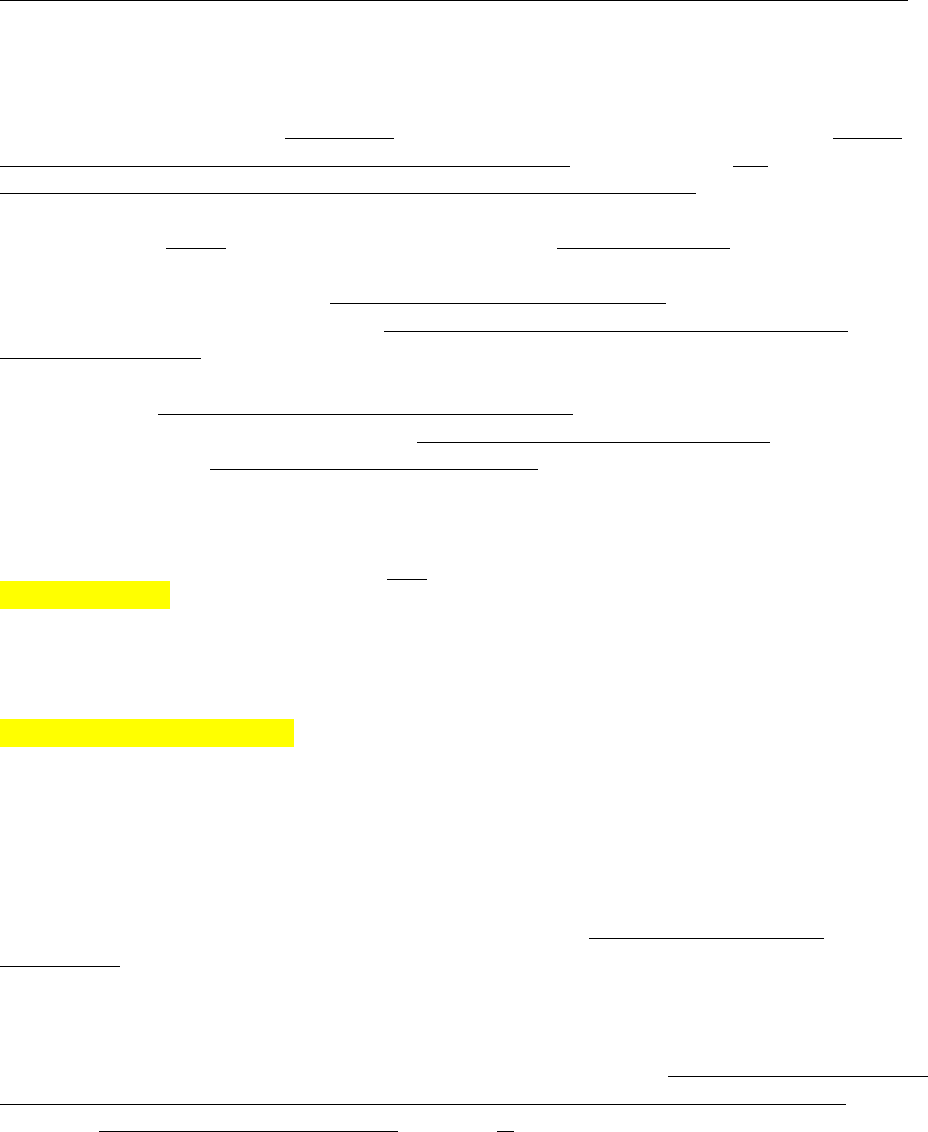
Petition supplement 59 of 79
welfare of the United States or the environment or results in significant public concern,
the OSC shall immediately notify the RRT and the NRC.
(ii) When the investigation shows that an actual or potential medium
discharge exists, the OSC shall recommend activation of the RRT.
(iii) When the investigation shows that an actual or potential minor
discharge exists, the OSC and PCCs shall monitor the situation to ensure that proper
protection of worker and public safety and health and removal action are being taken
consistent with §§ 300.150 and 300.152, Subpart J and the ACPs.
(3) If the OSC determines that effective and immediate removal, mitigation, or
prevention of a minor discharge can be achieved by Indian Tribes or private party
efforts, and where the discharge does not pose a substantial threat to the public health
or welfare of the United States and is not ultra-hazardous oil(s), determine whether the
responsible party or other person is protecting public health and welfare and the
environment while properly carrying out removal. Removal is being done properly when:
(i) The responsible party is applying the resources called for in its
response plan to protect worker safety and health and to effectively and immediately
remove, minimize, or mitigate threat(s) including from response activities to public
health and welfare, culturally-significant resources, and the environment;
(ii) The removal efforts are in accordance with applicable regulations,
including the NCP. Even if the OSC supplements responsible party resources with
government resources, the spill response will not be considered improper, unless
specifically determined by the OSC; and
NEW SECTION
(iii) The PCCs have not received any calls, petitions, reports, or
information about any of the symptoms listed in §§300.150(a) or 300.152(b) from the
public, response workers, health care professionals, health clinics, or hospitals in the
geographic area impacted by the discharge.
REPLACEMENT SECTION
(4) If the OSC determines that effective and immediate removal, mitigation, or
prevention of a medium discharge can be achieved by a state or political subdivision
thereof, and where the discharge does not pose a substantial threat to the public health
or welfare of the United States or is not ultra-hazardous oil(s), determine whether the
state or political subdivision is protecting public health and welfare and the environment
while properly carrying out removal consistent with section (3)(i) through (iii).
(5) Ensure prompt notification of the trustees and Indian Tribes with
jurisdiction of affected natural resources in accordance with the applicable RCP and
ACP.
(b) Removal shall be considered complete when so determined by the OSC in
consultation with Governor or Governors of the affected states and the CAC(s) from the
impacted geographic area and with concurrence of the Indian Tribes of the area. When
the OSC and other entities agree that removal is complete, OSLTF removal funding
shall end. This determination shall not preclude additional removal actions under
applicable state law.

Petition supplement 60 of 79
§300.322 Response to substantial threats to public health or welfare of the
United States
(a) As part of the investigation described in §300.320, the OSC shall determine
whether a discharge results in a substantial threat to public health or welfare of the
United States, culturally-important resources, and the environment. Factors to be
considered by the OSC in making this determination include, but are not limited to, the
size of the discharge, the character of the discharge, the type of oil discharged, and the
nature of the threat to public health or welfare of the United States. Upon obtaining such
information, the OSC shall conduct an evaluation of the threat posed, based on the
OSC’s experience in assessing other discharges and consultation with senior lead
agency officials, the Governor(s) of the affected state(s), the Indian Tribes and CACs of
the area impacted by the discharge, and readily available authorities who are not
associated in any manner with the petrochemical industry or the responsible party or its
contractors or subcontractors, on issues outside the OSC’s technical expertise including
all matters relating to Indian Tribes.
(b) If the investigation by the OSC shows that the discharge poses or may present a
substantial threat to public health or welfare of the United States or the environment, the
OSC shall direct all federal, state, or private actions to protect public health and welfare
and response workers’ safety and health and to remove the discharge or to mitigate or
prevent the threat of such a discharge, as appropriate.
REPLACEMENT & NEW SECTIONS (1) and (2)
(1) In directing the response in such cases, the OSC may act without regard
to any other provision of law governing contracting procedures or employment of
personnel by the federal government* to:
(i) Protect worker and public safety and health;
(ii) Protect public welfare and the environment;
(iii) Remove or arrange for the removal of the discharge;
(iv) Mitigate or prevent the substantial threat of the discharge; and
(v) Remove and, if necessary, destroy a vessel, well, facility, pipeline,
or rolling stock discharging, or threatening to discharge, by whatever means are
available.
(2) All expenditures in this section are subject to post-incident audit by the
member agency providing the OSC/RPM and the IRS. Expenditures deemed excessive
by either entity will not be reimbursable by tax-payer dollars.
(c) In the case of a substantial threat to public health or welfare of the United States
or the environment, the OSC shall:
(1) Assess opportunities for the use of various special teams and other
assistance described in §300.145, including the use of the services of the NSFCC, as
appropriate;
(2) Request immediate activation of the RRT and implementation of the RCP
or ACP as required by section 311(j)(4) of the CWA or relevant tank vessel, well, facility,
pipeline, or rolling stock response plan required by section 311(j)(5) of the CWA; and
(3) Take whatever additional response actions are deemed appropriate and
consistent with the NCP and appropriate RCP and ACPs. The OSC shall request the
lead agency or RRT to dispatch appropriate personnel to the scene of the discharge to
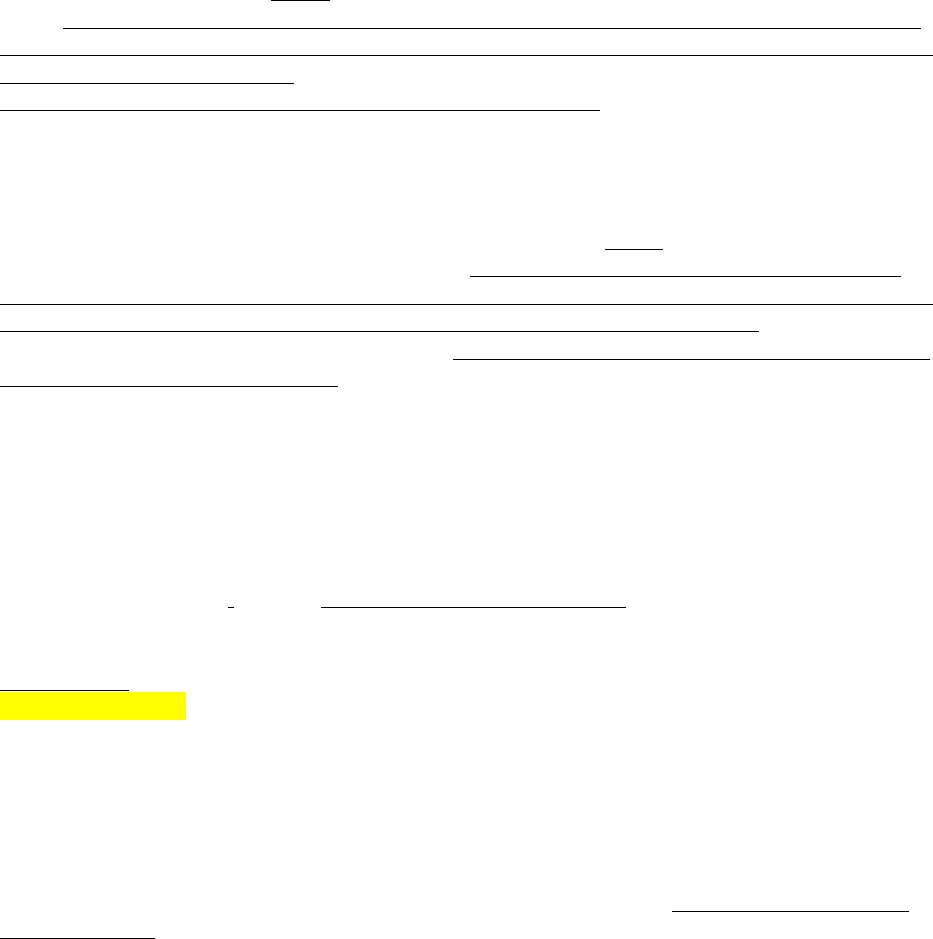
Petition supplement 61 of 79
assist the OSC. This assistance shall include technical support in the agency’s areas of
expertise and disseminating information to the public. The lead agency shall ensure that
a contracting officer is available on scene, at the request of the OSC.
§300.323 Spills of national significance.
(b) For a SONS in the inland zone, the EPA Administrator shall name a senior
Agency official to assist the OSC in communicating with affected parties and the public,
and coordinating federal, tribal, state, local, and international resources at the national
level. If affected parties include Indian Tribes, then the EPA Administrator shall name a
senior Agency official who is also a member of an Indian Tribe, although not necessarily
the affected Indian Tribe(s). This strategic coordination will involve the NRT, RRT(s),
Indian Tribes and CACs in the affected geographic area, the Governor(s) of affected
state(s), and the mayor(s) or other chief executive(s) of local government(s).
(c) For a SONS in the coastal zone, the USCG Commandant may name a National
Incident Commander (NIC) who will assume the role of the OSC in communicating with
affected parties and the public, and coordinating federal, tribal, state, local, and
international resources at the national level. If affected parties includes Indian Tribes,
then the USCG Commandant must name a senior Agency official who is also a member
of an Indian Tribe, although not necessarily the affected Indian Tribe(s). This strategic
coordination will involve the NRT, RRT(s), Indian Tribes and federally-recognized CACs
in the affected geographic area, the Governor(s) of affected state(s), and the mayor(s)
or other chief executive(s) of local government(s).
§300.324 Response to worst case discharges.
(a) If the investigation by the OSC shows that a discharge is a worst-case discharge
as defined in the ACP, or there is a substantial threat of such a discharge, the OSC
shall:
(2) Require, where applicable, implementation of the worst-case portion of an
approved tank vessel, facility, well, pipeline, or rolling stock response plan required by
section 311(j)(5) of the CWA;
(4) Take whatever additional response actions are deemed appropriate
including to:
NEW SECTIONS
(i) protect worker and public safety and health consistent with §§
300.150 and 300.152 and ACPs;
(ii) protect the environment consistent with the NCP, RCP, or ACP;
(iii) remove or arrange for the removal of the discharge consistent with
the NCP, RCP, or ACP;
(iv) mitigate or prevent the substantial threat of the discharge; and
(v) remove and, if necessary, destroy a vessel, well, facility, pipeline,
or rolling stock discharging, or threatening to discharge.
(ii) Inappropriate actions are ones that are inconsistent with the NCP,
RCP, or ACP or that increase the risk or potential risk of harm to worker or public safety
or health or the environment such as use of sinking agents or chemical agents that
include any criteria to de-list or remove products from the NCP Product Schedule, as
described in §300.925(1) through (9).
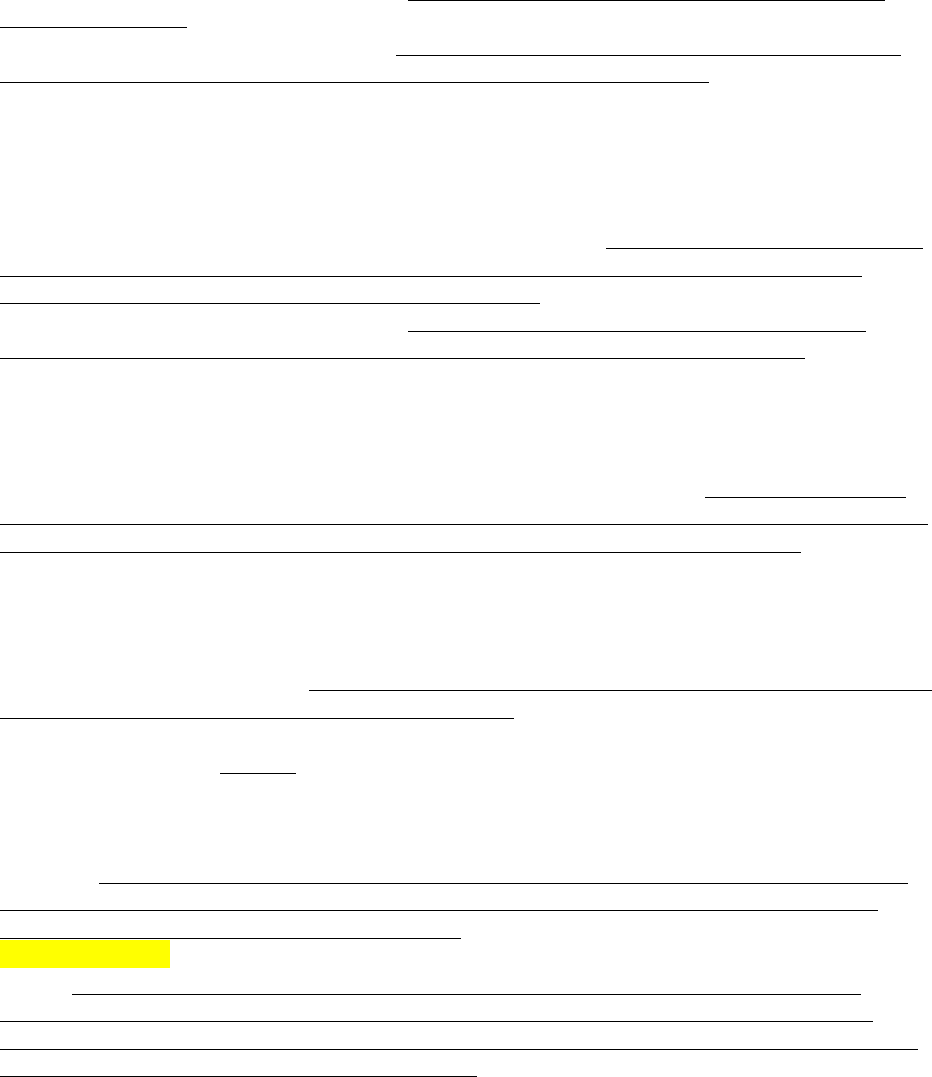
Petition supplement 62 of 79
(b) Under the direction of the OSC and the PCCs and in consultation with Indian
Tribes in the area, the NSFCC shall coordinate use of private and public personnel and
equipment, including strike teams, to protect worker and public safety and health and
the environment from the discharge and response activities and to remove a worst case
discharge and mitigate or prevent a substantial threat of such a discharge.
§300.335 Funding.
(a) The OSLTF is available under certain circumstances to fund removal of oil
performed under section 311 of the CWA. Those circumstances and the procedures for
accessing the OSLTF are described in 33 CFR part 136. The OSLTF will also be made
available for DOL/OSHA and HHS to protect worker and public safety and health,
consistent with §§300.150 and 300.152 and ACPs. The responsible party is liable for
costs of federal removal and damages, and federal oversight of worker and public
safety and health programs, including long-term health care and monitoring, in
accordance with section 311(f) of the CWA, section 1002 of the OPA, and other federal
laws.*
(b) Where the OSC requests assistance from a federal agency, that agency may be
reimbursed in accordance with the provisions of 33 CFR part 136. The PCC agencies
must be reimbursed in accordance with the provisions of 33 CRF part 136 for expenses
incurred while conducting duties described under §§ 300.150 and 300.152. Specific
interagency reimbursement agreements may be used when necessary to ensure that
the federal resources will be available for a timely response to a discharge of oil.
(c) Procedures for funding the initiation of natural resource damage assessment are
covered in 33 CFR part 136. Procedures for funding the Human Safety and Health Care
Plans in the ACPs are described in §300.206(n).
(f) The following entities have funds available for certain discharge removal actions:
(2) Pursuant to Title I of the OPA, the state or states affected by a discharge
of oil may act where necessary to remove such discharge. Pursuant to 33 CFR part 136
states may be reimbursed from the OSLTF for the reasonable costs incurred in such a
removal, including costs for state OSHA programs to protect worker safety and health
consistent with §300.150 and federal or state programs necessary to protect public
safety and health consistent with §300.152.
NEW SECTION
(3) Pursuant to Title I of the OPA or pursuant to the NCP, Indian Tribes
affected by a discharge of oil may act where necessary to remove such discharge.
Pursuant to 33 CFR part 136 Indian Tribes may be reimbursed from the OSLTF for the
reasonable costs incurred in such a removal.

Petition supplement 63 of 79
Subpart E––Hazardous Substance Response
§300.400 General.
(a) This subpart establishes methods and criteria for determining the appropriate
extent of response authorized by CERCLA and CWA section 311(c):
(1) When there is a release of a hazardous substance into the environment;
or
(2) When there is a release into the environment of any pollutant or
contaminant, including chemical agents, that may present an imminent and substantial
danger to the public health or welfare of the United States.

Petition supplement 64 of 79
Subpart G––Trustees for Natural Resources
§300.600 Designation of federal trustees.
(b) The following individuals shall be the designated trustee(s) for general categories
of natural resources, including their supporting ecosystems. They are authorized to act
pursuant to section 107(f) of CERCLA, section 311(f)(5) of the CWA, or section 1006 of
the OPA when there is injury to, destruction of, loss of, or threat to natural resources,
including their supporting ecosystems, as a result of a release of a hazardous
substance or a discharge of oil. Notwithstanding the other designations in this section,
the Secretaries of Commerce and the Interior shall act as trustees of those resources
subject to their respective management or control.
(2) Secretary of the Interior. The Secretary of the Interior shall act as trustee
for natural resources managed or controlled by the DOI. Examples of the Secretary’s
trusteeship include the following natural resources and their supporting ecosystems:
migratory birds; anadromous fish; endangered species and marine mammals; federally
owned minerals; and certain federally managed water resources. The Secretary of the
Interior shall also be trustee for those natural resources for which an Indian tribe would
otherwise act as trustee in those cases where the United States acts on behalf of the
Indian tribe. The Secretary must appoint one trustee from each Indian Tribe affected by
the discharge or release in those cases where the Indian Tribe is authorized to act as a
trustee, consistent with §300.610.

Petition supplement 65 of 79
Subpart J––Use of Chemical Agents and Other Products
§300.900 General.
(a) Section 311(d)(2)(G) of the CWA requires that EPA prepare a schedule of
chemical agents and other spill mitigating devices and substances, if any, that may be
used in carrying out the NCP. This subpart makes provisions for such a schedule.
(b) This subpart applies to the navigable waters of the United States and adjoining
shorelines, the waters of the contiguous zone, and the high seas beyond the contiguous
zone in connection with activities under the Outer Continental Shelf Lands Act, activities
under the Deepwater Port Act of 1974, or activities that may affect natural resources
belonging to, appertaining to, or under the exclusive management authority of the
United States, including resources under the Magnuson Fishery Conservation and
Management Act of 1976.
(c) This subpart applies to the use of any chemical agents or other additives as
defined in subpart A of this part that may be used to remove or control oil discharges.
§300.905 NCP Product Schedule.
(a) Oil Discharges.
(1) EPA shall maintain a schedule of chemical agents or other products that
may be authorized for use on oil discharges in accordance with the procedures set forth
in §300.910. This schedule, called the NCP Product Schedule, may be obtained from
the Emergency Response Division (5202–G), U.S. Environmental Protection Agency,
1200 Pennsylvania Ave., NW., Washington, DC 20460. The telephone number is 703–
603–8760.
(2) Products may be added to the NCP Product Schedule by the process
specified in §300.920. Products may be removed from the NCP Product Schedule by
the process specified in §300.925.
NEW SECTION (3)
(3) Products selected for use shall reflect the scope and purpose of the
actions being undertaken and how the action relates to long-term, comprehensive
response at the site and shall meet the following three general criteria for use in addition
to the authorization protocols, described in §300.910, and the data requirements
described in §§ 300.915 to 300.917.
(i) Threshold criteria. Overall protection of human health and the
environment and compliance with RCPs and ACPs are threshold requirements that
each product must meet in order to be eligible for selection.
(ii) Primary balancing criteria. The five primary balancing criteria are
long-term effectiveness and permanence; reduction of toxicity, mobility, or volume
through treatment; short-term effectiveness; implementability; and cost.
(iii) Modifying criteria. State and community acceptance are modifying
criteria that shall be considered in product selection.
§300.910 Authorization of use.
REPLACEMENT SECTIONS (a) through (d)
(a)
(1) RRTs, Area Committees, Indian Tribes, and federally-recognized CACs
shall address, as part of their planning activities, the desirability of using chemical
agents listed on the Product Schedule. RCPs and ACPs shall include preauthorization

Petition supplement 66 of 79
plans and emergency stop use plans during response operations and address the
specific contexts in which such products should and should not be used or should be
removed altogether from the NCP Product Schedule, as described in §300.925.
(i) In meeting the provisions of this section, preauthorization plans
shall address factors such as:
(A) the potential sources and types of oil that might be spilled;
(B) the risk of increasing threat or creating a threat to human
safety and health; the risk of making the situation worse by sinking or spreading the oil
into the environment; the risk of impeding or impairing containment and recovery of oil;
(C) the range of physical conditions, including seasonal
variability, necessary to meet the required minimum acceptable performance criterion
described in §§ 300.915 to 300.917;
(D) the existence and location of human populations, human
habitations, critical public resources, and culturally-sensitive resources that might be
impacted by spilled oil, chemical agents or product, or oil-product combinations;
(E) the existence and location of environmentally-sensitive
resources that might be impacted by spilled oil, chemical agents or product, or oil-
product combinations;
(F) the threshold criteria, especially community acceptance;
public notification requirements;
(G) available product and storage locations;
(H) available equipment including PPE (such as HAZWOPER
gear and respirators) a worst-case scenario, equipment storage locations, and
adequately trained operators; and
(I) the available plans and means to monitor product application
and effectiveness, worker safety and health programs, and public health and welfare,
consistent with §§ 300.150 and 300.152 and the Human Safety and Health Plan in the
ACPs.
(ii) As part of the preauthorization plans and emergency stop use
plans, RRTs may require the performance of supplementary testing of products, in
addition to the test methods specified in §§ 300.915 to 300.917 and described in
appendix C to part 300, due to existing site- or area-specific concerns.
(iii) In meeting the provisions of this section, protocols shall be
developed for expeditiously stopping product use during response operations if:
(A) there is sufficient evidence to suggest that product use is or
is likely to pose a substantial threat to worker safety or health, public safety or health,
public welfare, or the environment, as described in §§ 300.150 and 300.152 and the
ACP; or
(B) the product meets any of the criteria to de-list or remove
products from the NCP Product Schedule, as described in §300.925(1) through (9).
(2) The RRT representatives from EPA, OSHA, and HHS, the states with
jurisdiction over the waters of the area to which a RCP or ACP applies, the DOC and
DOI natural resource trustees, and the Indian Tribes of the region shall review and
either approve, disapprove, or approve with modification the preauthorization plans and
emergency stop use plans developed by Area Committees and federally-recognized
CACs. Approved preauthorization and emergency stop use plans shall be included in
the RCPs and ACPs.

Petition supplement 67 of 79
(3) If the RRT representatives from EPA, OSHA, and HHS, the states with
jurisdiction over the waters of the area to which a RCP or ACP applies, the DOC and
DOI natural resource trustees, and the Indian Tribes of the region:
(i) approve in advance the use of certain products under specified
circumstances as described in the preauthorization plan, the OSC may authorize the
use of the such products without obtaining the specific concurrences described in
paragraphs (b) and (c) of this section;
(ii) disapprove in advance the use of certain products under specified
circumstances as described in the preauthorization plan, the OSC may not authorize the
use of the such products; and
(iii) approve in advance an emergency stop use plan and if any of the
conditions of that plan are met or the threshold criteria are triggered during response
operations, the OSC, the EPA on-scene NRT or RRT representative if other than the
OSC, or the OSHA or HHS on-scene Permanent Co-Chair to the NRT or RRT may
authorize that product use is stopped without obtaining the specific concurrences
described in paragraphs (b) and (c) of this section.
(b) For spill situations that are not addressed by the preauthorization plans and
emergency stop use plans developed pursuant to paragraph (a) of this section, the
OSC, with the concurrence of the EPA, OSHA, and HHS representatives to the RRT,
the DOC and DOI natural resource trustees, Indian Tribes, federally-recognized CACs,
Area Committees, and RRT representatives from the states with jurisdiction over the
waters of the area to which a RCP or ACP applies, may authorize the use of chemical
agents on the oil discharge, provided that:
(1) the products are listed on the NCP Product Schedule at the time of the
discharge;
(2) the product does not meet any of the criteria to de-list or remove products
from the NCP Product Schedule, as described in §300.925(1) through (9); and
(3) an emergency stop use plan is simultaneously approved and authorized
by these same entities.
(c) The OSC, with the concurrence of the EPA, OSHA, and HHS representatives to
the RRT, the DOC and DOI natural resource trustees, Indian Tribes, federally-
recognized CACs, Area Committees, and RRT representatives from the states with
jurisdiction over the waters of the area to which a preauthorization plan applies, may
authorize the use of burning agents on a case-by-case basis, provided that:
(1) the products are listed on the NCP Product Schedule at the time of the
discharge;
(2) product use is consistent with threshold criteria;
(3) the product does not meet any of the criteria to de-list or remove products
from the NCP Product Schedule, as described in §300.925(1) through (9); and
(4) an emergency stop use plan is simultaneously approved and authorized
by these same entities.
(d) Notwithstanding 33 USC 1321(c)(3)(B), under no circumstances may the OSC
act with or without the concurrence of the EPA, OSHA, and HHS representatives to the
RRT, the DOC and DOI natural resource trustees, Indian Tribes, federally-recognized

Petition supplement 68 of 79
CACs, Area Committees, and RRT representatives from the states with jurisdiction over
the navigable waters or environment threatened by the release or discharge, to
authorize use of chemical agents or burning agents that are not listed on NCP Product
Schedule.
(e) In all circumstances pursuant to paragraphs (a) through (d) of this section,
product use during oil spill response must be contingent upon a demonstration that the
range of in-situ physical conditions is optimal to meet the minimum acceptable
performance criterion.
(f) In all circumstances pursuant to paragraphs (a) through (e) of this section, the
EPA and U.S. Coast Guard must consult with the National Marine Fisheries Service and
U.S. Fish and Wildlife Service regarding any product use or activities that might affect
endangered species, as required by the Endangered Species Act Section 7, prior to
product use or commencing the activities.
(g) Sinking agents shall not be authorized for application to oil discharges.
REPLACED IN ENTIRETY BY SECTIONS §300.915 to §300.917
§300.915 General prohibitions.
For the purposes of the NCP, the following prohibitions apply. Potential products that
meet any of the following criteria may not be listed on the NCP Product Schedule.
(a) Ingredients.
(1) Products containing industrial solvents for oil and grease such as
petroleum distillates, known or suspected human health hazards, proprietary
ingredients, or any undisclosed ingredients.
(2) Product containing ingredients that are trade secrets or confidential
business information.
(b) Warnings. Products that list on their MSDS or SDS warnings of potential health
impacts or warnings against accidental release such as “Do not contaminate surface
water,” or “Keep product out of sewers and watercourses by diking or impounding”;
cleanup instructions for soaking up product with absorbent material or by diking,
impounding, or otherwise containing spilled material for proper disposal; or other similar
precautions that indicate potential harm to humans or the environment.
(c) Regulations. Products that are regulated under, or include ingredients that are
regulated under, or that have been exempted from, the following federal, state and
international laws:
(1) OSHA Hazard Communication Rule, 29 CFR 1910.1200;
(2) CERCLA/Superfund, 40 CFR 117, 302;
(3) SARA/Superfund Amendments And Reauthorization Act of 1986 (Title III):
(i) Section 302 – Extremely Hazardous Substances (40 CFR 355);
(ii) Sections 311 and 312 – Material Safety Data Sheet Requirements
(40 CFR 370);
(iii) Section 313 – List Of Toxic Chemicals (40 CFR 372);
(4) Toxic Substances Control Act (TSCA);
(5) Federal Water Pollution Control Act, Clean Water Act, 40 CFR 401.15 /
Petition supplement 69 of 79
Formerly Sec. 307, 40 CFR 116.4 / Formerly Sec. 311;
(6) Clean Air Act, Sec. 112 (40 CFR 61, Hazardous Air Pollutants), Sec. 602
(40 CFR 82, Class I And II Ozone Depleting Substances);
(7) California Proposition 65;
(8) State Right-To-Know Laws;
(9) Canada:
(i) Workplace Hazardous Materials Information System (WHMIS) –
Controlled Products Regulations (CPR);
(ii) WHMIS Classification: D2B – Materials Causing Other Toxic
Effects – Toxic Material;
(iii) Canadian Environmental Protection Act (CEPA): Domestic
Substances List (DSL);
(10) Australia: The National Industrial Chemicals Notification and Assessment
Scheme (NICNAS);
(11) China: The Chemical Control Law and the Inventory of Existing Chemical
Substances China (IECSC);
(12) Europe: The EINECS Or ELINCS Inventories;
(13) Japan: Law Regulating the Manufacture and Importation of Chemical
Substances or Listed on the Ministry of International Trade and Industry List (MITI);
(14) Korea: Toxic Chemical Control Law (TCCL) or the Existing Chemicals List
(ECL); and
(15) Philippines: The Republic Act 6969 (RA 6969) or the Philippines Inventory
of Chemicals and Chemical Substances (PICCS).
§300.916 General data requirements.
(a) Data description. The following data description requirements apply to any
product listed on the NCP Product Schedule. Exceptions for natural sorbents are
described in §300.917(h).
(1) Name, brand, or trademark, if any, under which the product is sold.
(2) Name, address, and telephone number of the manufacturer, importer, or
vendor.
(3) Name, address, and telephone number of primary distributors or sales
outlets.
(4) A current Material Safety Data Sheet (MSDS) or Safety Data Sheet (SDS).
Special handling and worker precautions for storage and field application. Maximum
and minimum storage temperatures, to include optimum ranges as well as temperatures
that will cause phase separations, chemical changes, or other alterations to the
effectiveness of the product.
(5) Shelf life.
(6) Optimal recommended application procedures, concentrations, and
conditions to achieve minimum required efficacy standard, depending upon water
salinity, water temperature, types and ages of the oil tested, and any other application
restrictions necessary to meet the minimum acceptable performance criterion.
(b) Testing. The following general testing conditions or standards apply to any
product listed on the NCP Product Schedule. Exceptions for natural sorbents are
described in §300.917(h).
(1) Conditions.

Petition supplement 70 of 79
(i) Products must be tested, at a minimum, under realistic field
scenarios, using a range of oils commonly found in areas where the product may be
used.
(ii) Testing must be conducted on individual oils.
(iii) Test results for individual oils must not be averaged with other test
results or otherwise manipulated to achieve minimum performance criteria.
(iv) Manufacturers shall submit test results and supporting data, along
with a certification signed by responsible corporate officials of the manufacturer and
laboratory stating that the test was conducted on a representative product sample, the
testing was conducted using generally accepted laboratory practices, and they believe
the results to be accurate.
(2) Sinking tests. Use the Swirling Flask test methods described in appendix
C to part 300, as modified by the requirements in paragraph (6) of this section.
Manufacturers shall submit test results and supporting data, along with a certification
signed by responsible corporate officials of the manufacturer and laboratory stating that
the test was conducted on a representative product sample, the testing was conducted
using generally accepted laboratory practices, and they believe the results to be
accurate. A product must attain a sinking value of 10 percent + 5 percent or less to be
listed on the NCP Product Schedule. Manufacturers are required to provide data on
product performance using the Swirling Flask test under Realistic Field Scenario test
methods described in appendix C to part 300.
(3) Effectiveness. Use the effectiveness test methods described in appendix
C to part 300. A product must attain an effectiveness value of 80 percent + 5 percent or
more, based on the ability of the product to enhance contain or remove oil from the
environment, to be listed on the NCP Product Schedule.
(4) Toxicity testing. Toxicity testing must convey information about a
product’s ingredients, potential toxic effects, and criteria for safe use, including
quantities that can be used safely under realistic field scenarios using a range of oils
commonly found in the areas where the product may be used. At a minimum, toxicity
protocol will test toxicity of products:
(i) to the most sensitive life stages (young life forms) of ecologically or
economically important species (“species of concern”) known to be sensitive to the
substances being tested;
(ii) for food web interactions involving species of concern;
(iii) for short- or long-term ecological effects of oil and oil-product
mixtures, including effects on beneficial, naturally-occurring, oil-eating bacteria;
(iv) for mutagenicity using current methods that evaluate all standard
measures including, but not limited to DNA adduct formation, sister chromatid
exchanges (SCE), and epigenetic genotoxicity;
(v) for any ingredients, breakdown, or interaction products that are
biologically active at concentrations or for exposure levels that may occur under all
reasonable scenarios, including multimedia contamination, anticipated misuse or
accidents, or concurrent exposures to other chemicals with the same target organs;
(vi) for any biological impacts resulting from lifetime or near lifetime
exposure periods, with comprehensive evaluation of impacts on all systems using
clinical chemistry, hematology, and other standard measures of function and toxicity at
the cellular, organ, organism, and population levels; and
Petition supplement 71 of 79
(vii) on a range of oils, to be listed appendix C to part 300 and covered
by the NCP plan.
(c) For products that meet the minimum standards for the sinking tests and efficacy
tests, the following general requirements may also apply to certain products for listing
on the NCP Product Schedule as described in §§ 300.915 to 300.917.
(1) Data Requirement Specifications. The following data requirements
incorporate by reference standards from the 1991 or 1992 Annual Books of ASTM
Standards. American Society for Testing and Materials, 1916 Race Street, Philadelphia,
Pennsylvania 19103. This incorporation by reference was approved by the Director of
the Federal Register in accordance with 5 U.S.C. 552(a) and 1 CFR part 51.
(i) Flash Point—Select appropriate method from the following:
(A) ASTM—D 56–87, ‘‘Standard Test Method for Flash Point by
Tag Closed Tester;’’
(B) ASTM—D 92–90, ‘‘Standard Test Method for Flash and Fire
Points by Cleveland Open Cup;’’
(C) ASTM—D 93–90, ‘‘Standard Test Methods for Flash Point
by PenskyMartens Closed Tester;’’
(D) ASTM—D 1310–86, ‘‘Standard Test Method for Flash Point
and Fire Point of Liquids by Tag Open-Cup Apparatus;’’ or
(E) ASTM—D 3278–89, ‘‘Standard Test Methods for Flash Point
of Liquids by Setaflash Closed-Cup Apparatus.’’
(ii) Pour Point—Use ASTM—D 97–87, ‘‘Standard Test Method for
Pour Point of Petroleum Oils.’’
(iii) Viscosity—Use ASTM—D 445–88, ‘‘Standard Test Method for
Kinematic Viscosity of Transparent and Opaque Liquids (and the Calculation of
Dynamic Viscosity).’’
(iv) Specific Gravity—Use ASTM—D 1298–85(90), ‘‘Standard Test
Method for Density, Relative Density (Specific Gravity), or API Gravity of Crude
Petroleum and Liquid Petroleum Products by Hydrometer Method.’’
(v) pH—Use ASTM—D 1293–84(90), ‘‘Standard Test Methods for pH
of Water.’’
(2) Heavy Metals, Cyanide, and Chlorinated Hydrocarbons. Using standard
test procedures, state the concentrations or upper limits of the following materials:
(i) Arsenic, cadmium, chromium, copper, lead, mercury, nickel, zinc,
plus any other metals that may be reasonably expected to be in the sample. Atomic
absorption methods should be used and the detailed analytical methods and sample
preparation shall be fully described.
(ii) Cyanide. Standard calorimetric procedures should be used.
(iii) Chlorinated hydrocarbons. Gas chromatography should be used
and the detailed analytical methods and sample preparation shall be fully described. At
a minimum, the following test methods shall be used for chlorinated hydrocarbon
analyses: EPA Method 601—Purgeable halocarbons (Standard Method 6230 B) and
EPA Method 608—Organochlorine pesticides and PCBs (Standard Method 6630 C).
(3) Analytical Laboratory Requirements for Technical Product Data. The
technical product data submission shall include the identity of the laboratory that

Petition supplement 72 of 79
performed the required tests, the qualifications of the laboratory staff, including
professional biographical information for individuals responsible for any tests, and
laboratory experience with similar tests. Laboratories performing toxicity tests for
product toxicity must demonstrate previous toxicity test experience in order for their
results to be accepted. It is the responsibility of the submitter to select competent
analytical laboratories based on the guidelines contained herein. EPA reserves the right
to refuse to accept a submission of technical product data because of lack of
qualification of the analytical laboratory, significant variance between submitted data
and any laboratory confirmation performed by EPA, or other circumstances that would
result in inadequate or inaccurate information on the chemical agent.
§300.917 Specific data requirements.
(a) Dispersants.
(1) General prohibitions in §300.915 apply.
(2) General data requirements in §300.916 apply.
(3) Product Effectiveness. Use dispersant effectiveness test methods
described in appendix C to part 300.
(4) Product Toxicity. For those dispersants that meet the criteria in (1) to (3)
above, use the standard toxicity tests and methods described in appendix C to part 300.
(5) Dispersing Agent Components. Itemize by chemical name and percentage
by weight each component of the total formulation. The percentages will include
maximum, minimum, and average weights in order to reflect quality control variations in
manufacture or formulation. In addition to the chemical information provided in response
to the first two sentences, identify the major components in at least the following
categories: surface active agents, solvents, and additives.
(b) Surface washing agents.
(1) General prohibitions in §300.915 apply.
(2) General data requirements in §300.916 apply.
(3) Product Effectiveness. Use surface washing agent effectiveness test
methods described in appendix C to part 300.
(4) Product Toxicity. For those surface washing agents that meet the criteria
in (1) to (3) above, use the standard toxicity tests and methods described in appendix C
to part 300. Manufacturers shall submit test results and supporting data, along with a
certification signed by responsible corporate officials of the manufacturer and laboratory
stating that the test was conducted on a representative product sample, the testing was
conducted using generally accepted laboratory practices, and they believe the results to
be accurate.
(5) Surface Washing Agent Components. Itemize by chemical name and
percentage by weight each component of the total formulation. The percentages will
include maximum, minimum, and average weights in order to reflect quality control
variations in manufacture or formulation. In addition to the chemical information
provided in response to the first two sentences, identify the major components in at
least the following categories: surface active agents, solvents, and additives.
(c) Surface collecting agents.
(1) General prohibitions in §300.915 apply.
(2) General data requirements in §300.916 apply.

Petition supplement 73 of 79
(3) Product Effectiveness. Use surface collecting agent effectiveness test
methods described in appendix C to part 300.
(4) Product Toxicity. For those surface collecting agents that meet the criteria
in (1) to (3) above, use the standard toxicity tests and methods described in appendix C
to part 300.
(5) Surface Collecting Agent Components. Itemize by chemical name and
percentage by weight each component of the total formulation. The percentages will
include maximum, minimum, and average weights in order to reflect quality control
variations in manufacture or formulation. In addition to the chemical information
provided in response to the first two sentences, identify the major components in at
least the following categories: surface active agents, solvents, and additives.
(6) Test to Distinguish Between Surface Collecting Agents and Other
Chemical Agents.
(i) Method Summary—Five milliliters of the chemical under test are
mixed with 95 milliliters of distilled water and allowed to stand undisturbed for one hour.
Then the volume of the upper phase is determined to the nearest one milliliter.
(ii) Apparatus.
(A) Mixing Cylinder: 100 milliliter subdivisions and fitted with a
glass stopper.
(B) Pipettes: Volumetric pipette, 5.0 milliliter.
(C) Timers.
(iii) Procedure—Add 95 milliliters of distilled water at 22 °C, plus or
minus 3 °C, to a 100 milliliter mixing cylinder. To the surface of the water in the mixing
cylinder, add 5.0 milliliters of the chemical under test. Insert the stopper and invert the
cylinder five times in ten seconds. Set upright for one hour at 22 °C, plus or minus 3 °C,
and then measure the chemical layer at the surface of the water. If the major portion of
the chemical added (90 percent) is at the water surface as a separate and easily
distinguished layer, the product is a surface collecting agent and not a surface washing
agent or a sinking agent.
(d) Bioremediation agents.
(1) General prohibitions in §300.915 apply.
(2) General data requirements in §300.916 apply.
(3) Product Effectiveness. Use bioremediation agent effectiveness test
methods described in appendix C to part 300.
(4) Product Toxicity. For those bioremediation agents that meet the criteria in
(1) to (3) above, use the standard toxicity tests and methods described in appendix C to
part 300.
(5) Biological additives.
(i) For microbiological cultures, furnish the following information:
(A) Listing of each component of the total formulation, other than
microorganisms, by chemical name and percentage by weight.
(B) Listing of all microorganisms by species.
(C) Percentage of each species in the composition of the
additive.
(D) Optimum pH, temperature, and salinity ranges for use of the
additive, and maximum and minimum pH, temperature, and salinity levels above or
below which the effectiveness of the additive is reduced to half its optimum capacity.
Petition supplement 74 of 79
(E) Special nutrient requirements, if any.
(F) Separate listing of the following, and test methods for such
determinations: Salmonella, fecal coli form, Shigella, Staphylococcus coagulase
(ii) For enzyme additives, furnish the following information:
(A) Listing of each component of the total formulation, other than
enzymes, by chemical name and percentage by weight.
(B) Enzyme name(s).
(C) International Union of Biochemistry (I.U.B.) number(s).
(D) Source of the enzyme.
(E) Units.
(F) Specific Activity.
(G) Optimum pH, temperature, and salinity ranges for use of the
additive, and maximum and minimum pH, temperature, and salinity levels above or
below which the effectiveness of the additive is reduced to half its optimum capacity.
(H) Enzyme shelf life.
(I) Enzyme optimum storage conditions.
(6) For nutrient additives, furnish the following information:
(i) Listing of each component of the total formulation by chemical
name and percentage by weight.
(ii) Nutrient additive optimum storage conditions.
(e) Burning agents.
(1) General prohibitions in §300.915 apply.
(2) General data requirements in §300.916 apply.
(3) Product Effectiveness. Use surface washing agent effectiveness test
methods described in appendix C to part 300.
(4) Product Toxicity. For those burning agents that meet the criteria in (1) to
(3) above, use the standard toxicity tests and methods described in appendix C to part
300.
(5) Burning Agent Components. Itemize by chemical name and percentage
by weight each component of the total formulation. The percentages will include
maximum, minimum, and average weights in order to reflect quality control variations in
manufacture or formulation. In addition to the chemical information provided in response
to the first two sentences, identify the major components in at least the following
categories: surface active agents, solvents, and additives.
(f) Miscellaneous Oil Spill Control Agents.
(1) General prohibitions in §300.915 apply.
(2) General data requirements in §300.916 apply.
(3) Product Effectiveness. Use surface washing agent effectiveness test
methods described in appendix C to part 300.
(4) Product Toxicity. For those miscellaneous oil spill control agents that
meet the criteria in (1) to (3) above, use the standard toxicity tests and methods
described in appendix C to part 300.
(5) Miscellaneous Oil Spill Control Components. Itemize by chemical name
and percentage by weight each component of the total formulation. The percentages
will include maximum, minimum, and average weights in order to reflect quality control
variations in manufacture or formulation. In addition to the chemical information

Petition supplement 75 of 79
provided in response to the first two sentences, identify the major components in at
least the following categories: surface active agents, solvents, and additives.
(6) For any miscellaneous oil spill control agent that contains microbiological
cultures, enzyme additives, or nutrient additives, furnish the information specified in
paragraphs (d)(5) and (d)(6) of this section, as appropriate.
(g) Sorbents. EPA requires the following technical product data submissions for
sorbents to be listed on the NCP Product Schedule.
(1) Synthetic sorbents. Synthetic sorbent material may consist of, but is not
limited to, the following materials: Polypropylene, Polyethylene, Polyurethane, and
Polyester.
(i) General prohibitions in §300.915 apply.
(ii) General data requirements in §300.916 apply.
(iii) Product Effectiveness. Use synthetic sorbent effectiveness test
methods described in appendix C to part 300.
(iv) Product Toxicity. For those synthetic sorbents that meet the criteria
in (1) to (3) above, use the standard toxicity tests and methods described in appendix C
to part 300.
(2) Mineral compounds. Mineral compounds may consist of, but is not limited
to, volcanic ash or perlite, and vermiculite or zeolite.
(i) General data requirements in §300.916 apply.
(ii) Product Effectiveness. Use synthetic sorbent effectiveness test
methods described in appendix C to part 300.
(iii) Product Toxicity. For those mineral sorbents that meet the criteria
in (1) to (3) above, use the standard toxicity tests and methods described in appendix C
to part 300.
(3) Organic sorbents. Natural sorbent material may consist of, but is not
limited to, organic products such as peat moss or straw, cellulose fibers or cork, corn
cobs, and chicken, duck, or other bird feathers.
(i) General data requirements in §300.916(b)(2) and (3) apply.
(ii) Product Toxicity. Organic sorbents that meet the criteria in (1) to
(3) above are exempted from the standard toxicity tests and methods described in
appendix C to part 300.
(4) Other sorbents. Sorbents consisting of materials other than those listed in
paragraph (g)(1) to (3) of this section.
(i) General prohibitions in §300.915 apply.
(ii) General data requirements in §300.916 apply.
(iii) Product Effectiveness. Use synthetic sorbent effectiveness test
methods described in appendix C to part 300.
(iv) Product Toxicity. For those sorbents that meet the criteria in (1) to
(3) above, use the standard toxicity tests and methods described in appendix C to part
300.
(5) Certification. OSCs may request a written certification from manufacturers
that produce sorbent materials that consist solely of the materials listed in paragraphs
(g)(1) to (g)(3) of this section prior to making a decision on the use of a particular
sorbent material. The certification at a minimum shall state that the sorbent consists

Petition supplement 76 of 79
solely of the materials listed in §300.917(g)(1) to (g)(3) of the NCP. The following
statement, when completed, dated, and signed by a sorbent manufacturer, is sufficient
to meet the written certification requirement:
[SORBENT NAME] is a sorbent material and consists solely of the materials listed in
§300.917(g)(1) to (g)(3) of the NCP.
(h) Mixed products. Manufacturers of products that consist of materials that meet
the definitions of two or more of the product categories contained on the NCP Product
Schedule shall submit to EPA the technical product data specified in this section for
each of those product categories. After review of the submitted technical product data,
and the performance of required sinking, effectiveness, and toxicity tests, EPA will make
a determination on whether and under which category the mixed product should be
listed on the Schedule.
§300.920 Addition of products to Schedule.
(a) (1) To add a product to the NCP Product Schedule, submit the technical
product data specified in §§ 300.915 to 300.917 to the Emergency Response Division
(5202–G), U.S. Environmental Protection Agency, 1200 Pennsylvania Ave., NW.,
Washington, DC 20460..
(2) EPA reserves the right to request further documentation of the
manufacturers’ test results. EPA also reserves the right to verify test results and
consider the results of EPA’s verification testing in determining whether the product
meets listing criteria. EPA will, within 60 days of receiving a complete application as
specified in §§ 300.915 to 300.917 of this part, notify the manufacturer of its decision to
list the product on the Schedule, or request additional information and/or a sample of
the product in order to review and/or conduct validation sampling. If EPA requests
additional information and/or a product sample, within 60 days of receiving such
additional information or sample, EPA will then notify the manufacturer in writing of its
decision to list or not list the product.
(3) Request for review of decision.
(i) A manufacturer whose product was determined to be ineligible for
listing on the NCP Product Schedule may request EPA’s Administrator to review the
determination. The request must be made in writing within 30 days of receiving
notification of EPA’s decision to not list the product on the Schedule. The request shall
contain a clear and concise statement with supporting facts and technical analysis
demonstrating that EPA’s decision was incorrect.
(ii) The Administrator or his designee may request additional
information from the manufacturer, or from any other person, and may provide for a
conference between EPA and the manufacturer, if appropriate. The Administrator or his
designee shall render a decision within 60 days of receiving the request, or within 60
days of receiving requested additional information, if appropriate, and shall notify the
manufacturer of his decision in writing.
(b) The submitter may assert that certain information in the technical product data
submissions, including technical product data submissions for sorbents pursuant to

Petition supplement 77 of 79
§300.917(g)(4), is confidential business information. For the purposes of the NCP, such
claims will be grounds for the EPA to notify the manufacturer in writing of its decision to
not list the product consistent with §300.917(a).
(c) The submitter must notify EPA of any changes in the composition, formulation, or
application of any chemical agent or sorbent listed on the NCP Product Schedule. On
the basis of this data, EPA shall require retesting of the product.
(d) Changes to the Product Schedule.
(i) EPA must notify the submitter of any changes to the Schedule that require
the submitter to retest the product within 30 days of such changes. The submitter has
60 days upon receipt of notification to submit to EPA the technical data information as
specified in §§ 300.915 to 300.917.
(ii) In cases where EPA receives updated technical data information for
products listed prior to revisions to the Schedule, EPA has 60 days to review the
information and make a decision to relist or not relist the product on the Schedule, as
described under paragraph (a) of this section.
(iii) In cases where EPA has not received updated technical data information
for products listed prior to revisions to the Schedule, EPA will immediately remove the
product from the Schedule and inform the manufacturer in writing of this action.
(e) The listing of a product on the NCP Product Schedule does not constitute
approval of the product. To avoid possible misinterpretation or misrepresentation, any
label, advertisement, or technical literature that refers to the placement of the product
on the NCP Product Schedule must either reproduce in its entirety EPA’s written
statement that it will add the product to the NCP Product Schedule under
§300.920(a)(2) or include the disclaimer shown below. If the disclaimer is used, it must
be conspicuous and must be fully reproduced. Failure to comply with these restrictions
or any other improper attempt to demonstrate the approval of the product by any NRT
or other U.S. Government agency shall constitute grounds for removing the product
from the NCP Product Schedule.
DISCLAIMER. [PRODUCT NAME] is on the U.S. Environmental Protection Agency’s
NCP Product Schedule. This listing does NOT mean that EPA approves, recommends,
licenses, certifies, or authorizes the use of [PRODUCT NAME] on an oil discharge. This
listing means only that data have been submitted to EPA as required by subpart J of the
National Contingency Plan, §§ 300.915 to 300.917.
§300.925 Removal of products from Schedule
(a) Any person seeking to amend the NCP Product Schedule to delist (remove)
currently listed products may petition for an amendment to the NCP Product Schedule.
(b) To be successful, the petitioner must demonstrate, to the satisfaction of the
Administrator, one or more of the following:
(1) The product physically sinks oil or acts as a sinking agent.
(2) The product impairs the ability to contain and remove oil from the
environment.
Petition supplement 78 of 79
(3) The product contains chemicals that are known human health hazards [as
defined in 29 CFR §19.1200(c)], or known to cause an adverse human health effect.
The term “adverse human health effect” shall include, but not be limited to, any effect
that causes a physical manifestation of harm to the human body.
(4) Any of the ingredients in the product are proprietary or otherwise have not
been released to the public for inspection and review.
(5) The product, as a whole, is more harmful to natural wildlife, as
demonstrated in toxicity tests with young life forms of ecologically and economically
important species relevant to the area where the product will be used, than it is useful
as a product. The absence of such testing, independently verified by the Administrator,
is sufficient grounds to delist the product. Of specific relevance is the existence of
comparable products that exhibit a less harmful effect on the natural wildlife.
(6) The product or its ingredients have mutagenic capabilities or have not
been tested for mutagenicity using current methods that evaluate all standard measures
including, but not limited to DNA adduct formation, sister chromatid exchanges (SCE),
and epigenetic genotoxicity.
(7) The product contains any ingredients, breakdown, or interaction products
that are biologically active at concentrations or for exposure levels that may occur under
ALL reasonable scenarios, including multimedia contamination, anticipated misuse or
accidents, or concurrent exposures to other chemicals with the same target organs.
(8) The product and/or all of its ingredients have not been tested for biological
impacts resulting from lifetime or near lifetime exposure periods, with comprehensive
evaluation of impacts on all systems using clinical chemistry, hematology, and other
standard measures of function and toxicity at the cellular, organ, organism, and
population levels.
(9) The study results are not made available to the public in their entirety,
including animal-specific results, laboratory notes, Quality Assurance/Quality Control
reports and other standard scientific study data.
Each petition must be submitted to the Administrator by certified mail and must include:
(1) the petitioner’s name and address;
(2) a statement of the Petitioner’s interest in the proposed amendment; and
(3) a statement of the need and justification for the amendment, including any
supporting tests, studies, or other information.
(c) The Administrator will make a tentative decision to grant, deny, or review for no
more than 14 days a petition and will publish notice of such tentative decision in the
Federal Register for written public comment within 10 days of receiving the petition. The
public comment period will be open for 30 days.
(d) Upon written request by any interested person, the Administrator may, at his
discretion, hold an informal public hearing to consider oral comments on the tentative
decision within 30 days of receiving the petition. A person requesting a hearing must
state the issues to be raised and explain why written comments would not suffice to
communicate the person’s views.

Petition supplement 79 of 79
(e) After evaluating all public comments the Administrator will make a final decision
publishing in the Federal Register a regulatory amendment or a denial of the petition
within 60 days of receiving the initial petition.
(f) Notwithstanding the above, the Administrator has the power to issue an
emergency decision to remove any product that:
(1) physically sinks oil or otherwise acts as a sinking agent;
(2) impairs the ability to contain and remove oil from the environment;
(3) does not perform in the field as anticipated under controlled laboratory
conditions, including under realistic field scenarios and with appropriate test species
known to be sensitive to the substances being tested;
(4) does not have the toxicity tests described in paragraph (b)(5) through (8)
of this section;
(5) contains a human health hazard and/or any priority ingredients;
(6) is found beyond reasonable doubt to create, or give the perception of
creating, unacceptable health risks for workers, the public, or the environment; or
(7) was discontinued by the manufacturer but is still listed on the NCP
Product Schedule.
